My most current blog entry:
Entries in Boats (36)
The Outer Hebrides
 Sunday, June 7, 2020 at 6:44PM
Sunday, June 7, 2020 at 6:44PM
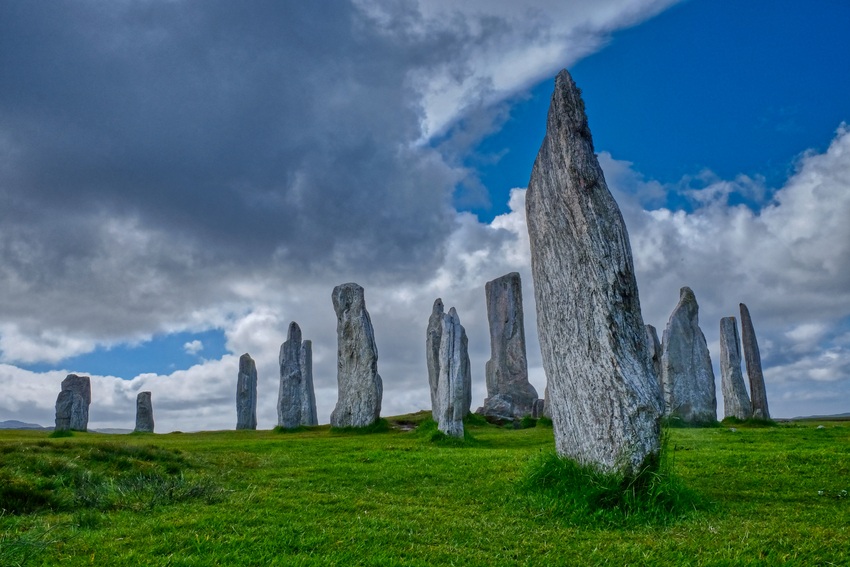 The Outer Hebrides are filled with archeological wonders!
The Outer Hebrides are filled with archeological wonders!
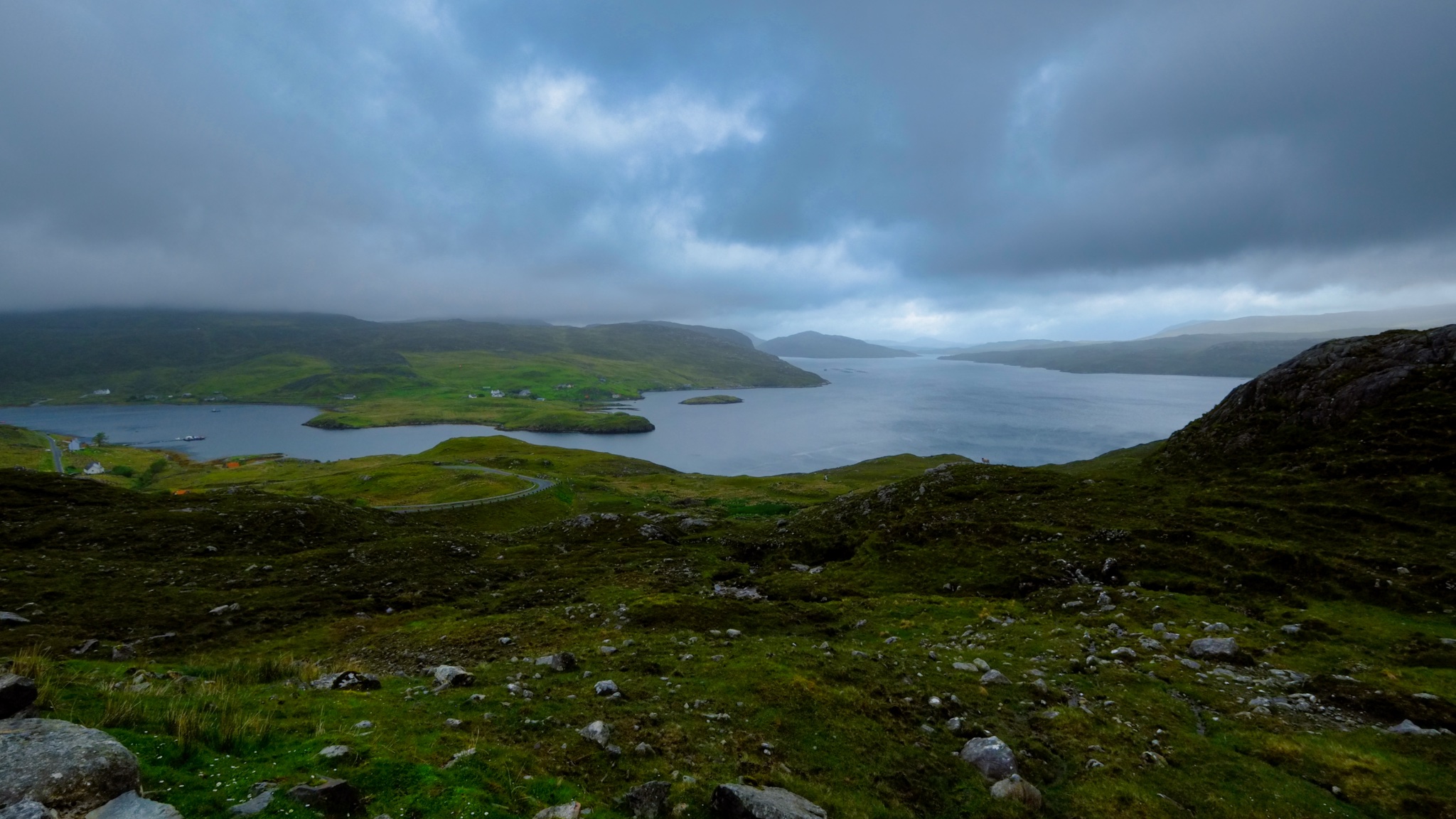
Magnificent views around every corner of the winding single track roads!
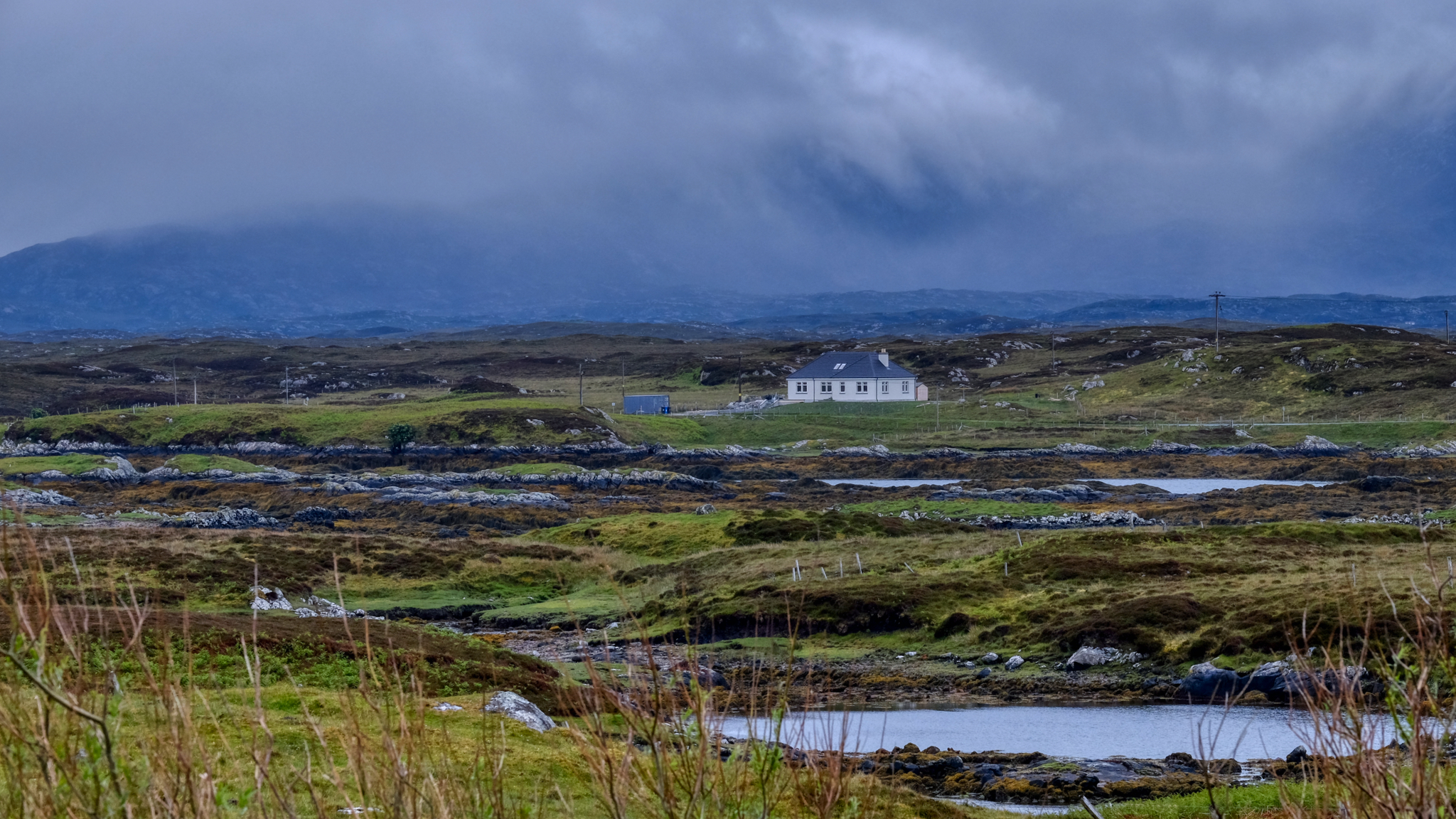 Otherworldly scenes . . .
Otherworldly scenes . . .
-----------------------------------------------------
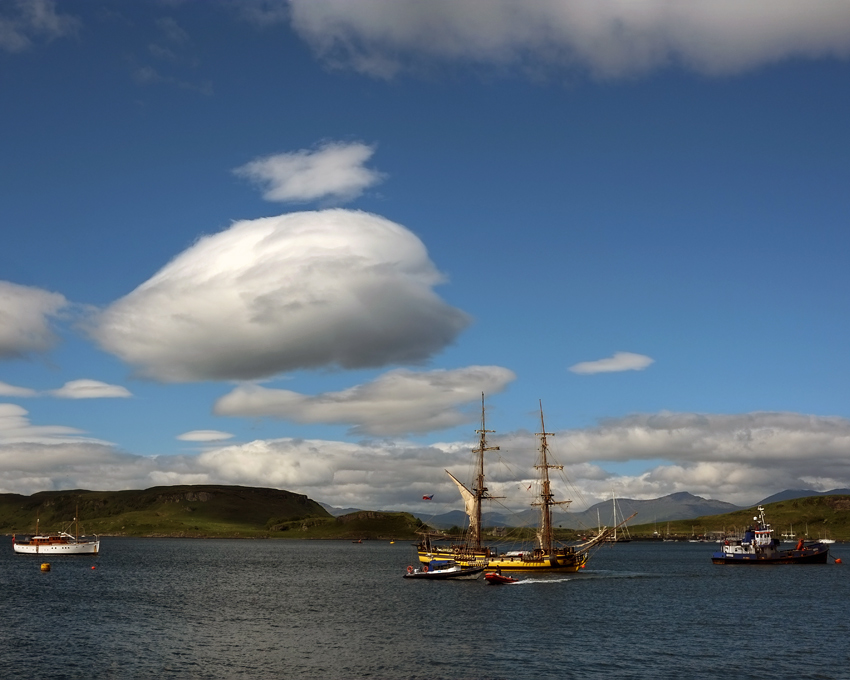
Our journey from the mainland of Scotland began on a fine late June day in Oban harbour.
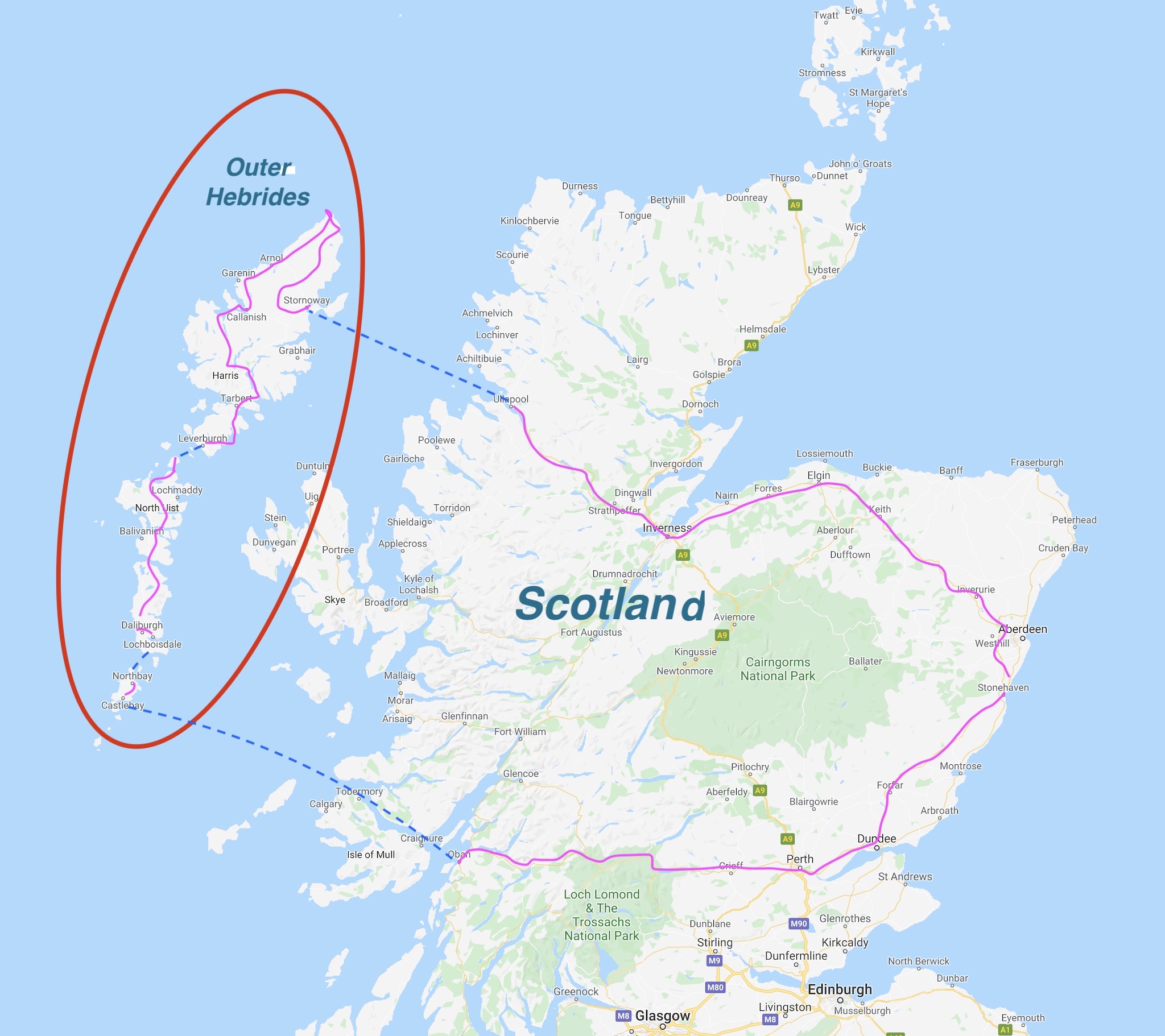 Our 10-day road and ferry trip began at our [then] home in Aberdeen, on the east coast. We spent six of those wonderful days out on the one-lane roads and ferry crossings of the Outer Hebrides.
Our 10-day road and ferry trip began at our [then] home in Aberdeen, on the east coast. We spent six of those wonderful days out on the one-lane roads and ferry crossings of the Outer Hebrides.
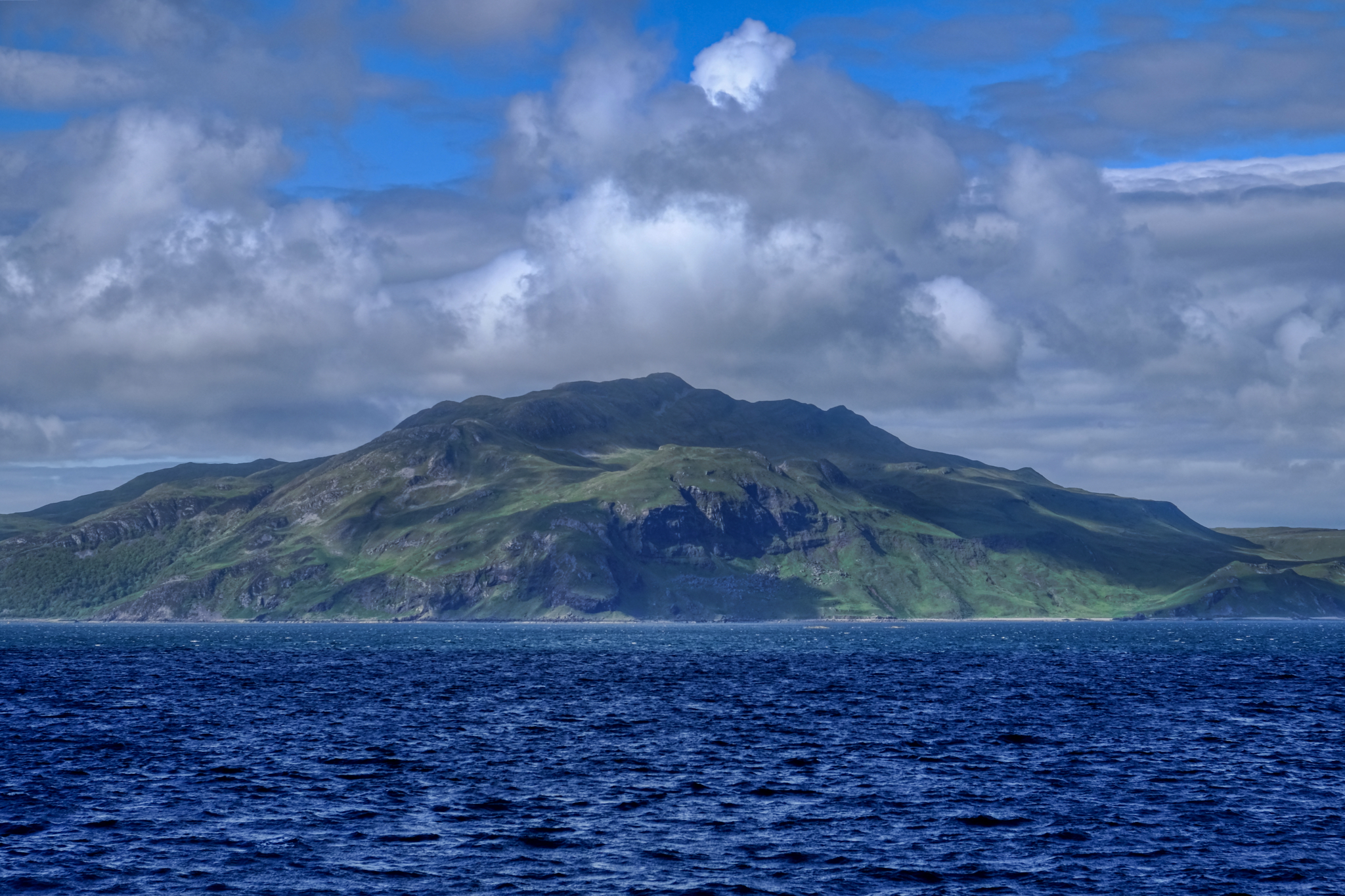
The ferry out of Oban passes through a straight with views of the Isle of Mull on one side.
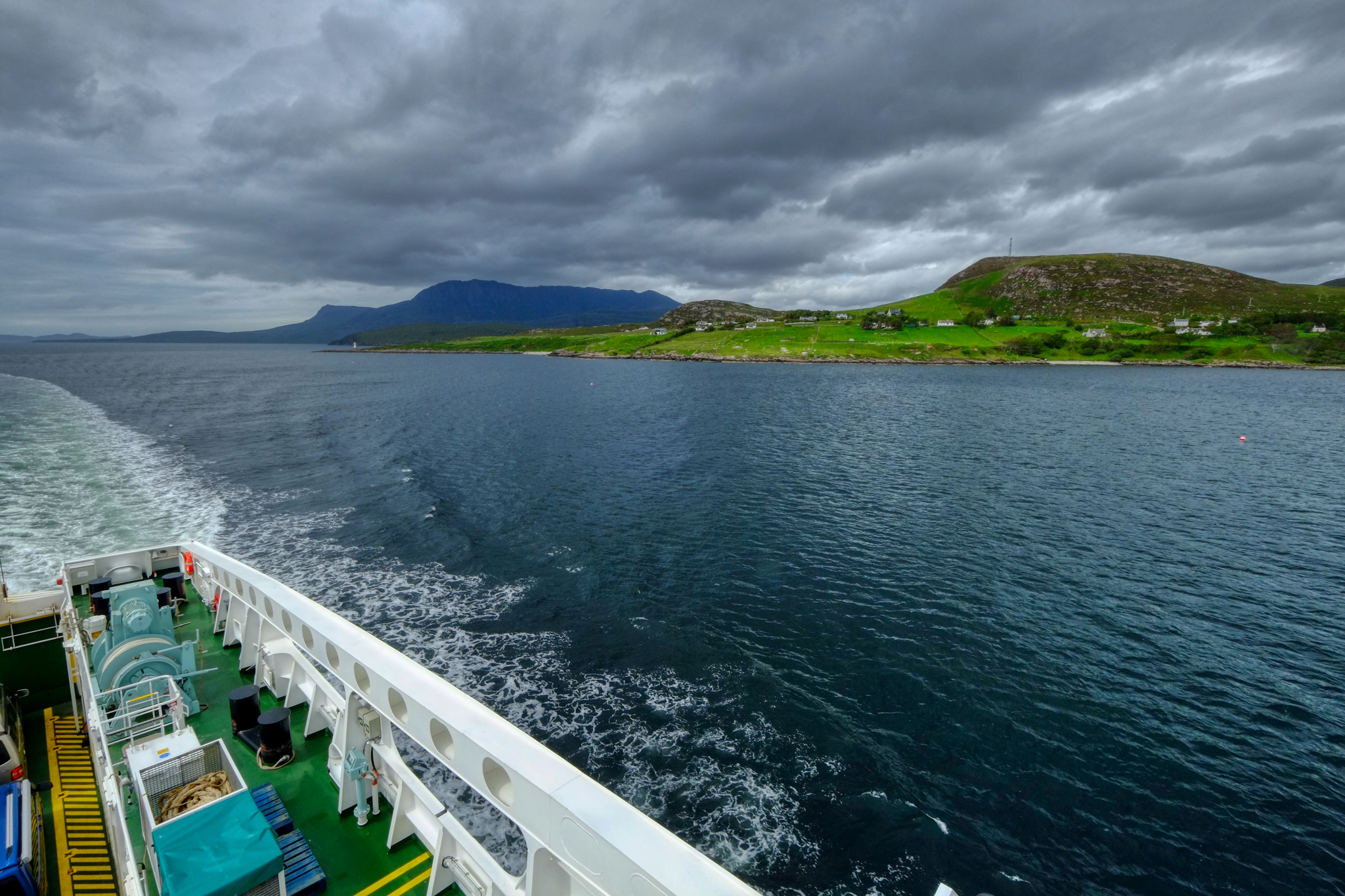 It was a gorgeous 4 hour and 45 minute ferry trip . . . it is important to book your ferry well in advance in the summer months, including the small inter-island ferries out in the Outer Hebrides.
It was a gorgeous 4 hour and 45 minute ferry trip . . . it is important to book your ferry well in advance in the summer months, including the small inter-island ferries out in the Outer Hebrides.
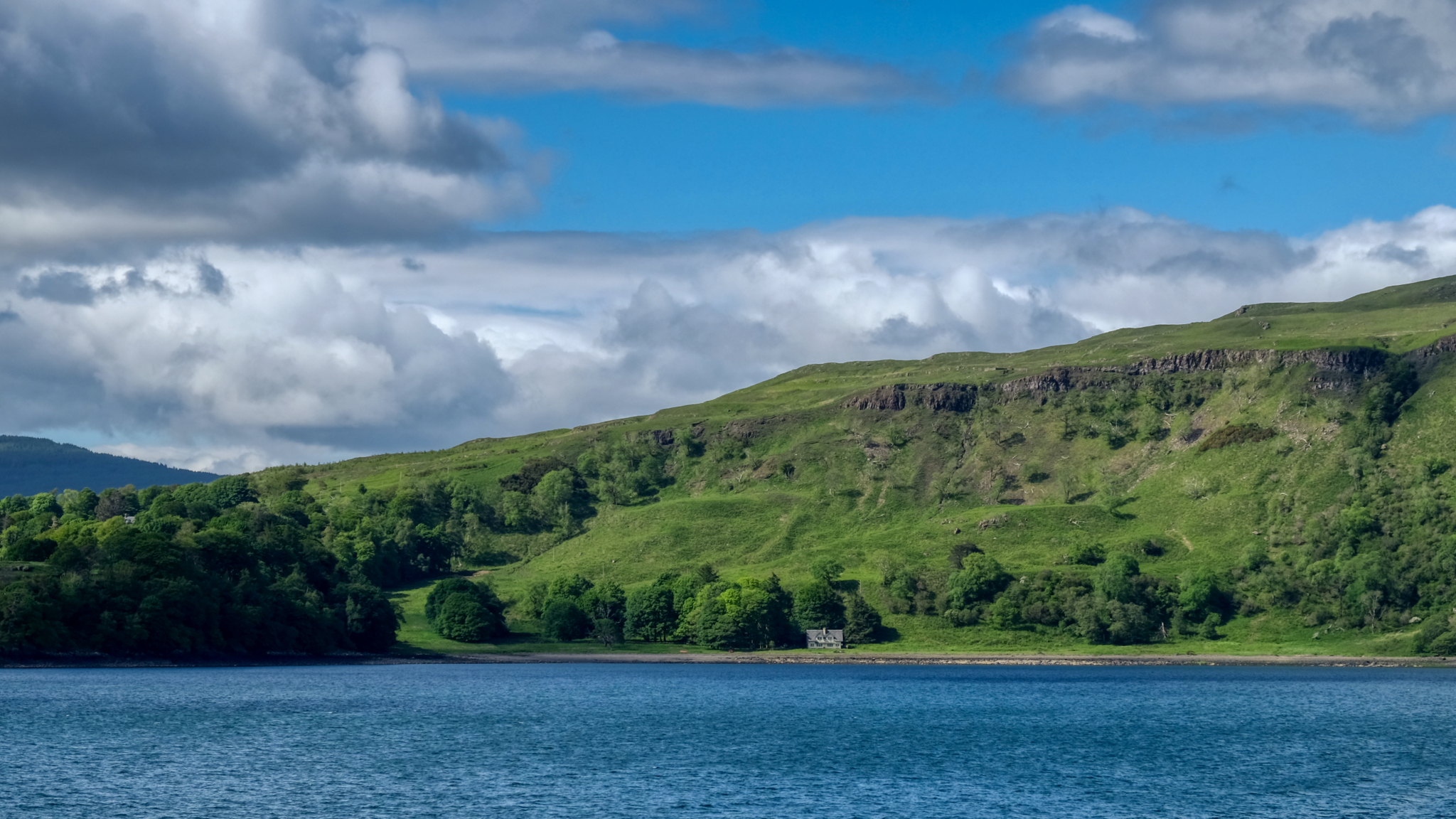 Yes, I would live here . . . .
Yes, I would live here . . . .
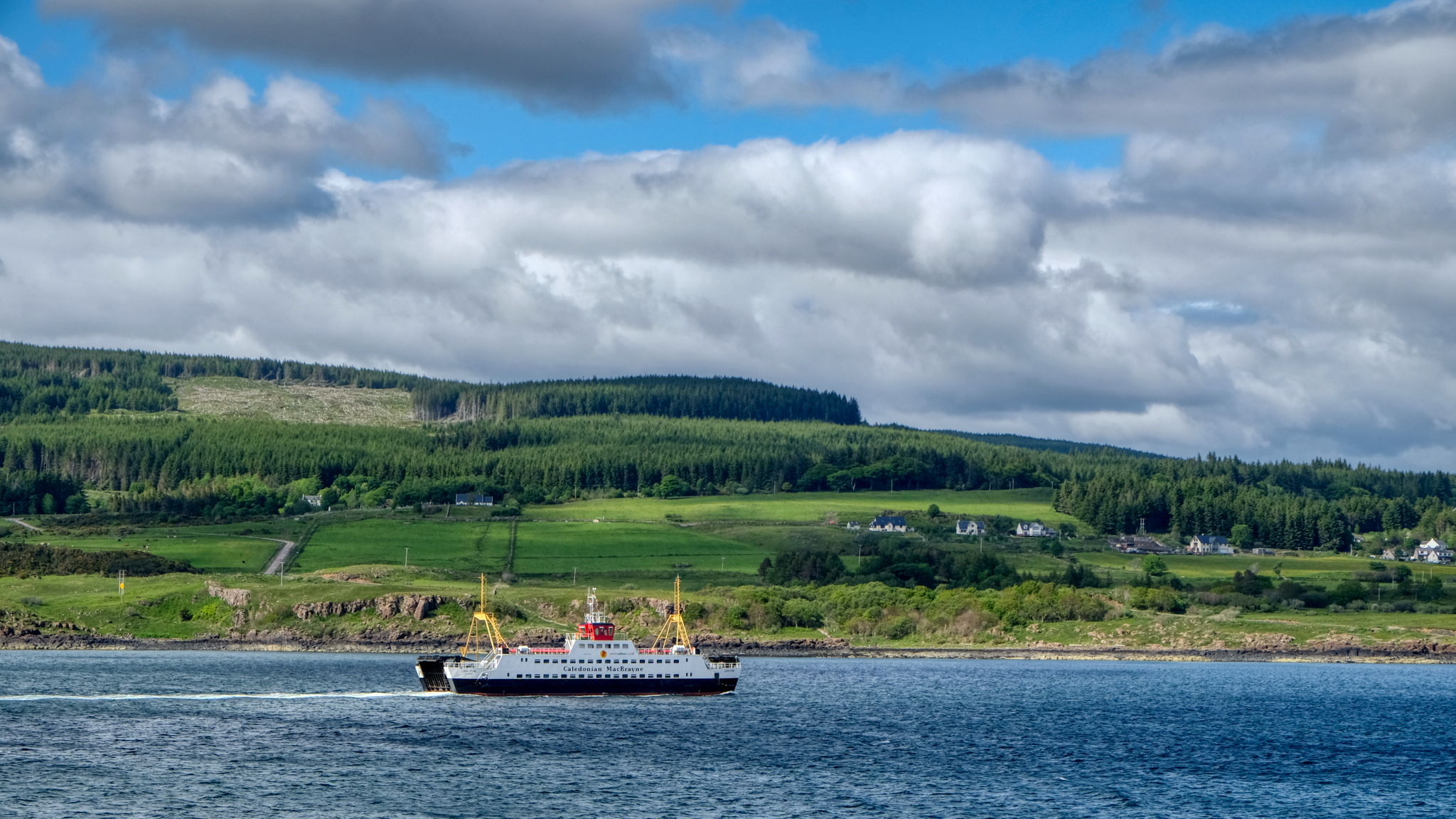 With so many islands off the west coast of Scotland, there are many small ferry routes.
With so many islands off the west coast of Scotland, there are many small ferry routes.
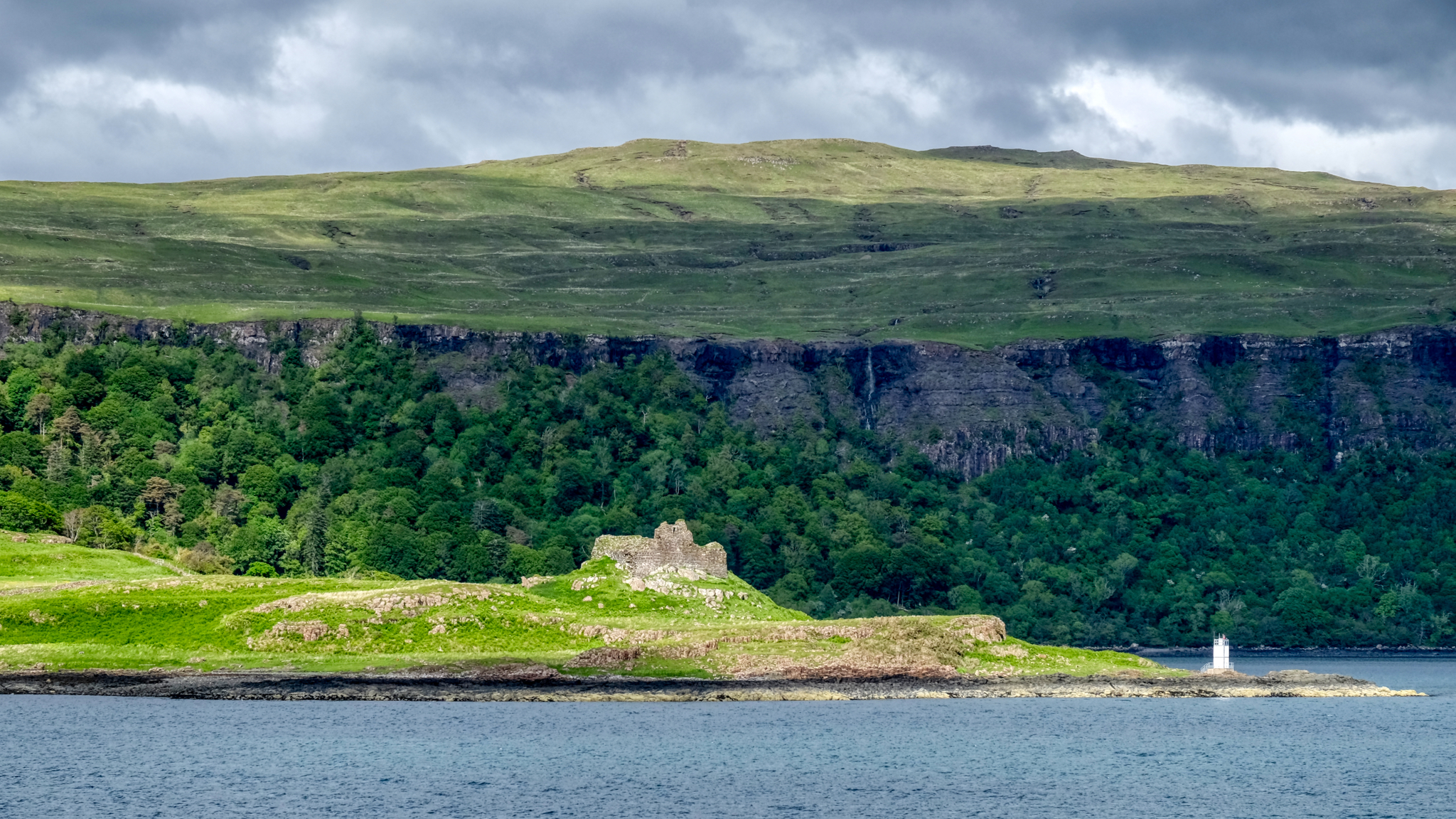 History is everywhere along our route. Castle ruins seem to dot the landscape.
History is everywhere along our route. Castle ruins seem to dot the landscape.
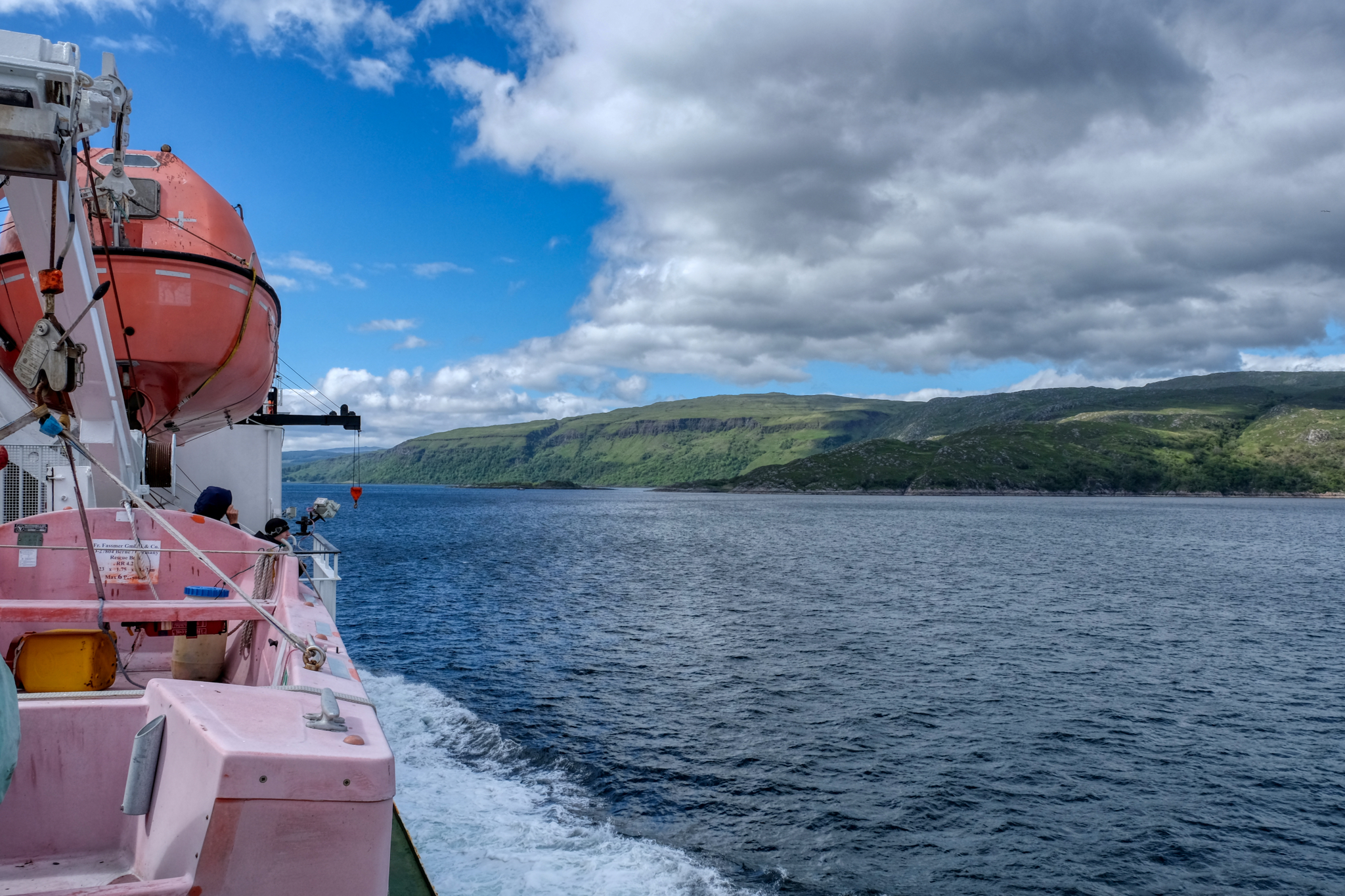 Such a relaxing way to travel.
Such a relaxing way to travel.
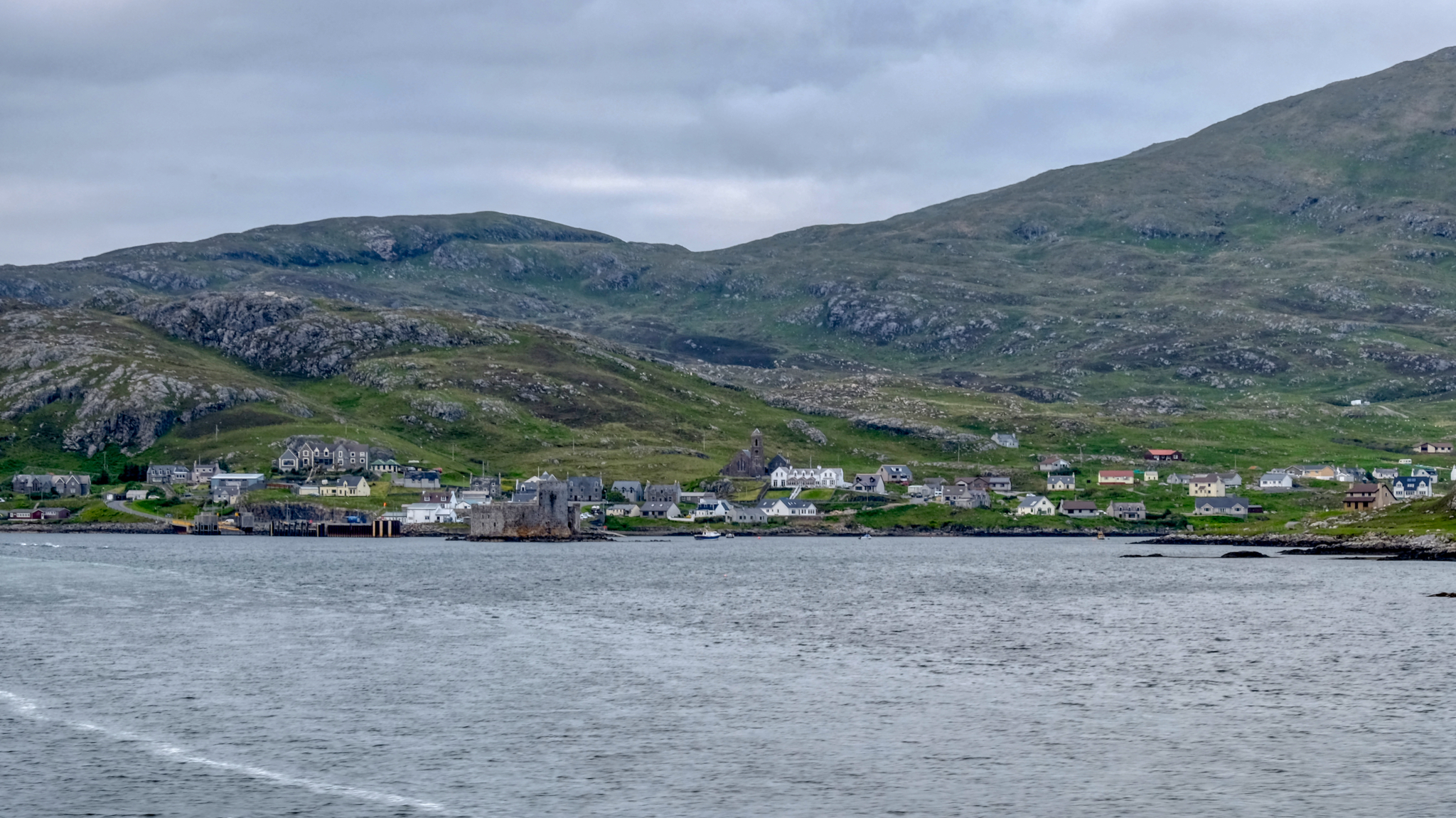 Time passed quickly and we found ourselves nearing Castlebay, the southernmost port on the Outer Hebrides, the Isle of Barra.
Time passed quickly and we found ourselves nearing Castlebay, the southernmost port on the Outer Hebrides, the Isle of Barra.
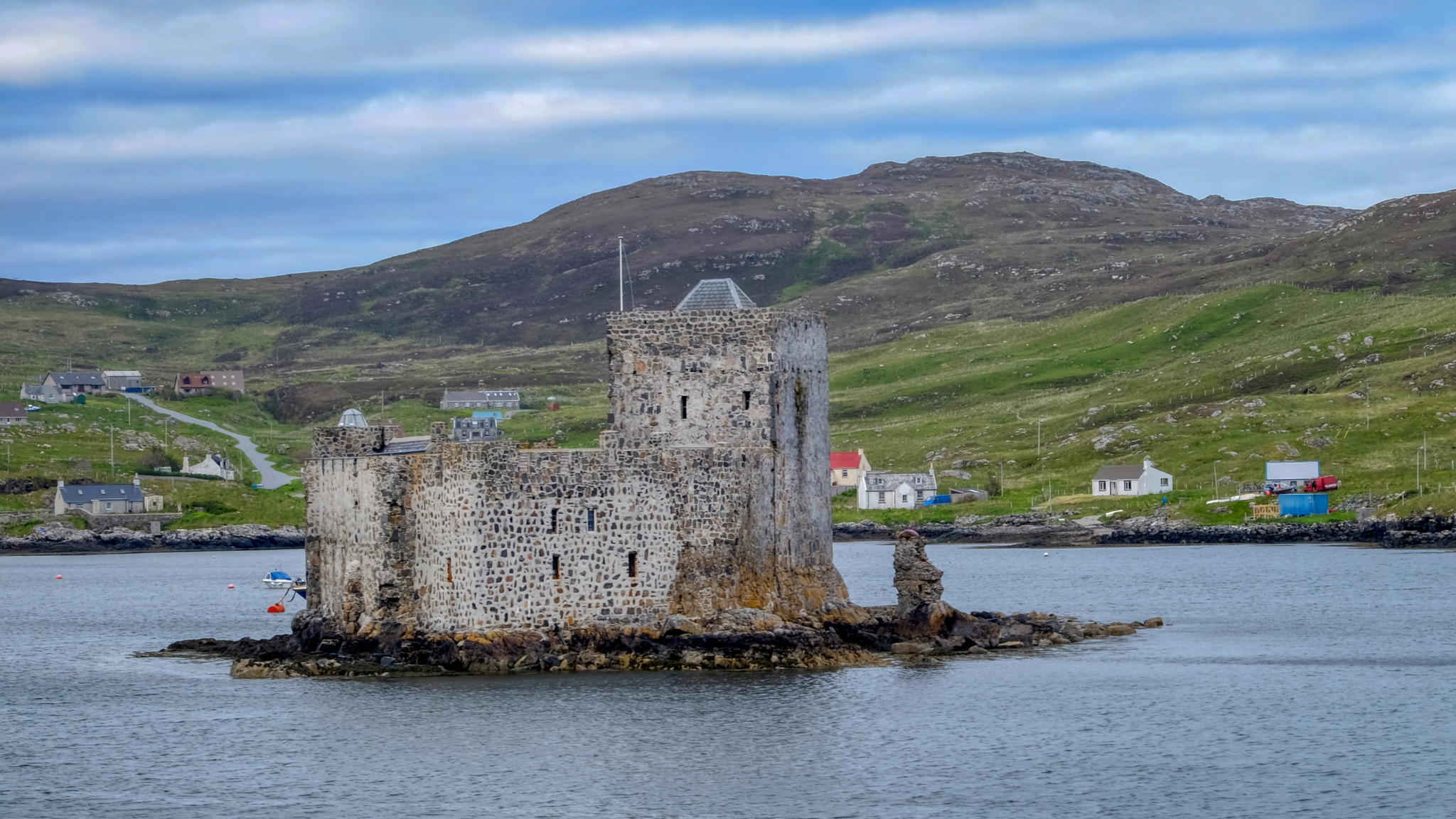 This castle sits in the bay of Castlebay . . . perhaps having something to do with the naming of the town . . . perhaps.
This castle sits in the bay of Castlebay . . . perhaps having something to do with the naming of the town . . . perhaps.
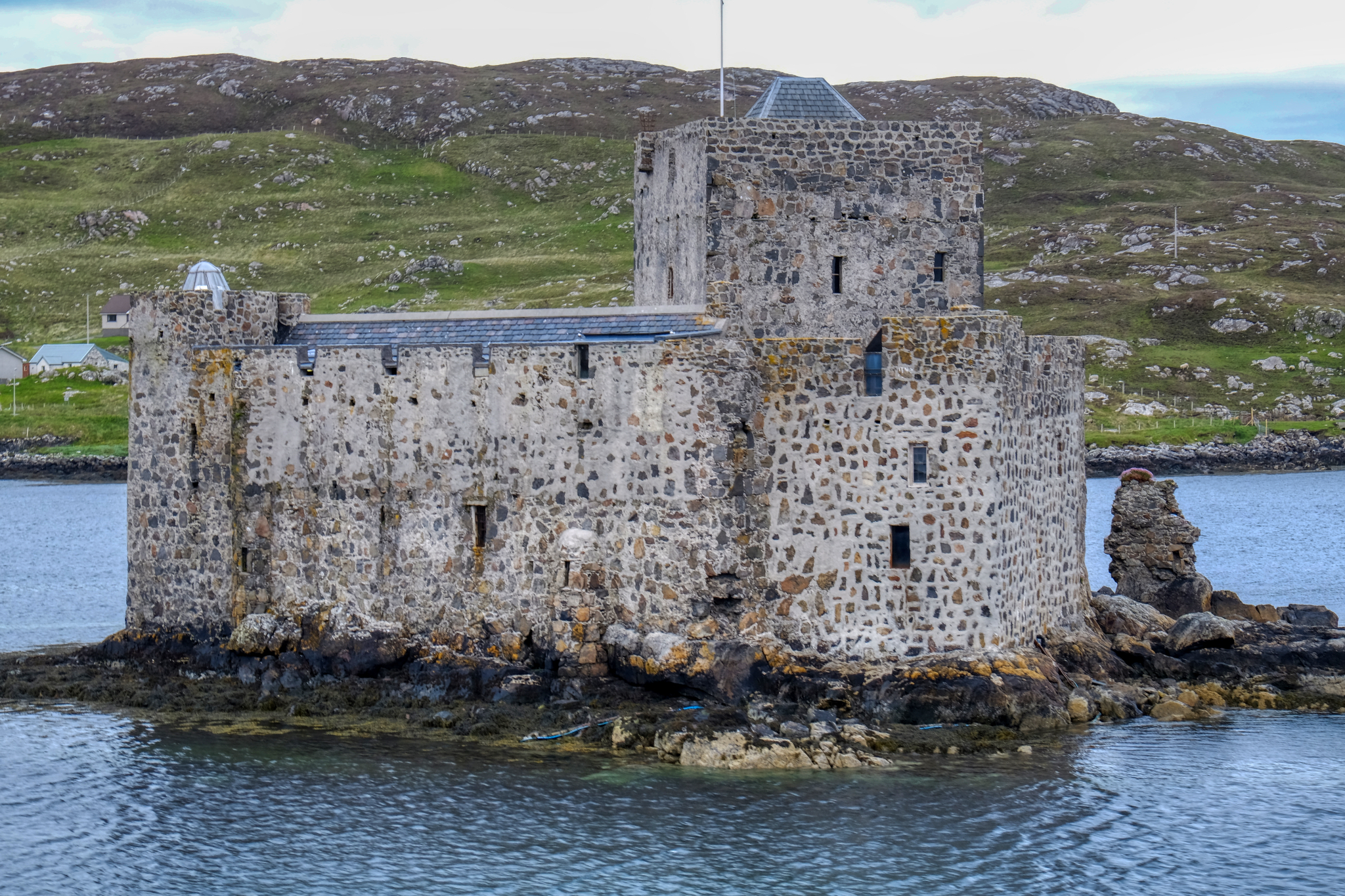 The castle in the bay of Castlebay is Kisimul Castle, dating from the late 16th century. It is now leased to Historic Scotland Trust by the Clan MacNeil for 1 pound a year. It is a castle with an interesting history (see link).
The castle in the bay of Castlebay is Kisimul Castle, dating from the late 16th century. It is now leased to Historic Scotland Trust by the Clan MacNeil for 1 pound a year. It is a castle with an interesting history (see link).
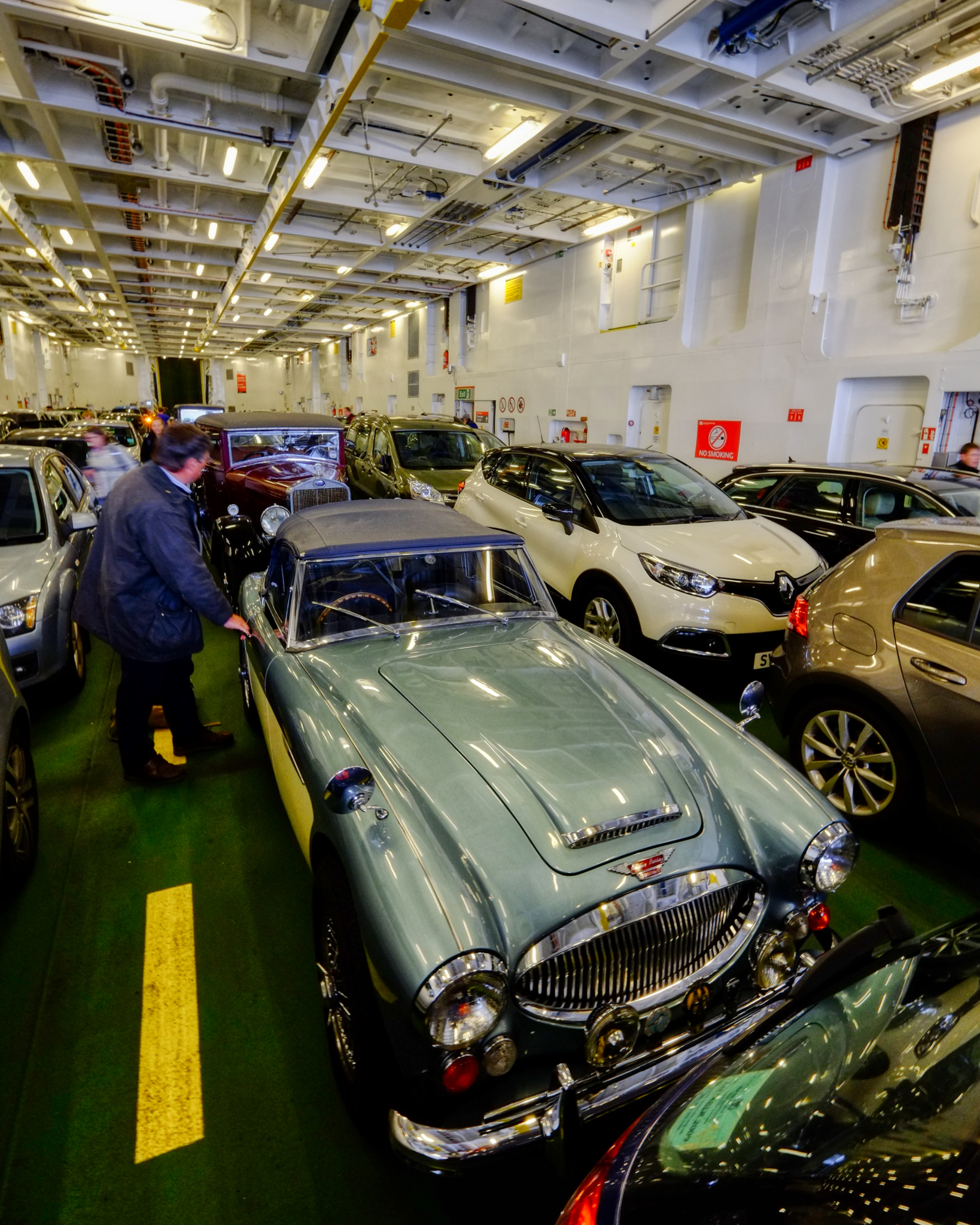
We were called to the car deck just before docking in Castlebay . . . what a surprise to see several antique and collector cars there (they must have loaded after we did). Perhaps there was a collector car rally . . . or they were returning from one.
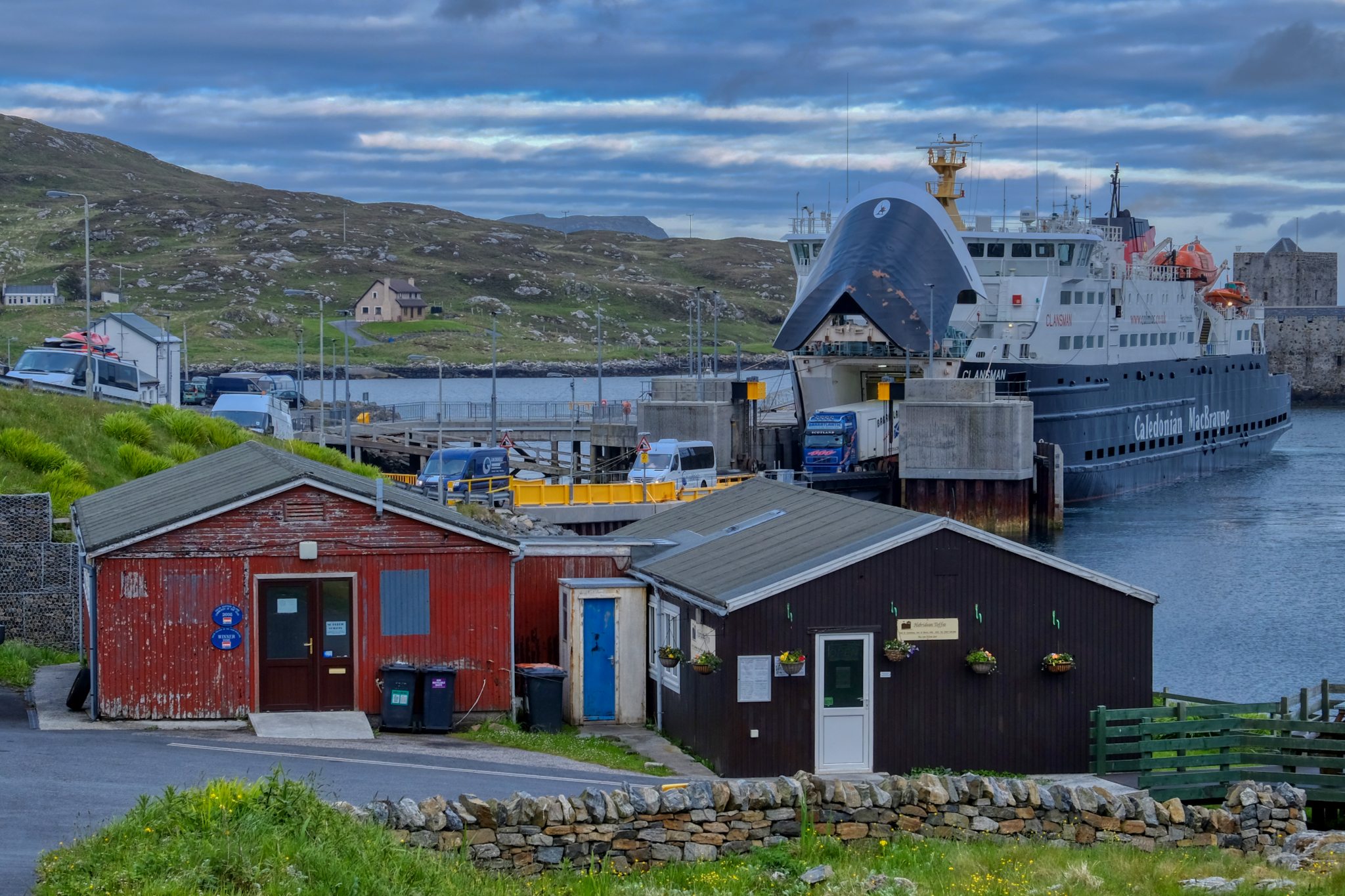 We drove off the ferry and turned, stopped to take a look at where we had come from.
We drove off the ferry and turned, stopped to take a look at where we had come from.
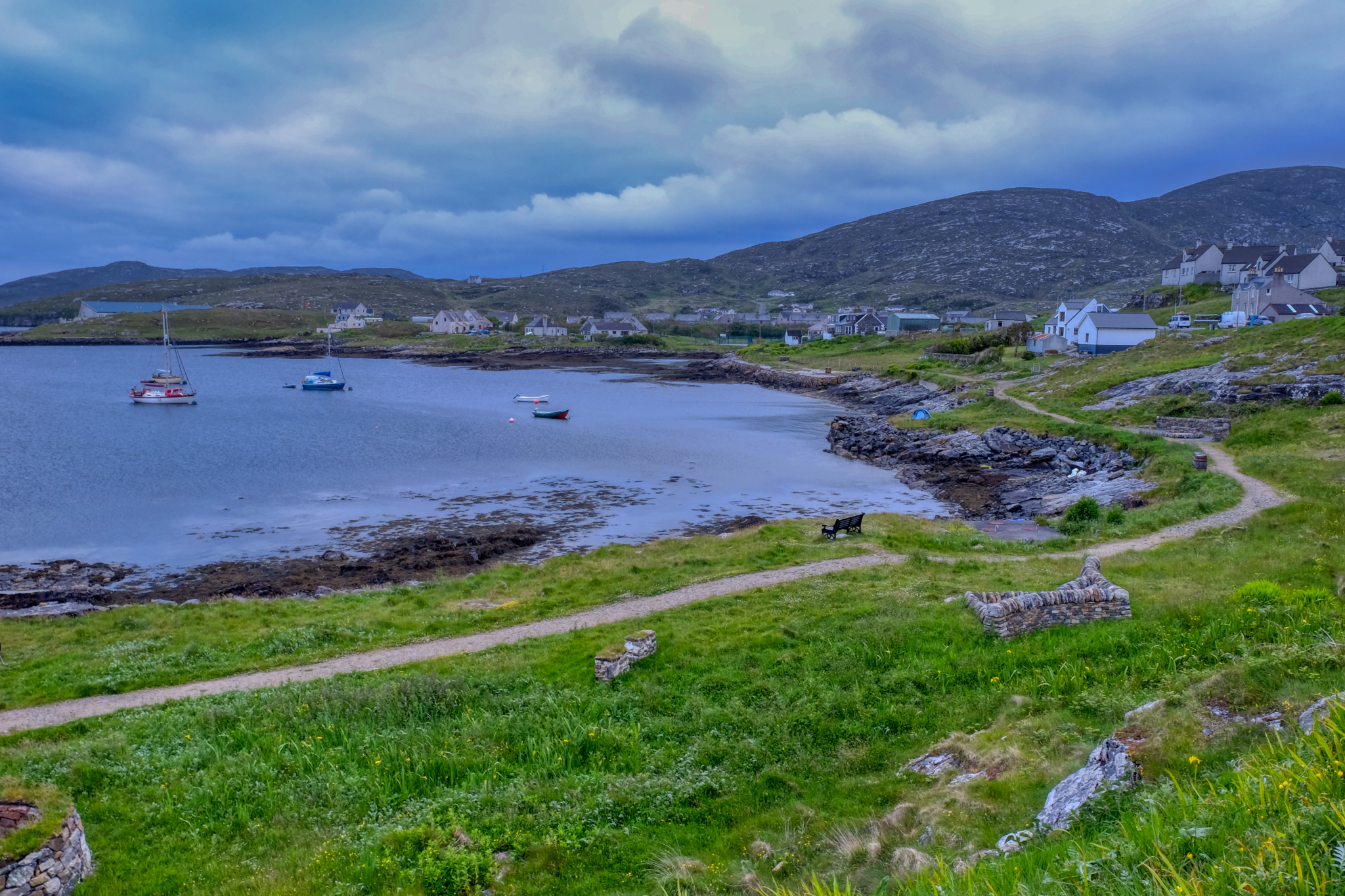 Castlebay has an 'End of the World' feeling of remoteness about it like no other place I have ever been.
Castlebay has an 'End of the World' feeling of remoteness about it like no other place I have ever been.
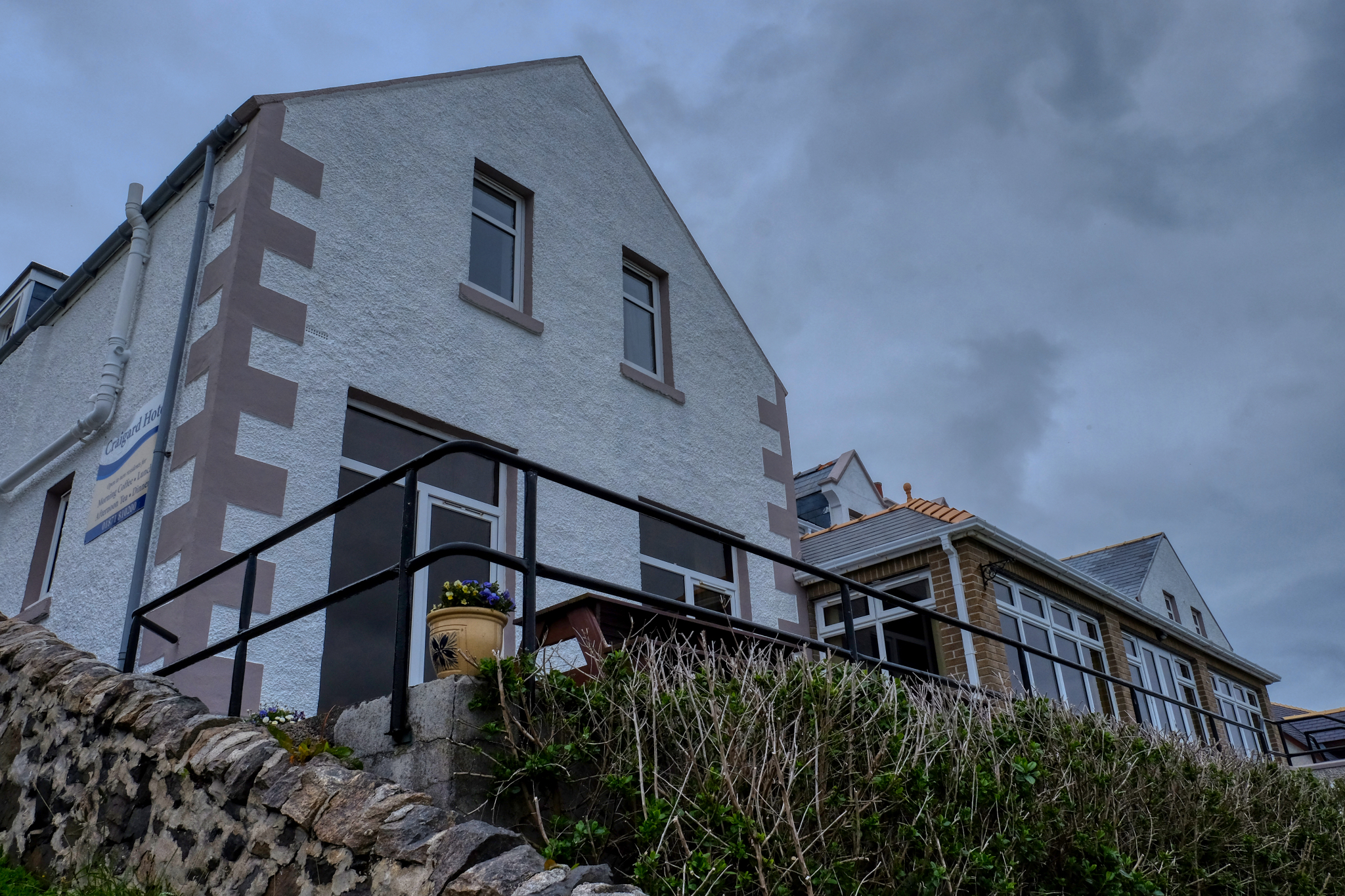 We found our old hotel (it wasn't too difficult!) and checked in.
We found our old hotel (it wasn't too difficult!) and checked in.
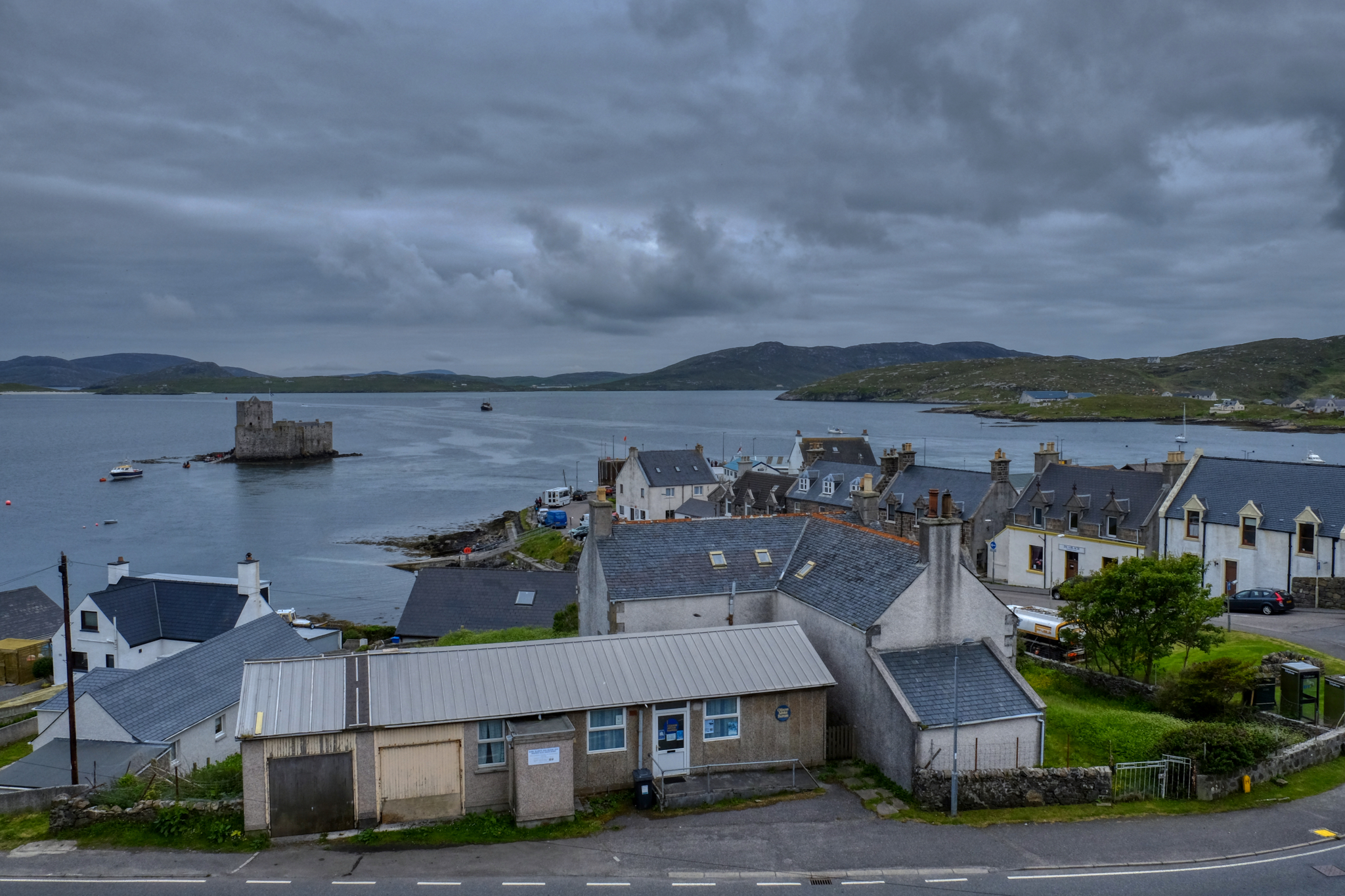 The view of Castlebay from our hotel room. Very nice.
The view of Castlebay from our hotel room. Very nice.
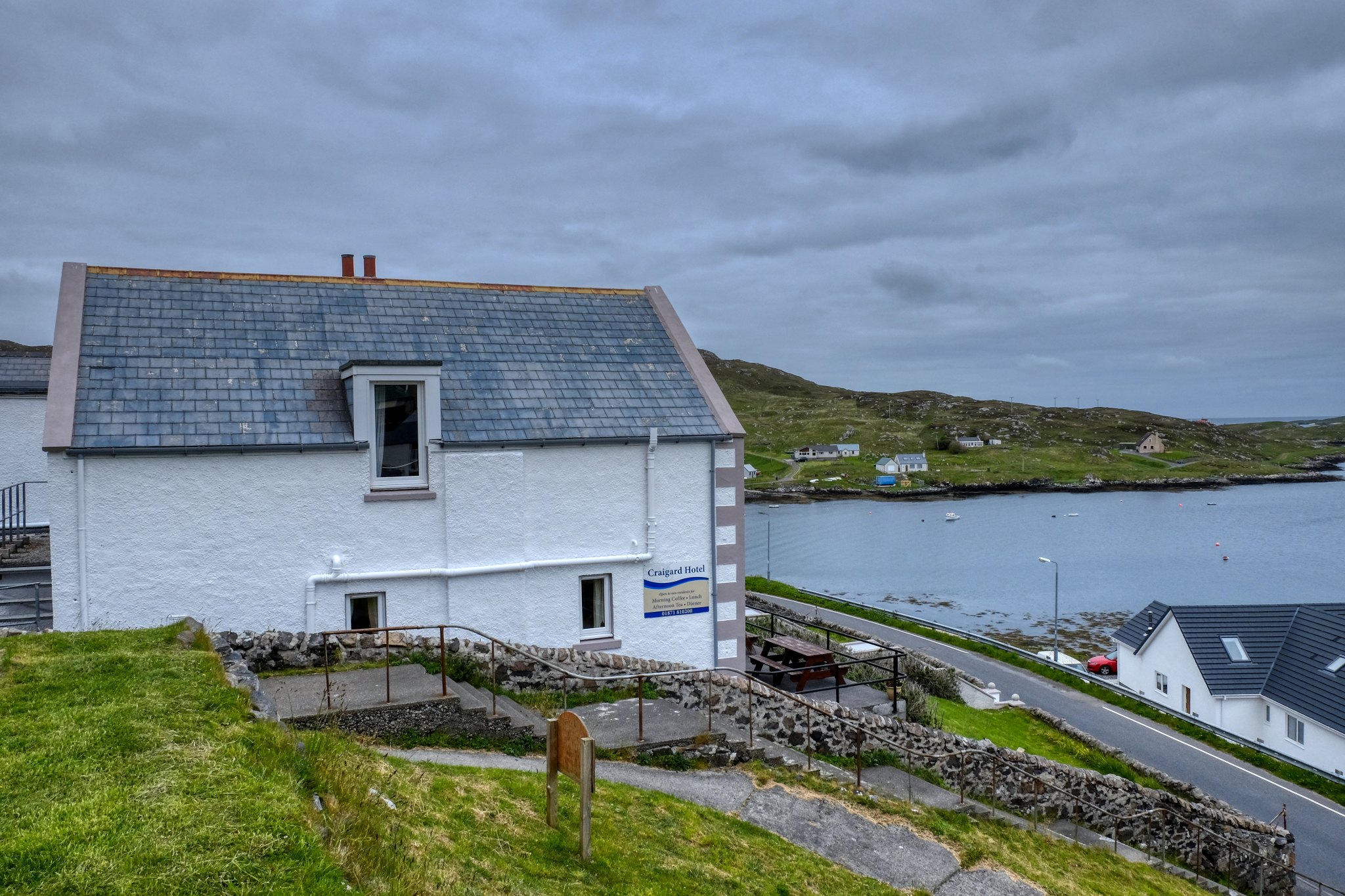 The sun stays up very late in June this far north. I took a walk from our Craigard Hotel at 10:30pm.
The sun stays up very late in June this far north. I took a walk from our Craigard Hotel at 10:30pm.
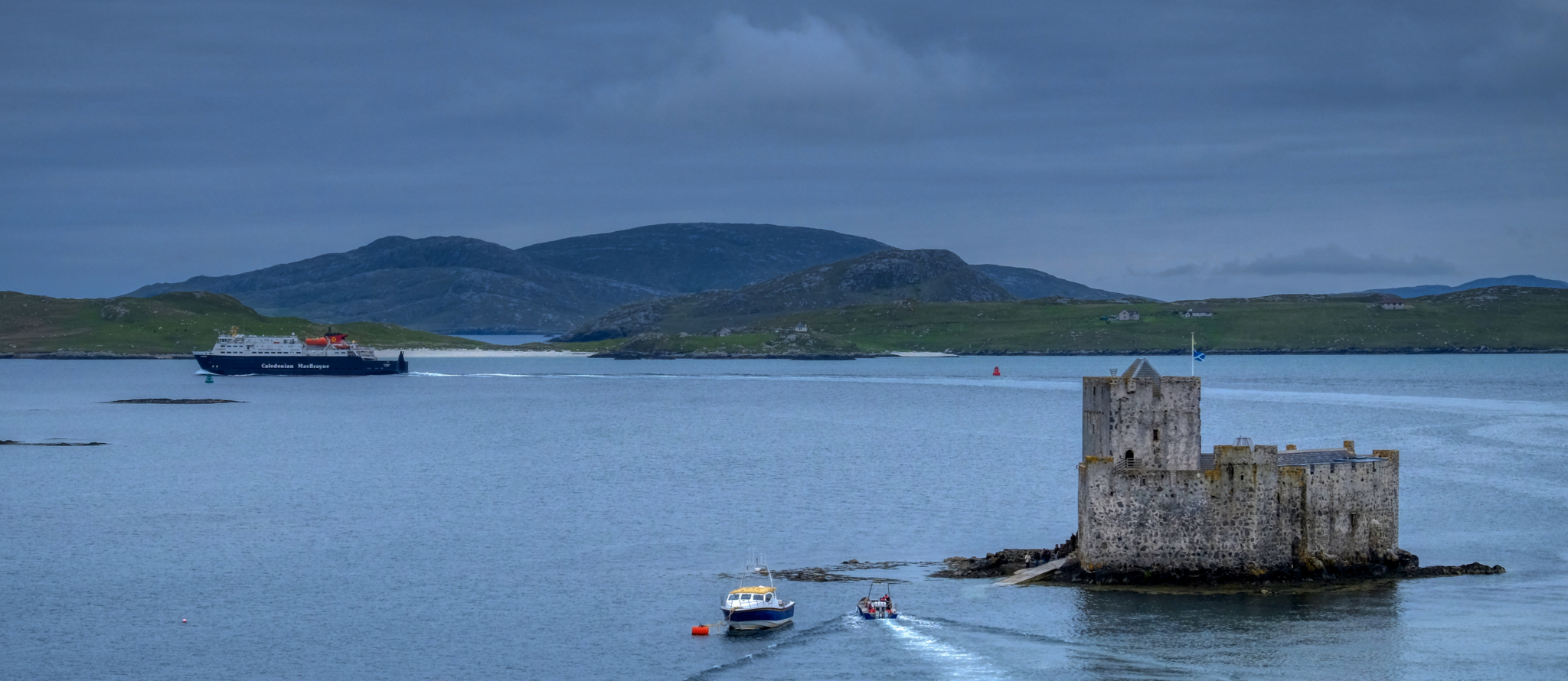 From the hill behind our hotel I saw our ferry, reloaded, making its return voyage to Oban.
From the hill behind our hotel I saw our ferry, reloaded, making its return voyage to Oban.
 I sat in the evening gloom and watched the ferry pass out of sight.
I sat in the evening gloom and watched the ferry pass out of sight.
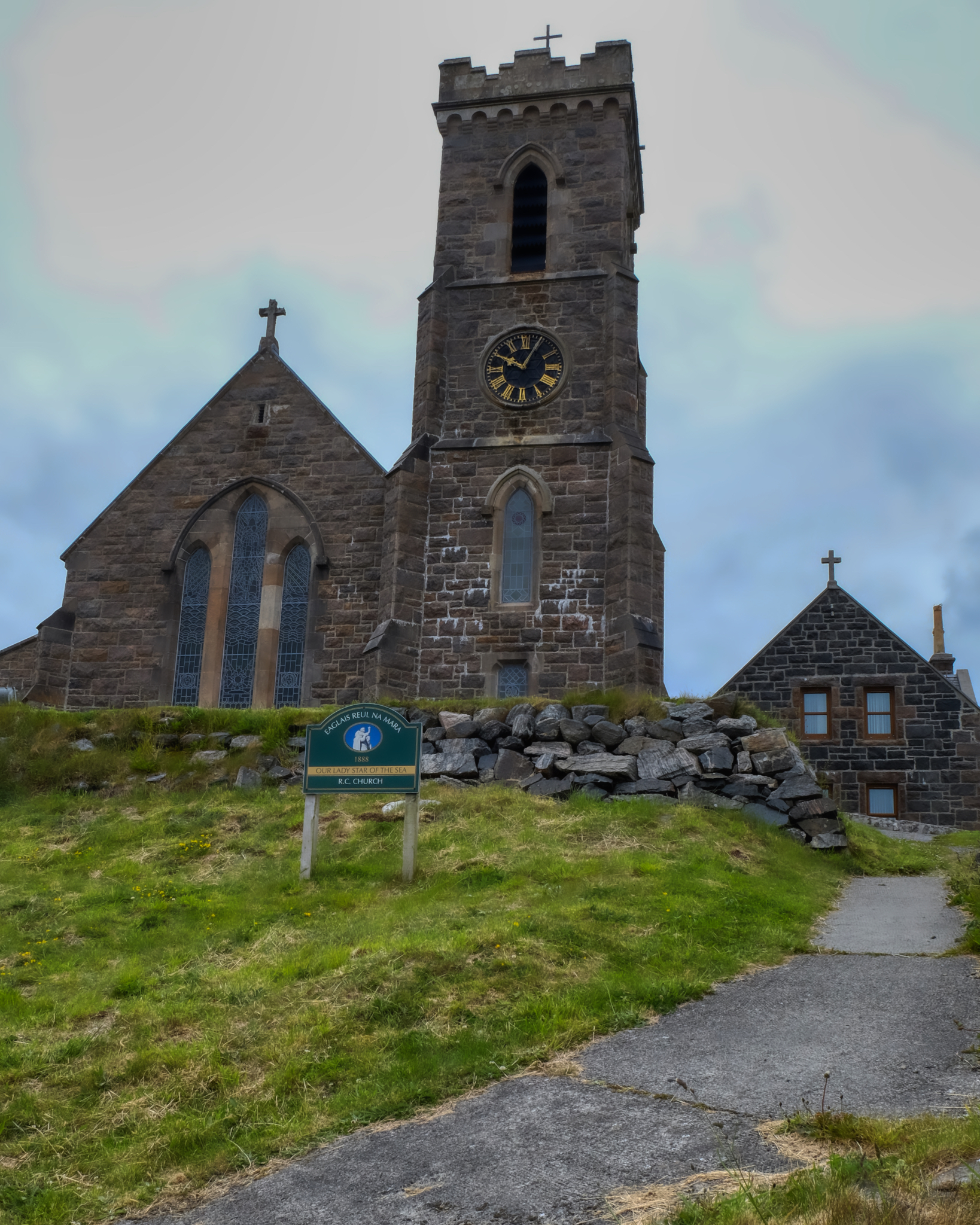 An old church, Our Lady of the Sea, behind our hotel.
An old church, Our Lady of the Sea, behind our hotel.
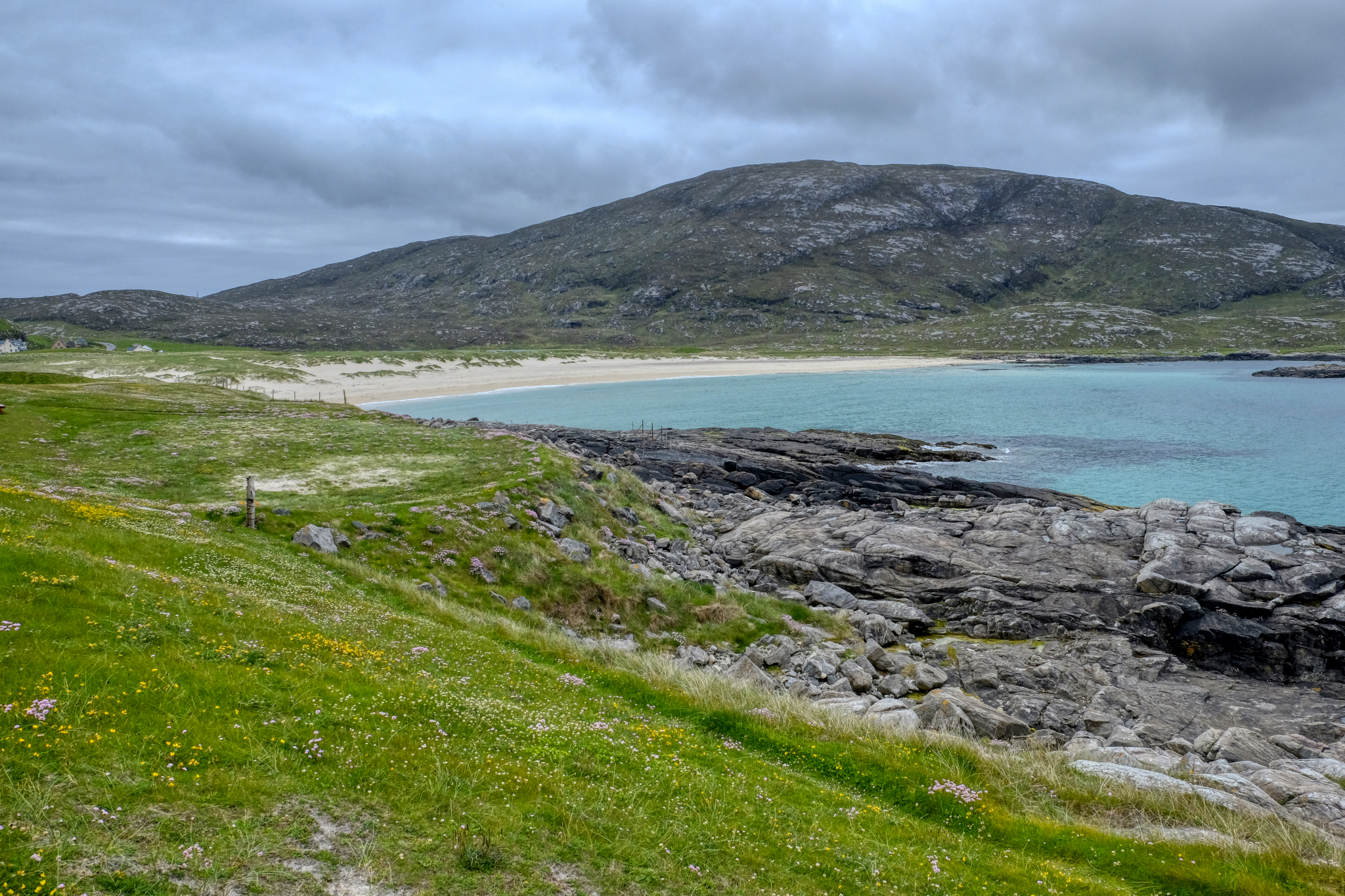 And off we drove up the west coast of the Isle of Barra. Magnificent bay views, white sand and aqua waters.
And off we drove up the west coast of the Isle of Barra. Magnificent bay views, white sand and aqua waters.
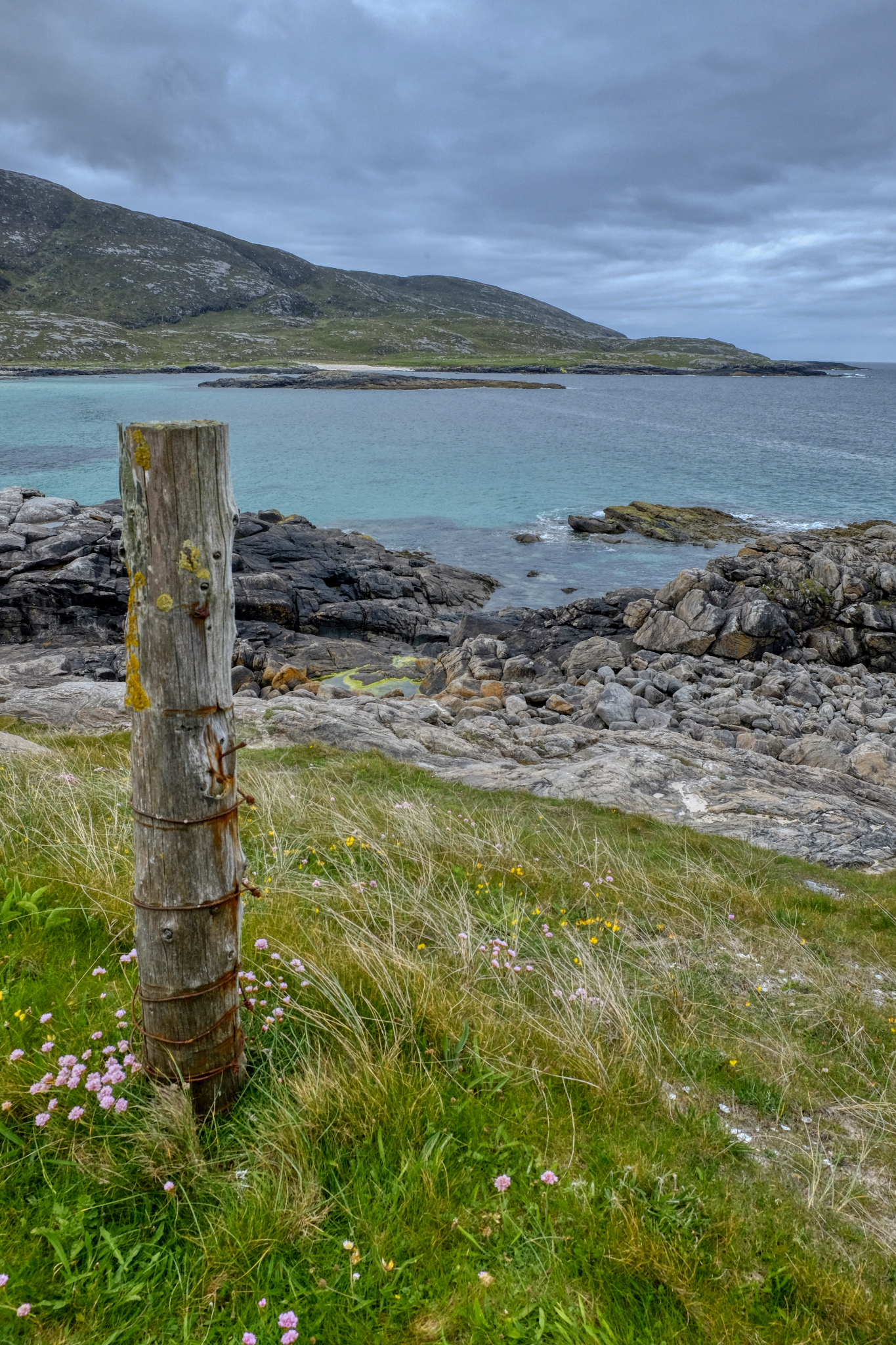 Such a pleasant place.
Such a pleasant place.
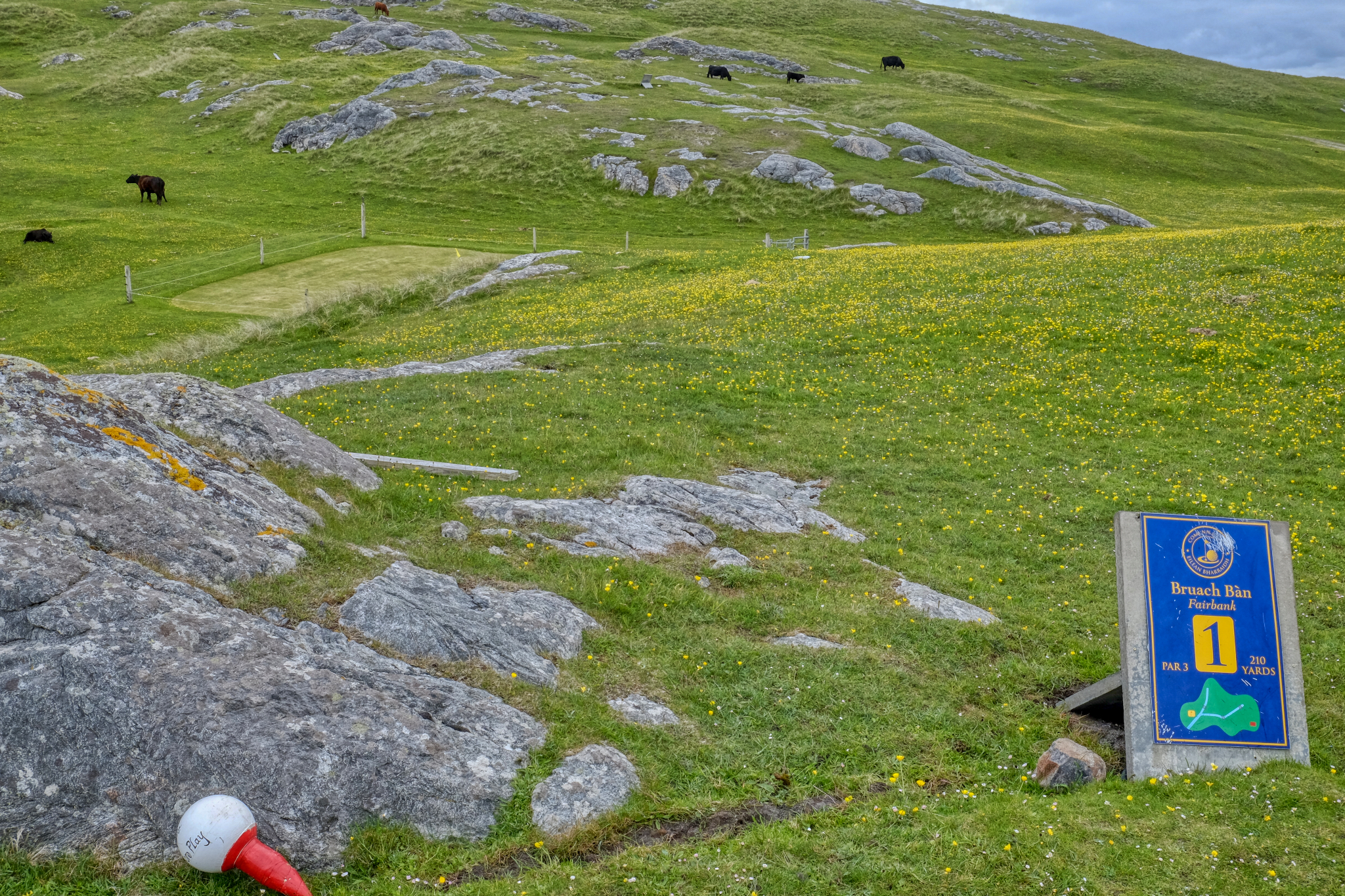 My wife is an avid golfer, so of course we stopped in at the amazing Barra Golf Course.
My wife is an avid golfer, so of course we stopped in at the amazing Barra Golf Course.
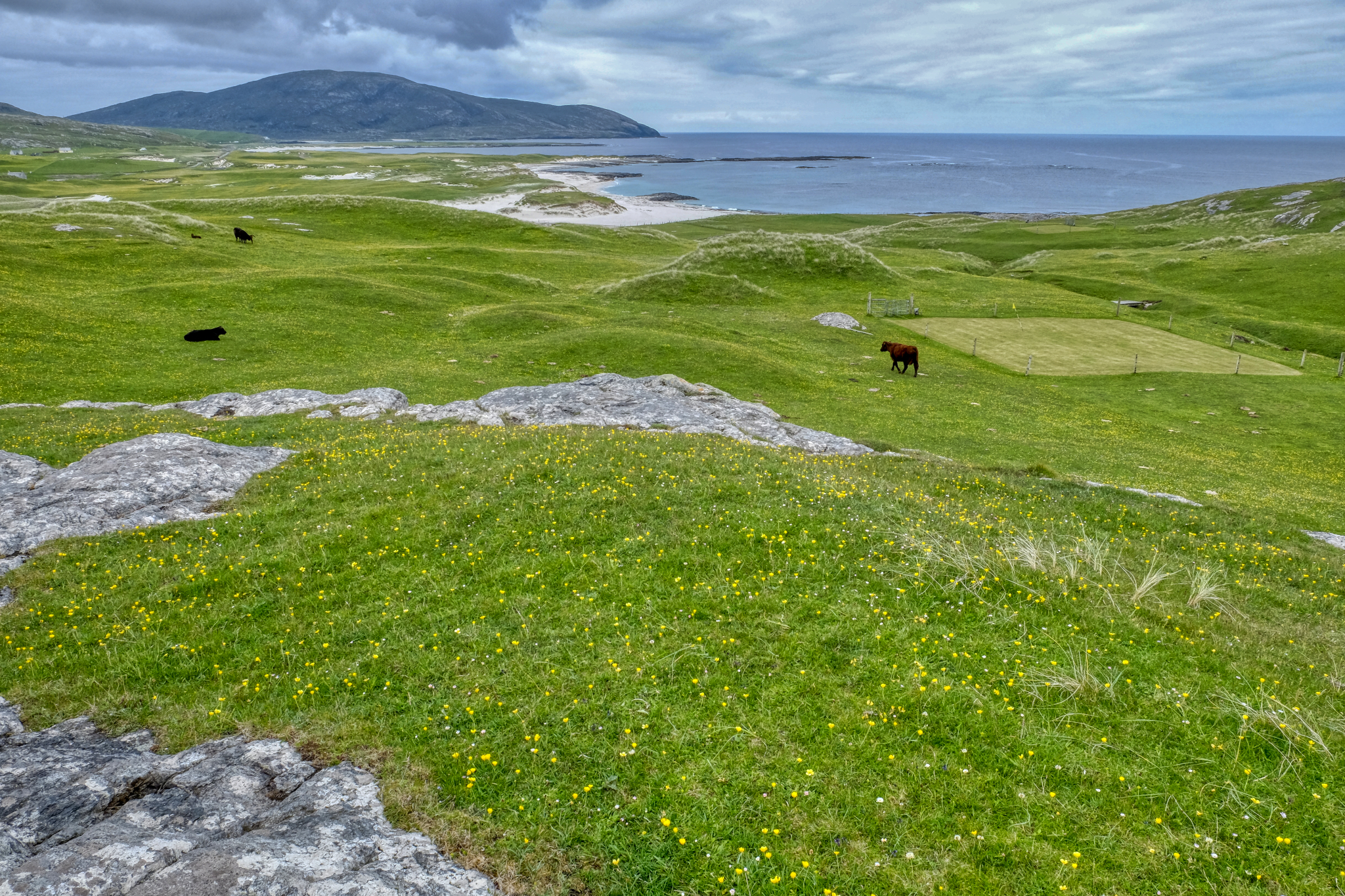 Small yellow wild flowers, the sea, cows, and a fenced off putting green (to keep the cow paddies from becoming a 'green hazard'!!!). Lovely.
Small yellow wild flowers, the sea, cows, and a fenced off putting green (to keep the cow paddies from becoming a 'green hazard'!!!). Lovely.
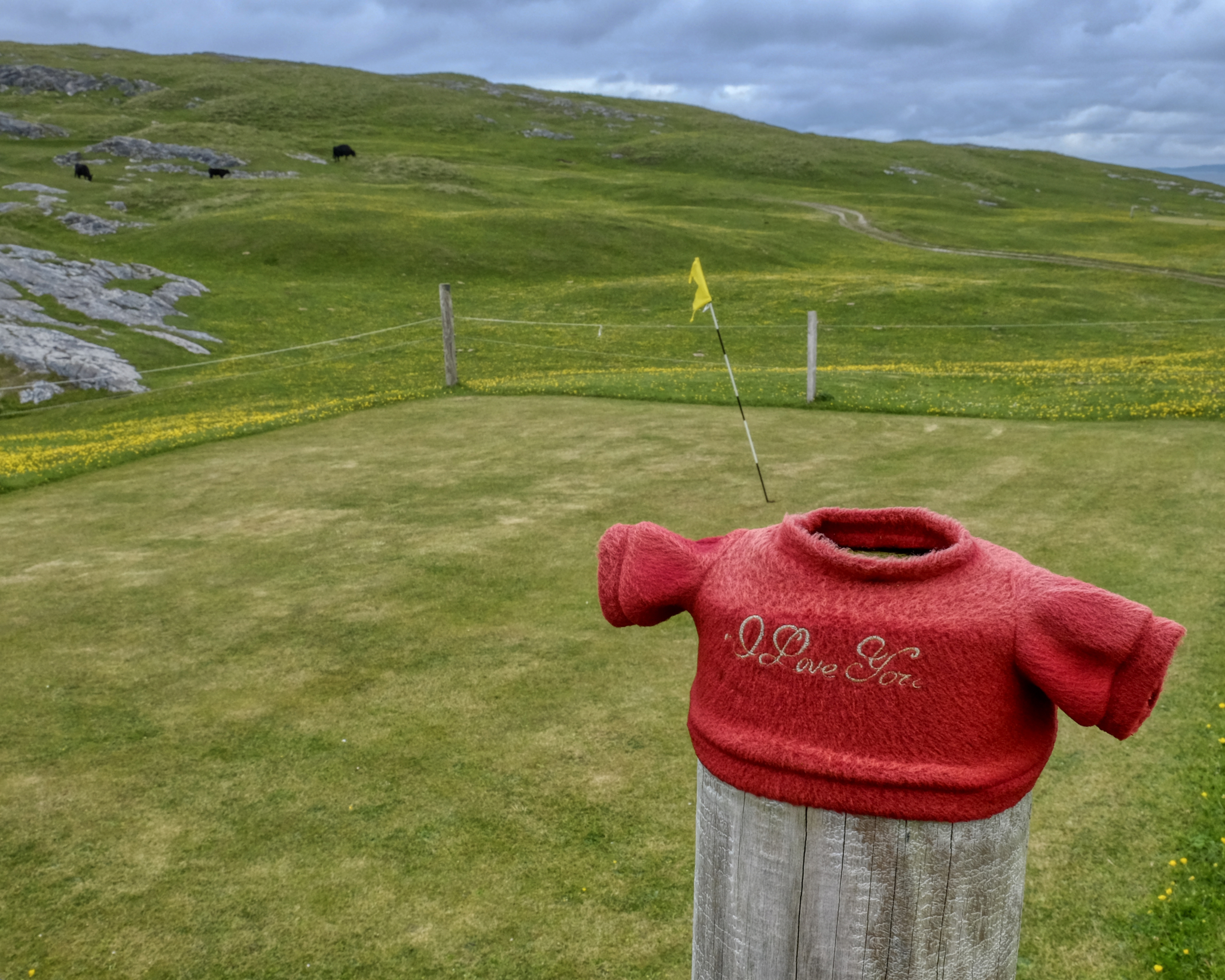 Cute . . .
Cute . . .
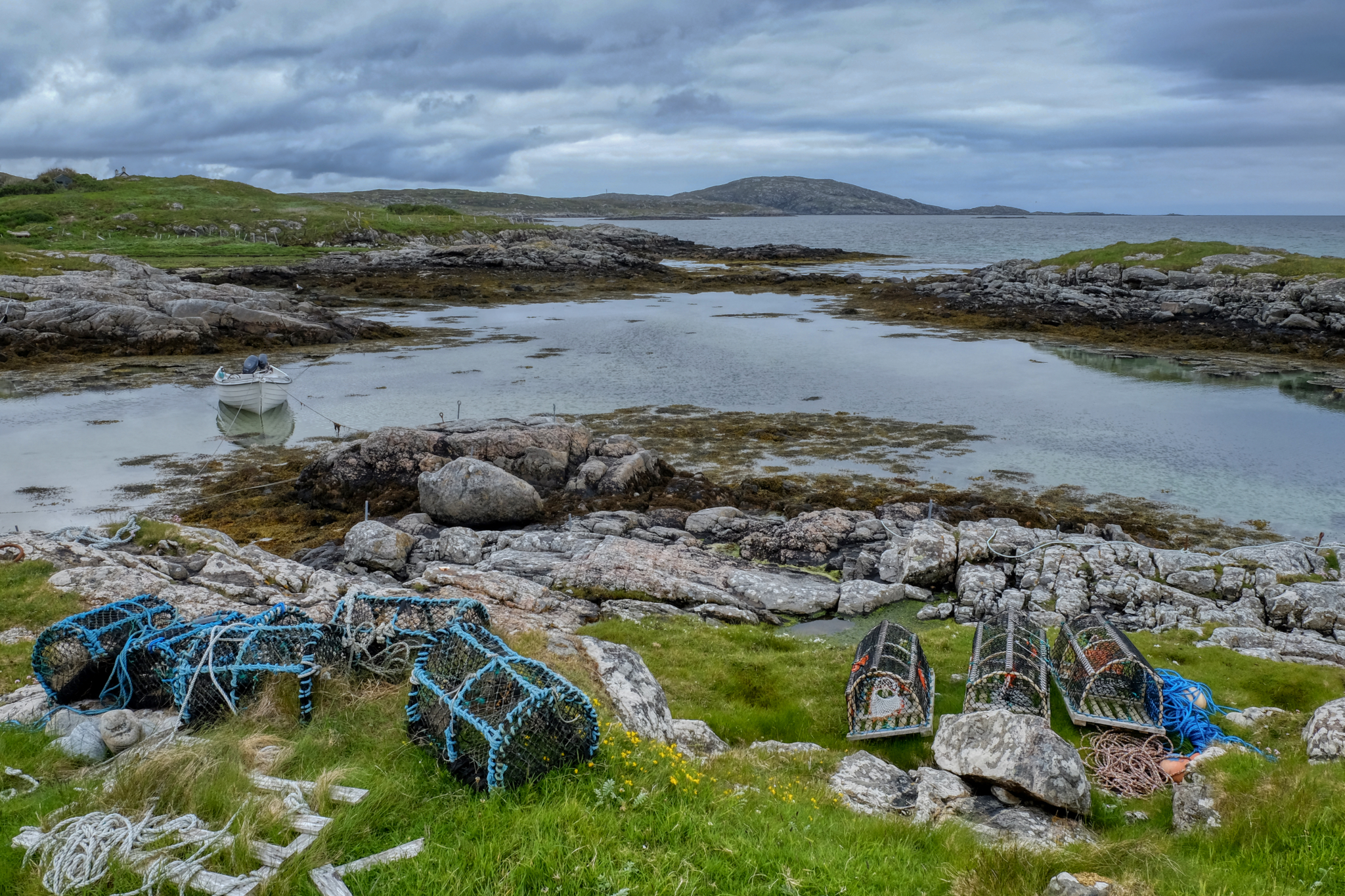 Lobster/Crab pots along a rocky cove. The scenery constantly changes.
Lobster/Crab pots along a rocky cove. The scenery constantly changes.
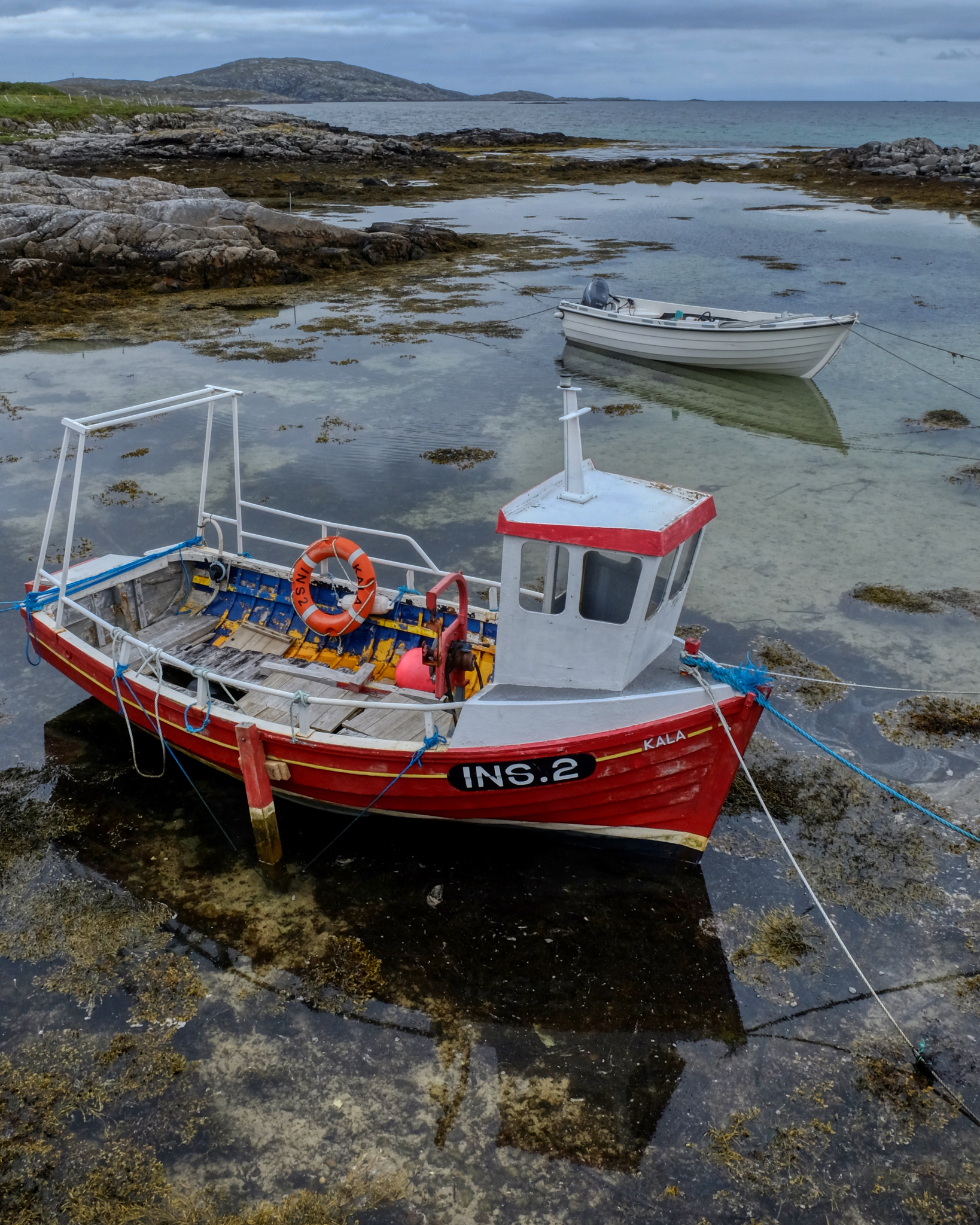 Gorgeous scenes of island life, so connected to the sea.
Gorgeous scenes of island life, so connected to the sea.
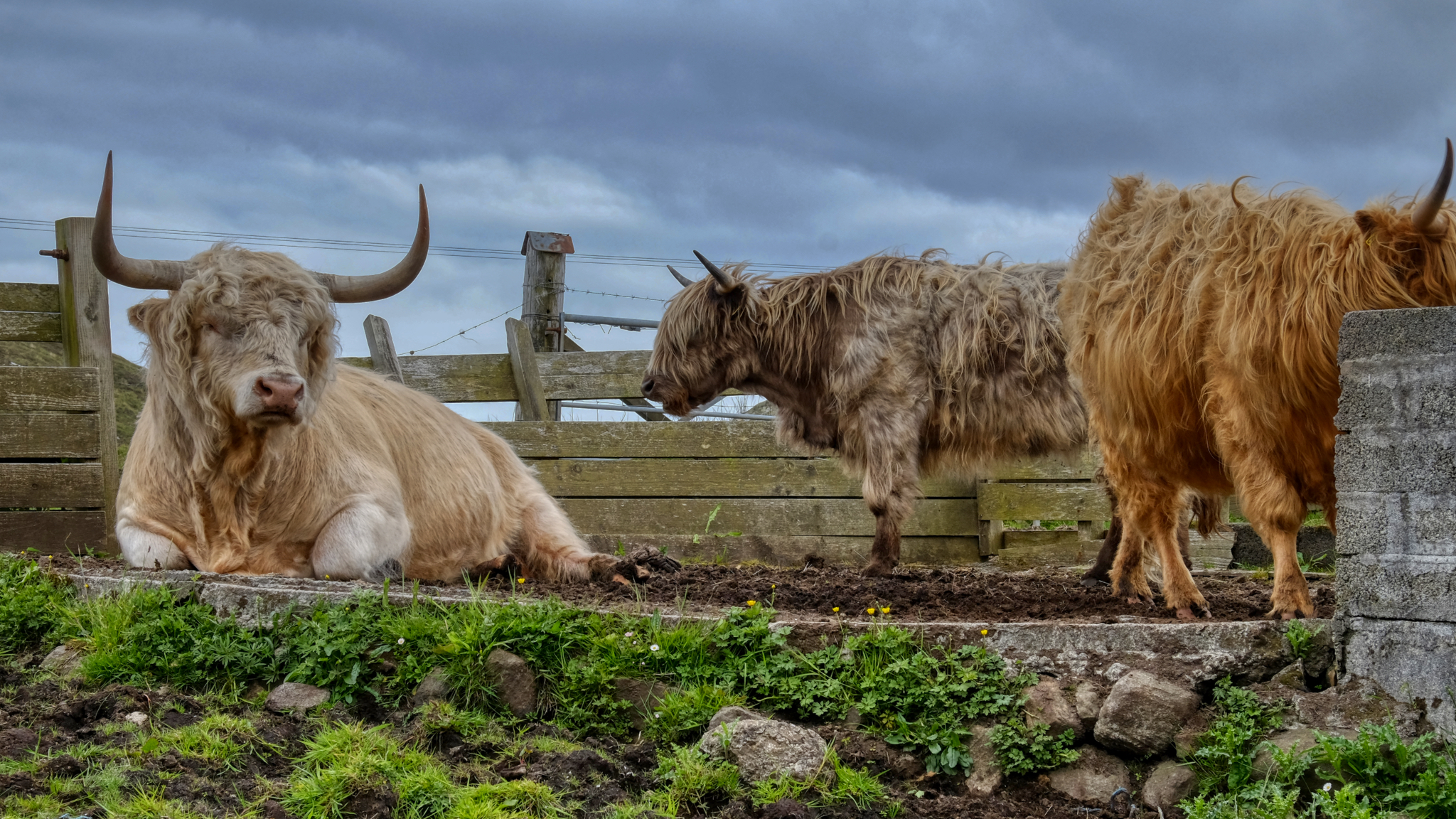 We met these fine fellows along the road. Highland cows.
We met these fine fellows along the road. Highland cows.
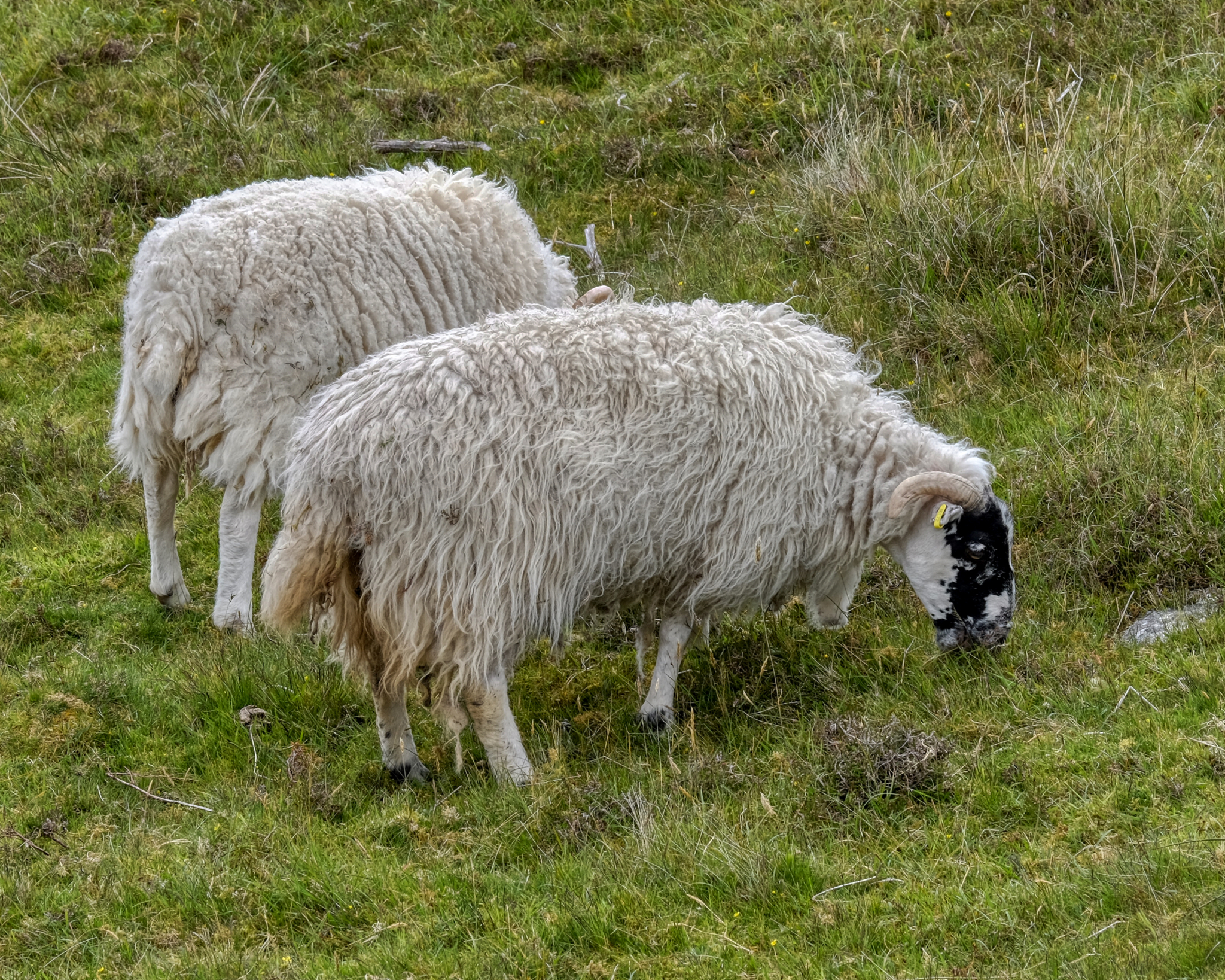 The ever-present wet sheep. We joked that all of the wool from the Outer Hebrides is already 'pre-washed.'
The ever-present wet sheep. We joked that all of the wool from the Outer Hebrides is already 'pre-washed.'
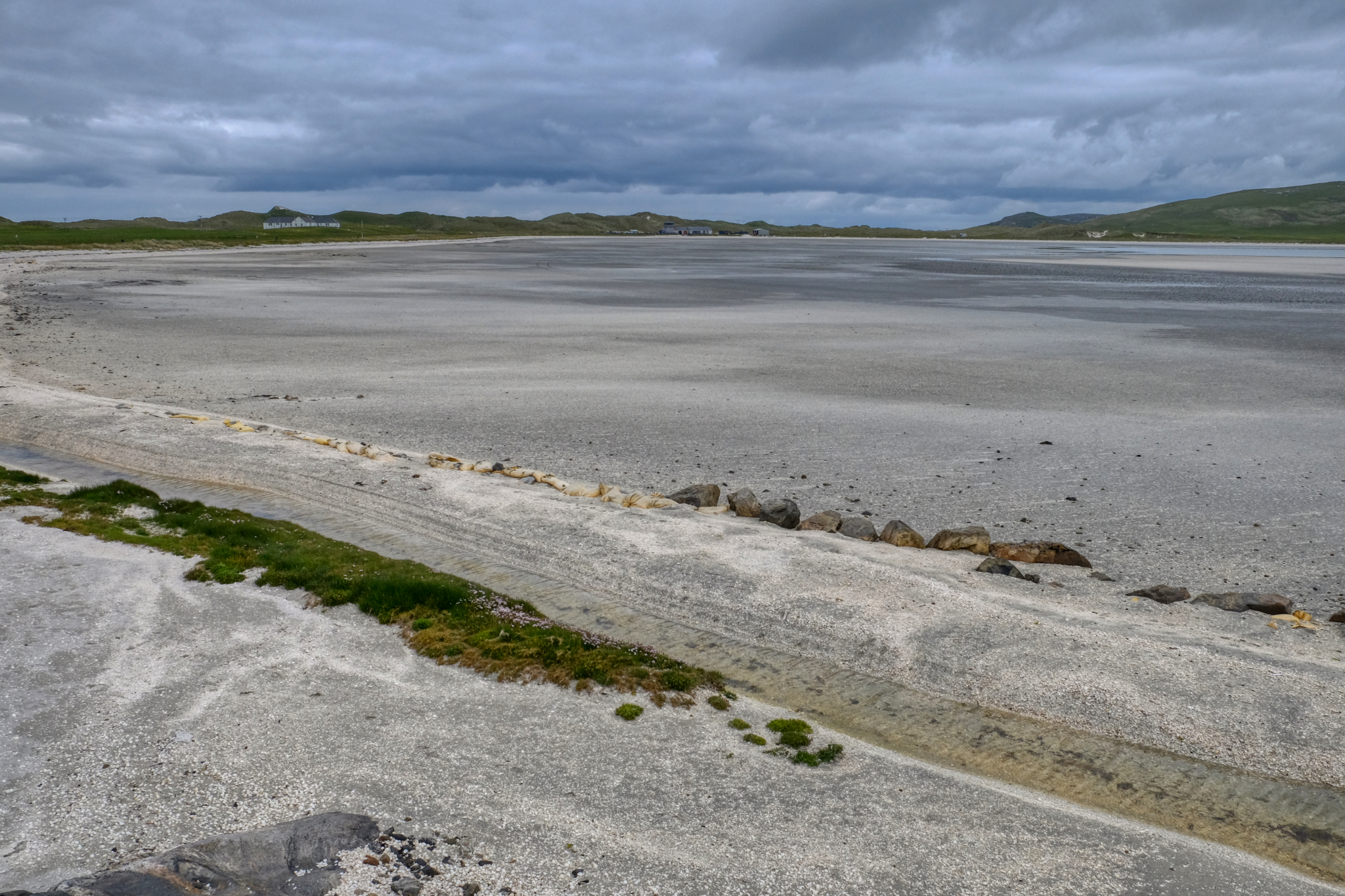 A vast stretch of the white sandy beach of a bay at low tide. Barra Airport in the background.
A vast stretch of the white sandy beach of a bay at low tide. Barra Airport in the background.
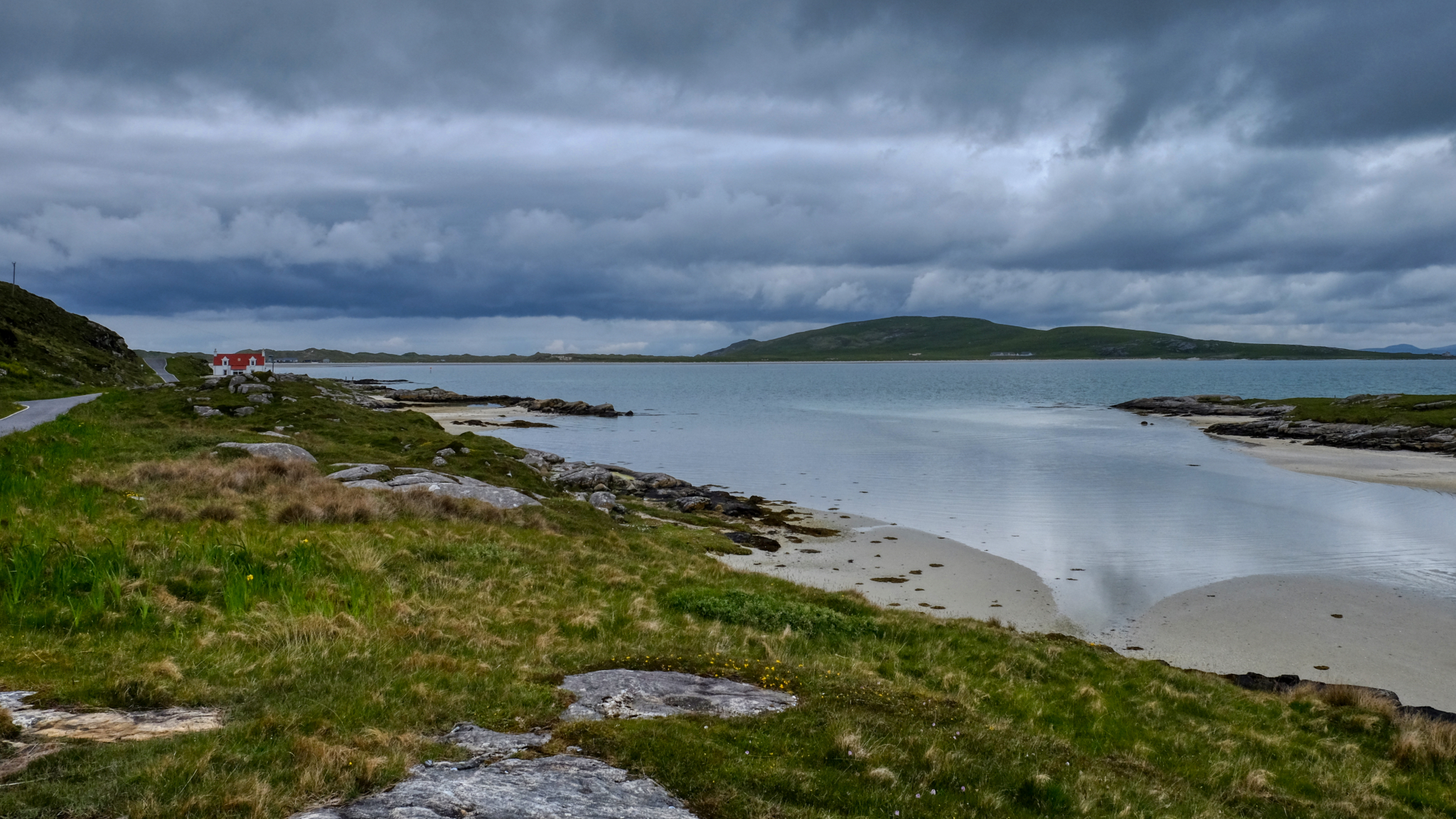 The sight of the small airport drew our attention and we drove along the bay to take a better look.
The sight of the small airport drew our attention and we drove along the bay to take a better look.
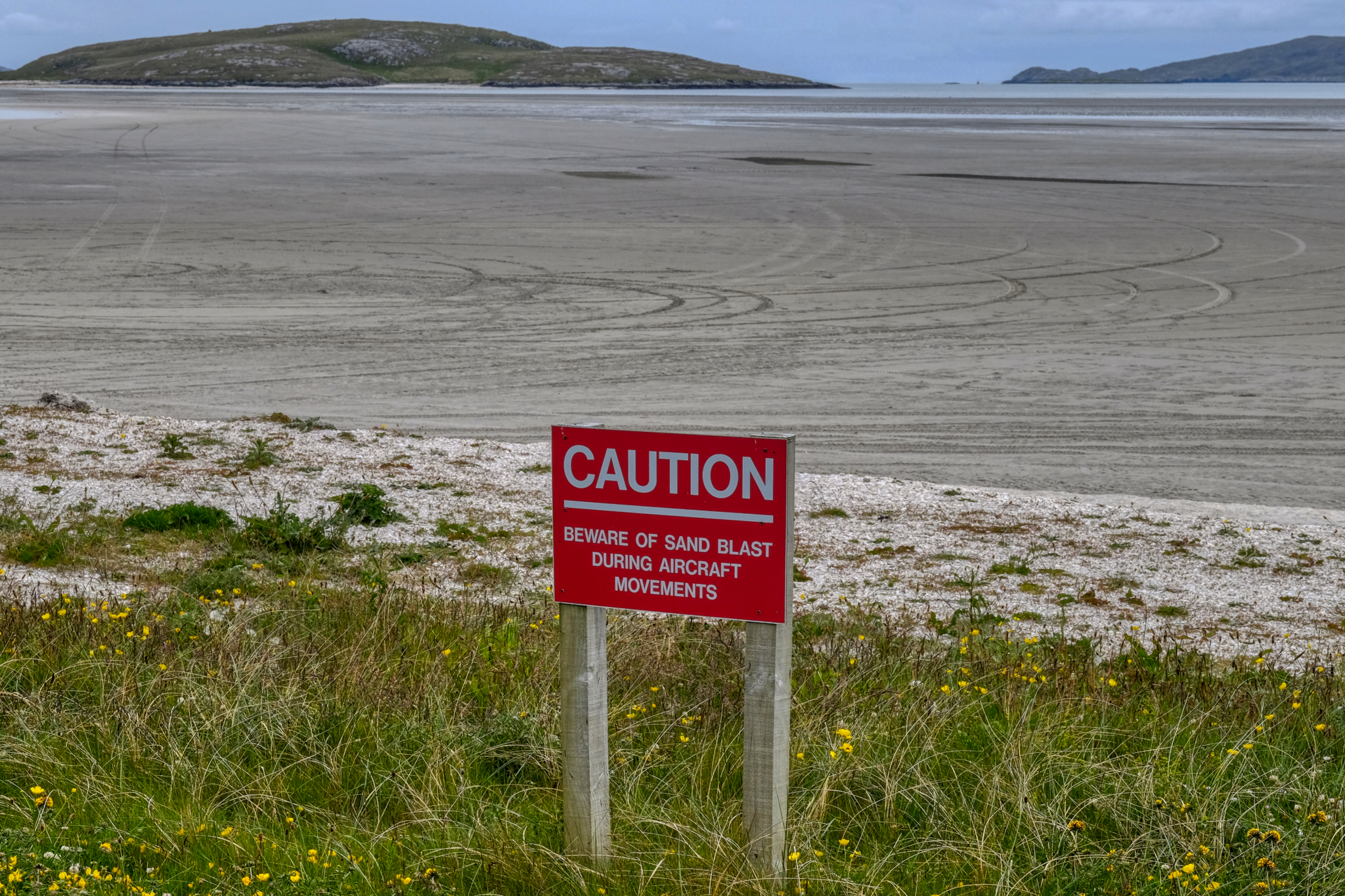 Barra Airport is the only airport in the world with regularly scheduled flights that use a sand beach for a landing strip!
Barra Airport is the only airport in the world with regularly scheduled flights that use a sand beach for a landing strip!
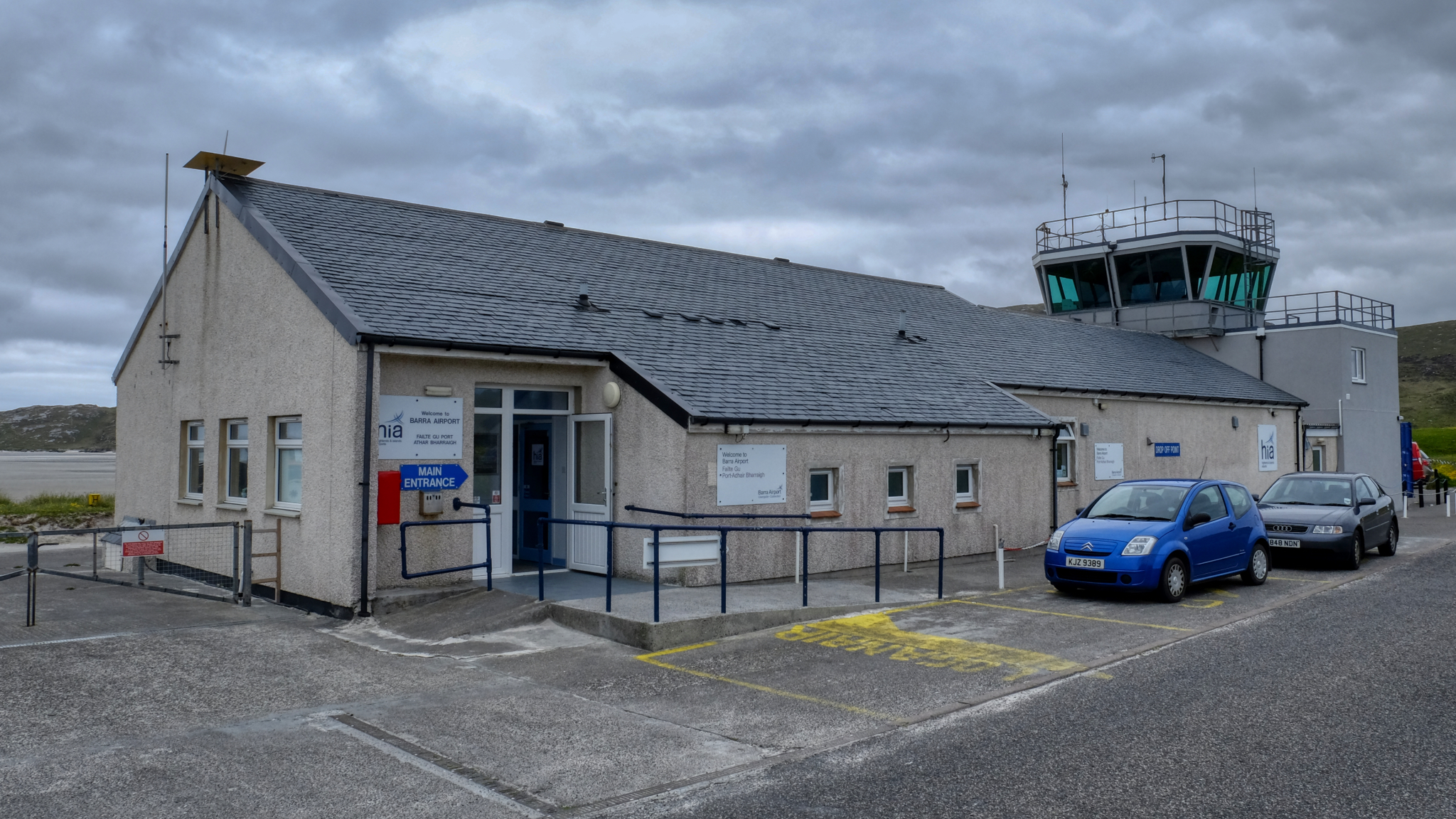 We went in the Barra Airport Terminal . . . for a cup of coffee and a snack. While we were there many people started to show up. There was a plane expected any minute. We stayed to see the big event!
We went in the Barra Airport Terminal . . . for a cup of coffee and a snack. While we were there many people started to show up. There was a plane expected any minute. We stayed to see the big event!
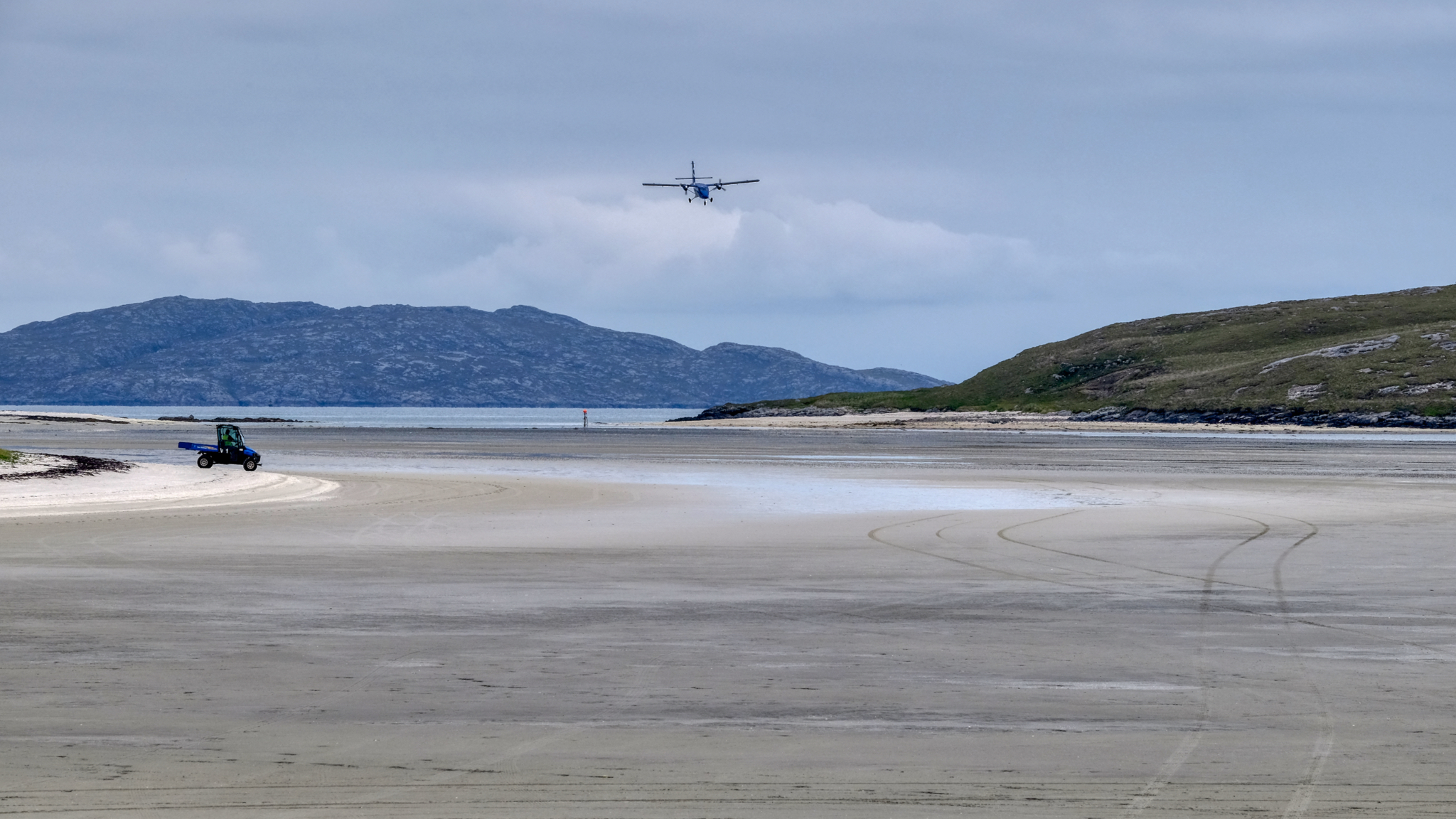 Someone called out, "There it is" . . . and we all turned to look at the airplane approaching from a distance.
Someone called out, "There it is" . . . and we all turned to look at the airplane approaching from a distance.
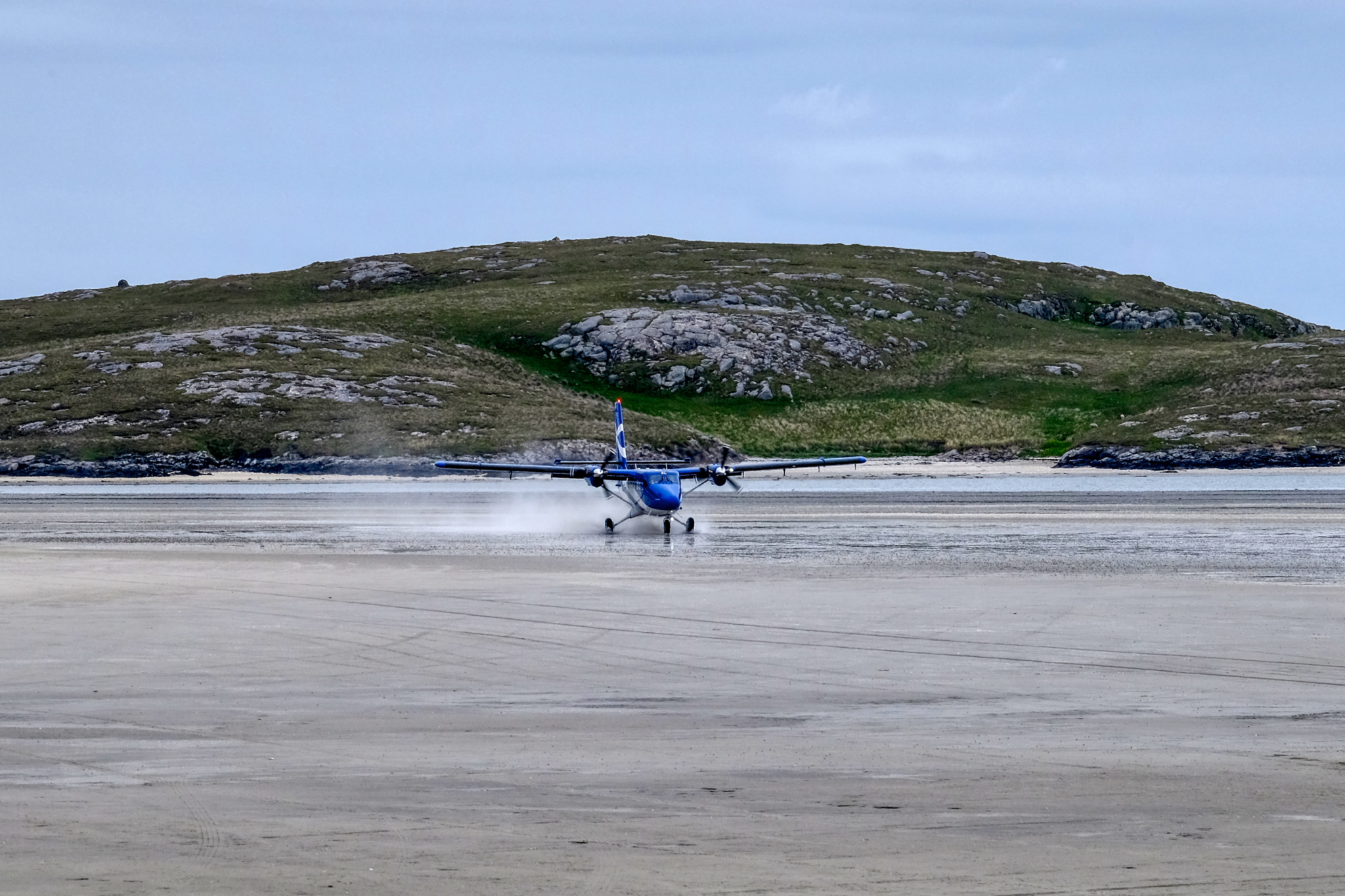 Landing on the wet beach . . .
Landing on the wet beach . . .
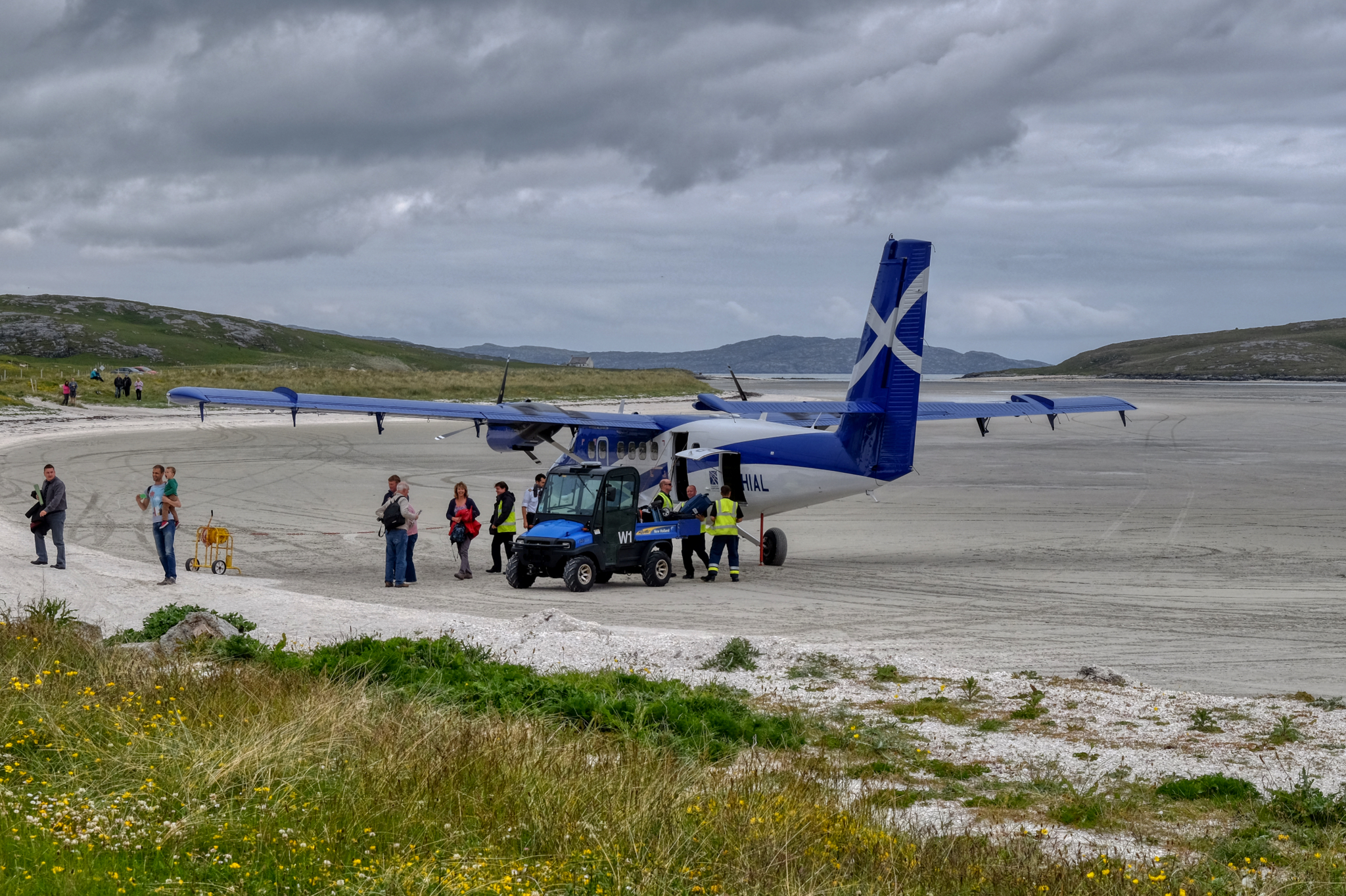 The passengers disembarked onto a sandy runway . . . as they have been doing since 1936. The only destination from this airport is Glasgow.
The passengers disembarked onto a sandy runway . . . as they have been doing since 1936. The only destination from this airport is Glasgow.
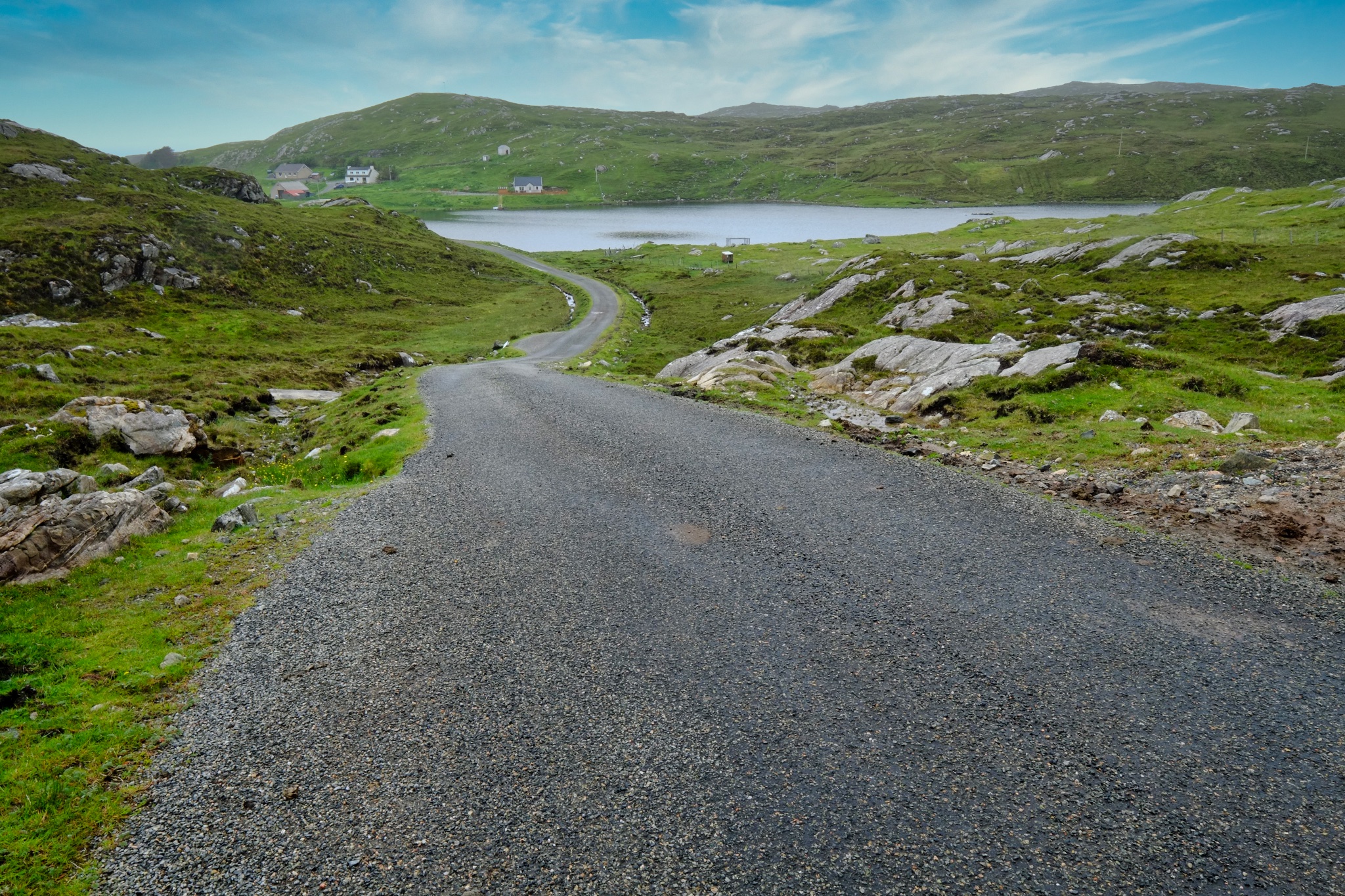 And onward we drove north on these marvelous one lane roads.
And onward we drove north on these marvelous one lane roads.
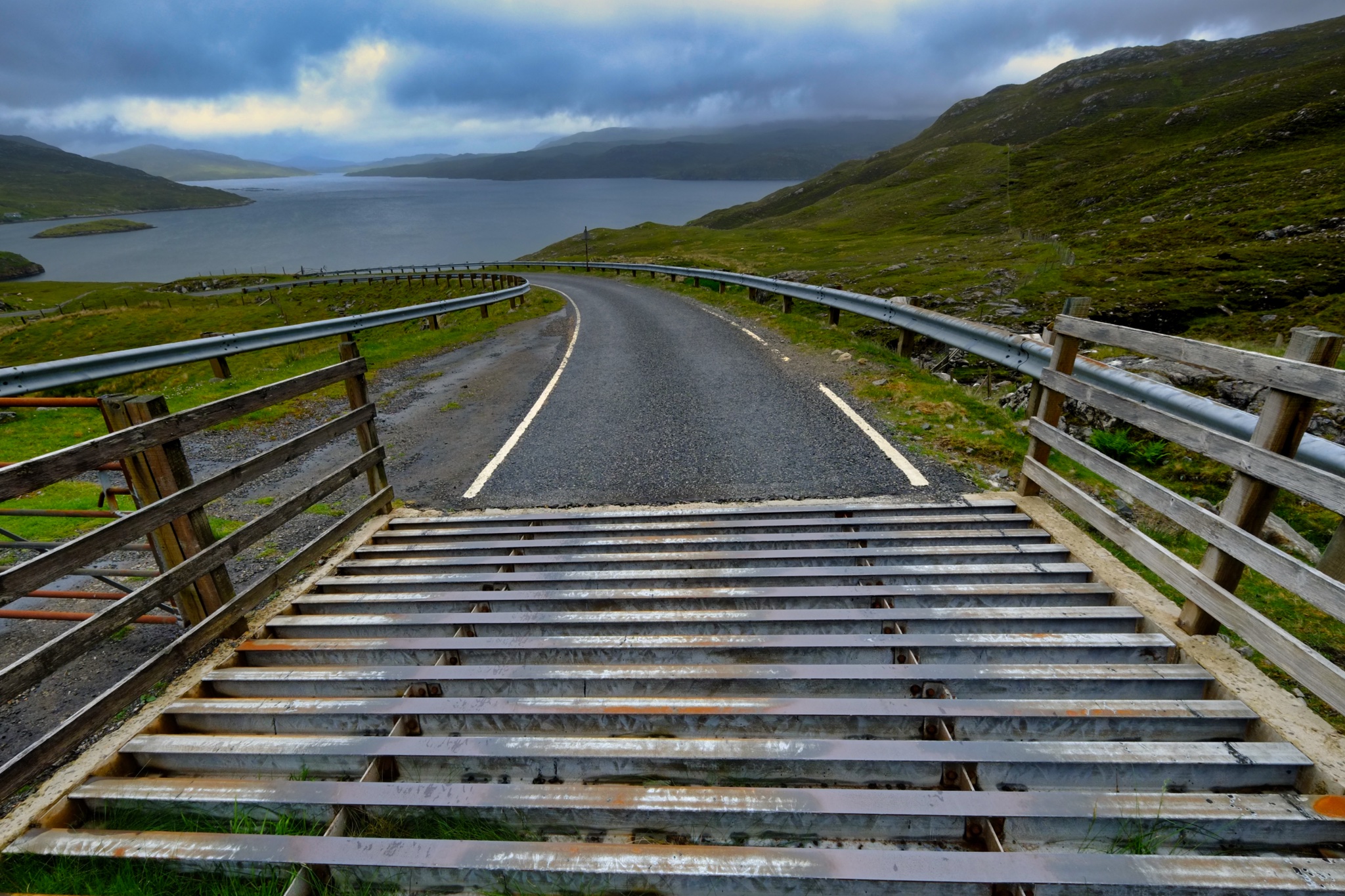 With sheep and Highland cows grazing everywhere, we encountered many of these 'cattle guards.'
With sheep and Highland cows grazing everywhere, we encountered many of these 'cattle guards.'
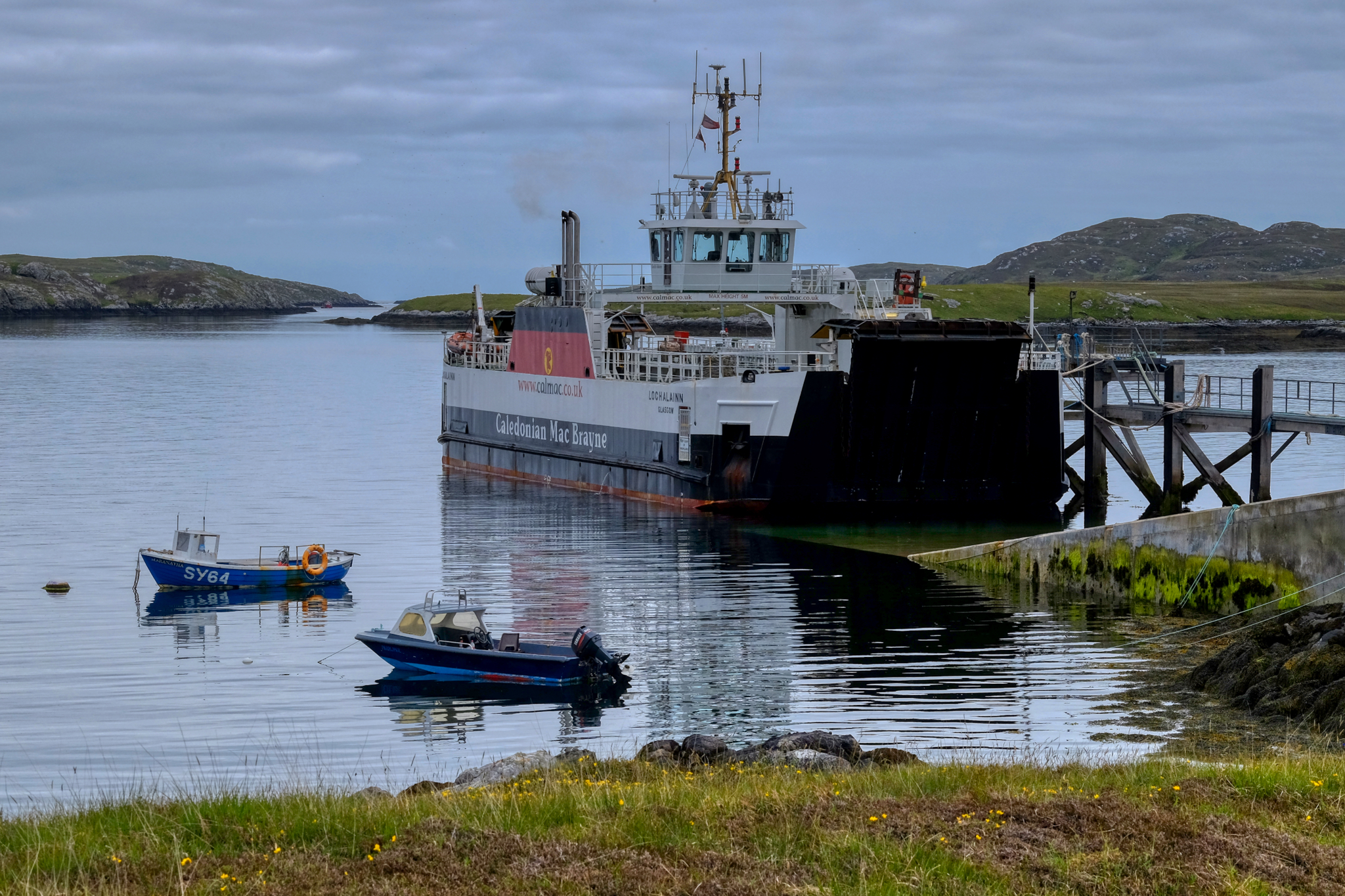 At the northern tip of Barra Island we reached the Ardmhor to Eriskay ferry. There are 5 round trips a day, each carrying only 18 vehicles. With only 90 possible places on this ferry to drive north up through the length of the Outer Hebrides, it is important to book in advance. We had.
At the northern tip of Barra Island we reached the Ardmhor to Eriskay ferry. There are 5 round trips a day, each carrying only 18 vehicles. With only 90 possible places on this ferry to drive north up through the length of the Outer Hebrides, it is important to book in advance. We had.
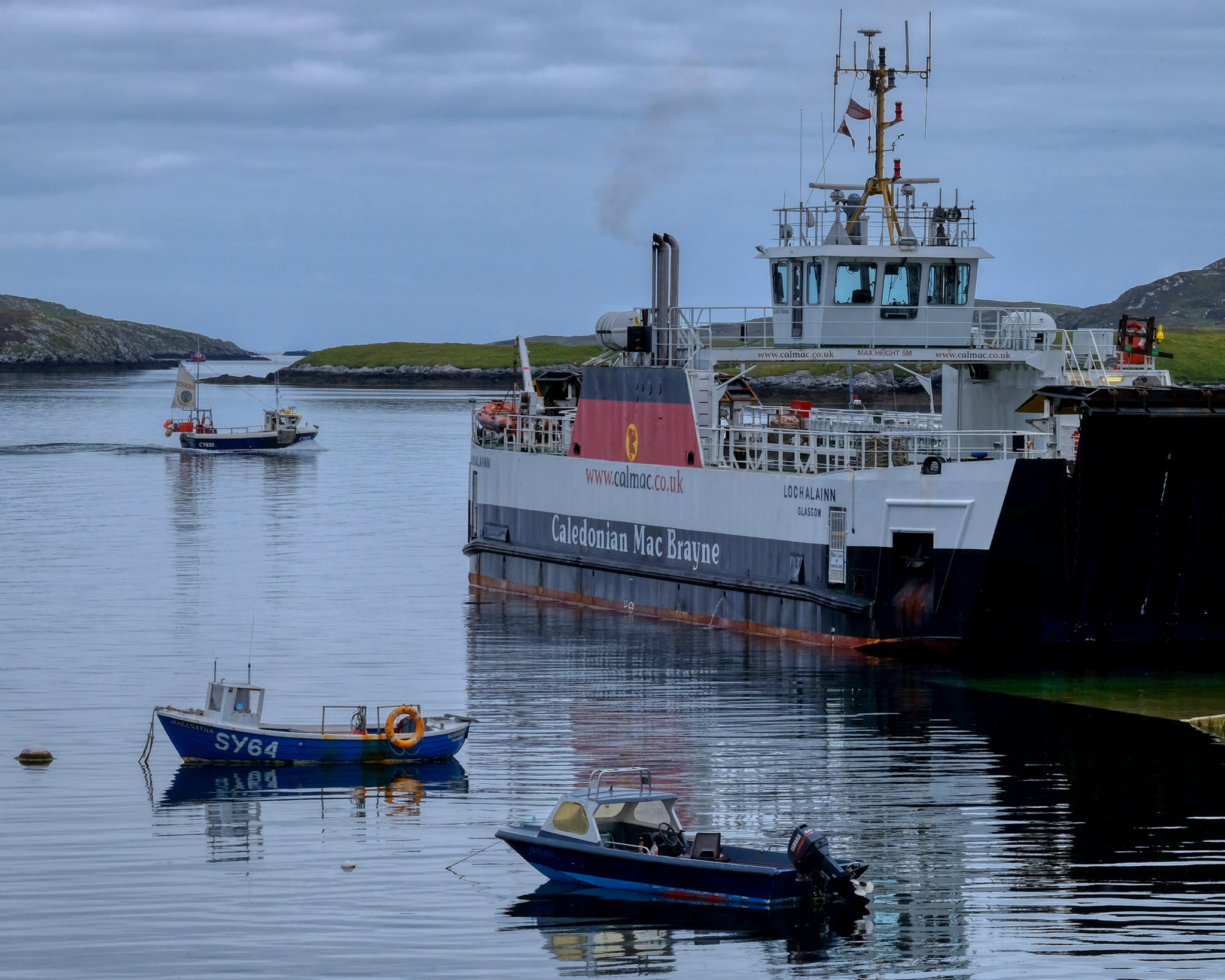 We arrived at the ferry terminal a little early . . . which allowed me some time to explore the area.
We arrived at the ferry terminal a little early . . . which allowed me some time to explore the area.
 Such a remote and fascinating place.
Such a remote and fascinating place.
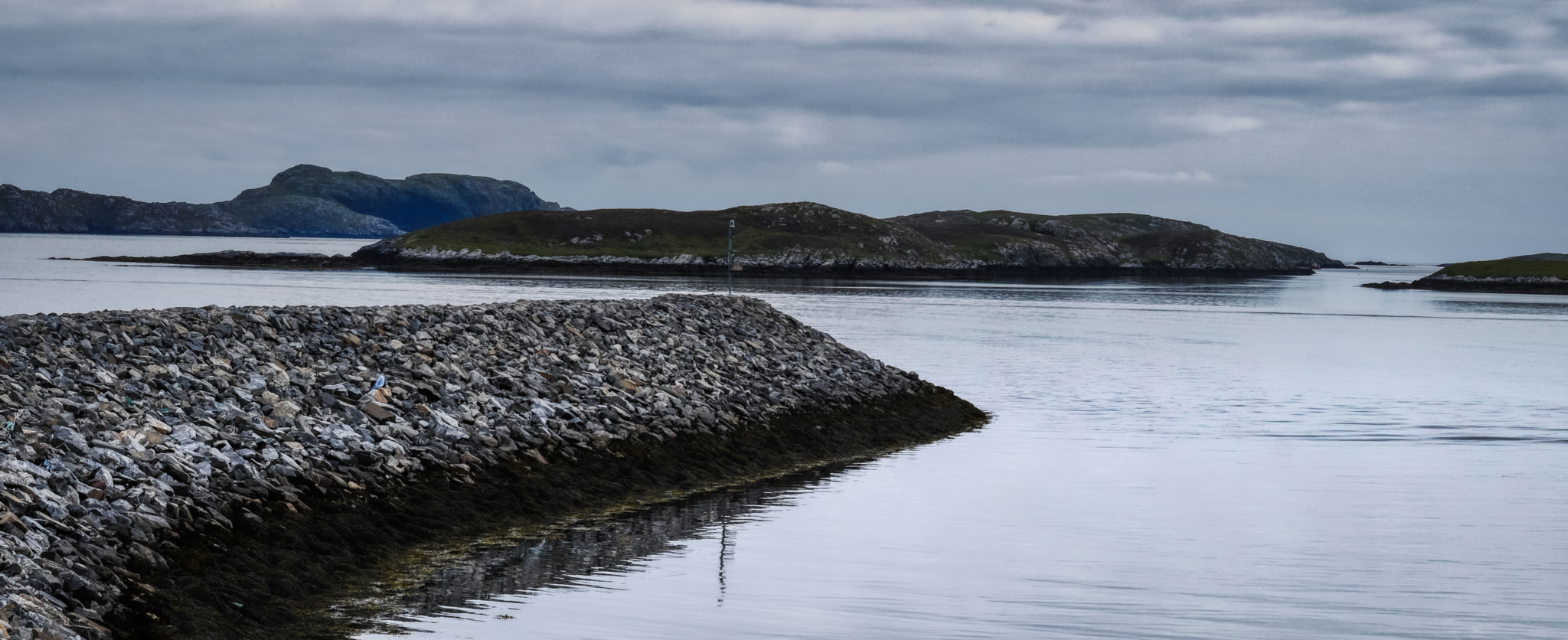 The sea always framed by outcrops of stone islands . . .
The sea always framed by outcrops of stone islands . . .
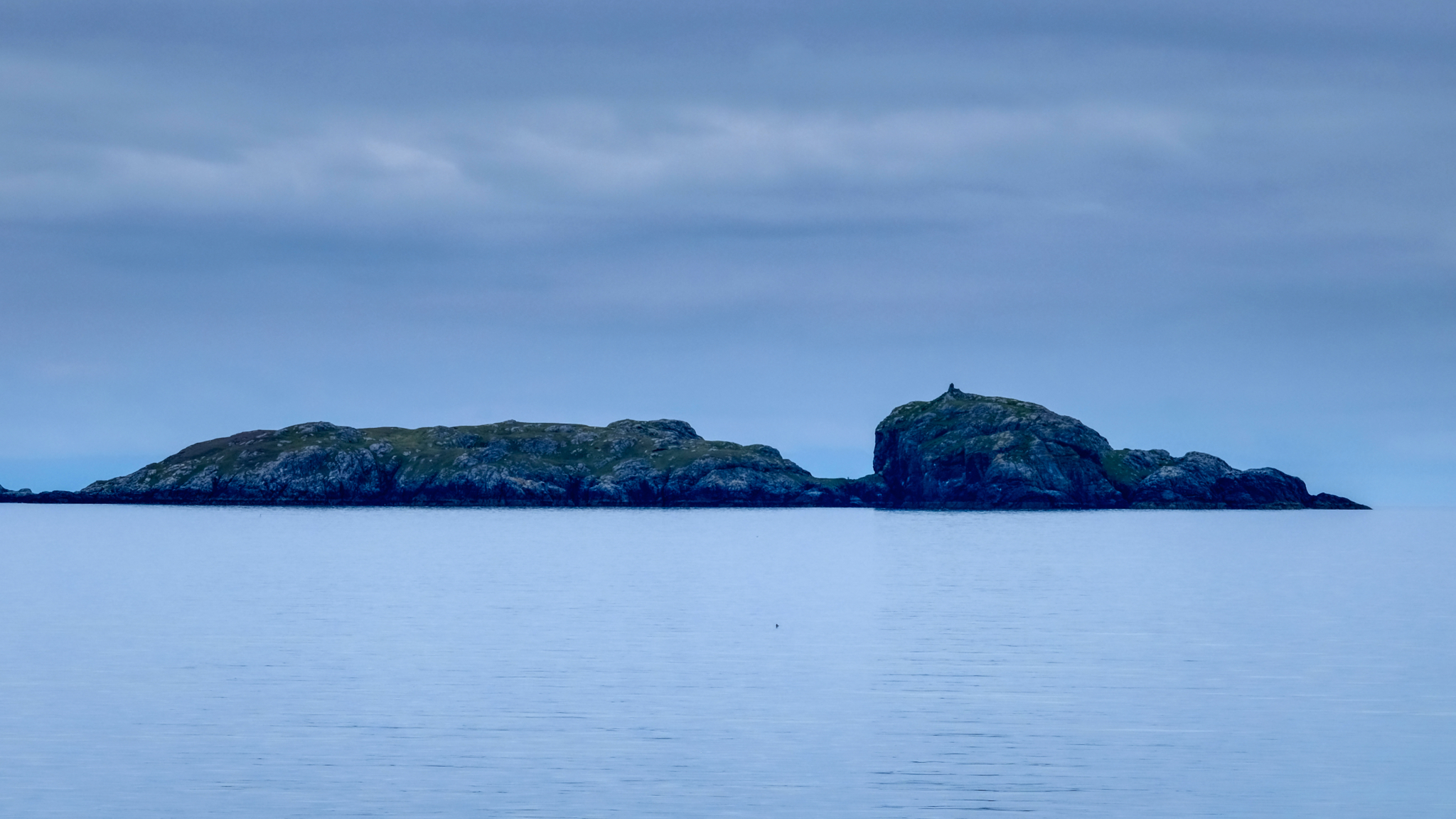 The passage between Barra Island and Eriskay Island was eerily mystical . . .
The passage between Barra Island and Eriskay Island was eerily mystical . . .
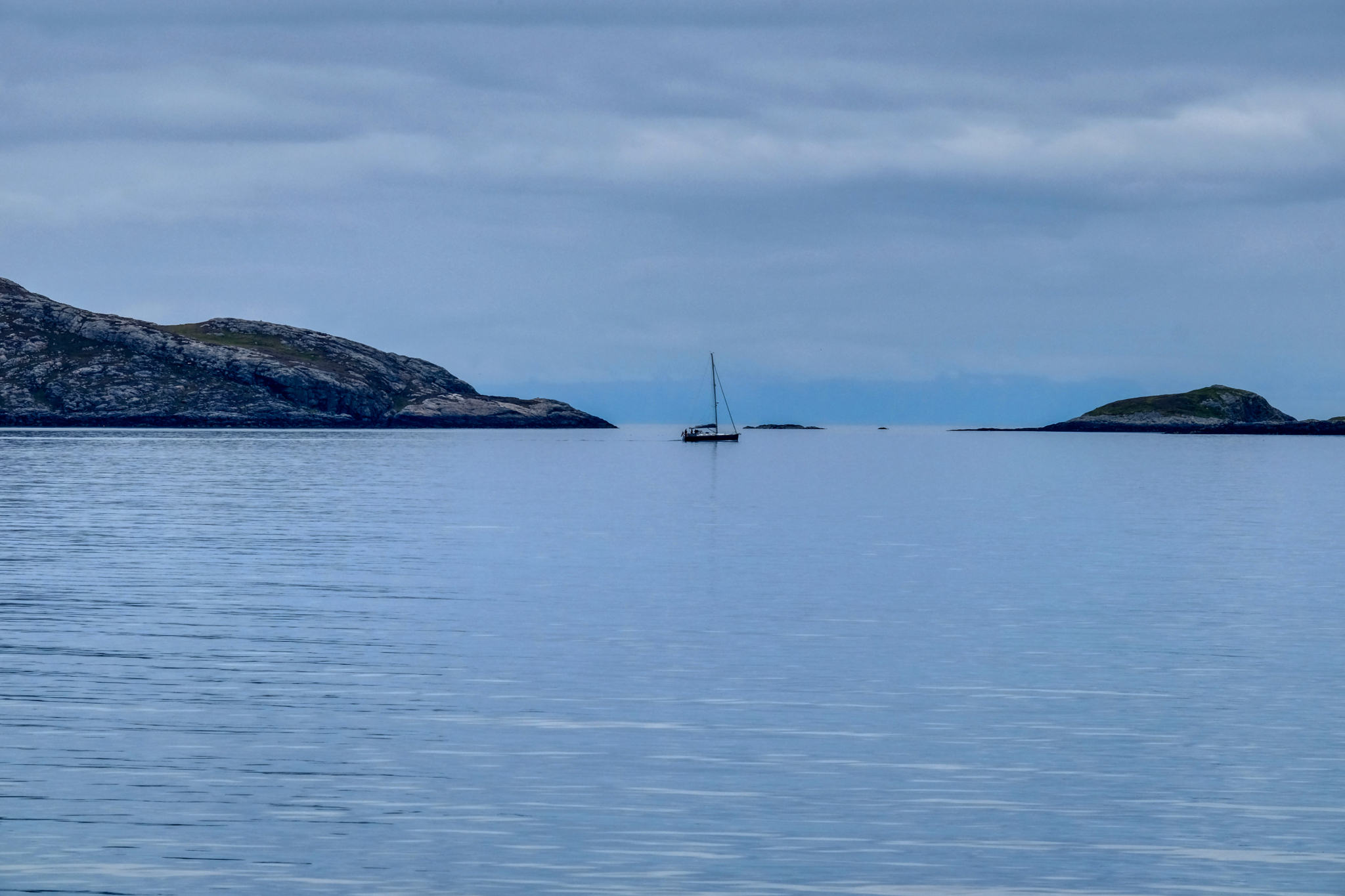 My memory of the passage was of the total silence . . . hardly a sound beyond the quiet thumping of the ferry diesel at work. Calm. Remote.
My memory of the passage was of the total silence . . . hardly a sound beyond the quiet thumping of the ferry diesel at work. Calm. Remote.
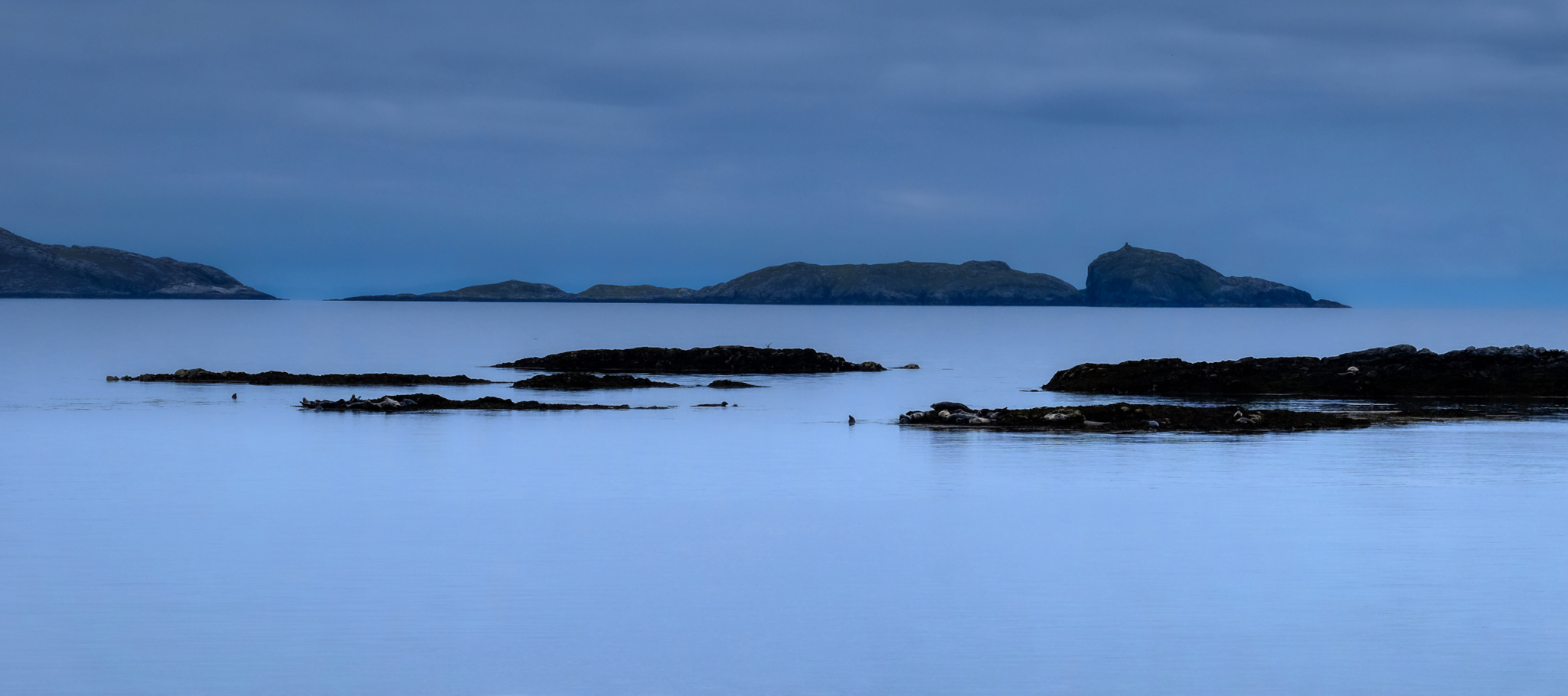 There was a bit of commotion among my fellow passengers. Someone remarked, "Look. Seals." And there they were.
There was a bit of commotion among my fellow passengers. Someone remarked, "Look. Seals." And there they were.
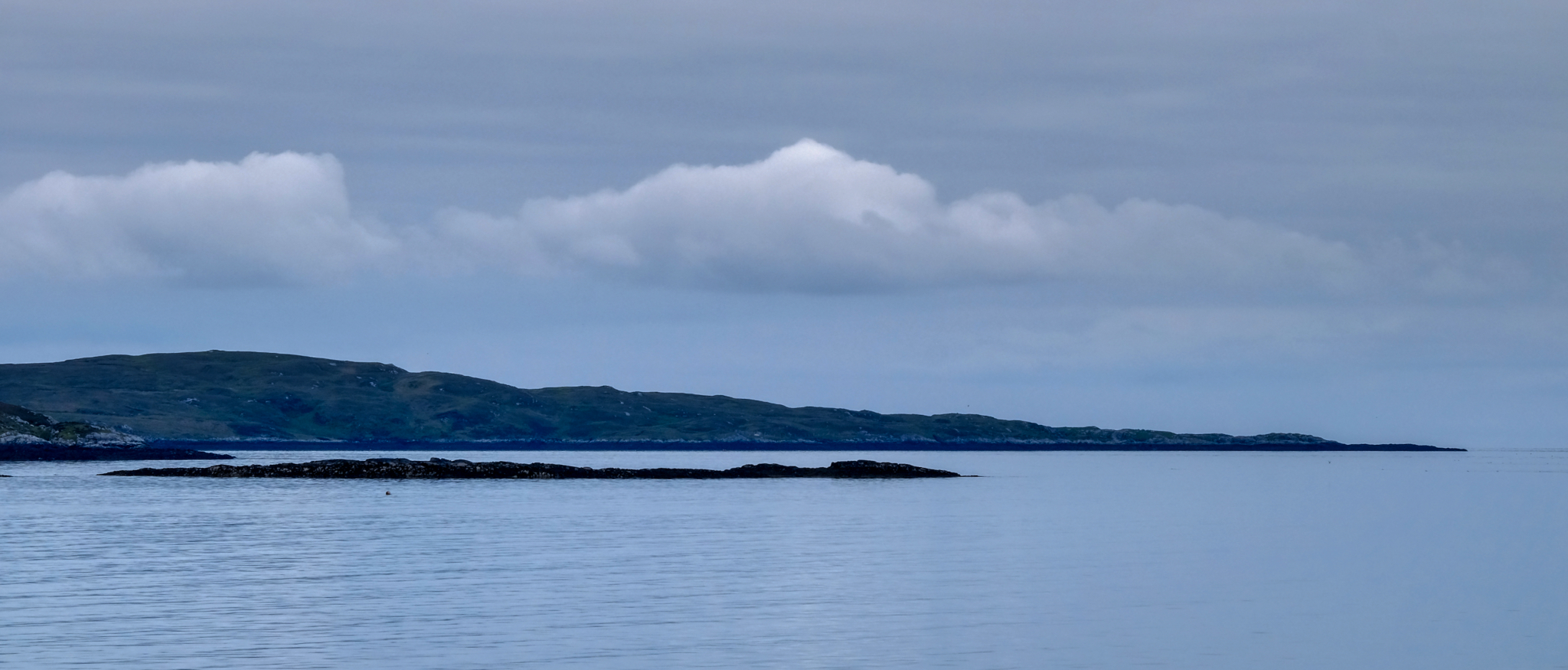 A strange, captivating, natural beauty.
A strange, captivating, natural beauty.
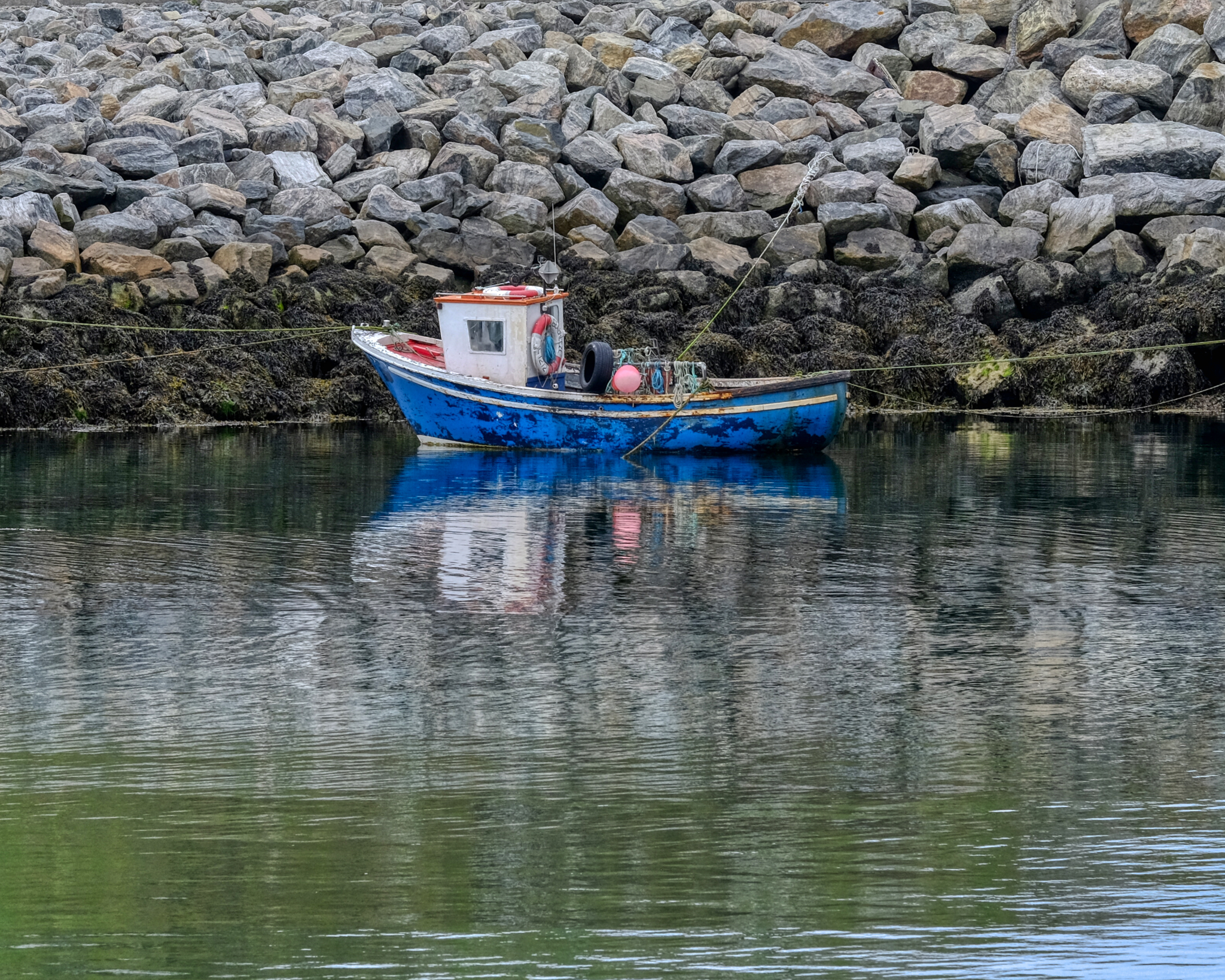 Arriving on the Isle of Eriskay.
Arriving on the Isle of Eriskay.
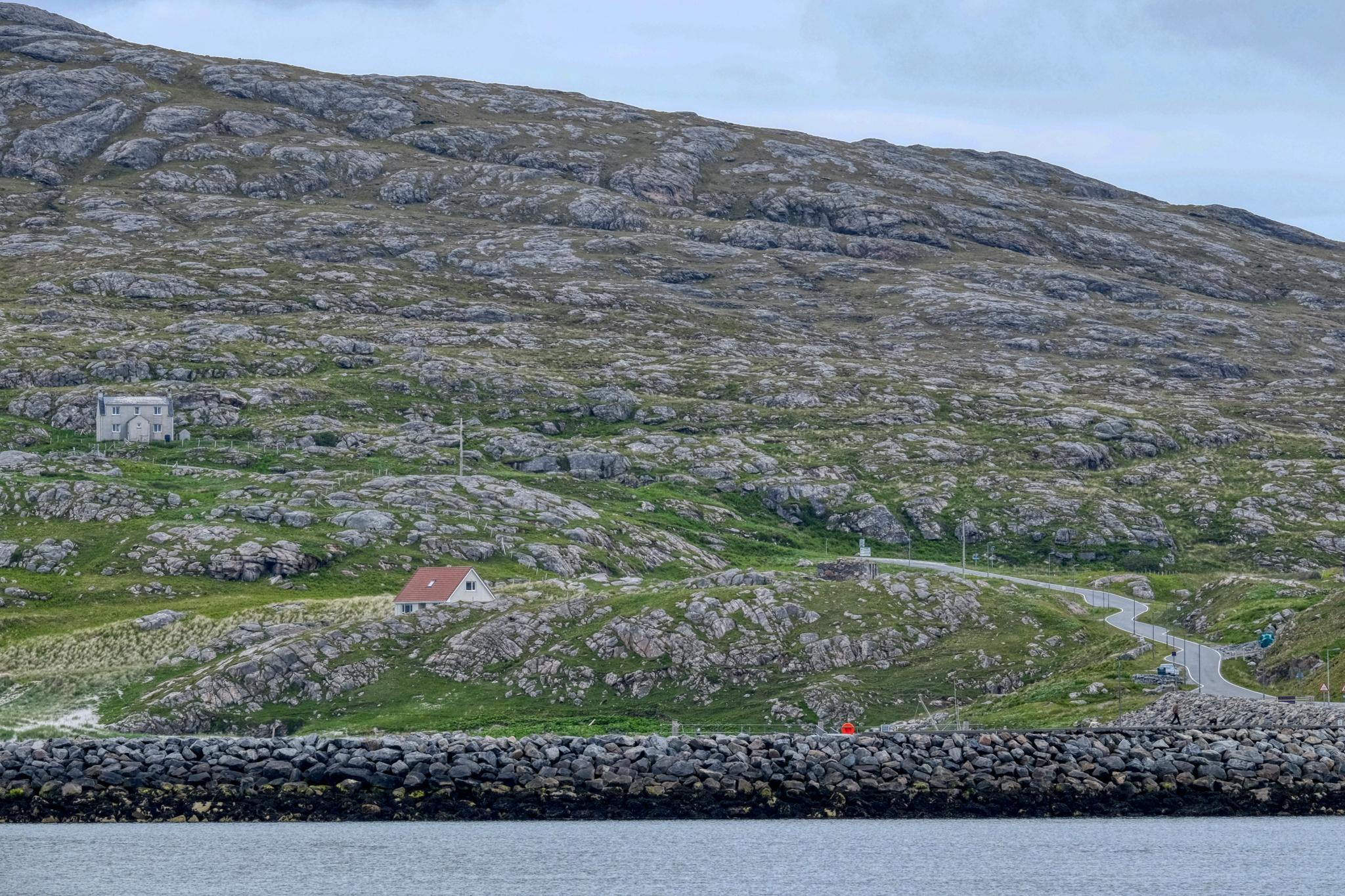 Rocky, barren hillside . . . and the one-lane road that will take us further up the Outer Hebrides chain of islands.
Rocky, barren hillside . . . and the one-lane road that will take us further up the Outer Hebrides chain of islands.
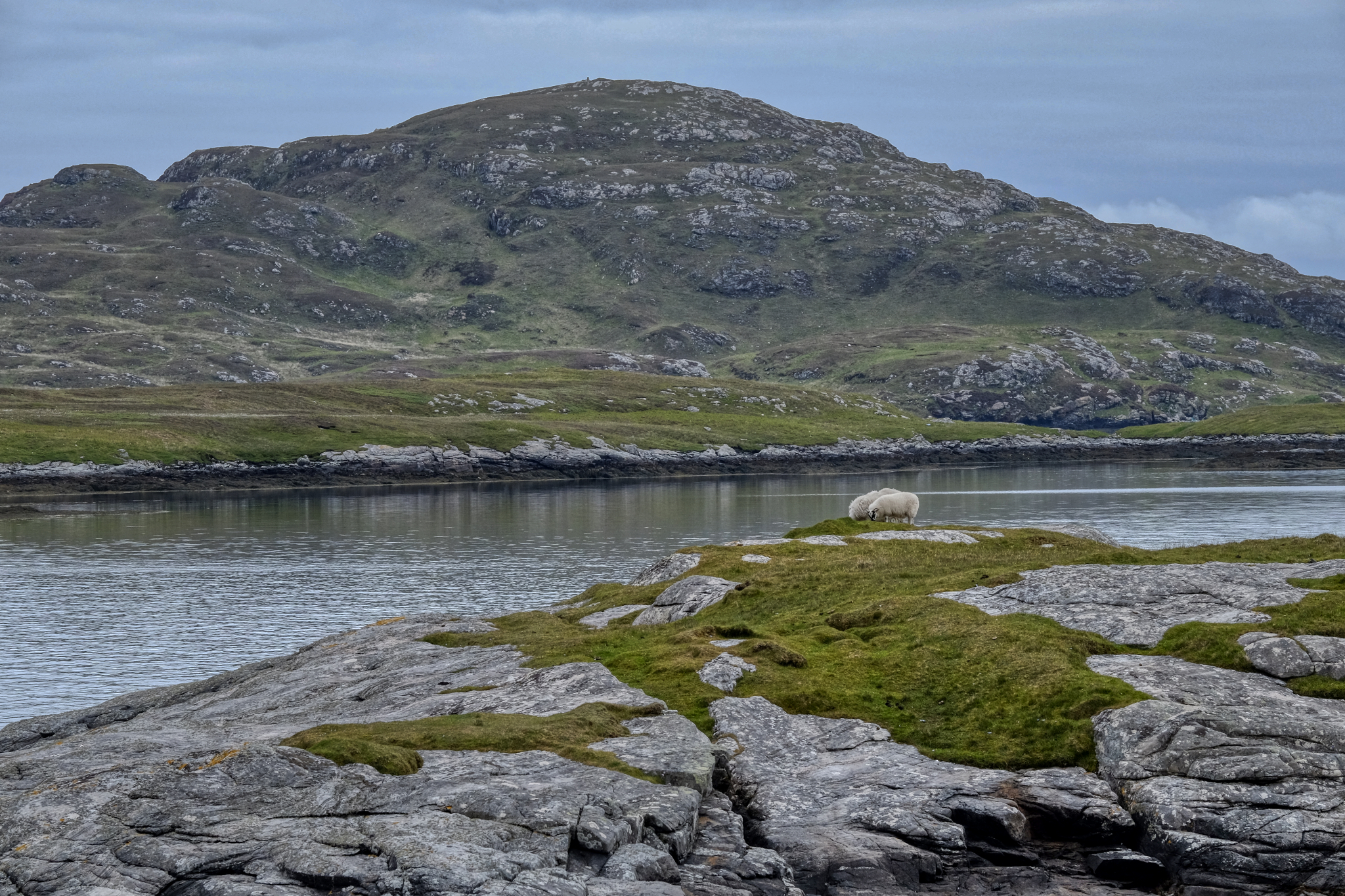 We quickly crossed Eriskay Island and drove up and across a causeway to South Uist Island.
We quickly crossed Eriskay Island and drove up and across a causeway to South Uist Island.
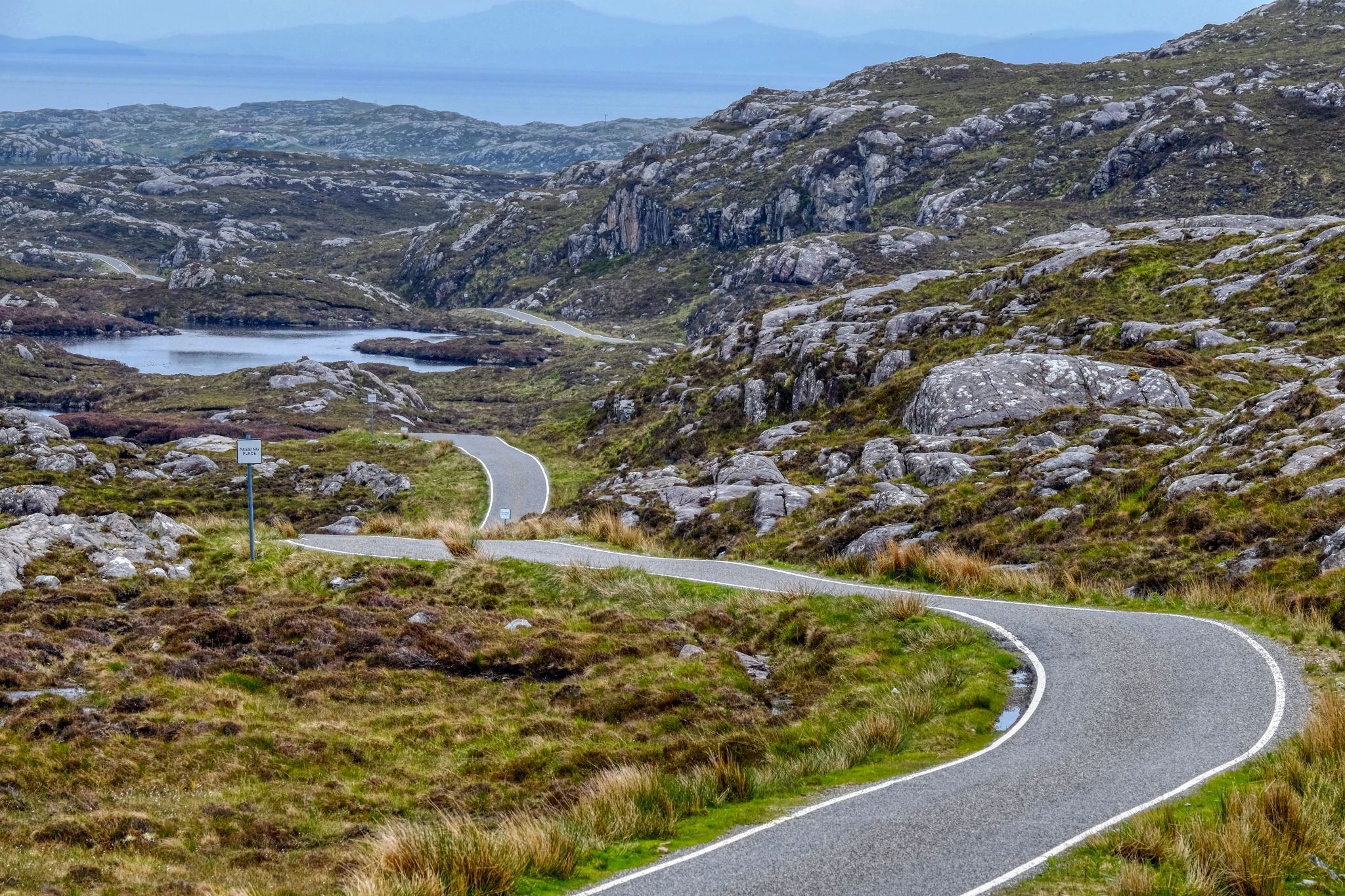 I absolutely loved driving on these narrow, winding, one-lane roads through this unique topography.
I absolutely loved driving on these narrow, winding, one-lane roads through this unique topography.
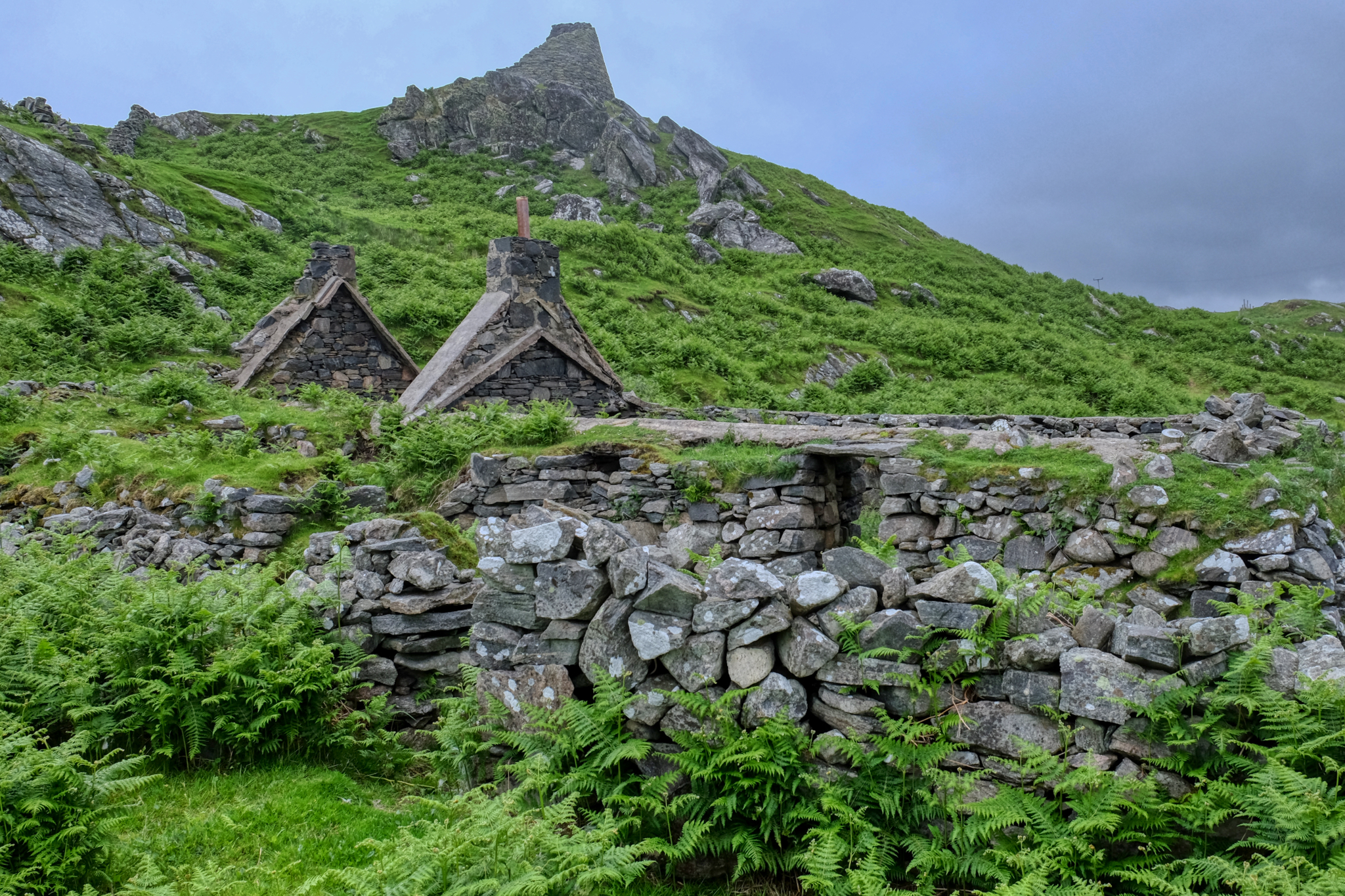 The remains of an old stone crofters house . . . and a stone tower on the hilltop.
The remains of an old stone crofters house . . . and a stone tower on the hilltop.
 Midsummer flowers, grey skies, dilapidated stone ruins . . . . The Isle of Lewis.
Midsummer flowers, grey skies, dilapidated stone ruins . . . . The Isle of Lewis.
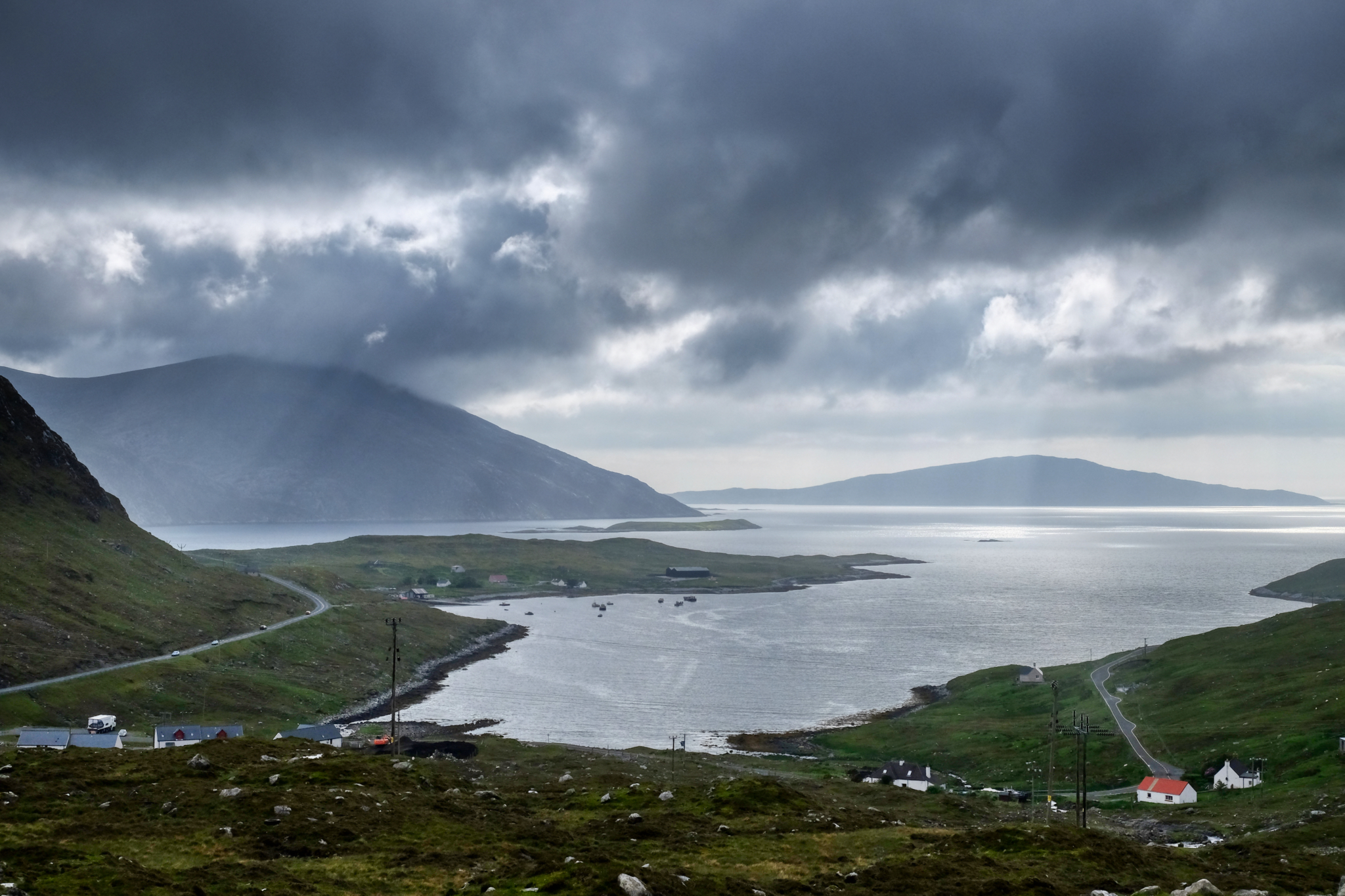 In and around mountain passes, sudden grand views out across the bays to the outlying islands. Magnificent scenery. Like no other place I have ever been.
In and around mountain passes, sudden grand views out across the bays to the outlying islands. Magnificent scenery. Like no other place I have ever been.
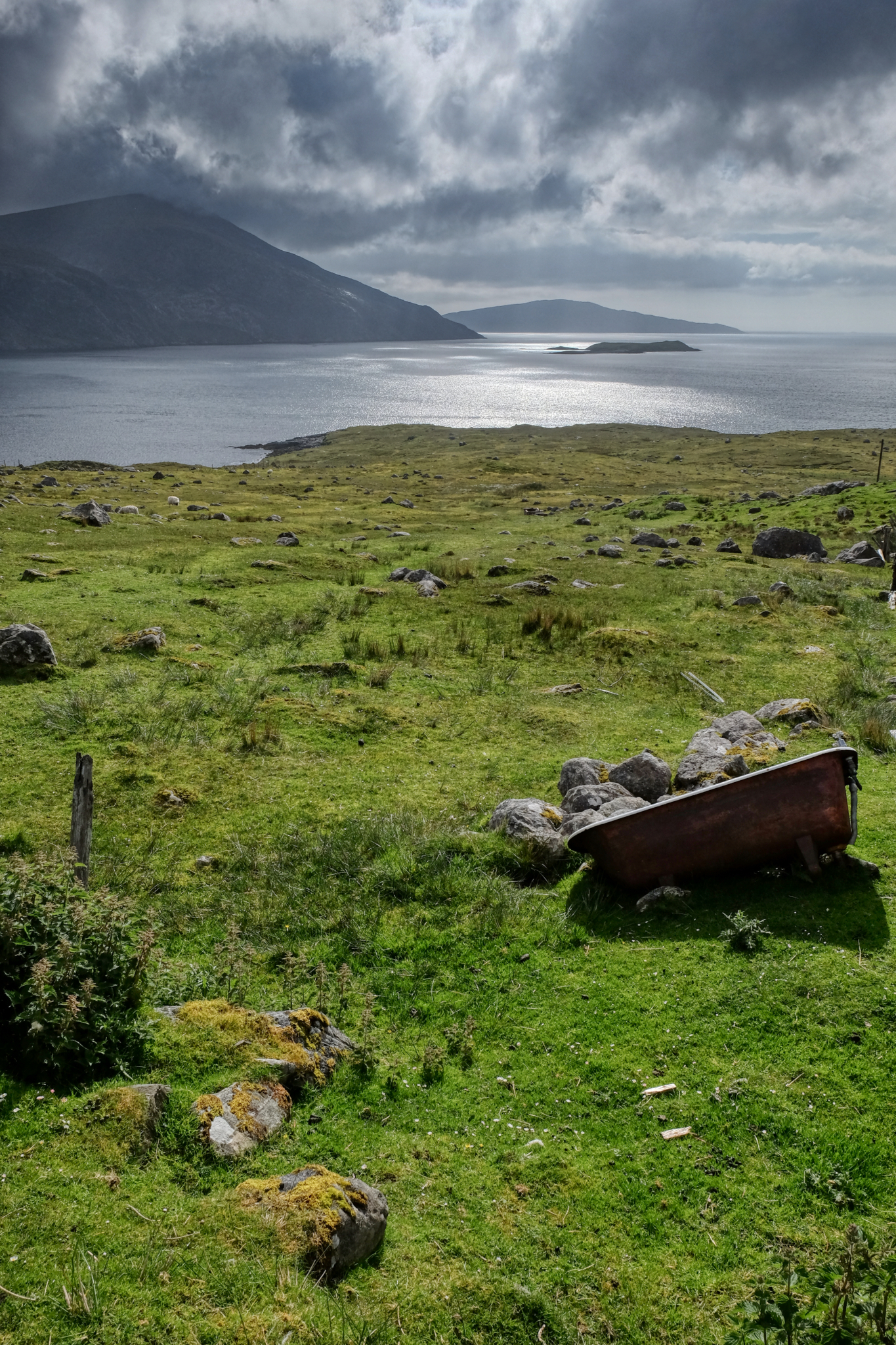 Grand views like no place else.
Grand views like no place else.
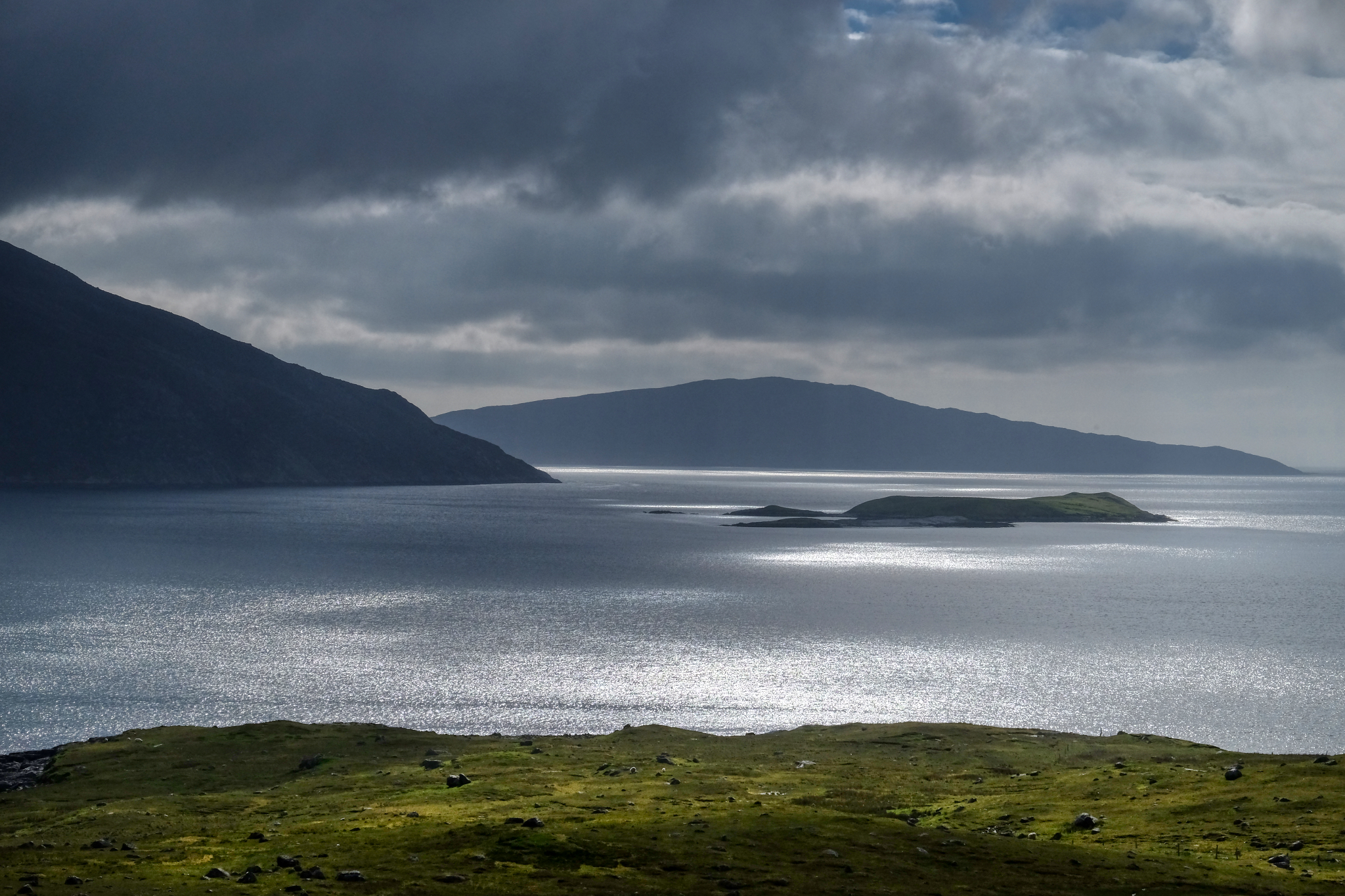 Patches of light on the sea . . .
Patches of light on the sea . . .
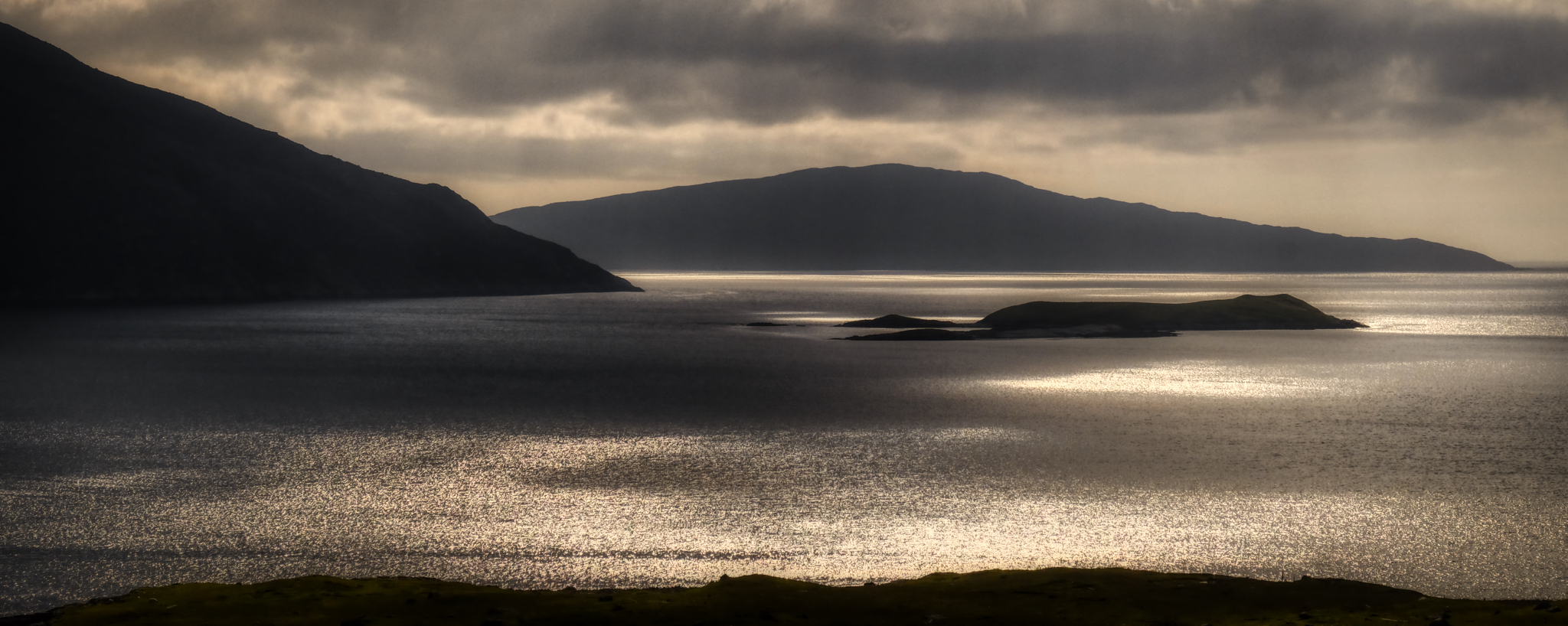 I am not usually partial to added photo 'artsy' technique, but this scene seemed to demand a sepia tone. Amazing.
I am not usually partial to added photo 'artsy' technique, but this scene seemed to demand a sepia tone. Amazing.
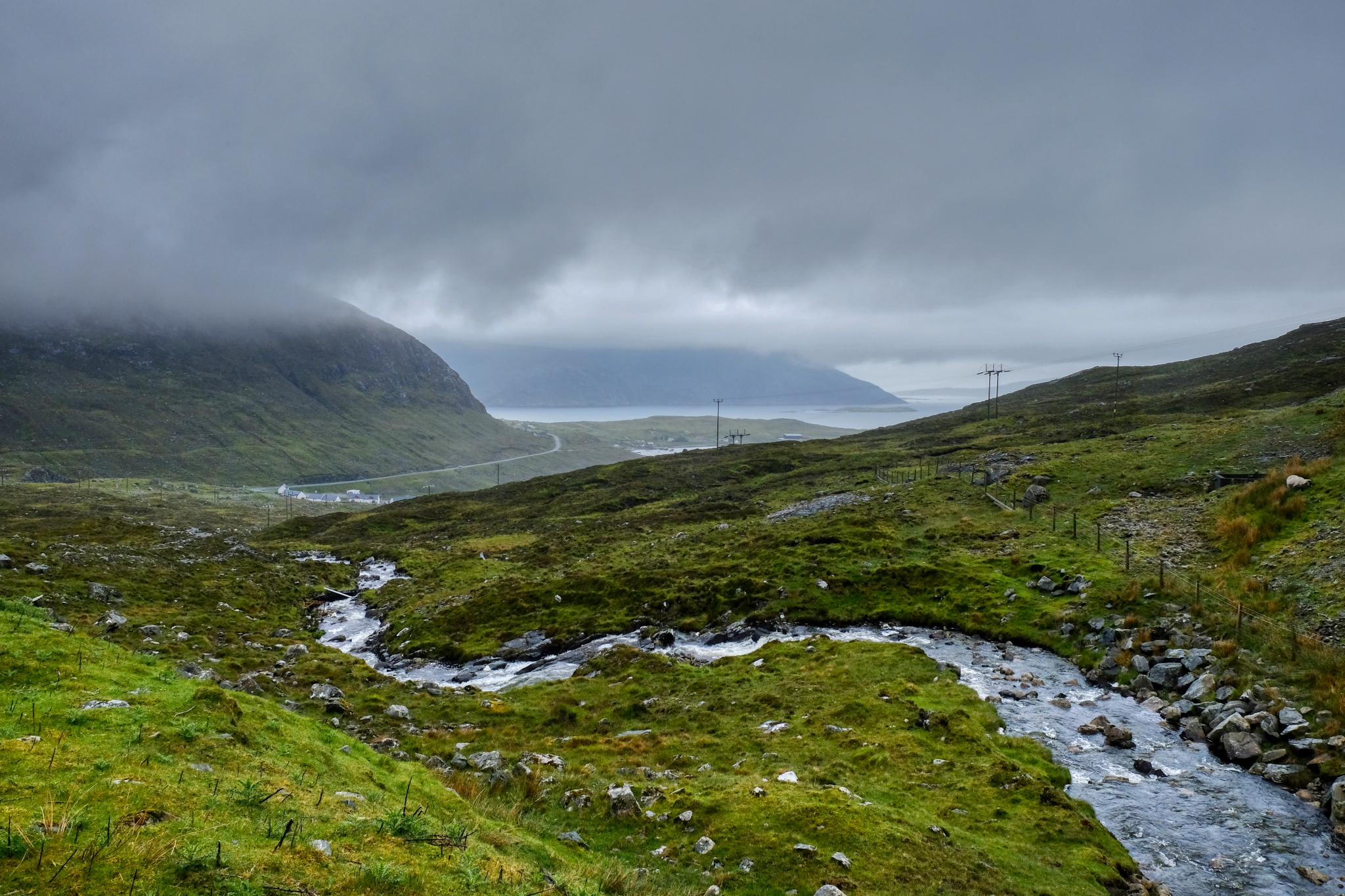 Driving up the small winding road along side a rushing stream . . . .
Driving up the small winding road along side a rushing stream . . . .
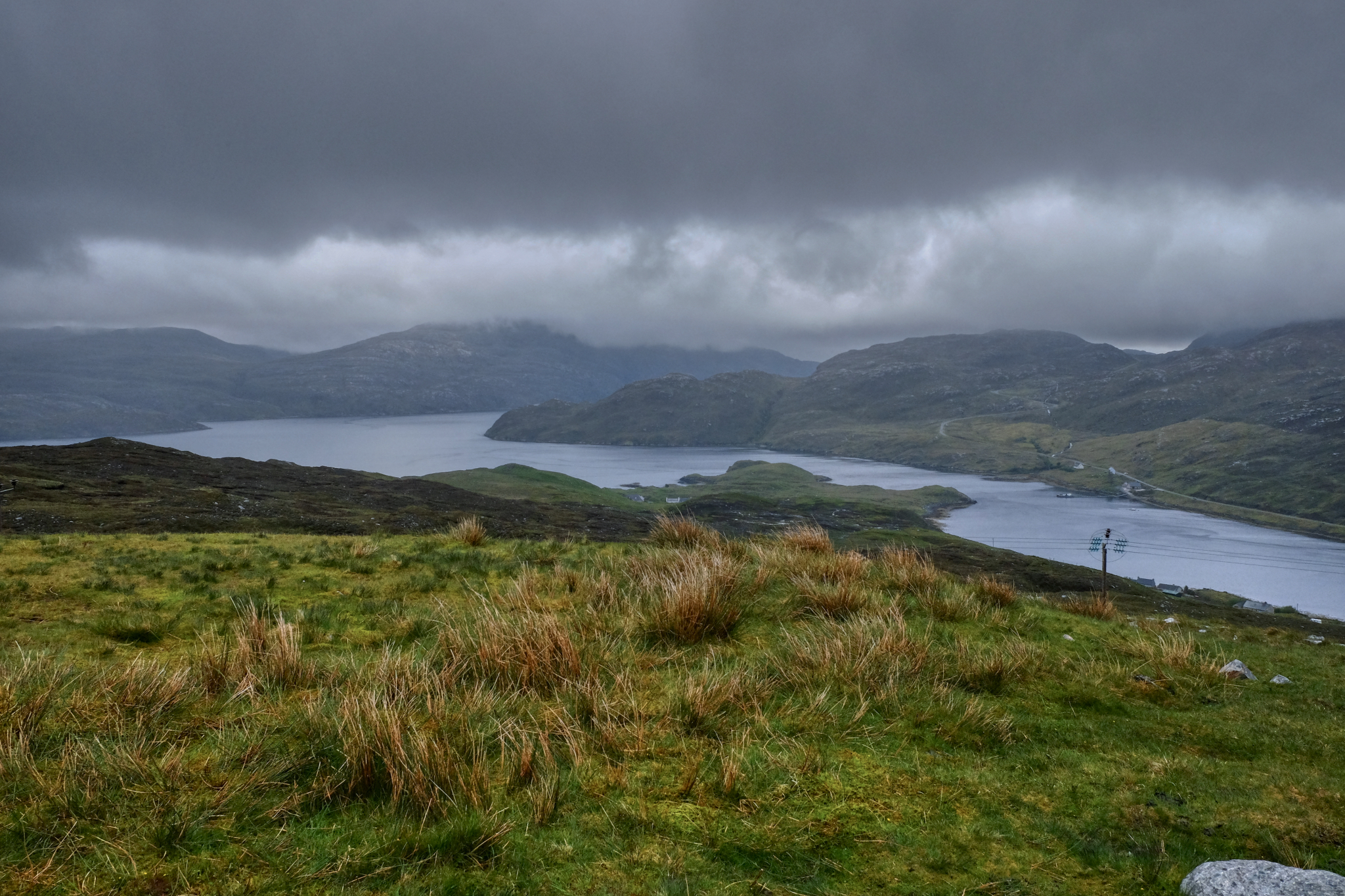 And around the bend at the hilltop . . . another magnificent view of a picturesque inlet . . . in the rain.
And around the bend at the hilltop . . . another magnificent view of a picturesque inlet . . . in the rain.
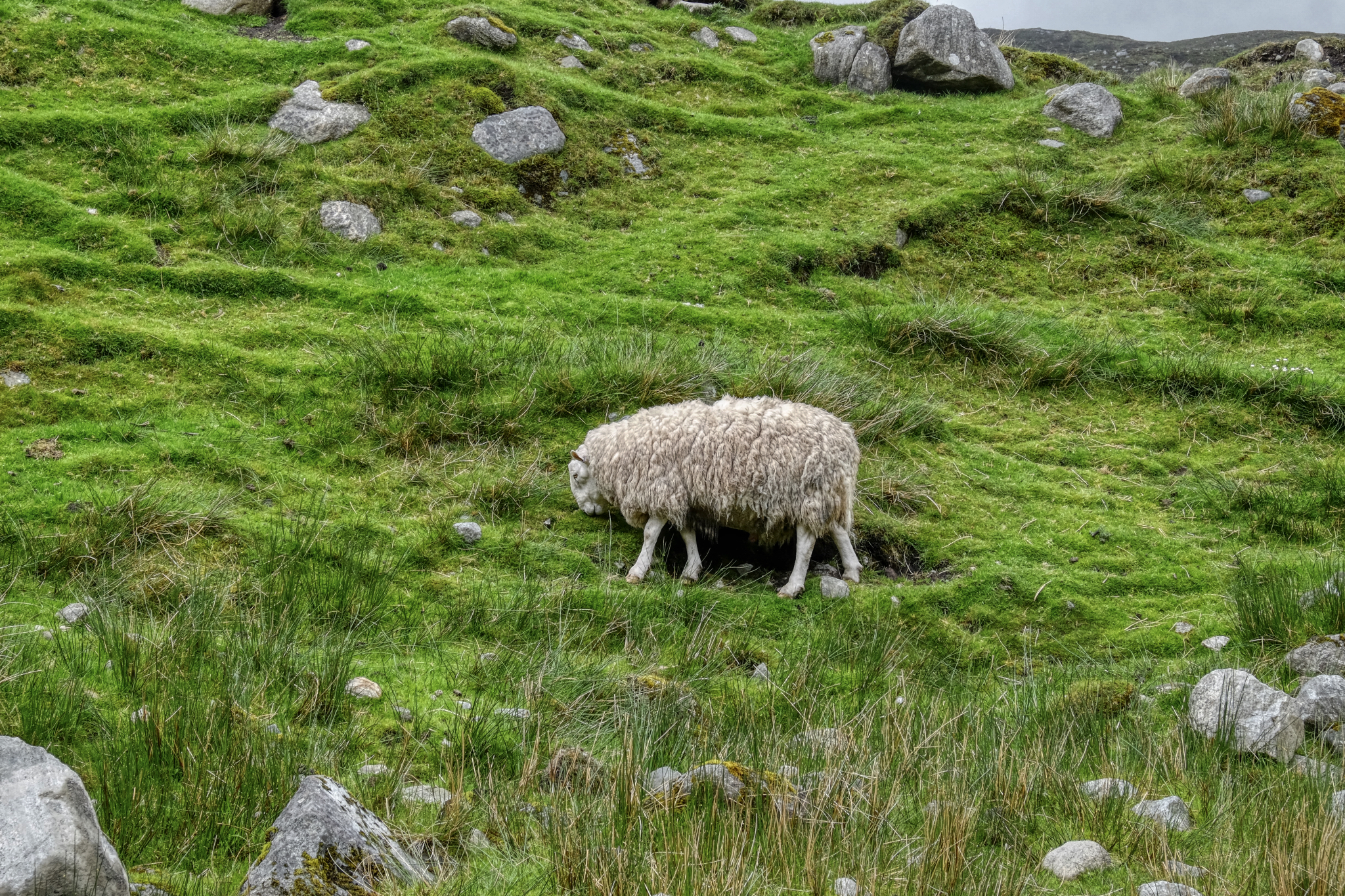 Wet sheep . . . everywhere . . .
Wet sheep . . . everywhere . . .
 Wild Hebridean stream running down out of the rugged hills.
Wild Hebridean stream running down out of the rugged hills.
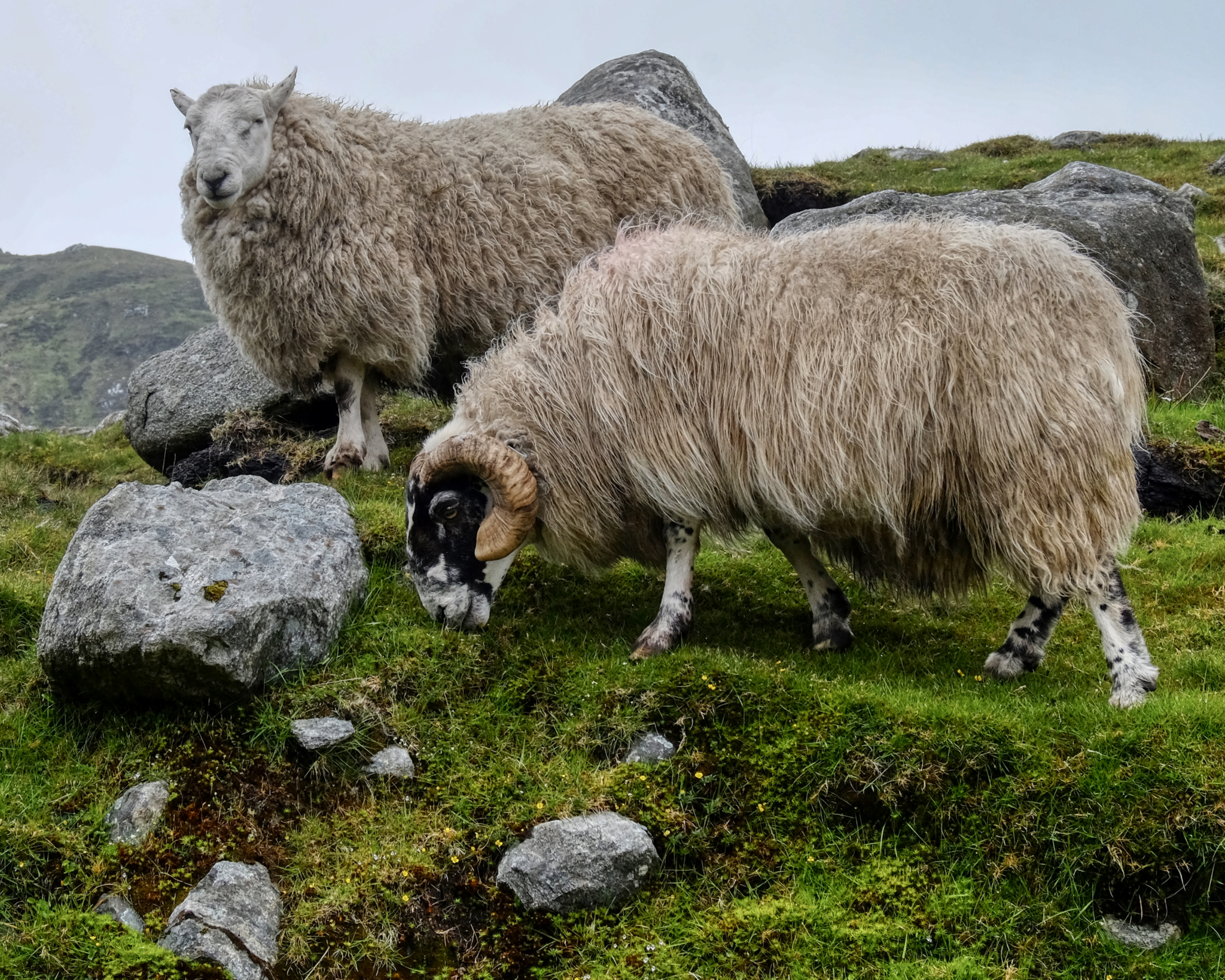 Portrait of two wet sheep. Why not?
Portrait of two wet sheep. Why not?
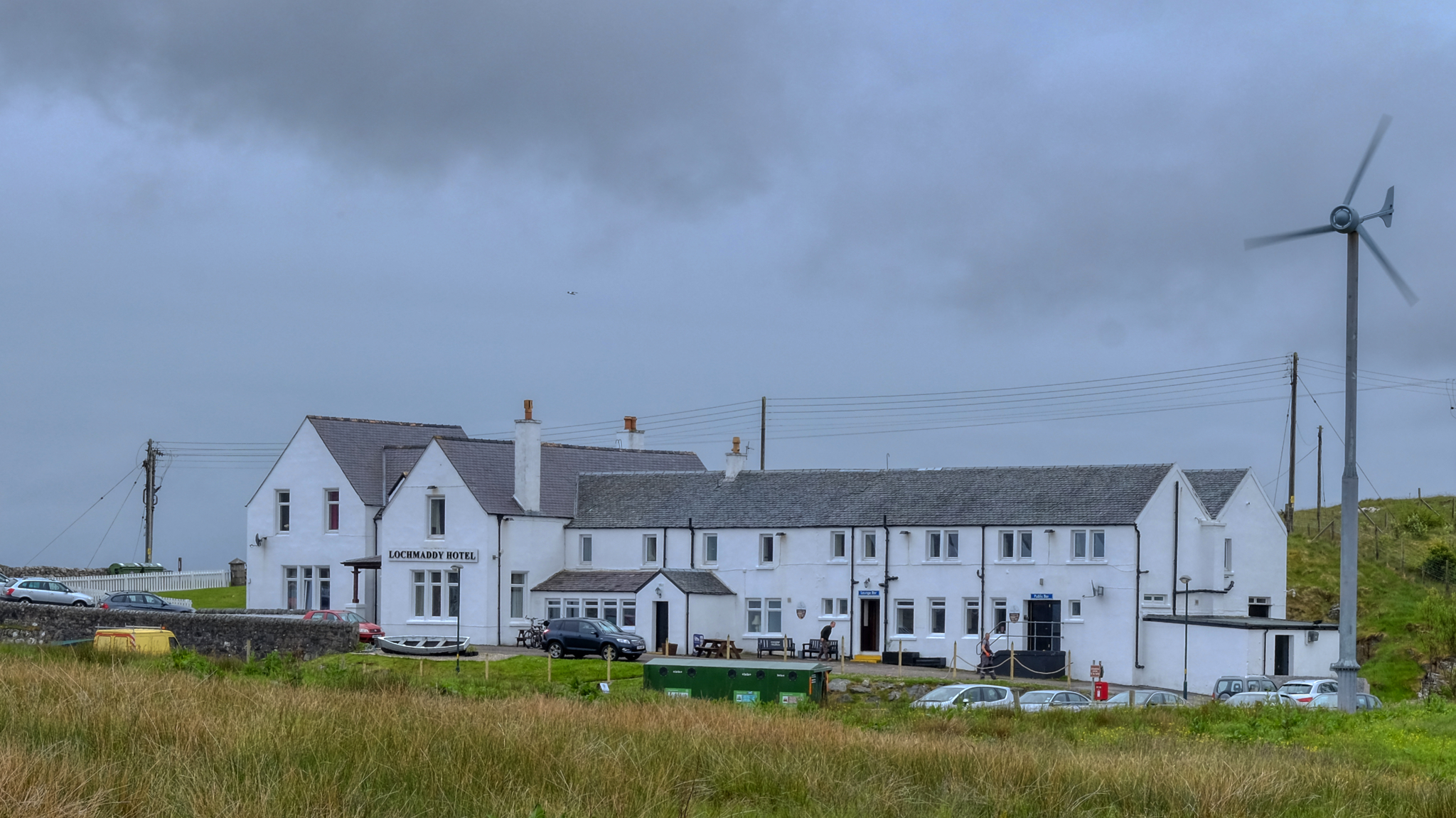 We spent one night at the charming and remote Lochmaddy Hotel on North Uist Island.
We spent one night at the charming and remote Lochmaddy Hotel on North Uist Island.
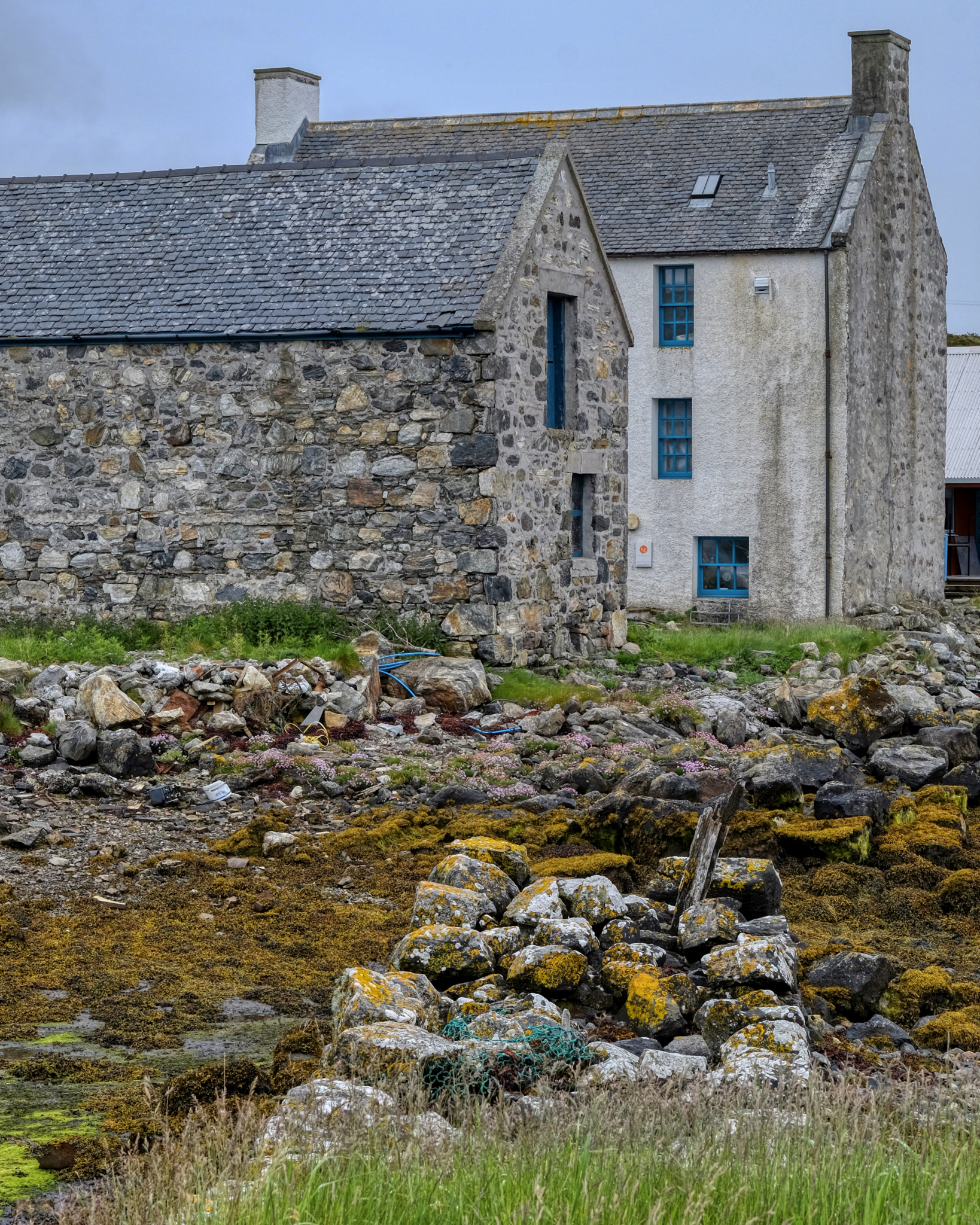 Out along the rocky bay.
Out along the rocky bay.
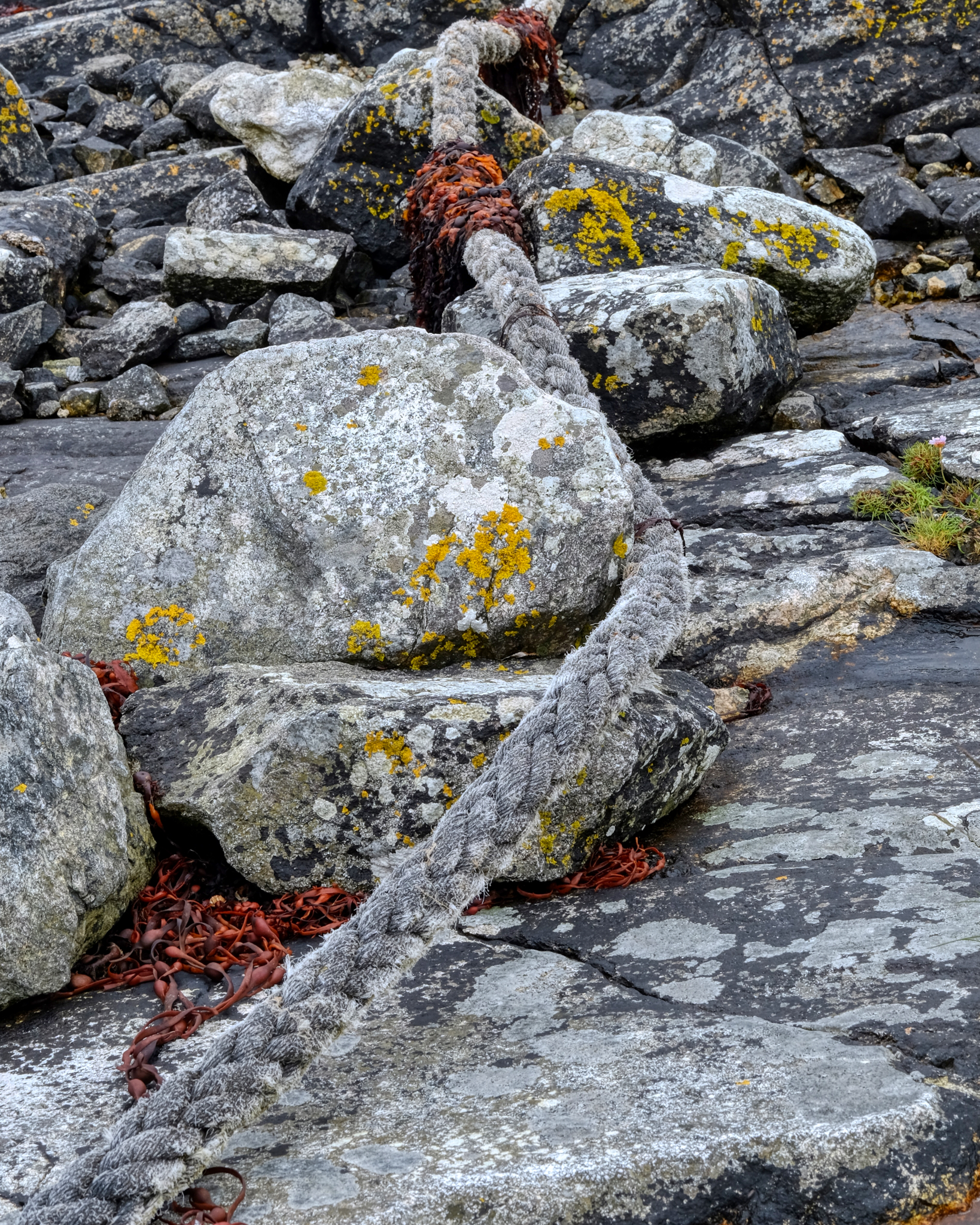 Rope mooring and stones.
Rope mooring and stones.
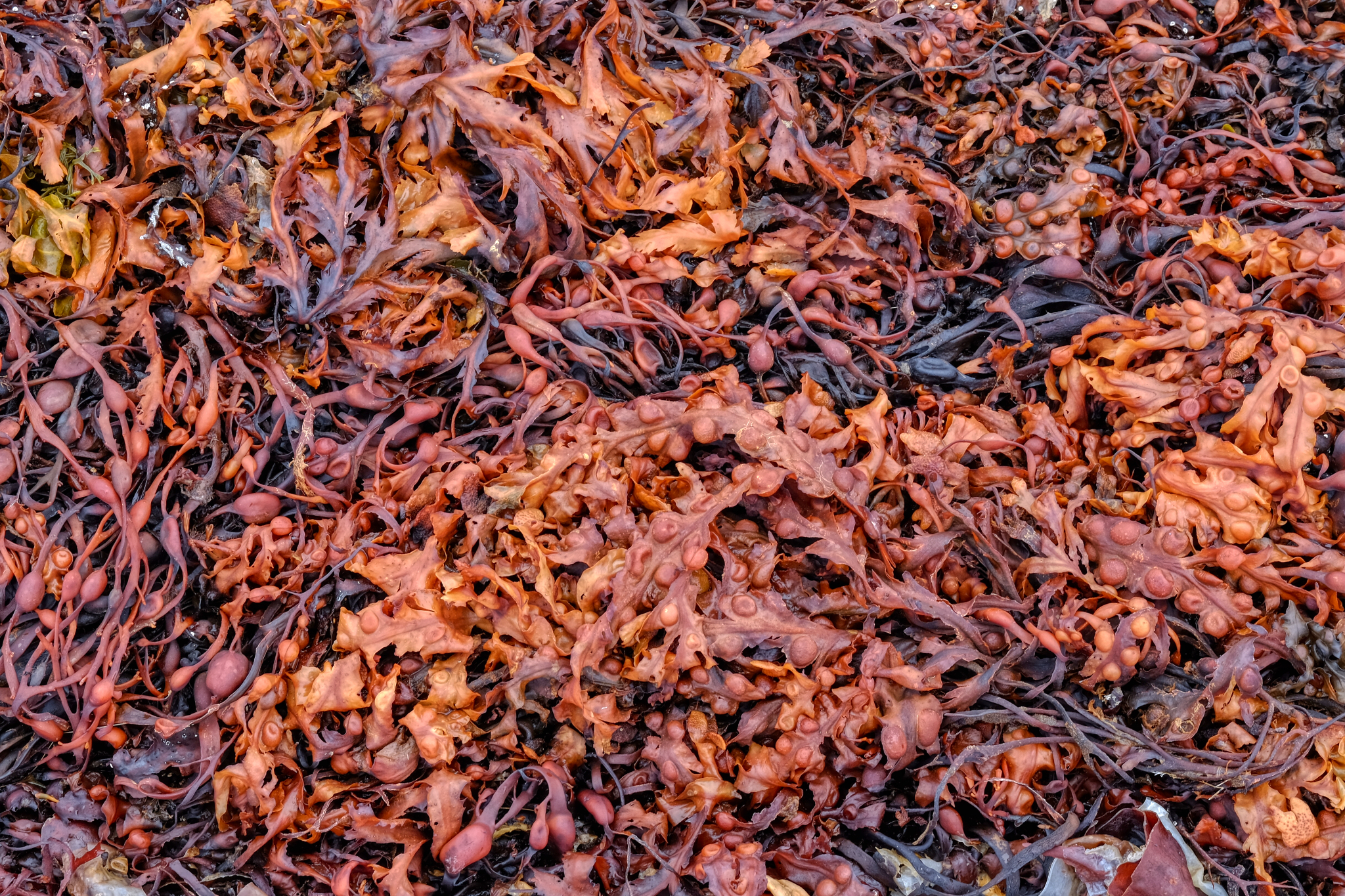 Incredibly fascinating seaweed in a North Uist bay.
Incredibly fascinating seaweed in a North Uist bay.
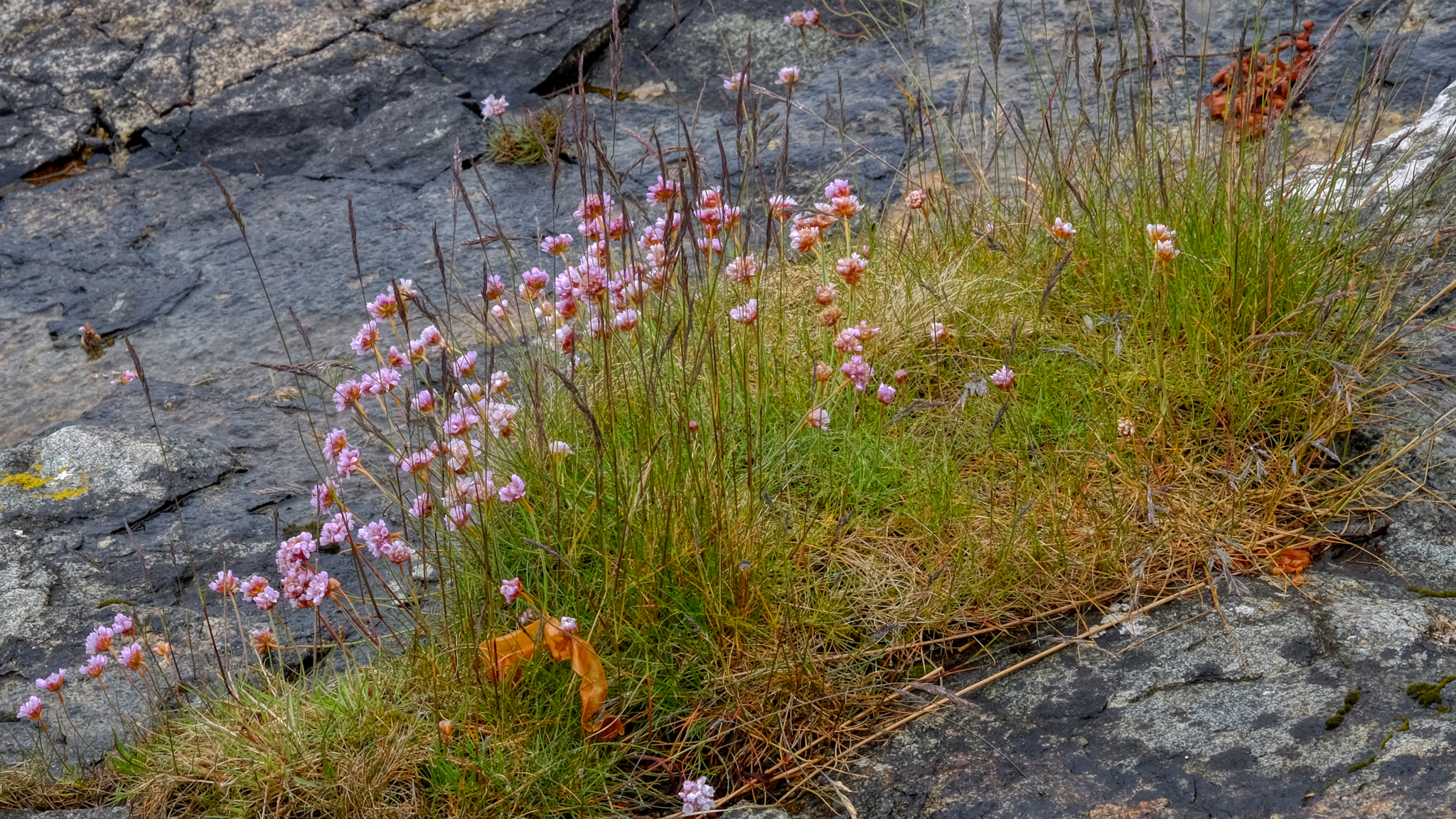 Wild flowers growing in the stony shore.
Wild flowers growing in the stony shore.
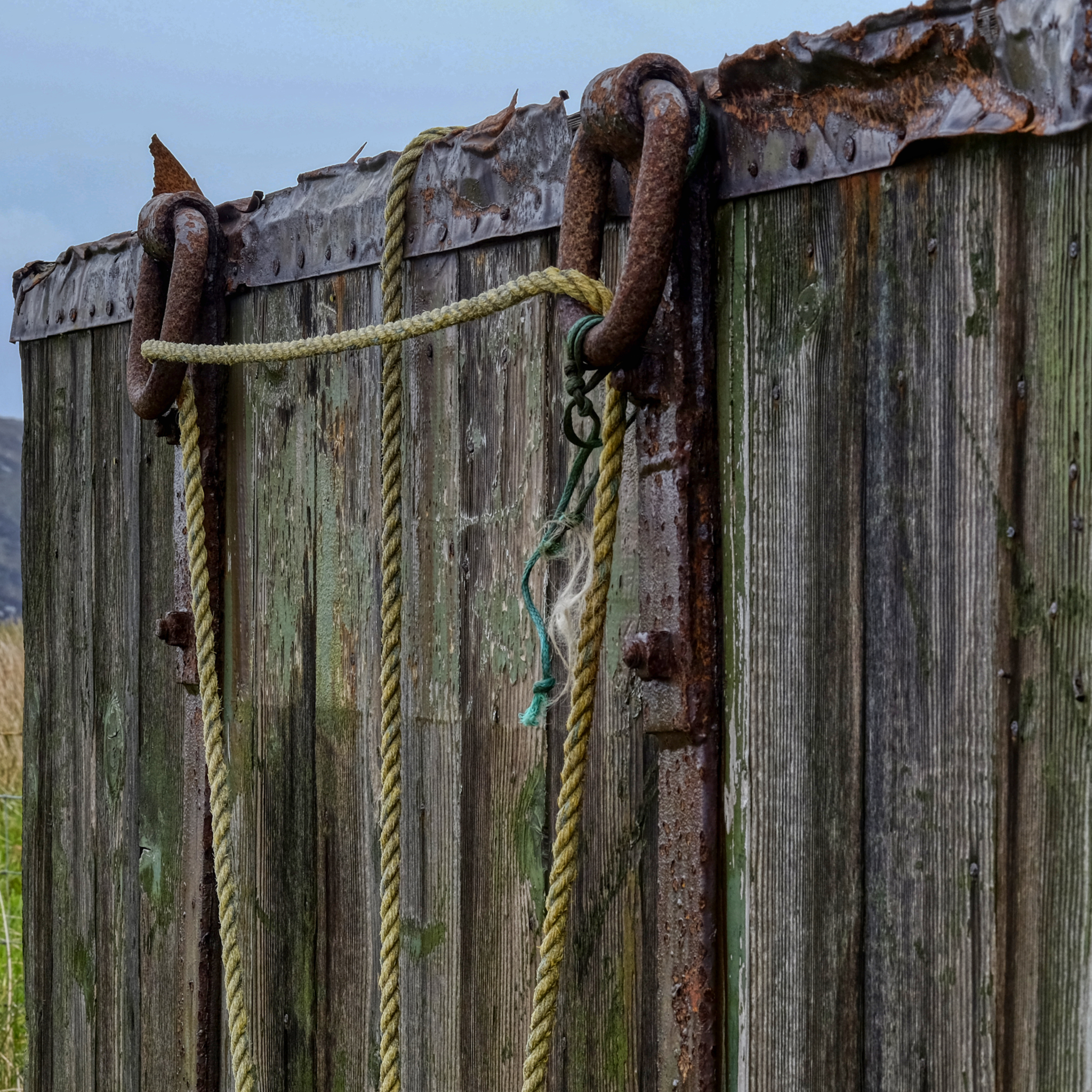 Leftover signs of fishermen long gone.
Leftover signs of fishermen long gone.
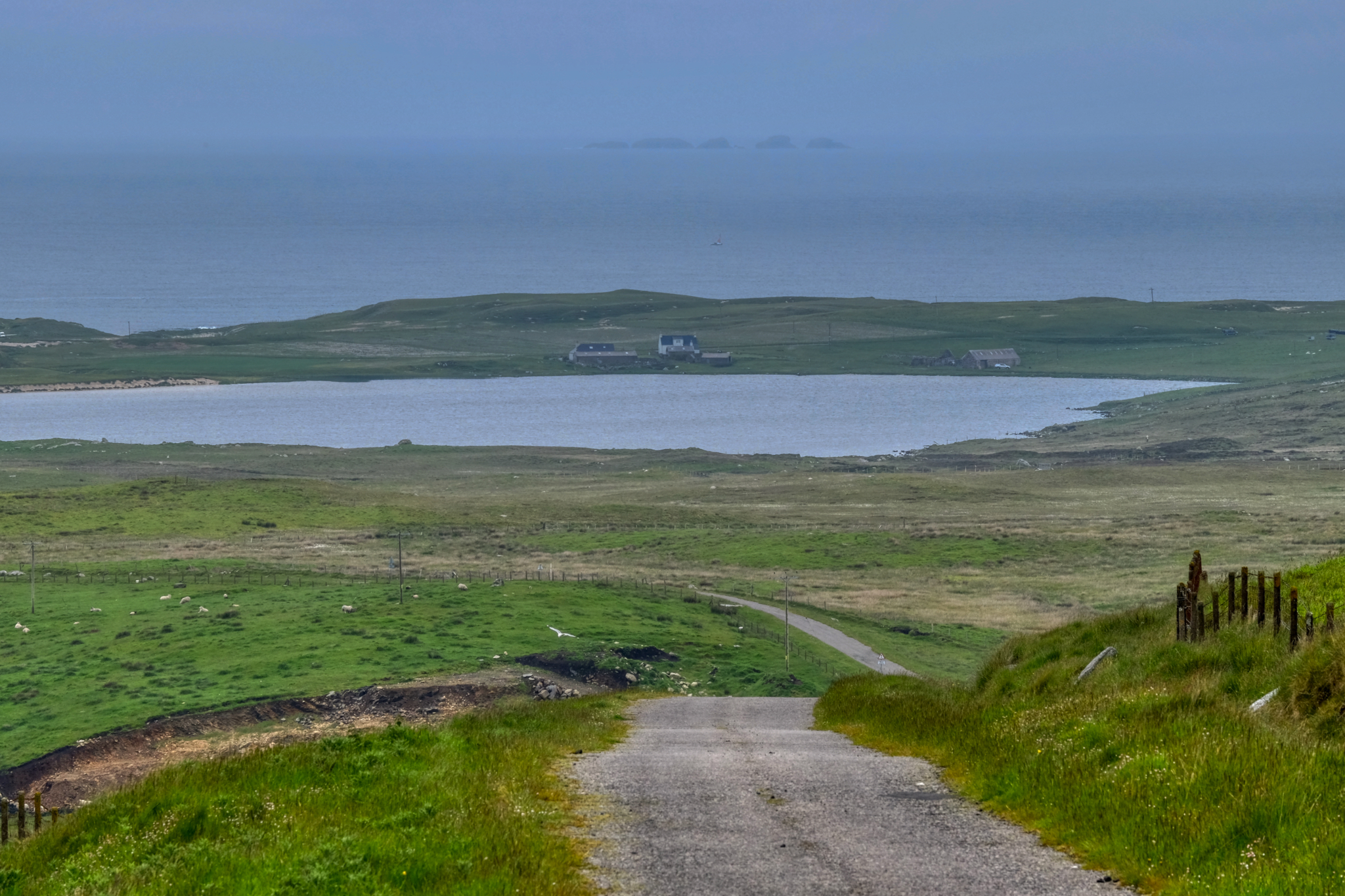 Off we went in the morning mist on the tiny roads . . .
Off we went in the morning mist on the tiny roads . . .
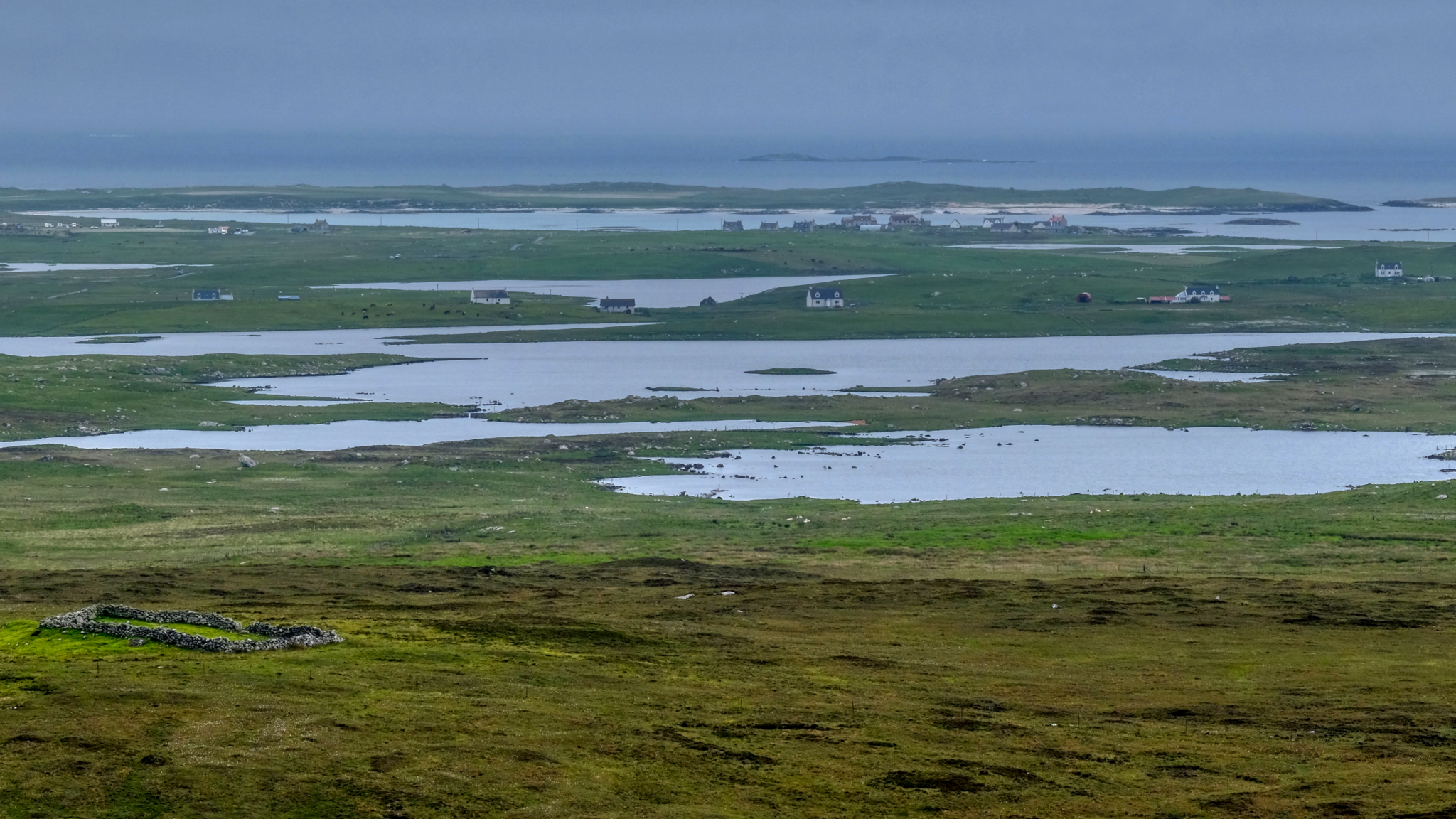 A most unusual landscape. I have never seen anything like it. Fantastically beautiful. I always have a compunction to think I would love to live in one of those houses . . . but stop myself by thinking there would be nothing for me to do there.
A most unusual landscape. I have never seen anything like it. Fantastically beautiful. I always have a compunction to think I would love to live in one of those houses . . . but stop myself by thinking there would be nothing for me to do there.
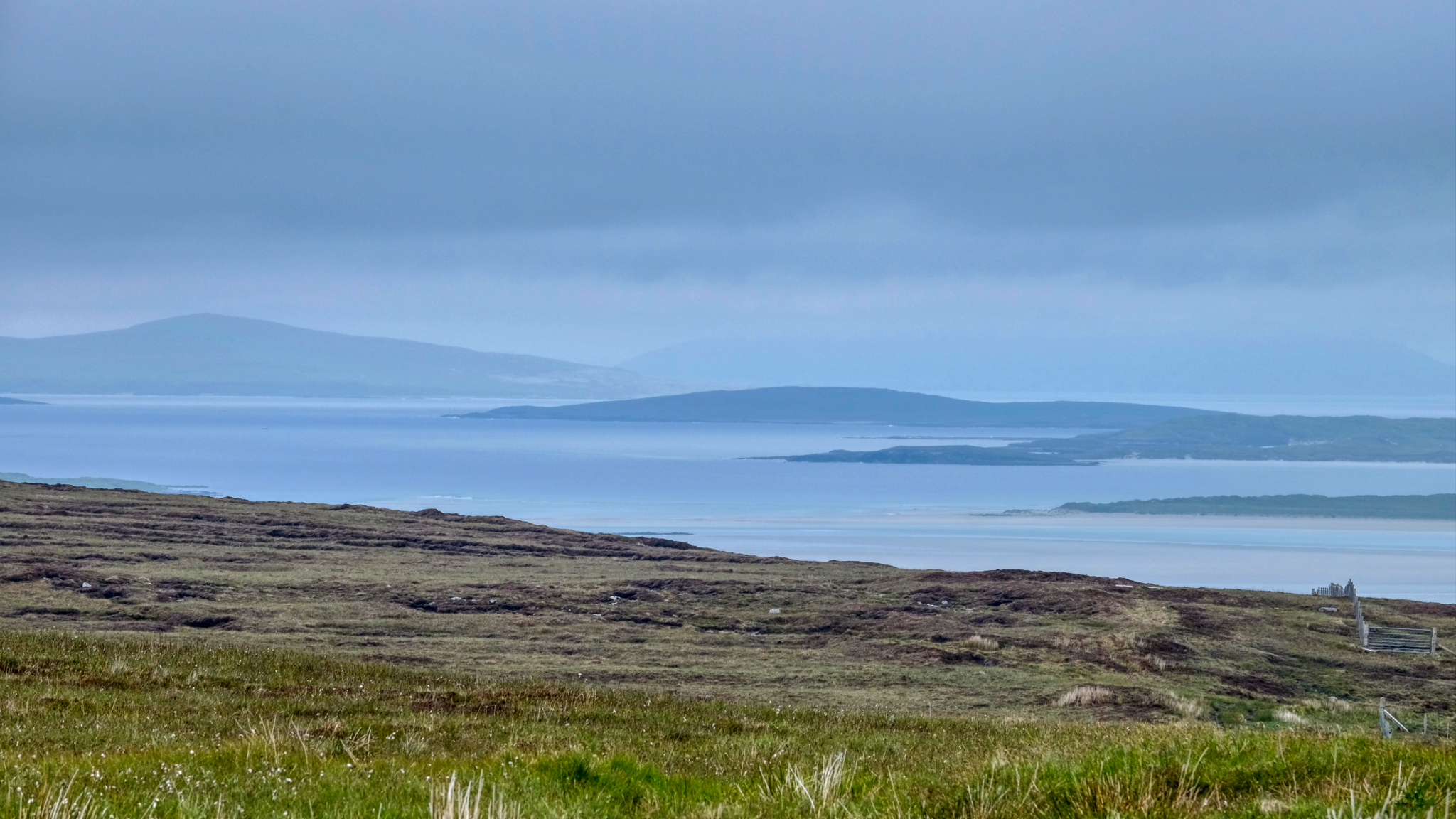 We learned there was a good restaurant out in these soggywet landscapes.
We learned there was a good restaurant out in these soggywet landscapes.
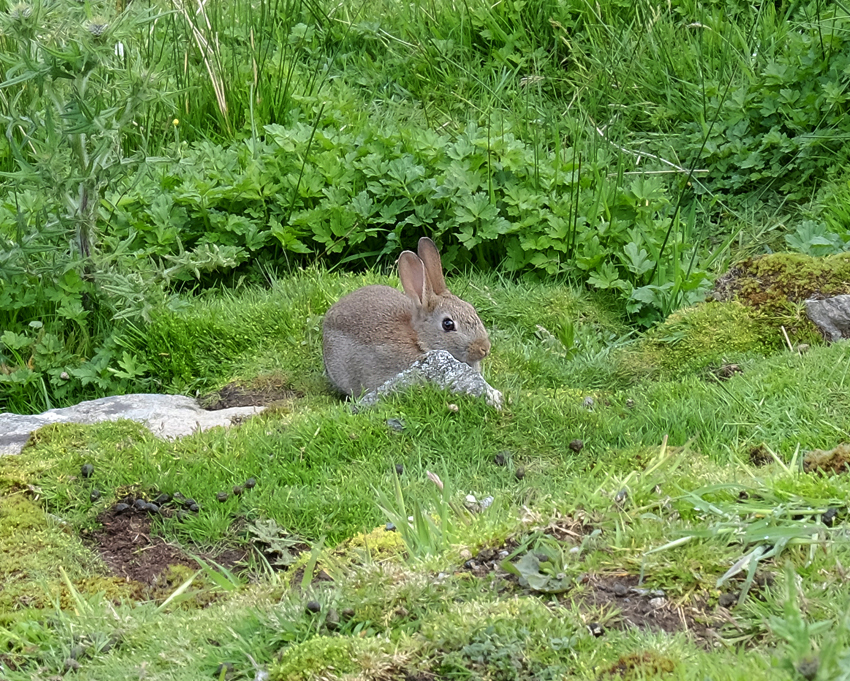 More Hebridean wildlife!
More Hebridean wildlife!
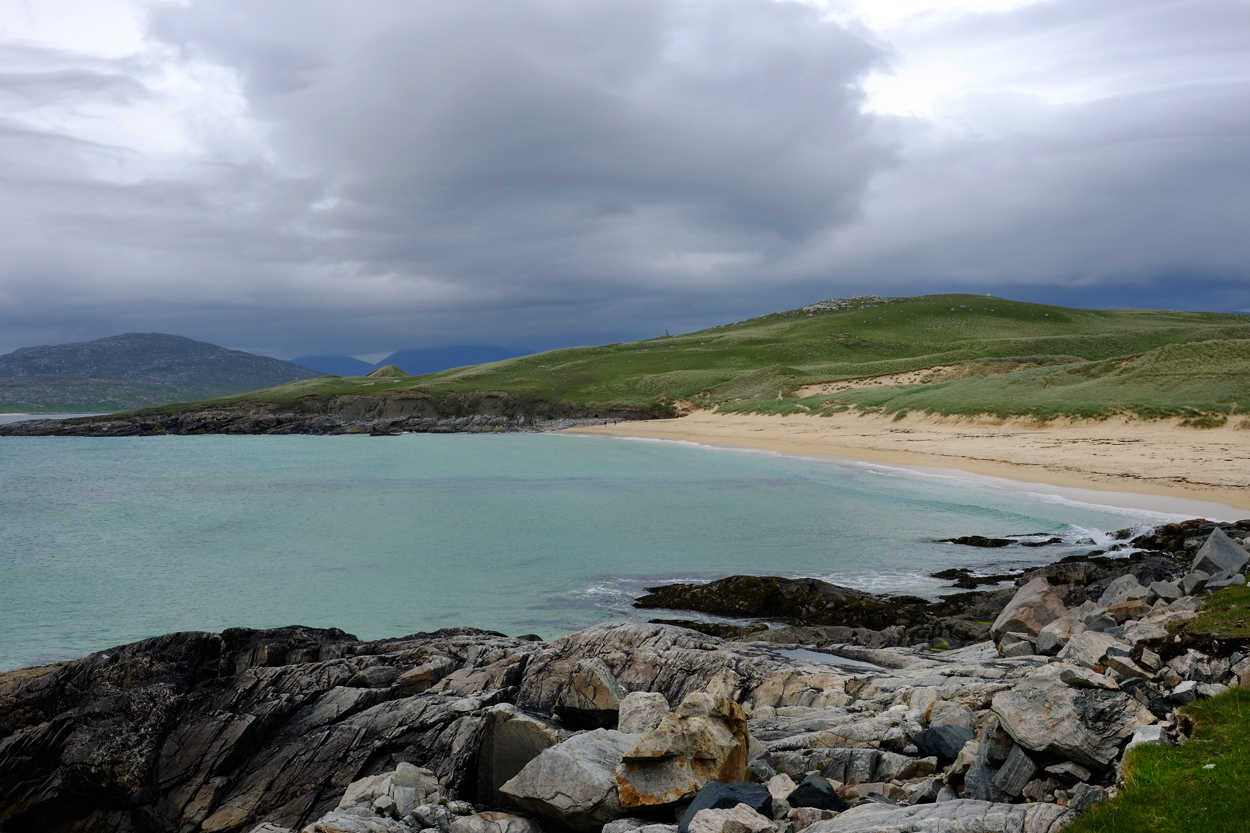 And here and there, around a bend, a sudden, almost tropical, turquoise sea and white sandy beach. Marvelous.
And here and there, around a bend, a sudden, almost tropical, turquoise sea and white sandy beach. Marvelous.
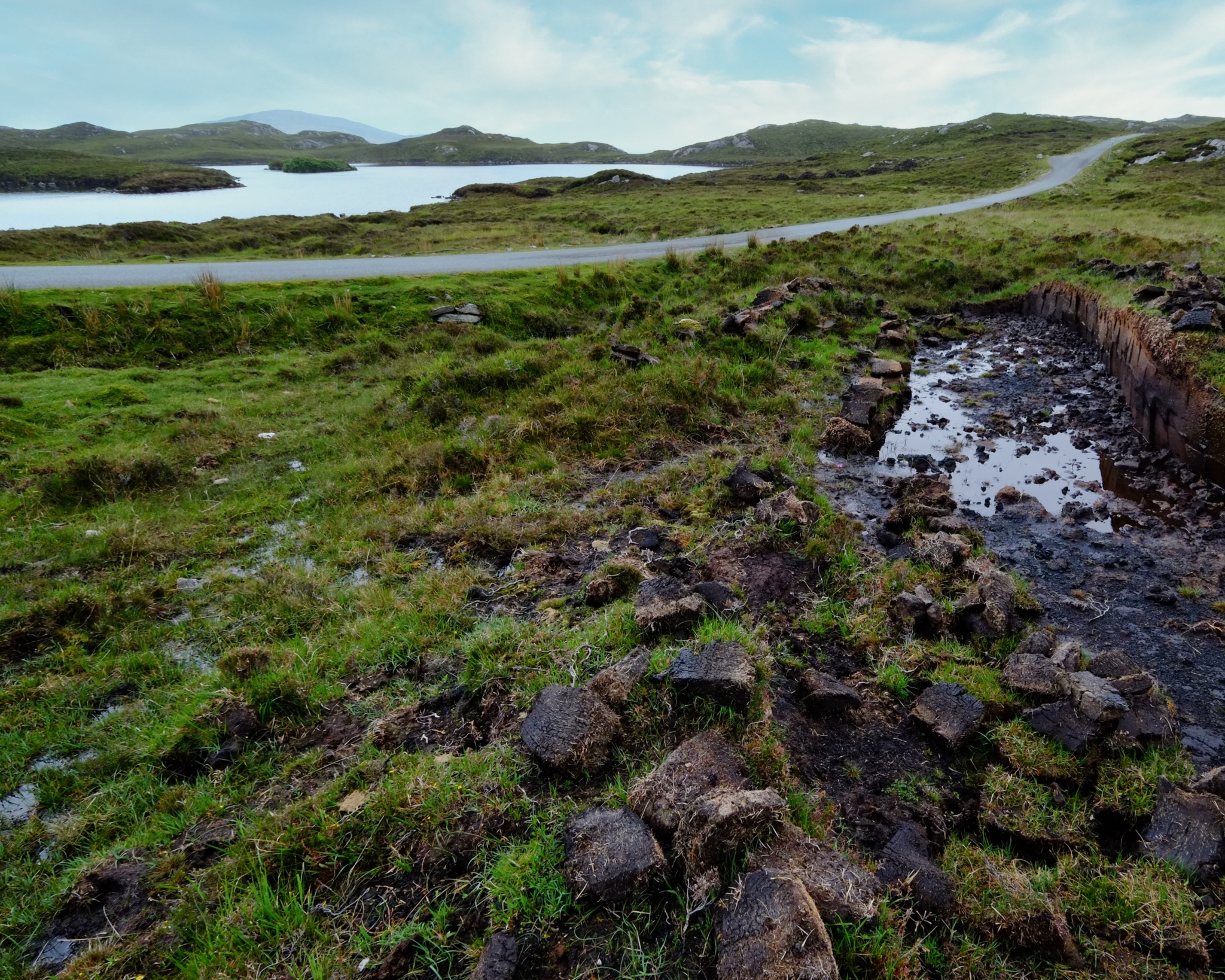 And around another bend a vale with deep cut peat harvesting in progress.
And around another bend a vale with deep cut peat harvesting in progress.
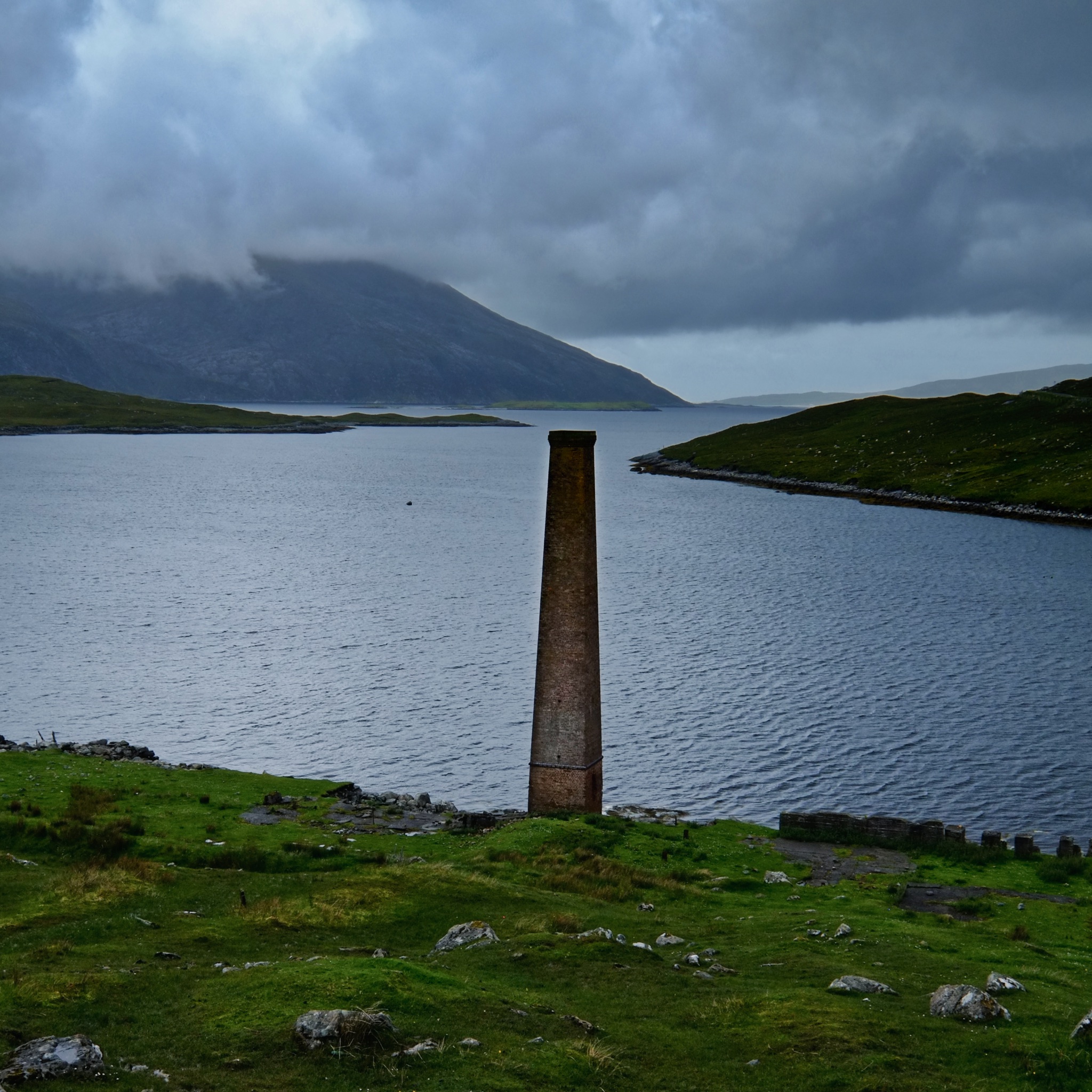 A tall smokestack . . . a monument to some previous industrial endeavor . . . all the way out here.
A tall smokestack . . . a monument to some previous industrial endeavor . . . all the way out here.
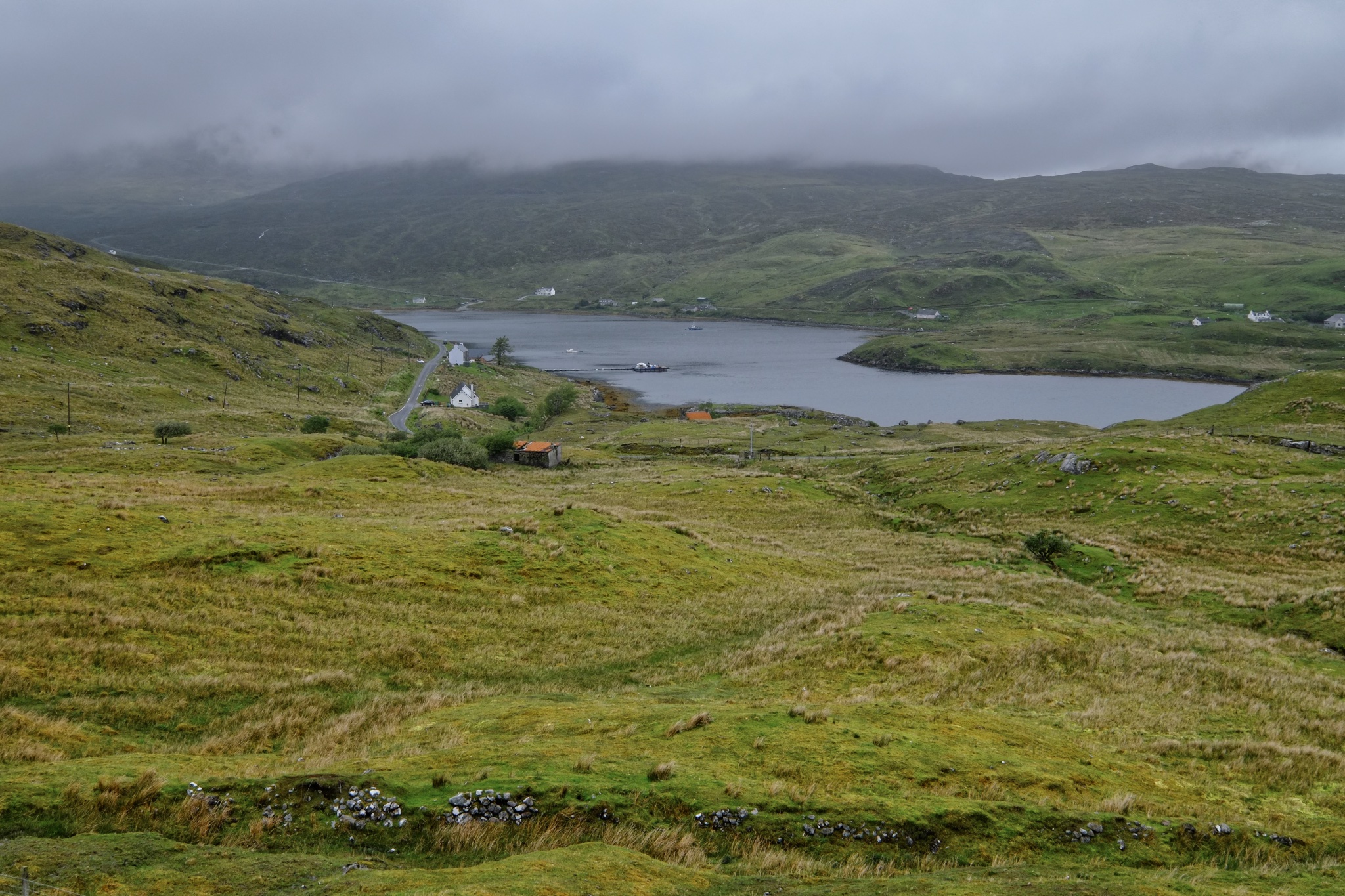 Driving the single track road in and out of the strange hills . . . always a new view . . . sometimes of a narrow bay dotted with small houses, a pier, and a fishing boat.
Driving the single track road in and out of the strange hills . . . always a new view . . . sometimes of a narrow bay dotted with small houses, a pier, and a fishing boat.
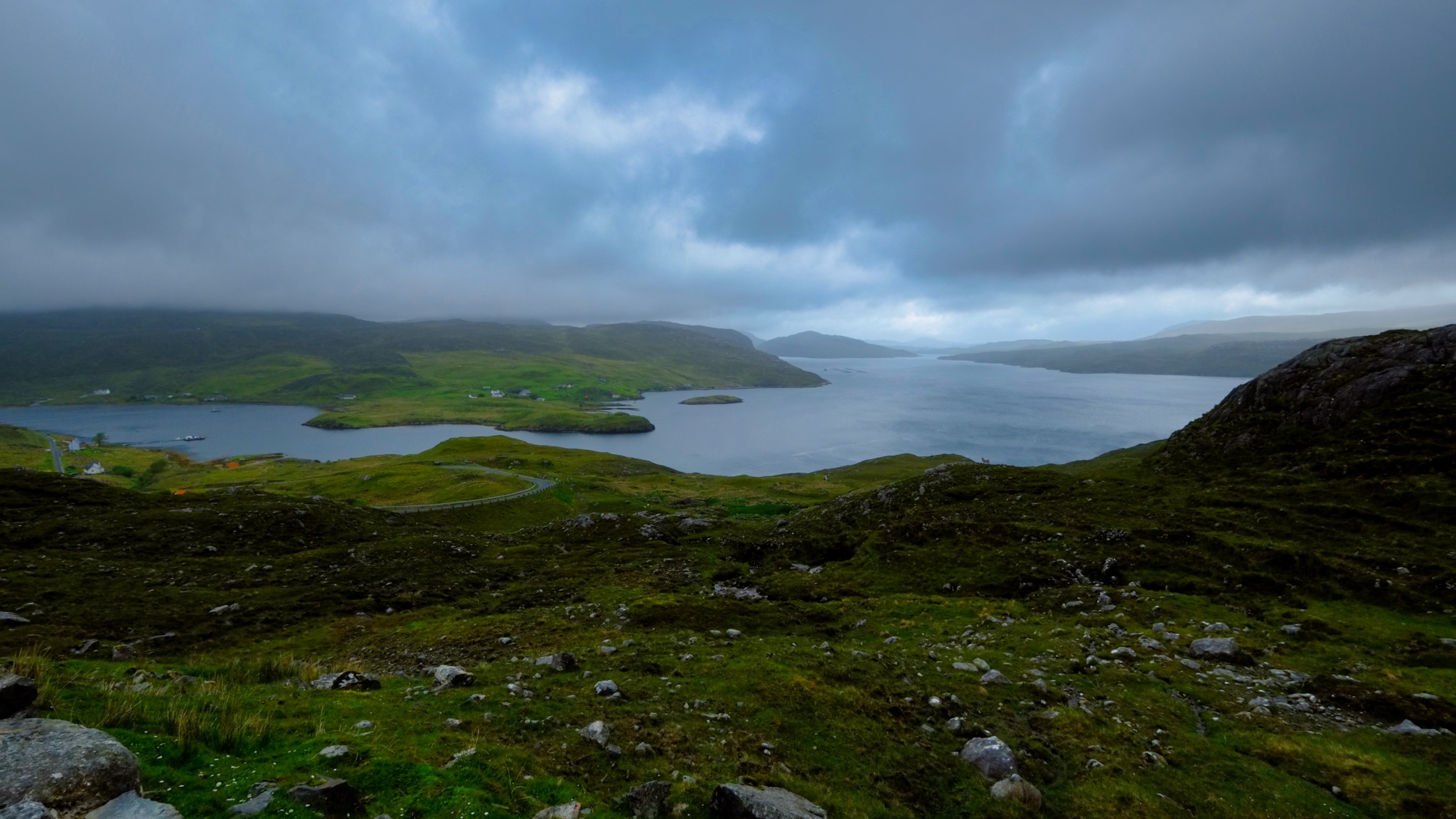 These views! The gloom!
These views! The gloom!
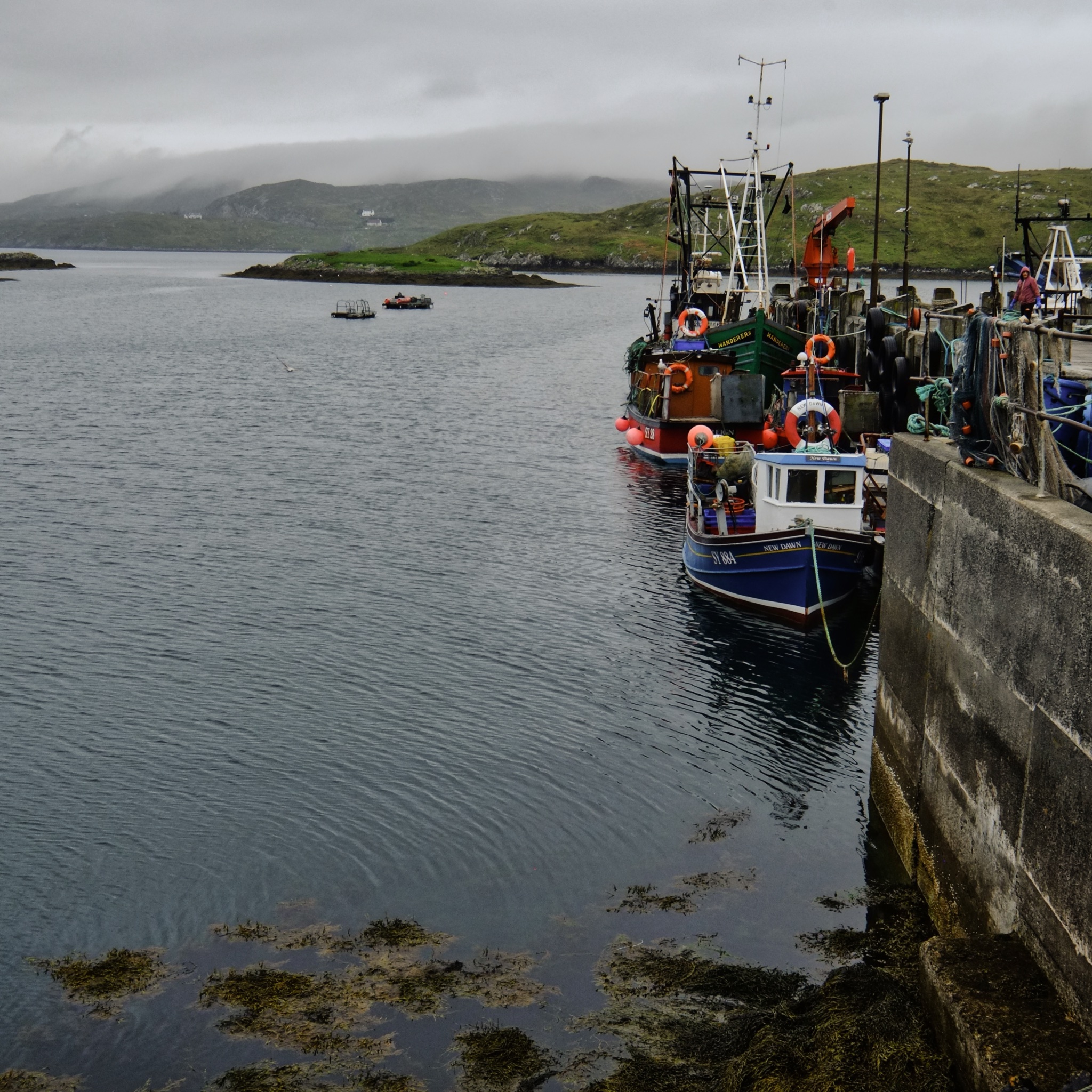 We rounded a bend in the road and arrived at a tiny fishing village, Scalpay.
We rounded a bend in the road and arrived at a tiny fishing village, Scalpay.
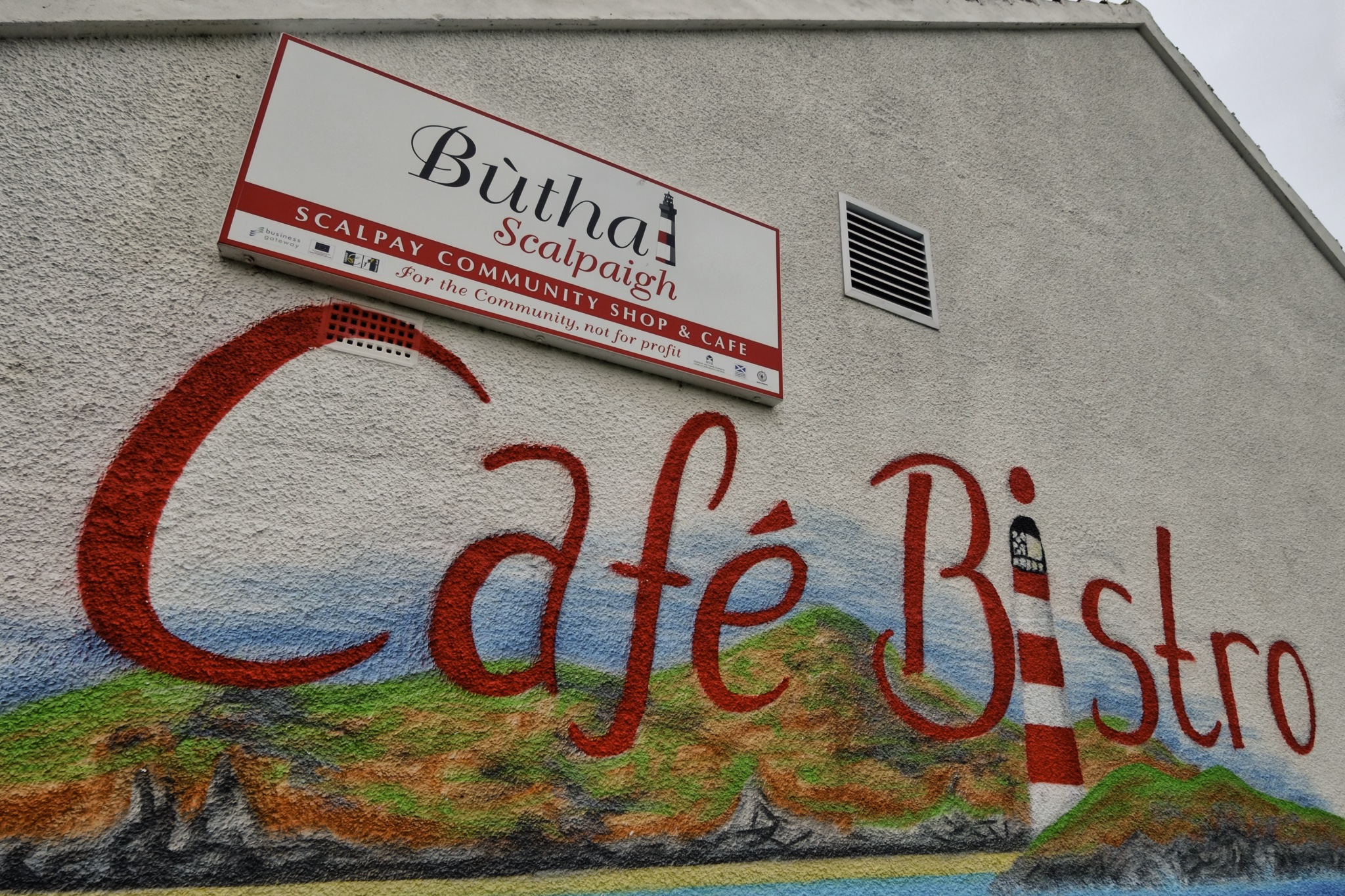
"The island used to have more than 10 shops over 30 years ago but due to lack of people and work, the last shop closed in 2007. There also used to be a salmon factory, which was a major local employer from 2001 until its closure in 2005. In the spring of 2009, local newspapers reported that the factory was to reopen as a net washing facility to support the local fish farming industry. In 2012, the Scalpay community bought and opened a community shop/café, Buth Scalpaigh." We had a delicious lunch here with friendly service . . , soup, rolls, and fried fish.
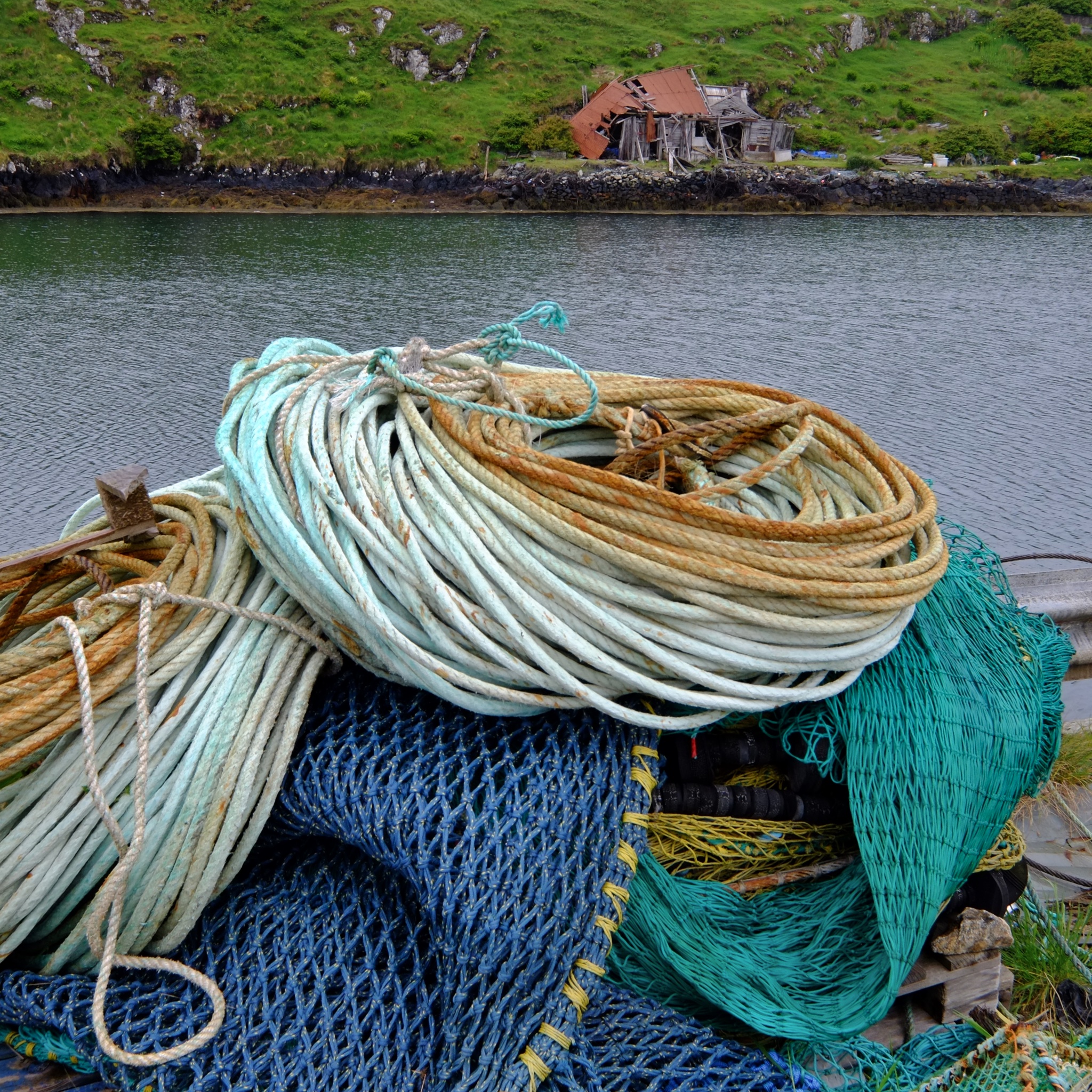 Some fishing activity survives these remote places along the craggy inlets of the Outer Hebrides.
Some fishing activity survives these remote places along the craggy inlets of the Outer Hebrides.
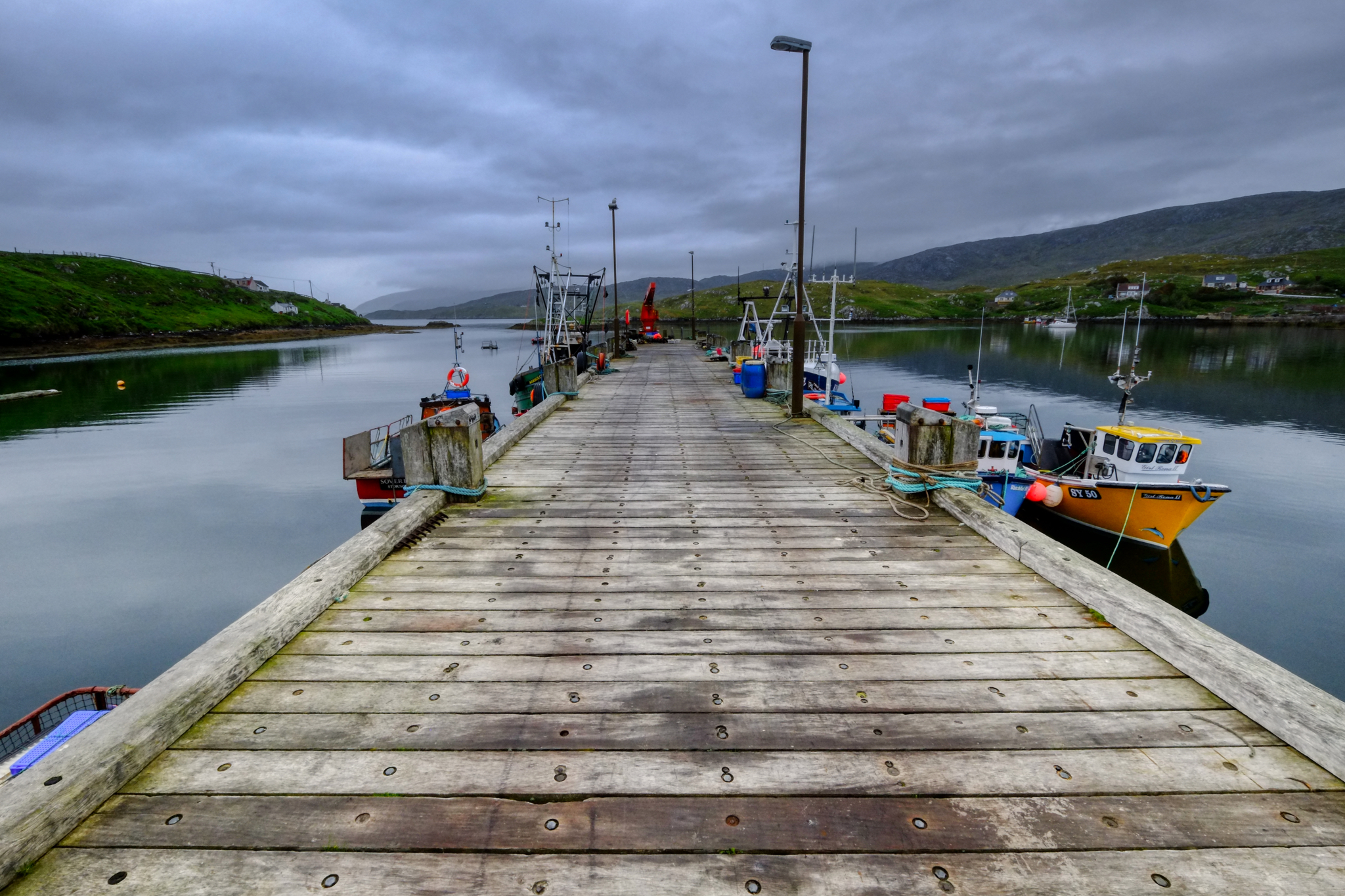 People have to eat and people have to make a living.
People have to eat and people have to make a living.
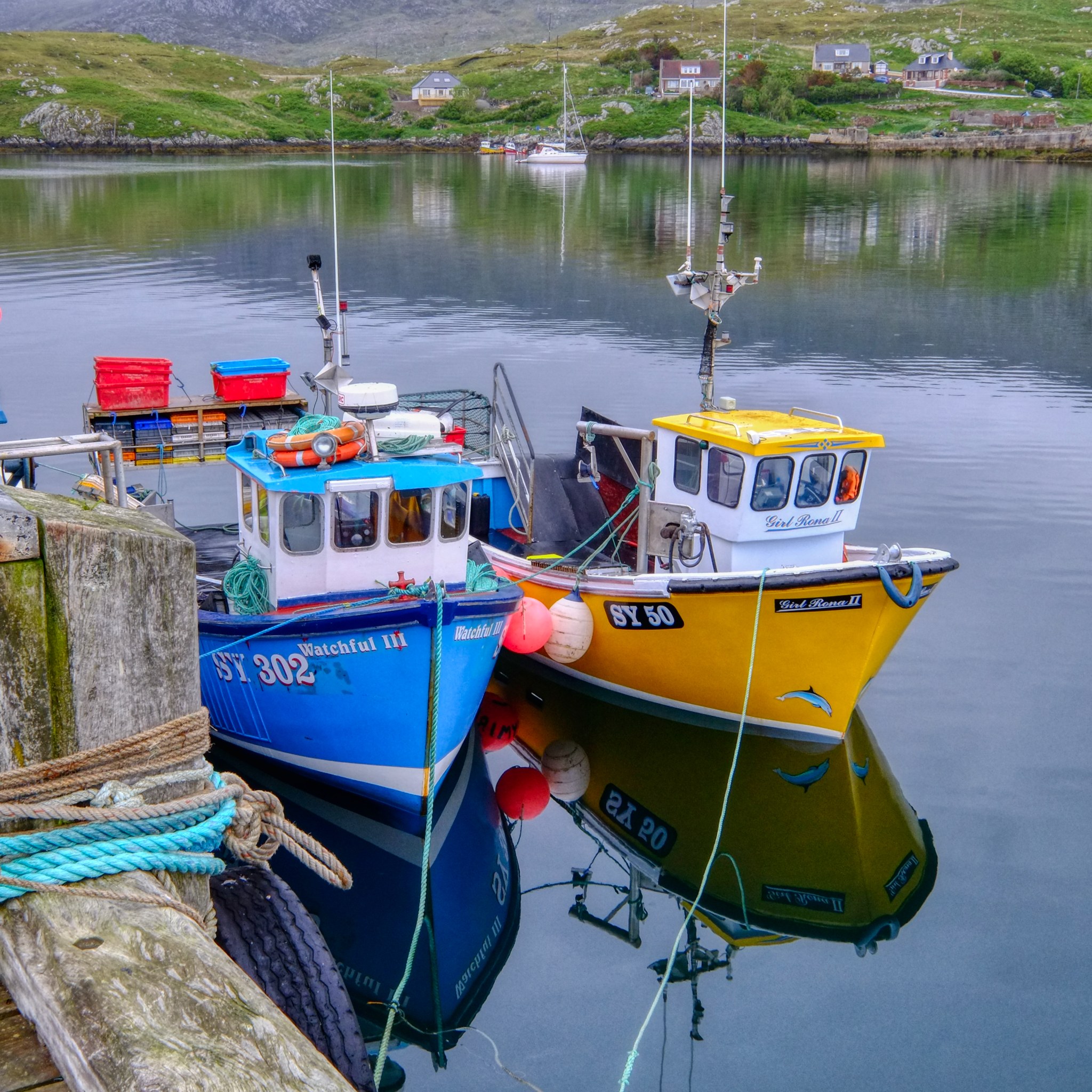 Picturesque little fishing boats.
Picturesque little fishing boats.
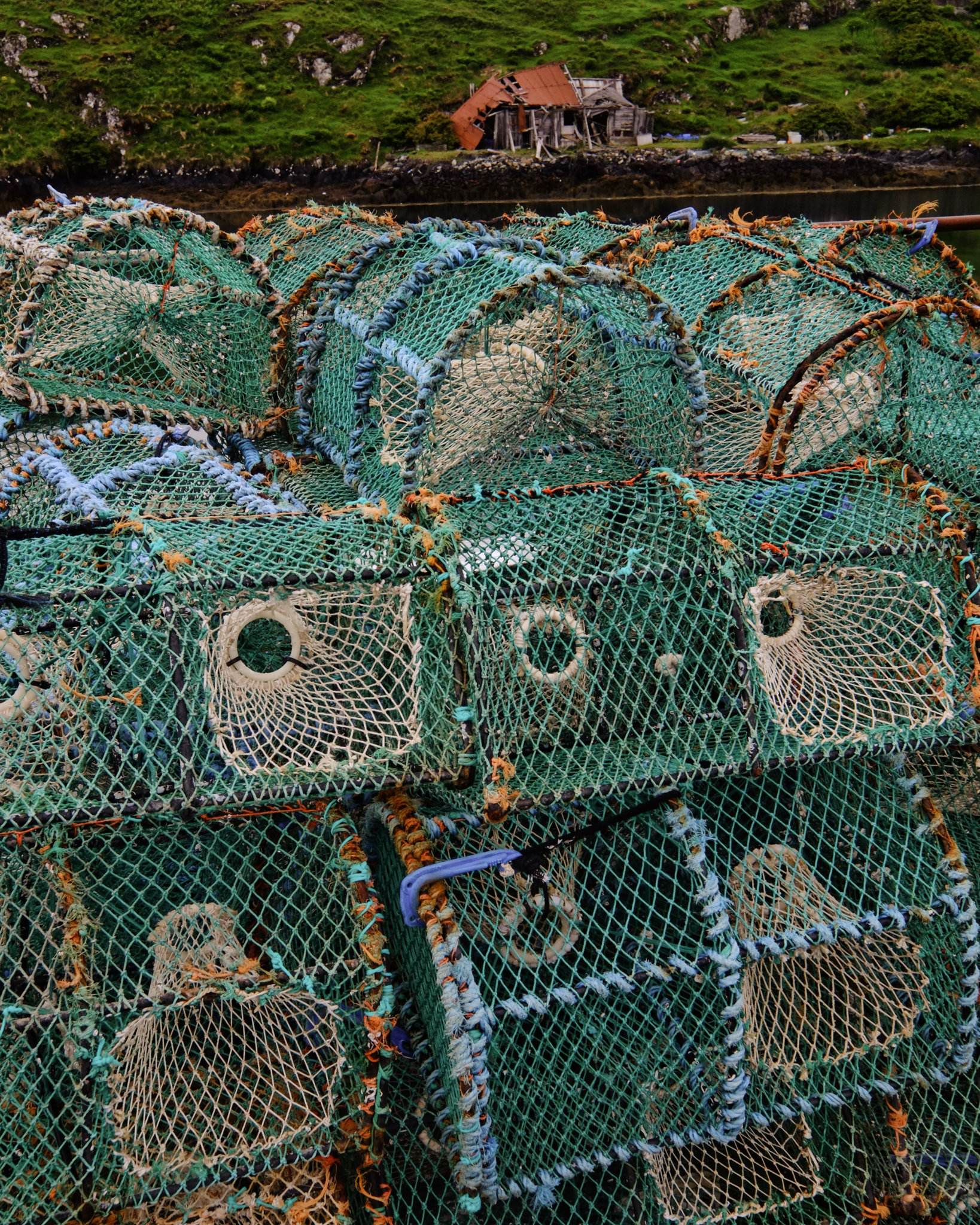 Crab or lobster pots . . .
Crab or lobster pots . . .
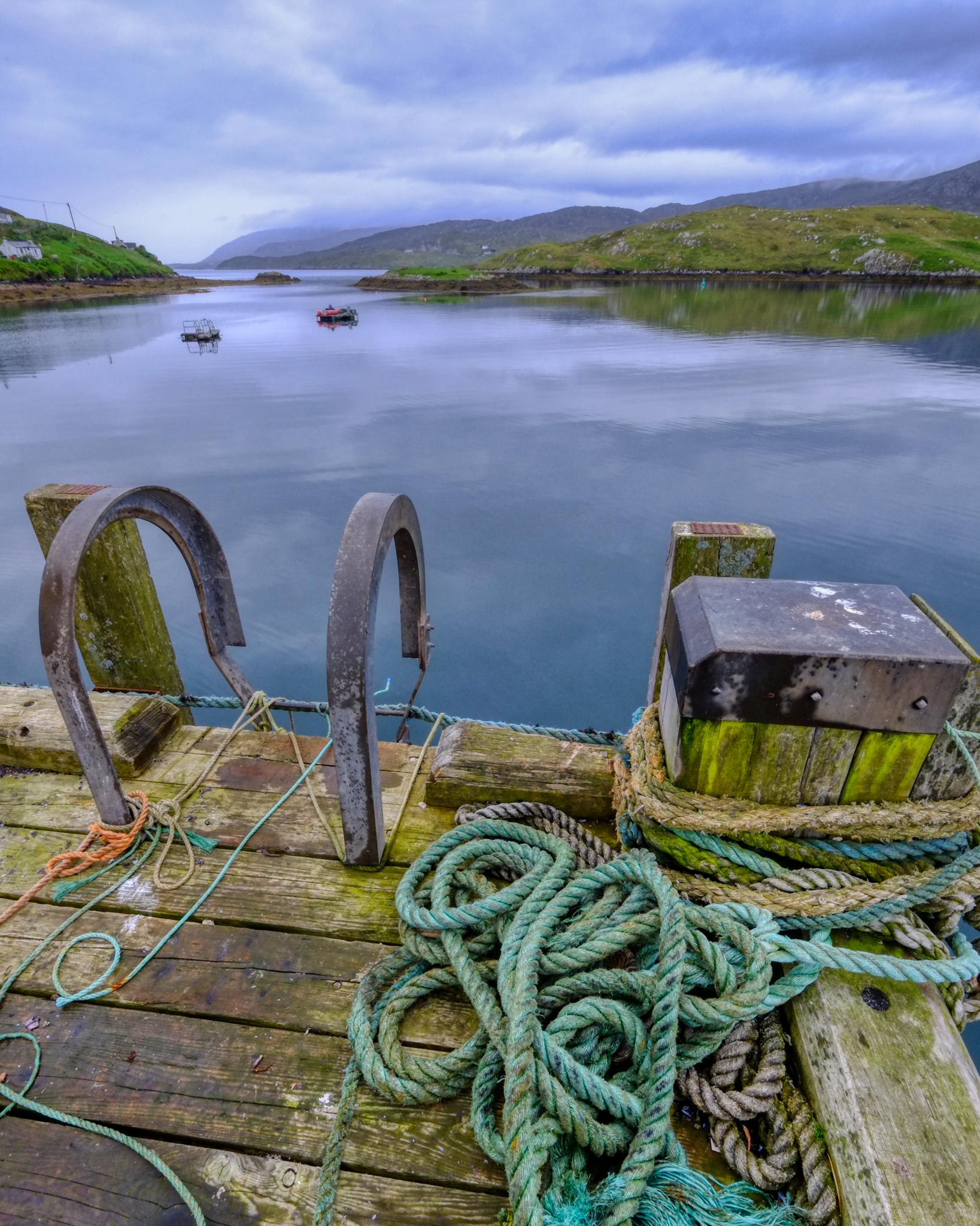 We drove North up into the Isles of Lewis and Harris.
We drove North up into the Isles of Lewis and Harris.
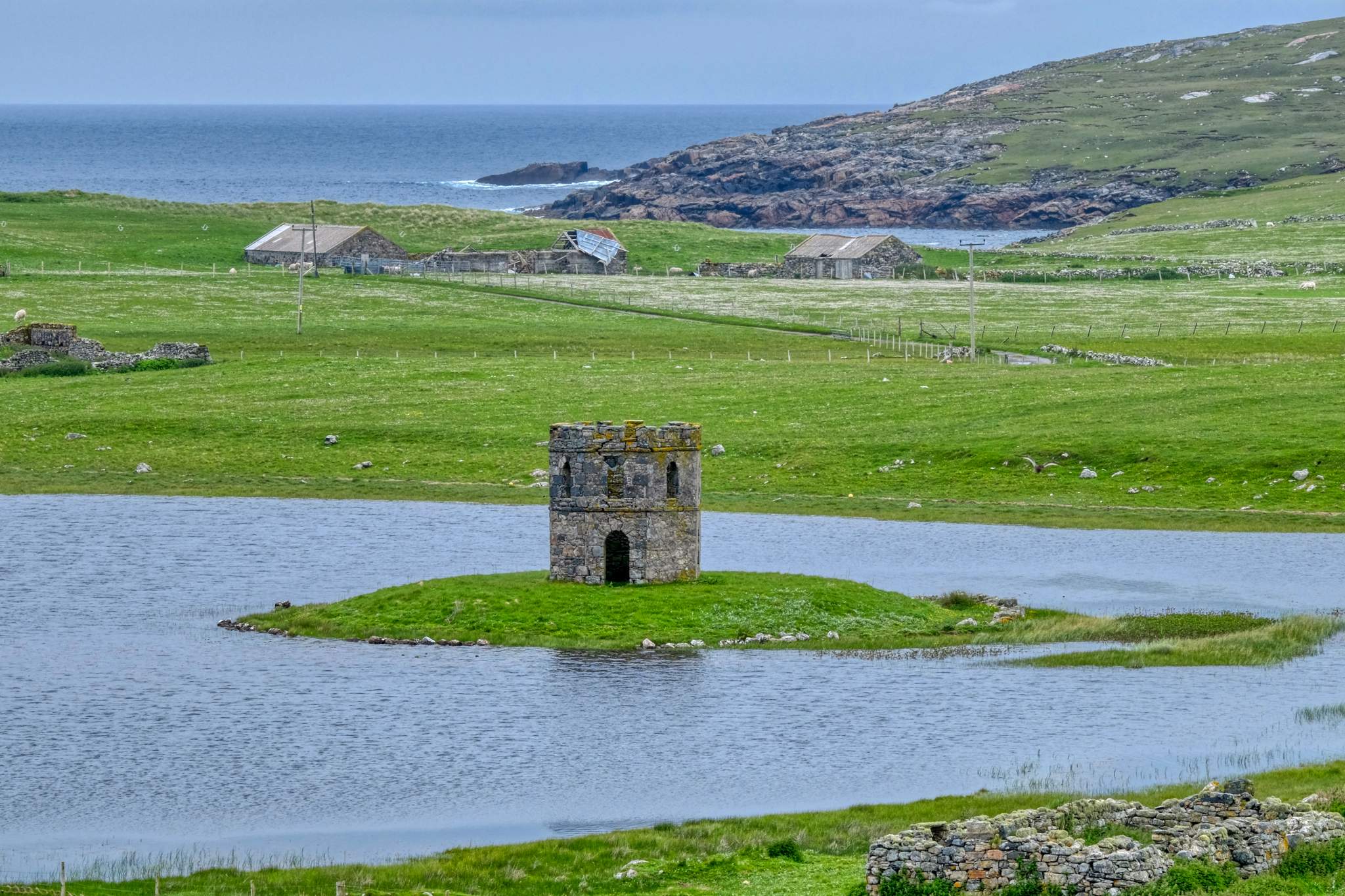 An old tower keep on a crofters place.
An old tower keep on a crofters place.
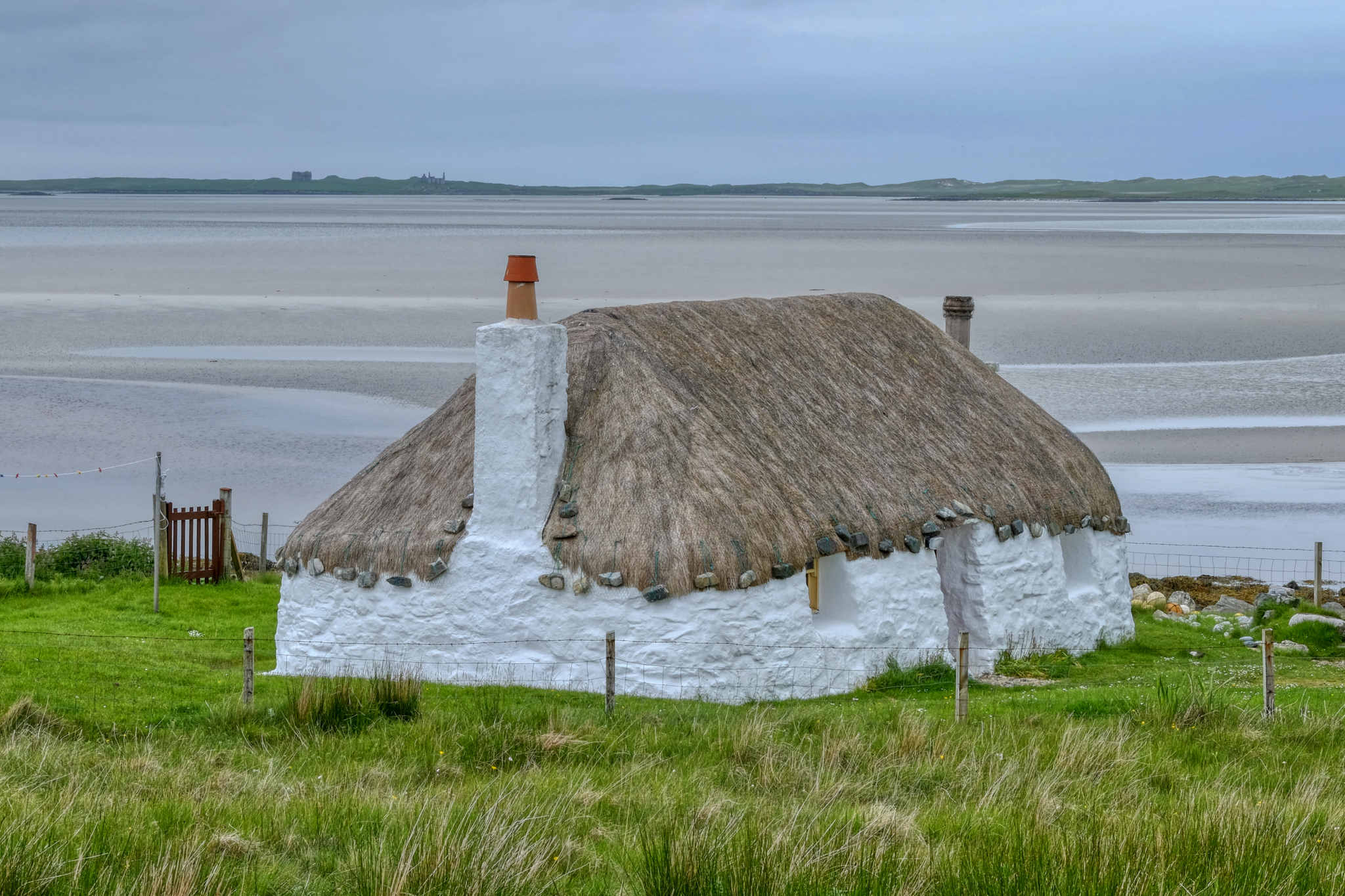 An old whitewash, thatched-roof cottage on the dandy bay. Charming.
An old whitewash, thatched-roof cottage on the dandy bay. Charming.
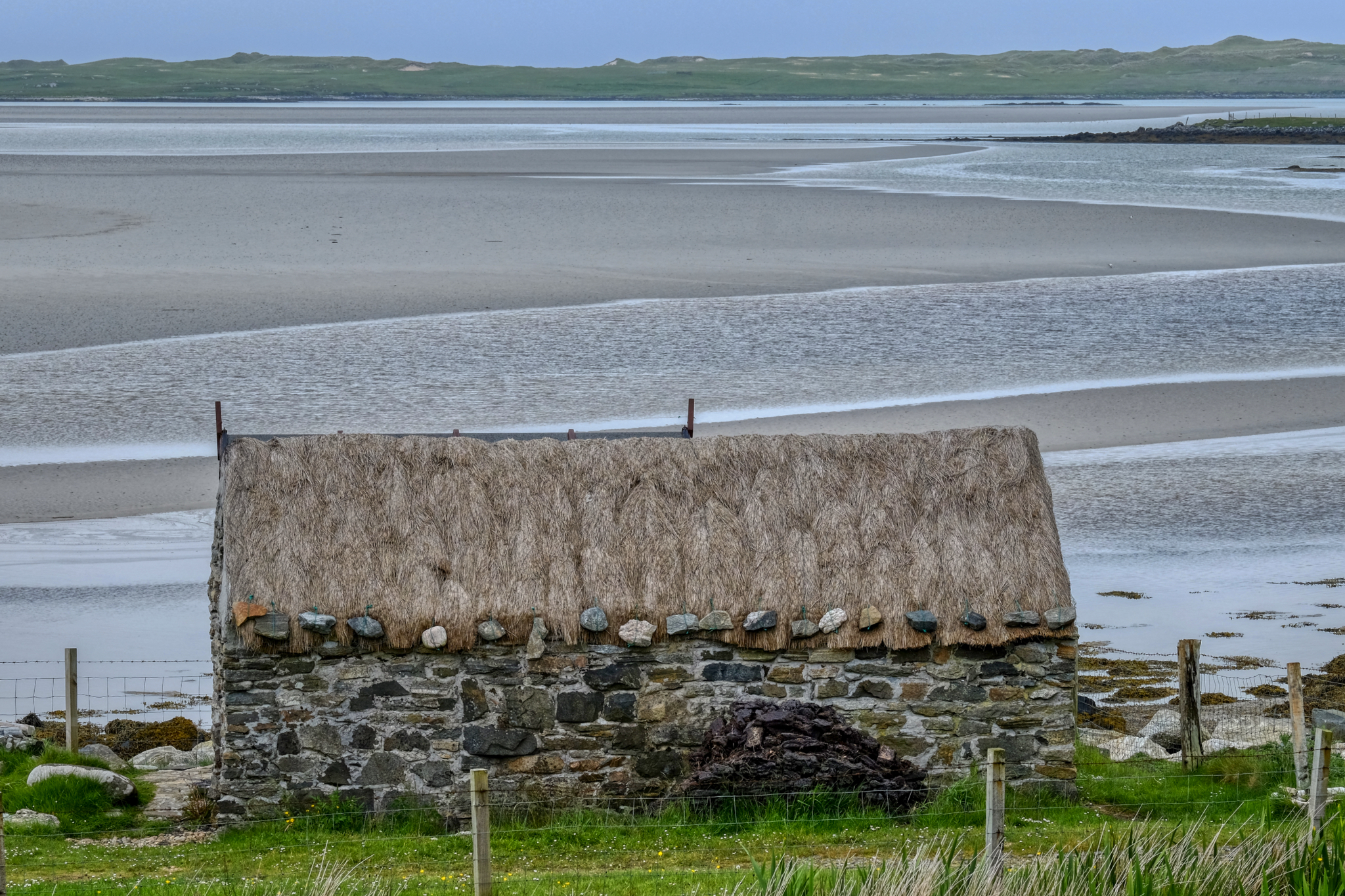 A lovely old crofter's stone barn.
A lovely old crofter's stone barn.
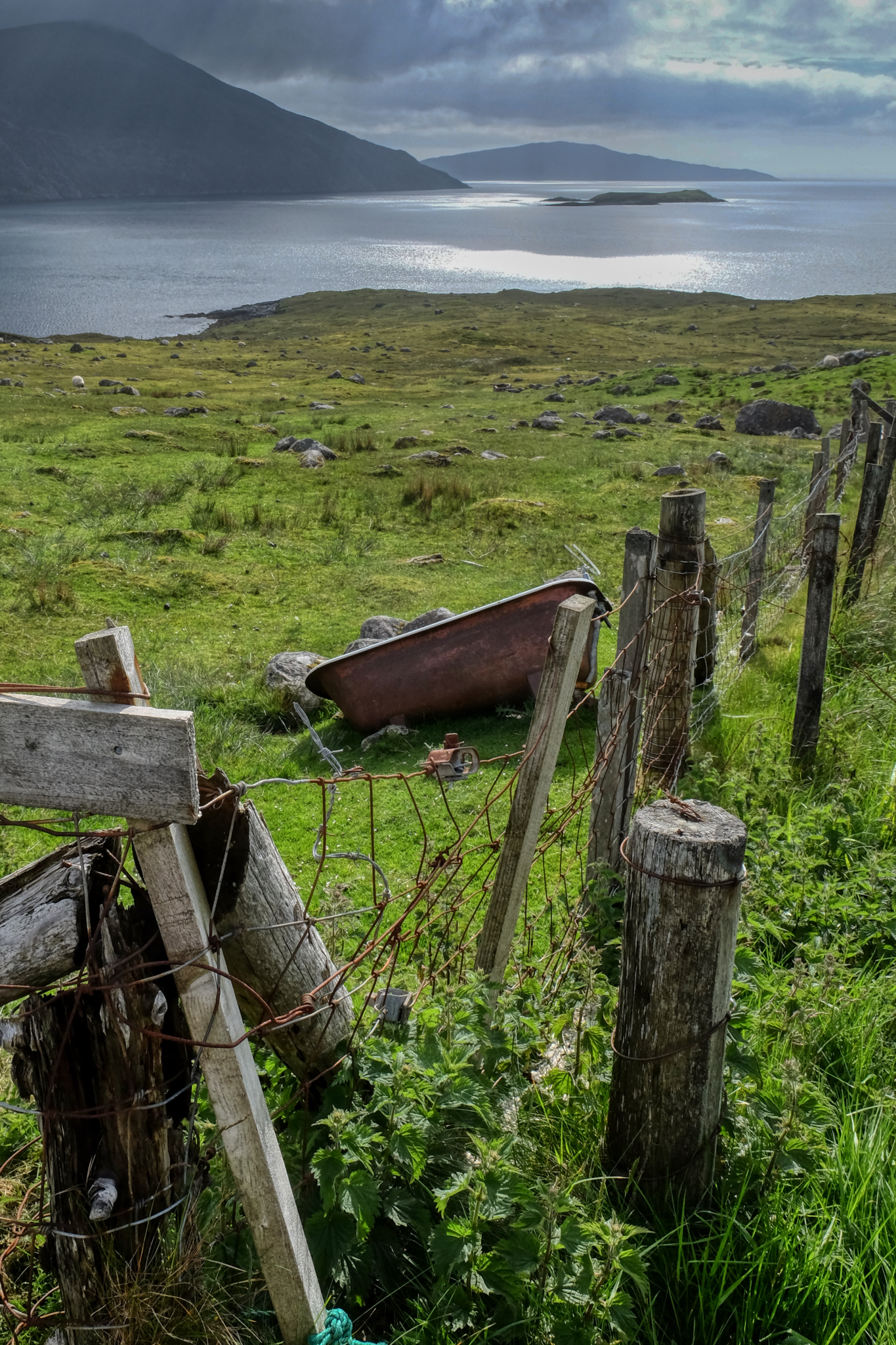 The views! Literally around every bend in the road . . . so many stunning landscapes!
The views! Literally around every bend in the road . . . so many stunning landscapes!
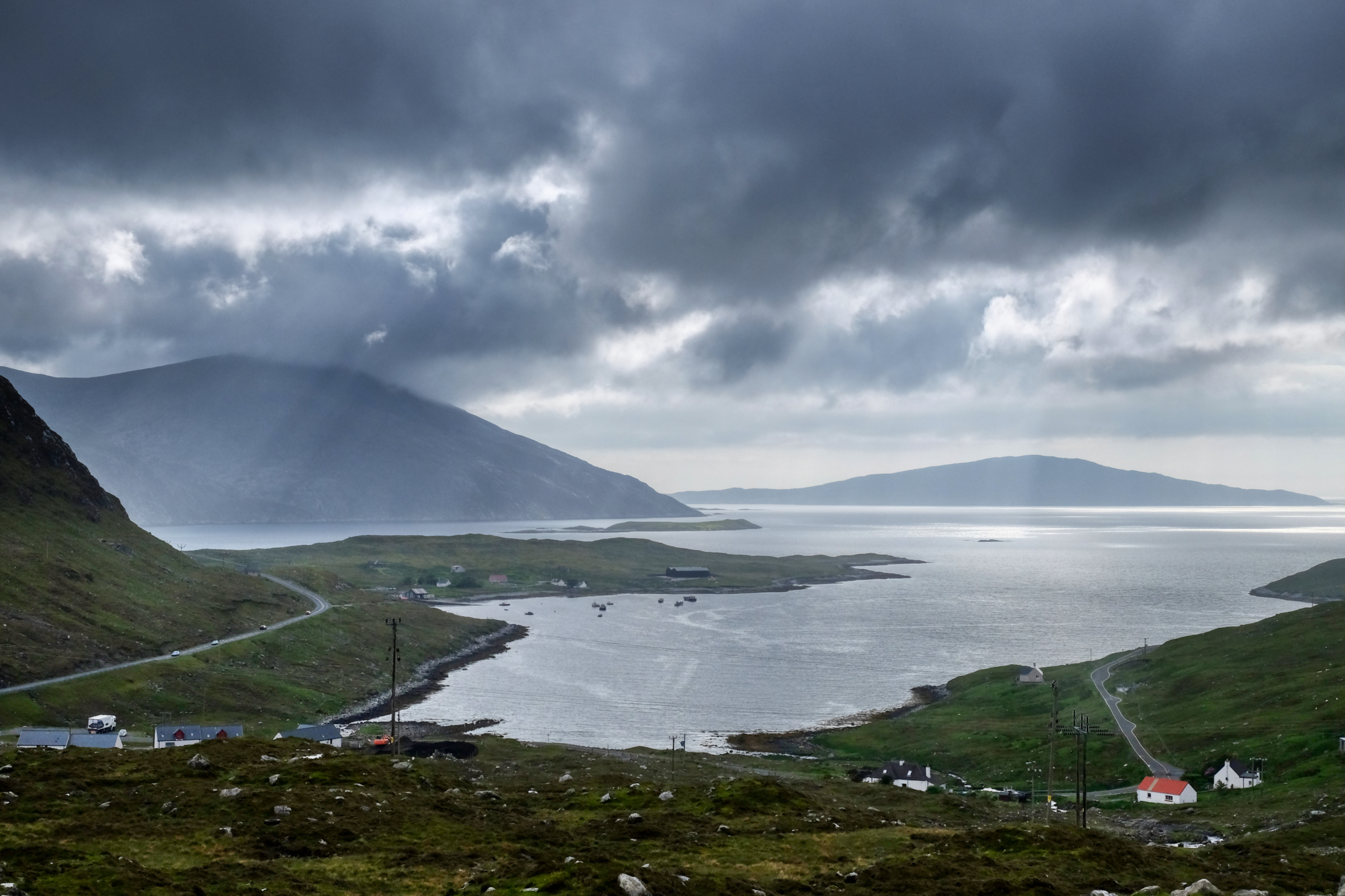 Mountains, light, sea, sky.
Mountains, light, sea, sky.
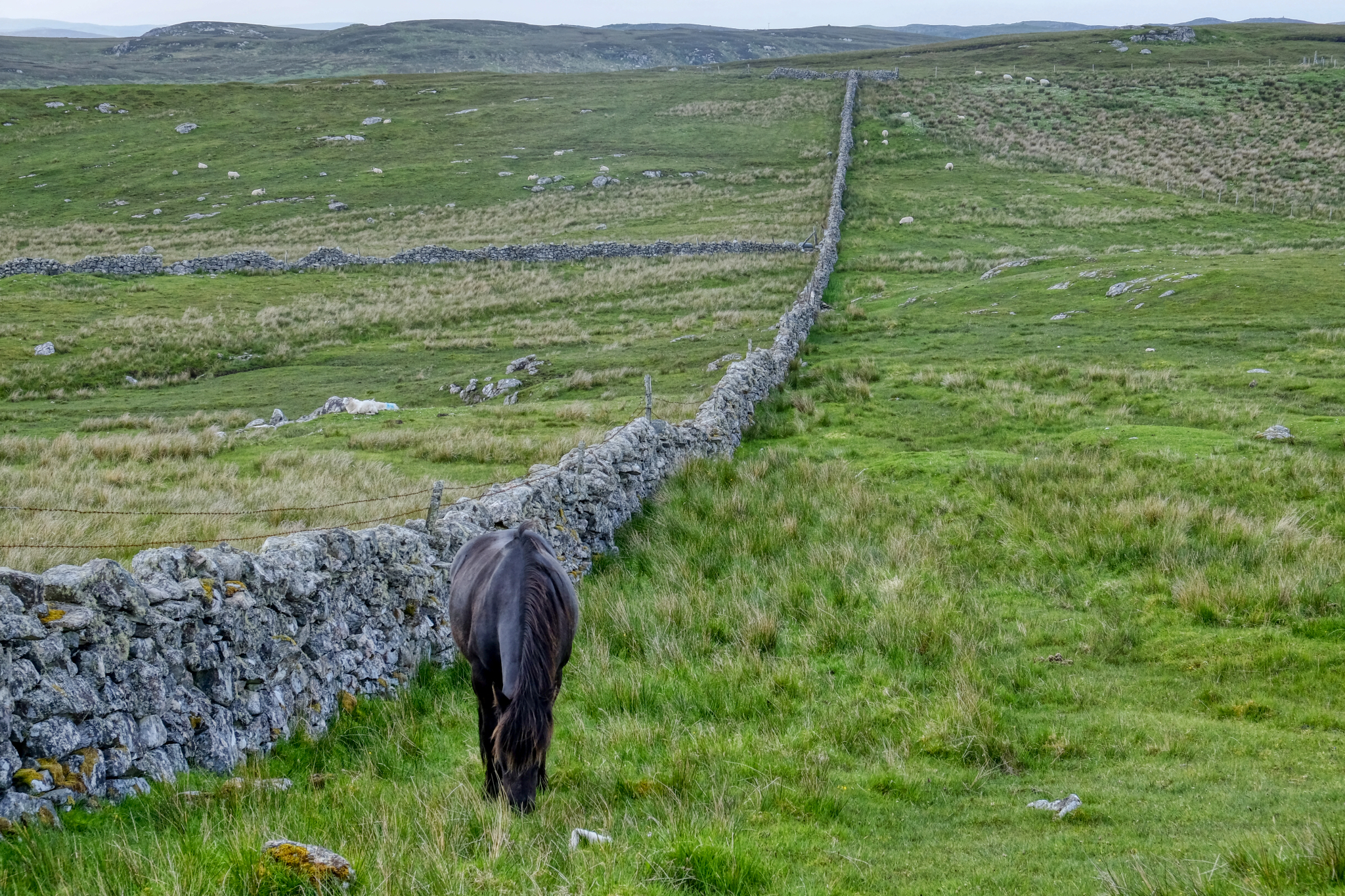 We diverted west, following a sign to Gearrannan Black House Village.
We diverted west, following a sign to Gearrannan Black House Village.
Gearrannan Black House Village
The Black House Village was a well-preserved museum of old thatched stone houses.
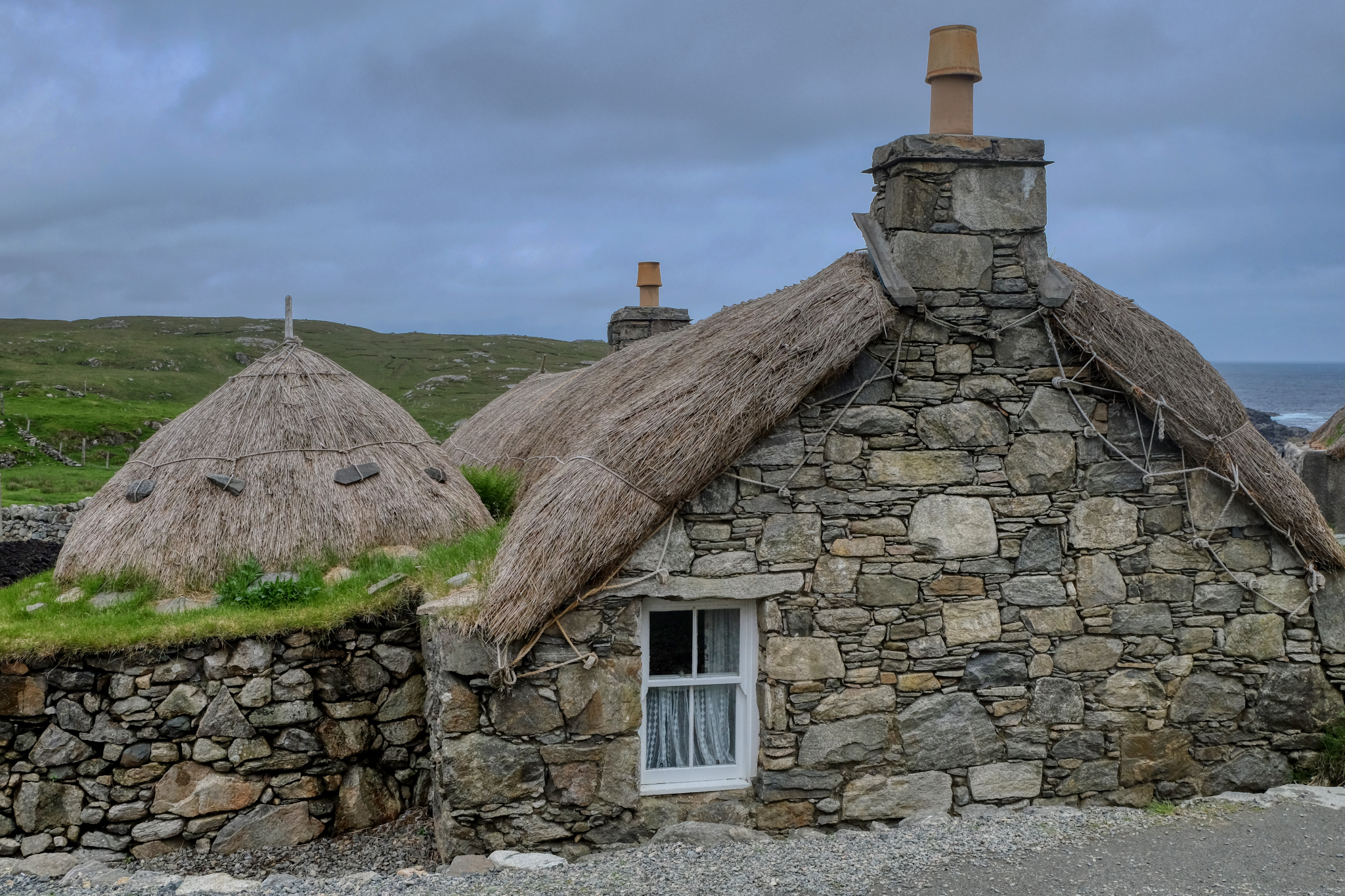 The houses here are all occupied . . . one is even a bed and breakfast . . . if we had only known!!!
The houses here are all occupied . . . one is even a bed and breakfast . . . if we had only known!!!
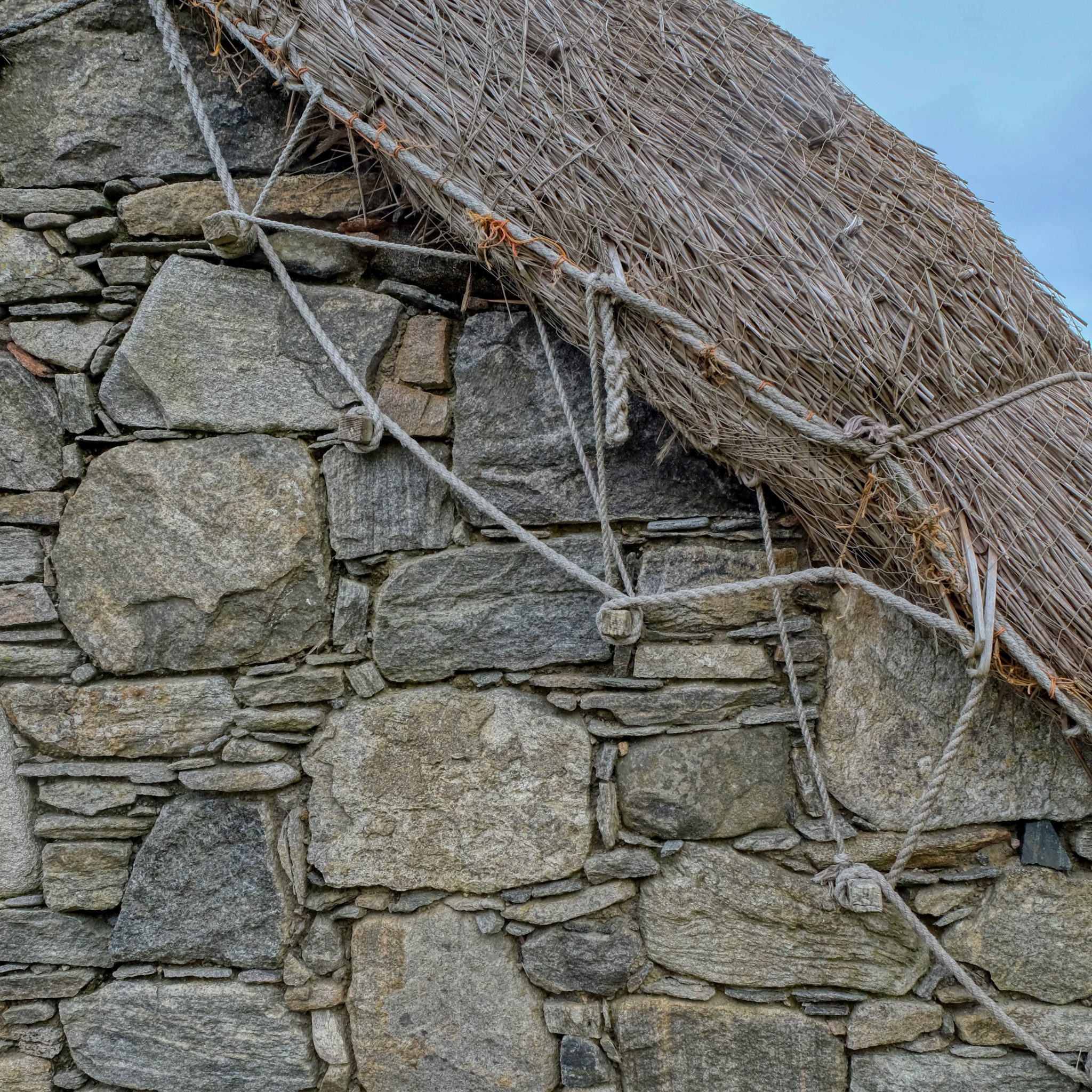 Beautifully detailed construction craft.
Beautifully detailed construction craft.
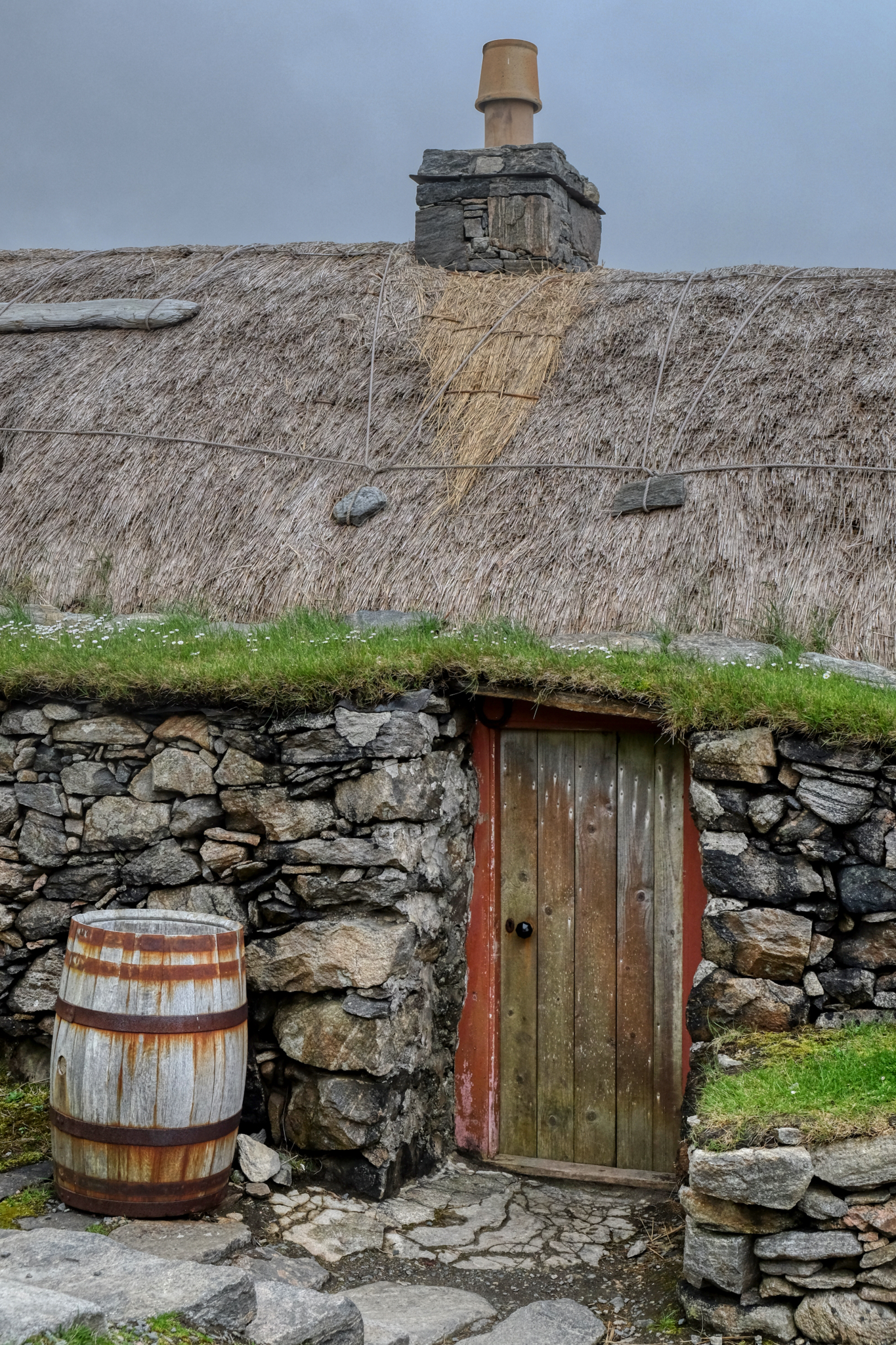 An unbelievably picturesque place.
An unbelievably picturesque place.
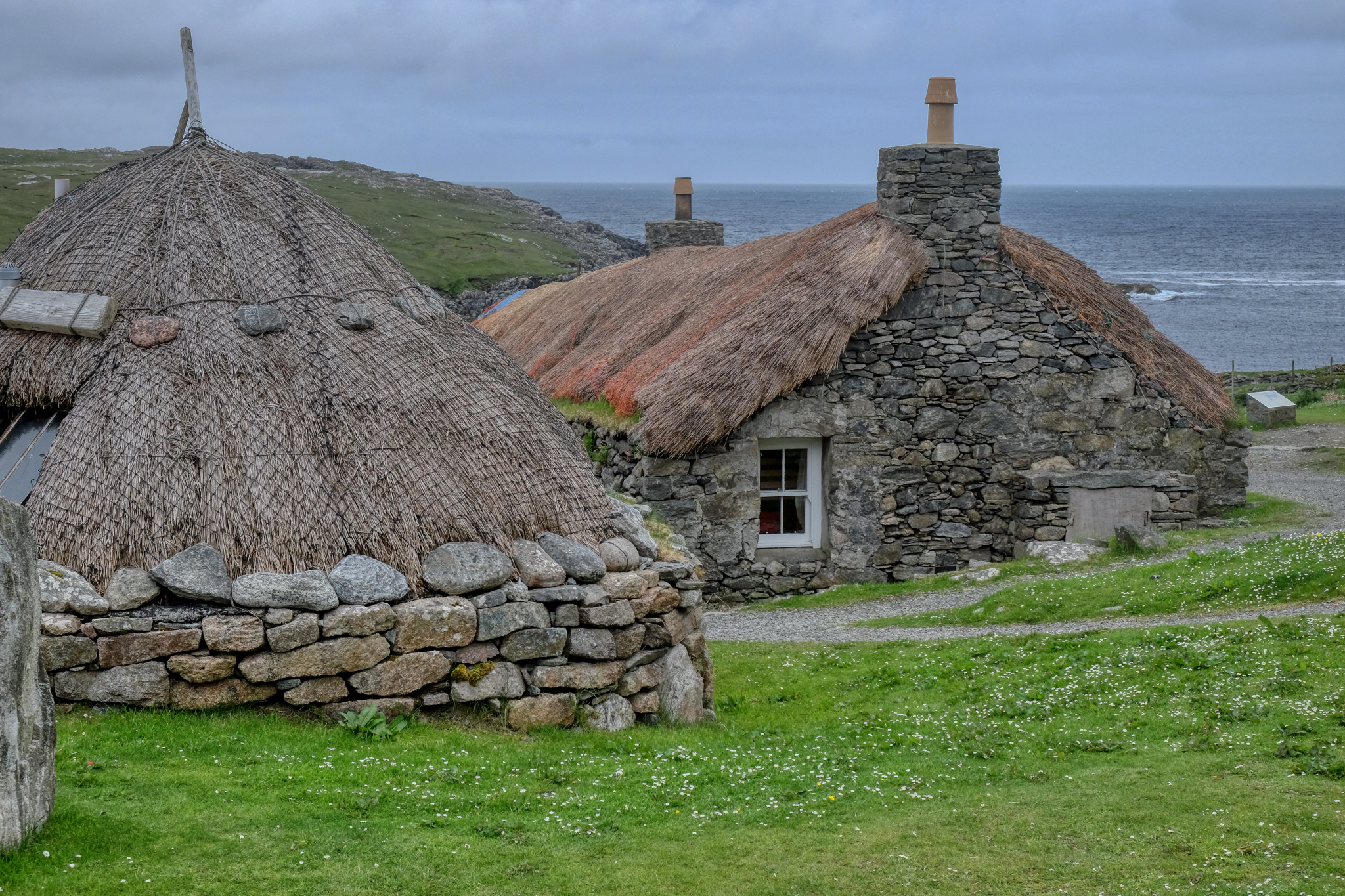 The village served as fishermen's cottages on a small bay.
The village served as fishermen's cottages on a small bay.
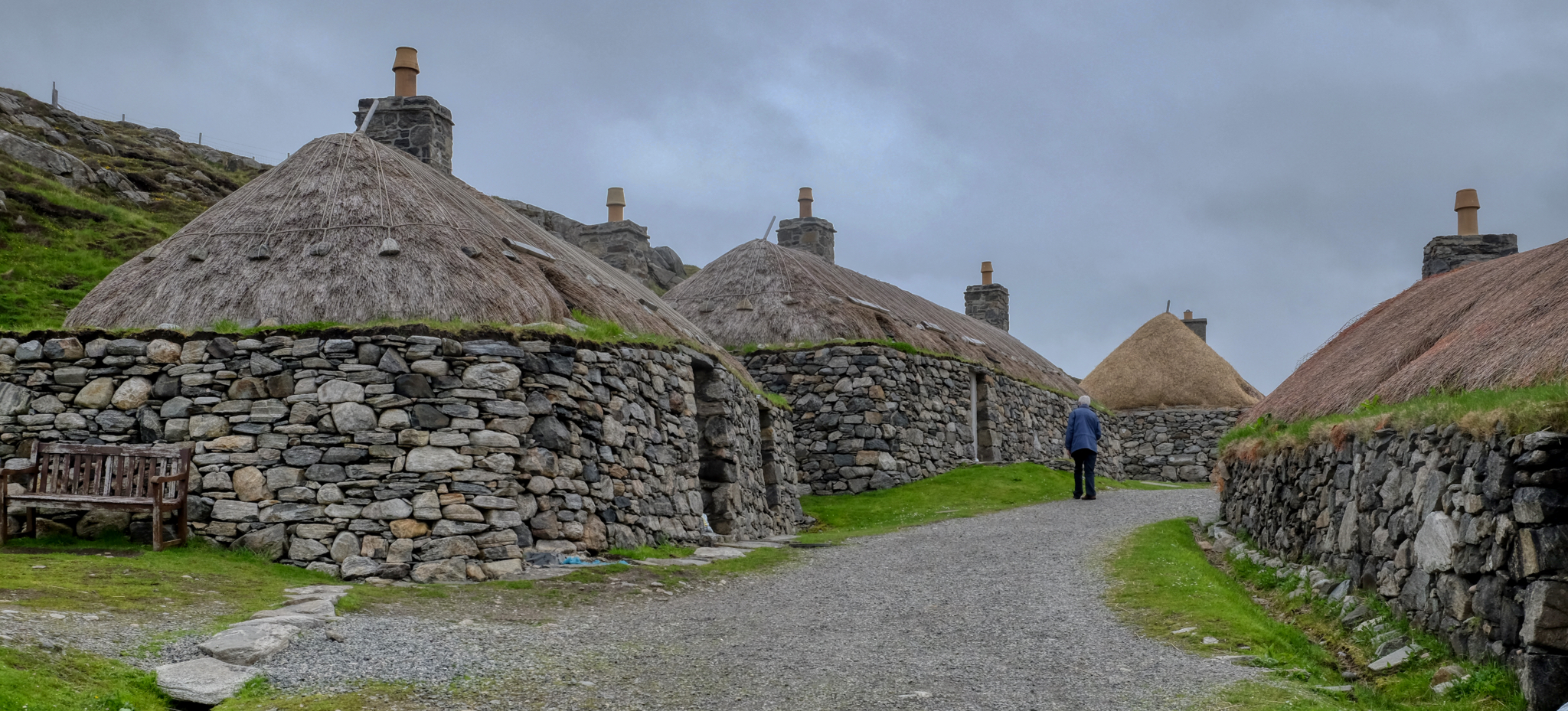 We strolled around this wonderful place for hours.
We strolled around this wonderful place for hours.
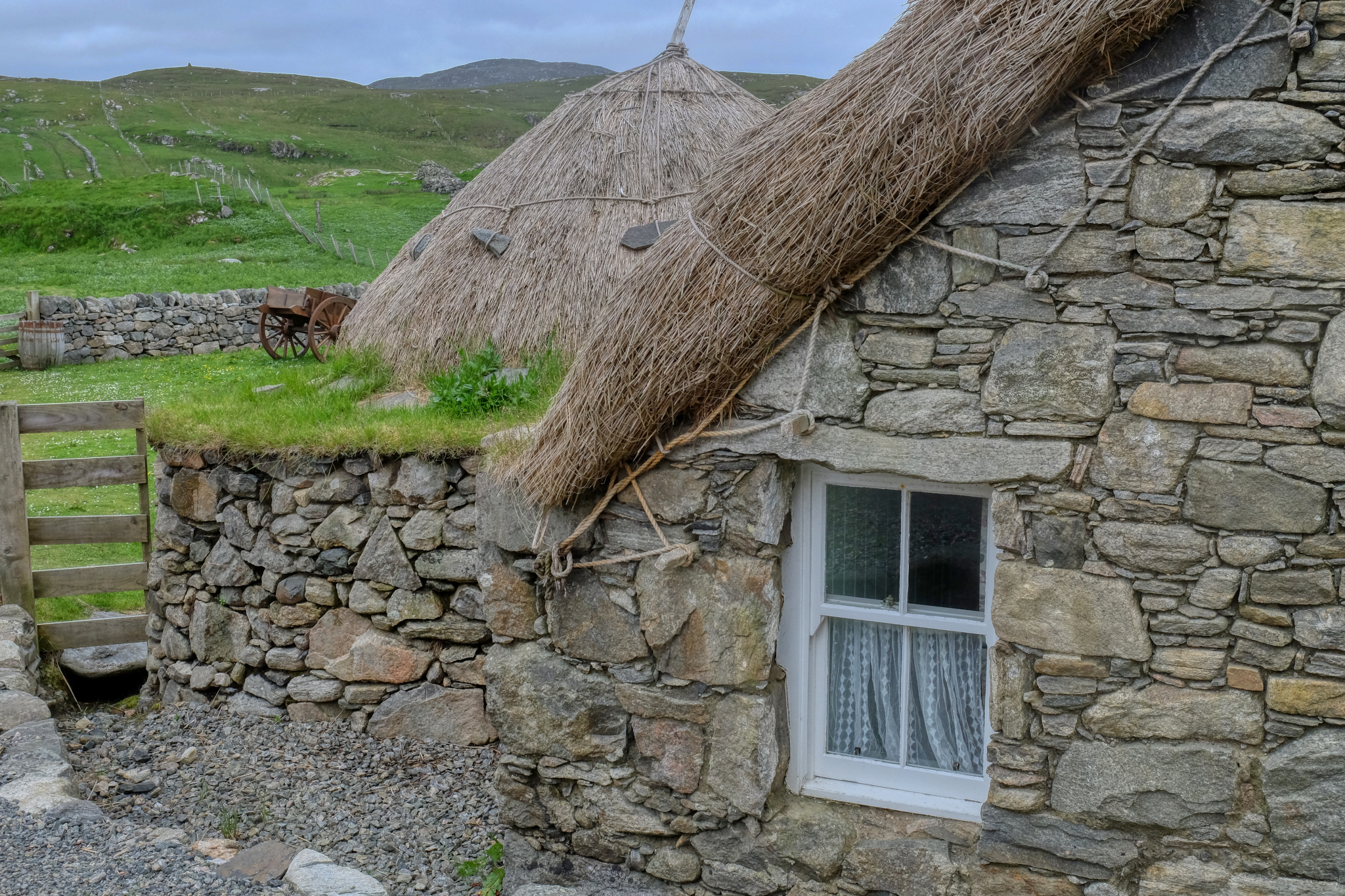 I have to confess: I took over 100 photos here . . . I couldn't help myself, I was overcome by the charming beauty.
I have to confess: I took over 100 photos here . . . I couldn't help myself, I was overcome by the charming beauty.
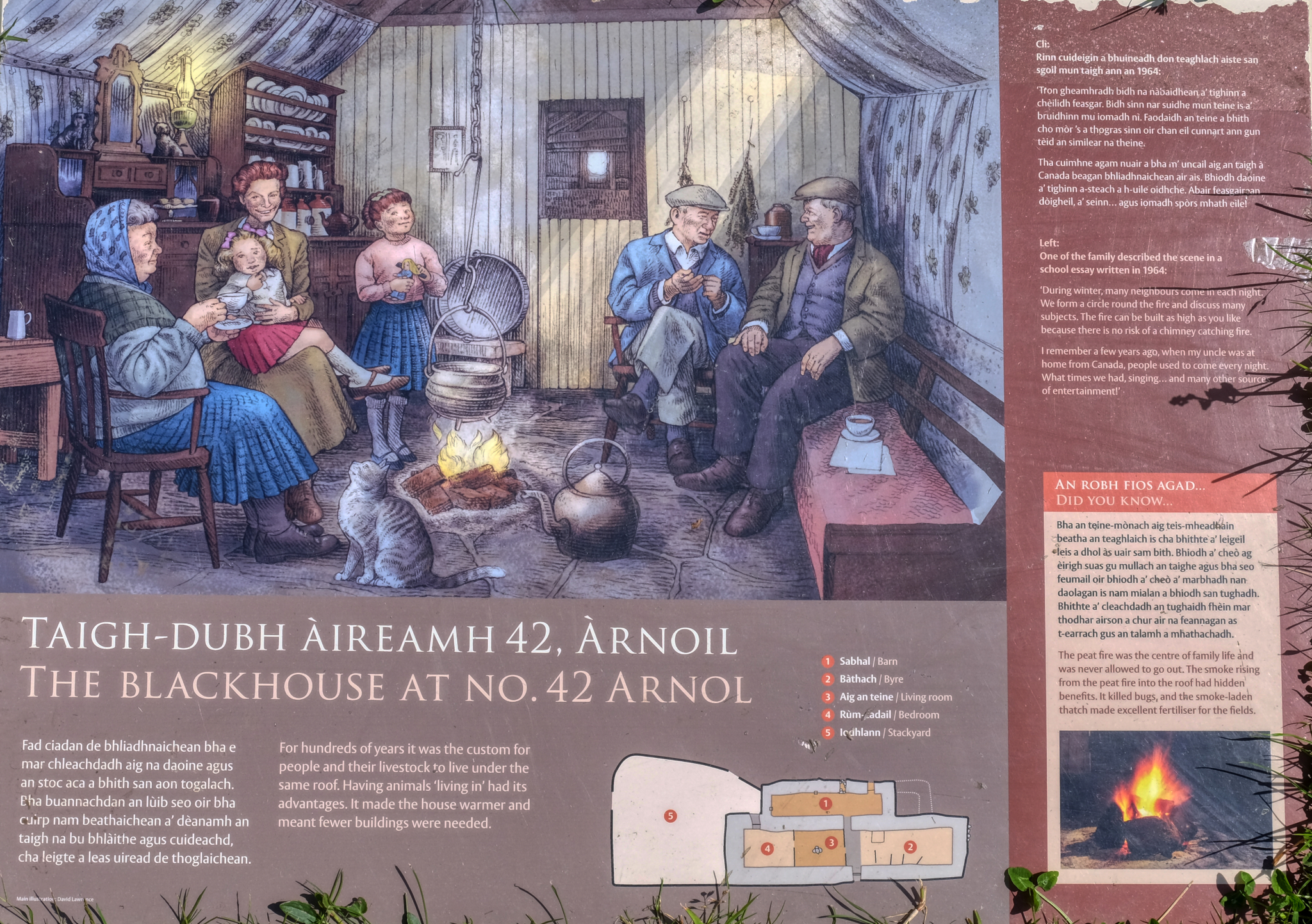 An historical marker on one of the black houses. Fascinating.
An historical marker on one of the black houses. Fascinating.
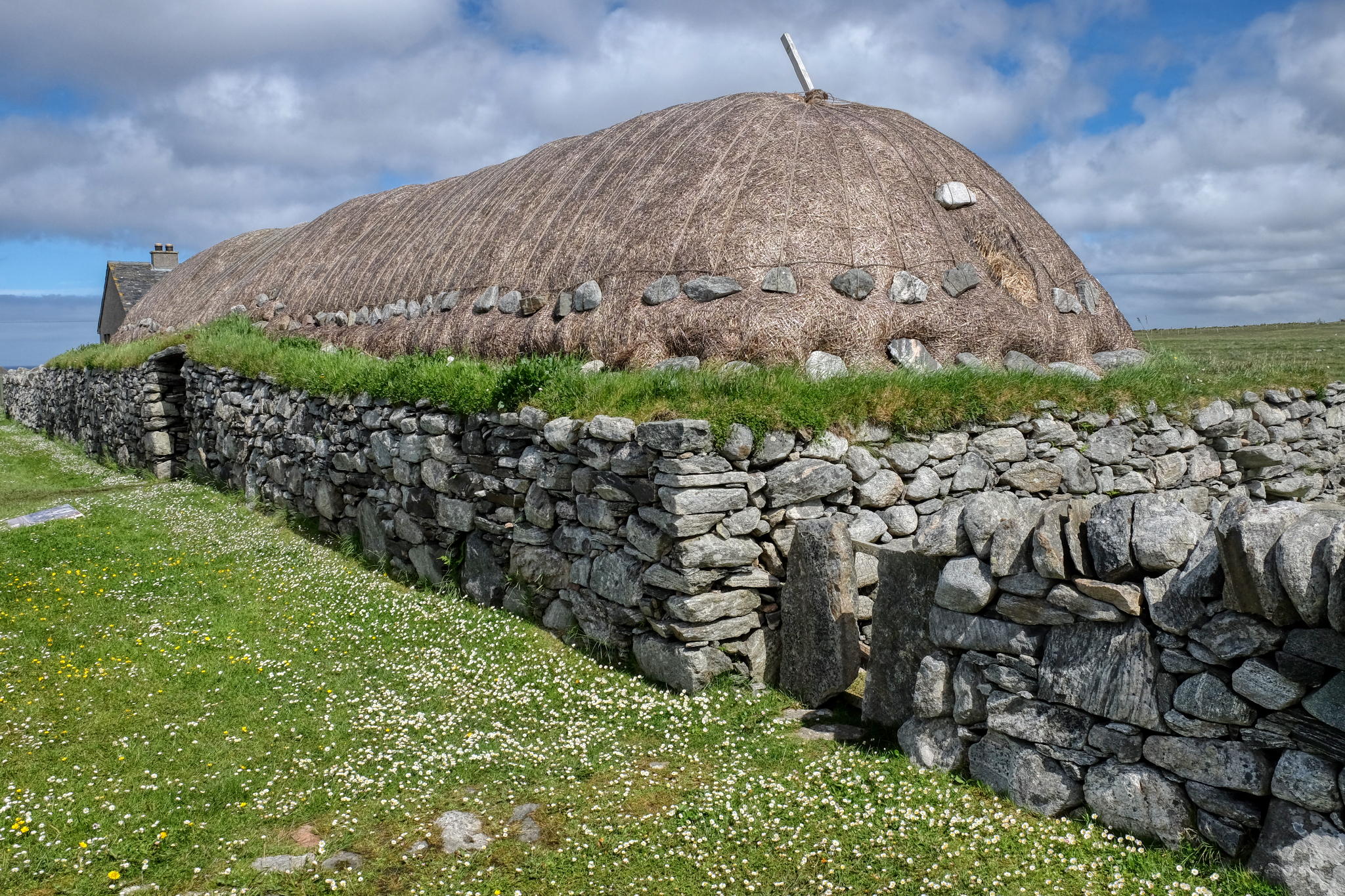 Out along the seaside west coast road of the Isle of Harris. A crofters barn, freshly thatched . . . and still in use.
Out along the seaside west coast road of the Isle of Harris. A crofters barn, freshly thatched . . . and still in use.
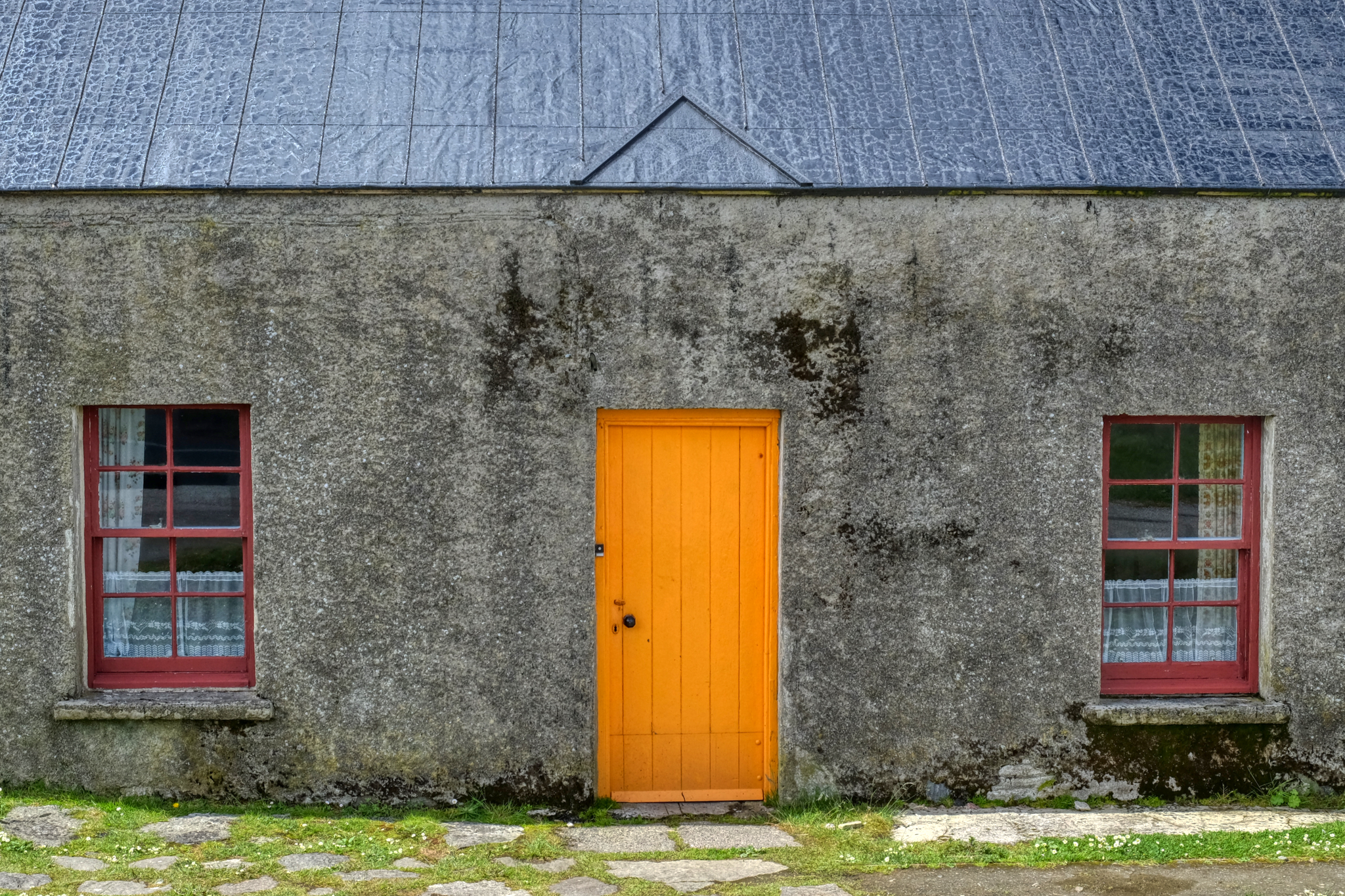 The houses here are very simple and austere . . . almost no decoration at all.
The houses here are very simple and austere . . . almost no decoration at all.
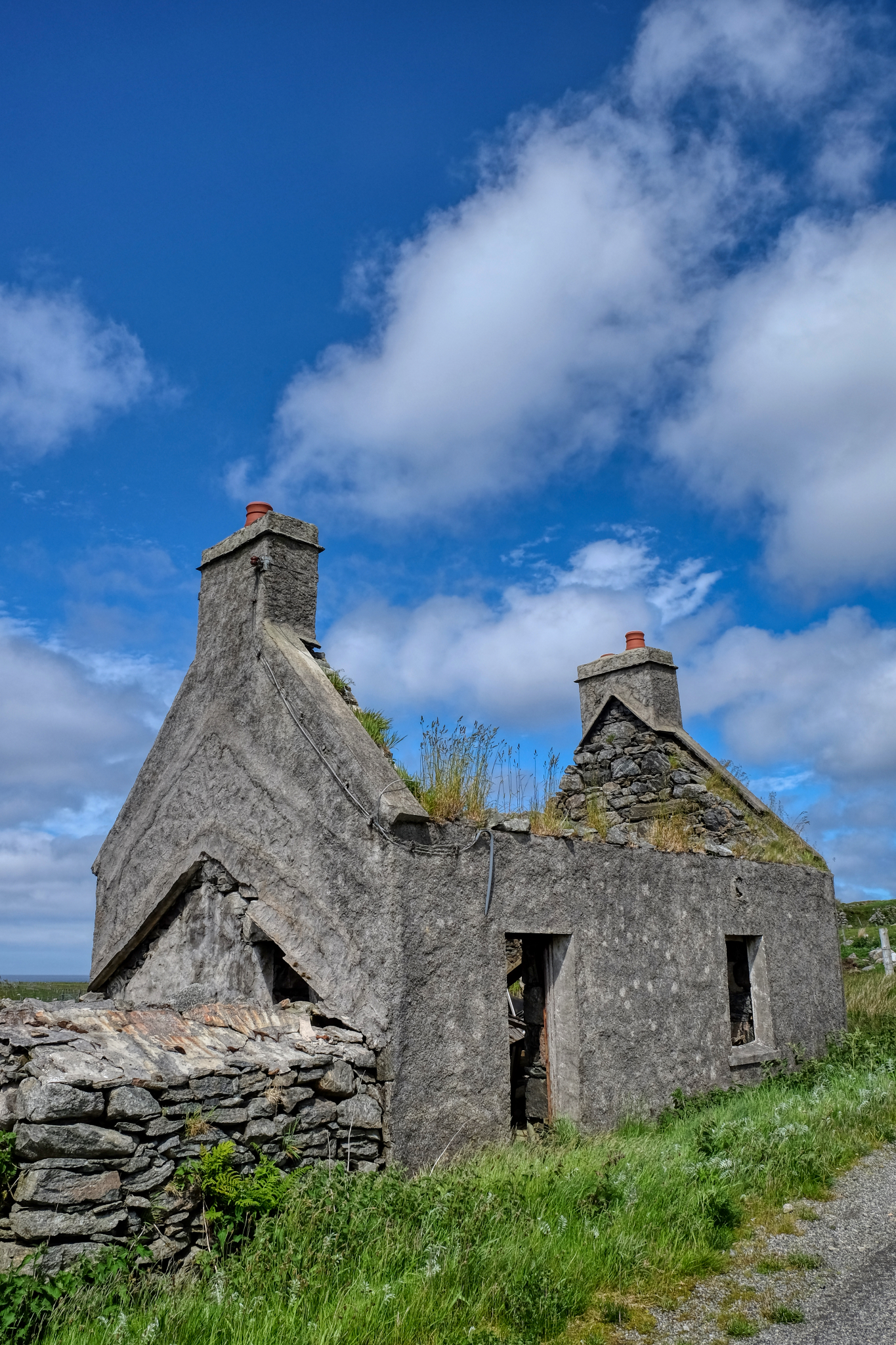 There are many abandoned houses in the west of these islands. There has been a steady drop in population as younger people move to towns and cities on the mainland of Scotland for jobs. However, some of the old houses are being restored by pensioners from as far away as London.
There are many abandoned houses in the west of these islands. There has been a steady drop in population as younger people move to towns and cities on the mainland of Scotland for jobs. However, some of the old houses are being restored by pensioners from as far away as London.
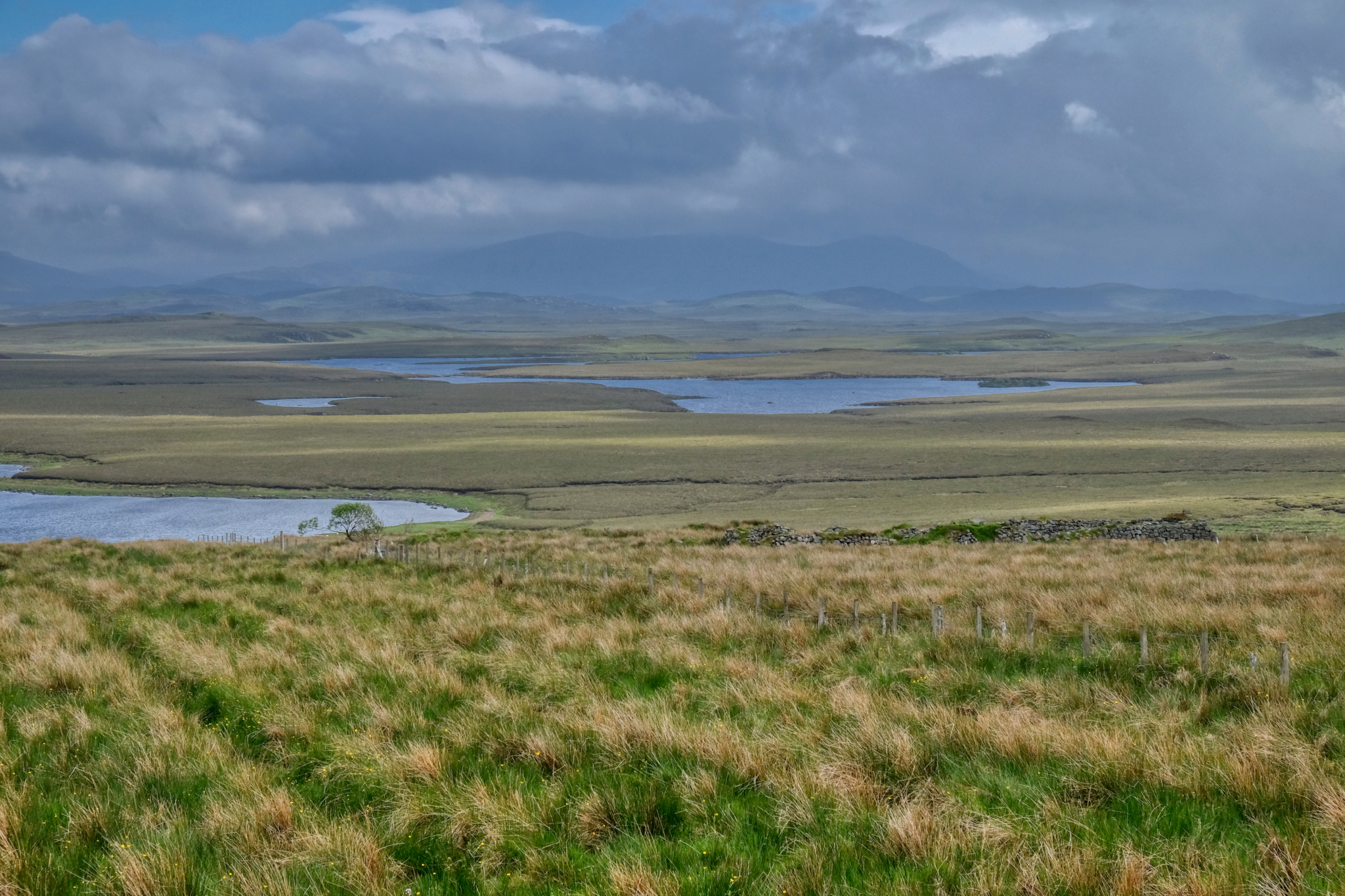 And on and on we went . . . north to see an amazing landmark . . .
And on and on we went . . . north to see an amazing landmark . . .
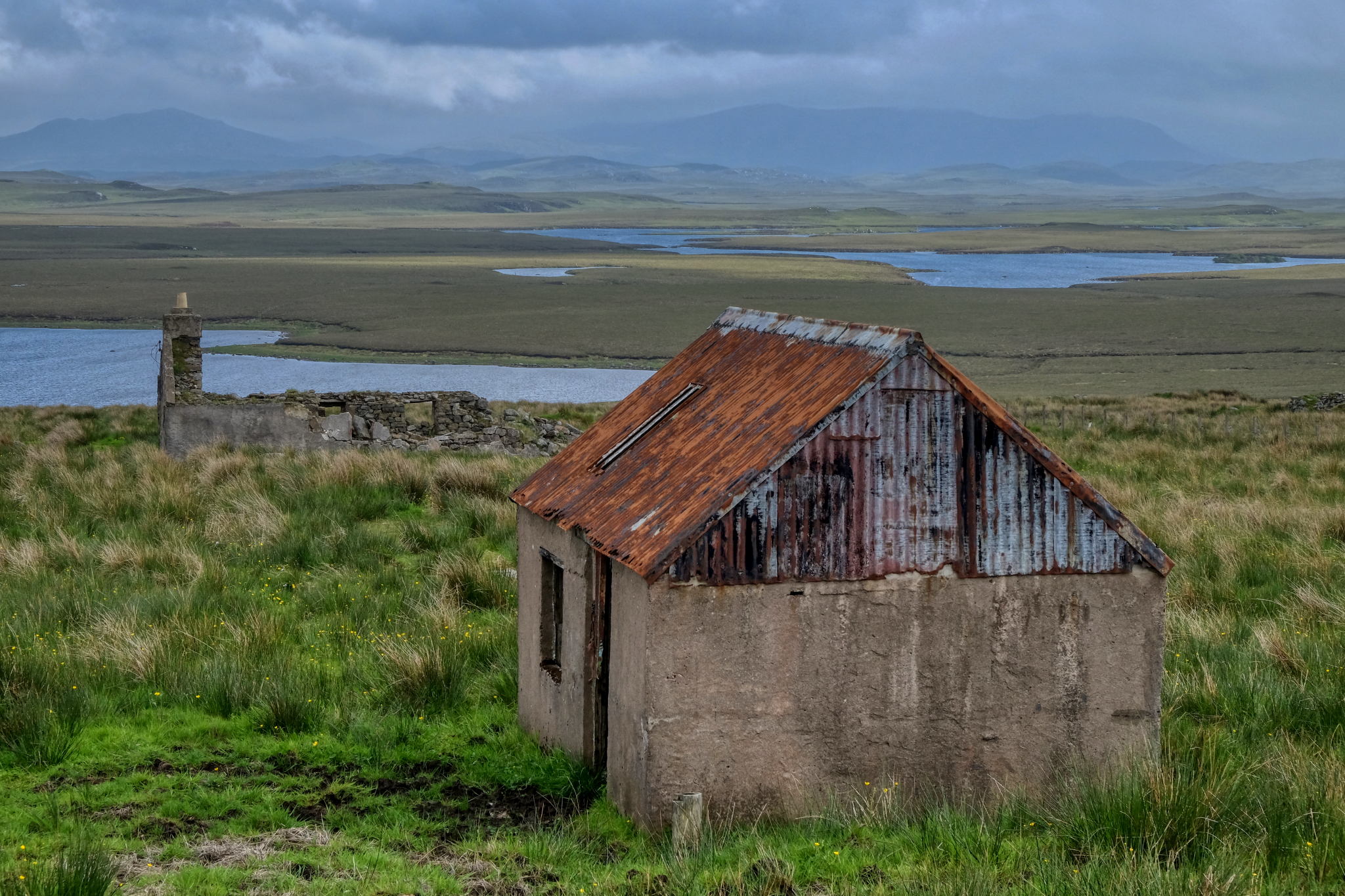 Out on a remote stretch of the north of the Isle of Lewis, more abandoned crofters cottages.
Out on a remote stretch of the north of the Isle of Lewis, more abandoned crofters cottages.
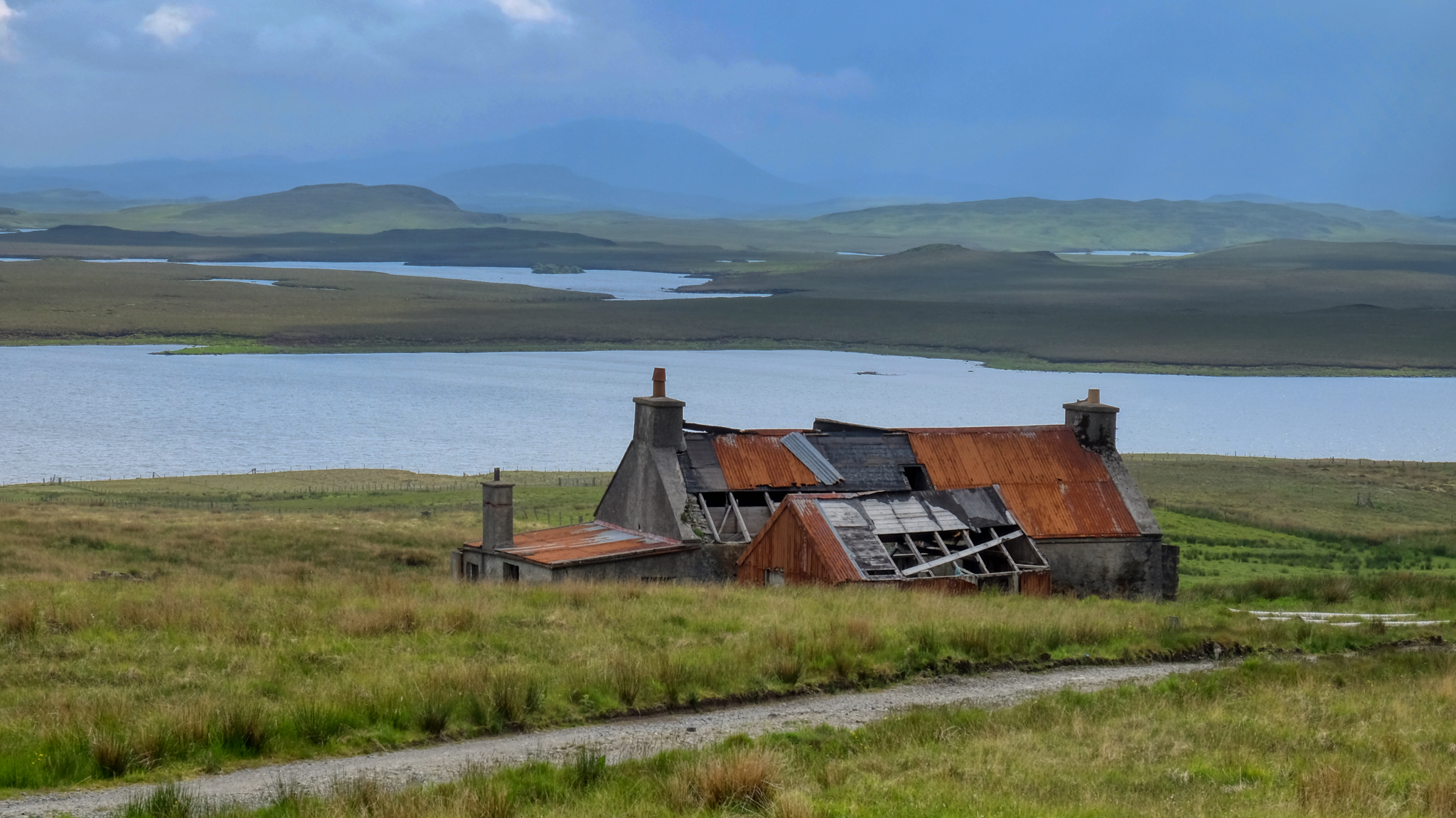 The views became more fantastical, otherworldly.
The views became more fantastical, otherworldly.
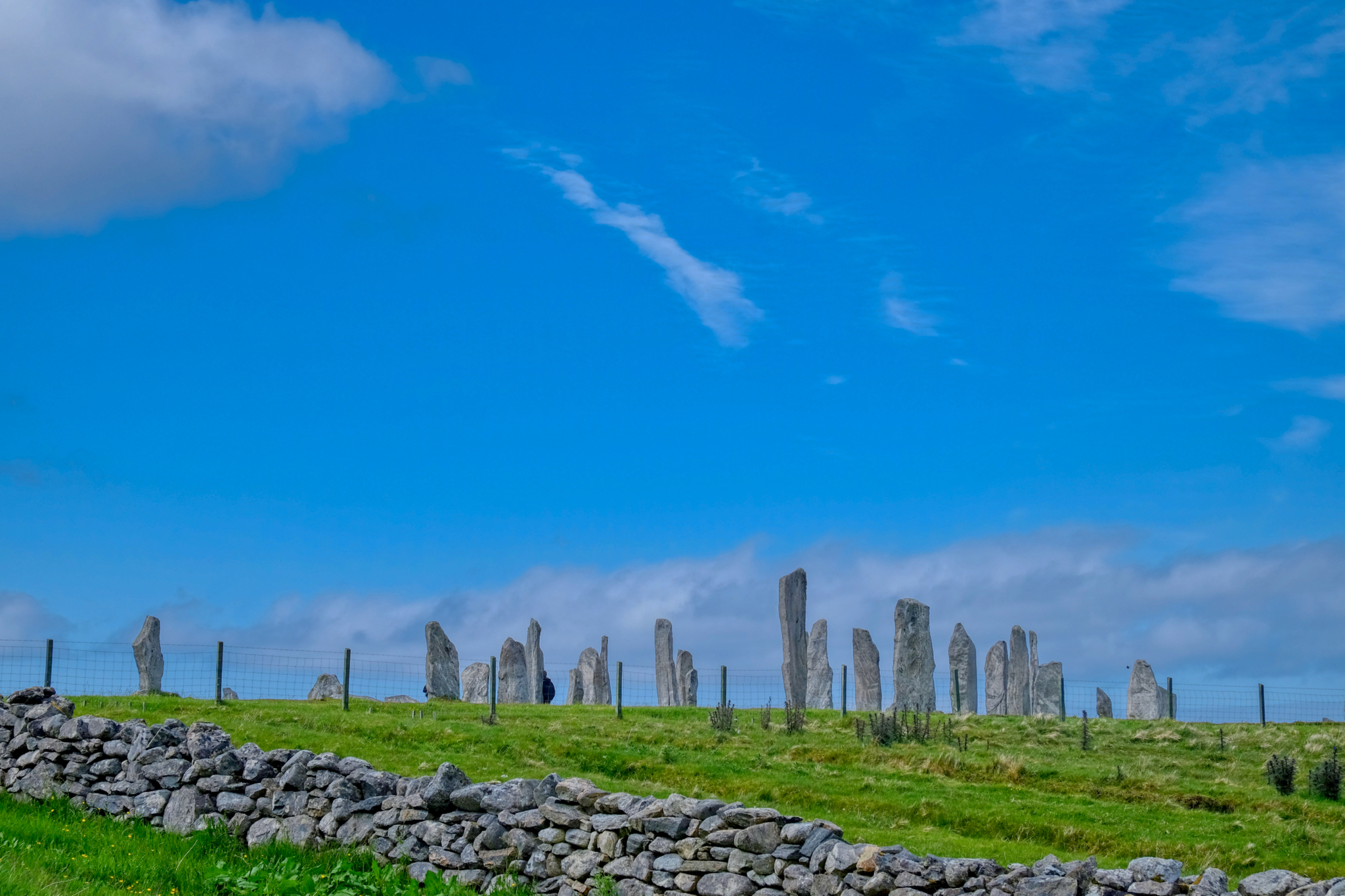 At last we had arrived at our destination: The Callanish Standing Stones!
At last we had arrived at our destination: The Callanish Standing Stones!
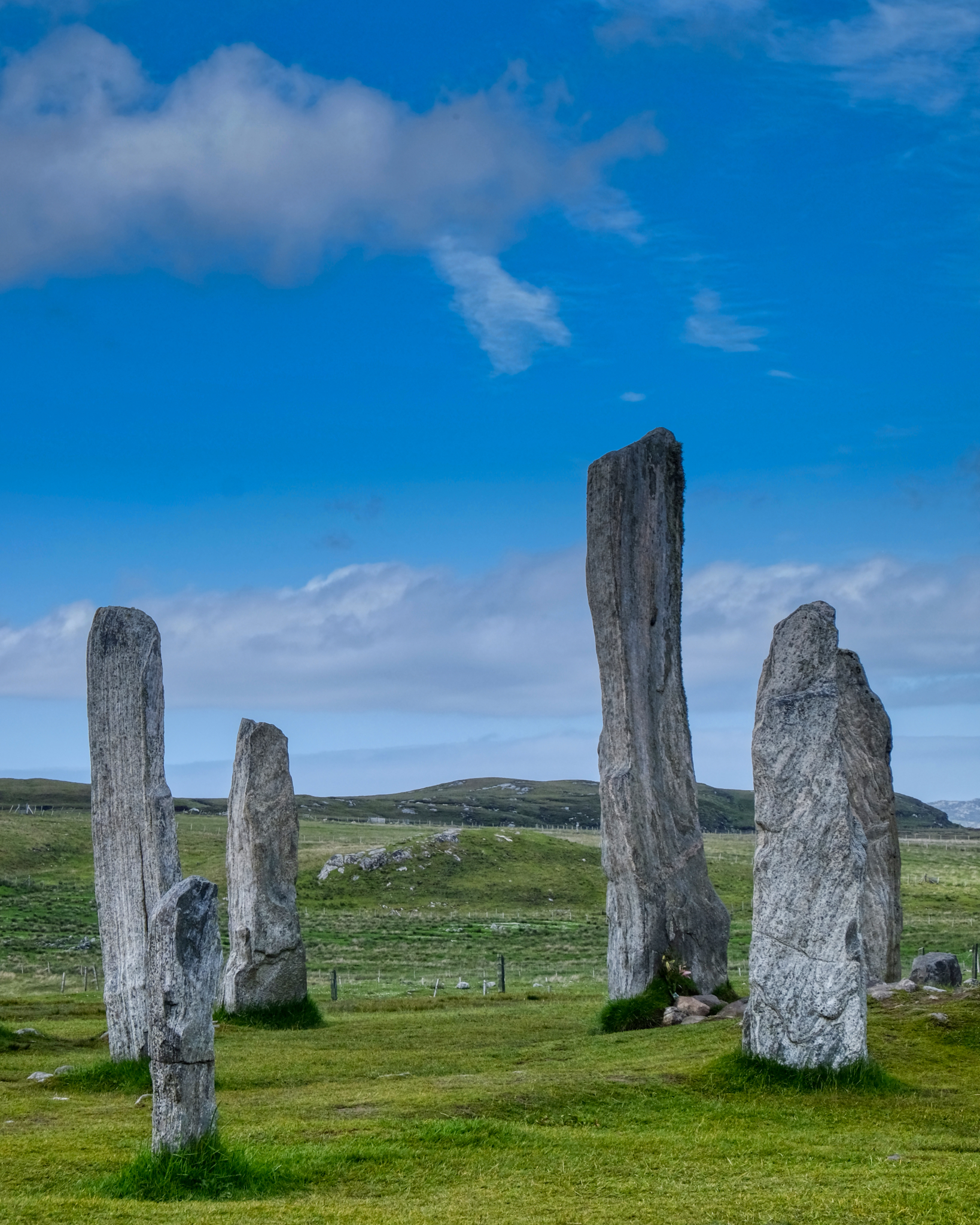 I have been to Stonehenge, but these were far more magnificent!
I have been to Stonehenge, but these were far more magnificent!
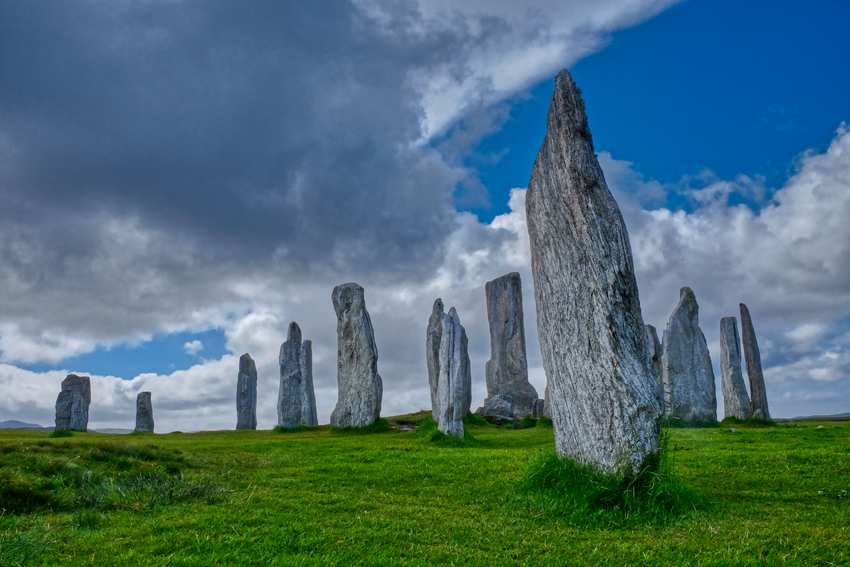
"The first traces of human activity are indicated by a broad ditch (no longer visible above ground) which appears to have belonged to some structure or enclosure. This may have been ritual, but could instead have been domestic. In the centuries around 3000 BC, however, the site was turned over to agriculture, which obliterated most of the earlier traces. After this, the site was allowed to grass over for a time." - Callanish Standing Stones
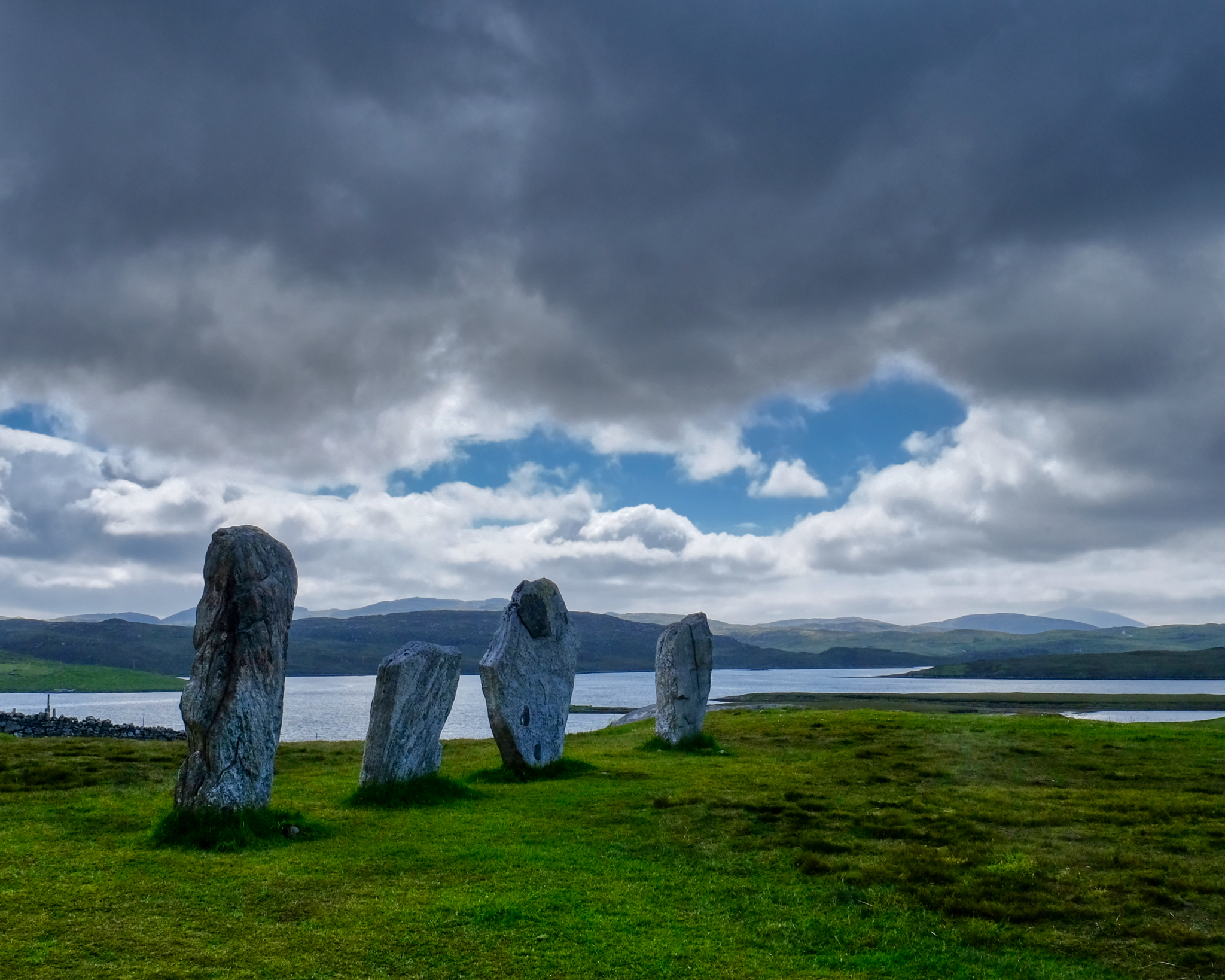 The stones sit on a hill with awesome views.
The stones sit on a hill with awesome views.
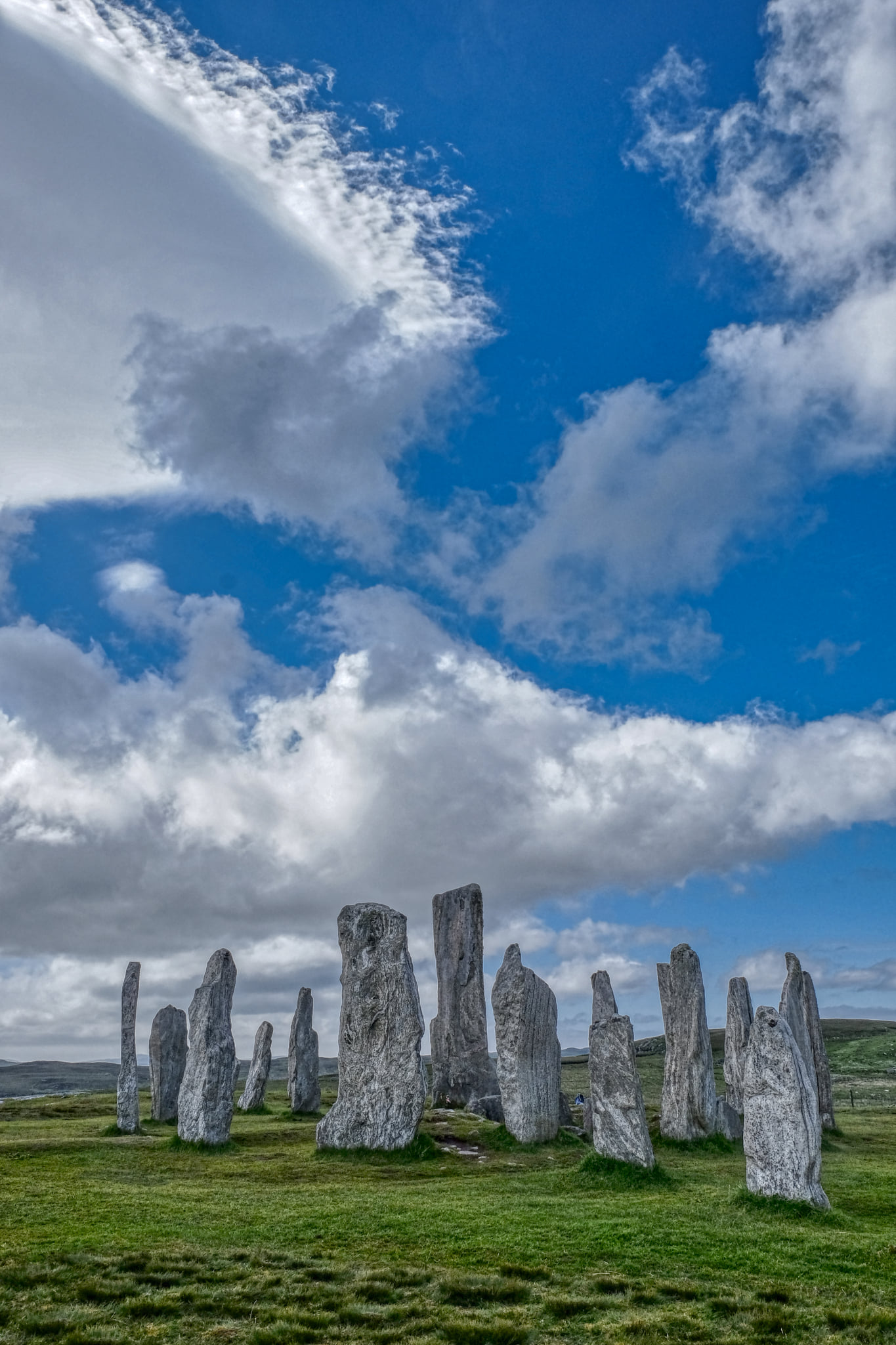 Under a stunning, ever-changing sky . . . the sun popping through now and again.
Under a stunning, ever-changing sky . . . the sun popping through now and again.
 Magic.
Magic.
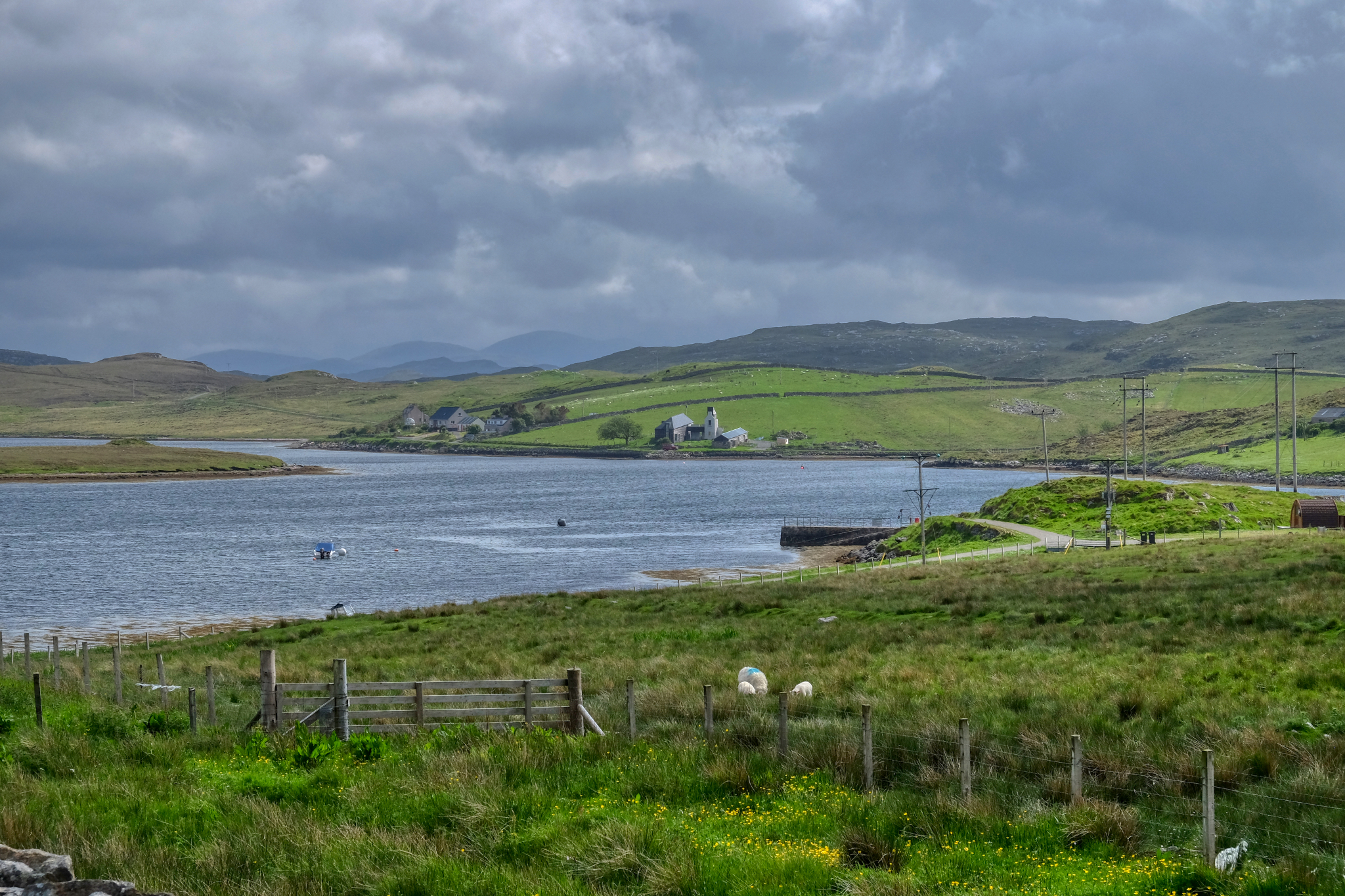 A view from the standing stones. Imagine living in a farm like this . . . in this place.
A view from the standing stones. Imagine living in a farm like this . . . in this place.
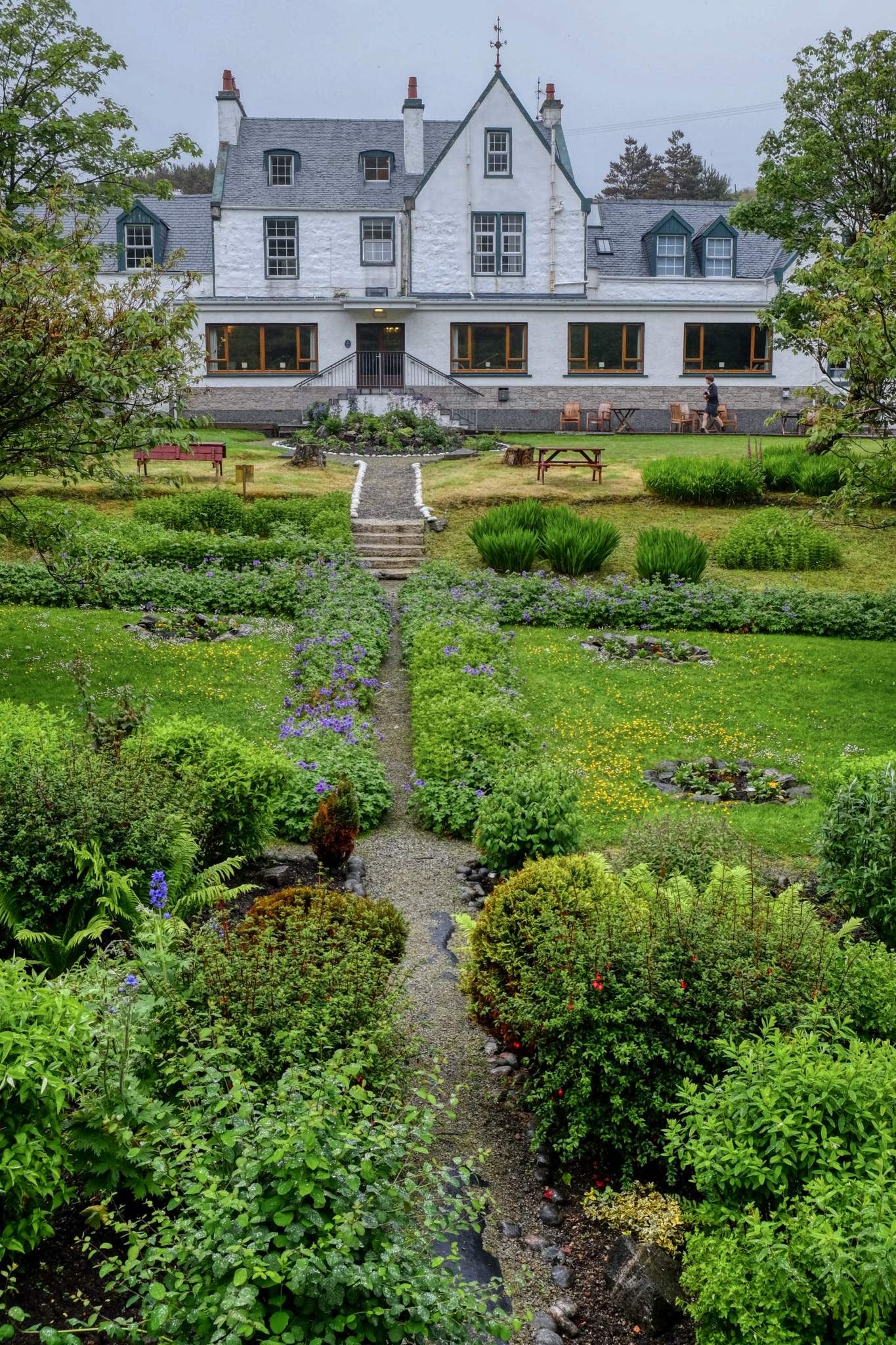 We stayed a lovely evening at the Harris Hotel, Isle of Lewis and Harris.
We stayed a lovely evening at the Harris Hotel, Isle of Lewis and Harris.
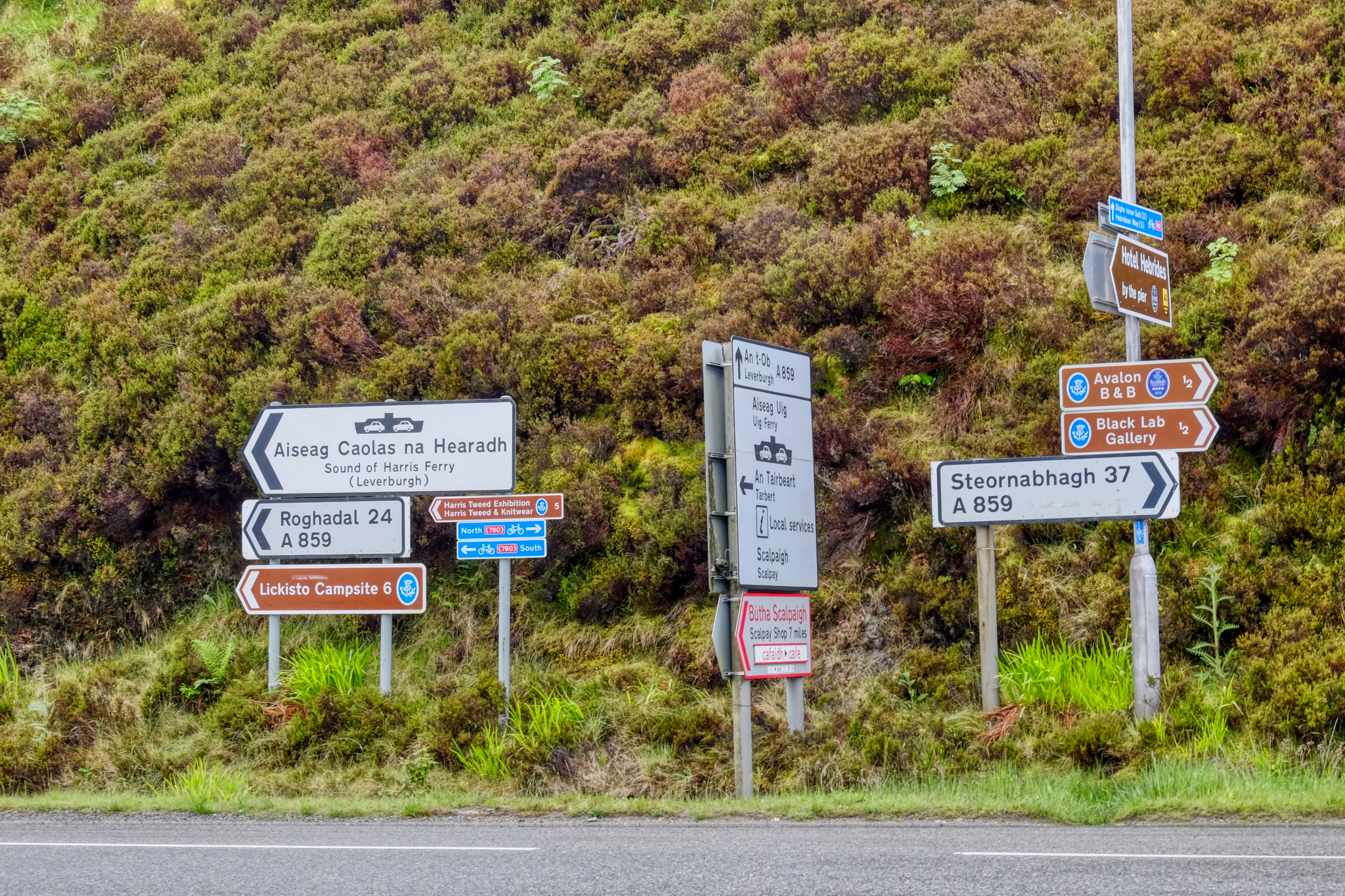 Ah! Harris tweed that way!
Ah! Harris tweed that way!
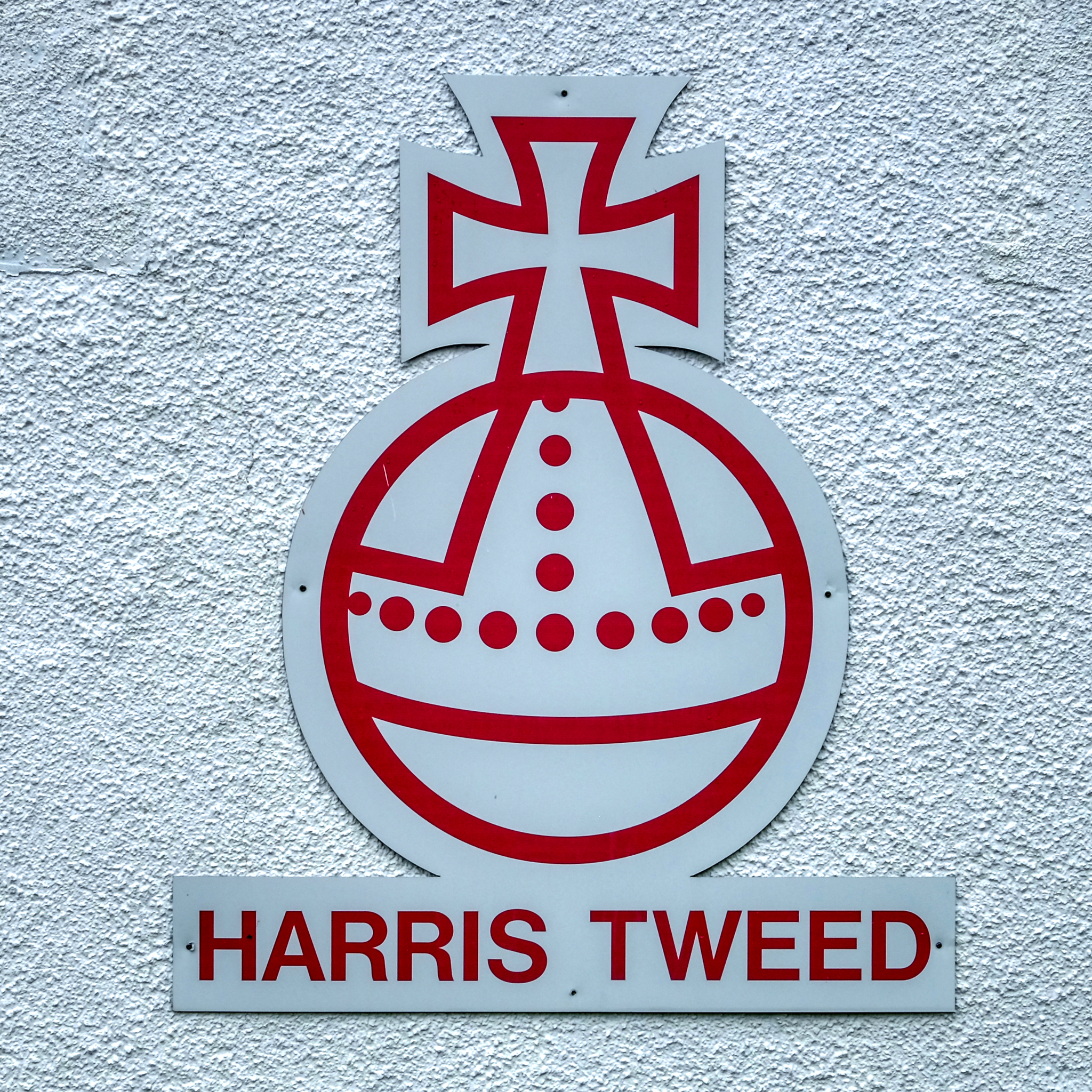 Only tweed that has been woven on the Isle of Harris can be called Harris tweed. It is famous all over the world.
Only tweed that has been woven on the Isle of Harris can be called Harris tweed. It is famous all over the world.
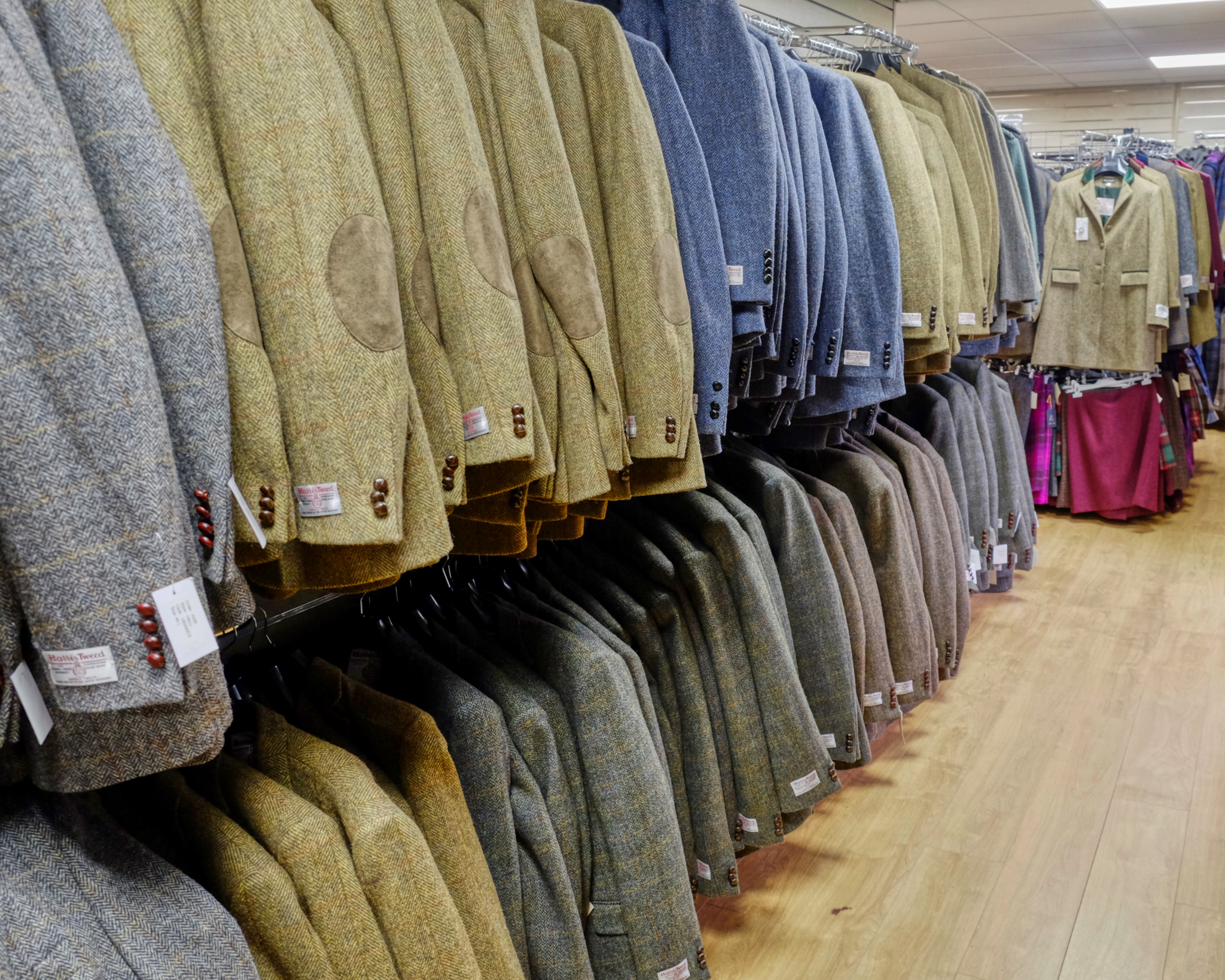 When I lived in London many years ago, I had a very nice Harris tweed sport coat. I tried several of these on . . . but they felt too old fashioned . . . and professorial.
When I lived in London many years ago, I had a very nice Harris tweed sport coat. I tried several of these on . . . but they felt too old fashioned . . . and professorial.
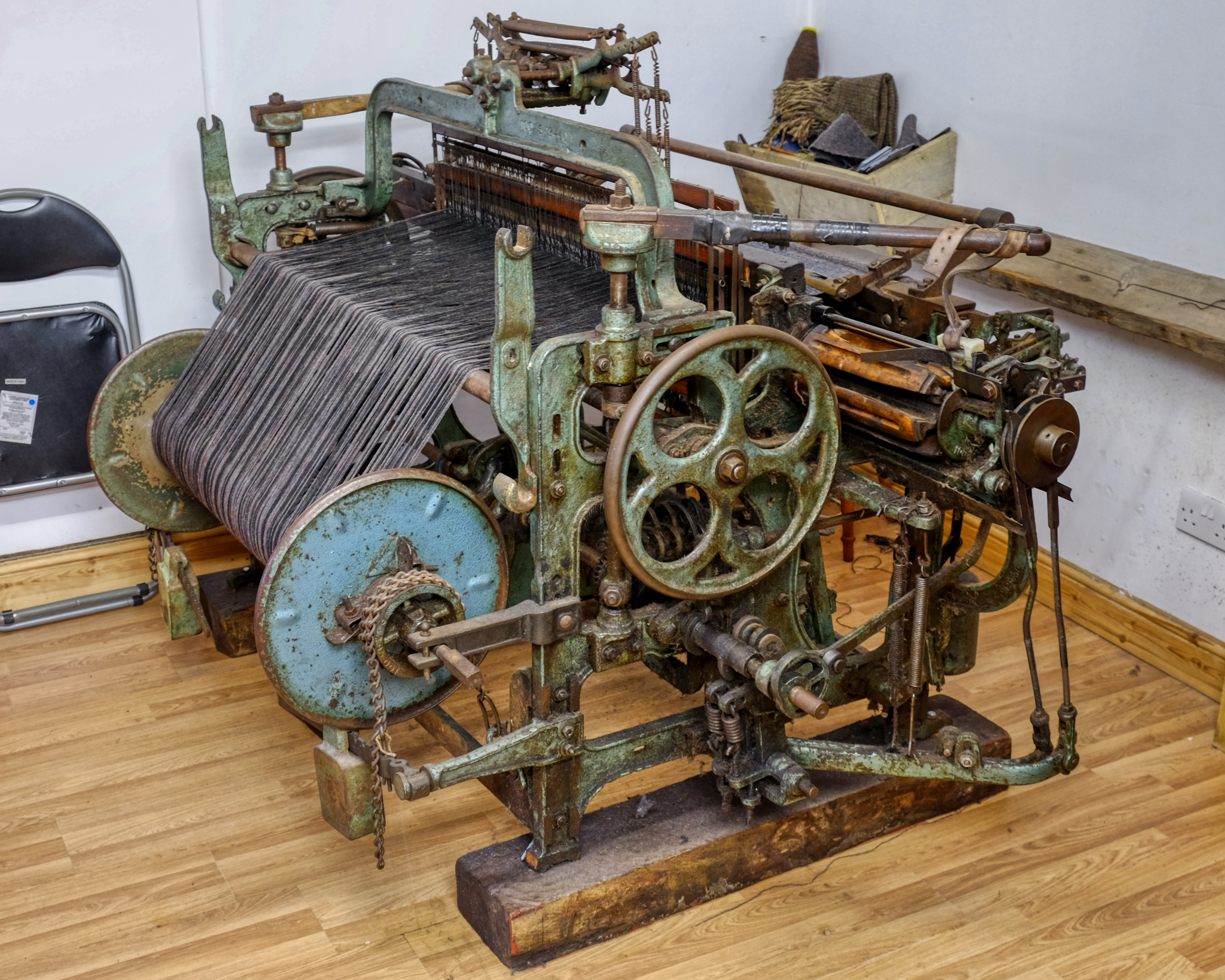 The winter nights on the Outer Hebrides are long, dark, cold, and windy. Local residents have spent the dark months weaving the distinctive tweed the island is famous for on these looms.
The winter nights on the Outer Hebrides are long, dark, cold, and windy. Local residents have spent the dark months weaving the distinctive tweed the island is famous for on these looms.
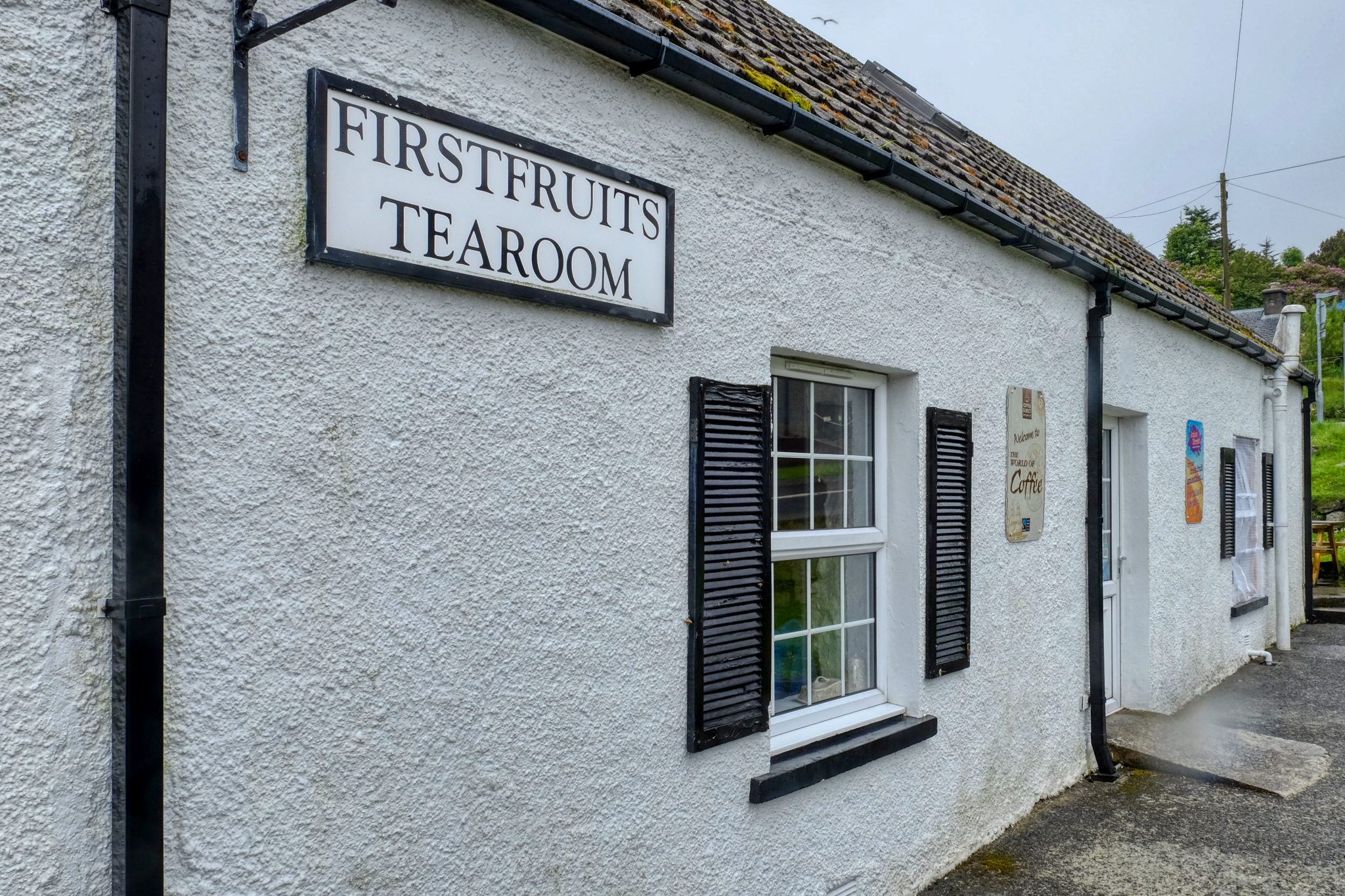 We eagerly explored the few small villages out on the islands. A nice cup of coffee and scones was very welcome.
We eagerly explored the few small villages out on the islands. A nice cup of coffee and scones was very welcome.
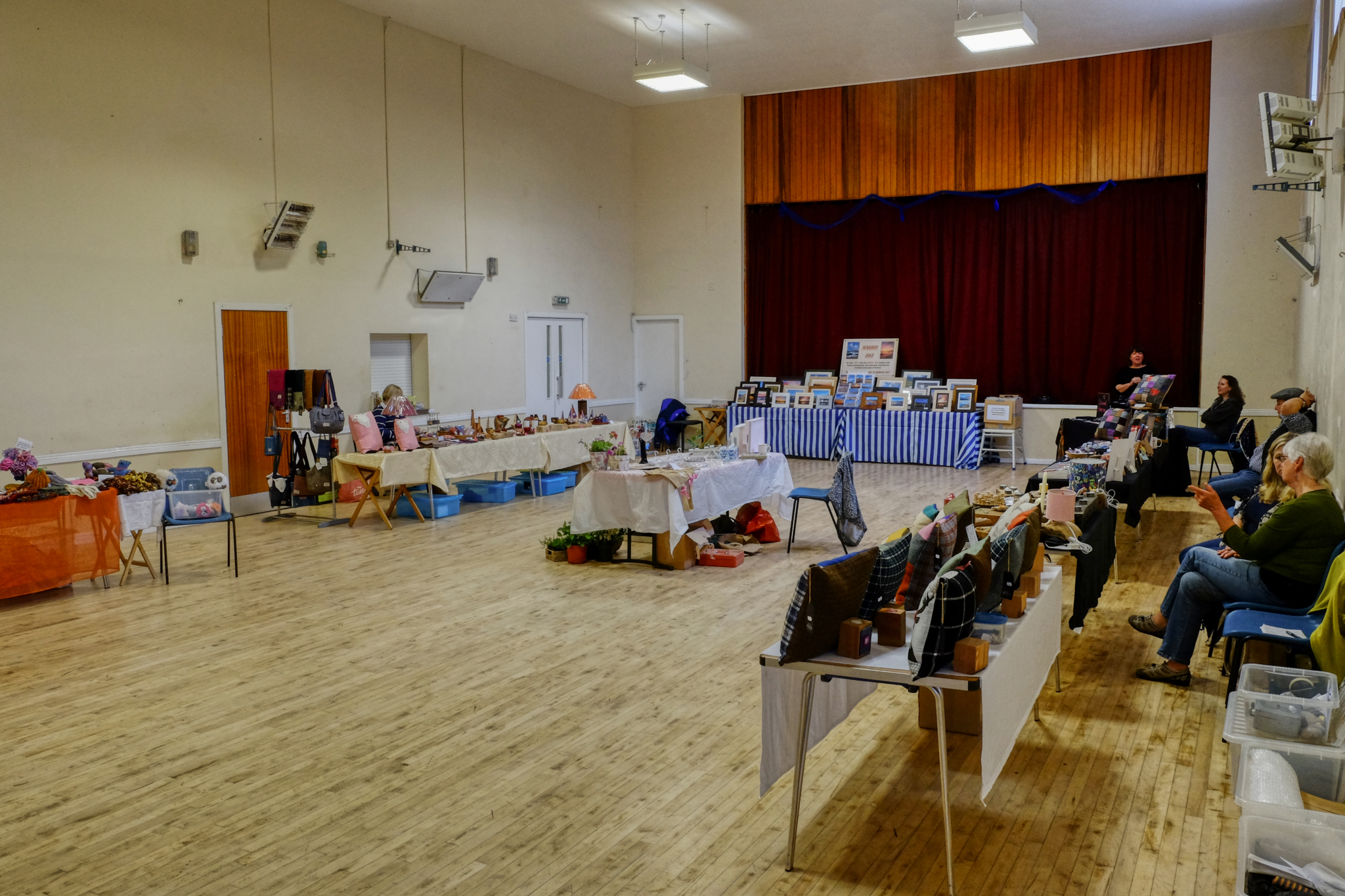 We always stop whenever we see a "craft sale" sign. You never know what amazing things you might find . . . and we have found and purchased many fantastic things on our world travels in these kinds of places . . . but not at this place. We always try to buy something, but could not find a thing we wanted here. Sorry ladies.
We always stop whenever we see a "craft sale" sign. You never know what amazing things you might find . . . and we have found and purchased many fantastic things on our world travels in these kinds of places . . . but not at this place. We always try to buy something, but could not find a thing we wanted here. Sorry ladies.
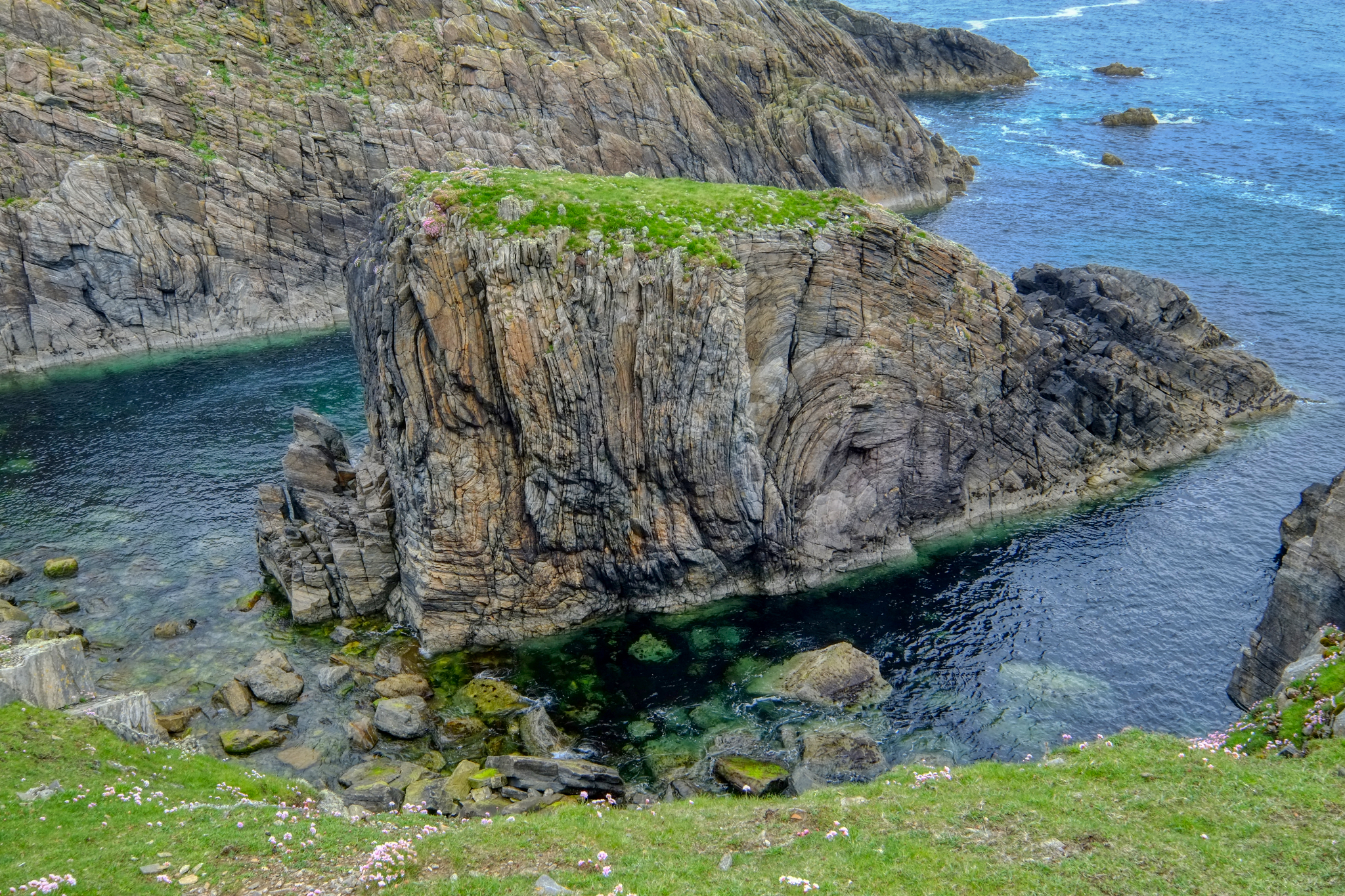
After five days on the small roads, we eventually made it to the very tip top of the chain of islands that make up the Outer Hebrides. And we were not disappointed!
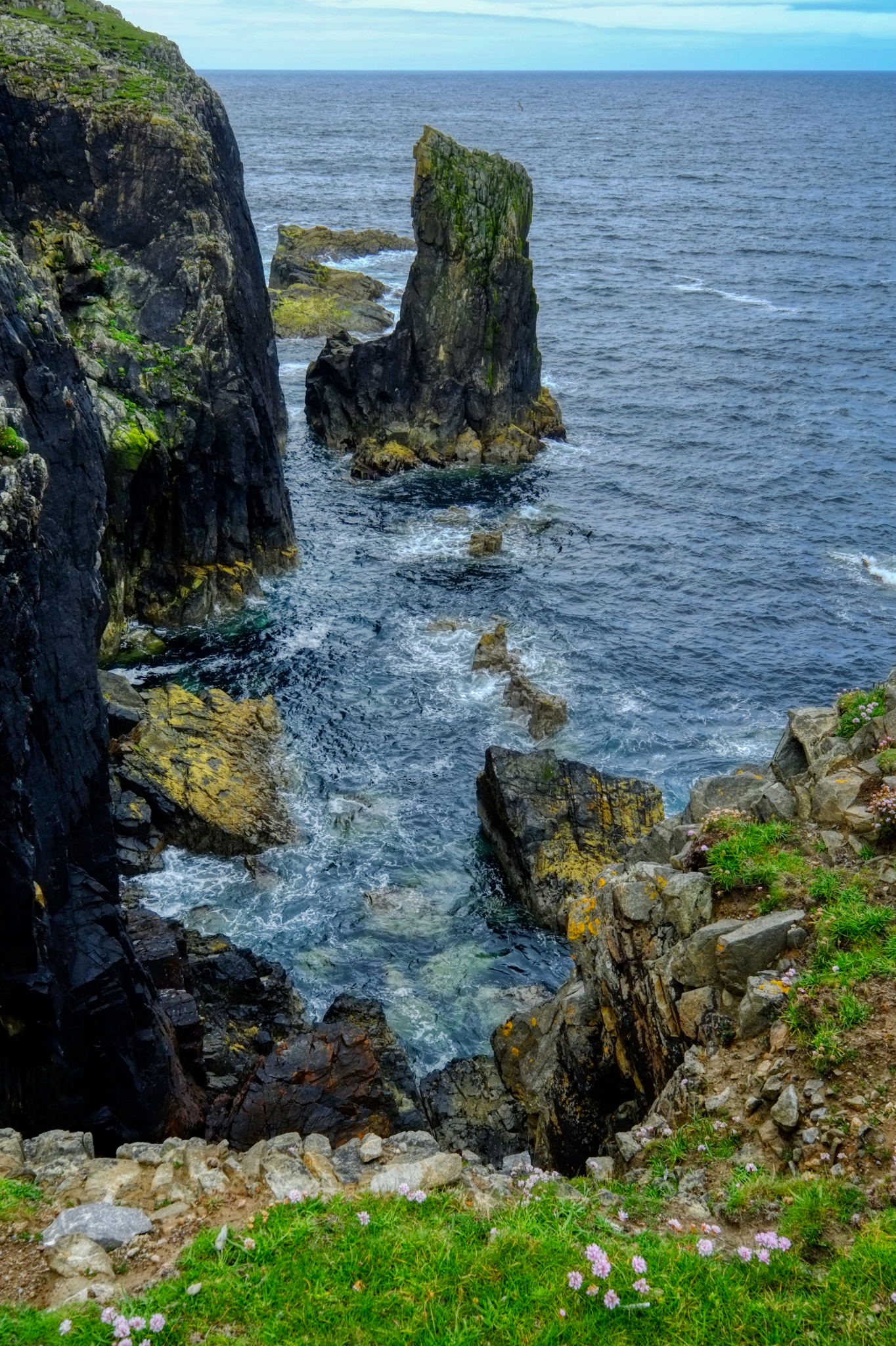 Fantastic cliff top views at the northernmost tip of the Hebrides.
Fantastic cliff top views at the northernmost tip of the Hebrides.
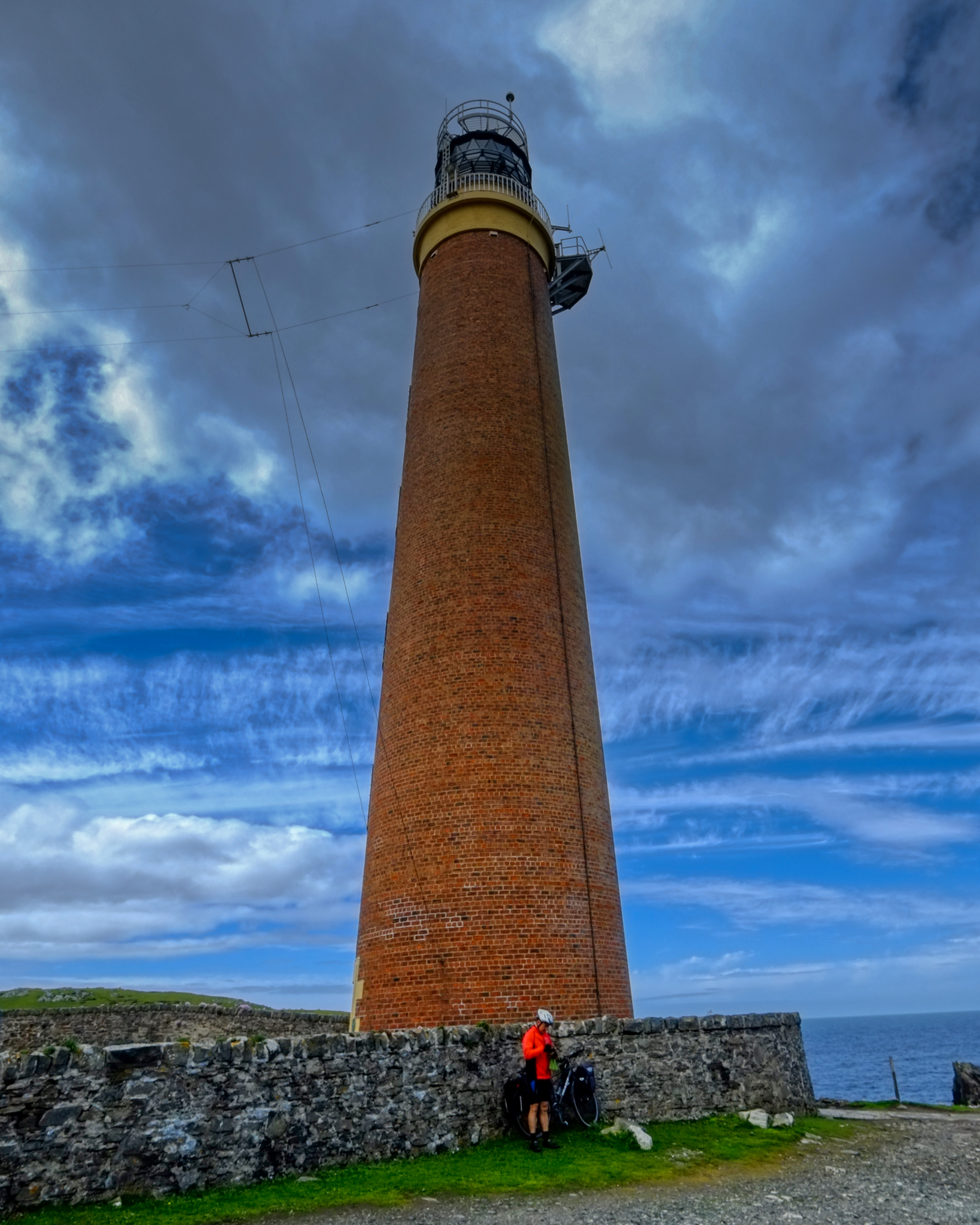 A lighthouse sits at the tip of the Isle of Lewis and Harris. This man rode his bicycle all the way from his home in London, England. He was going to turn around here and ride back down the east coast to get home.
A lighthouse sits at the tip of the Isle of Lewis and Harris. This man rode his bicycle all the way from his home in London, England. He was going to turn around here and ride back down the east coast to get home.
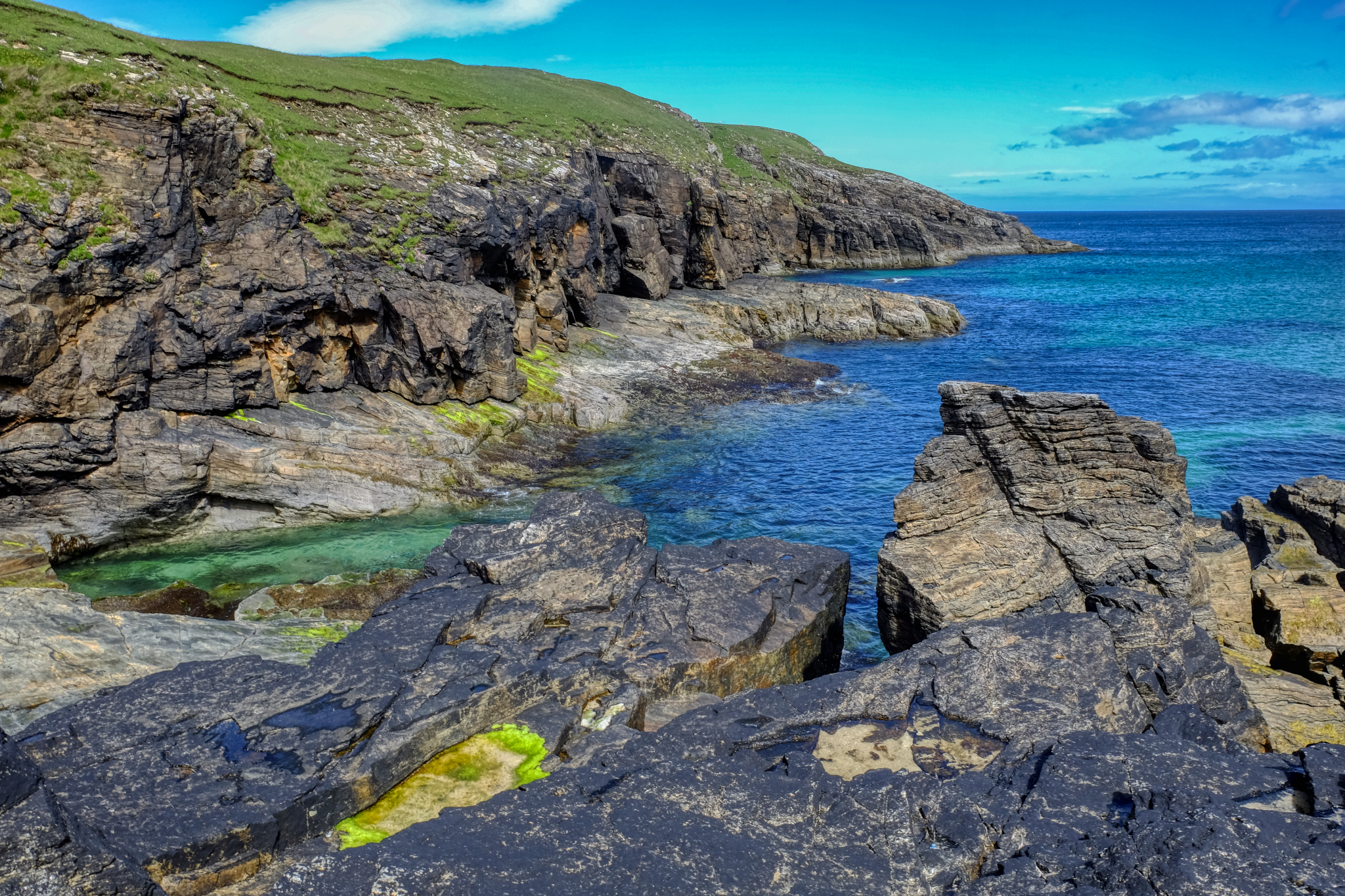 We drove back along the north coast as much as possible toward Stornaway and our ferry back to the mainland of Scotland.
We drove back along the north coast as much as possible toward Stornaway and our ferry back to the mainland of Scotland.
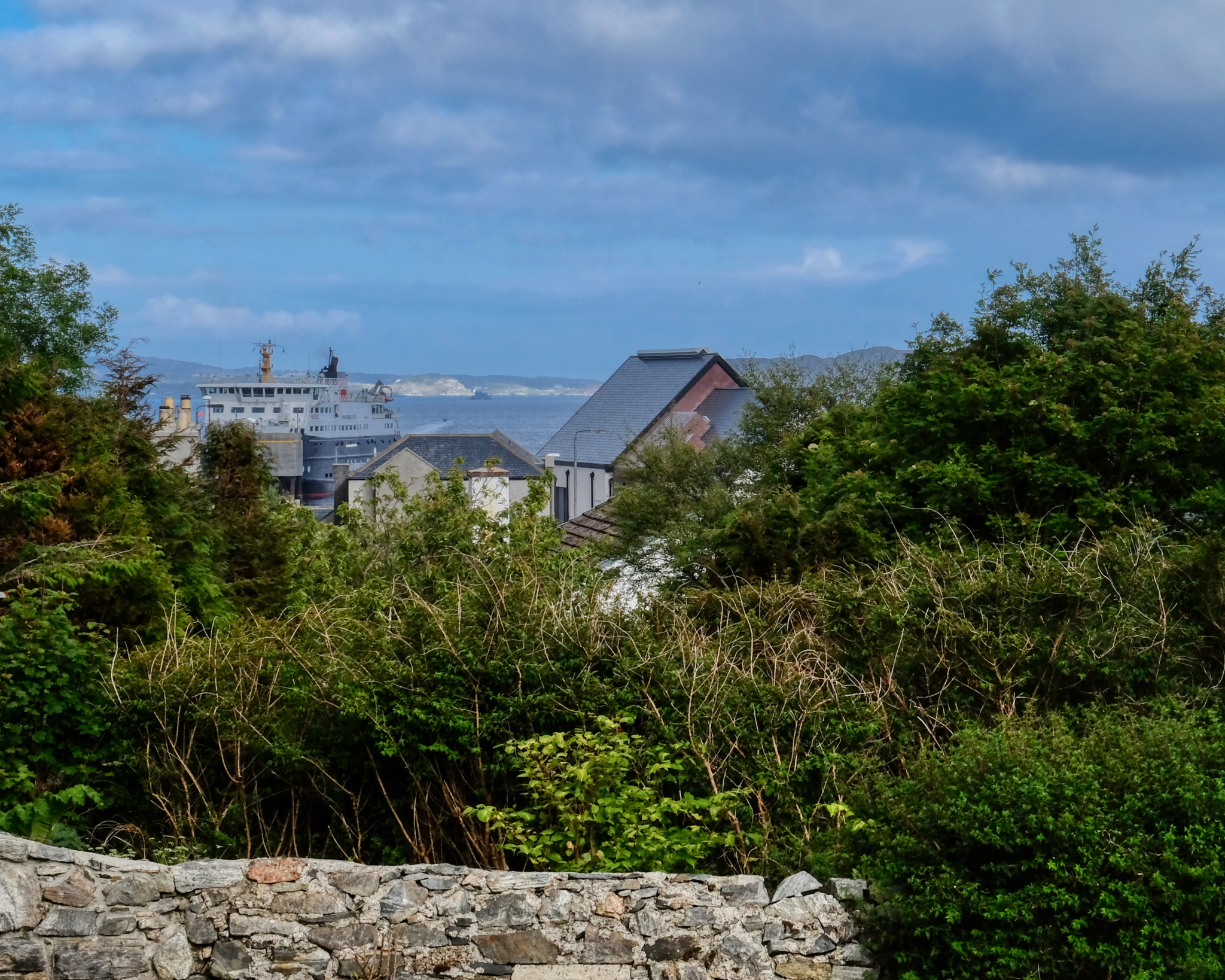 In Stornoway with our waiting ferry . . . but not until morning of the next day.
In Stornoway with our waiting ferry . . . but not until morning of the next day.
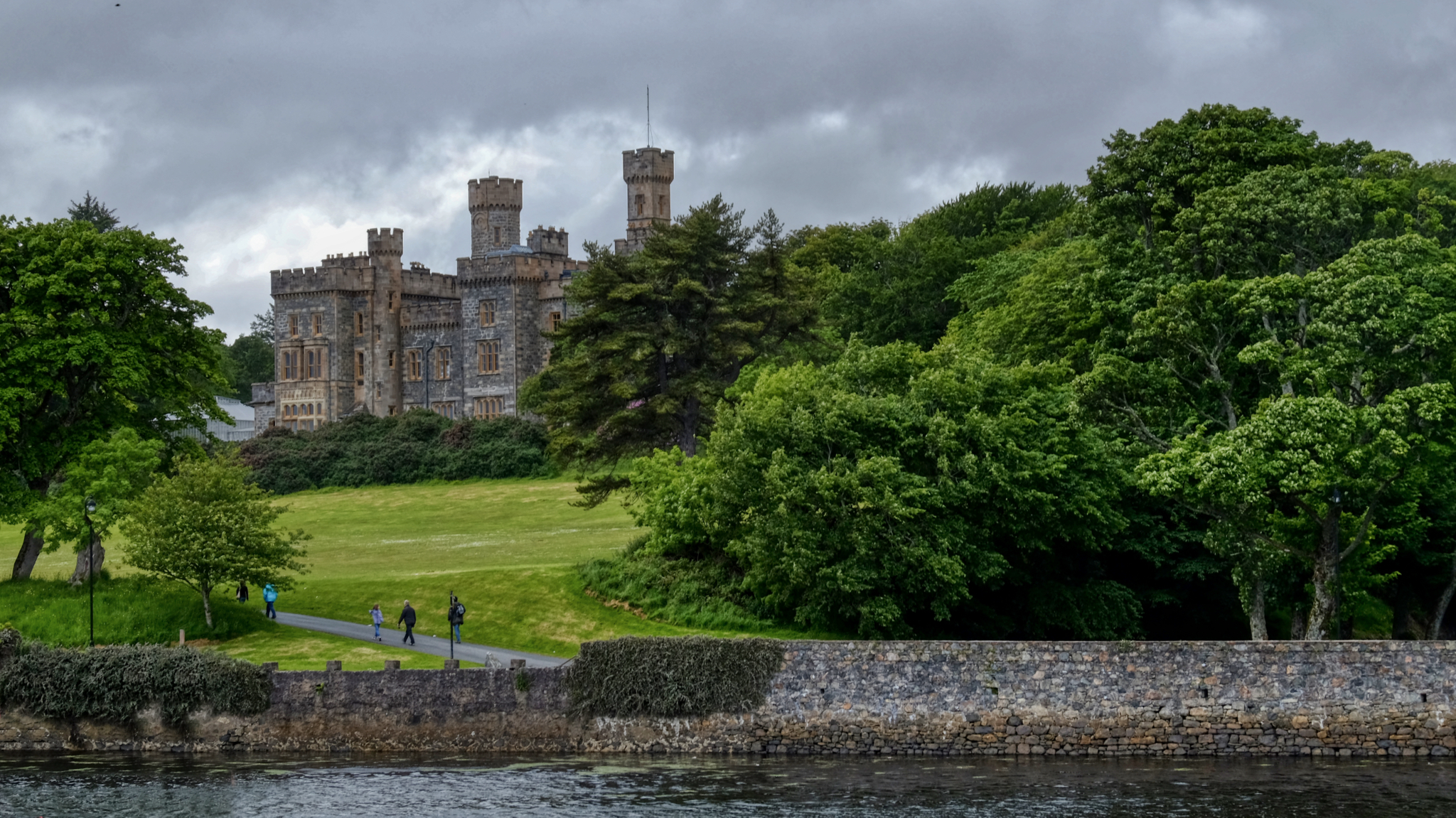 Lews Castle on Stornoway yacht harbour.
Lews Castle on Stornoway yacht harbour.
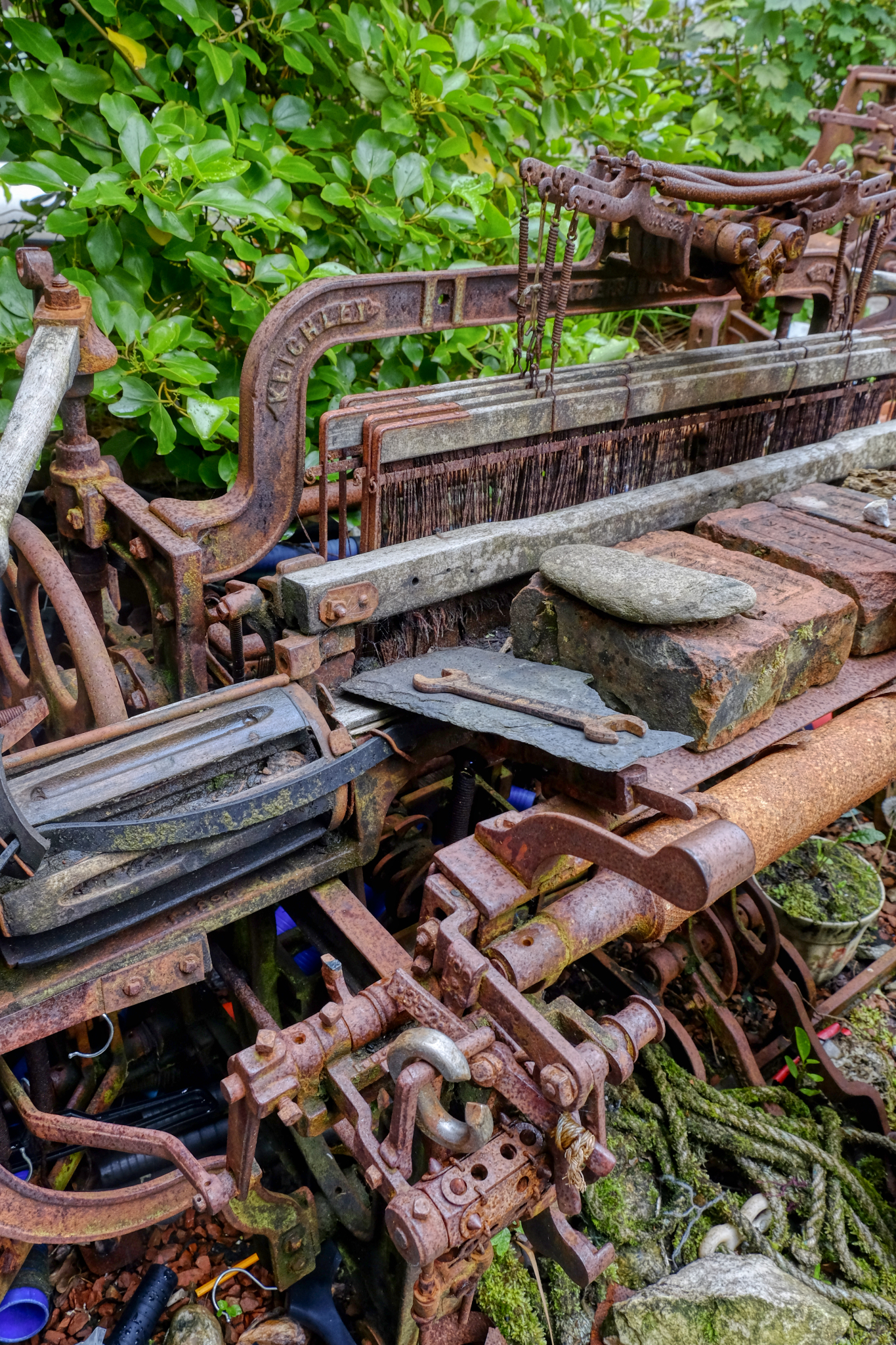 We explored the small town of Stornoway. I loved this old weathered rusty loom sitting outside a tweed museum.
We explored the small town of Stornoway. I loved this old weathered rusty loom sitting outside a tweed museum.
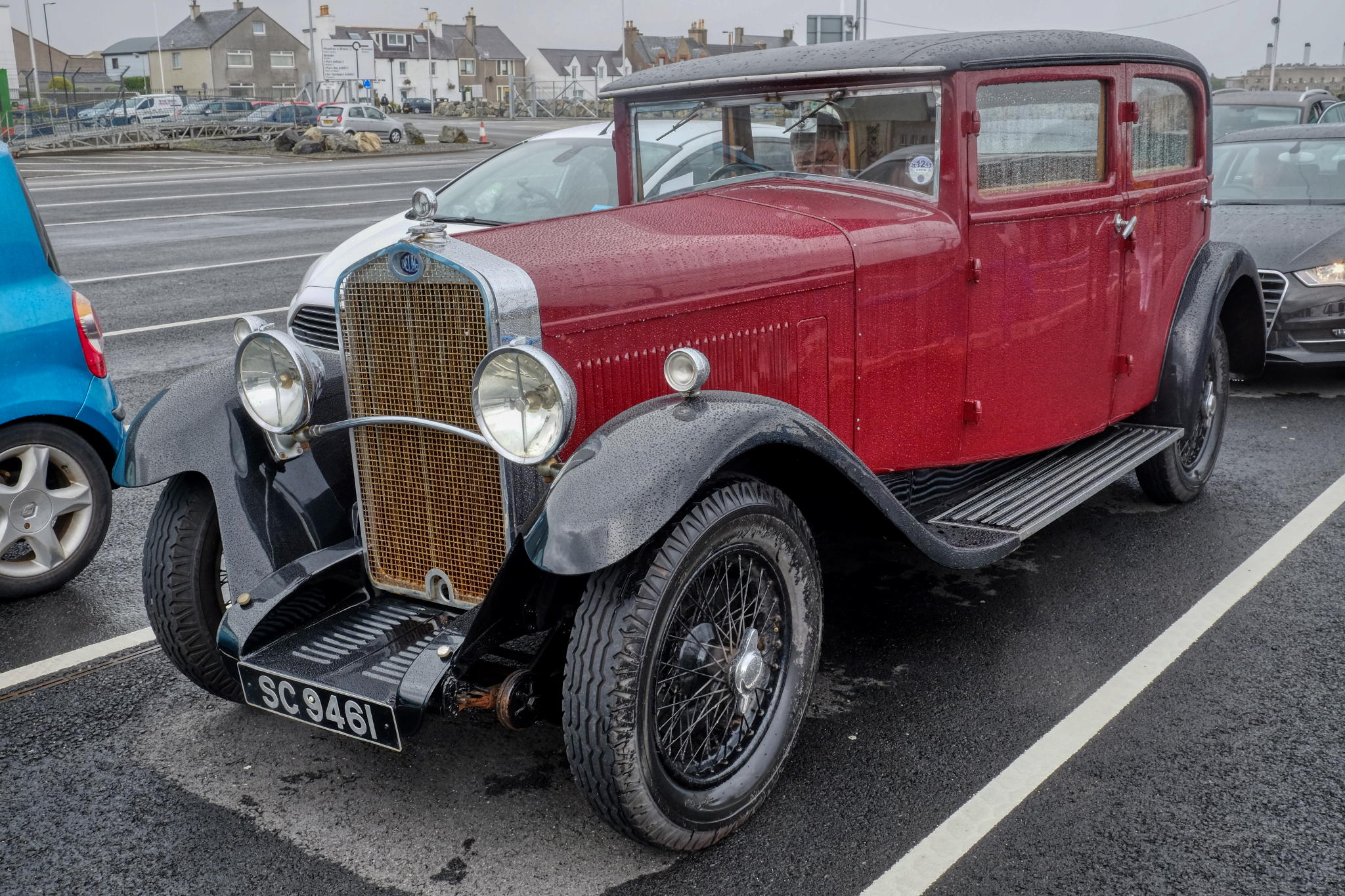 The next morning we joined the line-up at the ferry terminal for our passage home. Again, in the rain, there were many old classic cars waiting, including this Delage.
The next morning we joined the line-up at the ferry terminal for our passage home. Again, in the rain, there were many old classic cars waiting, including this Delage.
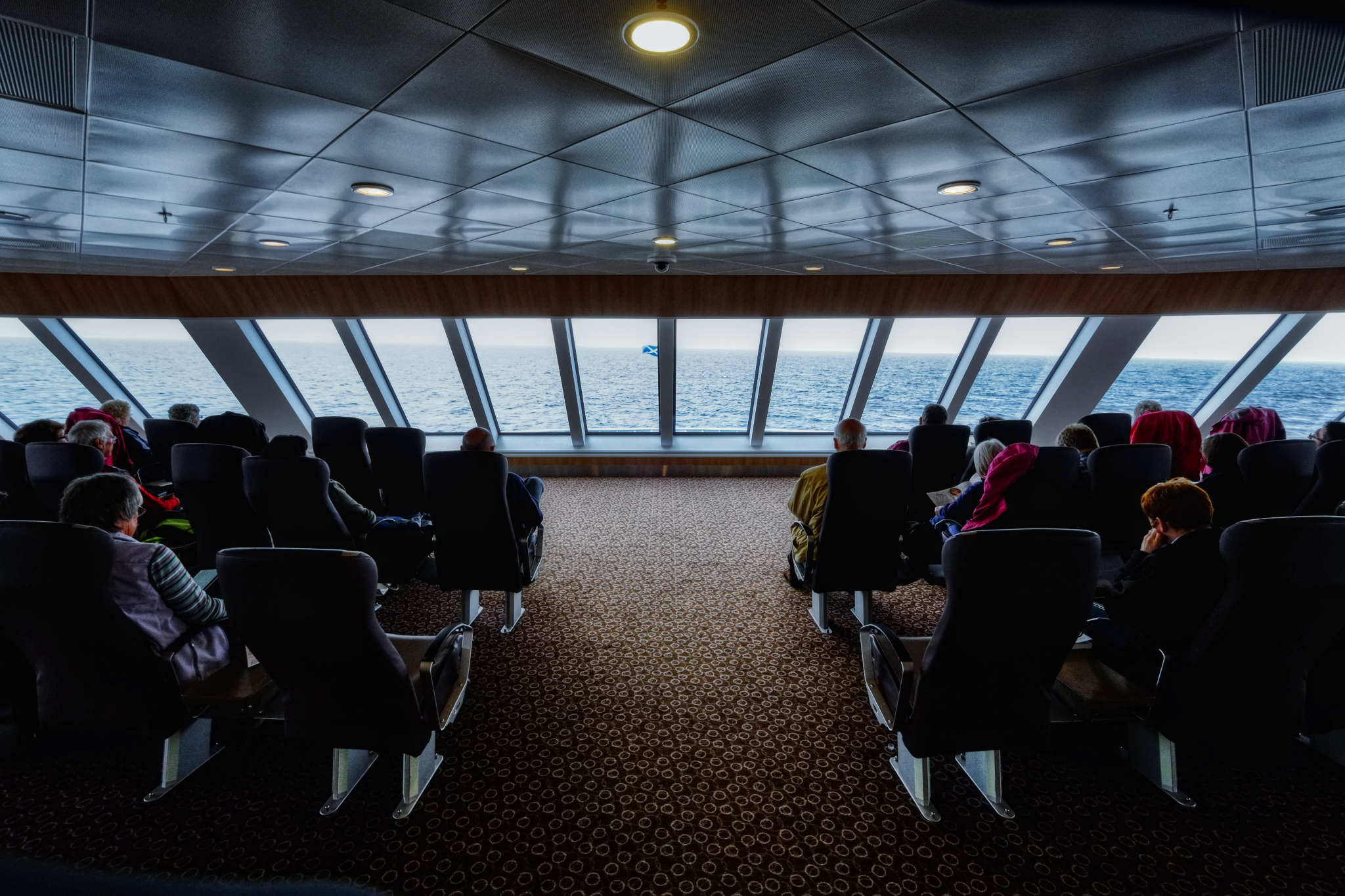 Heading home on the big ferry.
Heading home on the big ferry.
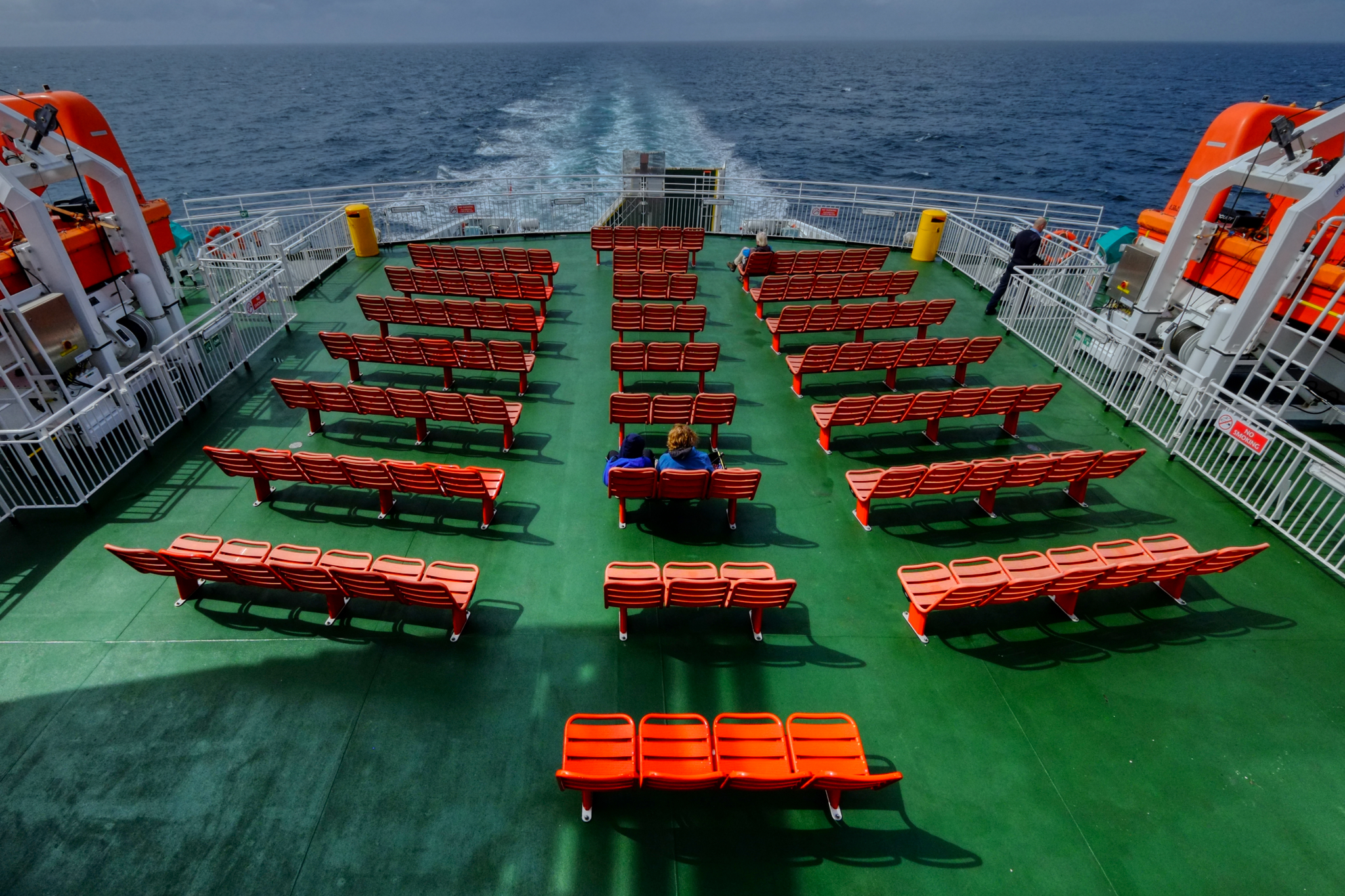 I spent most of my time on the return ferry trip sitting out n the wind on the aft deck. Glorious.
I spent most of my time on the return ferry trip sitting out n the wind on the aft deck. Glorious.
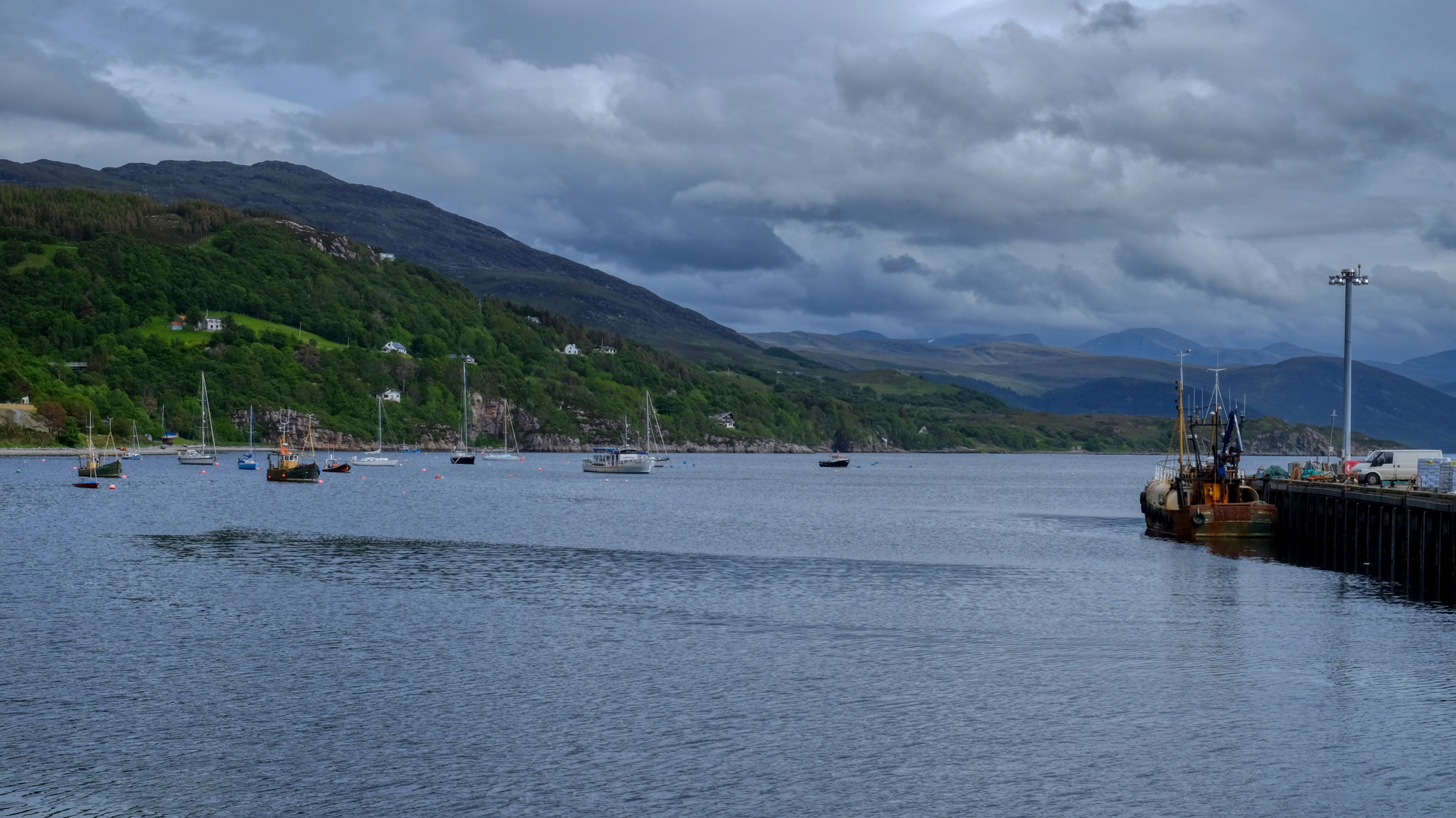 Arriving in Ullapool Harbour after a 3 hour cruise.
Arriving in Ullapool Harbour after a 3 hour cruise.
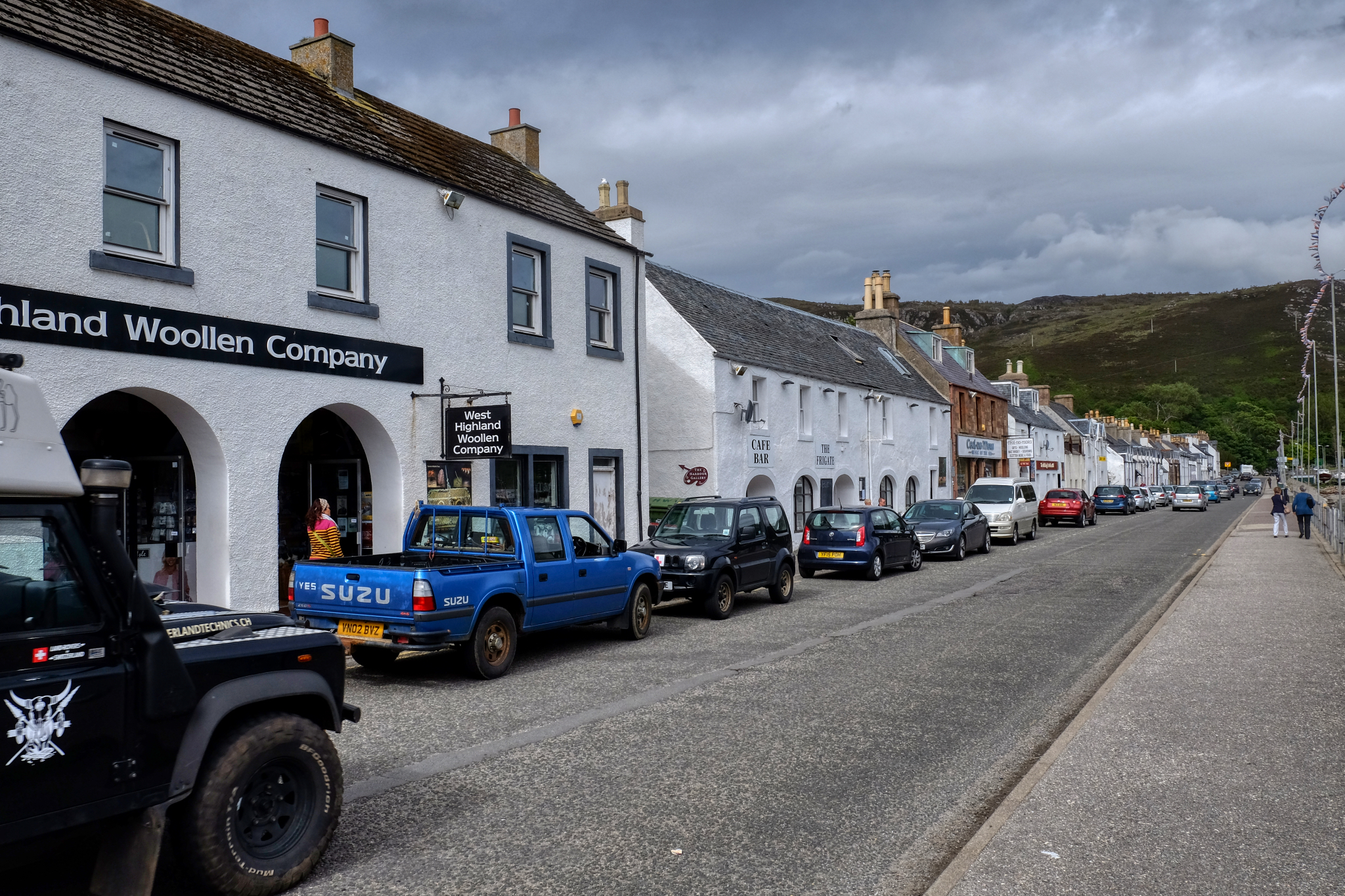 Harbour Street Ullapool.
Harbour Street Ullapool.
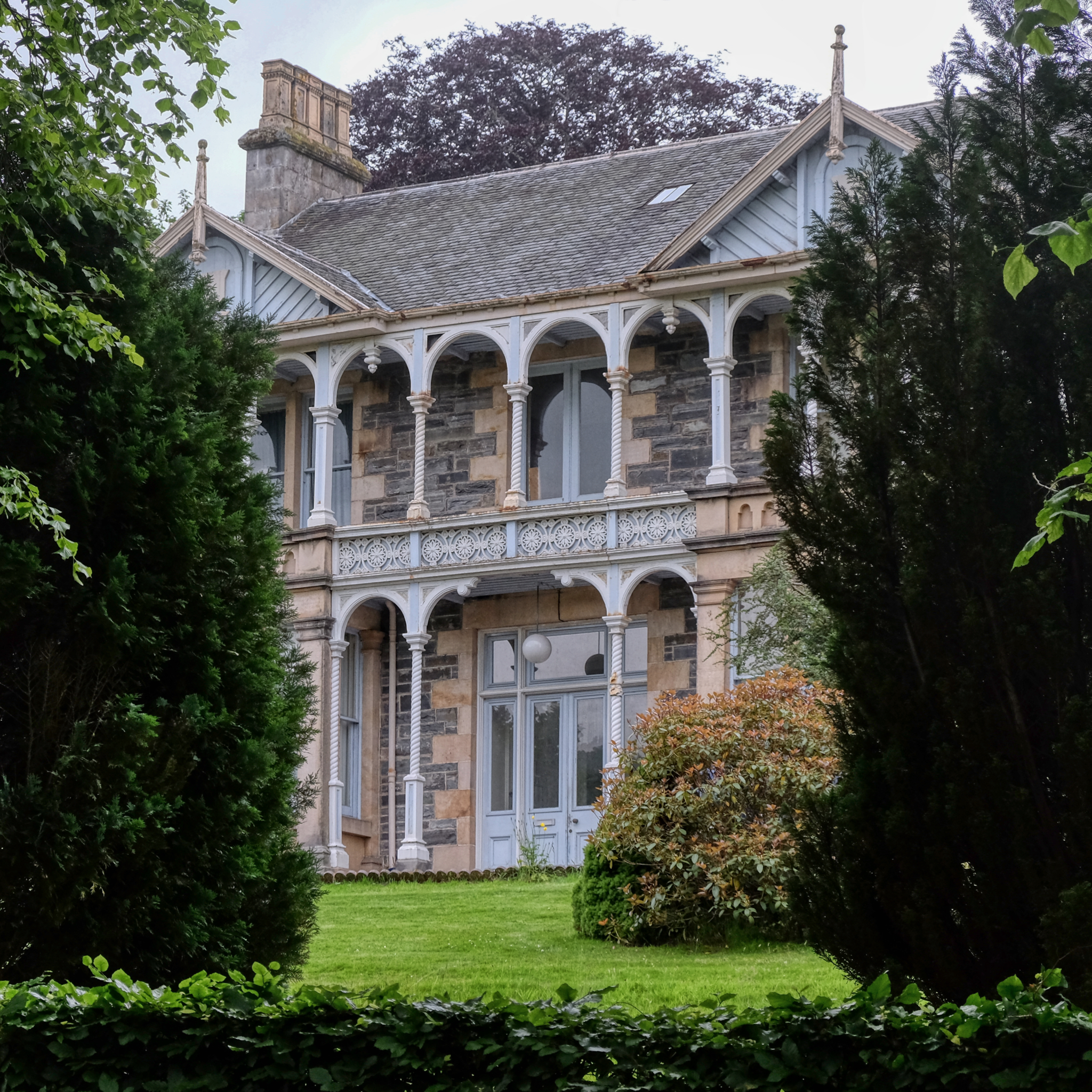 We stopped halfway home between Ullapool and Aberdeen at a rural hotel that turned out to be on a tour bus company hotel with a HUGE dining room full of French and Hungarian bus tourists. It was loud and fun!
We stopped halfway home between Ullapool and Aberdeen at a rural hotel that turned out to be on a tour bus company hotel with a HUGE dining room full of French and Hungarian bus tourists. It was loud and fun!
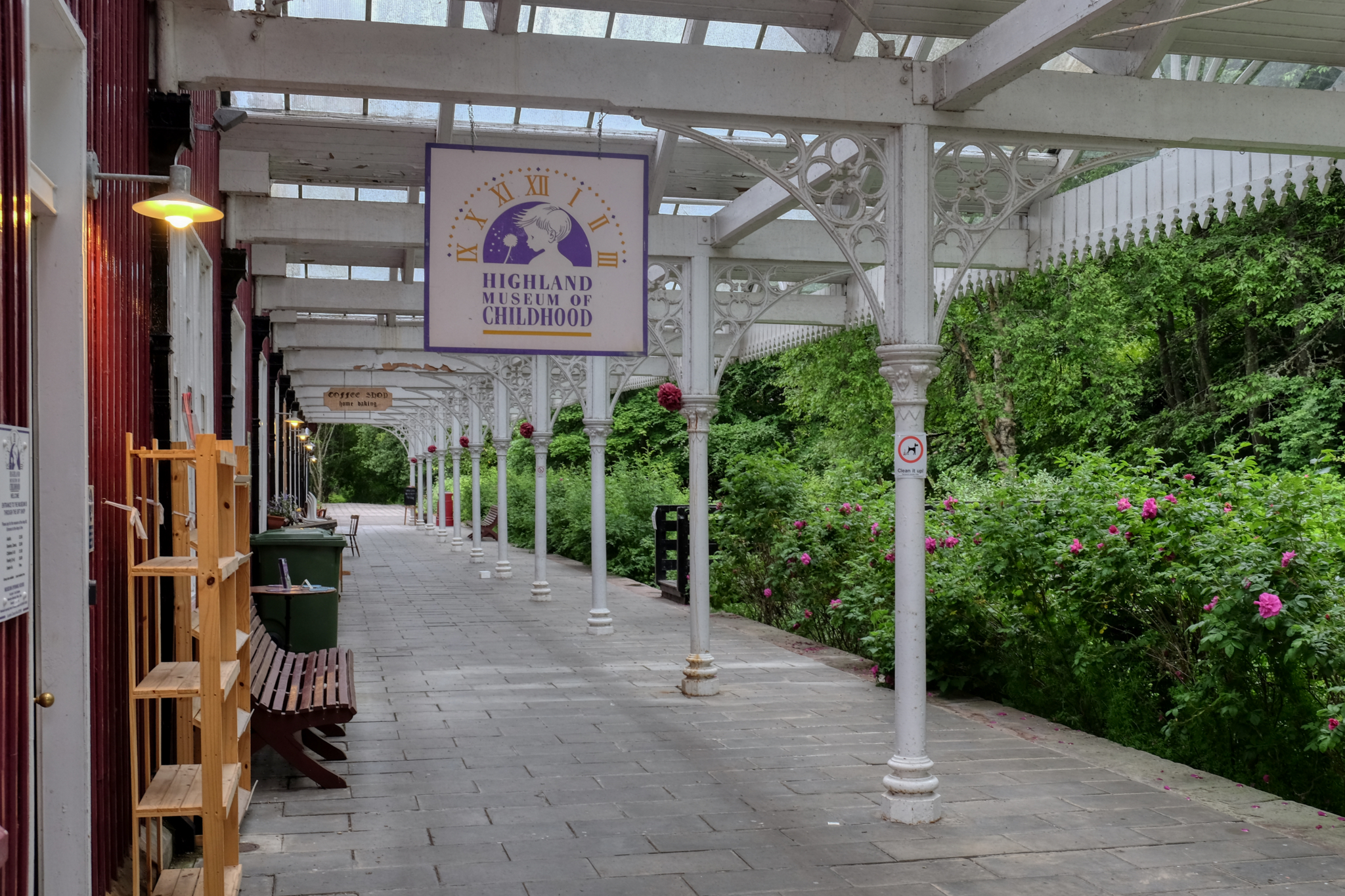 We walked around the small village near the tourist hotel and discovered the Highland Museum of Childhood . . . an interesting name. It was closed . . . like my childhood.
We walked around the small village near the tourist hotel and discovered the Highland Museum of Childhood . . . an interesting name. It was closed . . . like my childhood.
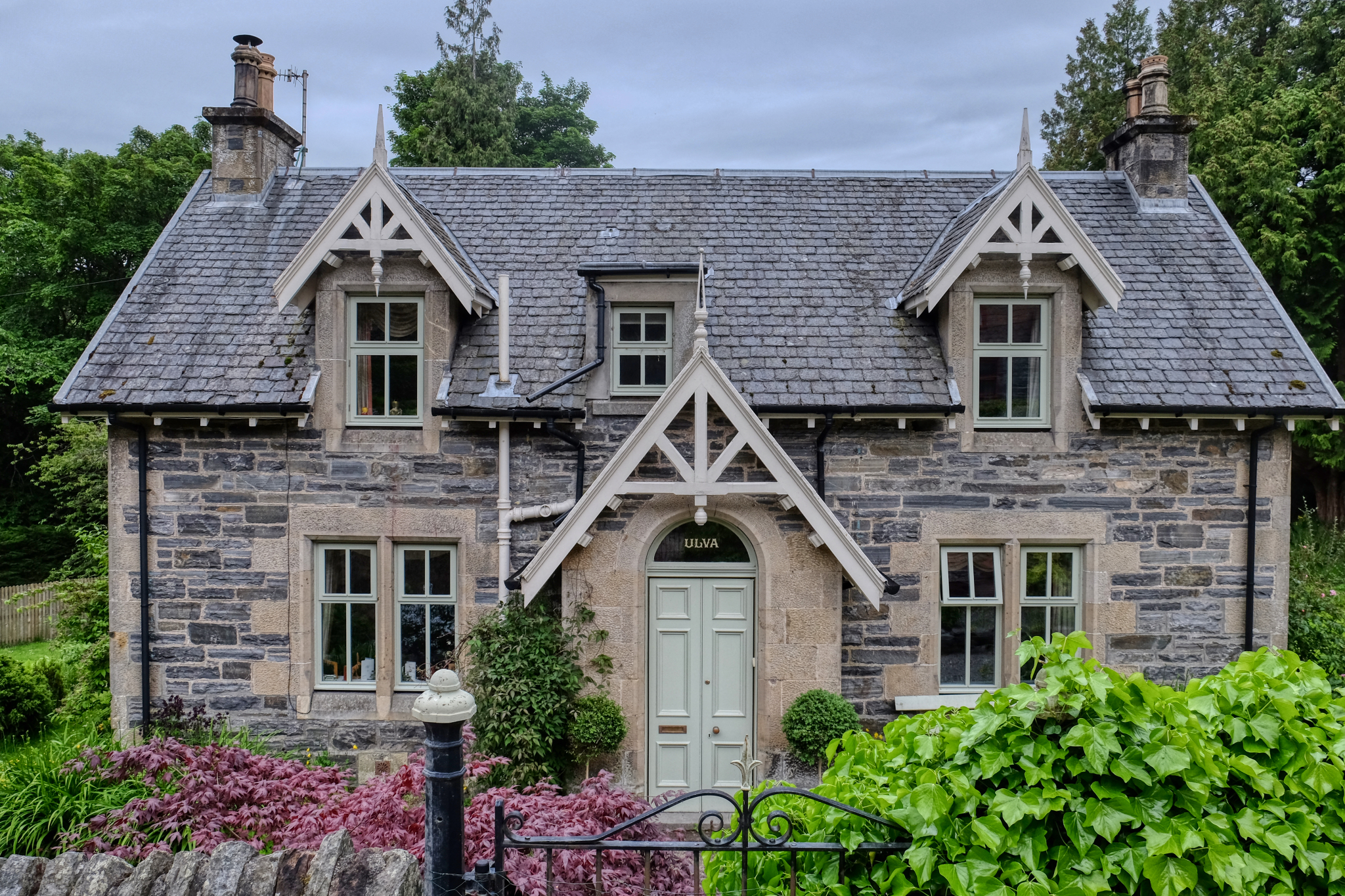 All the houses in the village were named. Ulva . . . named after an island in the Inner Hebrides of Scotland, off the west coast of the Isle of Mull.
All the houses in the village were named. Ulva . . . named after an island in the Inner Hebrides of Scotland, off the west coast of the Isle of Mull.
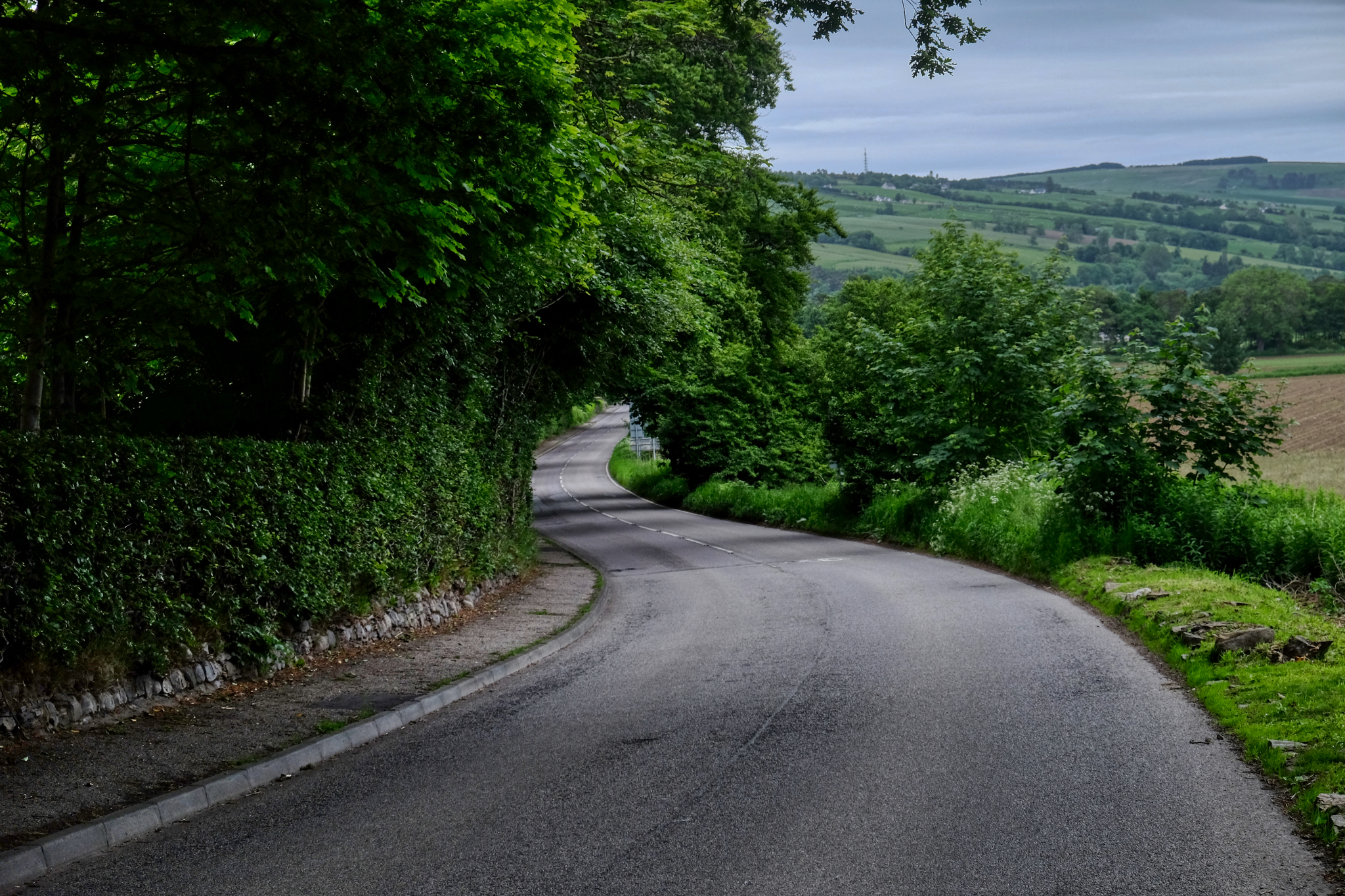 The next morning we were off down the Scottish country roads toward our home in Aberdeen.
The next morning we were off down the Scottish country roads toward our home in Aberdeen.
Poland: Gdansk is a beautiful vacation destination!
 Friday, April 24, 2020 at 5:40PM
Friday, April 24, 2020 at 5:40PM My wife and I visited Poland (Kraków and Gdańsk) in the summer of 2014. This entry is of the three days we spent in Gdańsk, while there is another entry for Kraków HERE.
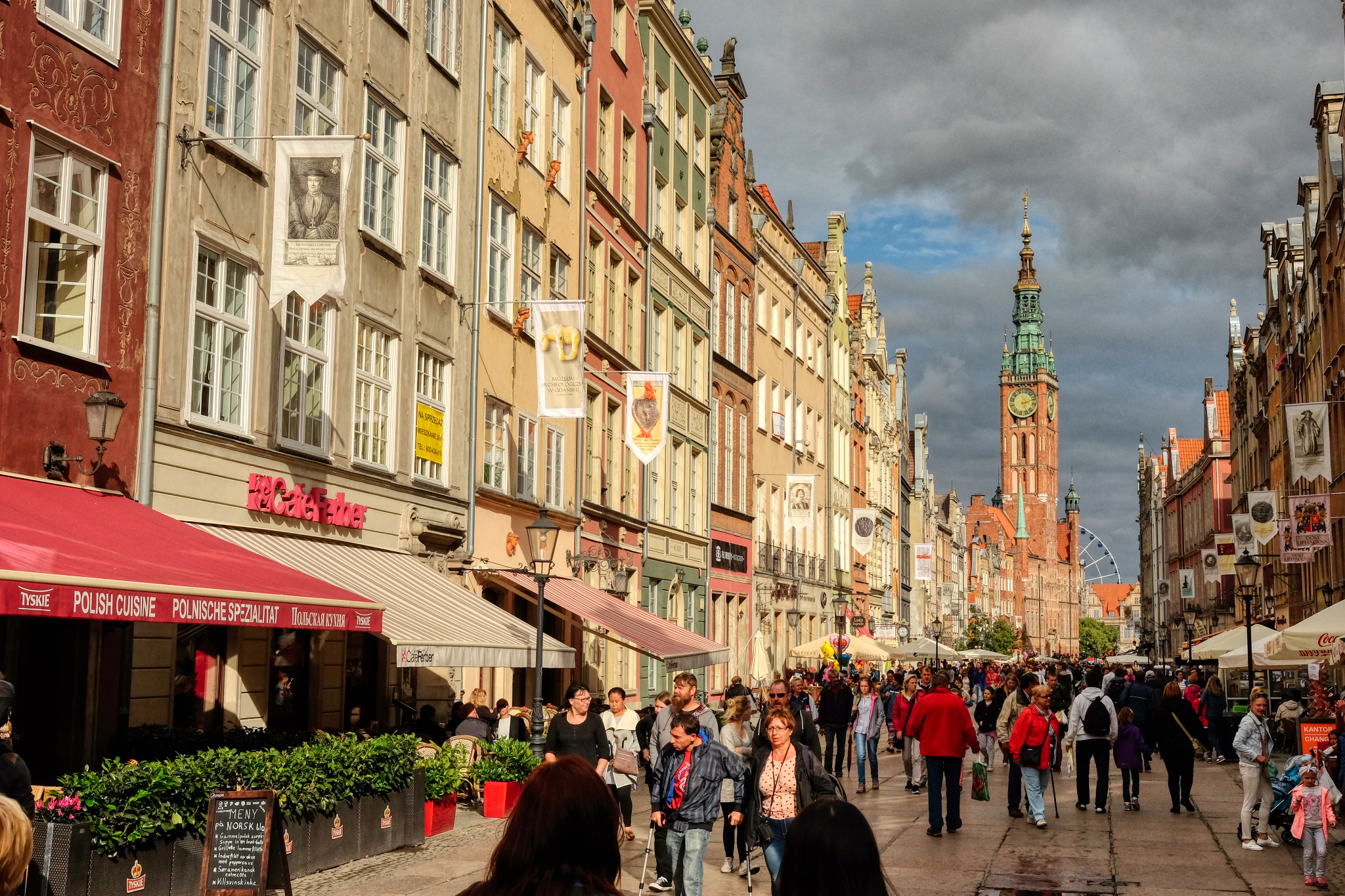 Gdańsk is one of the most beautiful cities I have ever visited . . . and as good luck would have it, we visited during a street festival!
Gdańsk is one of the most beautiful cities I have ever visited . . . and as good luck would have it, we visited during a street festival!
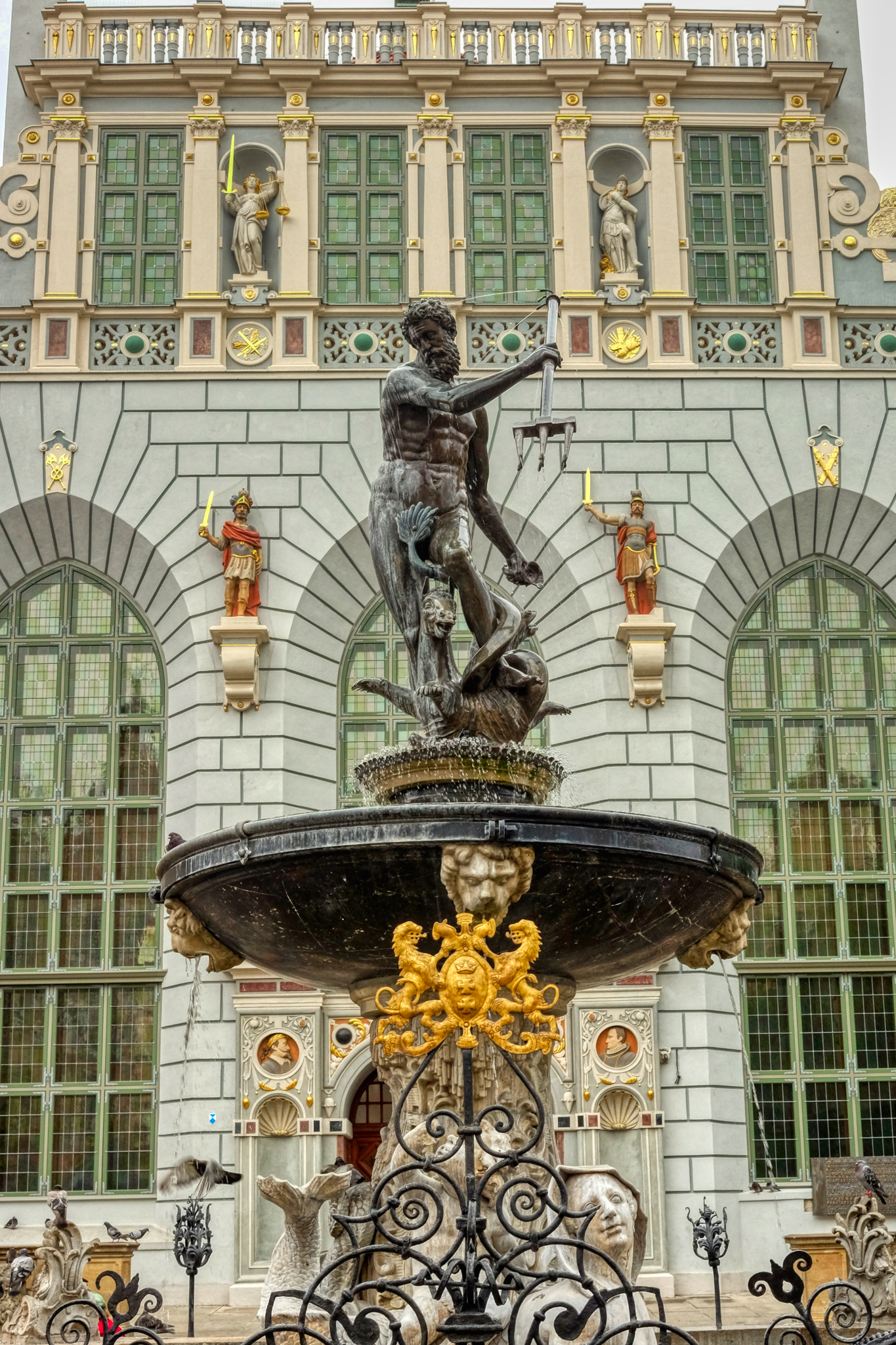 The statue to Neptune.
The statue to Neptune.
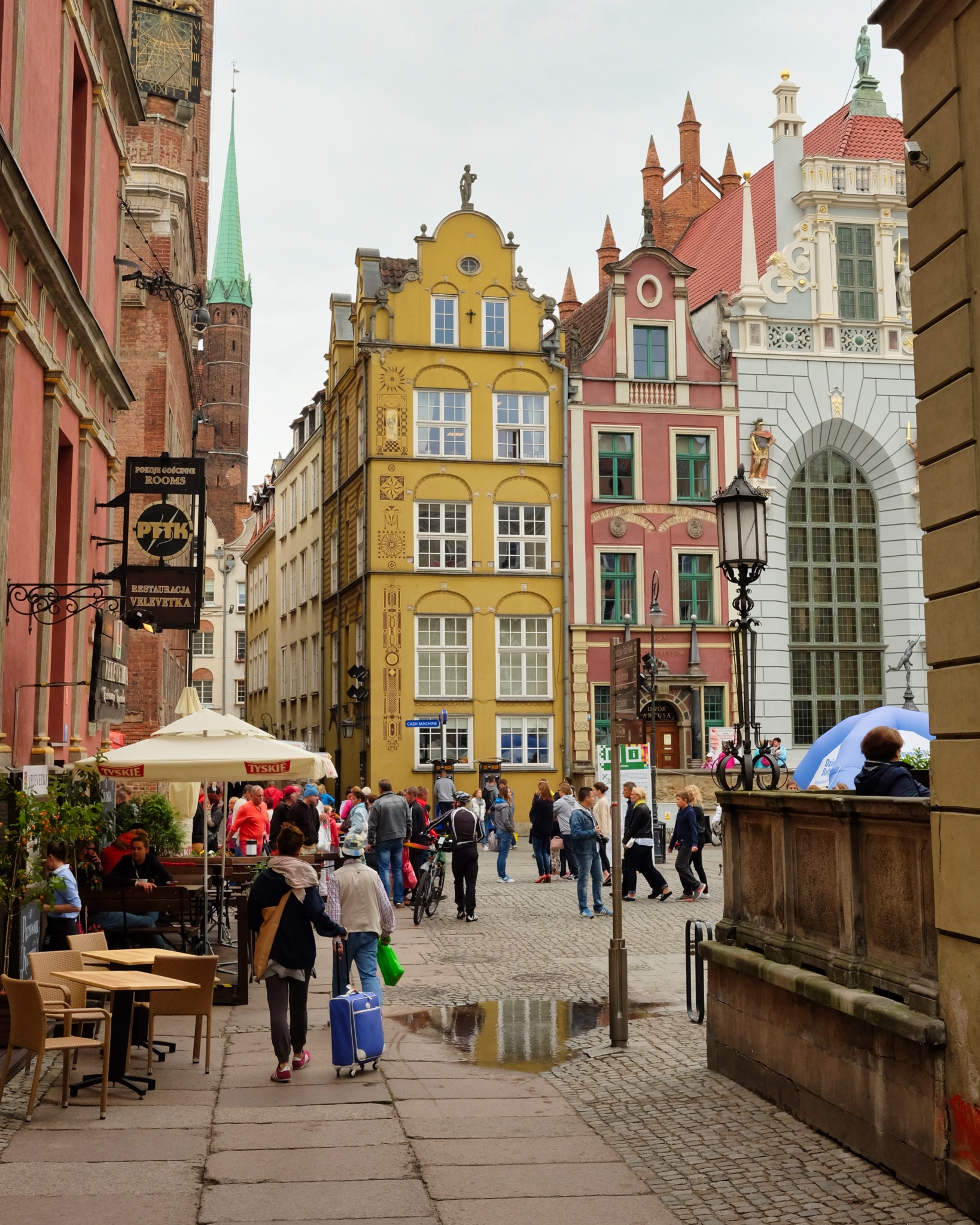 One of many small squares in the city center. The architectural style was surprisingly . . . . Dutch.
One of many small squares in the city center. The architectural style was surprisingly . . . . Dutch.
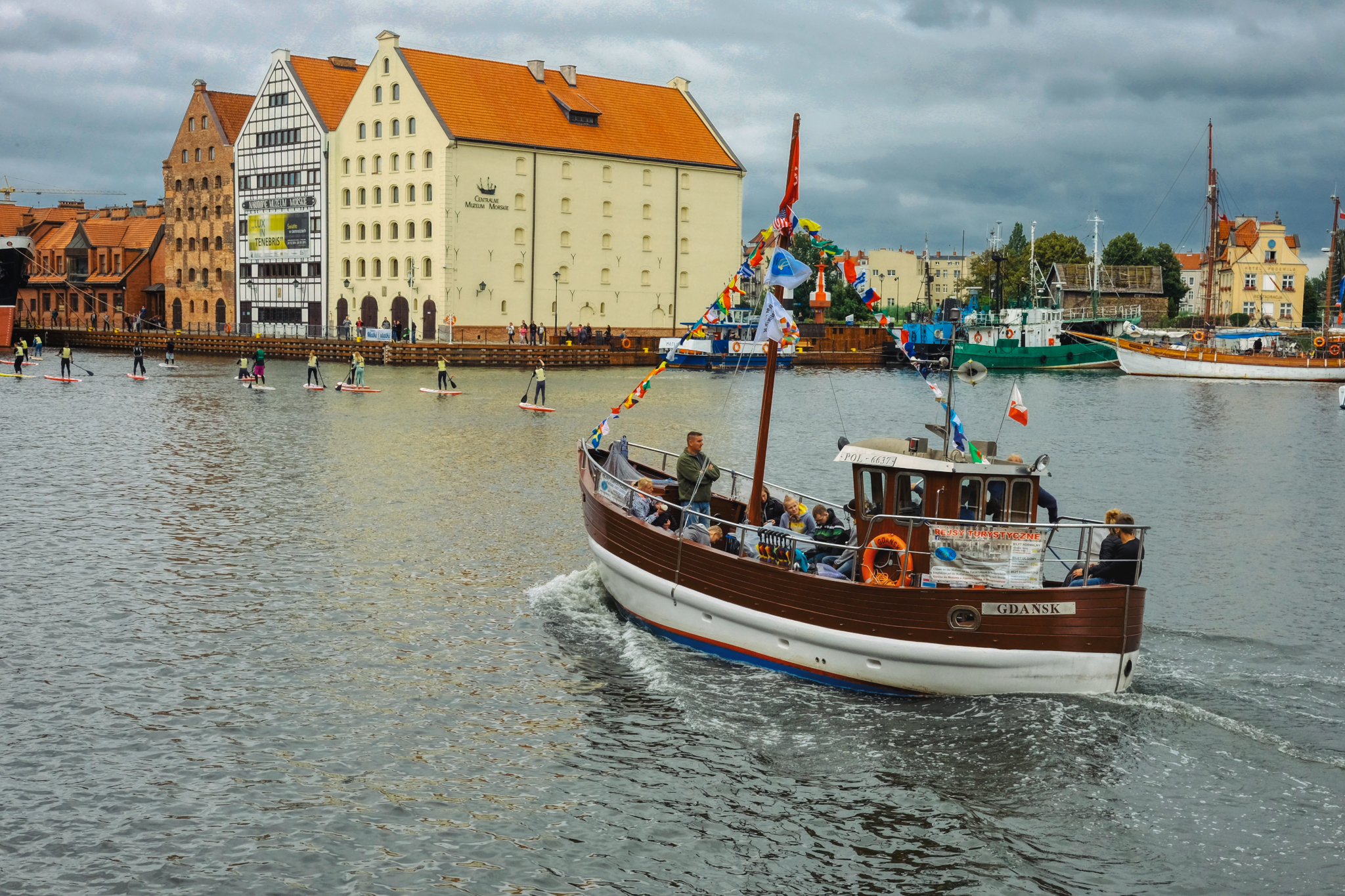 Gdańsk is on the Motlawa River estuary.
Gdańsk is on the Motlawa River estuary.
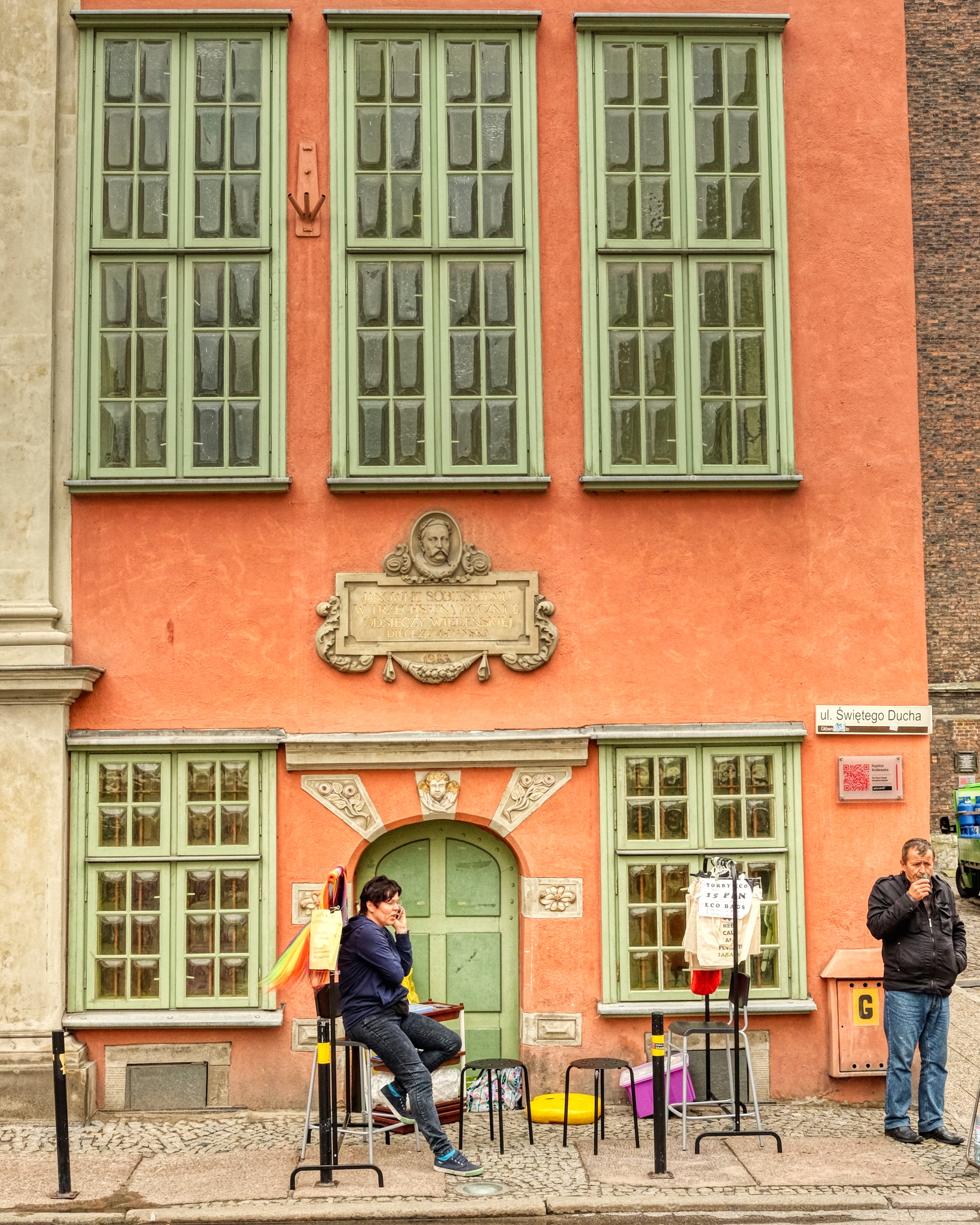 An old city filled with wonderful architecture.
An old city filled with wonderful architecture.
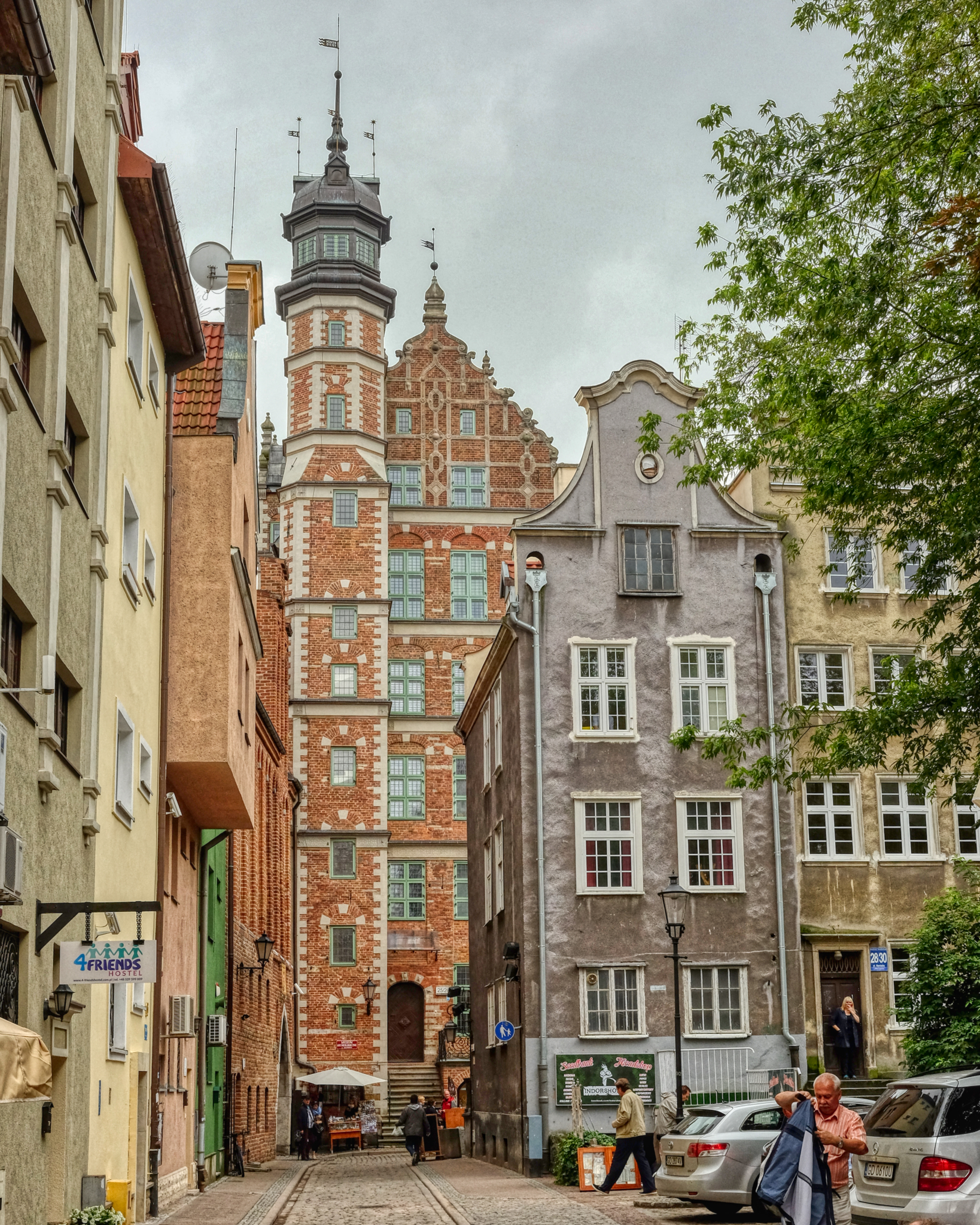 The architecture of Gdańsk tells a story: "Parts of the historic old city of Gdańsk, which had suffered large-scale destruction during the war, were rebuilt during the 1950s and 1960s. The reconstruction was not tied to the city's pre-war appearance, but instead was politically motivated as a means of culturally cleansing and destroying all traces of German influence from the city. Any traces of German tradition were ignored by the communists, suppressed, or regarded as Prussian barbarism only worthy of demolition, while communist and Flemish/Dutch, Italian and French influences were used to replace the historically accurate Germanic architecture which the city was built upon since the 14th century. [Citation]
The architecture of Gdańsk tells a story: "Parts of the historic old city of Gdańsk, which had suffered large-scale destruction during the war, were rebuilt during the 1950s and 1960s. The reconstruction was not tied to the city's pre-war appearance, but instead was politically motivated as a means of culturally cleansing and destroying all traces of German influence from the city. Any traces of German tradition were ignored by the communists, suppressed, or regarded as Prussian barbarism only worthy of demolition, while communist and Flemish/Dutch, Italian and French influences were used to replace the historically accurate Germanic architecture which the city was built upon since the 14th century. [Citation]
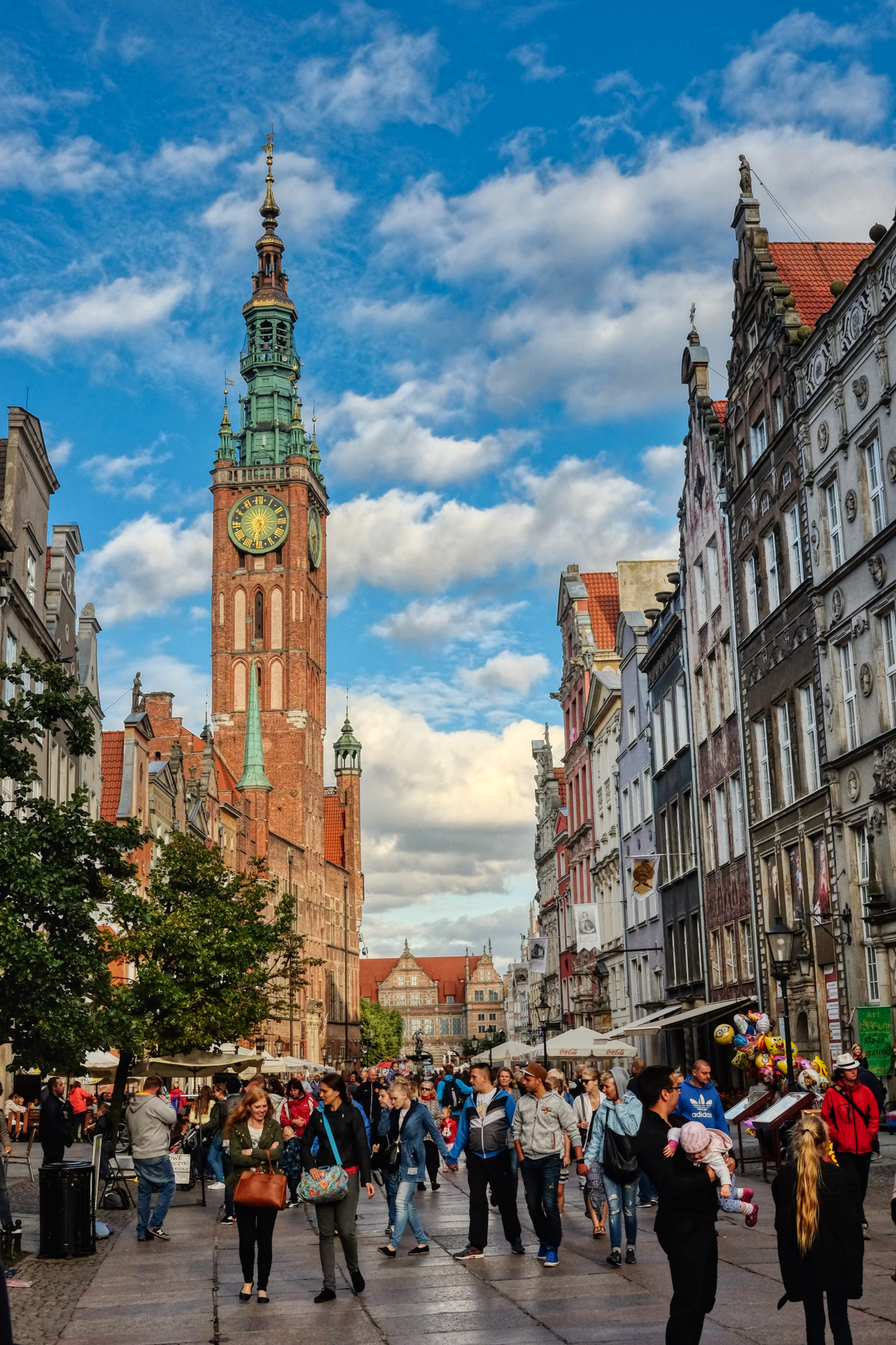 The Long Street with the old (circa 1327) City Hall towering over it.
The Long Street with the old (circa 1327) City Hall towering over it.
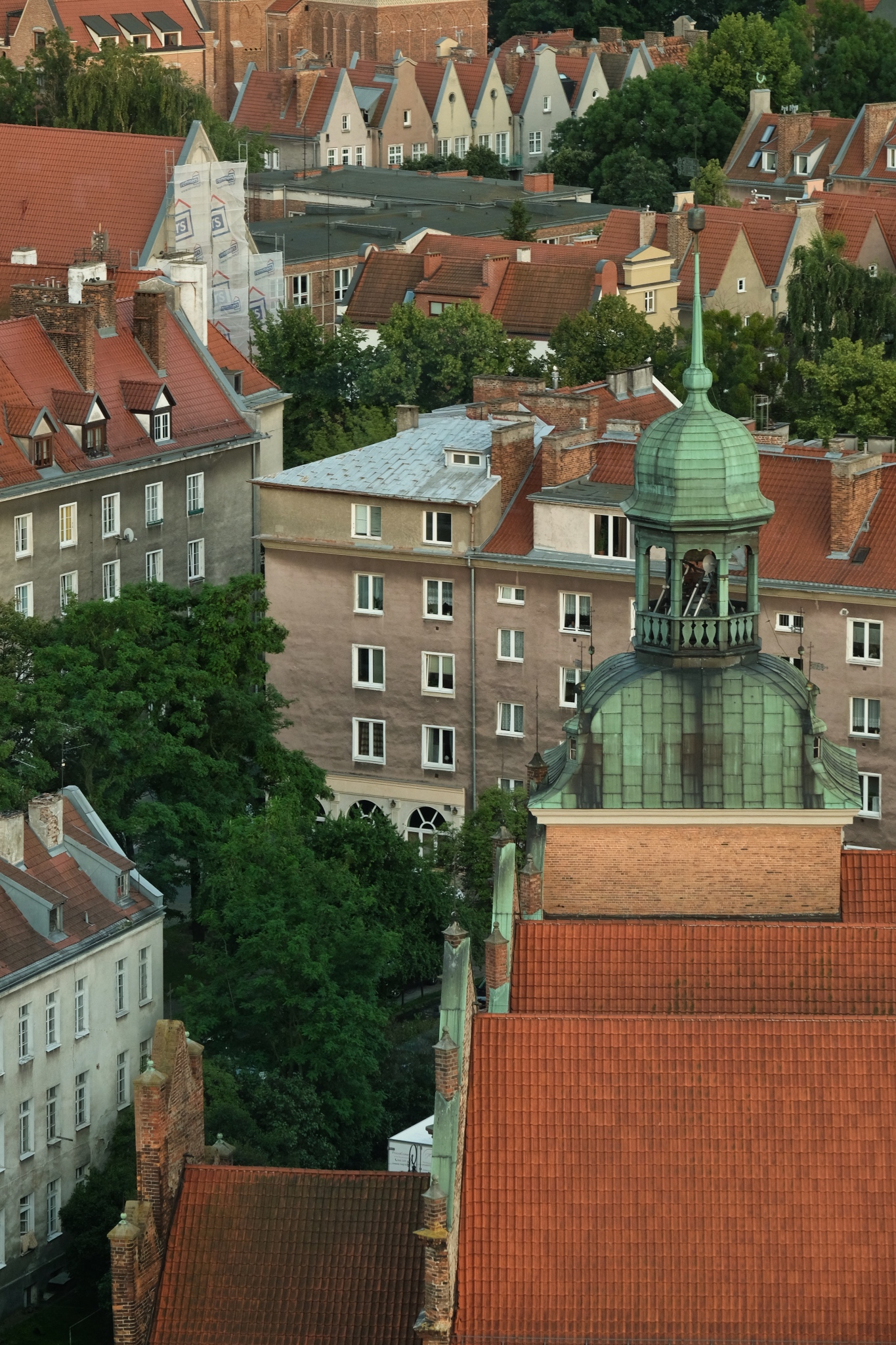 Although I would have preferred to stay at an old 'boutique hotel,' we instead stayed at a modern 25 story hotel. The plus side of the modern hotel were the views over the city.
Although I would have preferred to stay at an old 'boutique hotel,' we instead stayed at a modern 25 story hotel. The plus side of the modern hotel were the views over the city.
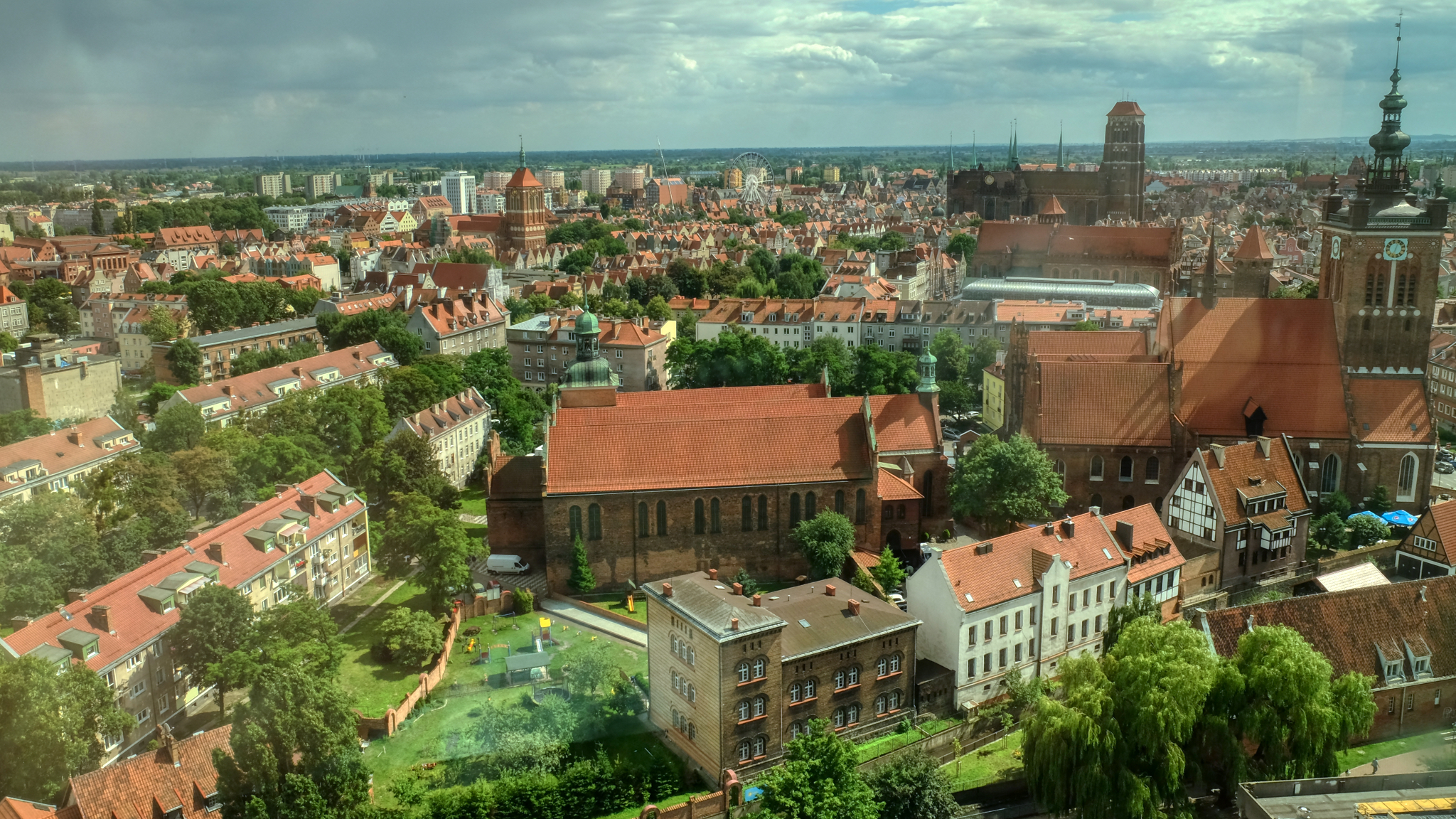
Gdańsk was reduced to piles of stone and brick during WWII by Allied and Soviet bombers. Almost all of what you see here was reconstructed during the 1950s and 1960s.
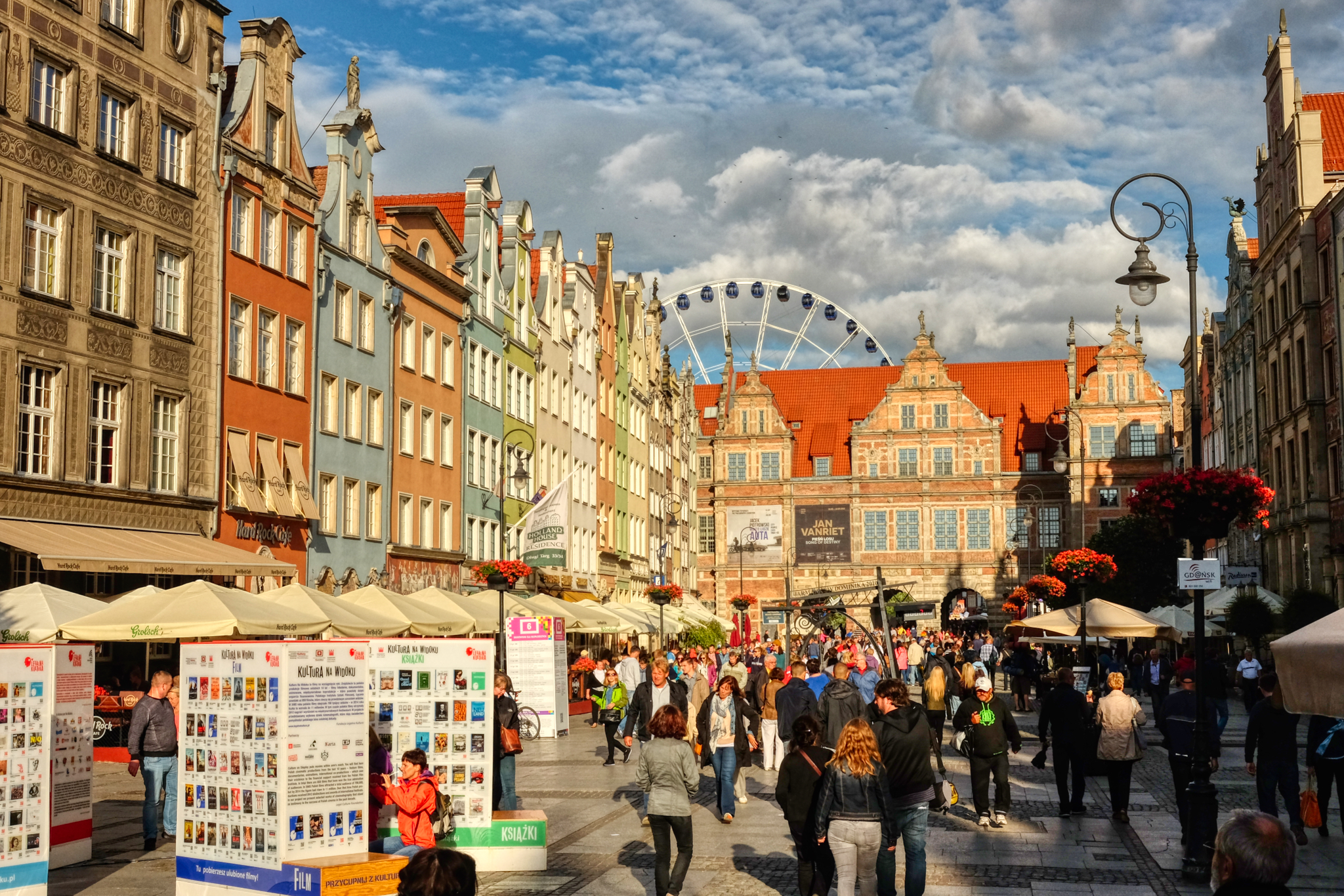 As luck would have it, we arrived in Gdańsk right in the middle of the annual St. Dominic's Fair. With 750 years of successful tradition, the history of the Fair goes back to the year 1260, when it was established by the decree of Pope Alexander IV.
As luck would have it, we arrived in Gdańsk right in the middle of the annual St. Dominic's Fair. With 750 years of successful tradition, the history of the Fair goes back to the year 1260, when it was established by the decree of Pope Alexander IV.
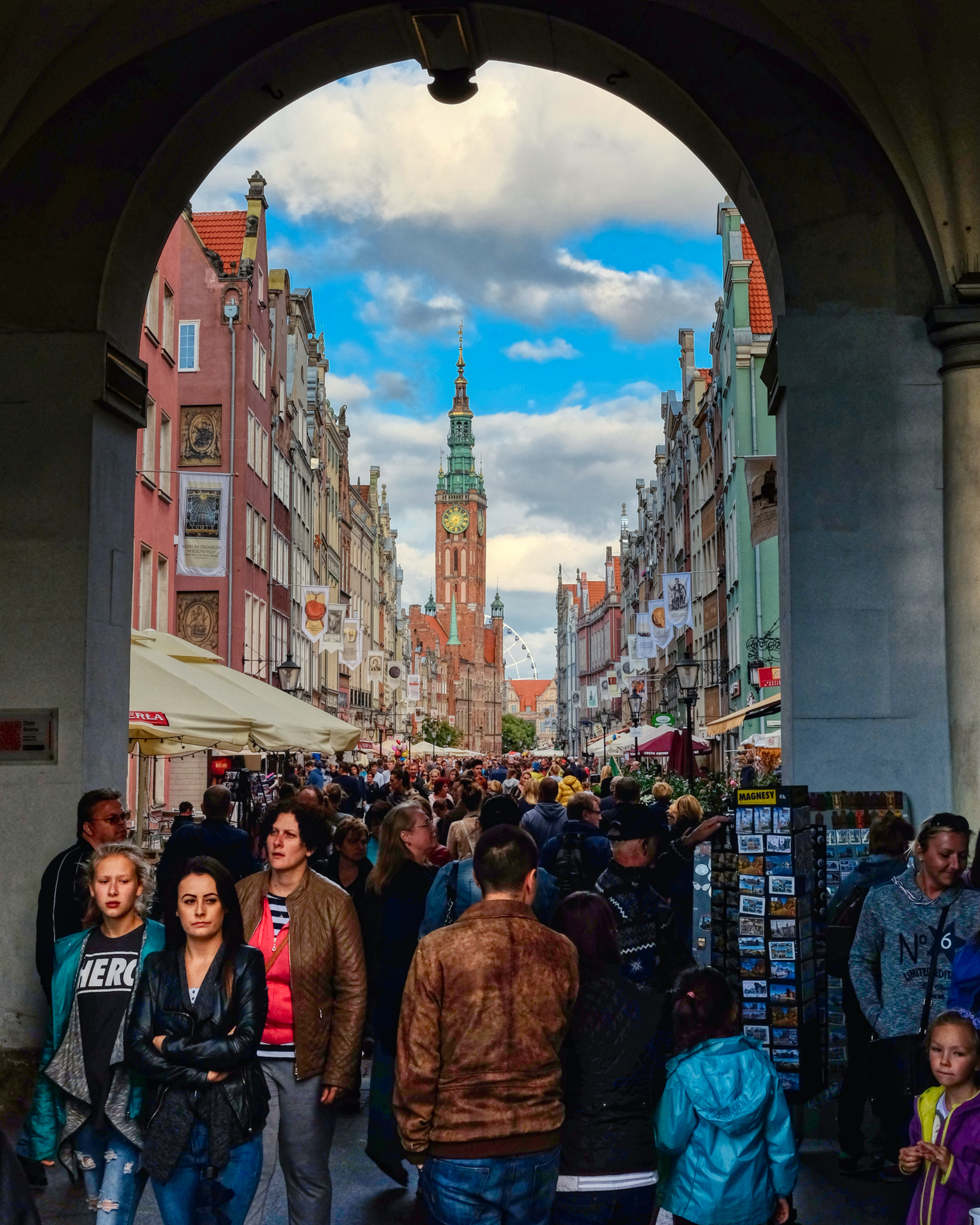 St. Dominic's Fair brought tourists from all over Poland, Europe, and the Far East.
St. Dominic's Fair brought tourists from all over Poland, Europe, and the Far East.
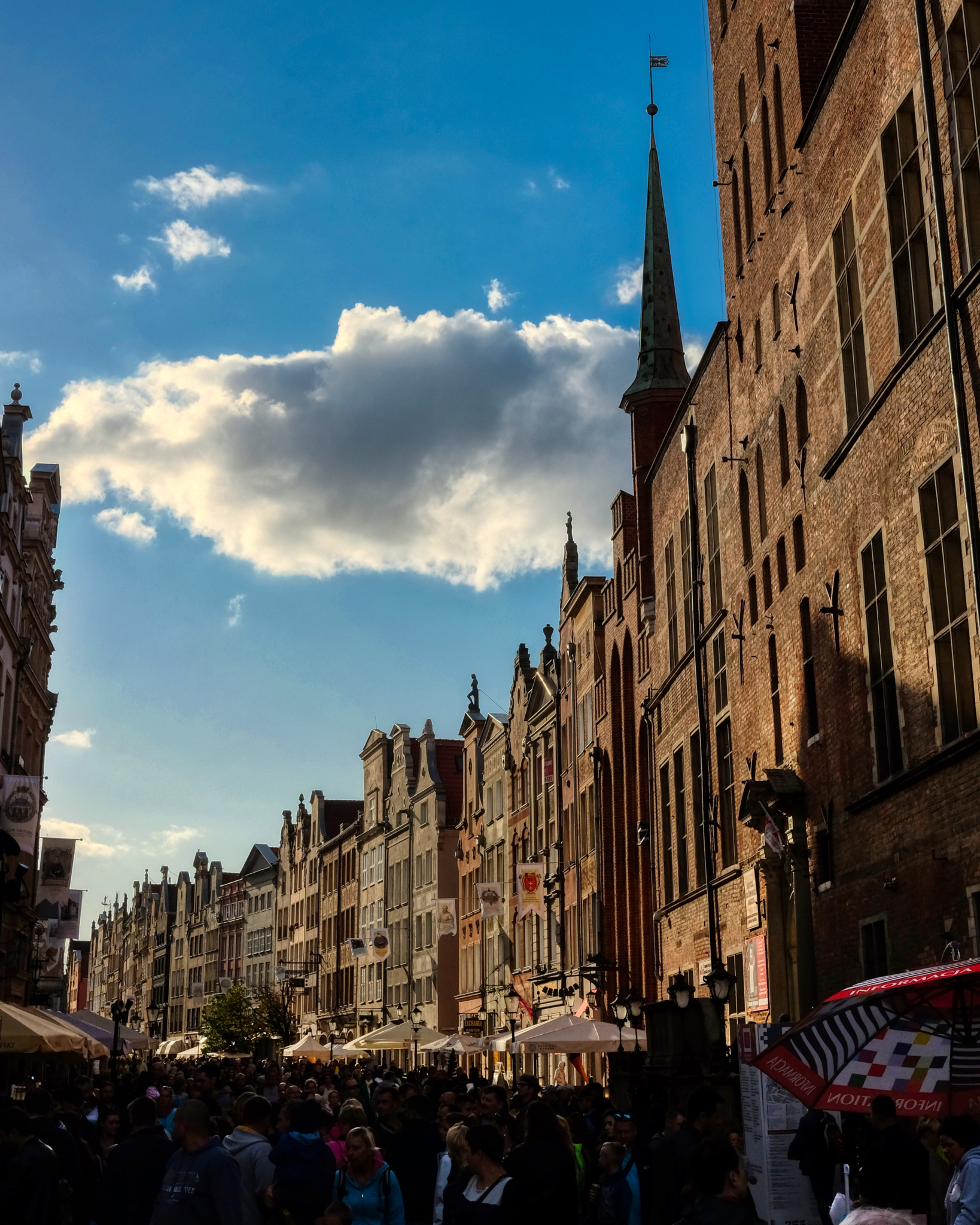 Every street in the city was set up with stalls selling food and crafts. It was the biggest street food and crafts fair I have ever seen!
Every street in the city was set up with stalls selling food and crafts. It was the biggest street food and crafts fair I have ever seen!
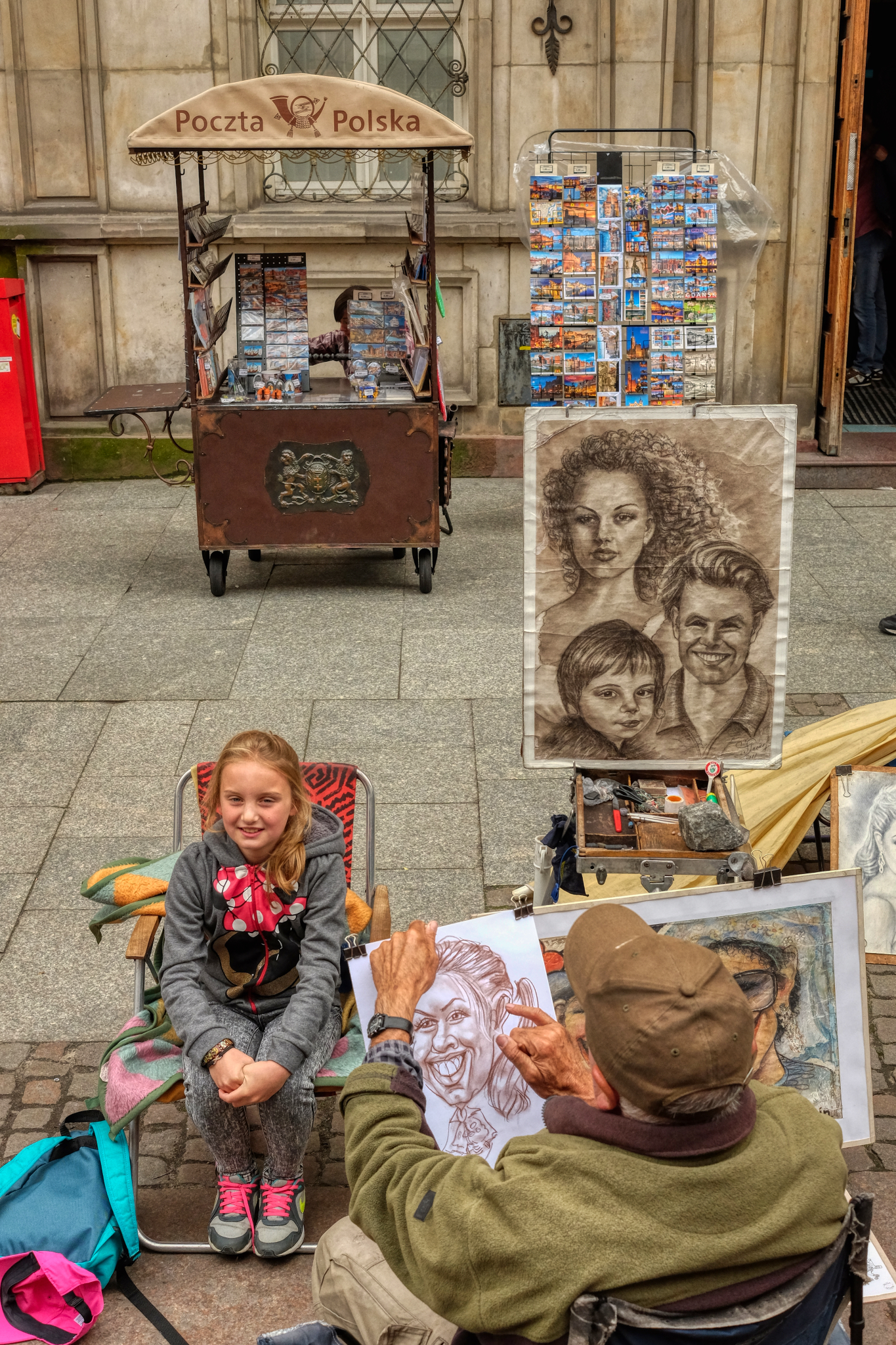
In addition to the street stalls, the fair attracted artists . . .
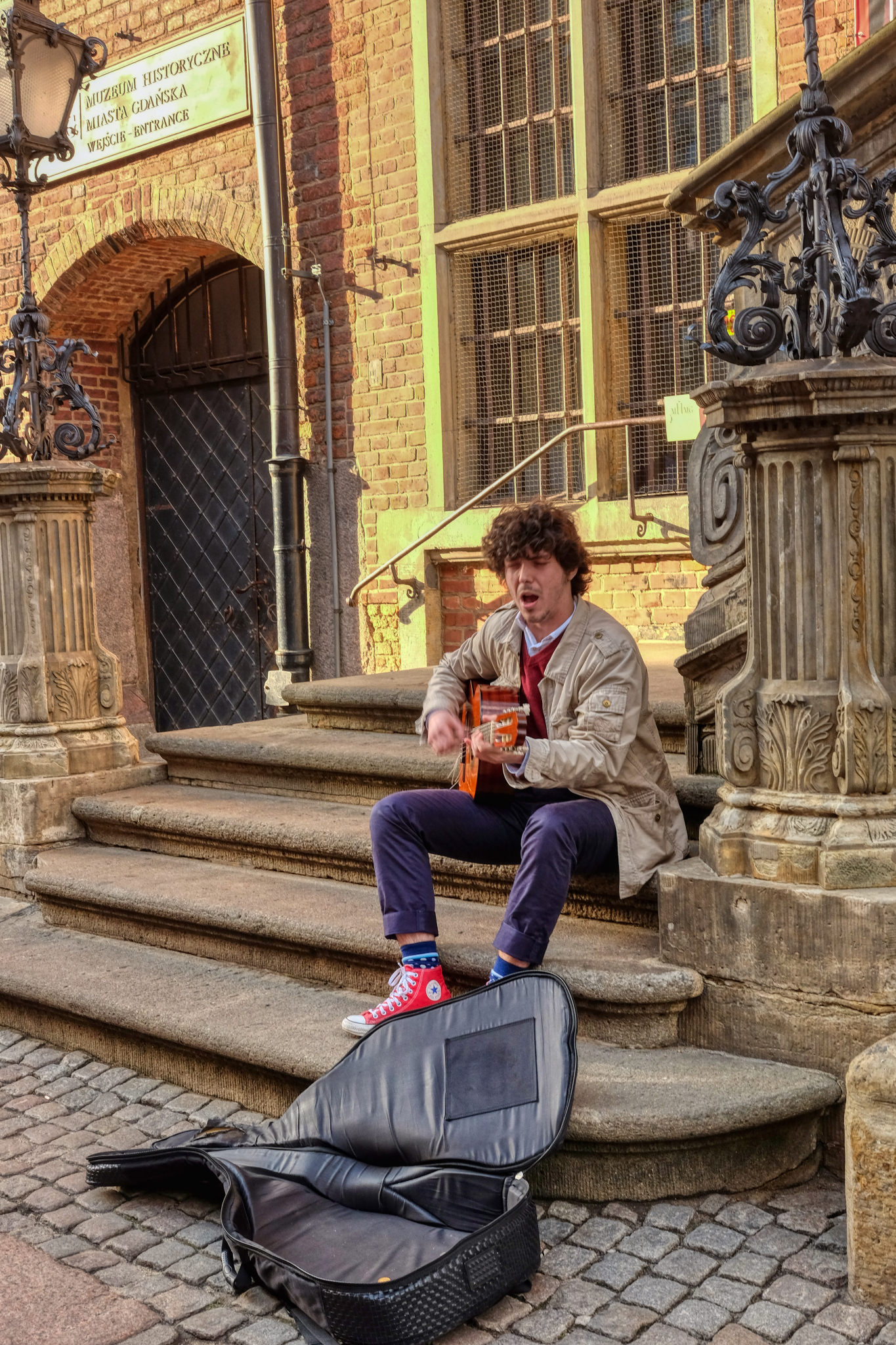
. . . buskers . . .
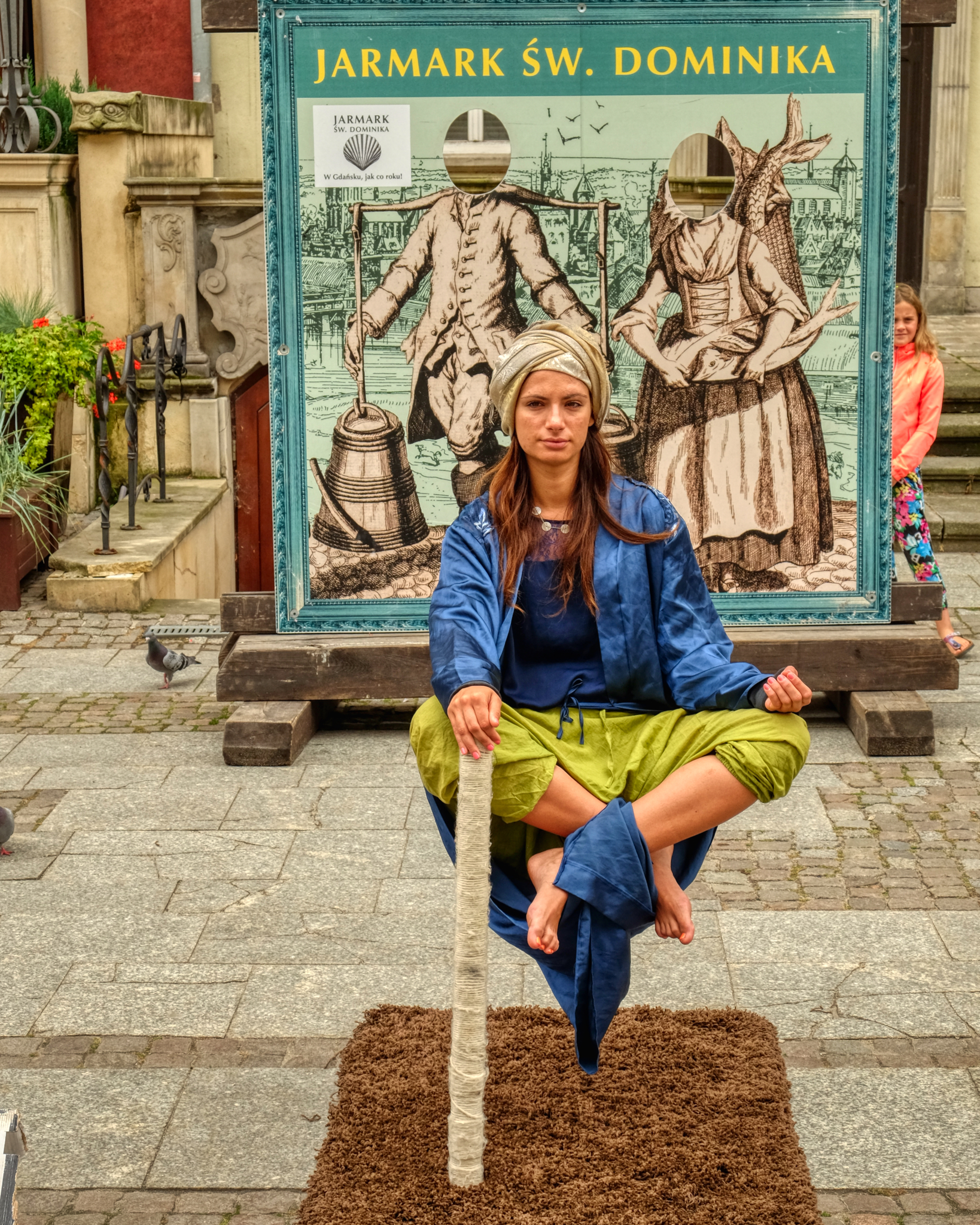 . . . street performers . . .
. . . street performers . . .
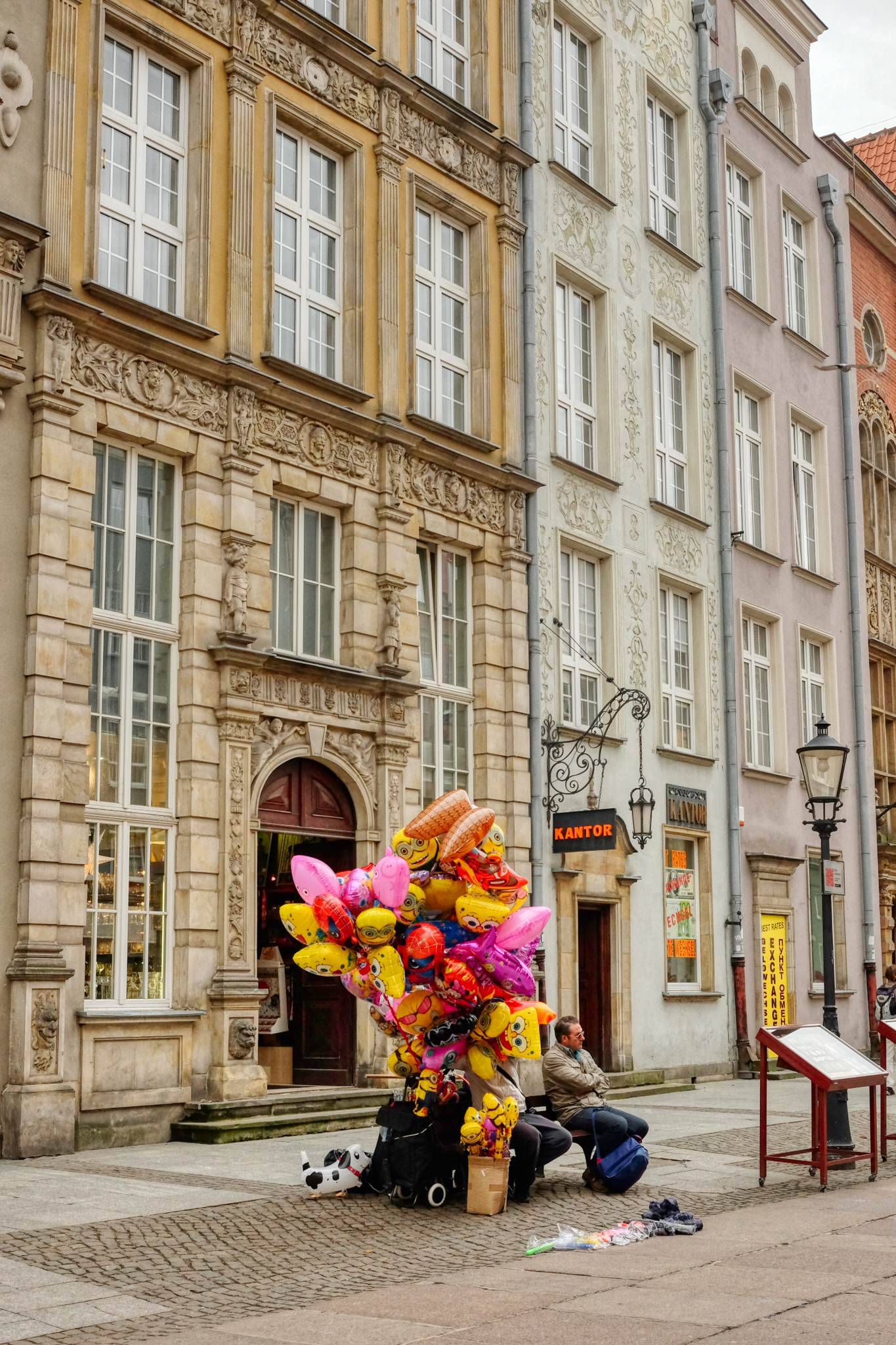 . . . morose balloon salesperson . . .
. . . morose balloon salesperson . . .
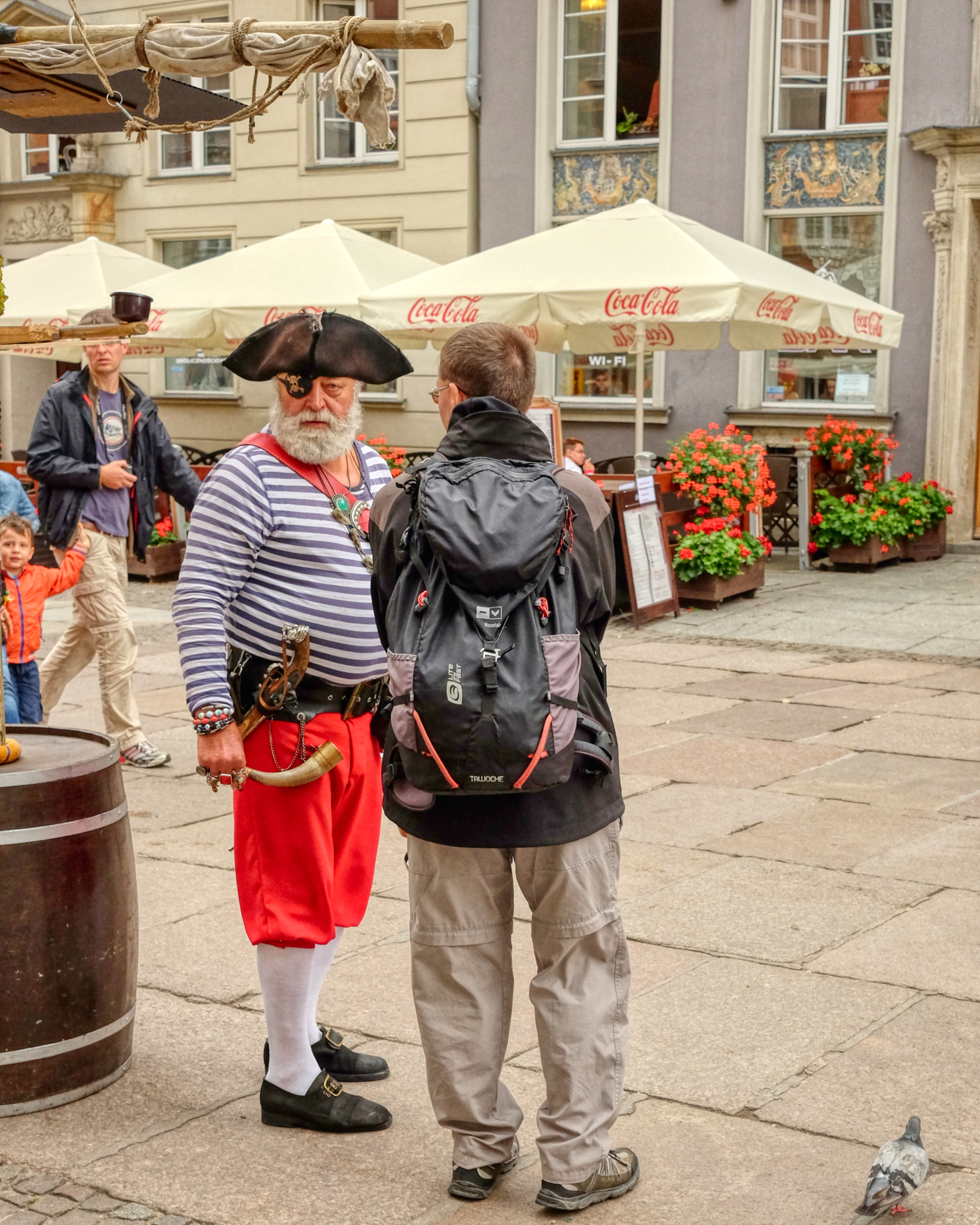 . . . historically costumed information givers . . . giving me the Evil Eye! YAR!
. . . historically costumed information givers . . . giving me the Evil Eye! YAR!
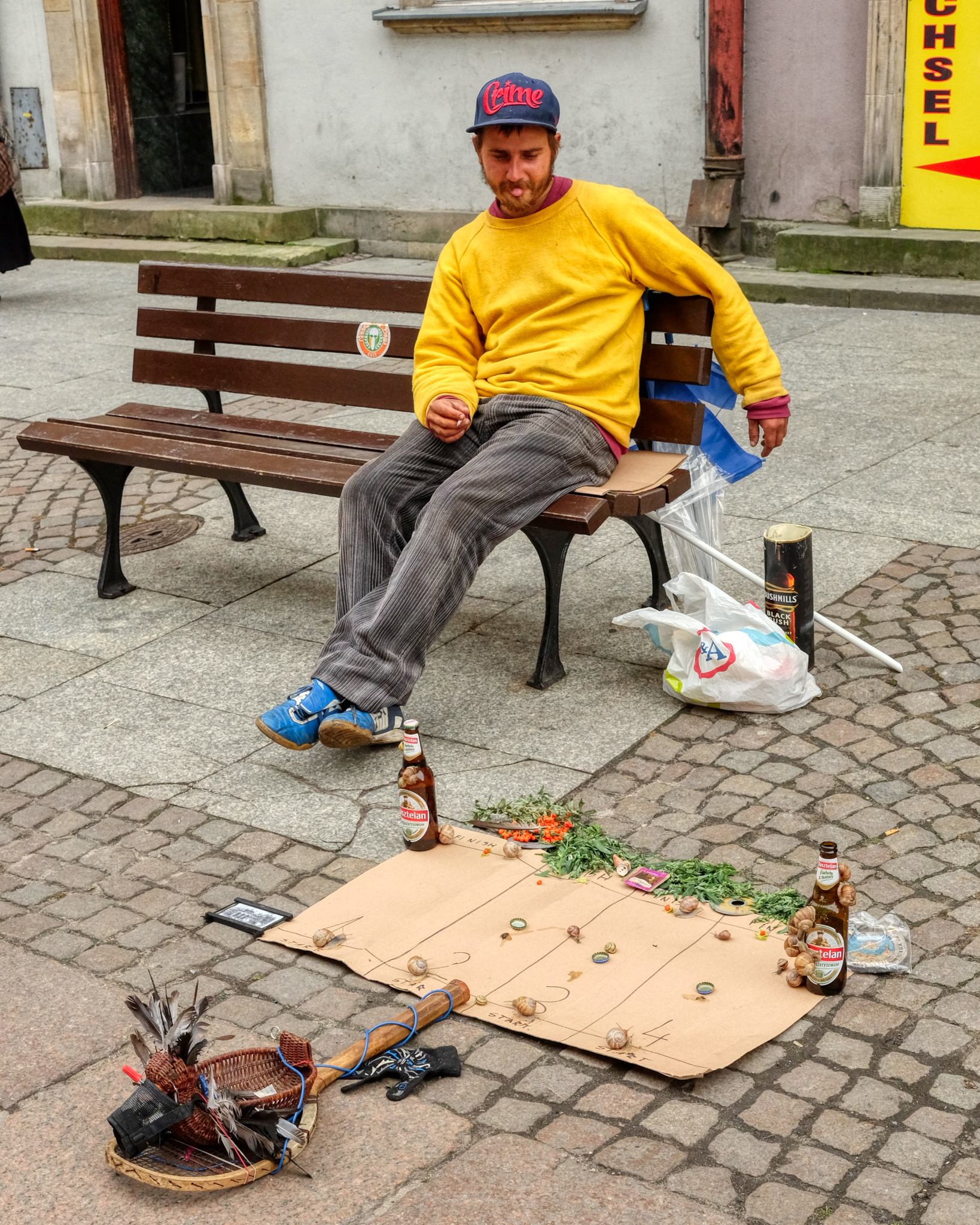 . . . and this guy (wearing a hat that said Crime!) who tried to entice the tourists to wager on his 'snail races.' The street fair was, in many ways, still like its medieval origins.
. . . and this guy (wearing a hat that said Crime!) who tried to entice the tourists to wager on his 'snail races.' The street fair was, in many ways, still like its medieval origins.
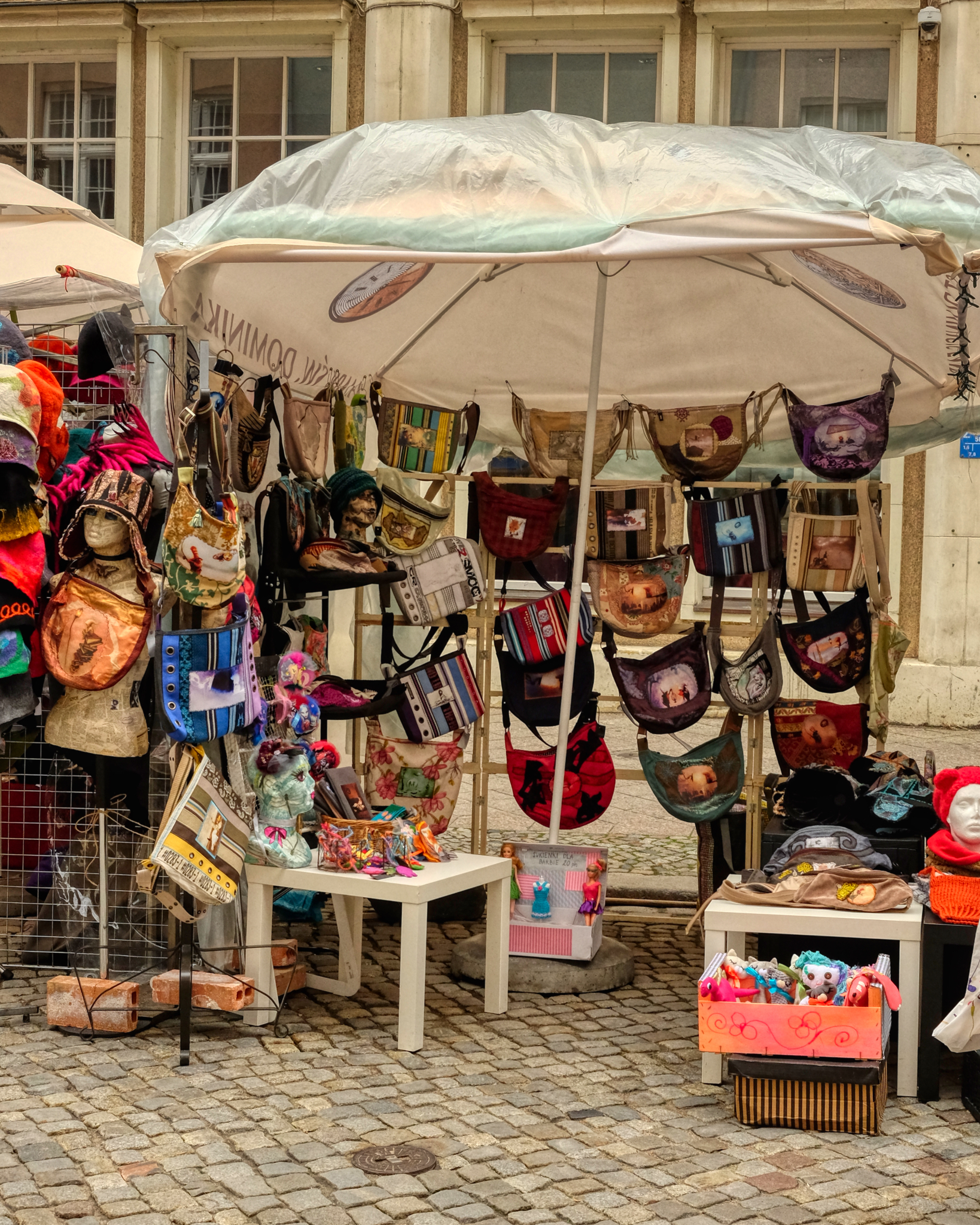 We enjoyed shopping at the many interesting crafts stalls.
We enjoyed shopping at the many interesting crafts stalls.
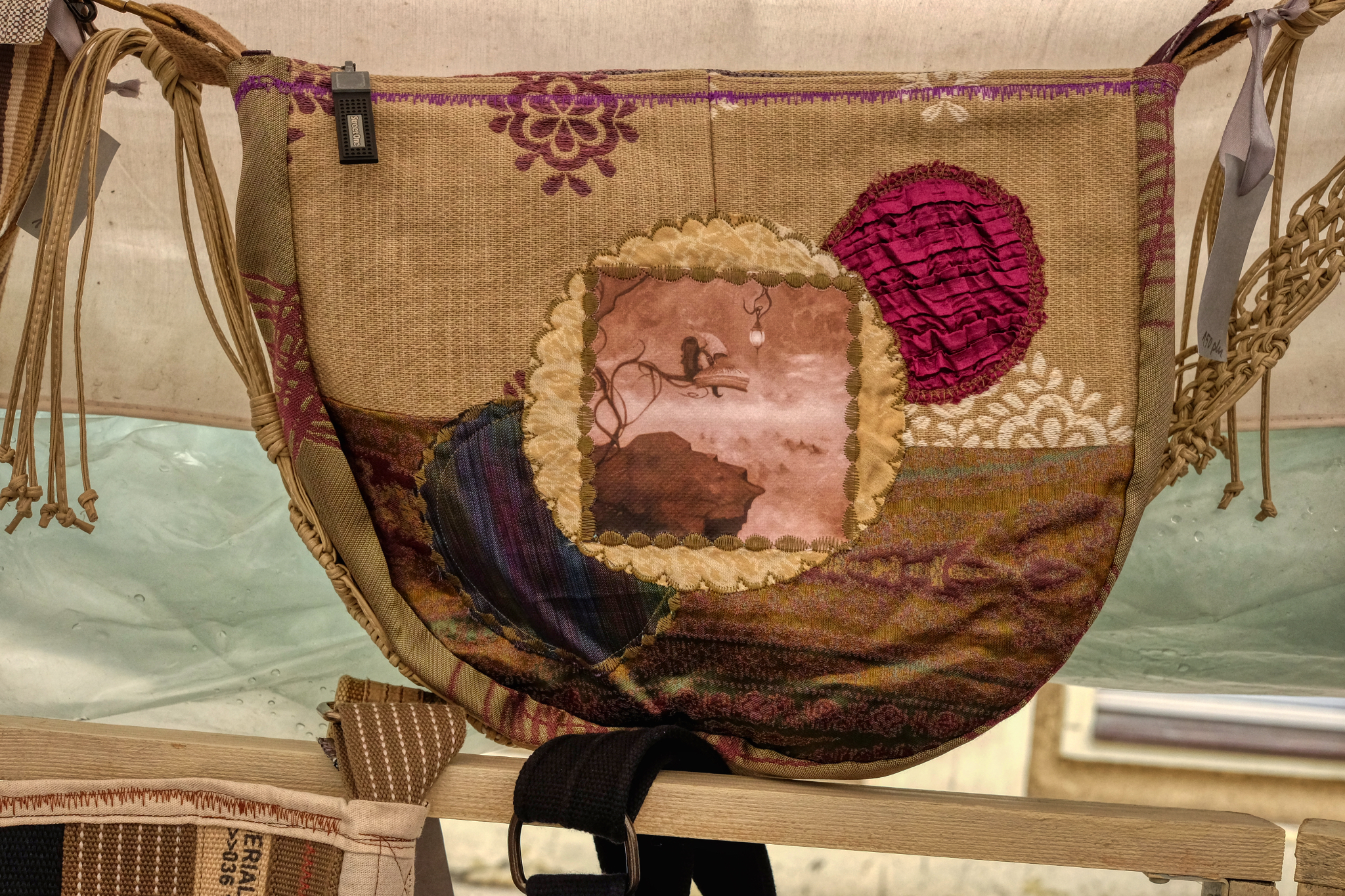 Interesting bags . . .
Interesting bags . . .
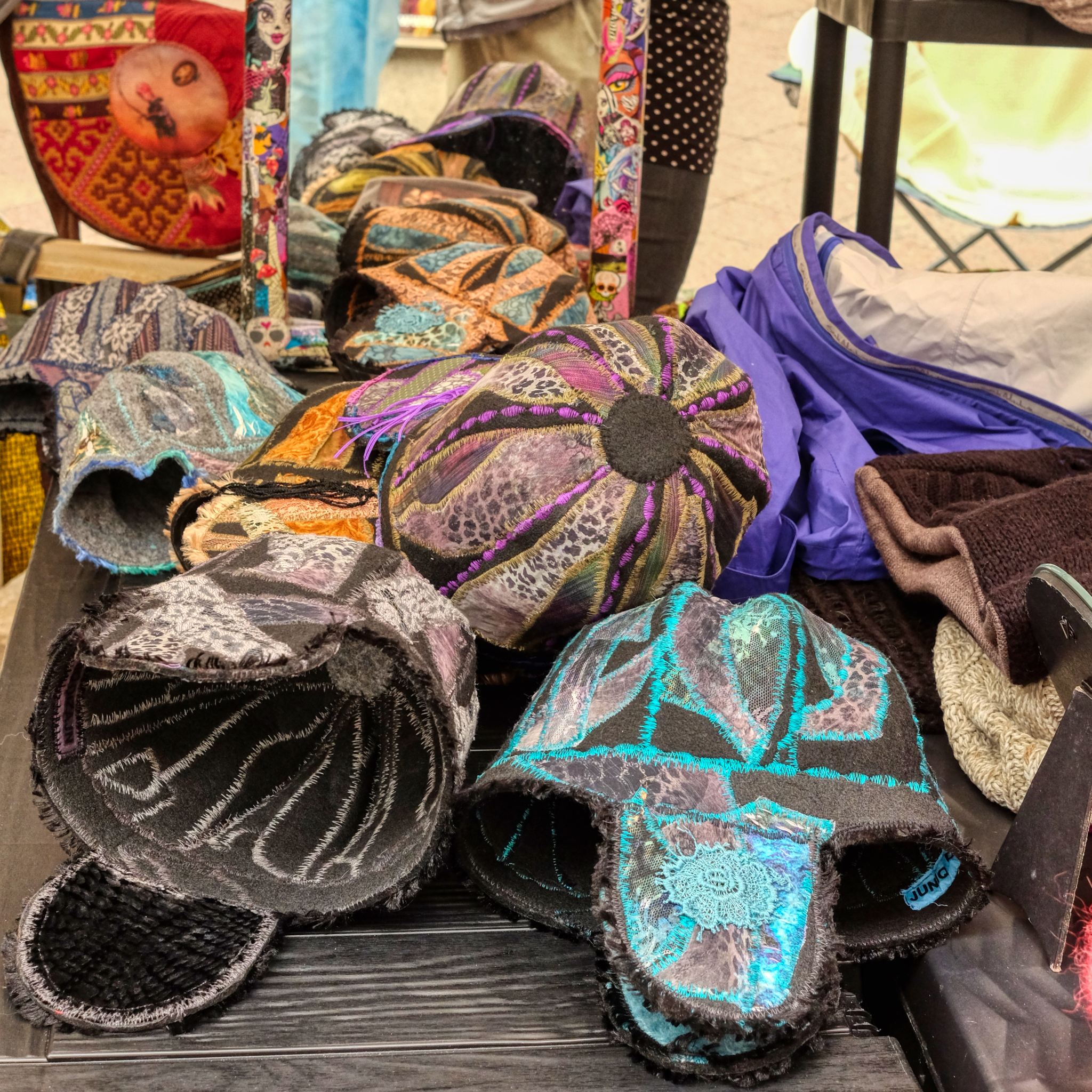 . . . very cool hats . . .
. . . very cool hats . . .
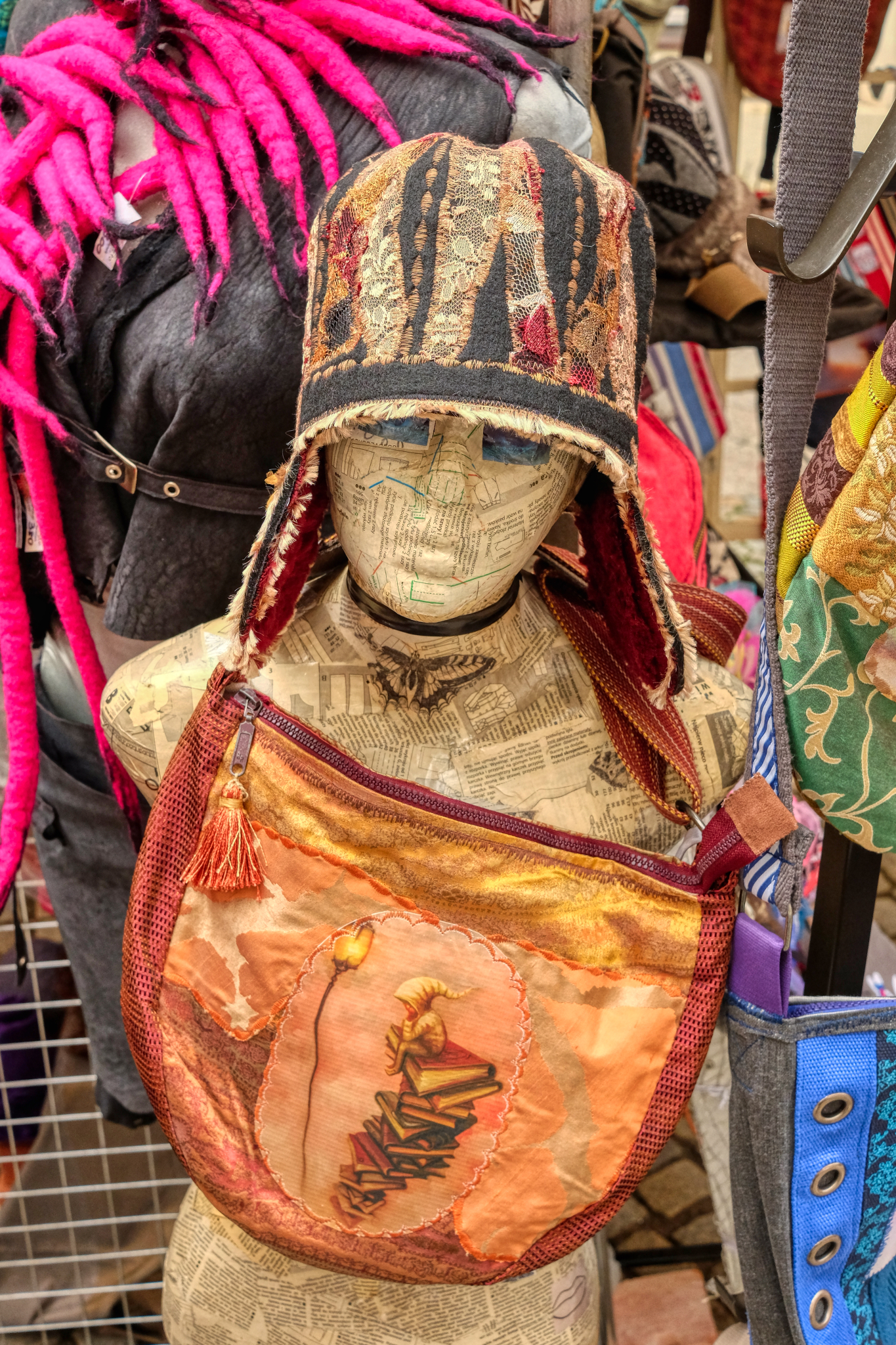 . . . very cool hat and bag! There were some very unusual arts at the fair.
. . . very cool hat and bag! There were some very unusual arts at the fair.
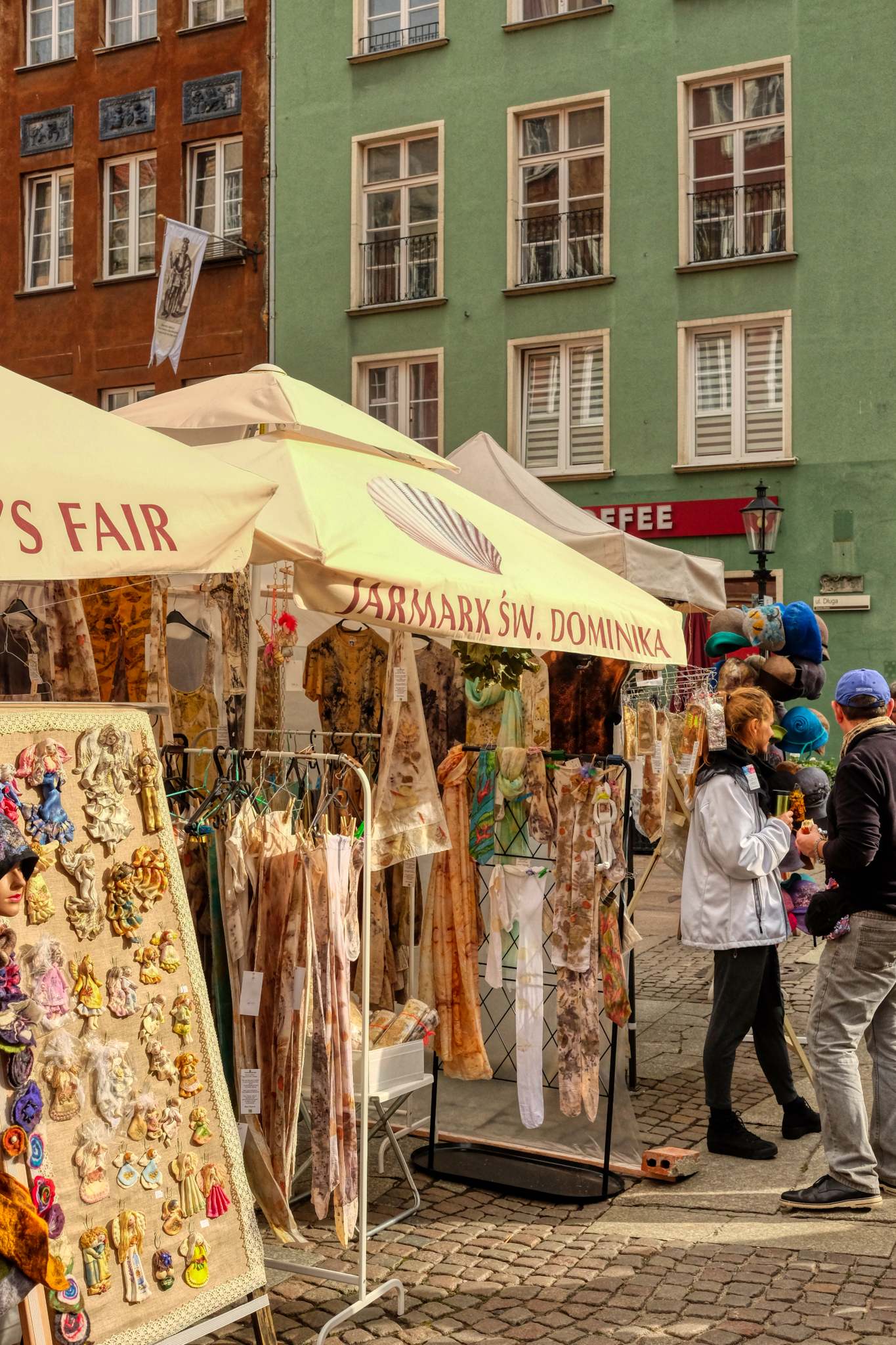 Many beautiful textiles on sale. We bought many things at the these stalls to take back home to Scotland with us. I bought a hat!
Many beautiful textiles on sale. We bought many things at the these stalls to take back home to Scotland with us. I bought a hat!
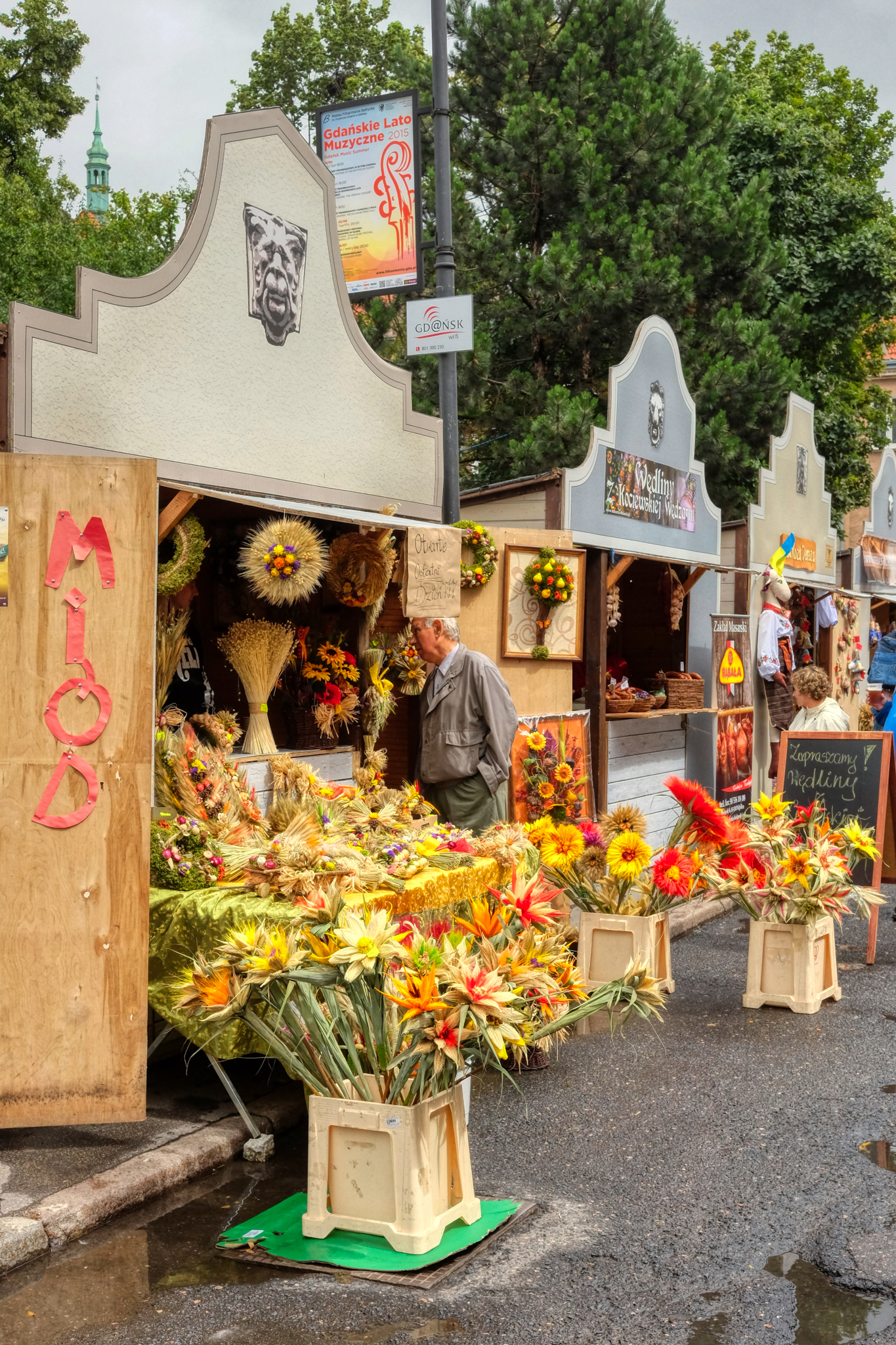 These street stalls were so cute: they mimicked the style of the Gdańsk buildings.
These street stalls were so cute: they mimicked the style of the Gdańsk buildings.
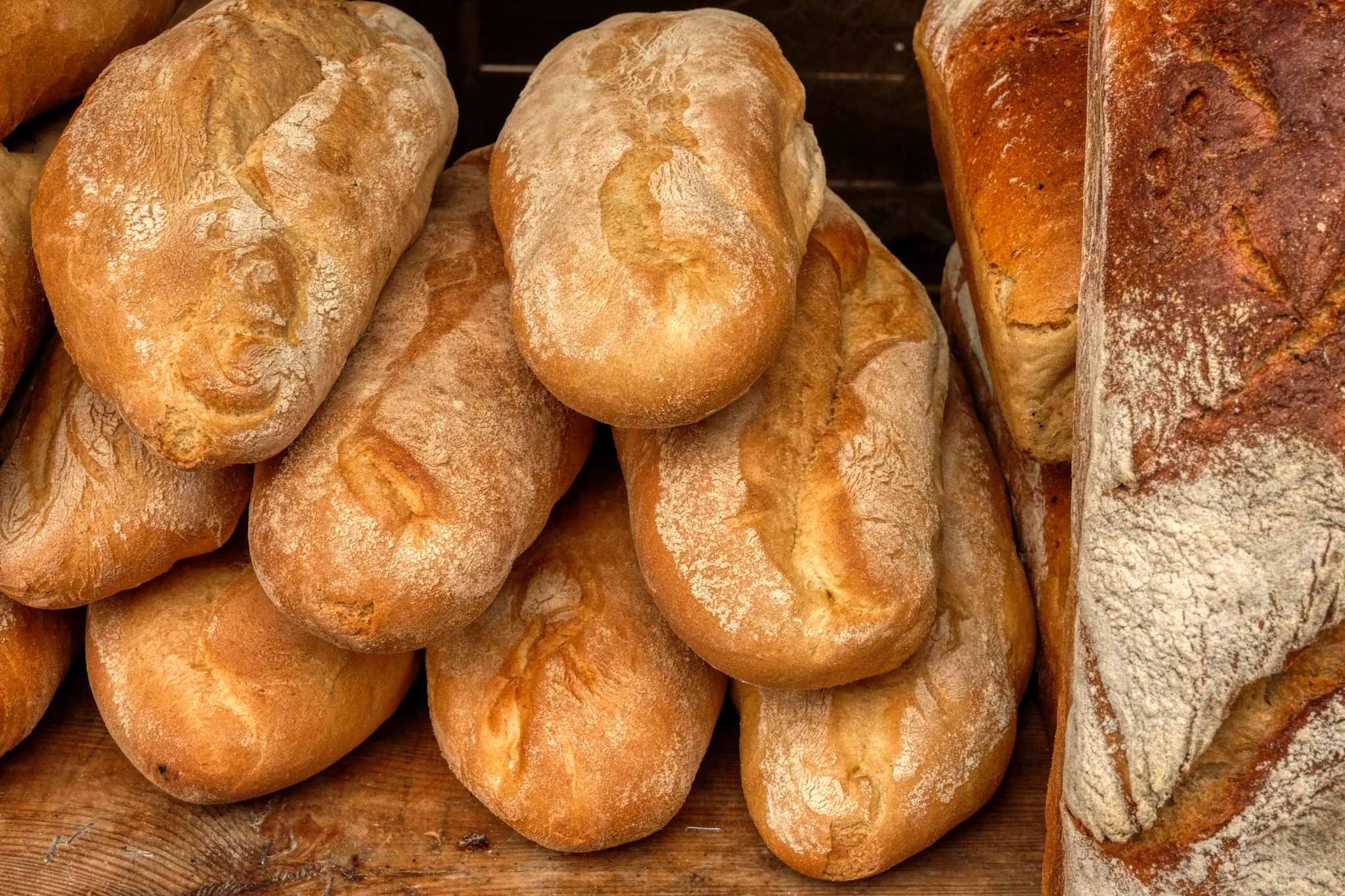 The textiles, hats, and bags were nice . . . but the variety of FOOD at the festival was incredible!!!
The textiles, hats, and bags were nice . . . but the variety of FOOD at the festival was incredible!!!
The breads were fantastic!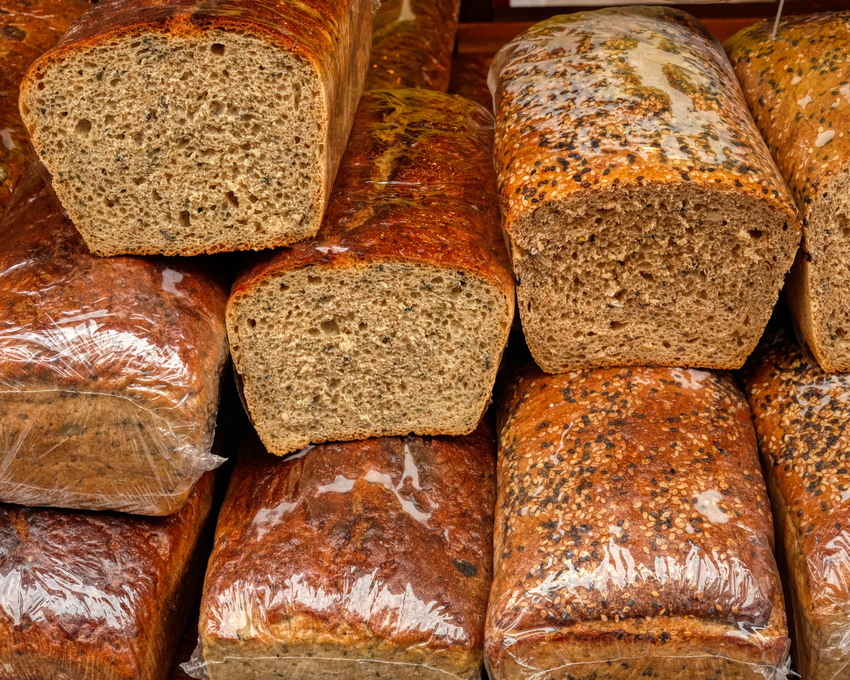
The breads were fantastic!
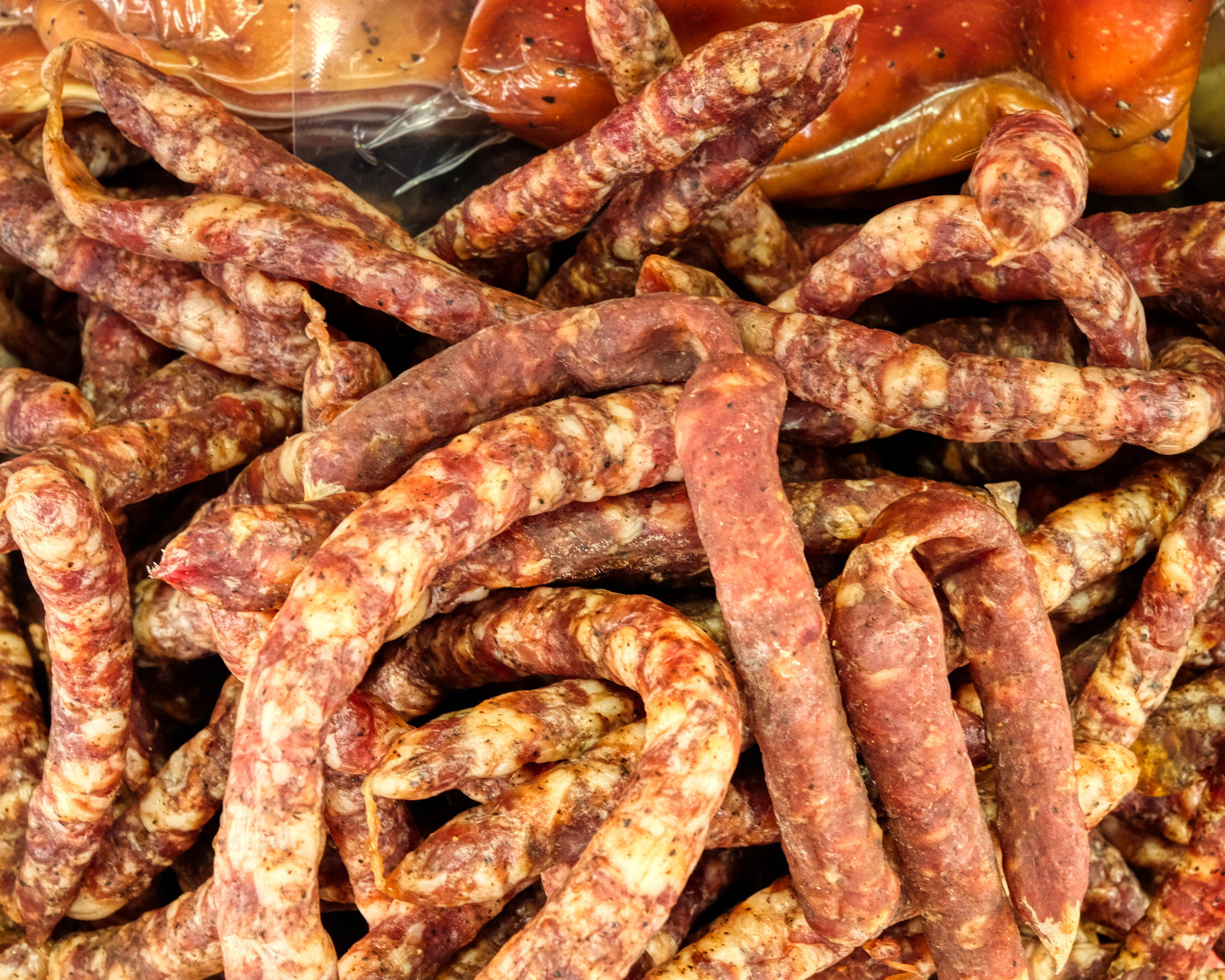 I was in pig heaven for sausage lovers like me!
I was in pig heaven for sausage lovers like me!
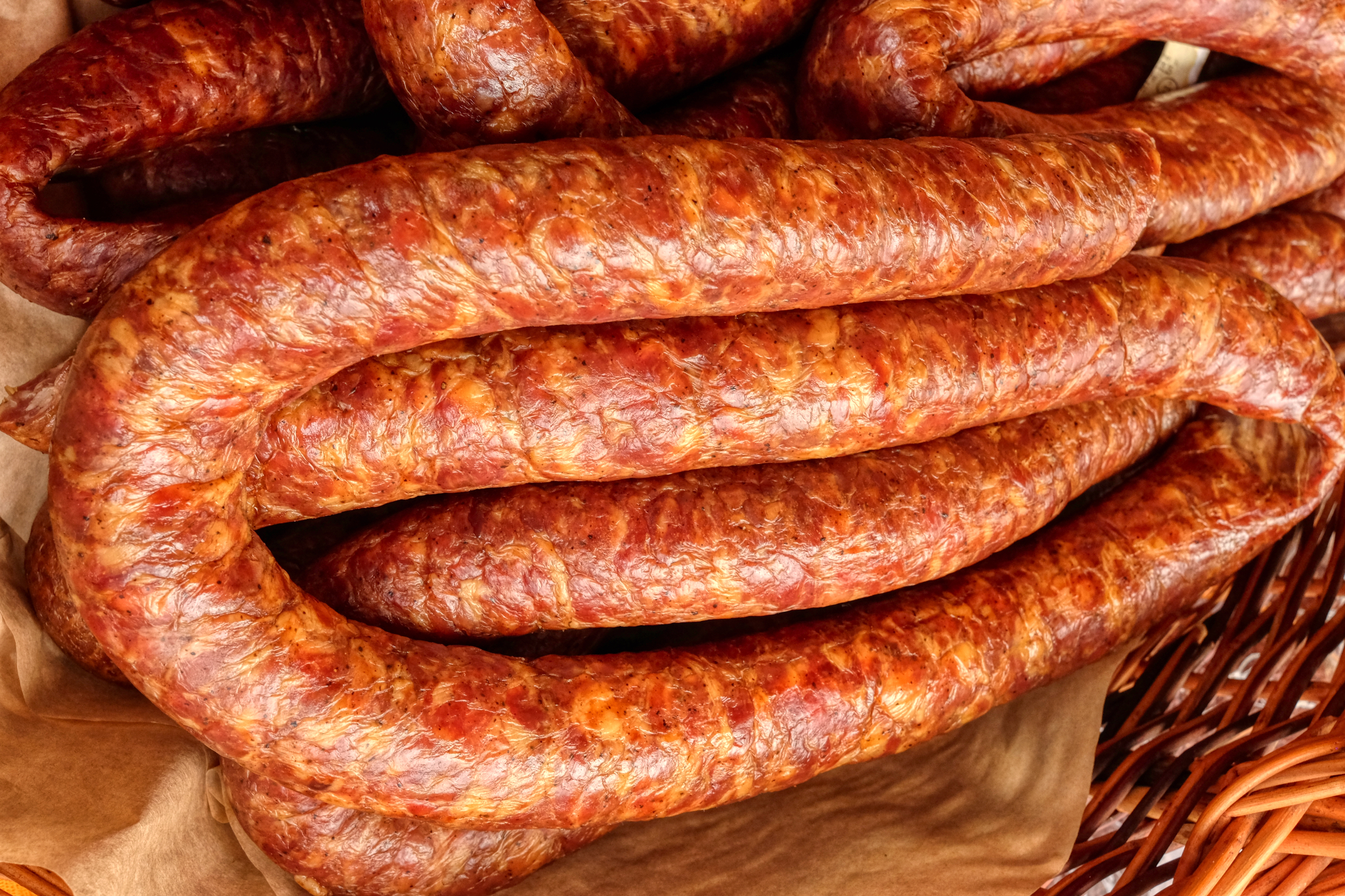 SAUSAGE!!!!
SAUSAGE!!!!
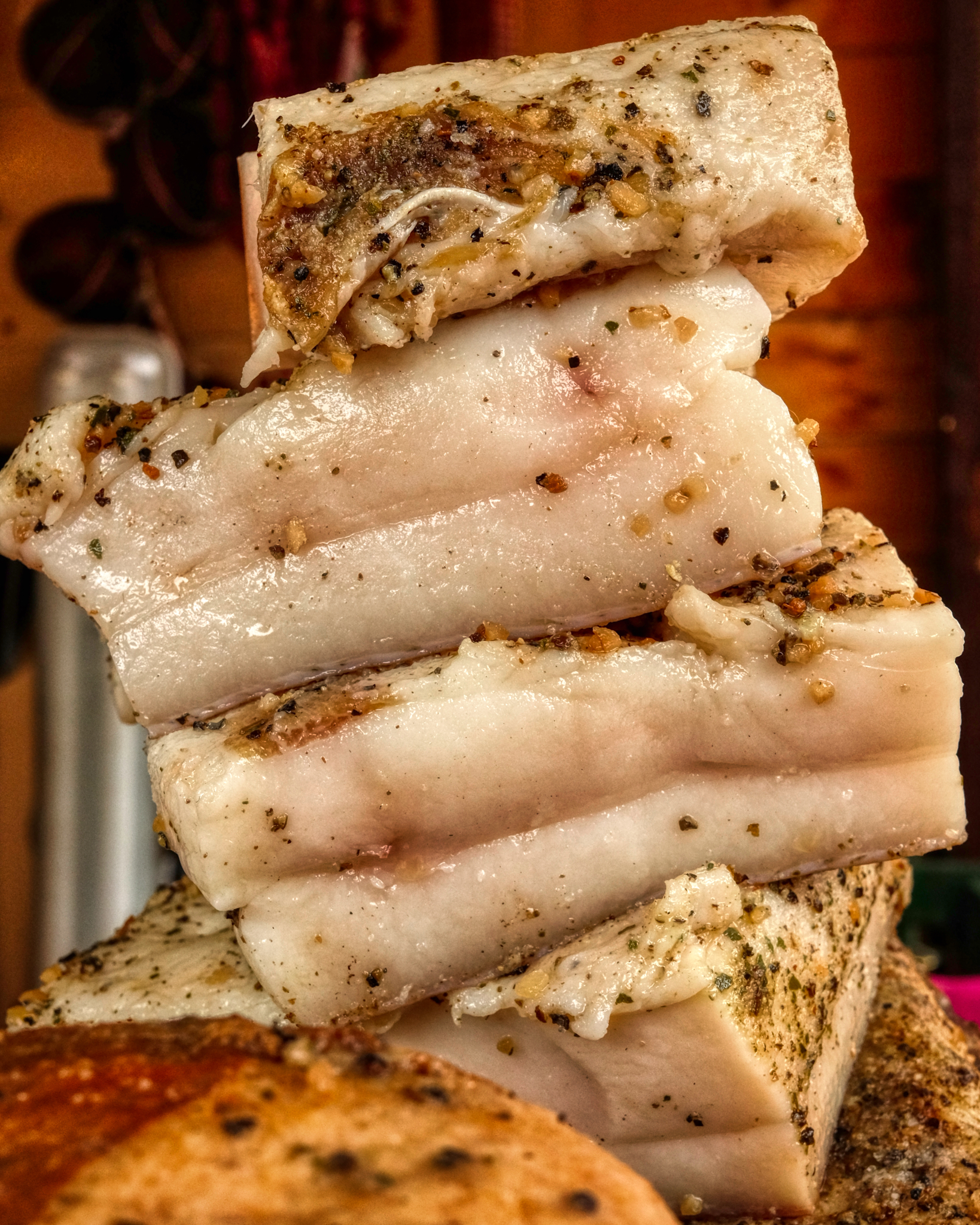 I loved cured and smoked pork fat as a child . . . a few thin slabs on a piece of peasant bread . . . mmmmmm! But I resisted!
I loved cured and smoked pork fat as a child . . . a few thin slabs on a piece of peasant bread . . . mmmmmm! But I resisted!
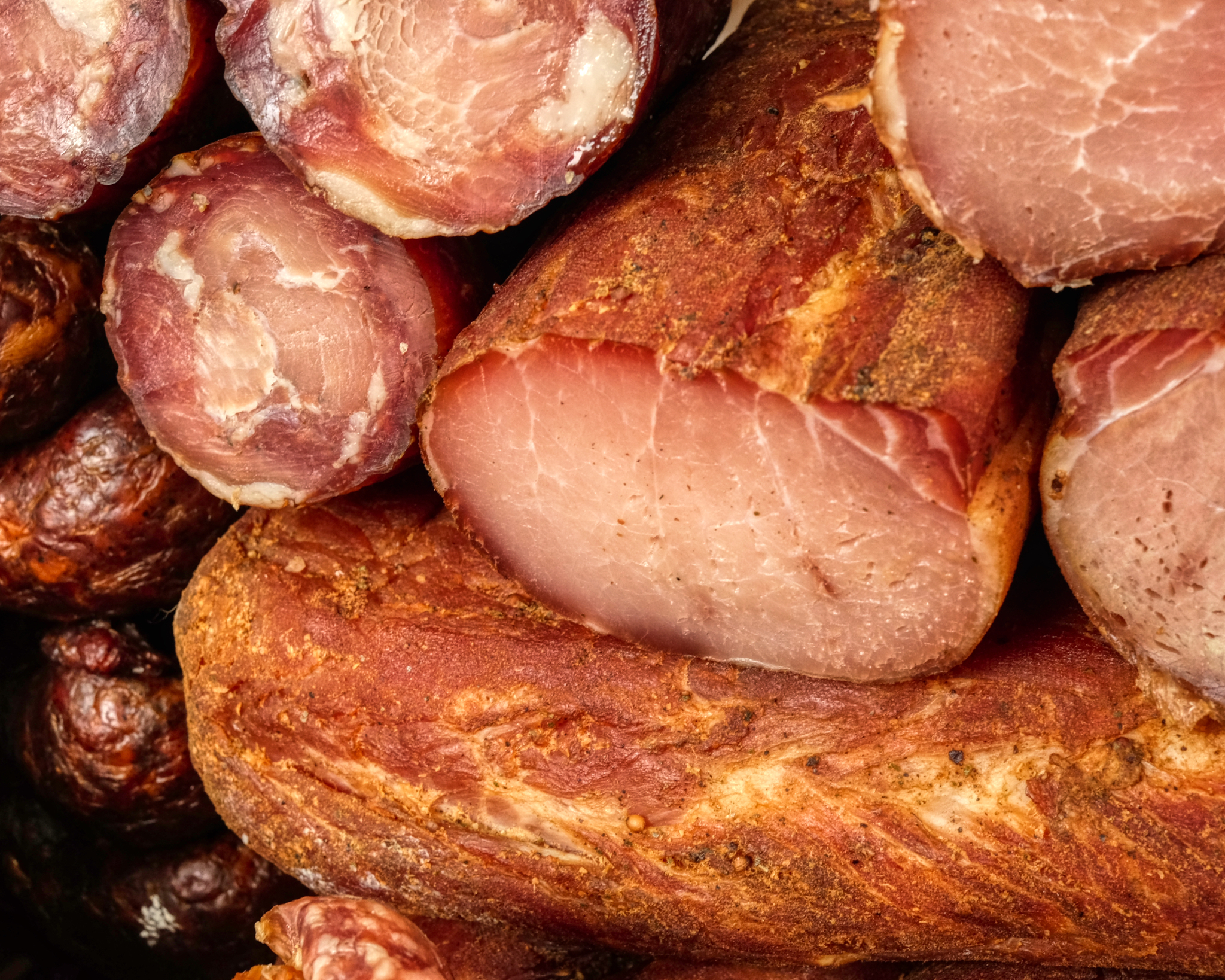 Cures and smoked meats . . . a very Eastern European way of eating . . . and so very tasty!
Cures and smoked meats . . . a very Eastern European way of eating . . . and so very tasty!
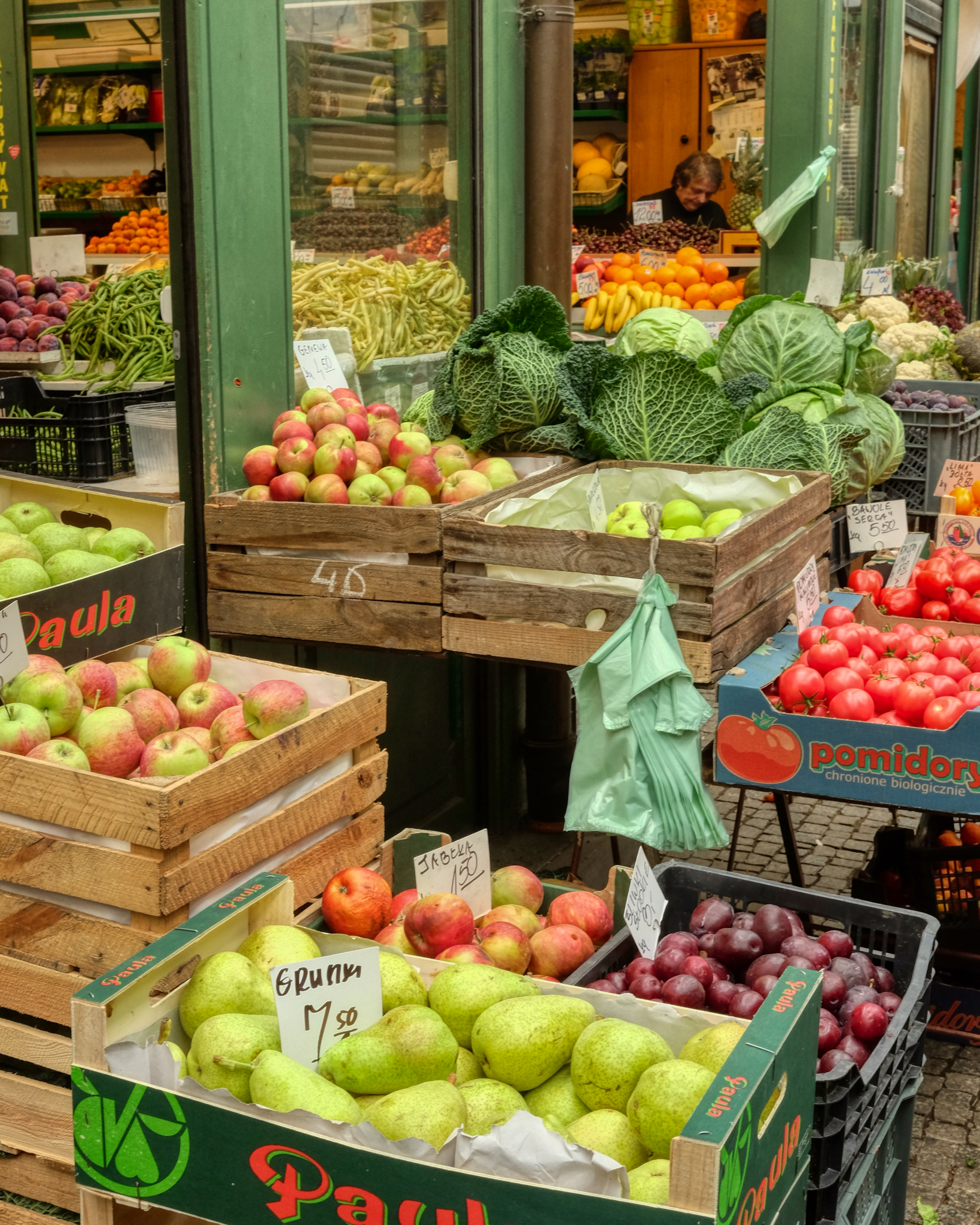 Many of the shops put their fruits and vegetables out on the street.
Many of the shops put their fruits and vegetables out on the street.
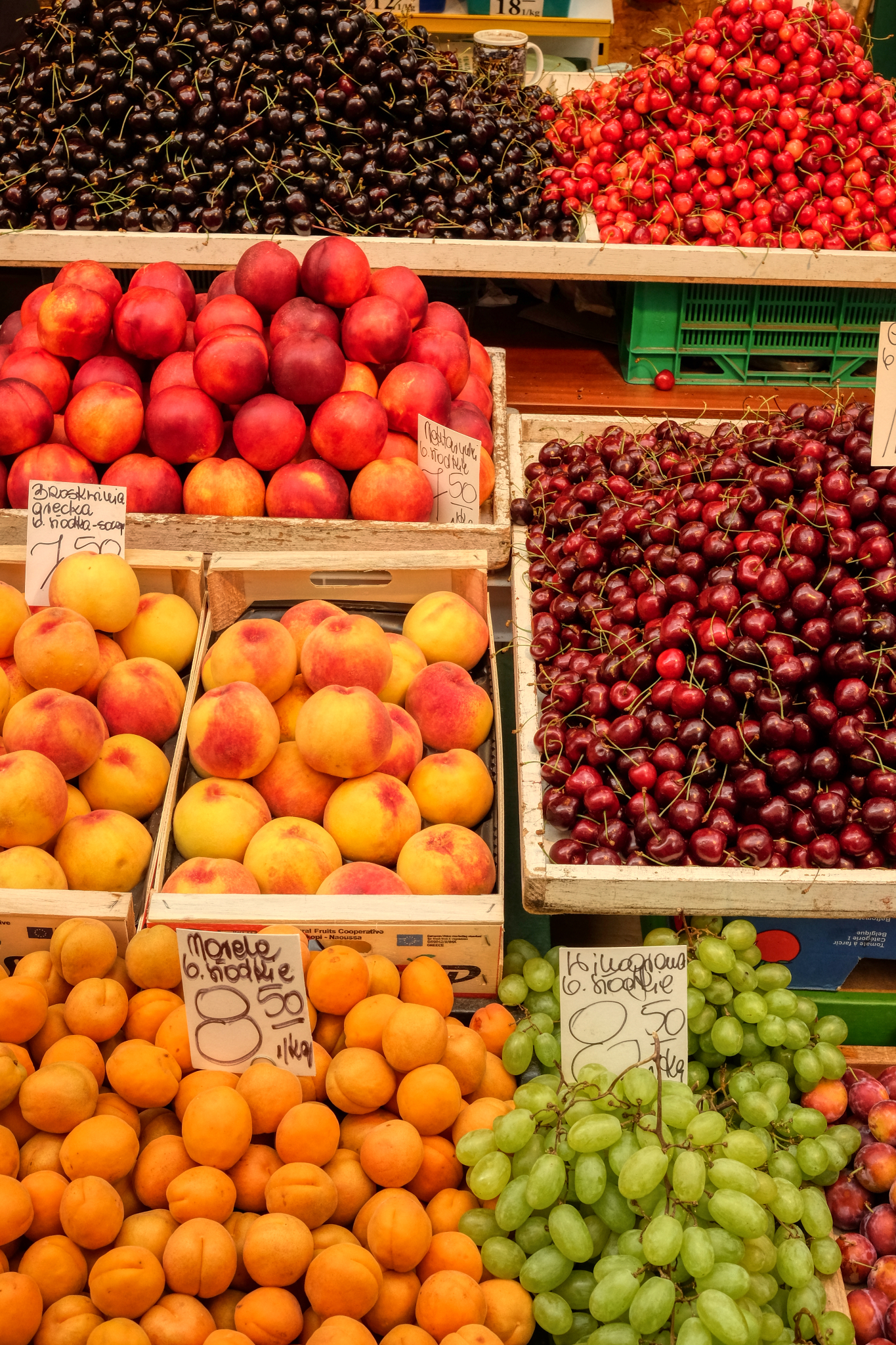 Temperate climate fruits are a real treat for us. These kinds of fruit in Bangkok cost a small fortune, so we went crazy living in Europe for a few years.
Temperate climate fruits are a real treat for us. These kinds of fruit in Bangkok cost a small fortune, so we went crazy living in Europe for a few years.
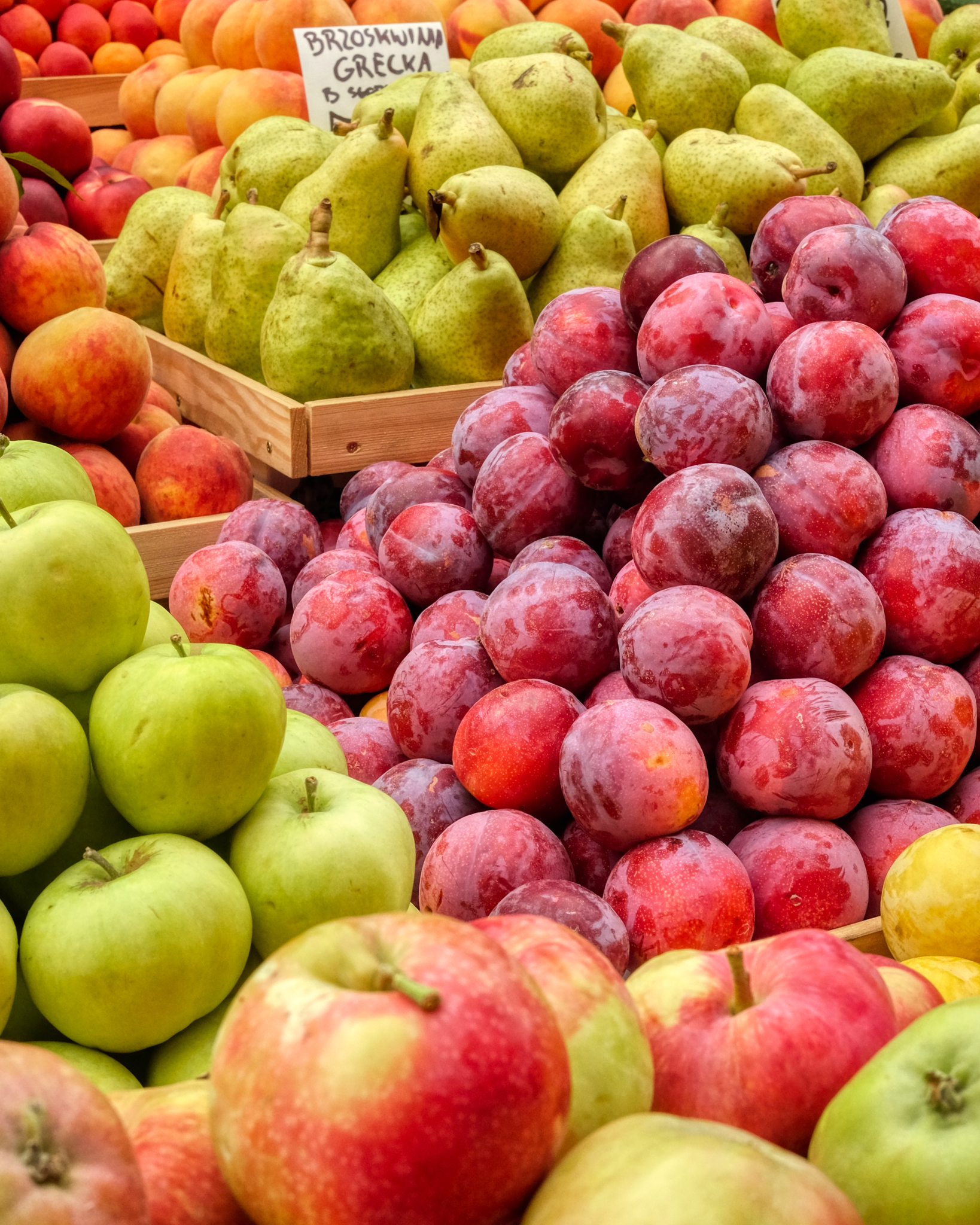 Lovely fruit.
Lovely fruit.
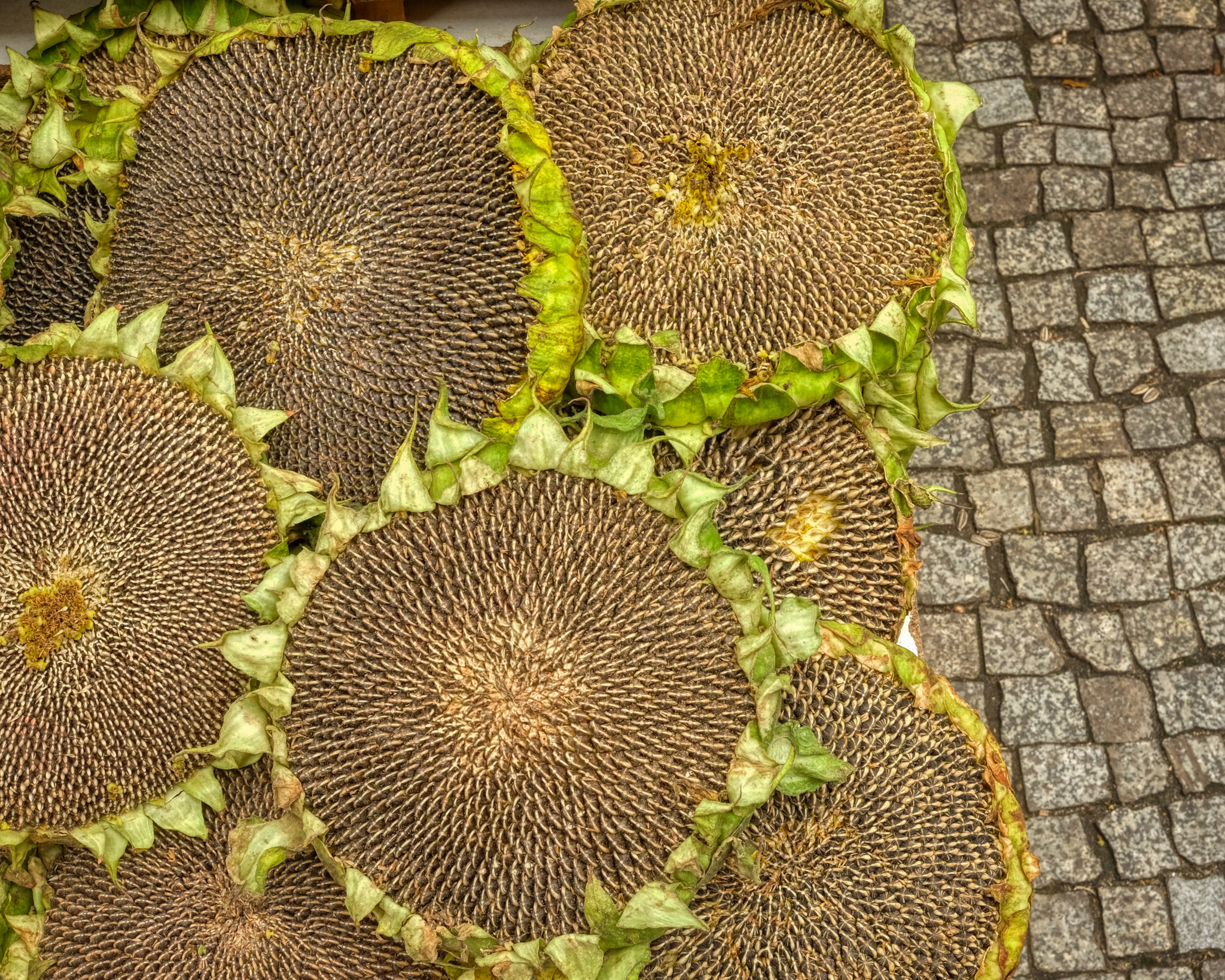 Whole heads of sunflowers . . . that's the way to sell sunflower seeds!
Whole heads of sunflowers . . . that's the way to sell sunflower seeds!
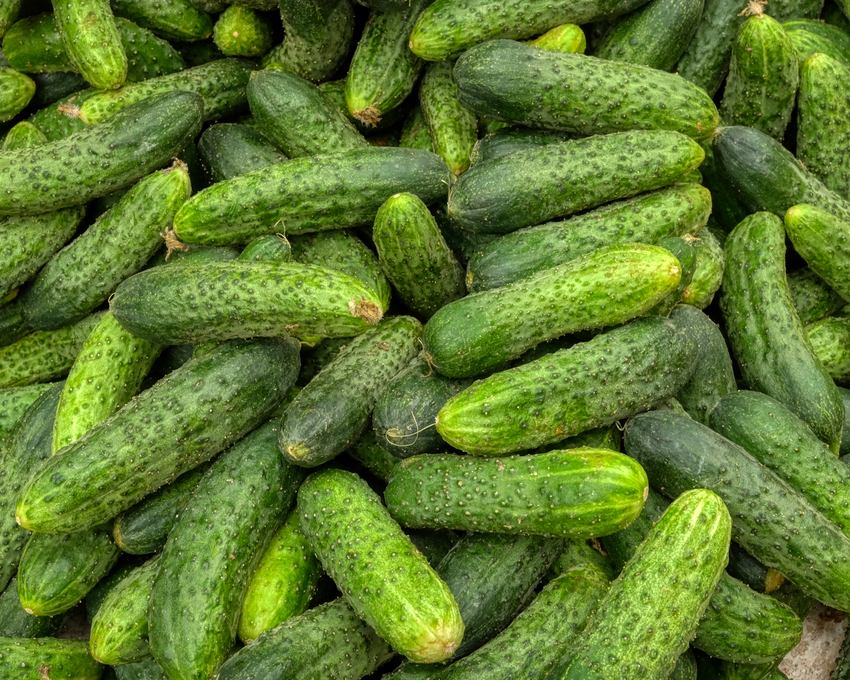 Fresh, crispy cucumbers!
Fresh, crispy cucumbers!
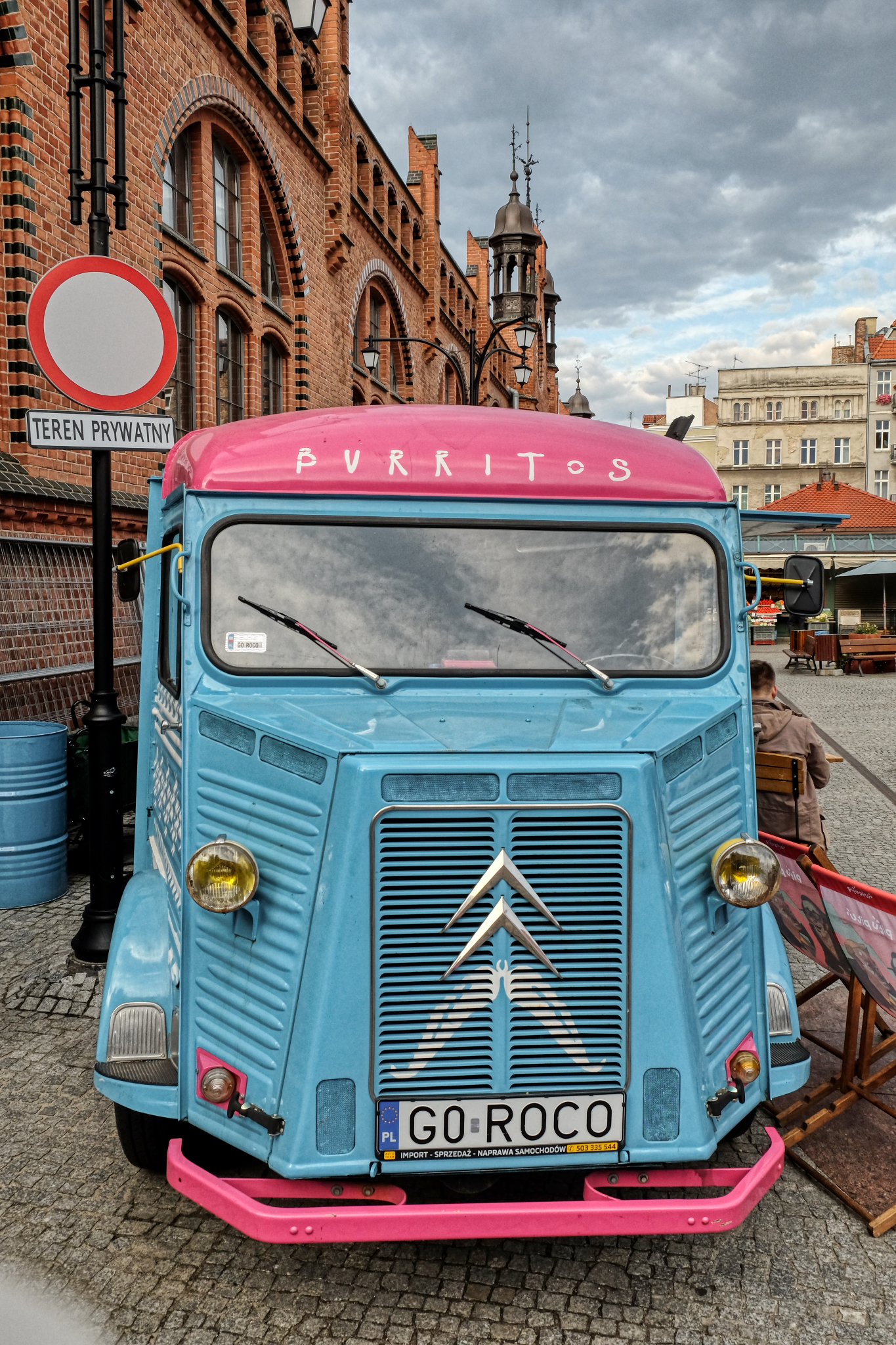 They had every kind of street food at the fair, including this actual Burrito Truck! Amazing! (I didn't buy one, and immediately regreted it!)
They had every kind of street food at the fair, including this actual Burrito Truck! Amazing! (I didn't buy one, and immediately regreted it!)
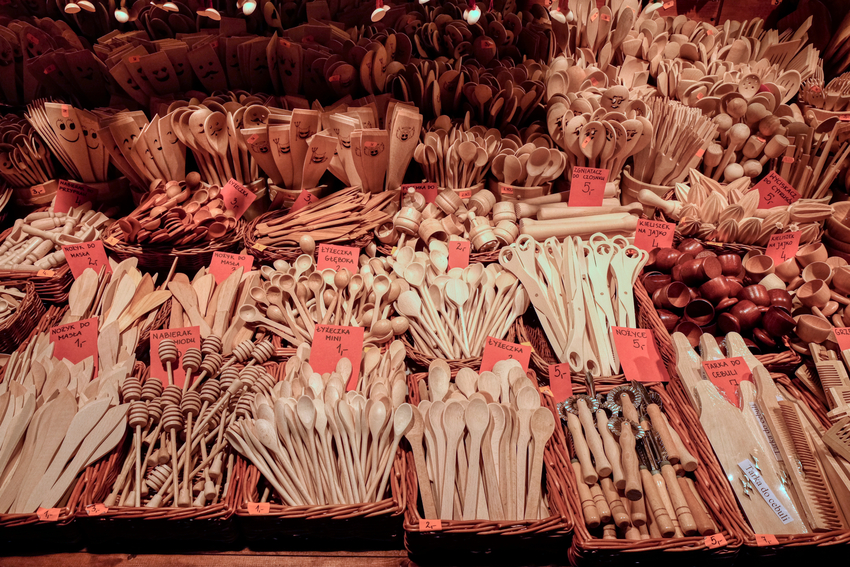 We bought a lot at the wooden spoon stand to take back home to our cottage in Scotland.
We bought a lot at the wooden spoon stand to take back home to our cottage in Scotland.
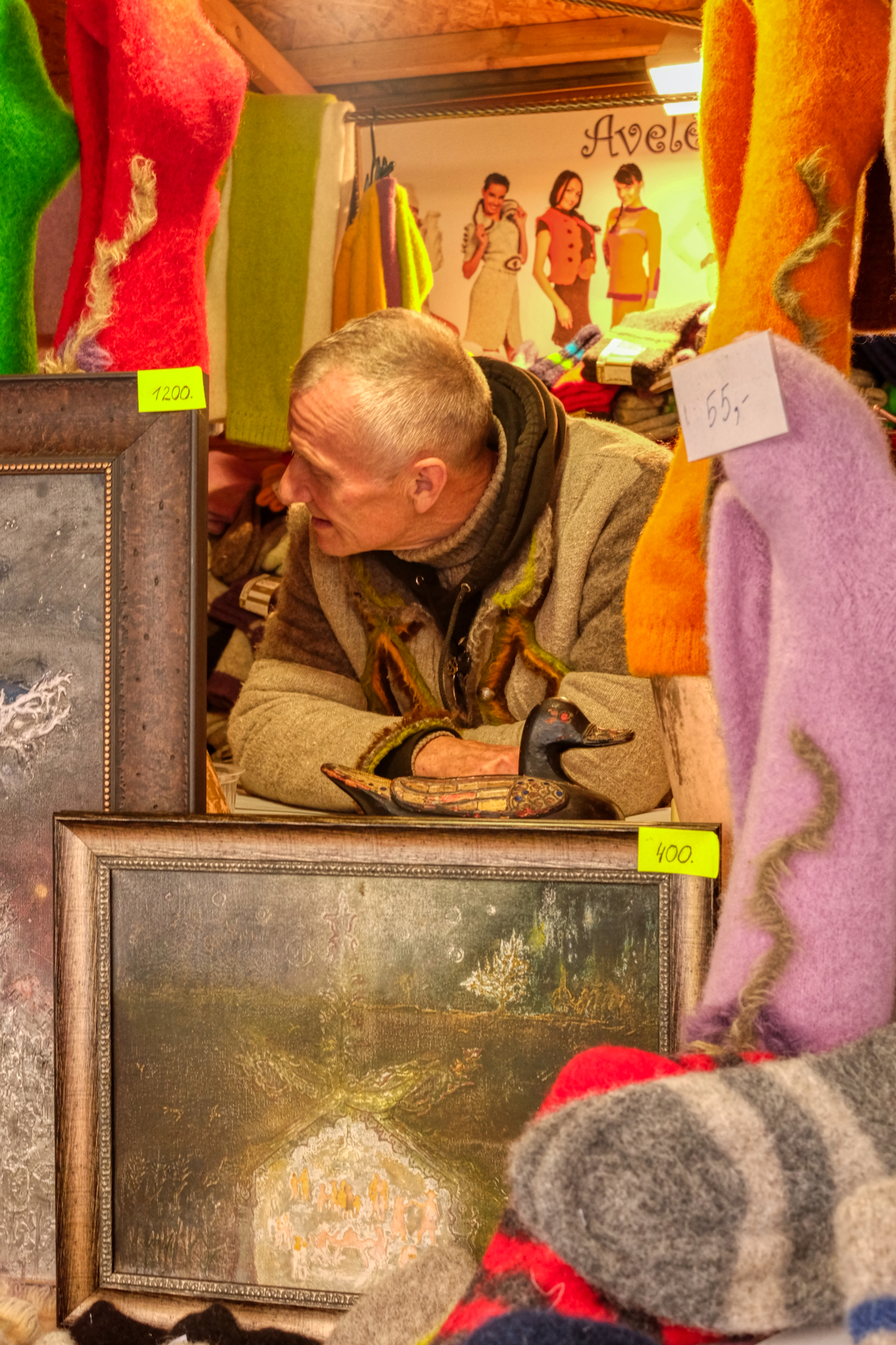 A dealer of art and socks . . .
A dealer of art and socks . . .
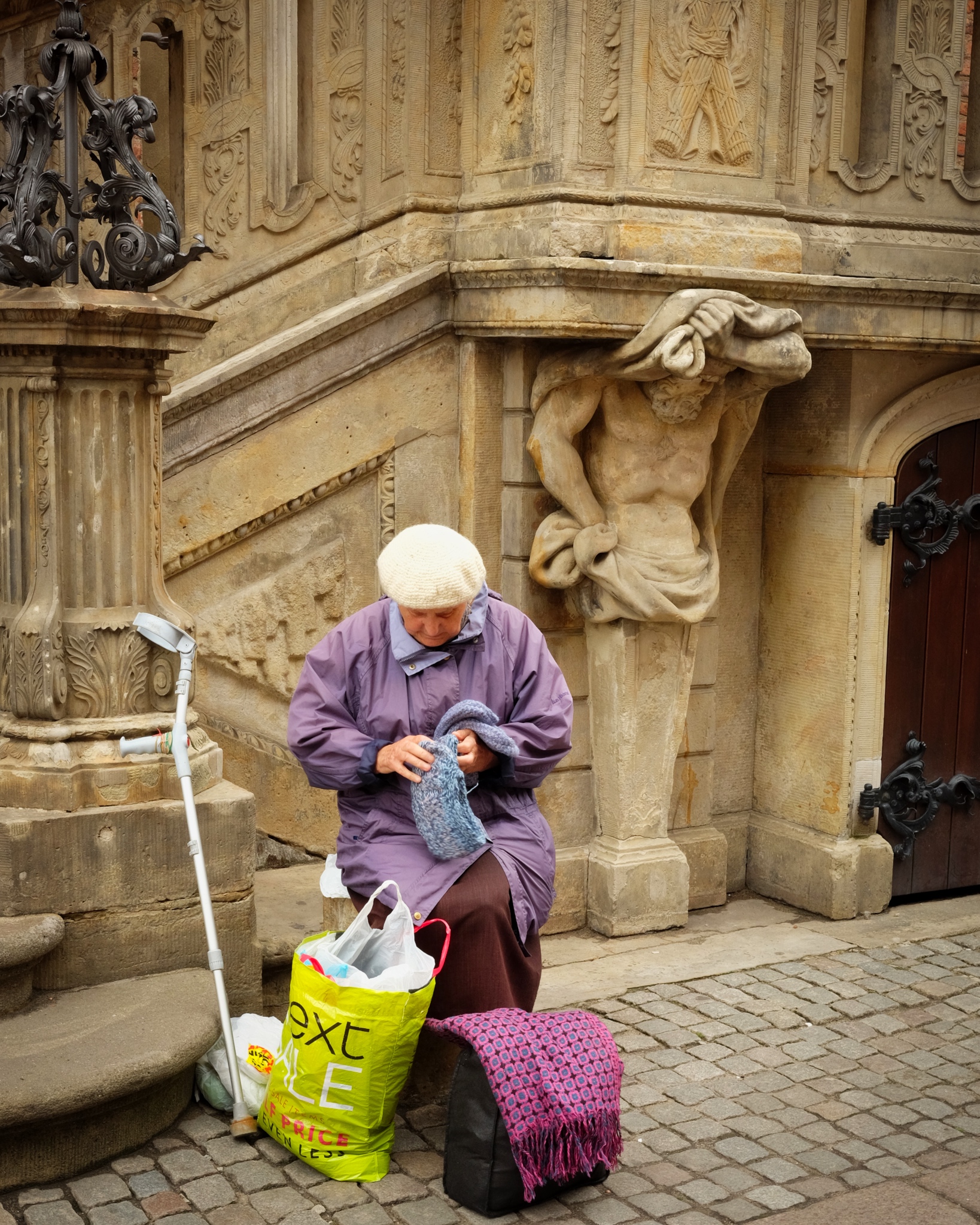 A woman set up her stool and sold her own crocheted items. Sweet.
A woman set up her stool and sold her own crocheted items. Sweet.
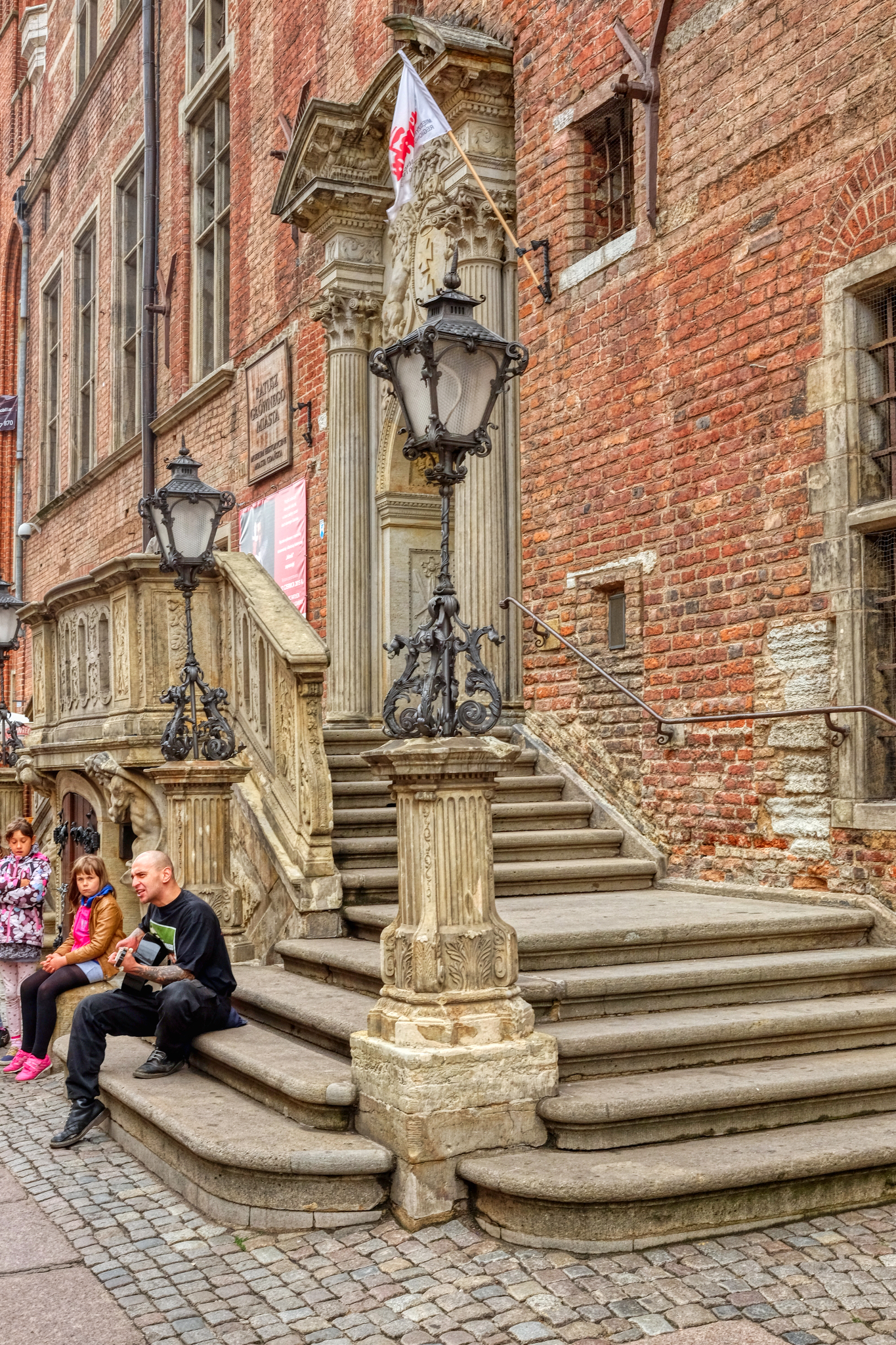 There were many buskers, but this guy was exceptionally good.
There were many buskers, but this guy was exceptionally good.
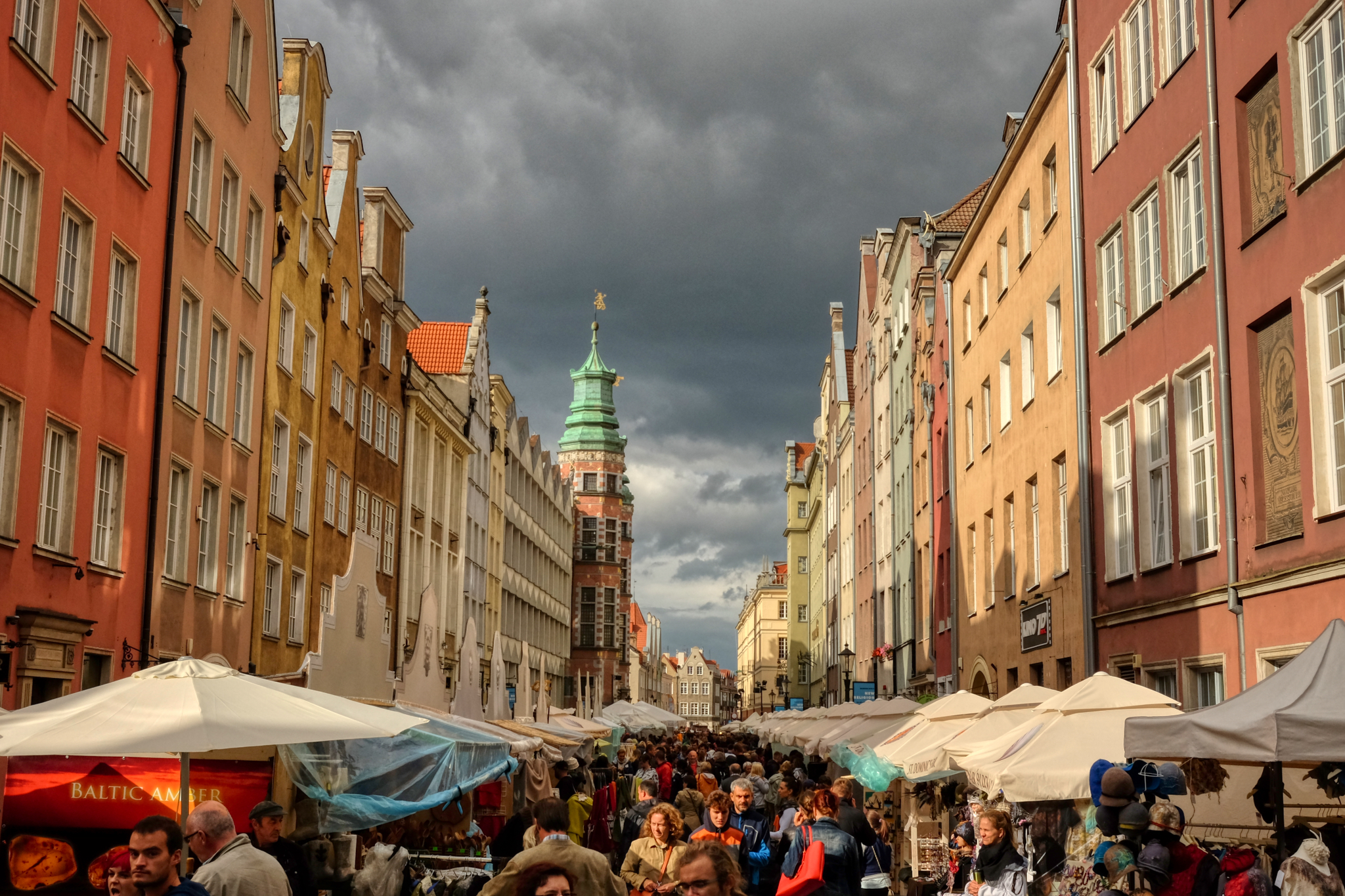 The weather varied from bright sunshine to dark clouds and sudden bursts of rain.
The weather varied from bright sunshine to dark clouds and sudden bursts of rain.
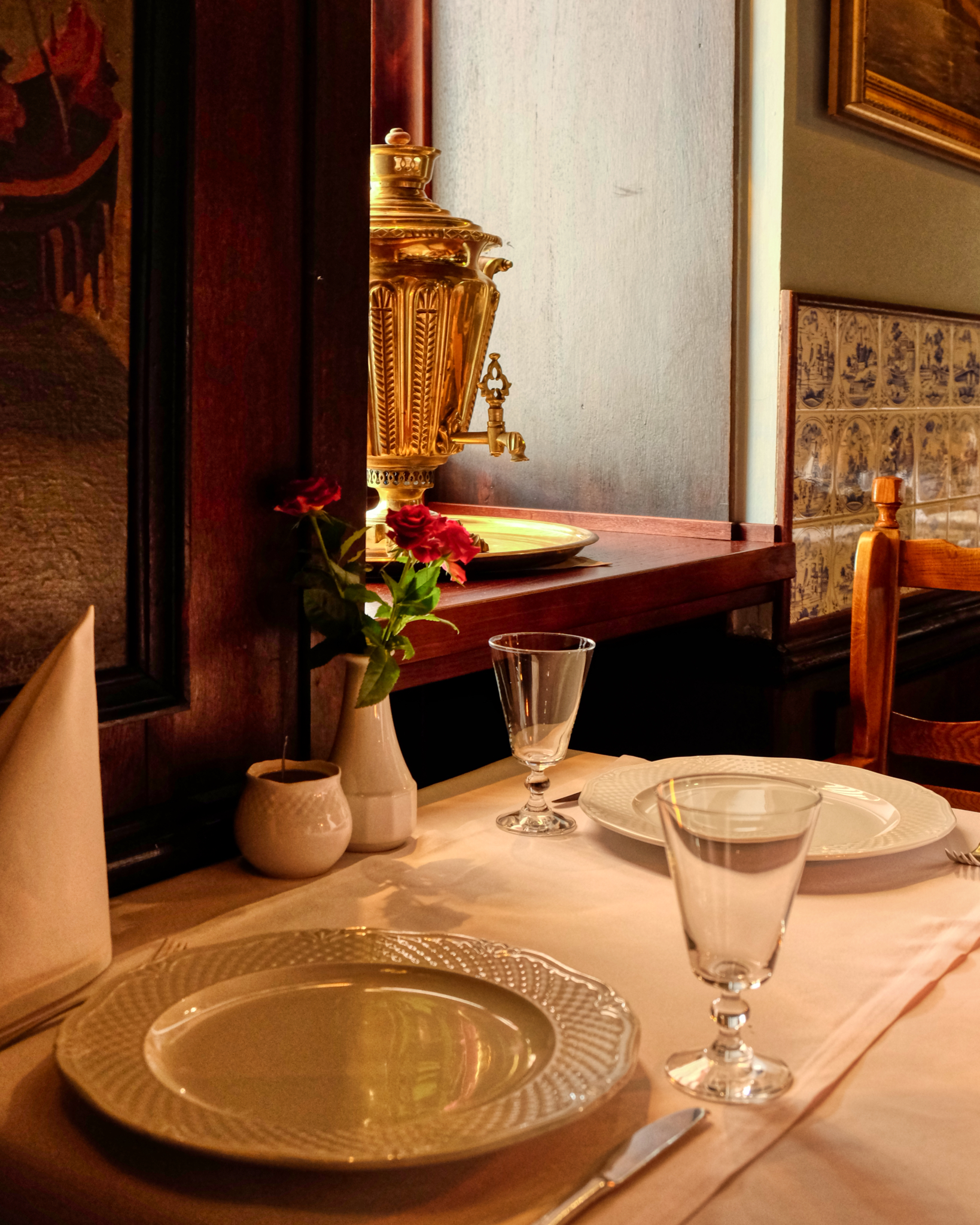 We found thee perfect Old Europe restaurant . . .
We found thee perfect Old Europe restaurant . . .
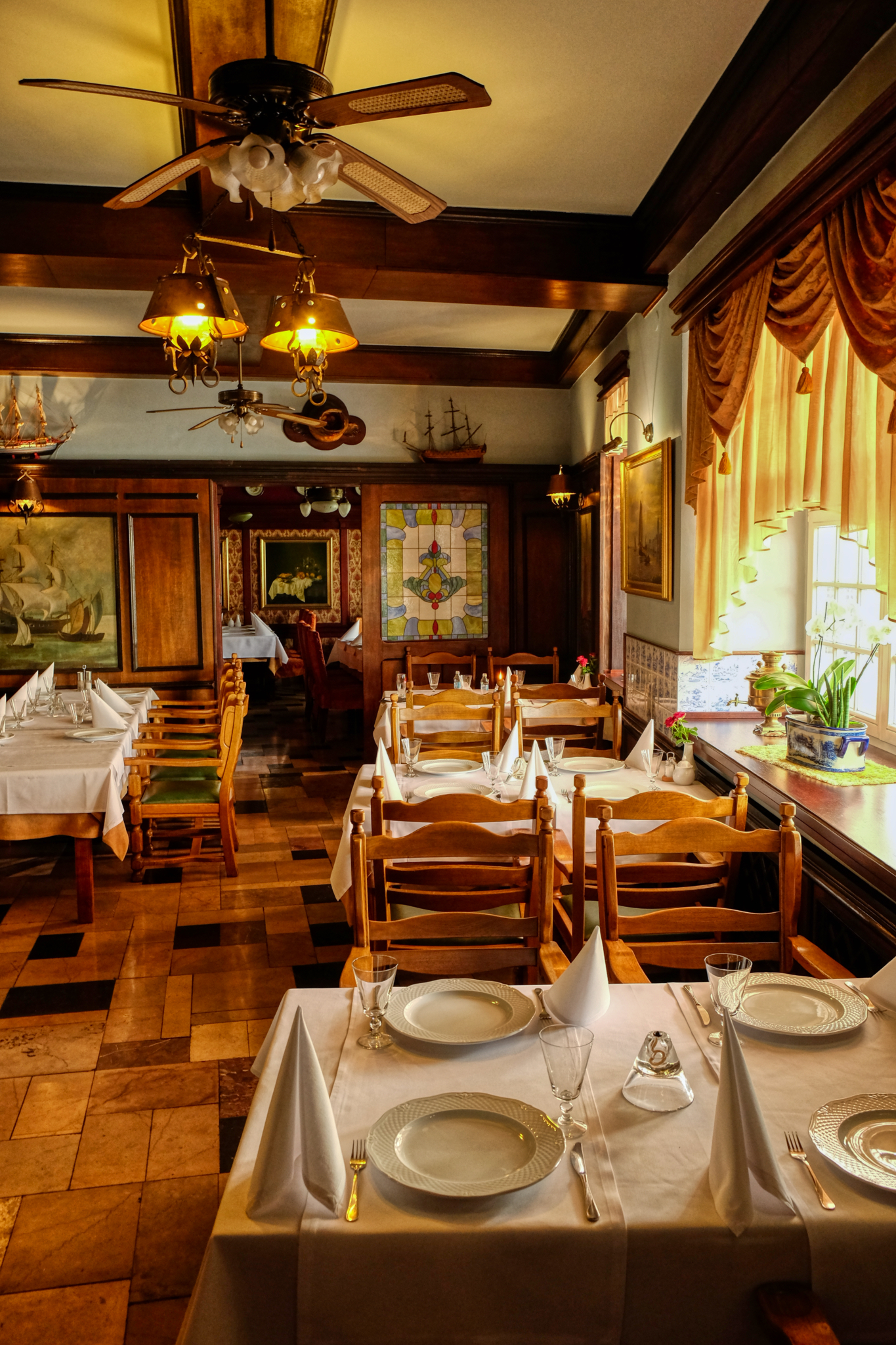 We were hungry for lunch and found this charming old restaurant.
We were hungry for lunch and found this charming old restaurant.
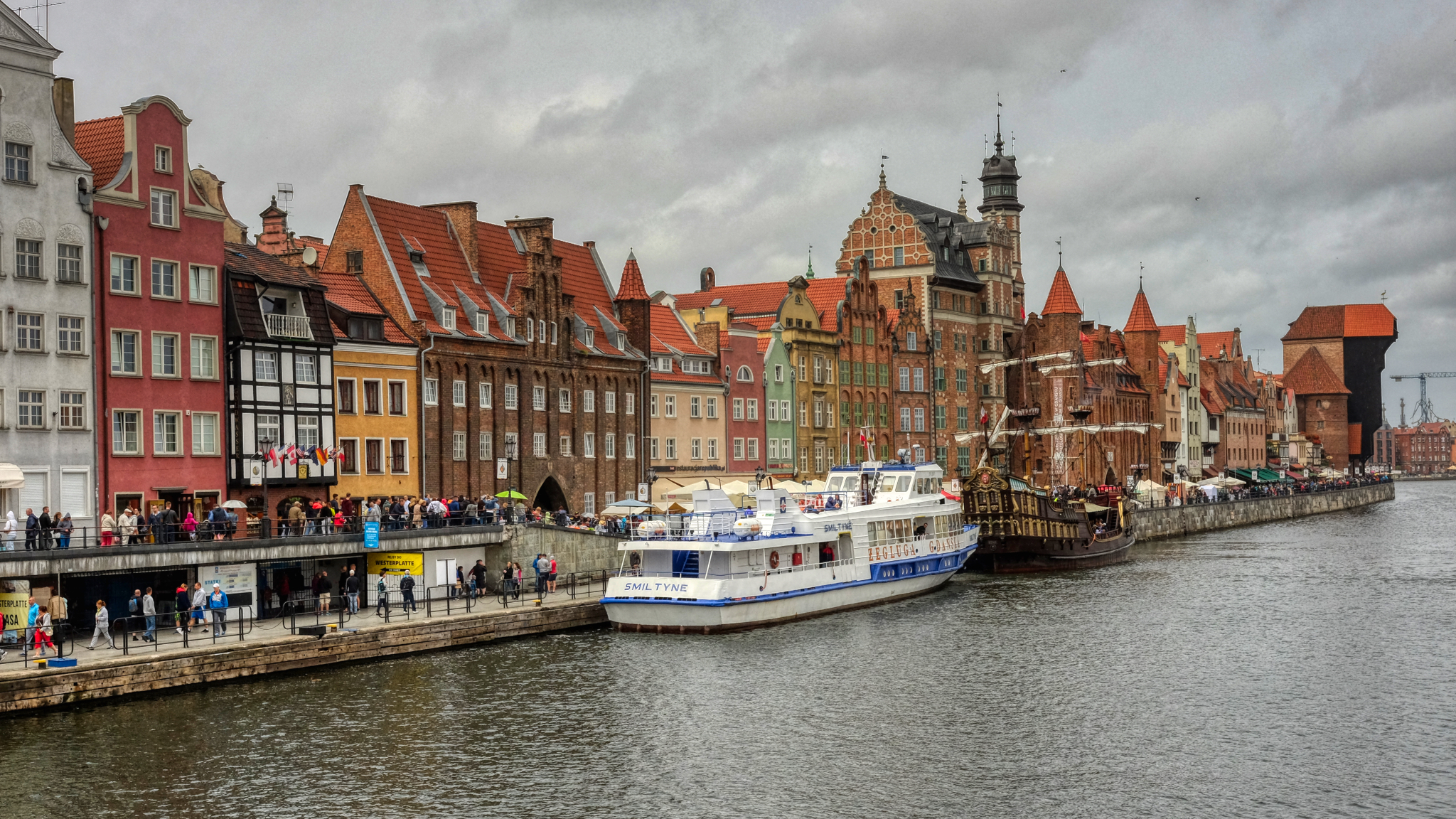 Down along the river quay. A fine medieval dock crane on the far left.
Down along the river quay. A fine medieval dock crane on the far left.
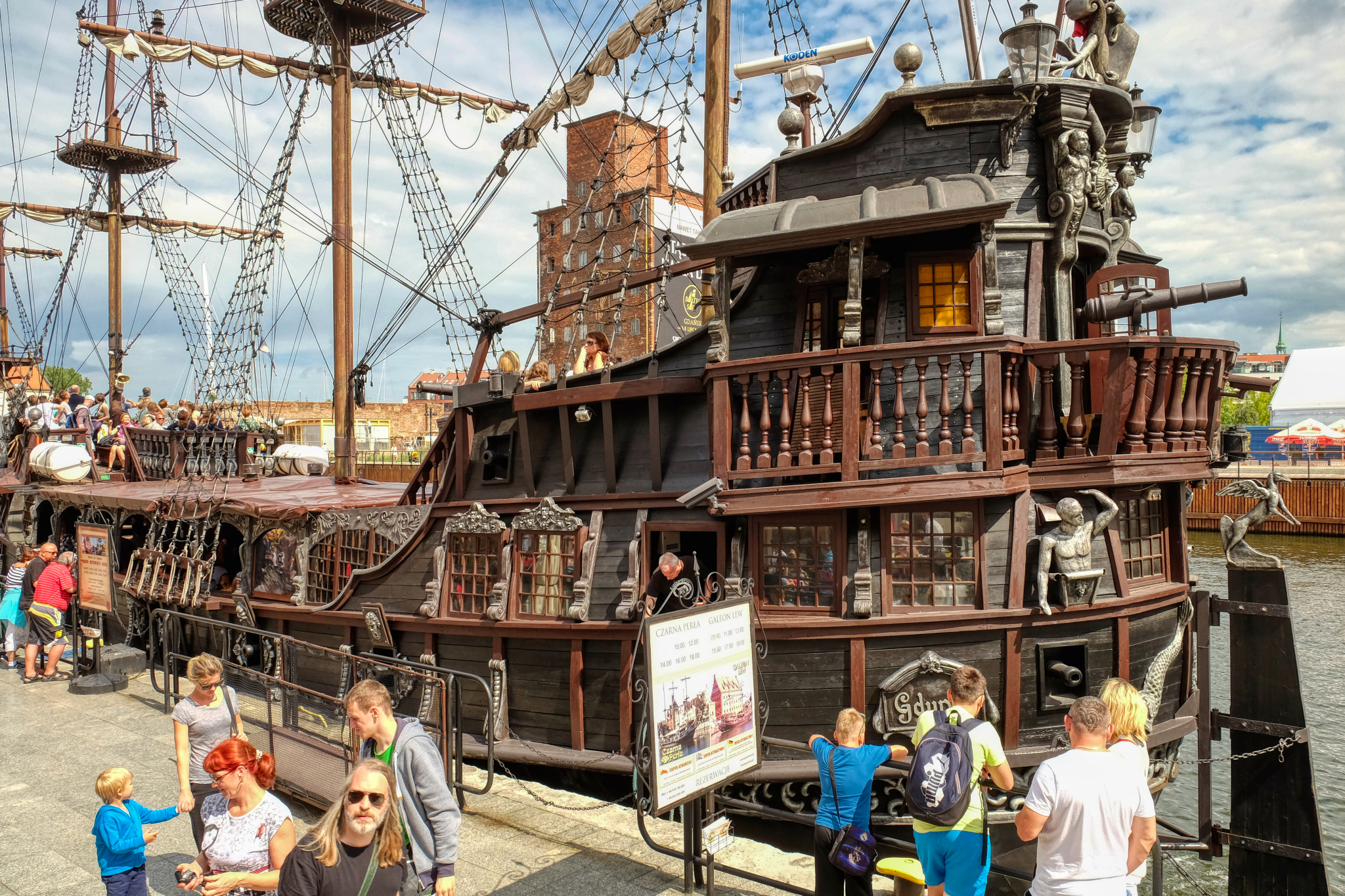 River cruise ship for the tourists . . .
River cruise ship for the tourists . . .
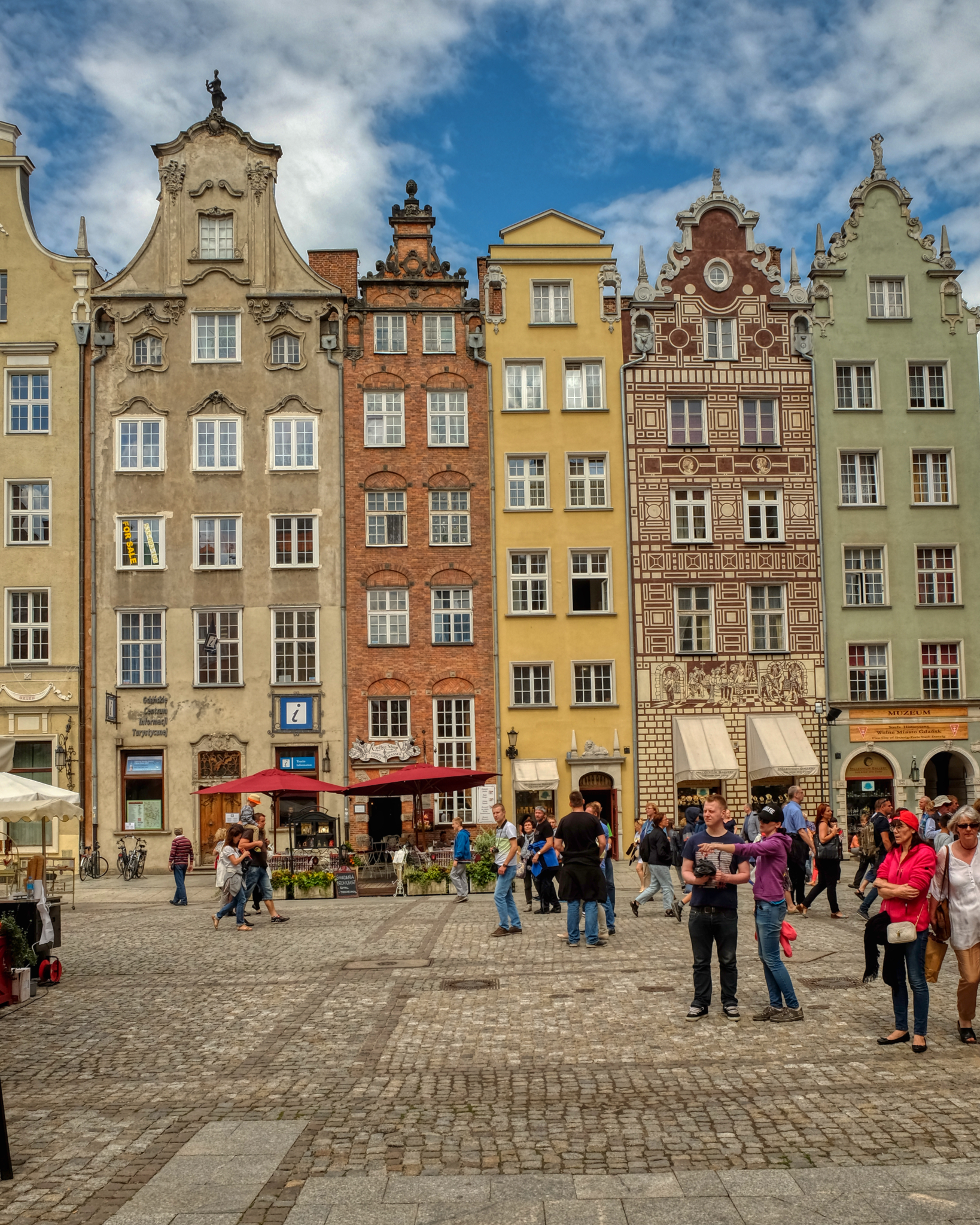 For me, the lure of Gdańsk was the marvelous array of fascinating architecture.
For me, the lure of Gdańsk was the marvelous array of fascinating architecture.
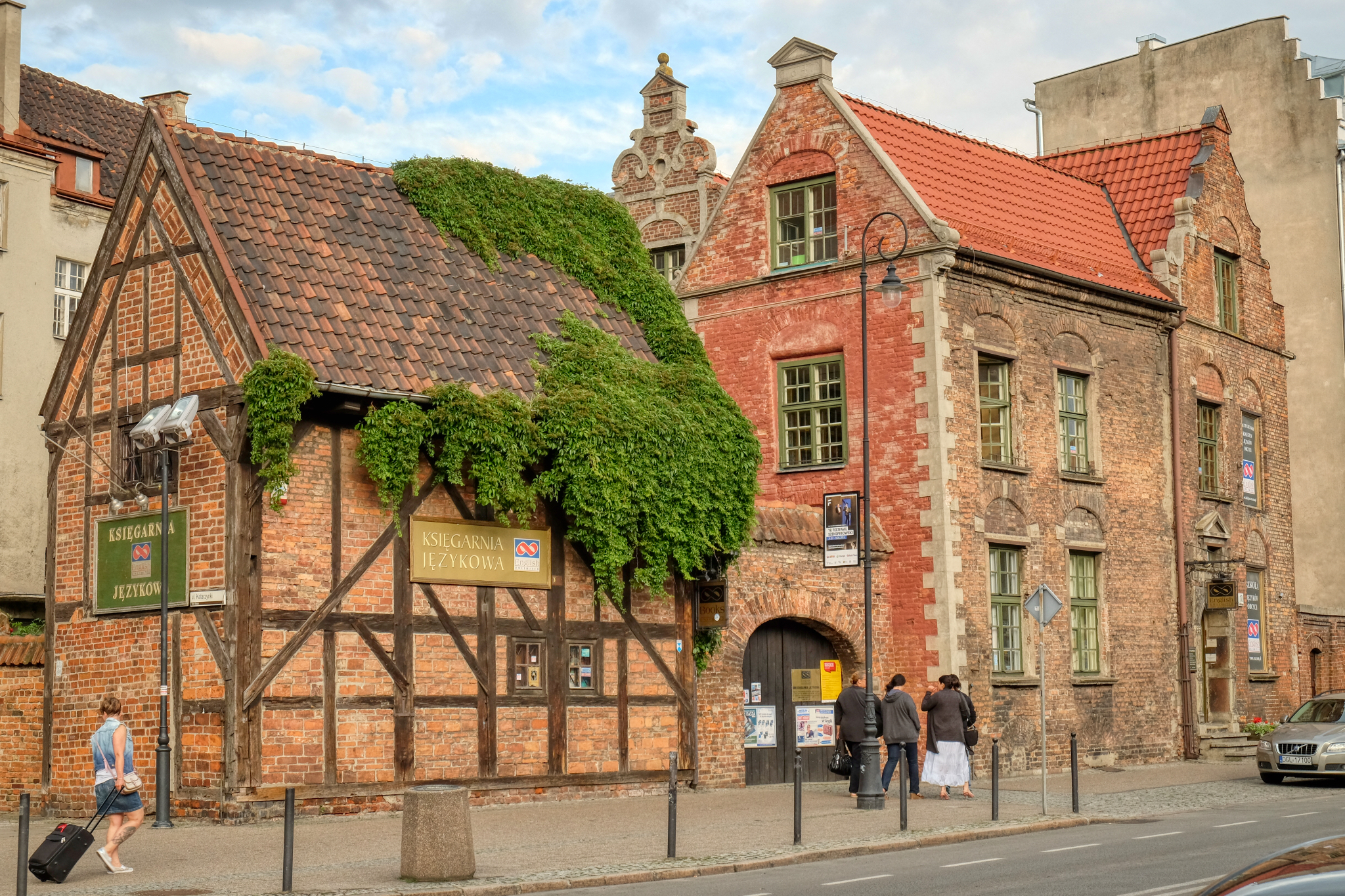 A few of the old buildings survived the carpet bombing.
A few of the old buildings survived the carpet bombing.
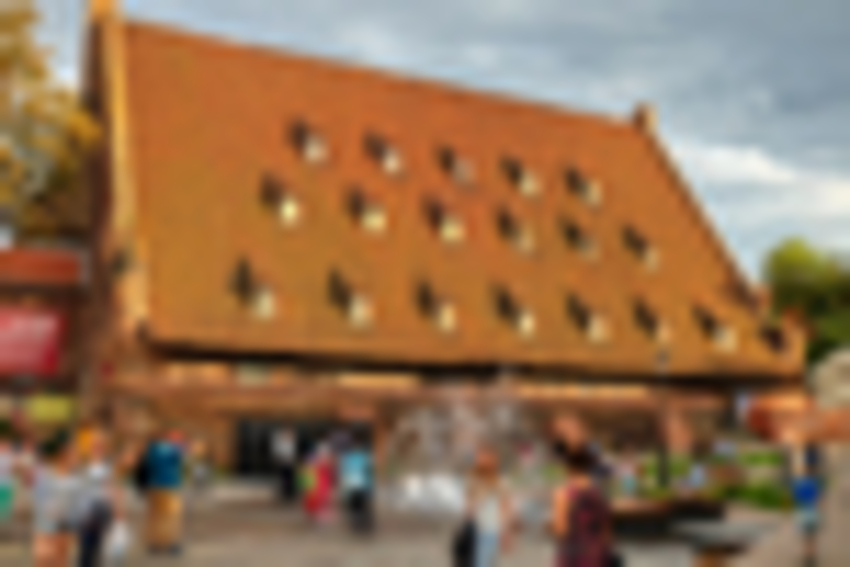 Such an odd building . . . all roof and dormers . . .
Such an odd building . . . all roof and dormers . . .
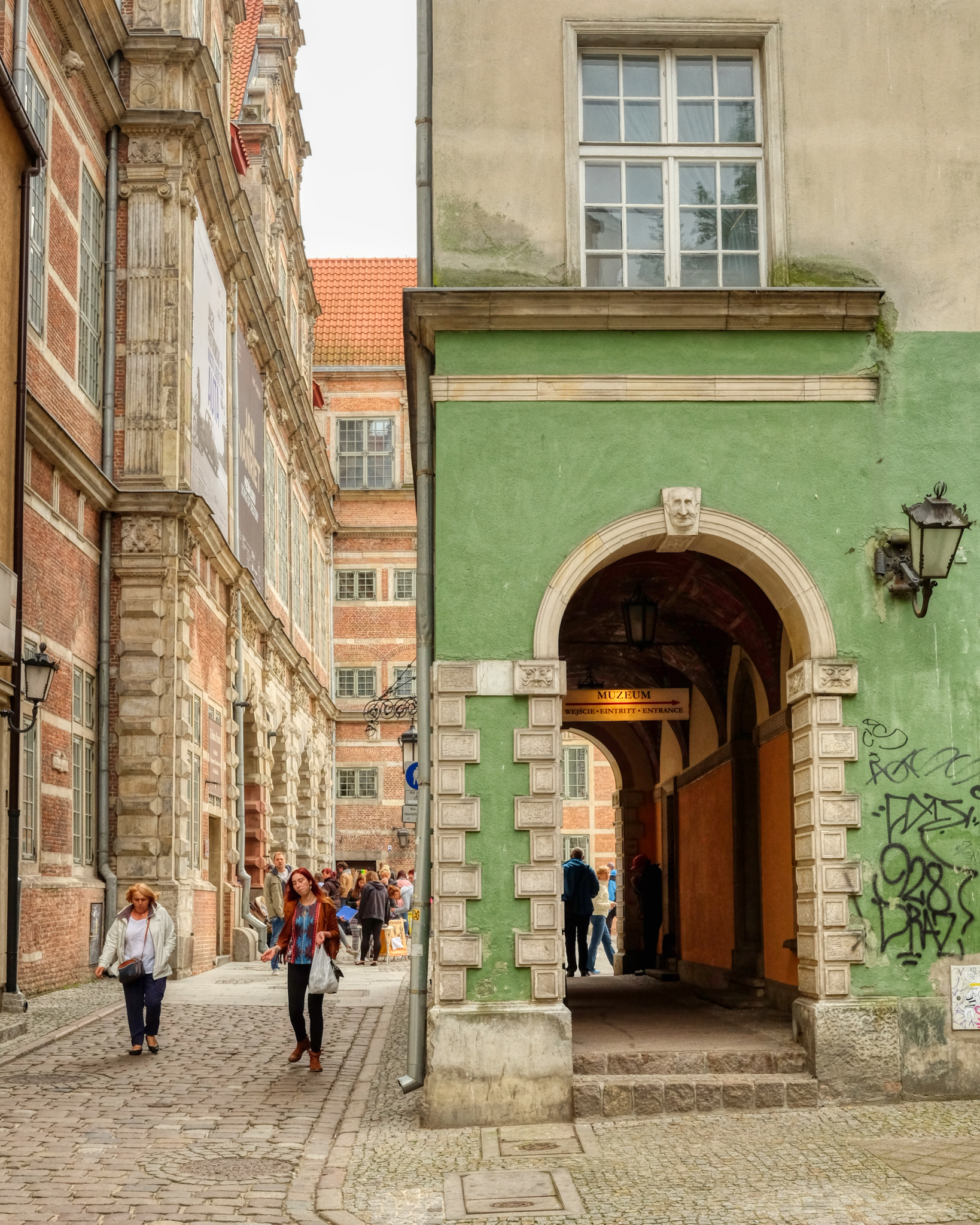 Narrow alleys, cobbles streets, ancient buildings . . . the charms of old Europe.
Narrow alleys, cobbles streets, ancient buildings . . . the charms of old Europe.
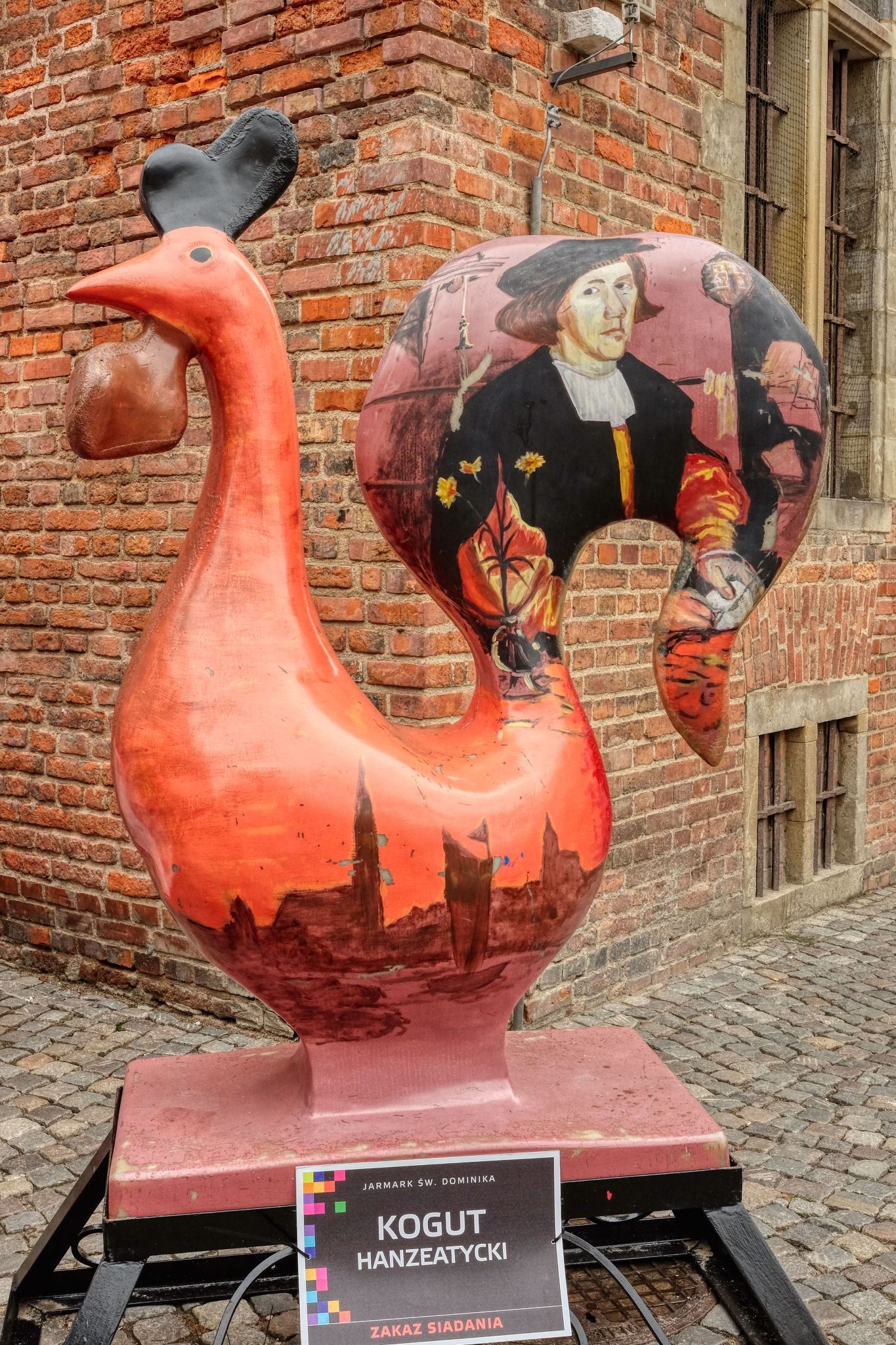 Here and there . . . public art . . .
Here and there . . . public art . . .
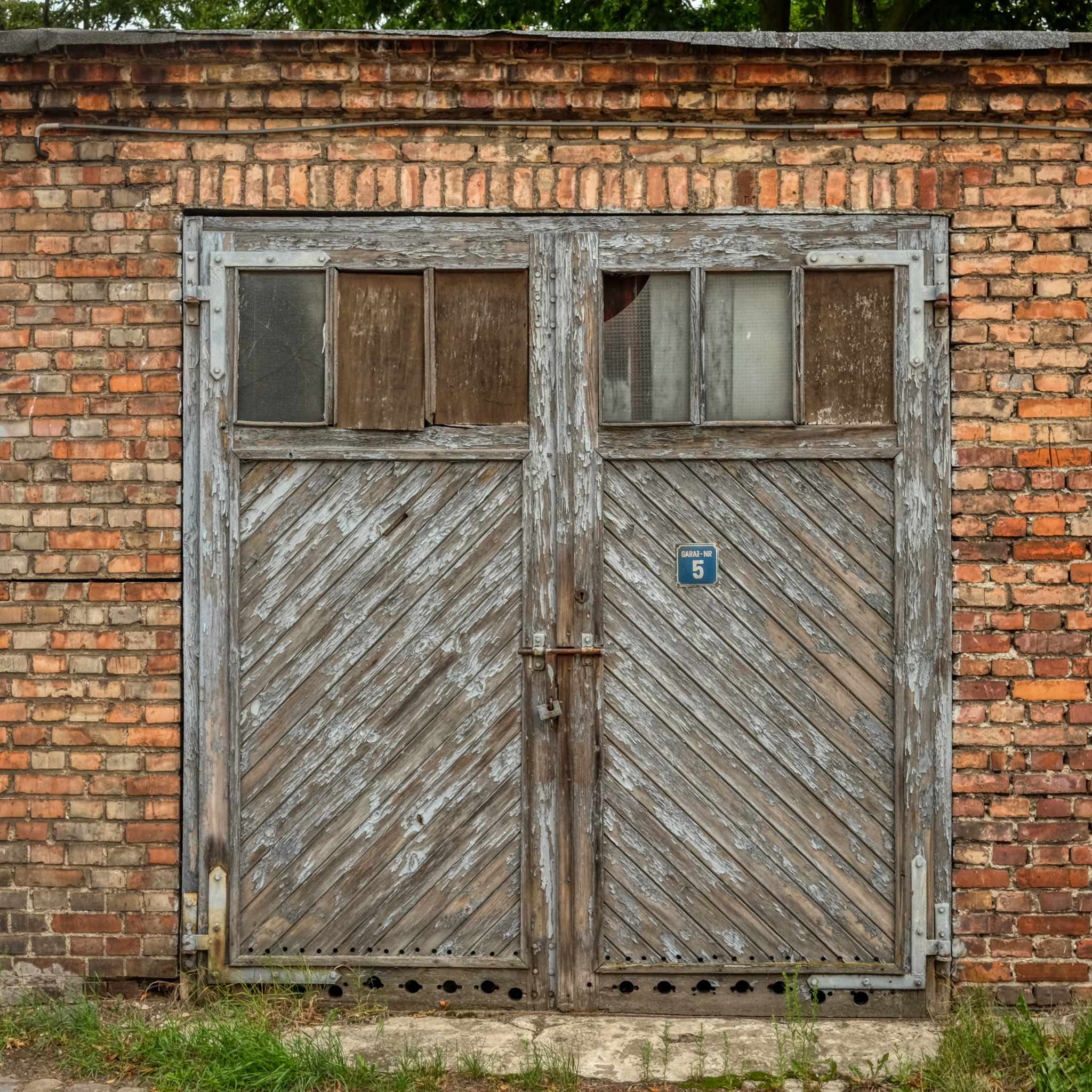 My love of old doors, walls and windows was satisfied in a big way in Gdańsk!
My love of old doors, walls and windows was satisfied in a big way in Gdańsk!
 I was told by a shopkeeper that some of these grand old doors and their stone casings were pulled from the rubble after the bombings and restored and reused. Marvelous.
I was told by a shopkeeper that some of these grand old doors and their stone casings were pulled from the rubble after the bombings and restored and reused. Marvelous.
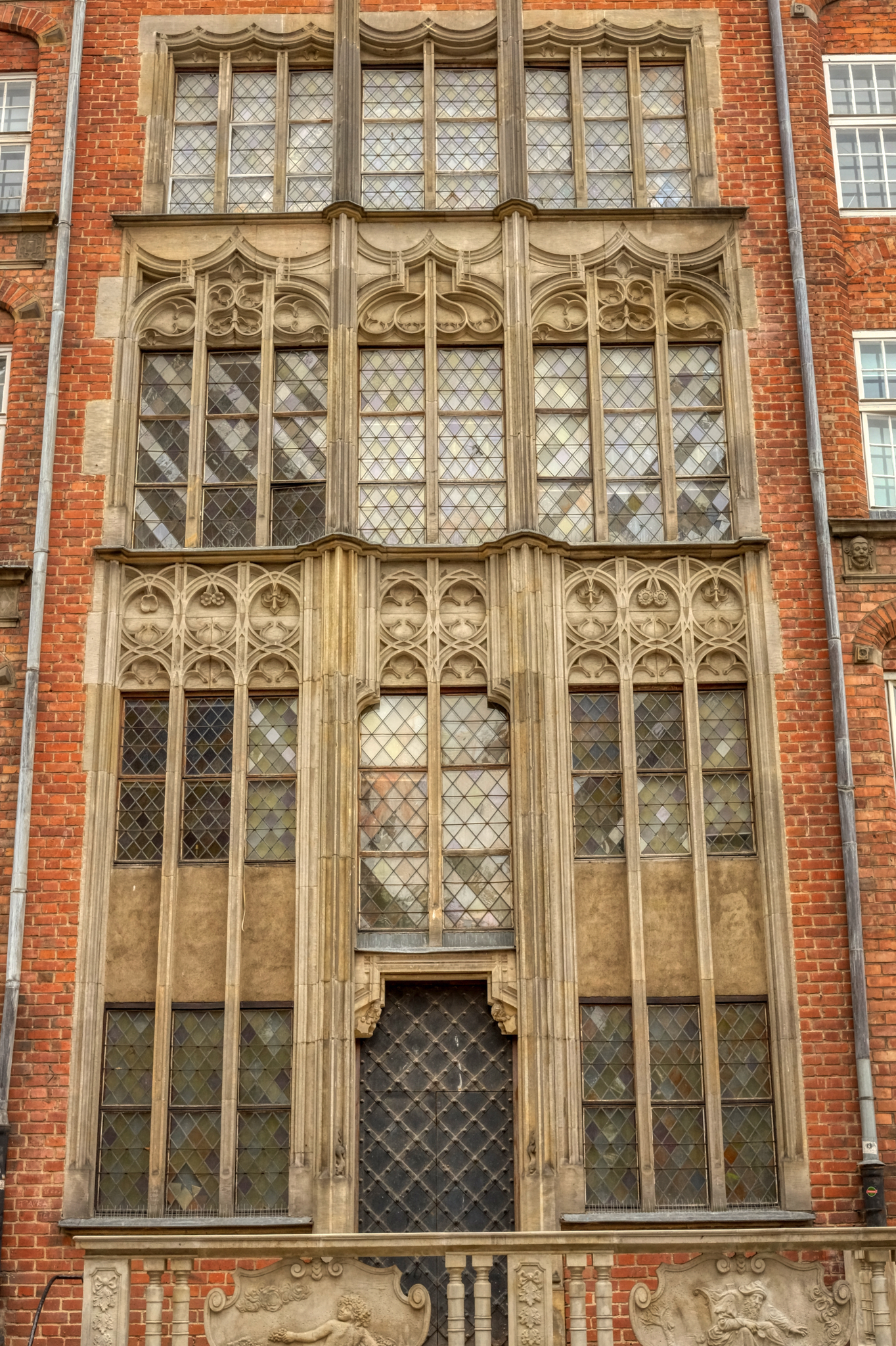 I marveled at these windows . . . exquisite!
I marveled at these windows . . . exquisite!
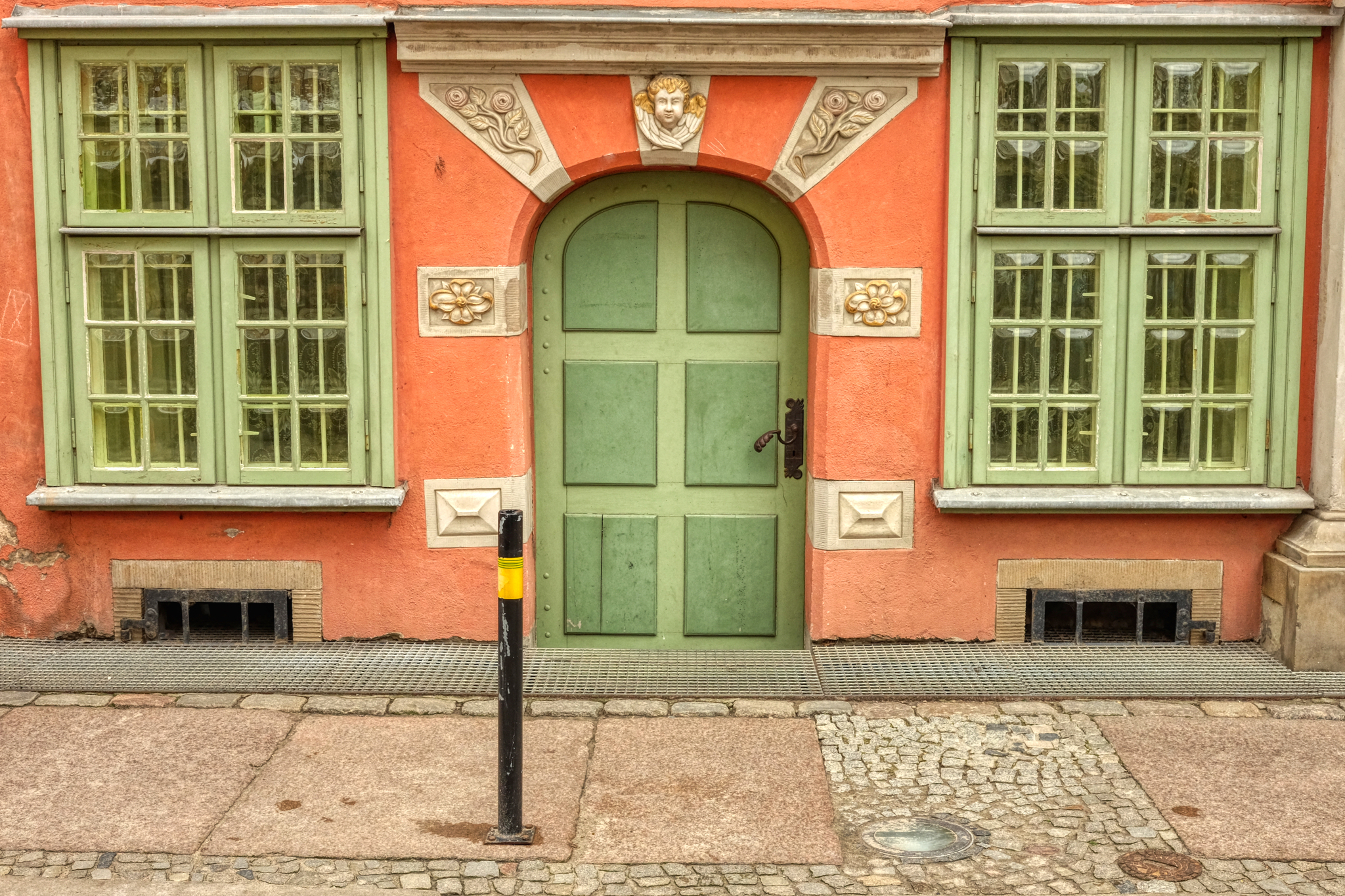 Such lovely symmetry, color, shape . . .
Such lovely symmetry, color, shape . . .
 A gate from the time of horse drawn carriages . . .
A gate from the time of horse drawn carriages . . .
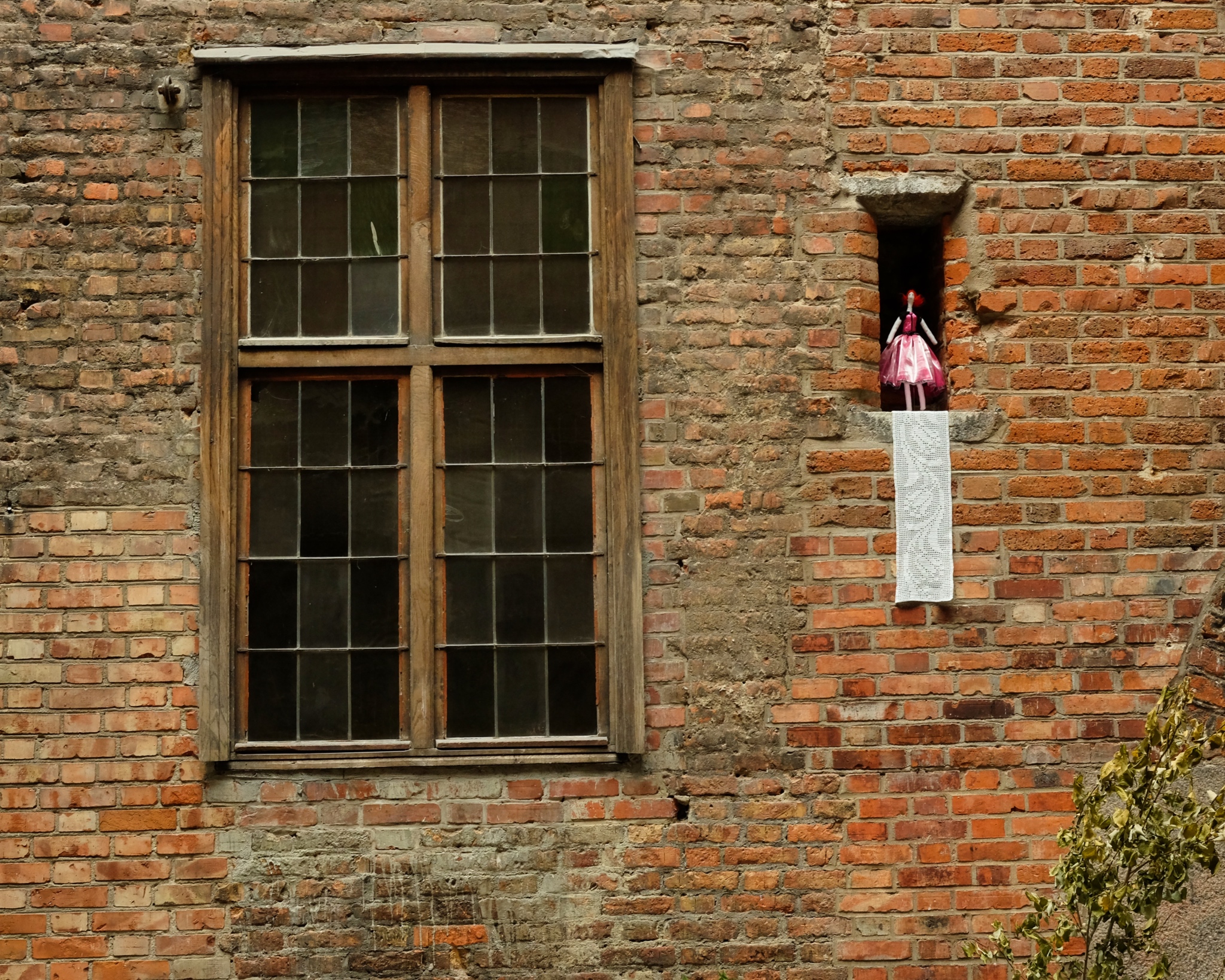 I loved the whimsical display.
I loved the whimsical display.
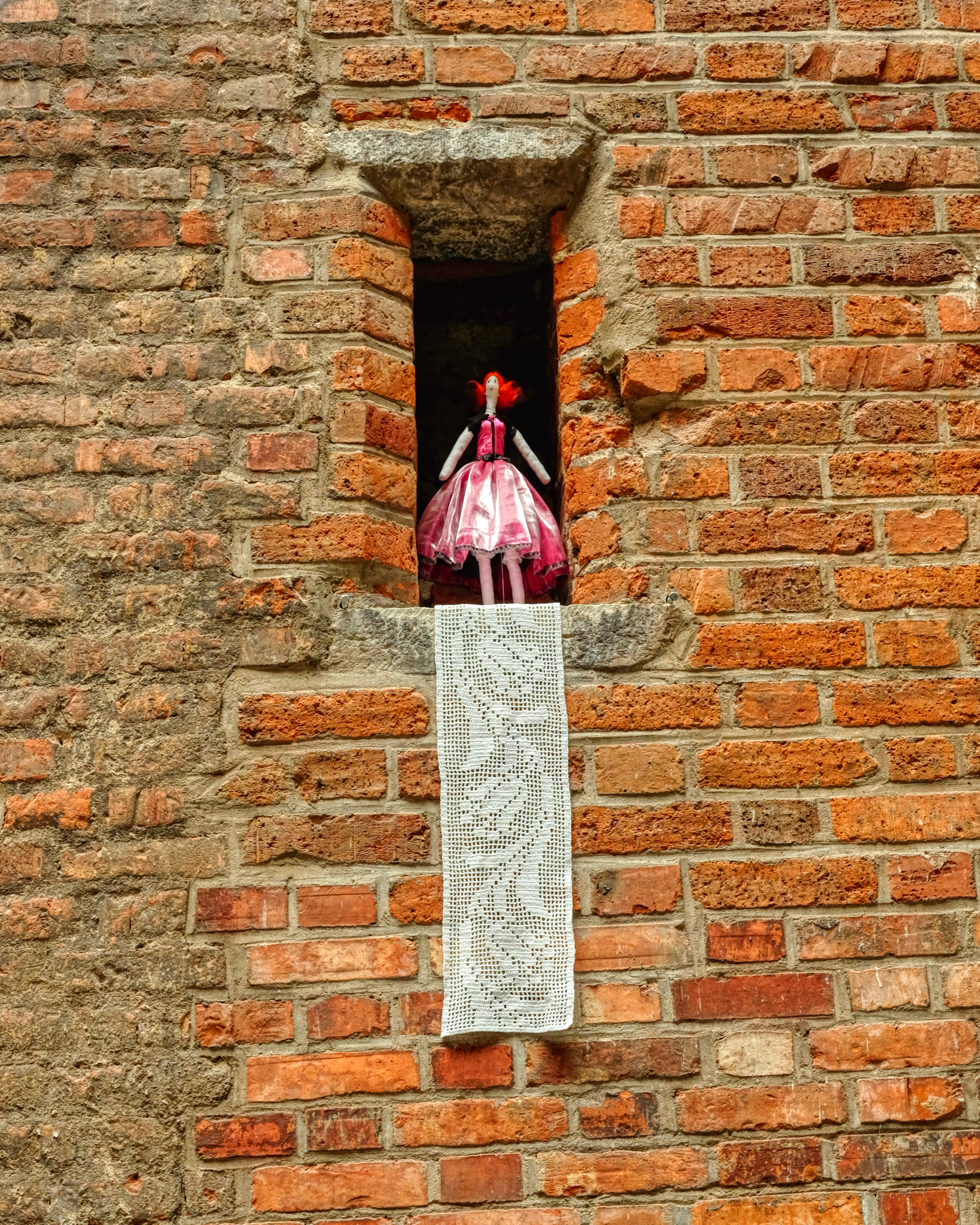 So sweet.
So sweet.
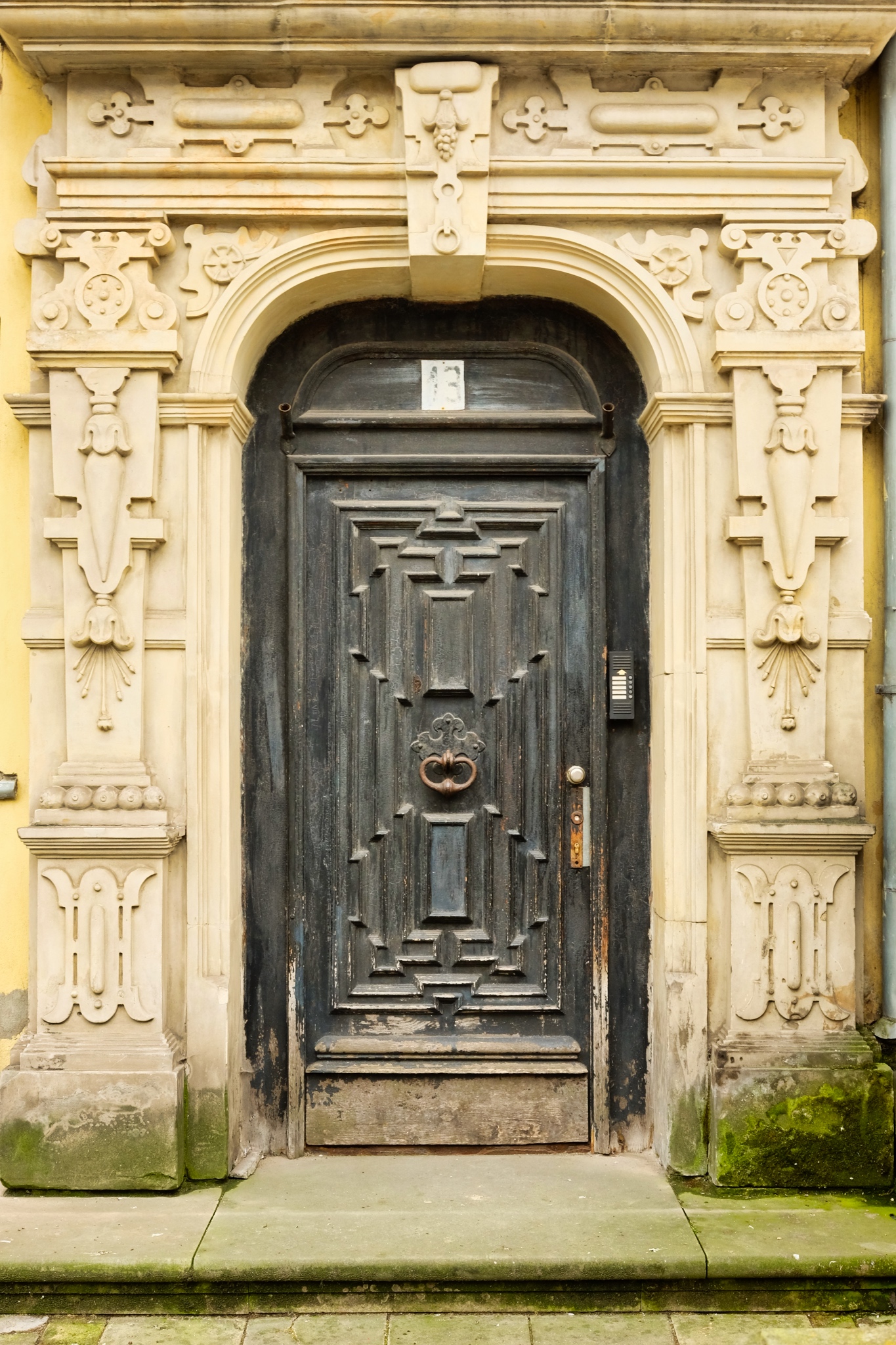 A weathered door . . . and . . .
A weathered door . . . and . . .
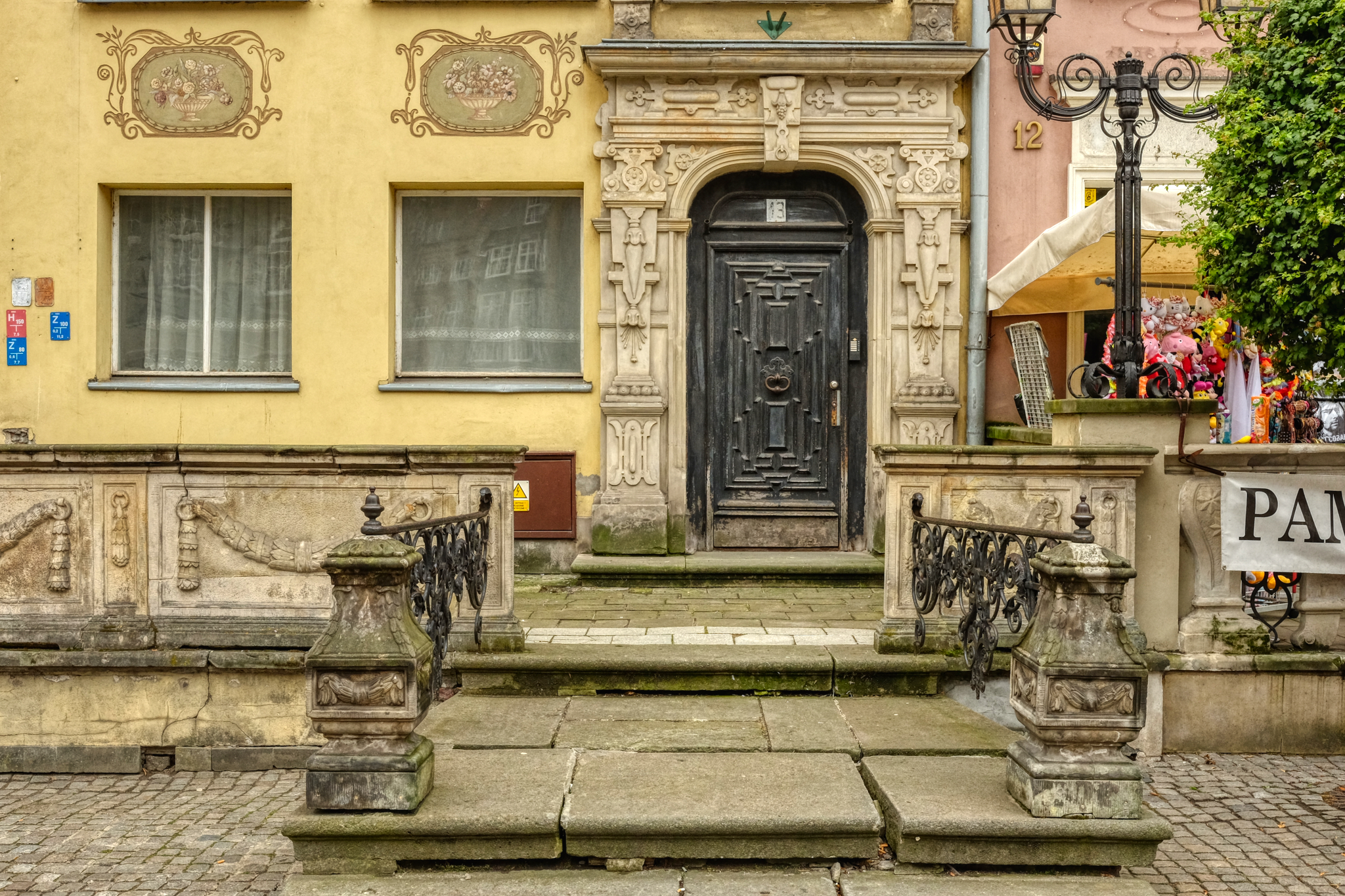 . . . and its context.
. . . and its context.
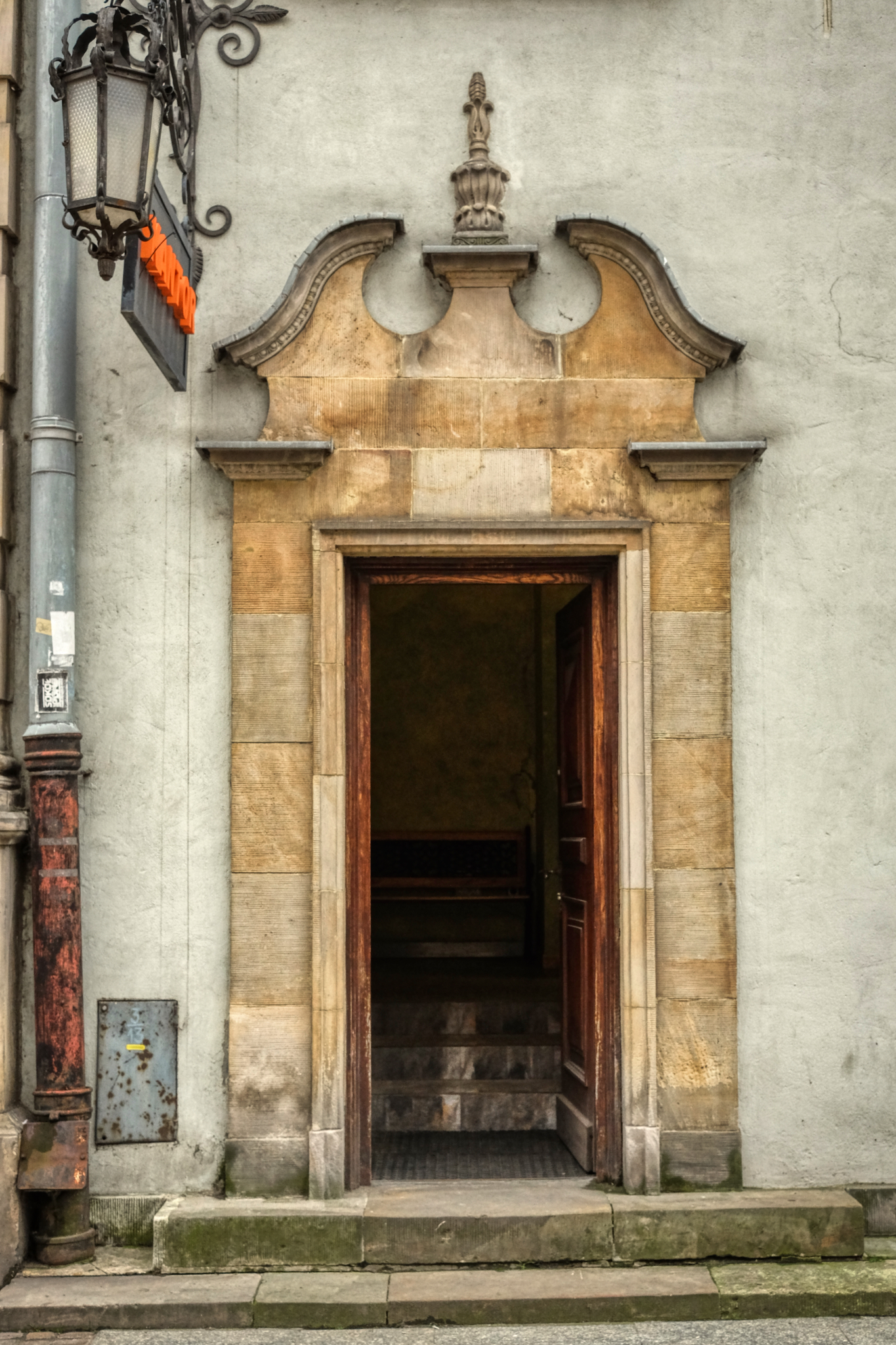 A fine, formal marble doorway.
A fine, formal marble doorway.
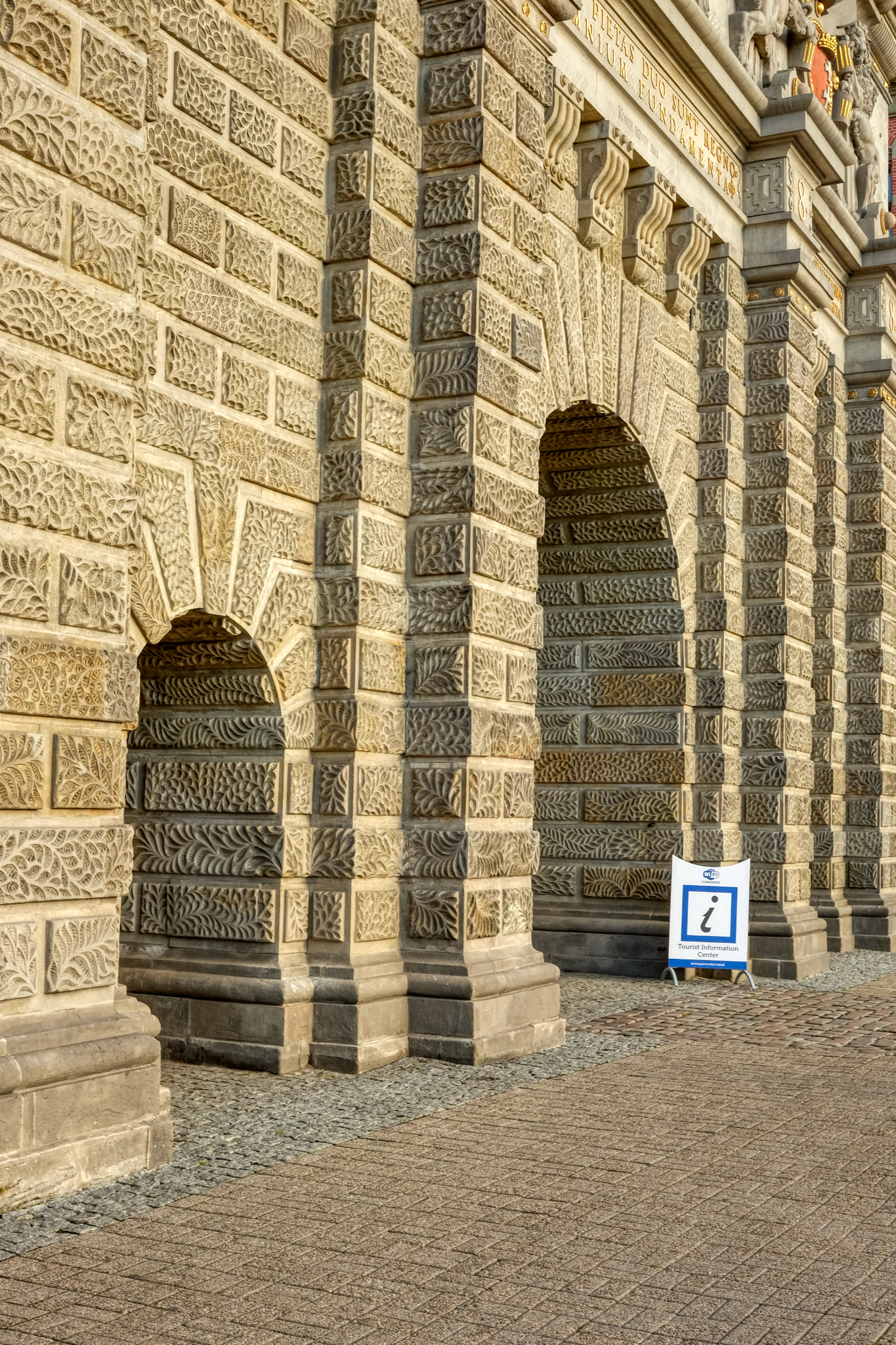 High relief stonework. Nice.
High relief stonework. Nice.
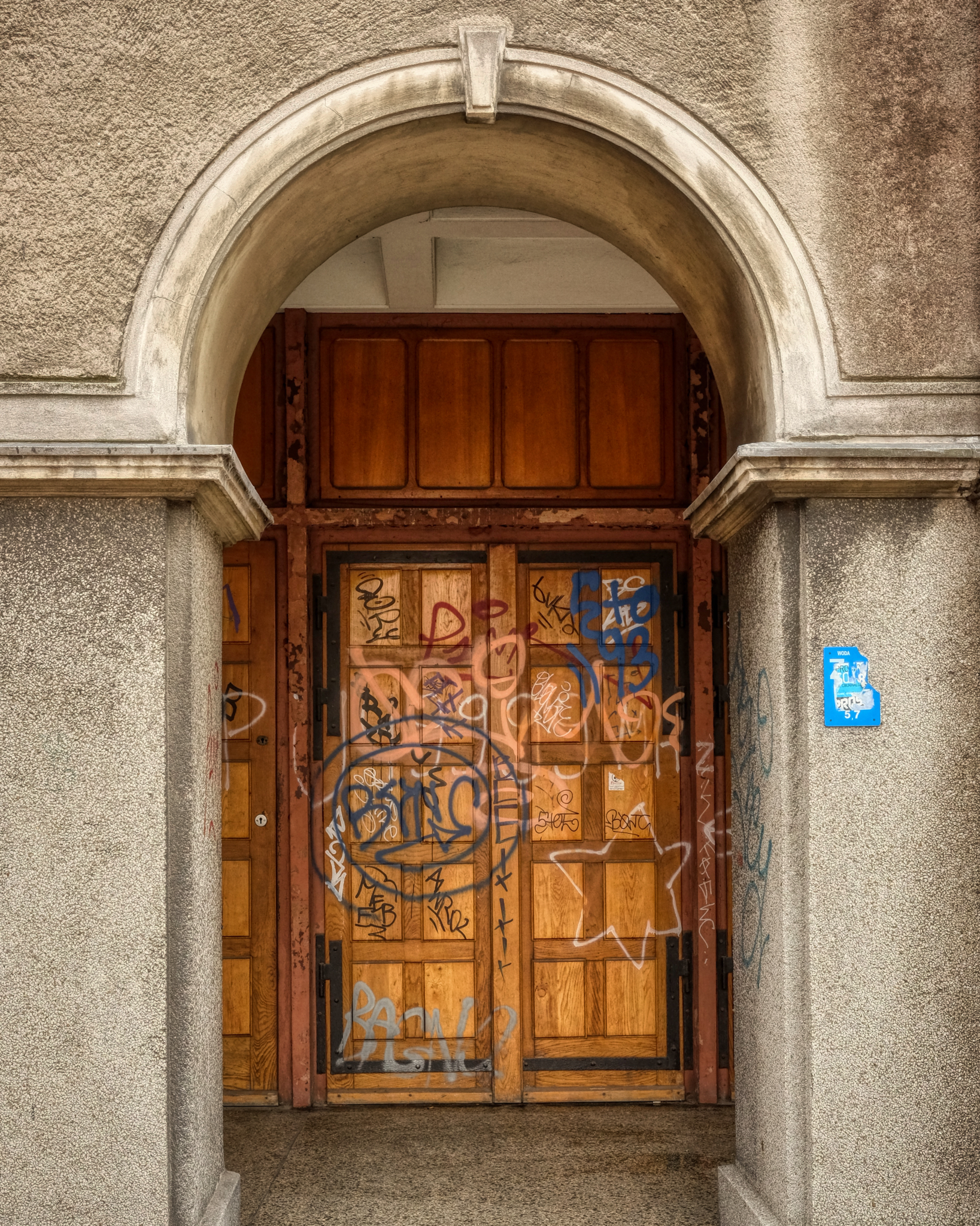 Not all of Gdańsk's doors were as appreciated as I would like to have seen.
Not all of Gdańsk's doors were as appreciated as I would like to have seen.
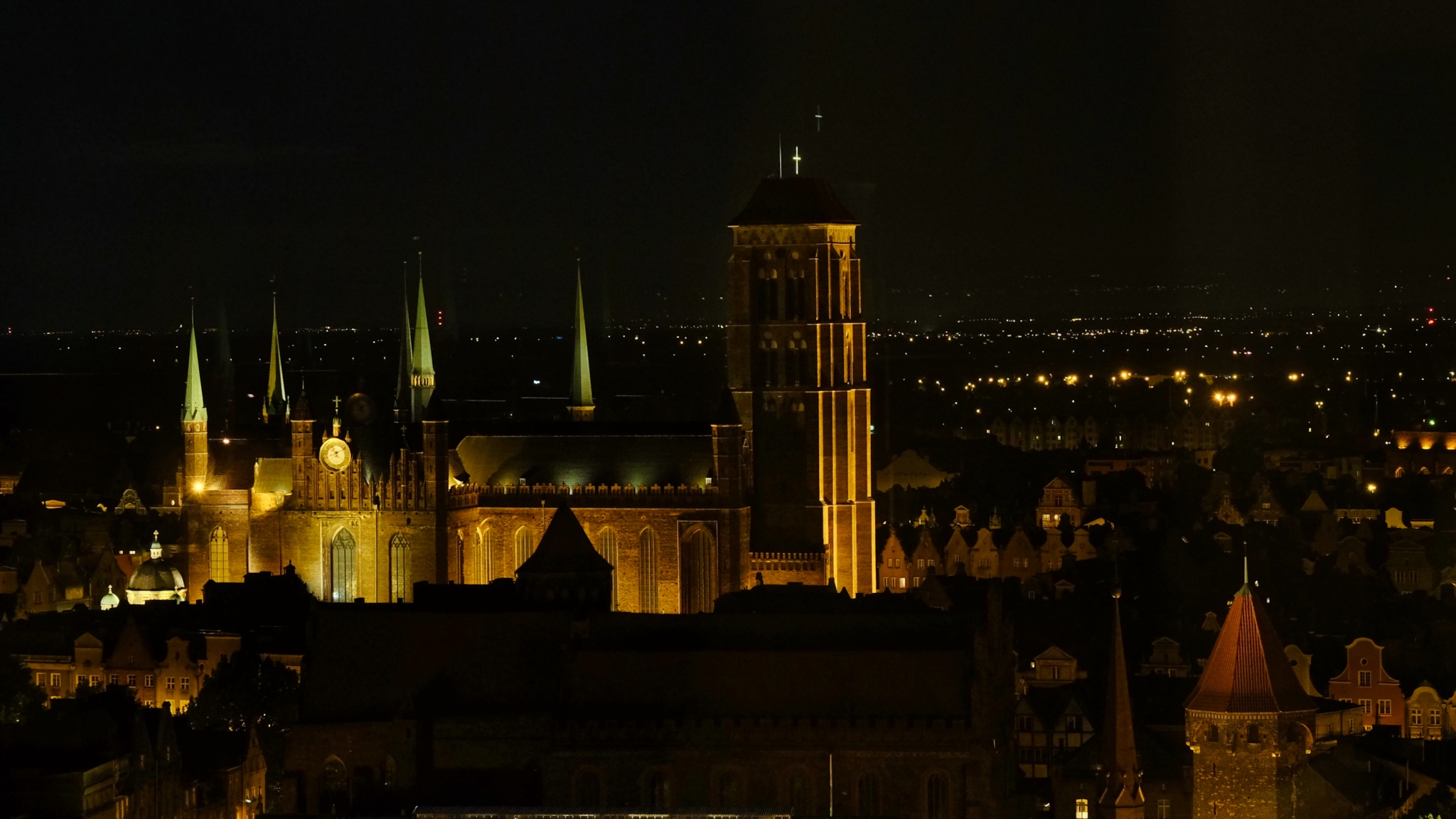 The views out over Gdańsk at night from our high rise hotel room were wonderful.
The views out over Gdańsk at night from our high rise hotel room were wonderful.
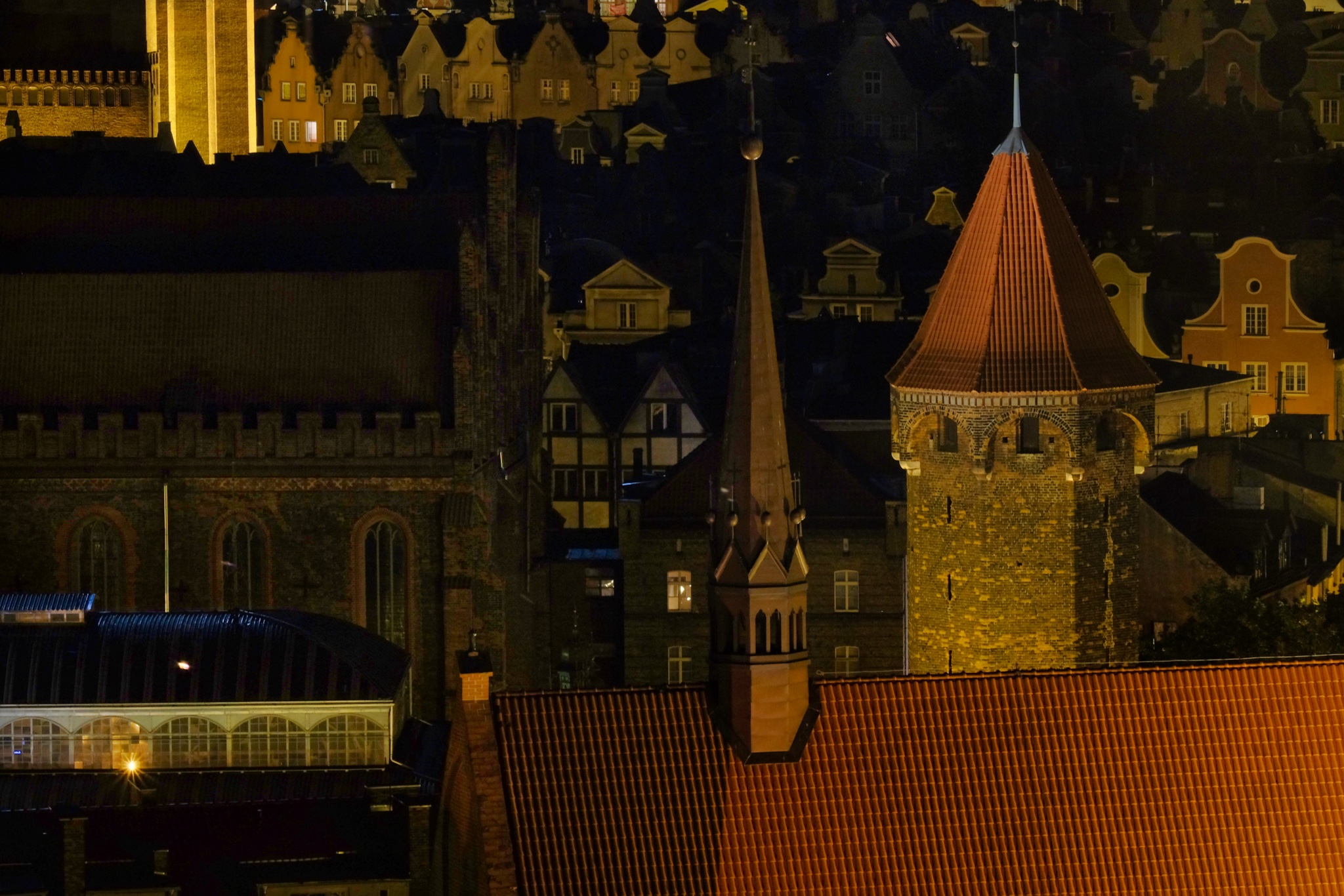 Making this photo blog about this wonderful city has made me very homesick for living in Europe . . .
Making this photo blog about this wonderful city has made me very homesick for living in Europe . . .
 I don't know if I will ever return to Gdańsk, but I know I will always have fond memories of it.
I don't know if I will ever return to Gdańsk, but I know I will always have fond memories of it.
Poland: Kraków is a beautiful vacation destination!
 Friday, April 17, 2020 at 9:03AM
Friday, April 17, 2020 at 9:03AM We visited Poland (Kraków and Gdańsk) in the summer of 2014. The entry for Gdańsk can be found HERE.
KRAKÓW:
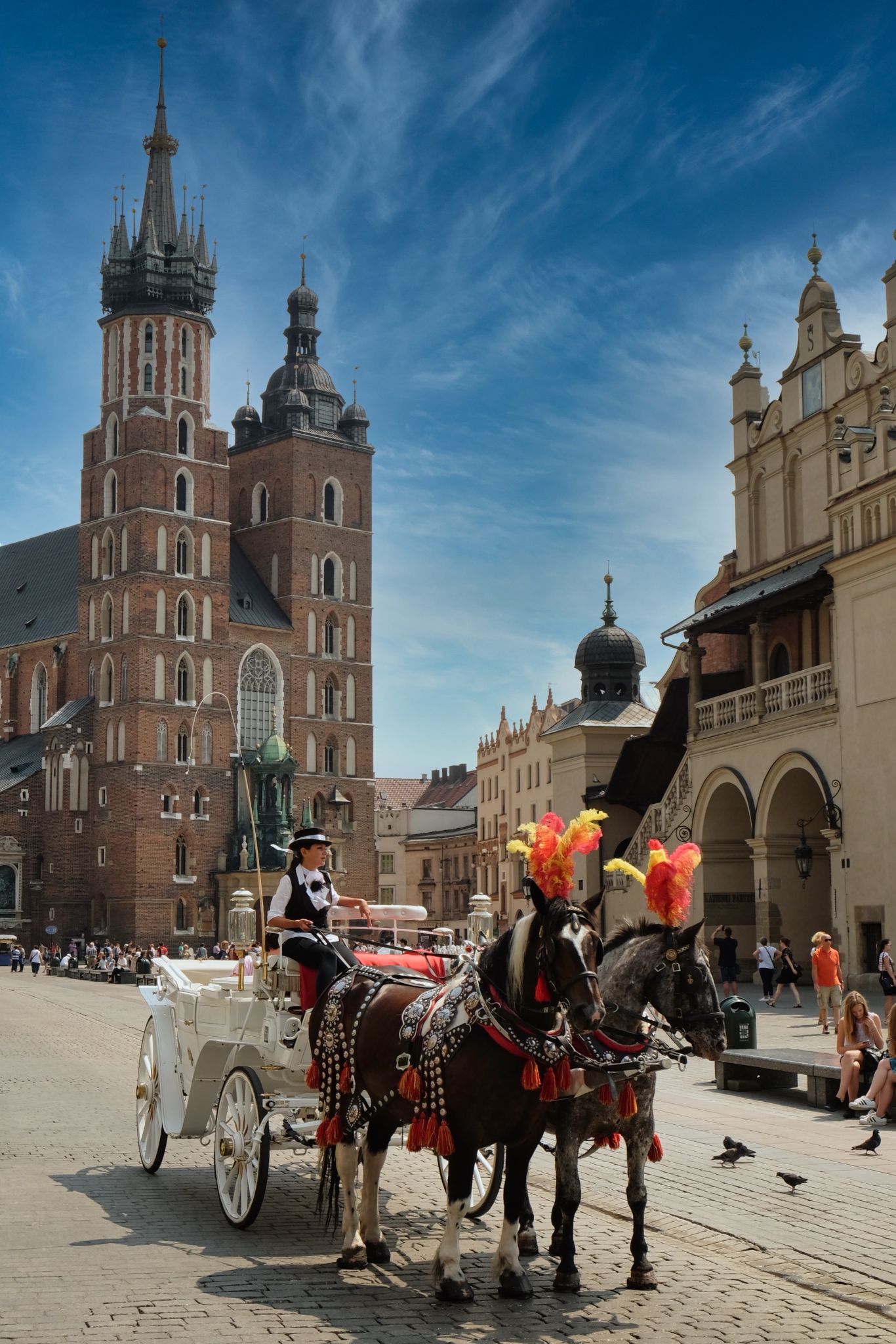 Central city Kraków in early summer is such a wonderful place to visit. The marvelous 14th century St. Mary's Basilica on the square.
Central city Kraków in early summer is such a wonderful place to visit. The marvelous 14th century St. Mary's Basilica on the square.
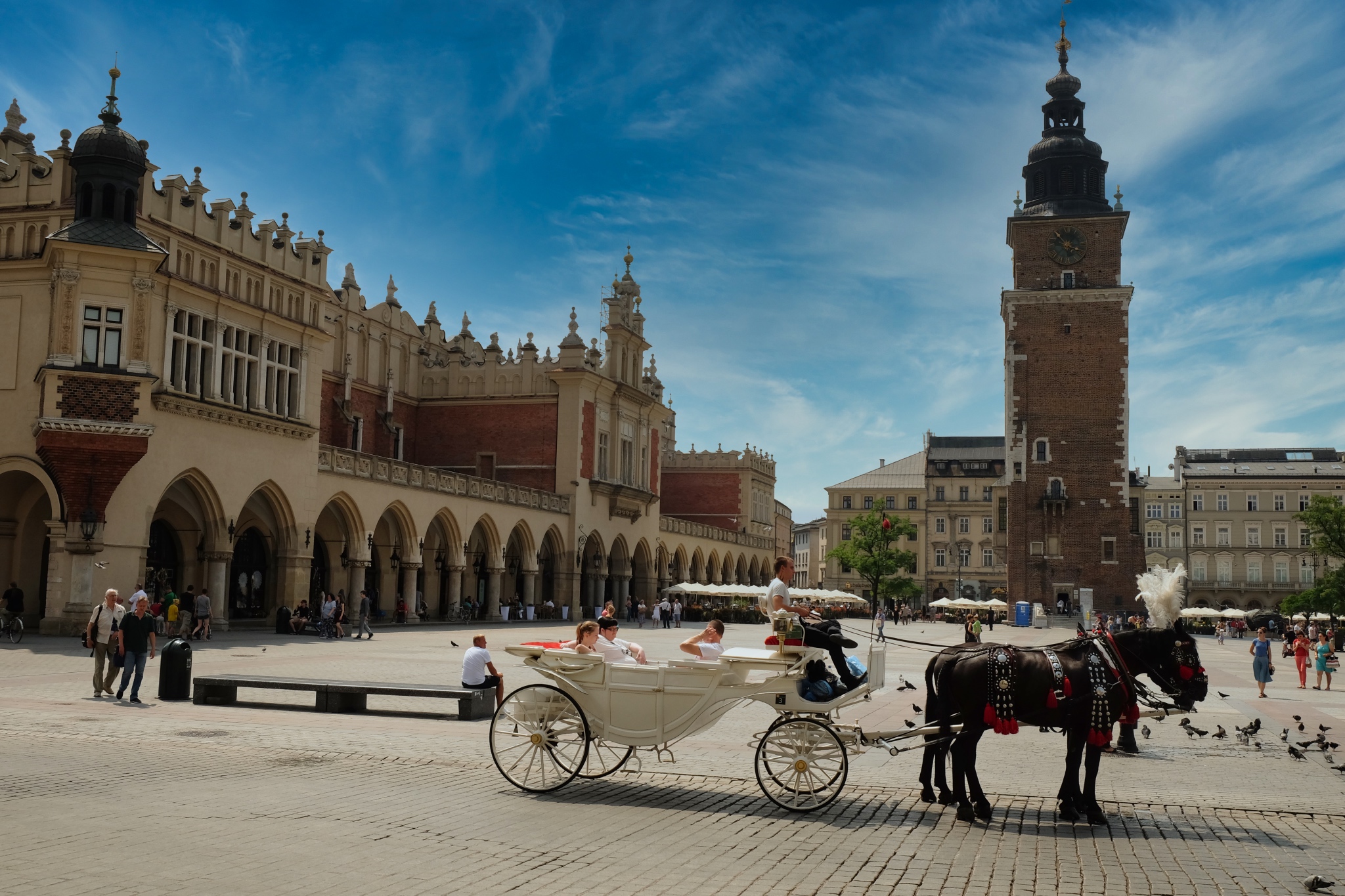 The Main Square in Kraków dates from the 13th century and is the largest town square in all of Europe (@ 9.2 acres, or 3.79 ha).
The Main Square in Kraków dates from the 13th century and is the largest town square in all of Europe (@ 9.2 acres, or 3.79 ha).
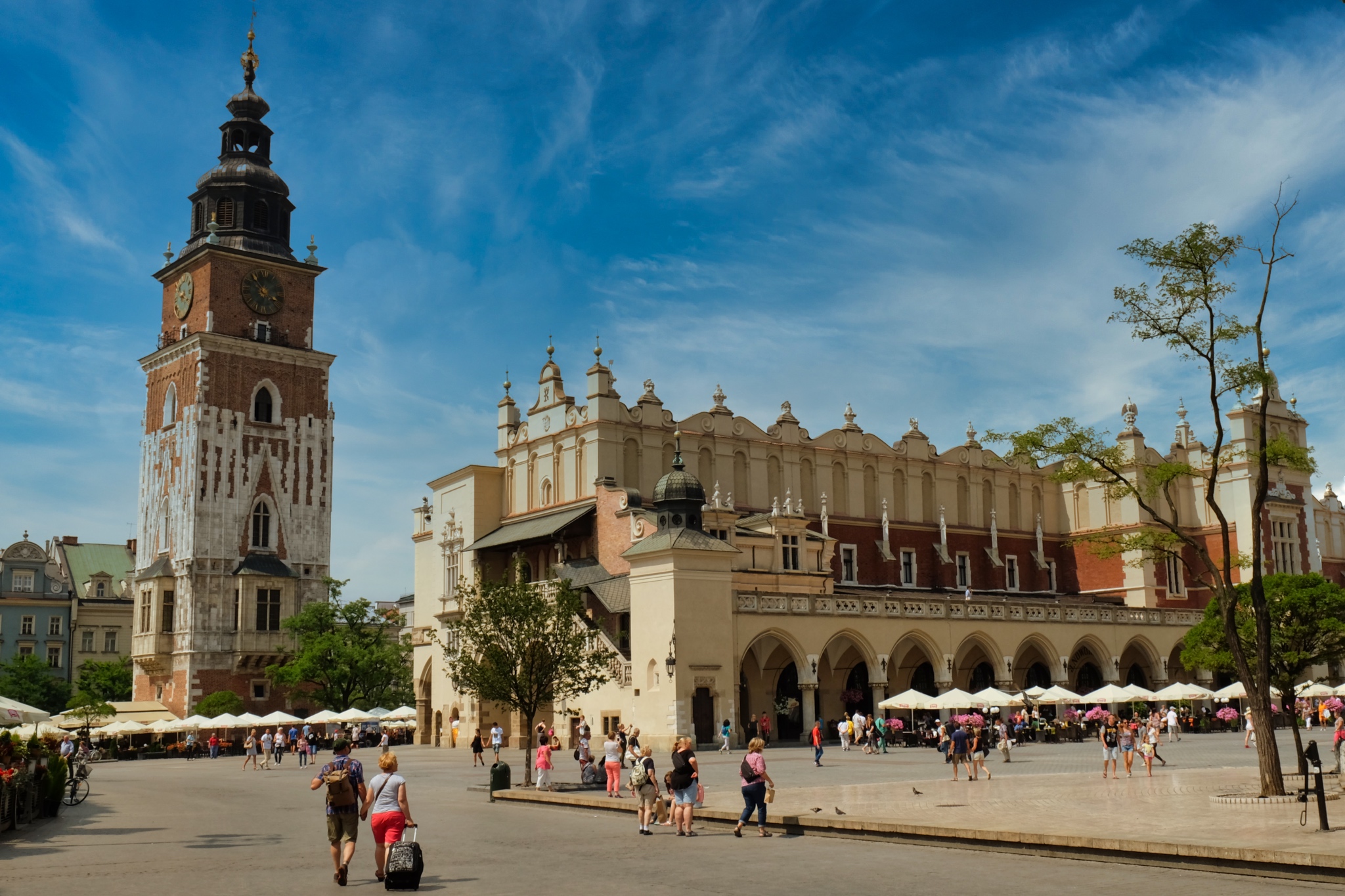 Kraków Main Square with the Cloth Hall (right, now a tourist galleria) built in the 15th century, and the City Hall Tower (left) built in the 14th Century. The original town hall, which was attached to the tower, was demolished in the mid-1800s.
Kraków Main Square with the Cloth Hall (right, now a tourist galleria) built in the 15th century, and the City Hall Tower (left) built in the 14th Century. The original town hall, which was attached to the tower, was demolished in the mid-1800s.
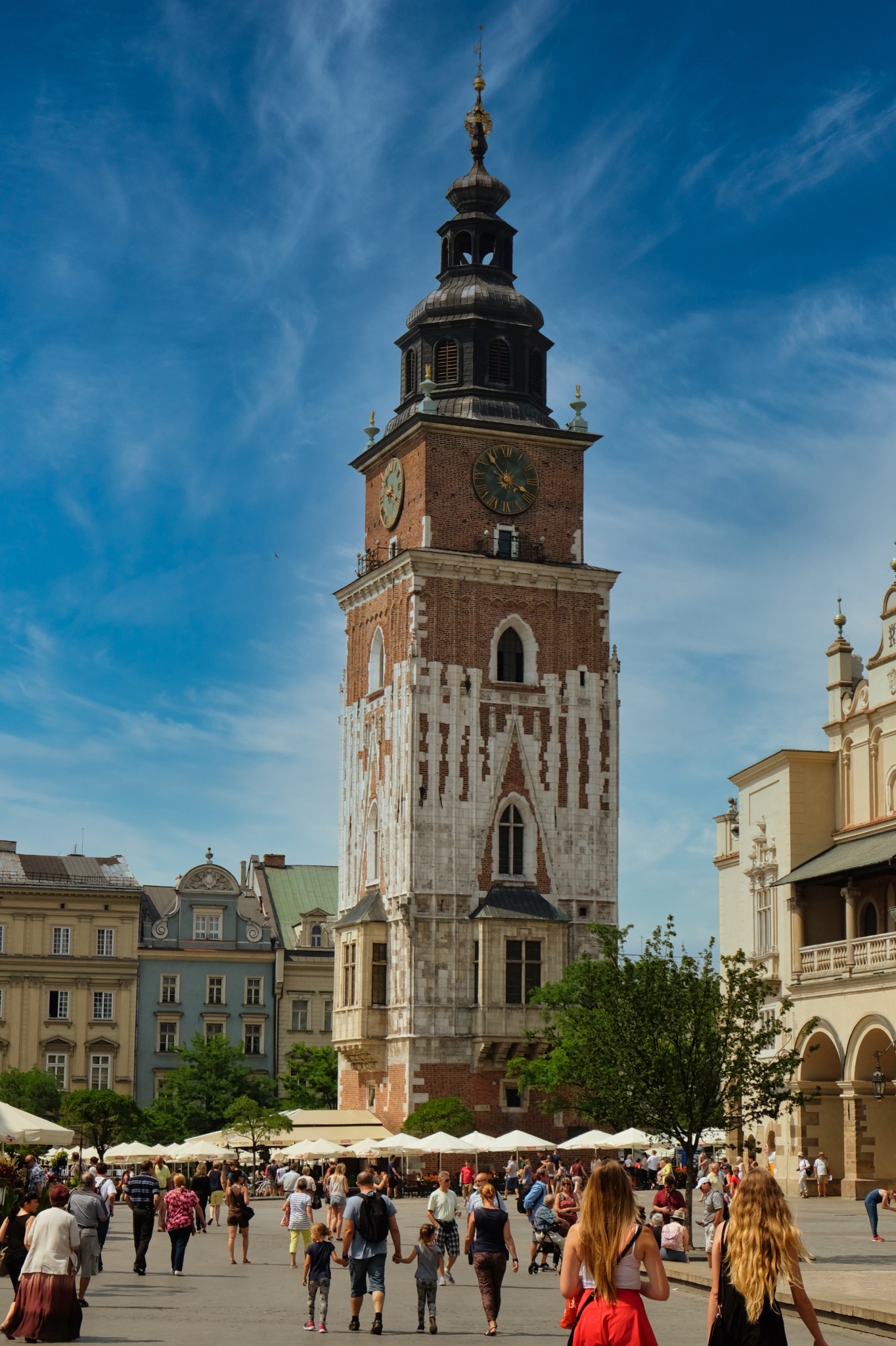 A wonderful medieval tower.
A wonderful medieval tower.
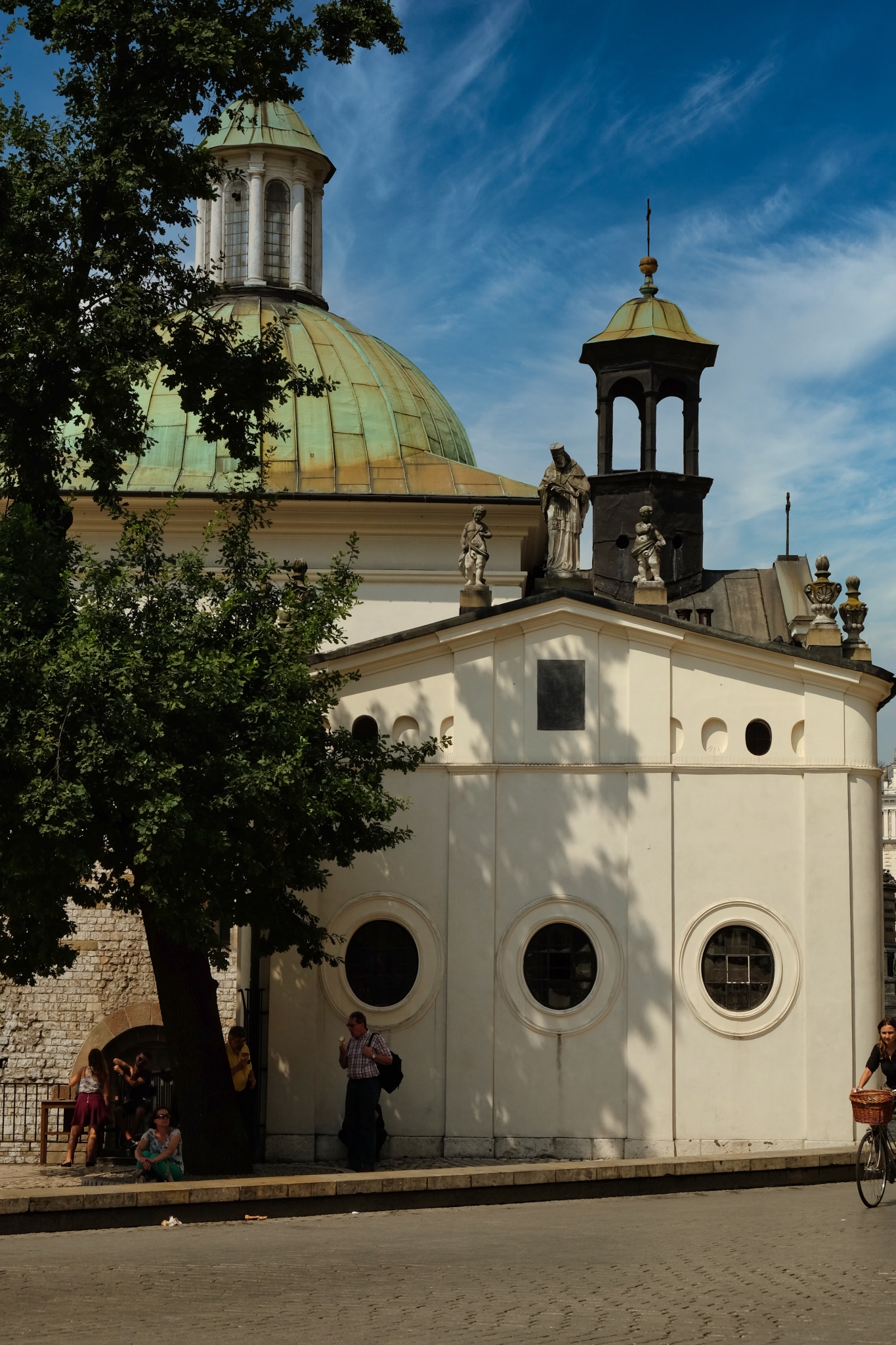 Also on the Kraków Main Market Square is the 11th century Church of Saint Adalbert.
Also on the Kraków Main Market Square is the 11th century Church of Saint Adalbert.
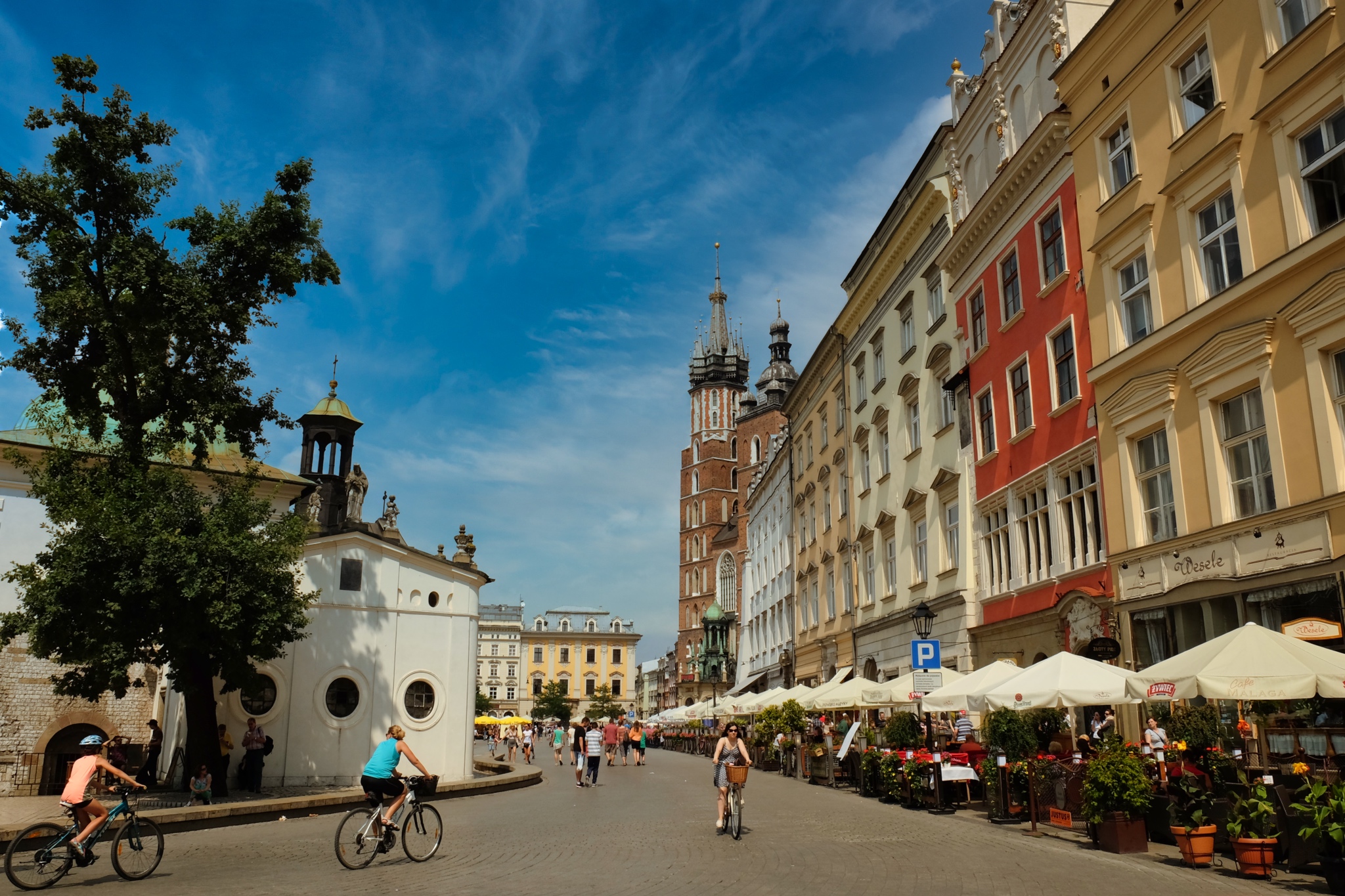 The Main Square is lined by small shops and boutiques . . . and a solid line of sidewalk cafés all around.
The Main Square is lined by small shops and boutiques . . . and a solid line of sidewalk cafés all around.
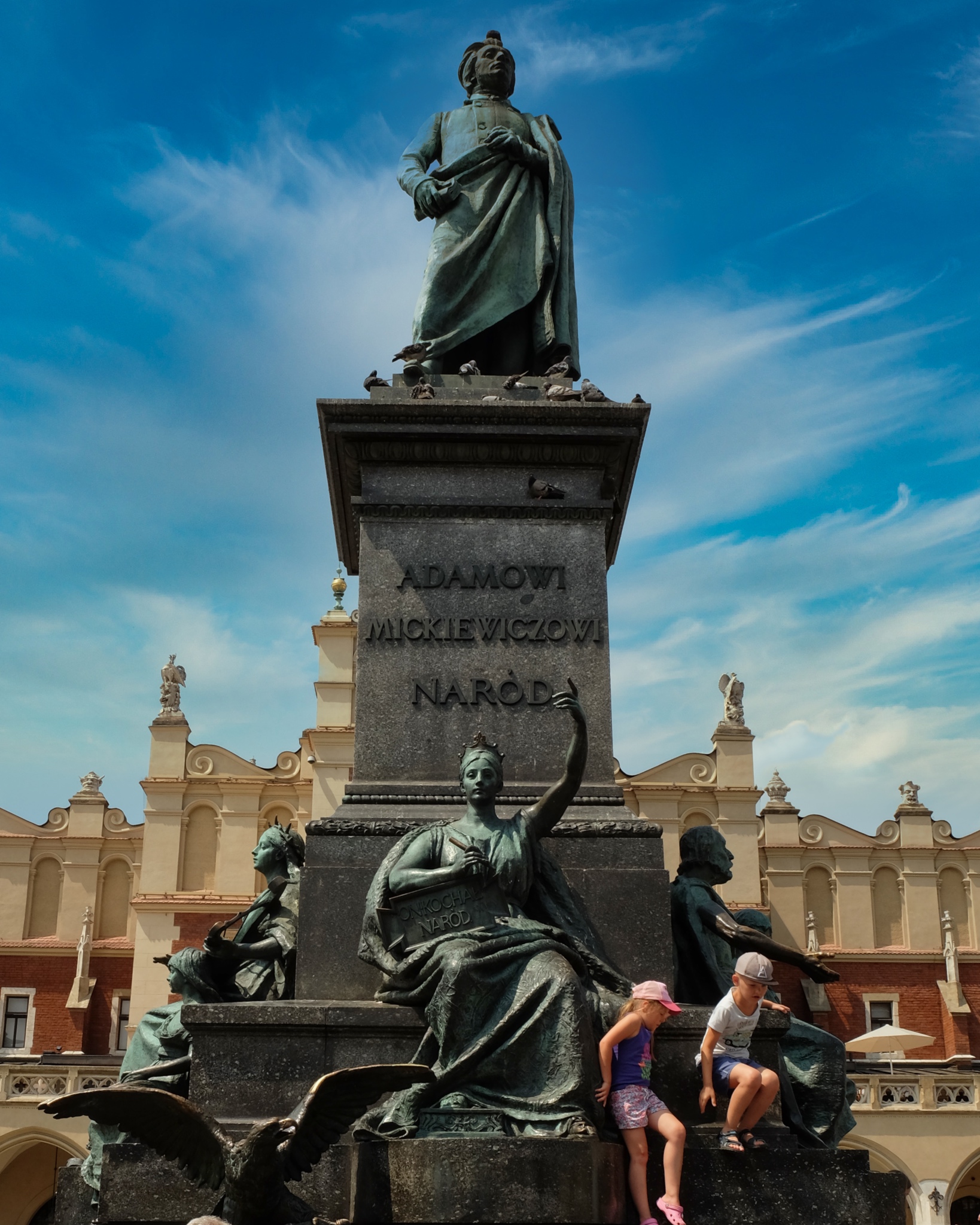 The Main Square attracts lots of tourists and, presumably, local children as well. Her they climb on the memorial statue to Adam Mickiewicz, a 19th century Polish poet.
The Main Square attracts lots of tourists and, presumably, local children as well. Her they climb on the memorial statue to Adam Mickiewicz, a 19th century Polish poet.
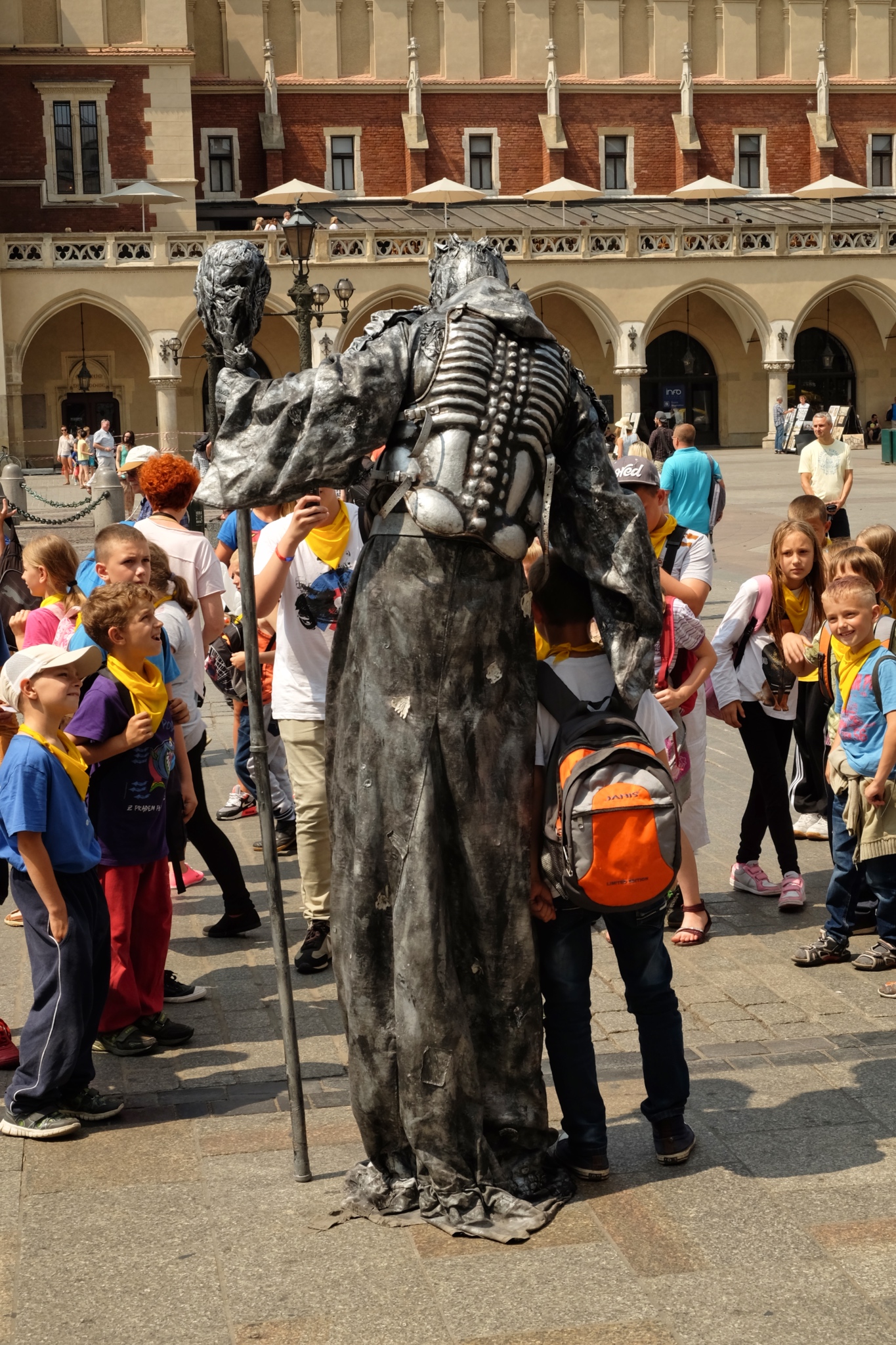 Making money on the square . . . Monster Photo Ops $5.oo.
Making money on the square . . . Monster Photo Ops $5.oo.
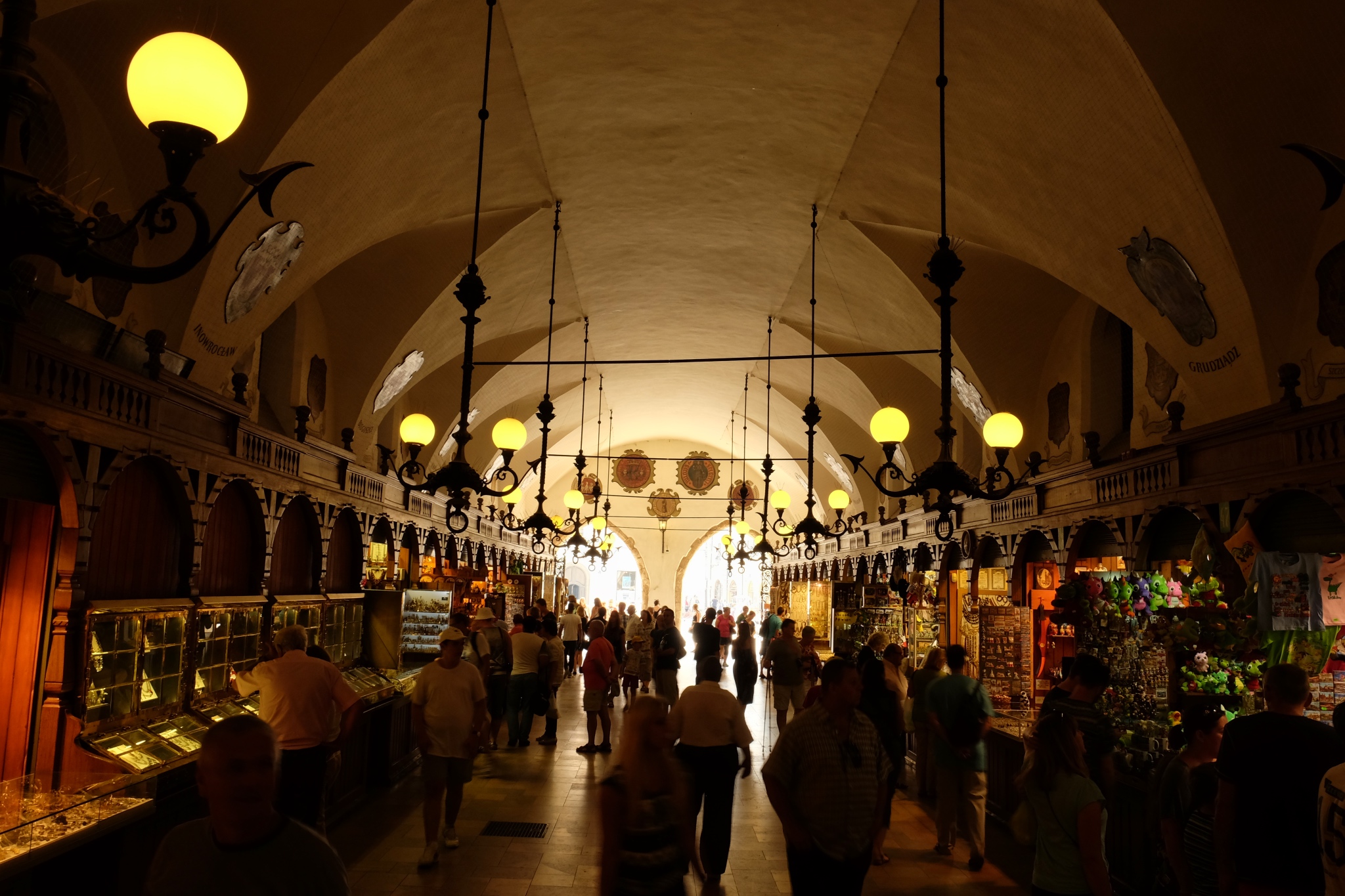 Inside the Cloth Hall, now a curios galleria.
Inside the Cloth Hall, now a curios galleria.
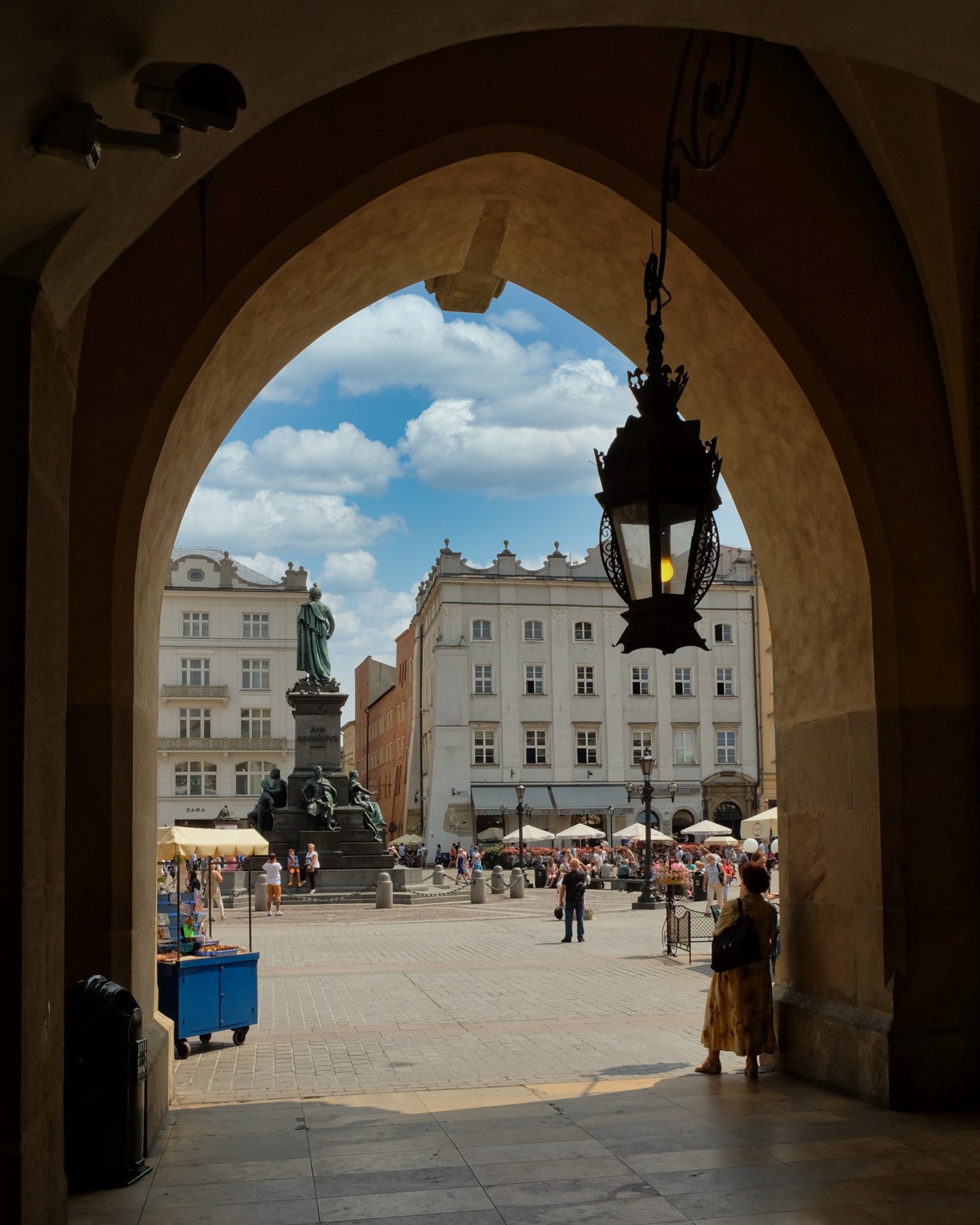 Looking out onto the square from the Cloth Hall.
Looking out onto the square from the Cloth Hall.
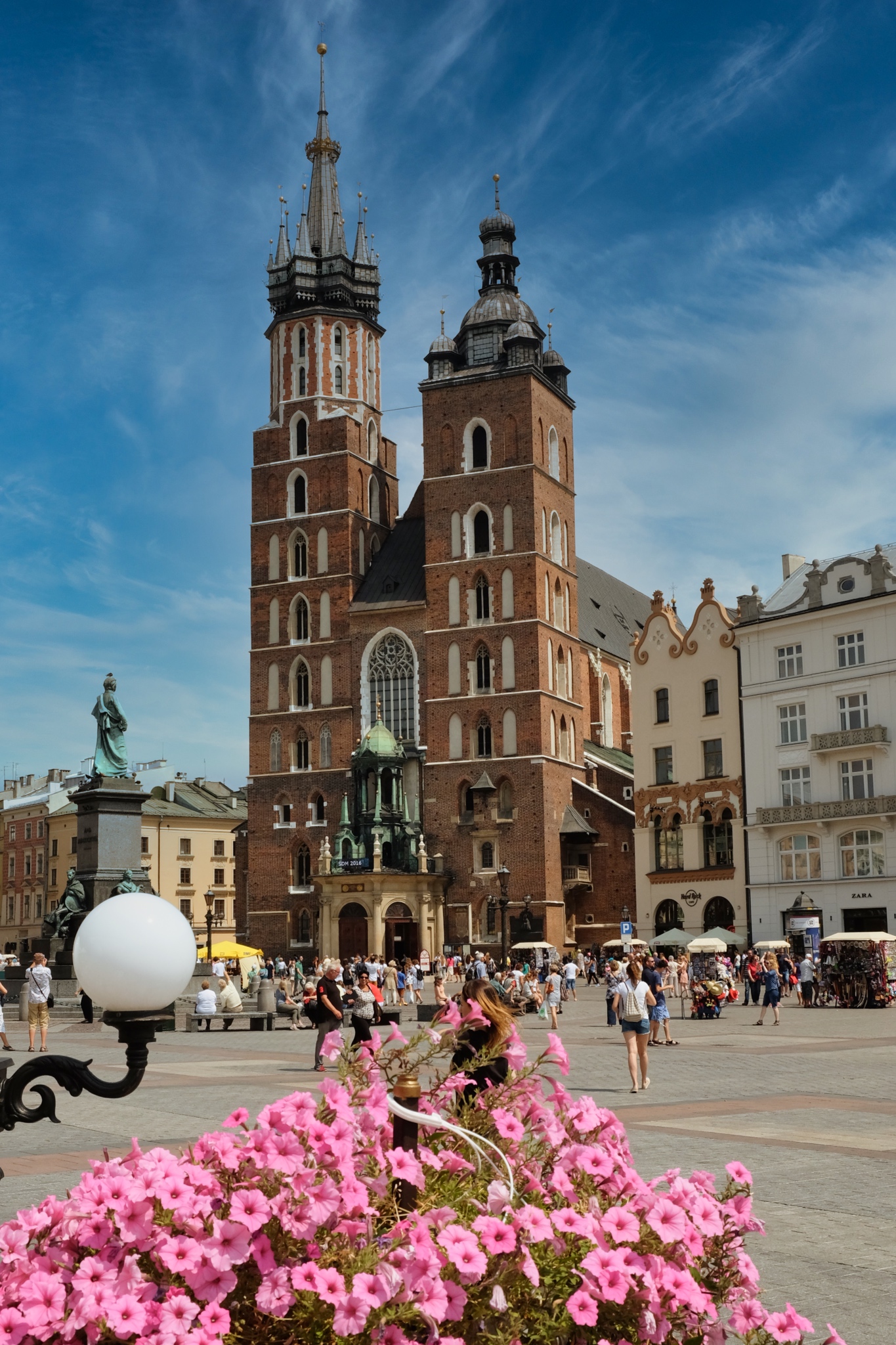 Saint Mary's Basilica looked inviting. There are not too many 13th century basilicas left in their original state in Europe. I wanted to see the interior of this Polish Gothic structure.
Saint Mary's Basilica looked inviting. There are not too many 13th century basilicas left in their original state in Europe. I wanted to see the interior of this Polish Gothic structure.
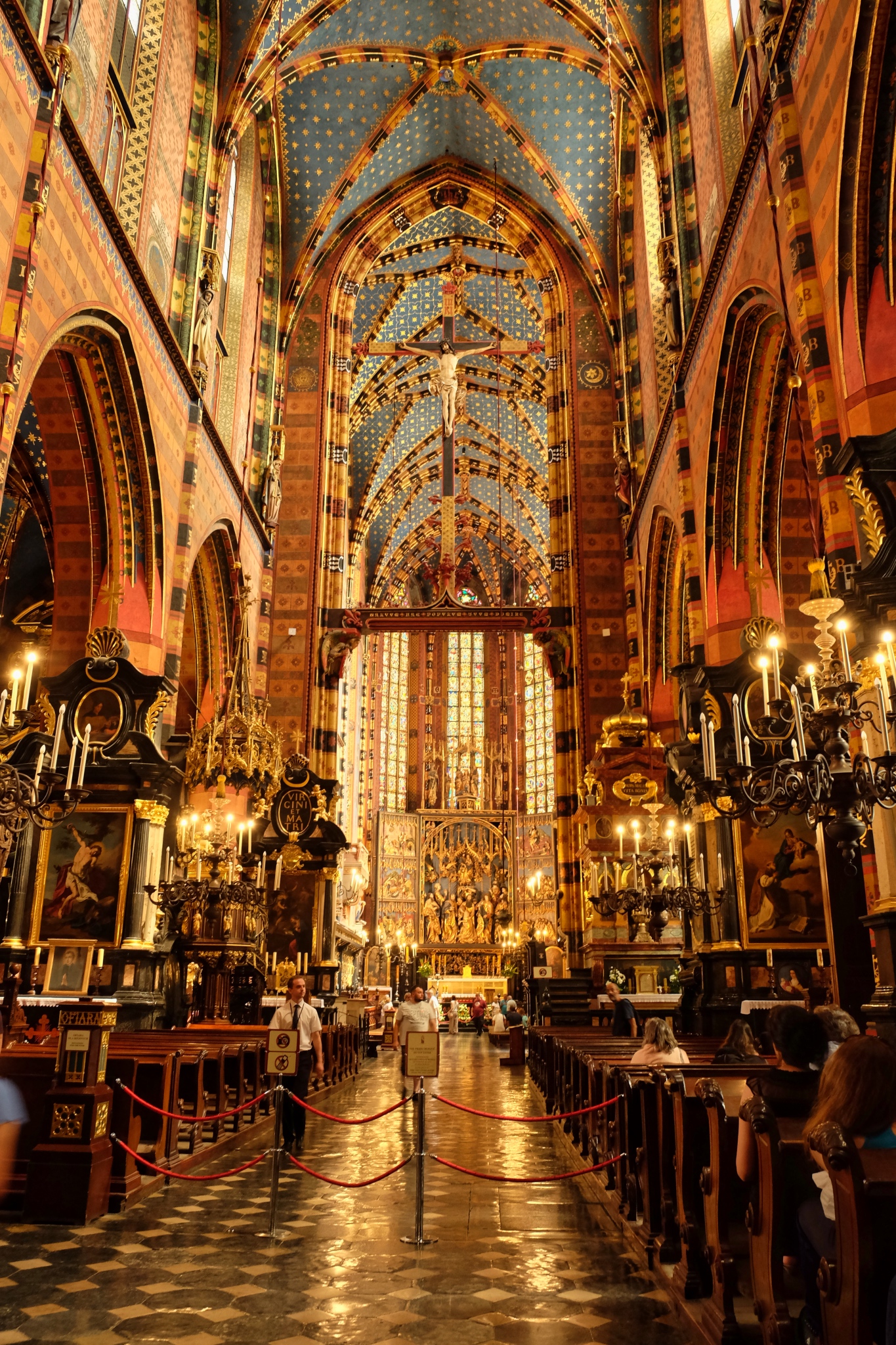 I was not disappointed. Magnificent . . . which is the idea, one assumes.
I was not disappointed. Magnificent . . . which is the idea, one assumes.
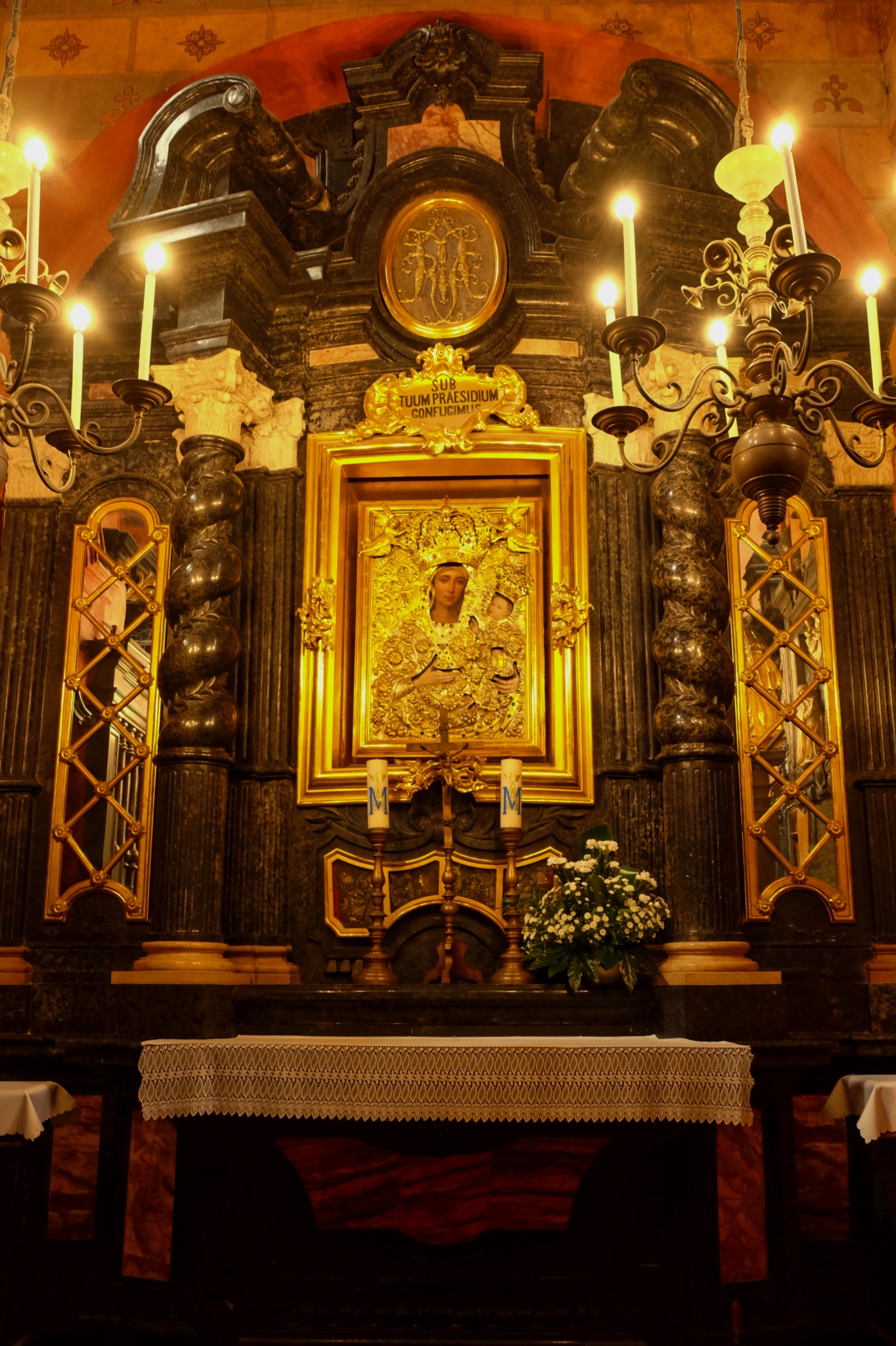 Beautiful Christian iconography everywhere.
Beautiful Christian iconography everywhere.
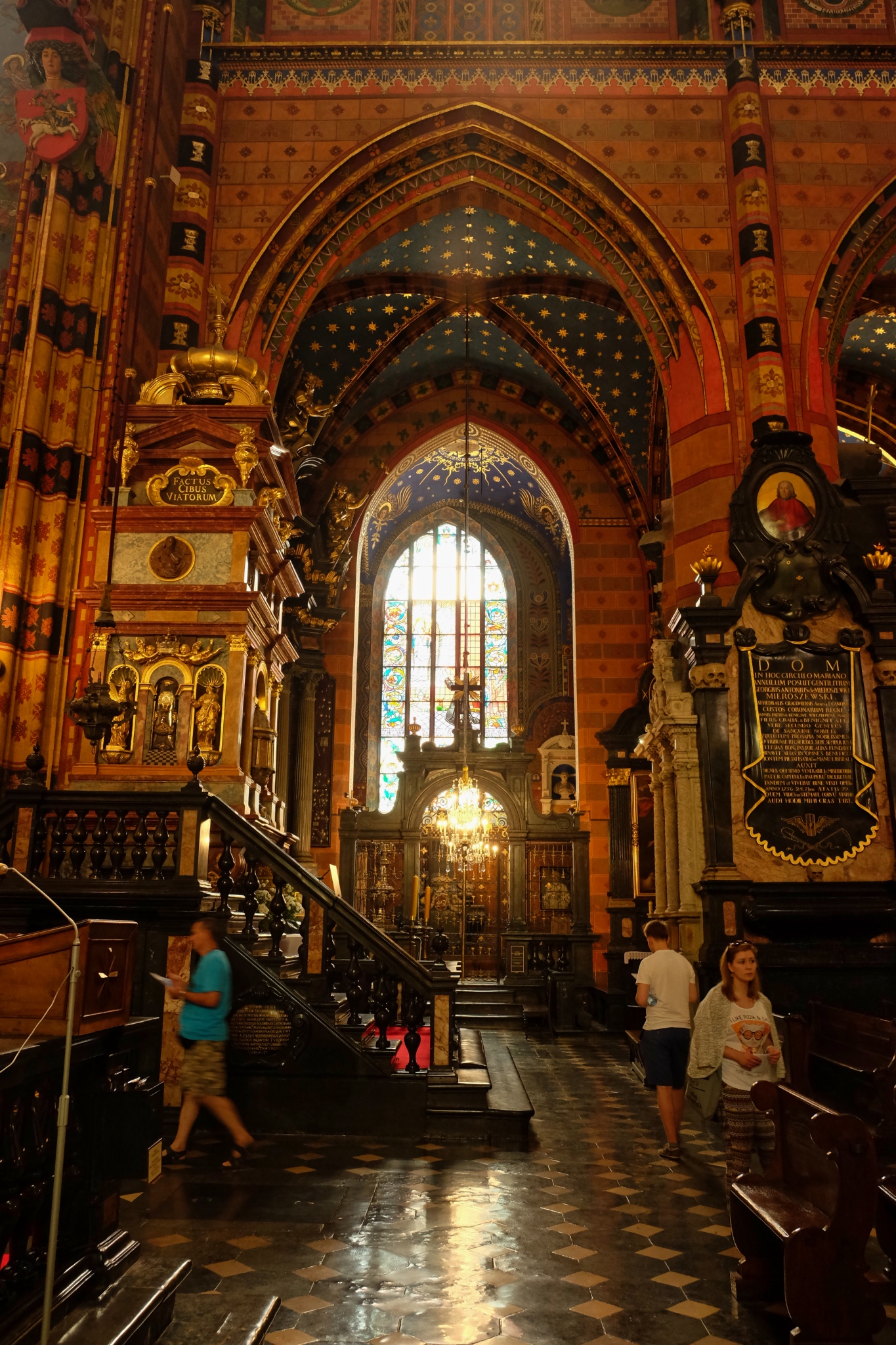 Beautiful and ornate vestibules lined the main hall.
Beautiful and ornate vestibules lined the main hall.
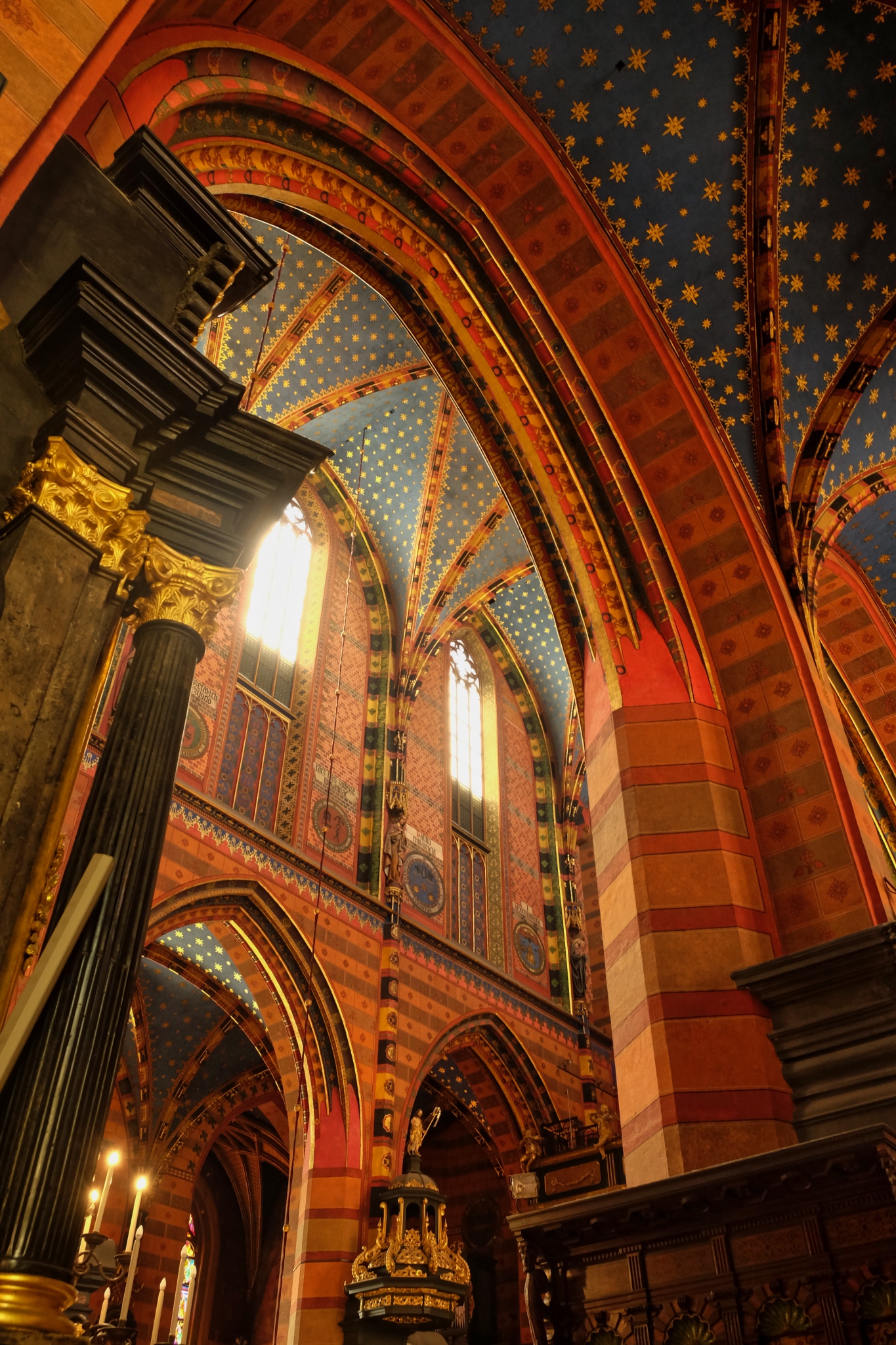 I loved the colorfully painted ceiling details. So many churches in Europe seem to think that bare stone is a better look . . . I prefer the color.
I loved the colorfully painted ceiling details. So many churches in Europe seem to think that bare stone is a better look . . . I prefer the color.
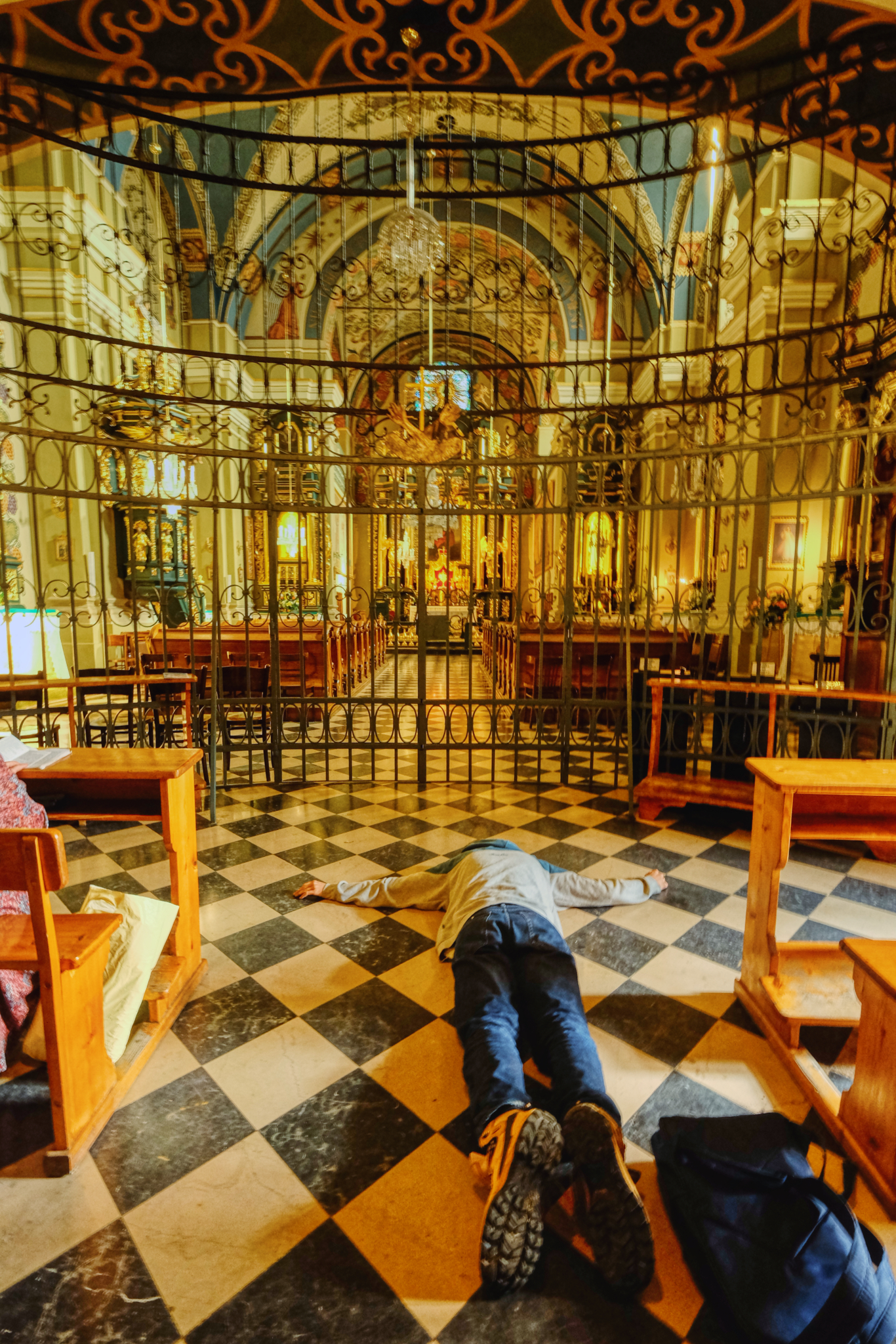 A Kraków Christian devotee on a bad day, one would assume.
A Kraków Christian devotee on a bad day, one would assume.
 My wife and I admired the interior of the St. Mary's Basilica for quite a while, but it was a beautiful day outside, and there was so much more to explore.
My wife and I admired the interior of the St. Mary's Basilica for quite a while, but it was a beautiful day outside, and there was so much more to explore.
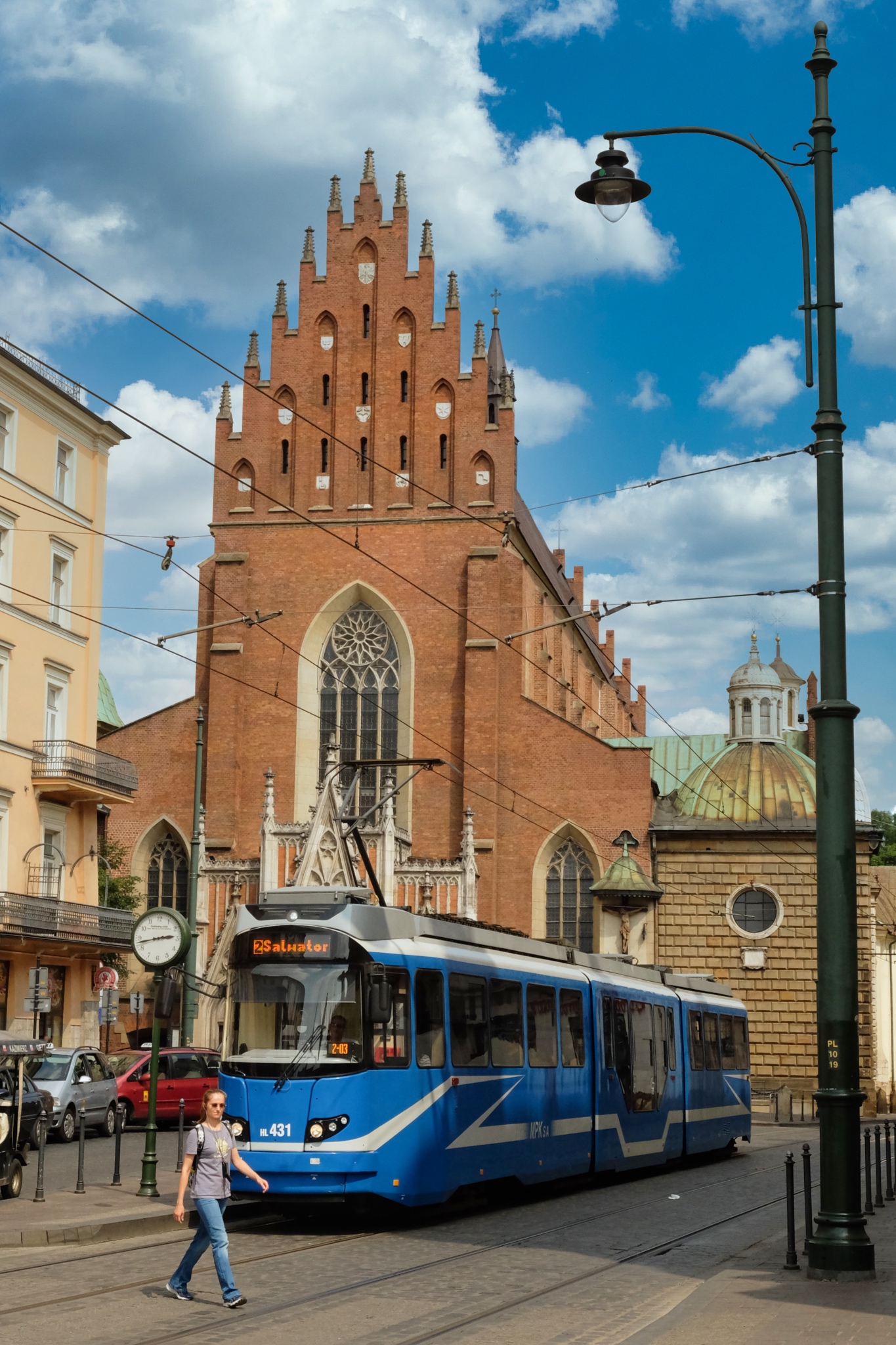 We left the main Karców city center square to walk around in the narrow streets of Kraków's historic center (on the original UNESCO World Heritage list).
We left the main Karców city center square to walk around in the narrow streets of Kraków's historic center (on the original UNESCO World Heritage list).
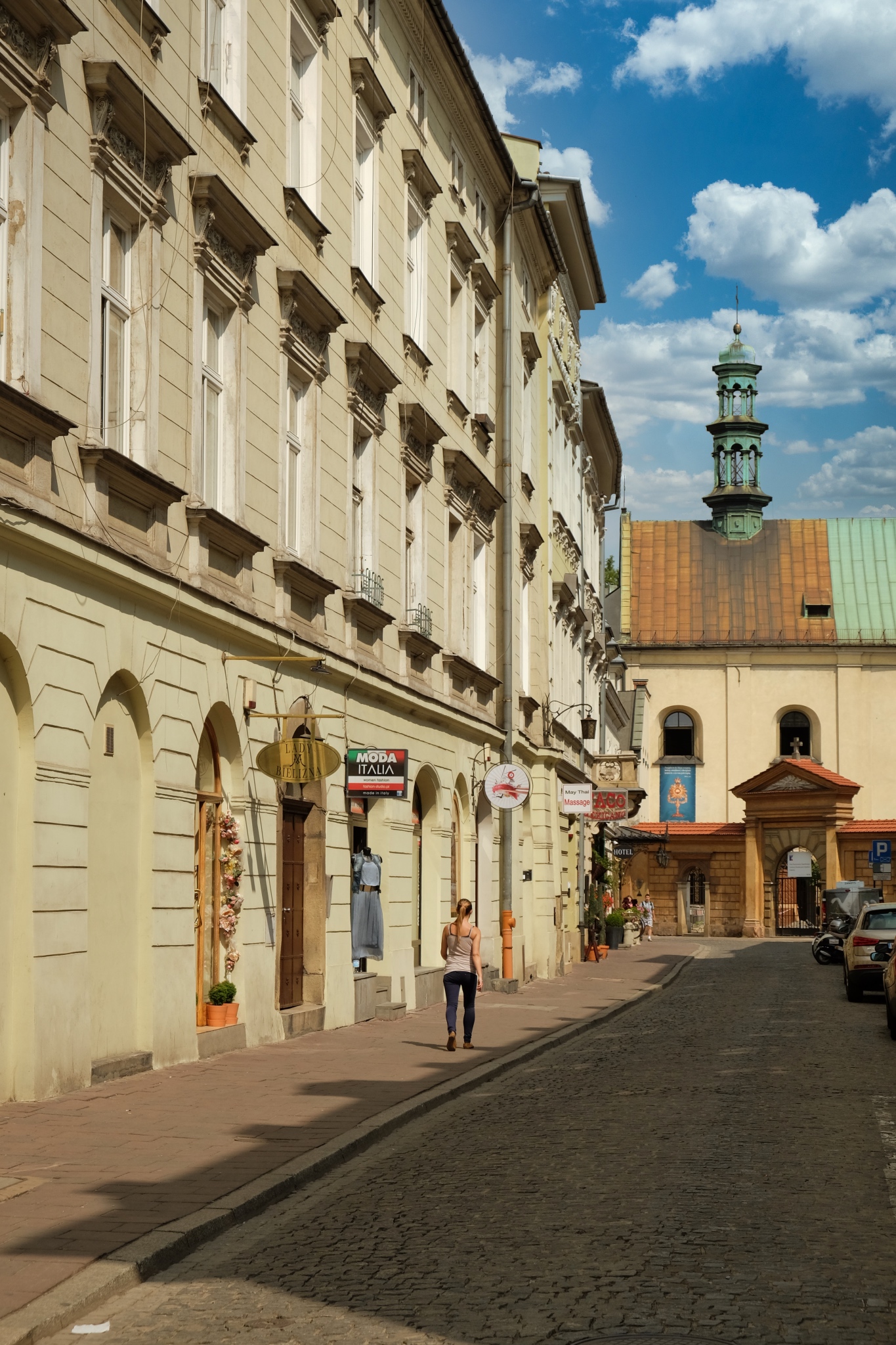 As we walked around in the back streets of the city center, we became aware of the significance that this is a city that had never been bombed in a war and had never had a major fire, as so many of the other major medieval European cities had. There were no new buildings: it was an intact ancient city . . . and living today.
As we walked around in the back streets of the city center, we became aware of the significance that this is a city that had never been bombed in a war and had never had a major fire, as so many of the other major medieval European cities had. There were no new buildings: it was an intact ancient city . . . and living today.
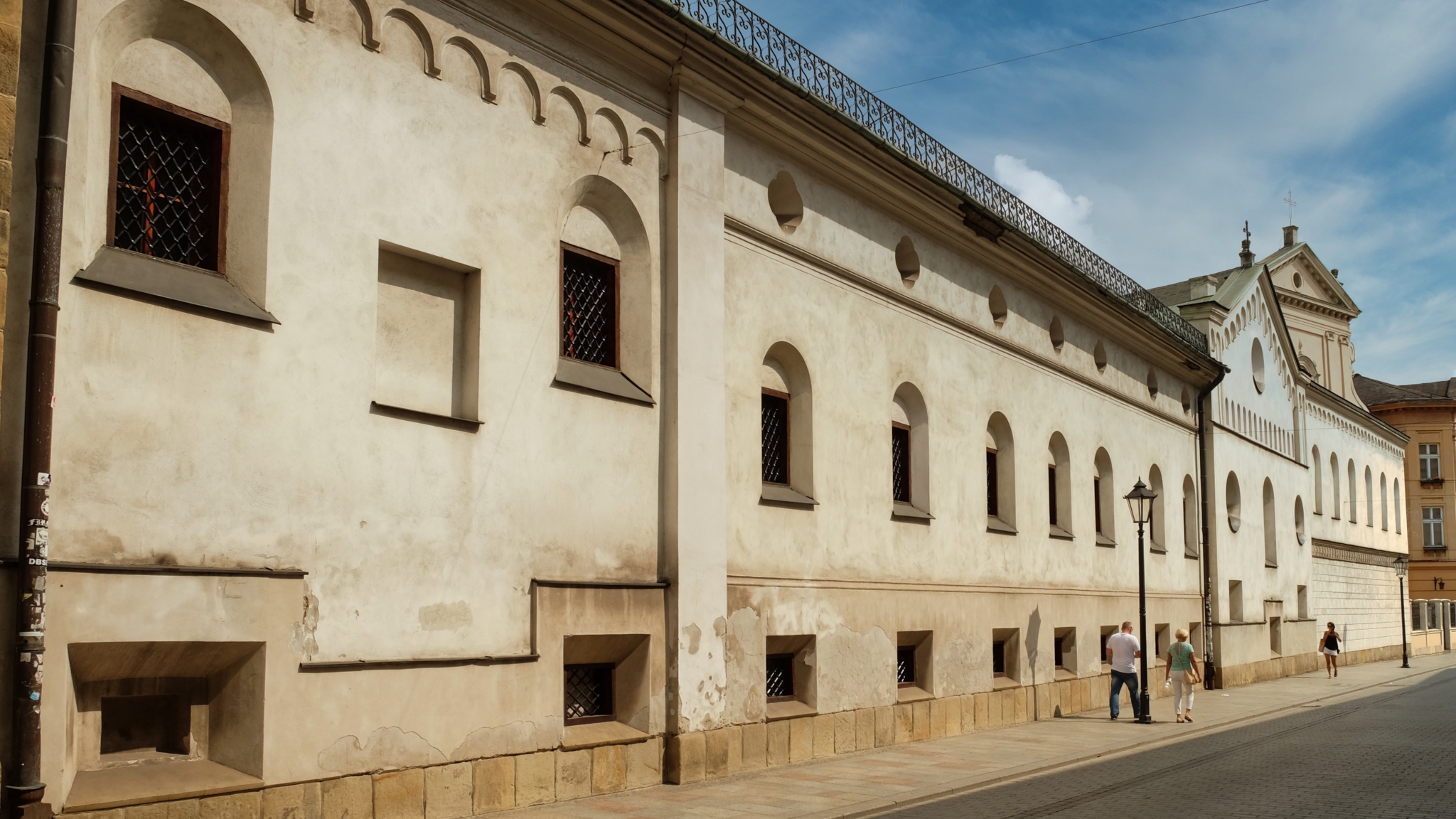 Interesting and varied architecture all around.
Interesting and varied architecture all around.
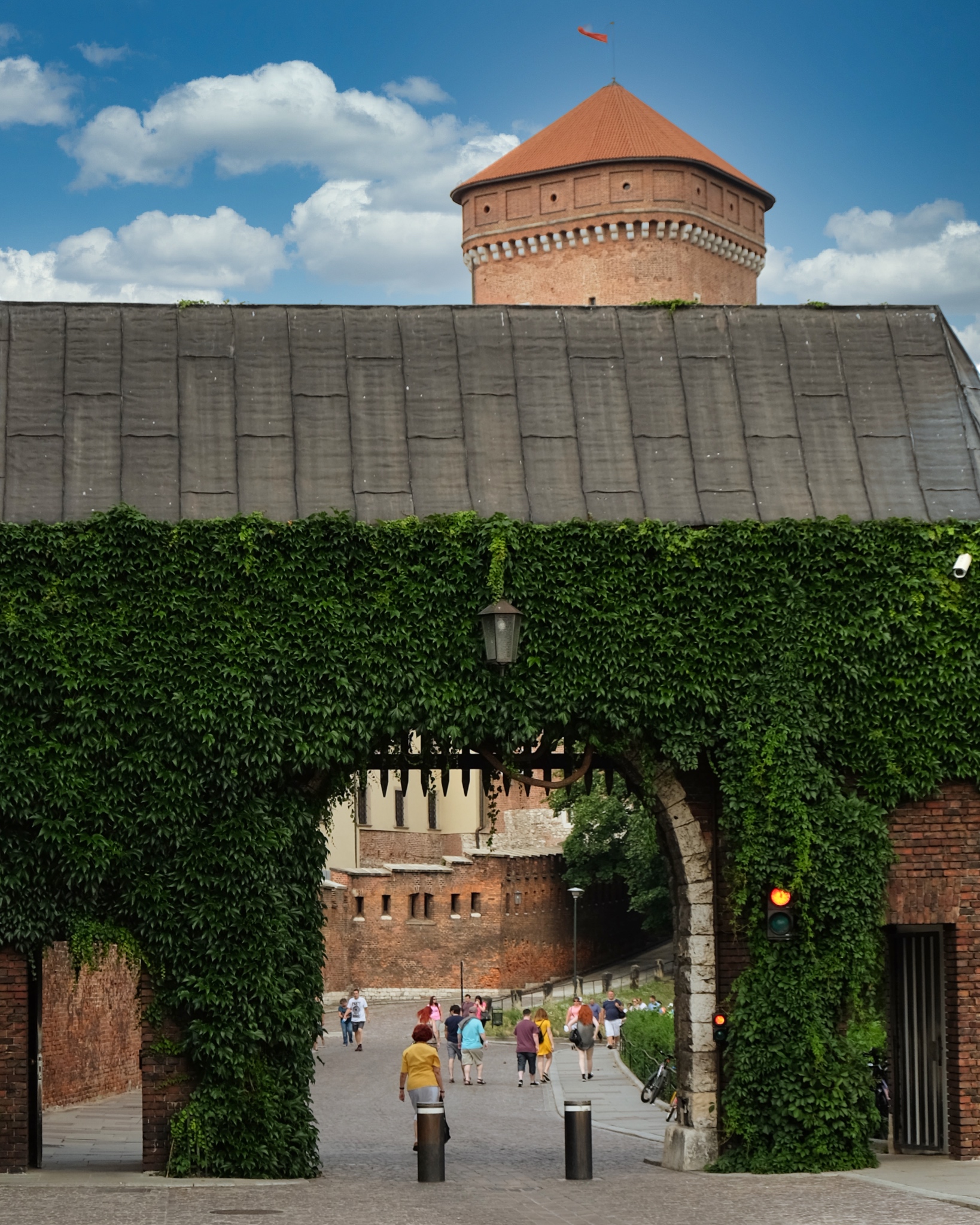 Such a charming city.
Such a charming city.
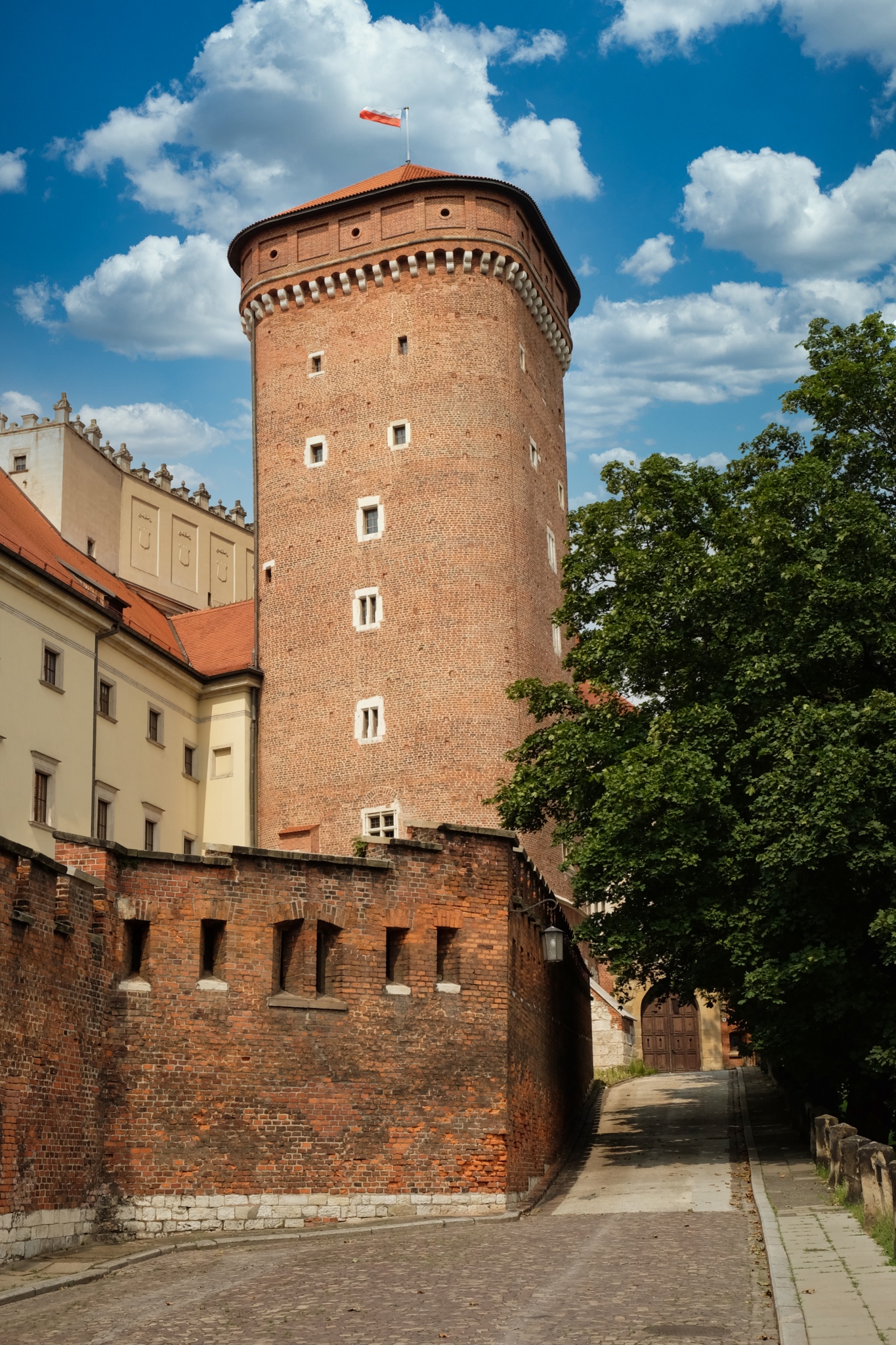 I found this tower fascinating. Towers were very popular throughout Europe in medieval times
I found this tower fascinating. Towers were very popular throughout Europe in medieval times
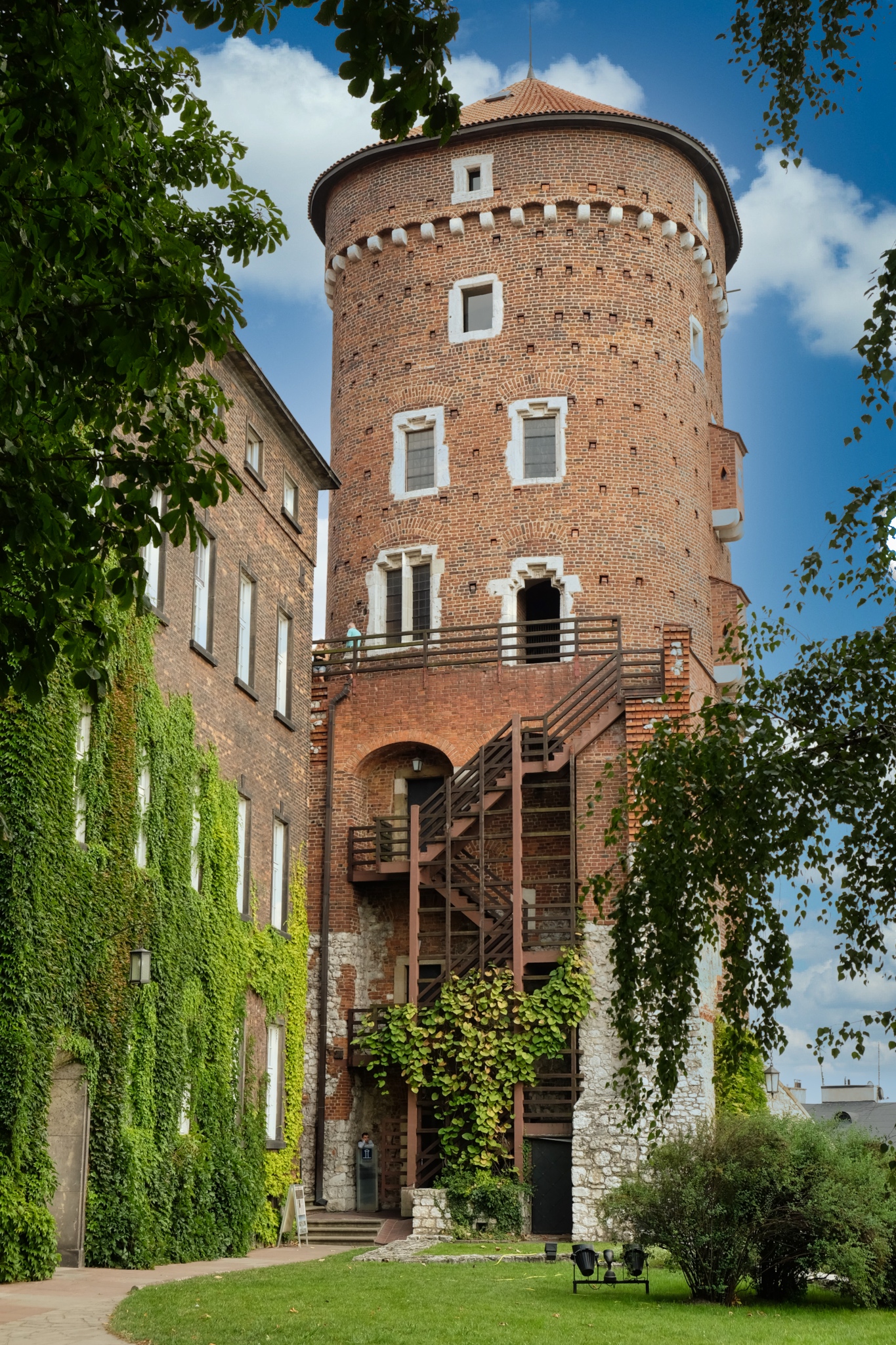 The back of the tower was also very interesting. I enjoy looking at and figuring out these old architectural gems.
The back of the tower was also very interesting. I enjoy looking at and figuring out these old architectural gems.
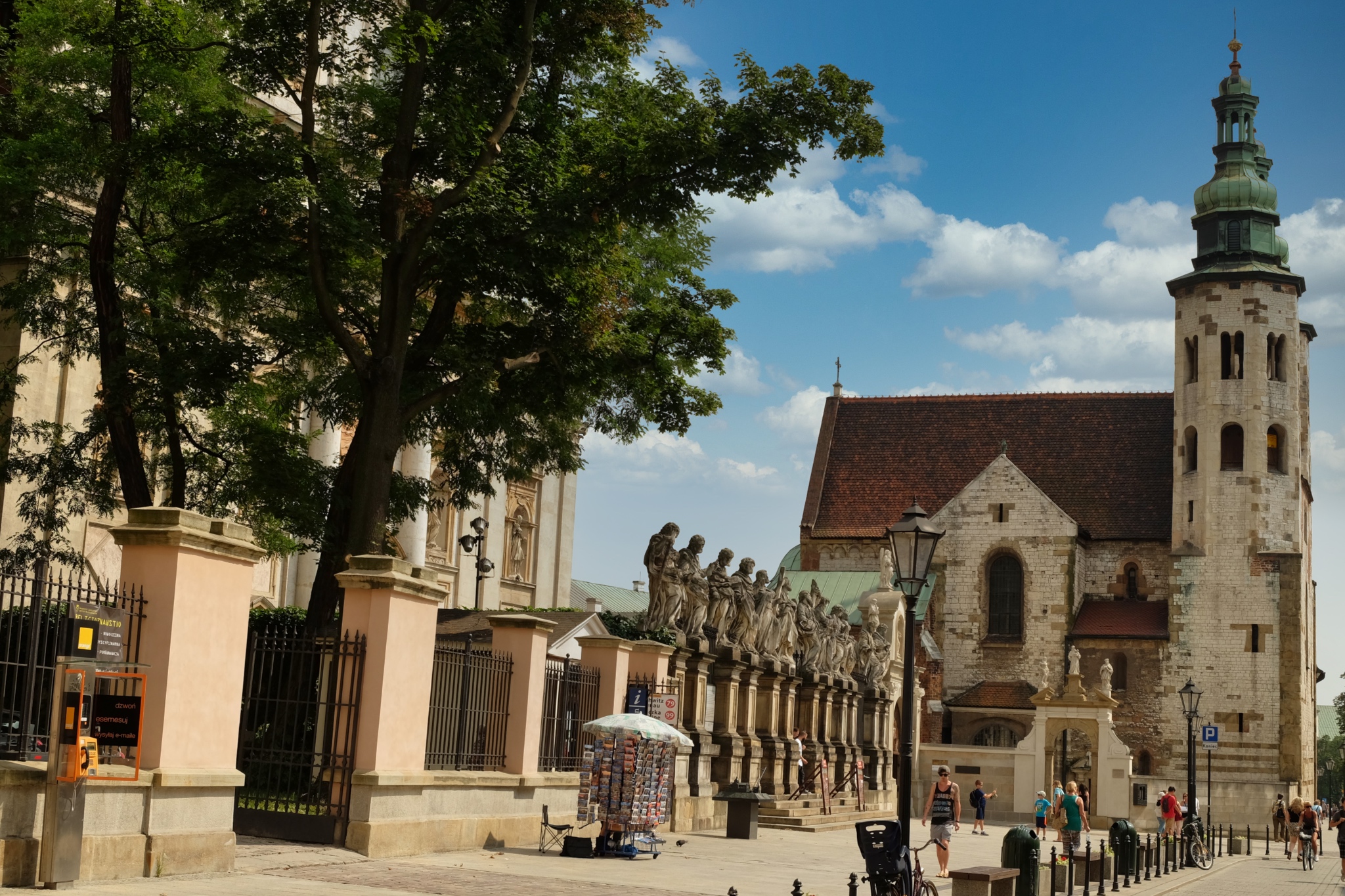 One city space leads to another . . . and always interesting and fascinating.
One city space leads to another . . . and always interesting and fascinating.
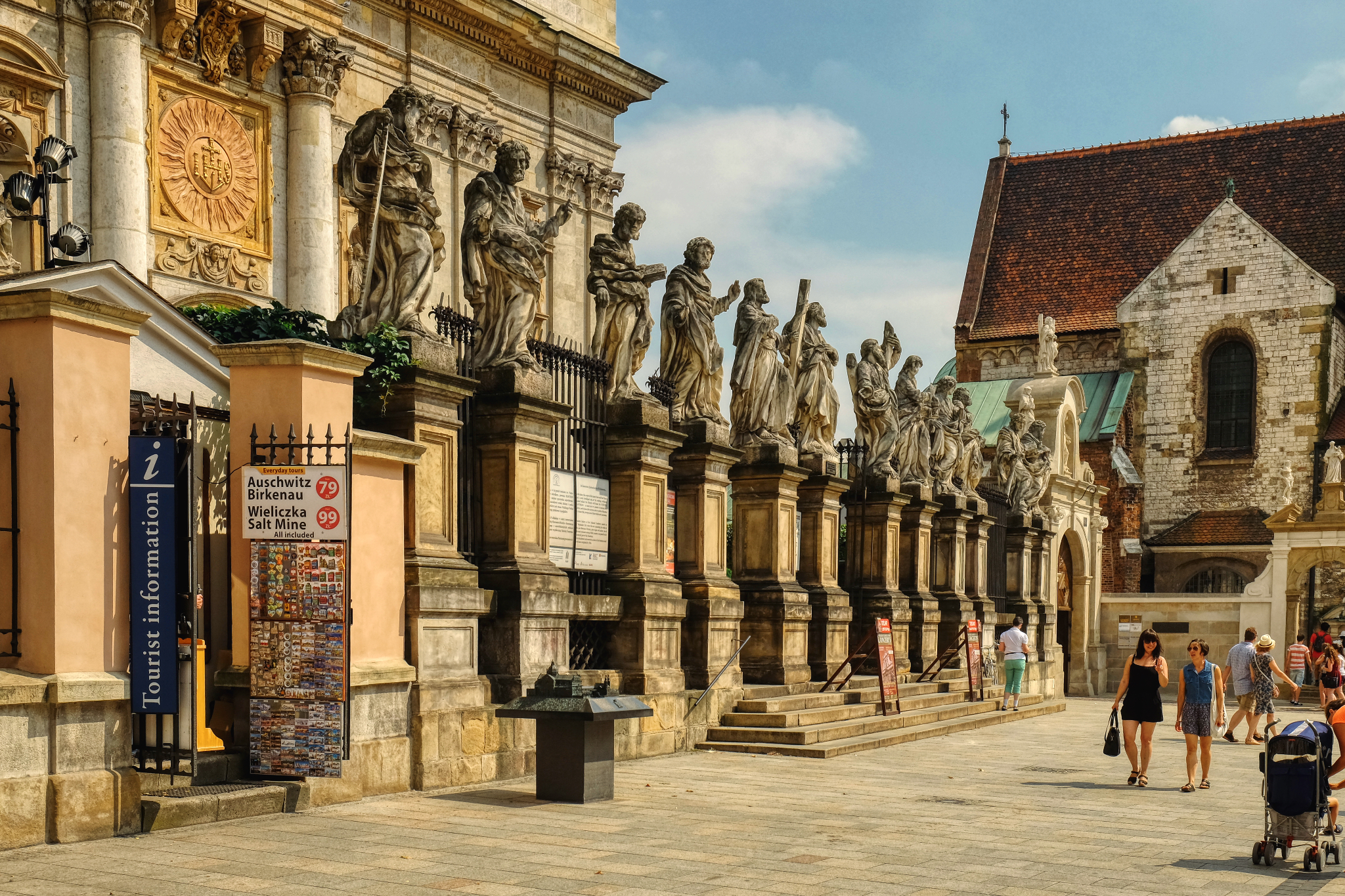 A row of Christian saints. Notice the advertisement for tours of the Nazi death camps near Kraków . . . we did not go.
A row of Christian saints. Notice the advertisement for tours of the Nazi death camps near Kraków . . . we did not go.
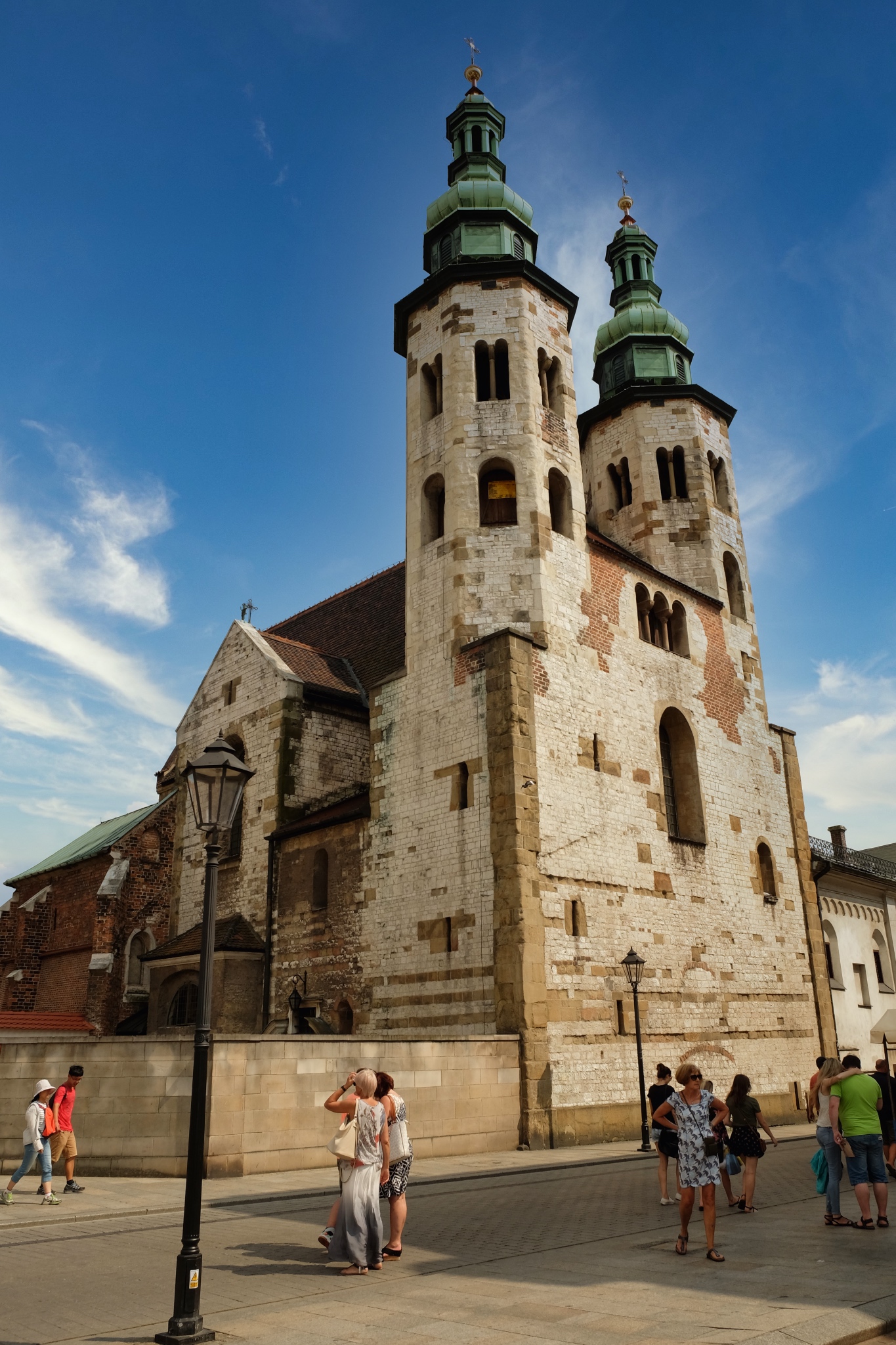 Such a charming old church.
Such a charming old church.
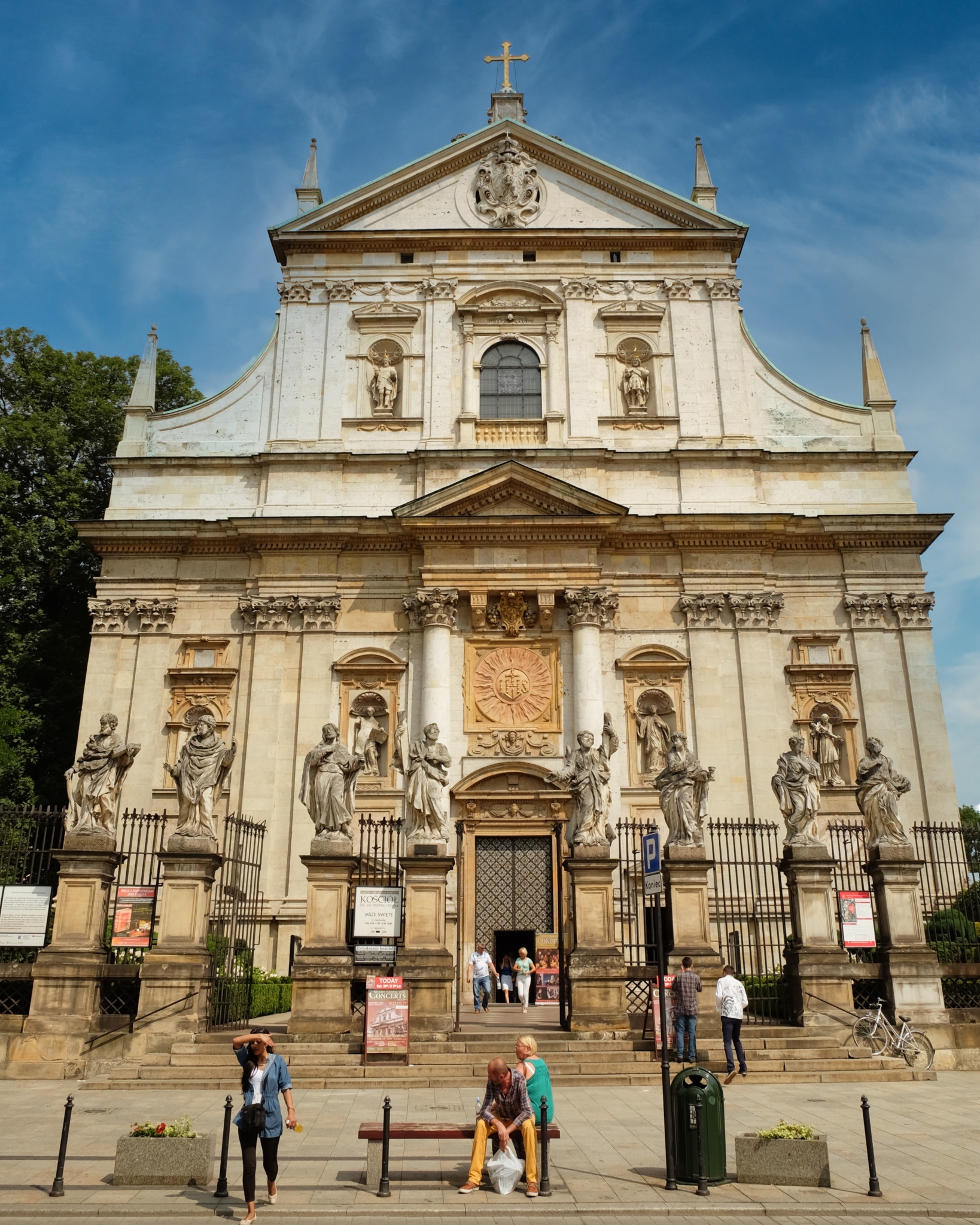 Saints Peter and Paul Church, built 1597 in the Polish Baroque style.
Saints Peter and Paul Church, built 1597 in the Polish Baroque style.
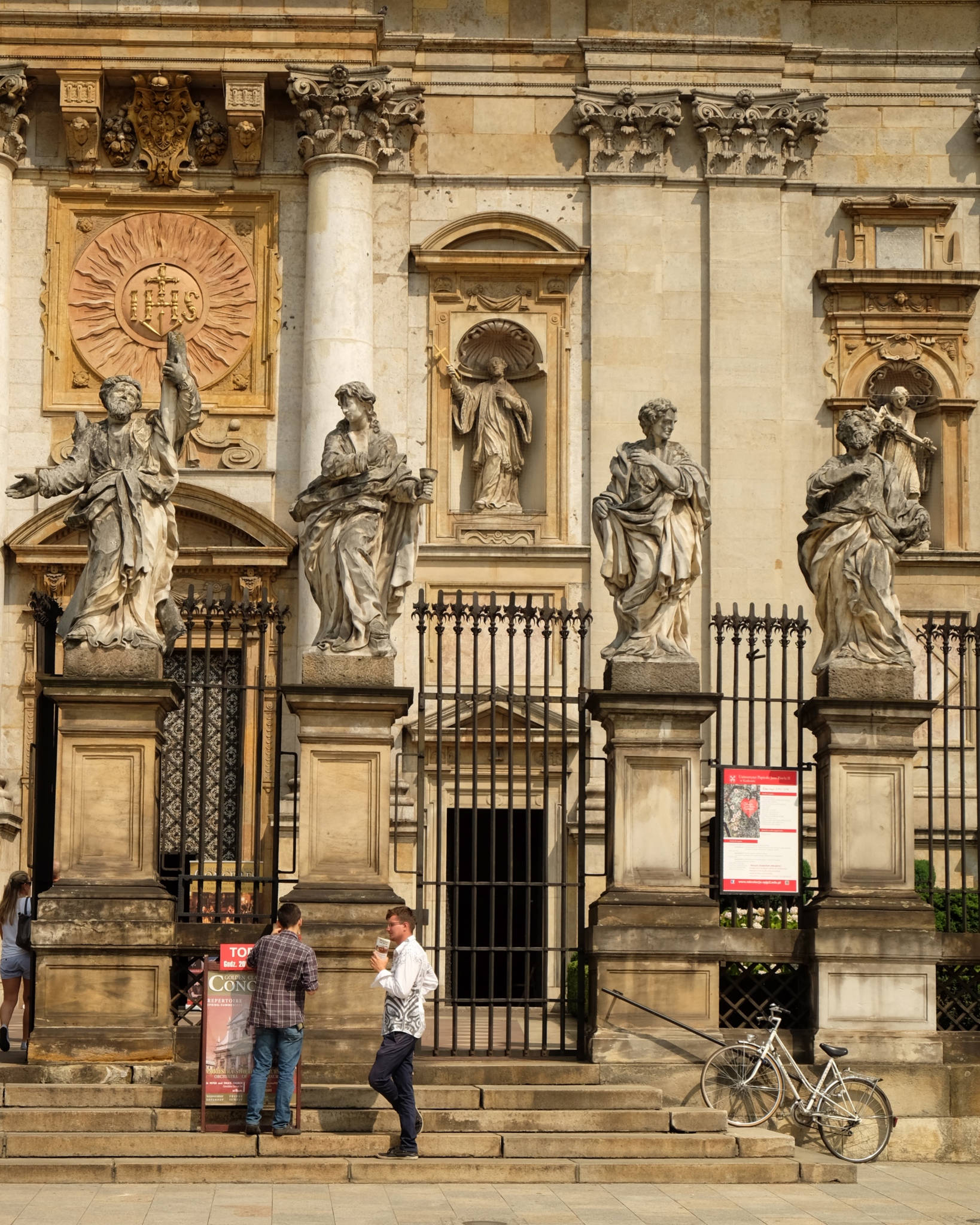 A detail of the Saints Peter and Paul Church . . . looking more like a library than a church somehow.
A detail of the Saints Peter and Paul Church . . . looking more like a library than a church somehow.
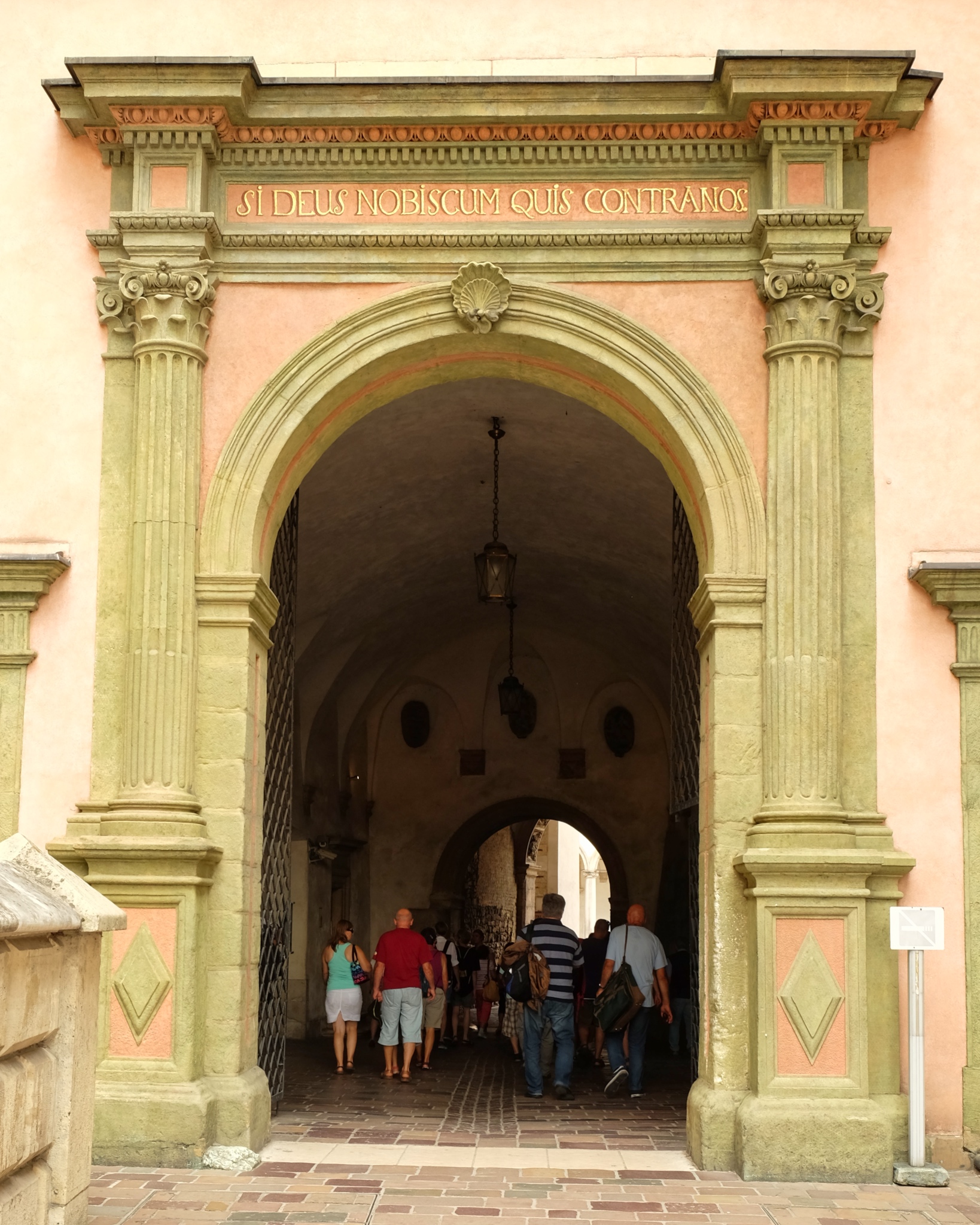 One of the interesting features of Kraków are the many arched passageway through buildings.
One of the interesting features of Kraków are the many arched passageway through buildings.
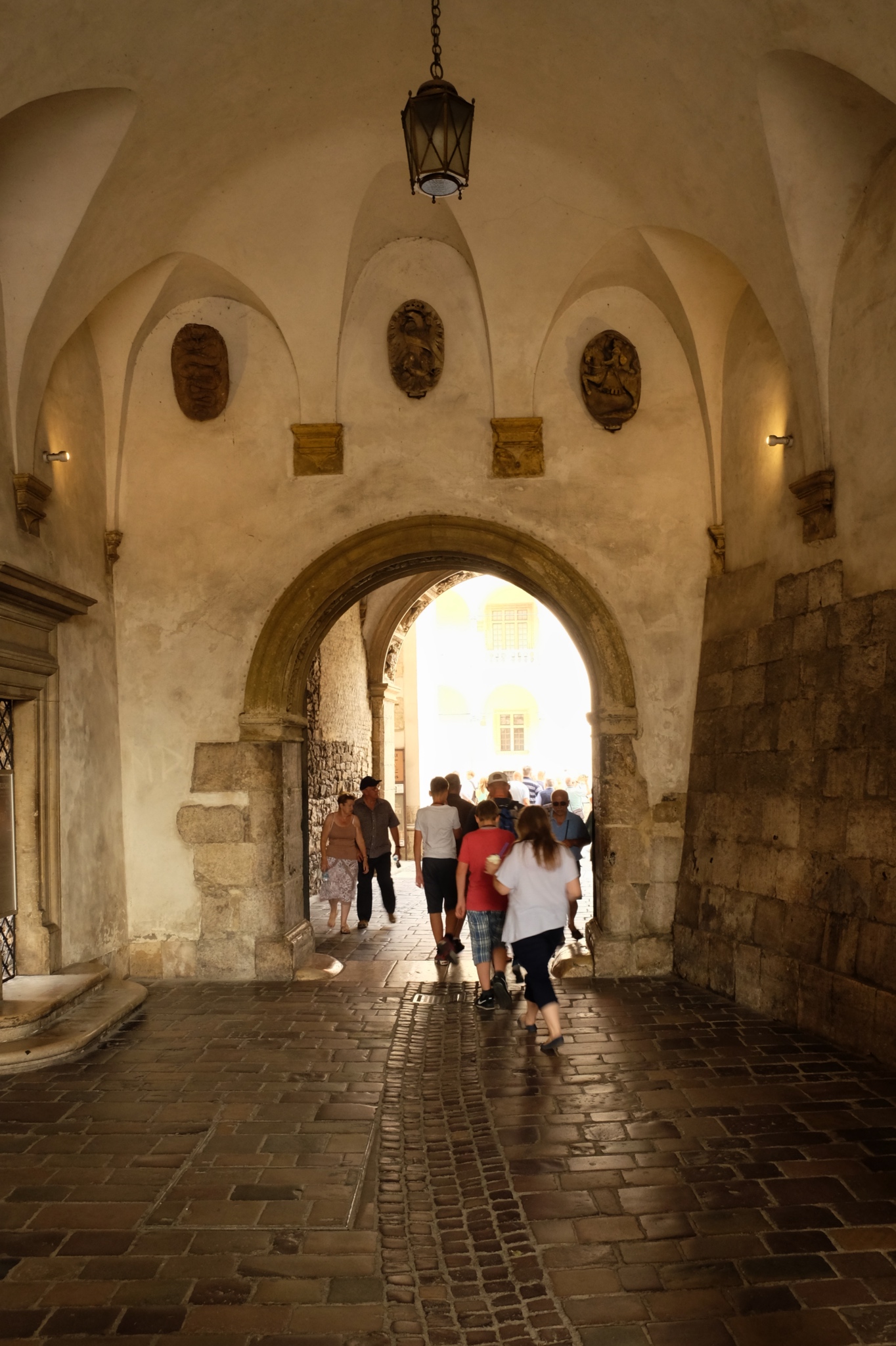 When the street you are walking on takes a turn through an arched passage you never know what you will see on the other side. Wonderful surprises all over town.
When the street you are walking on takes a turn through an arched passage you never know what you will see on the other side. Wonderful surprises all over town.
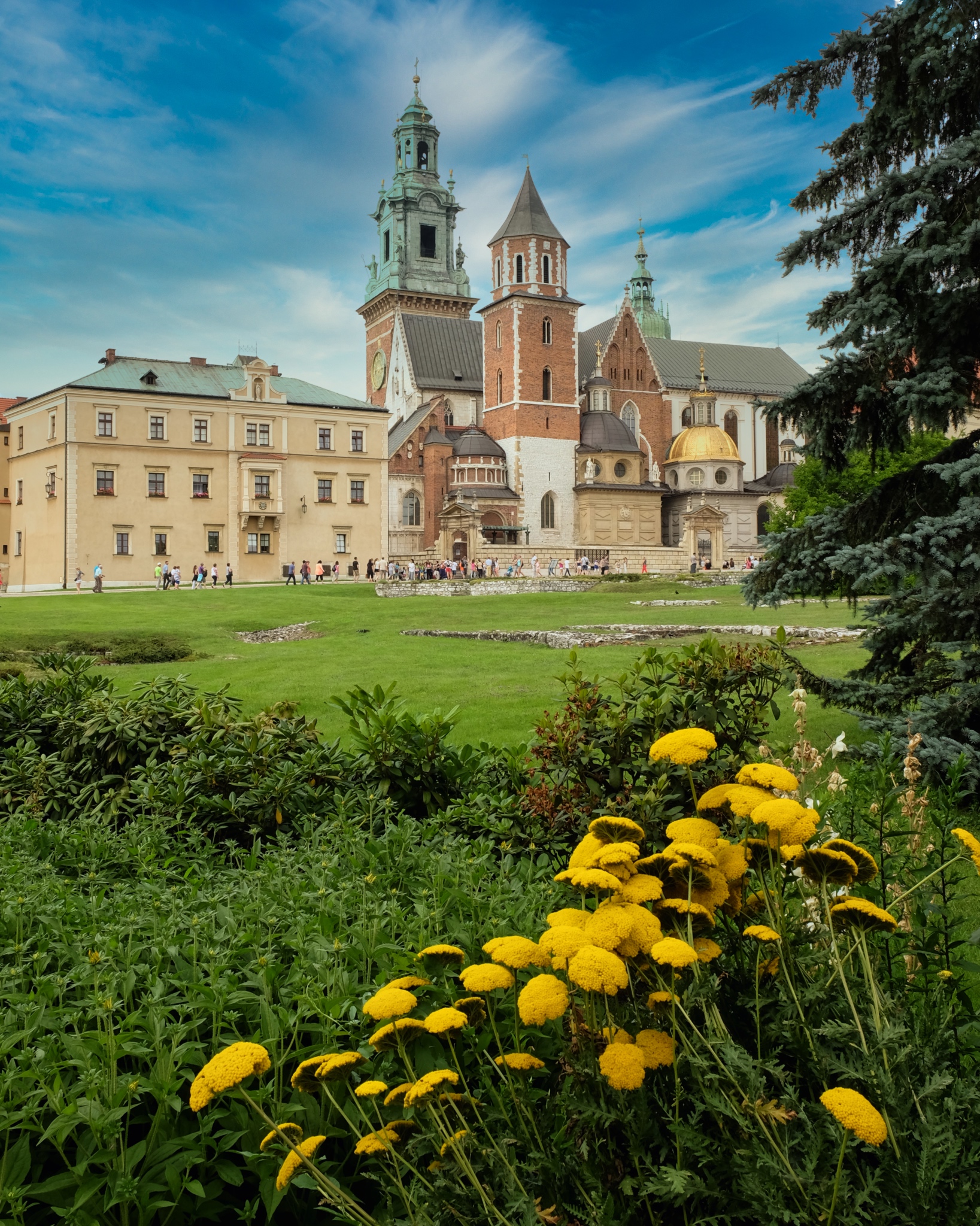 Sometimes you pop put of a street passage onto a beautiful park with. . . .
Sometimes you pop put of a street passage onto a beautiful park with. . . .
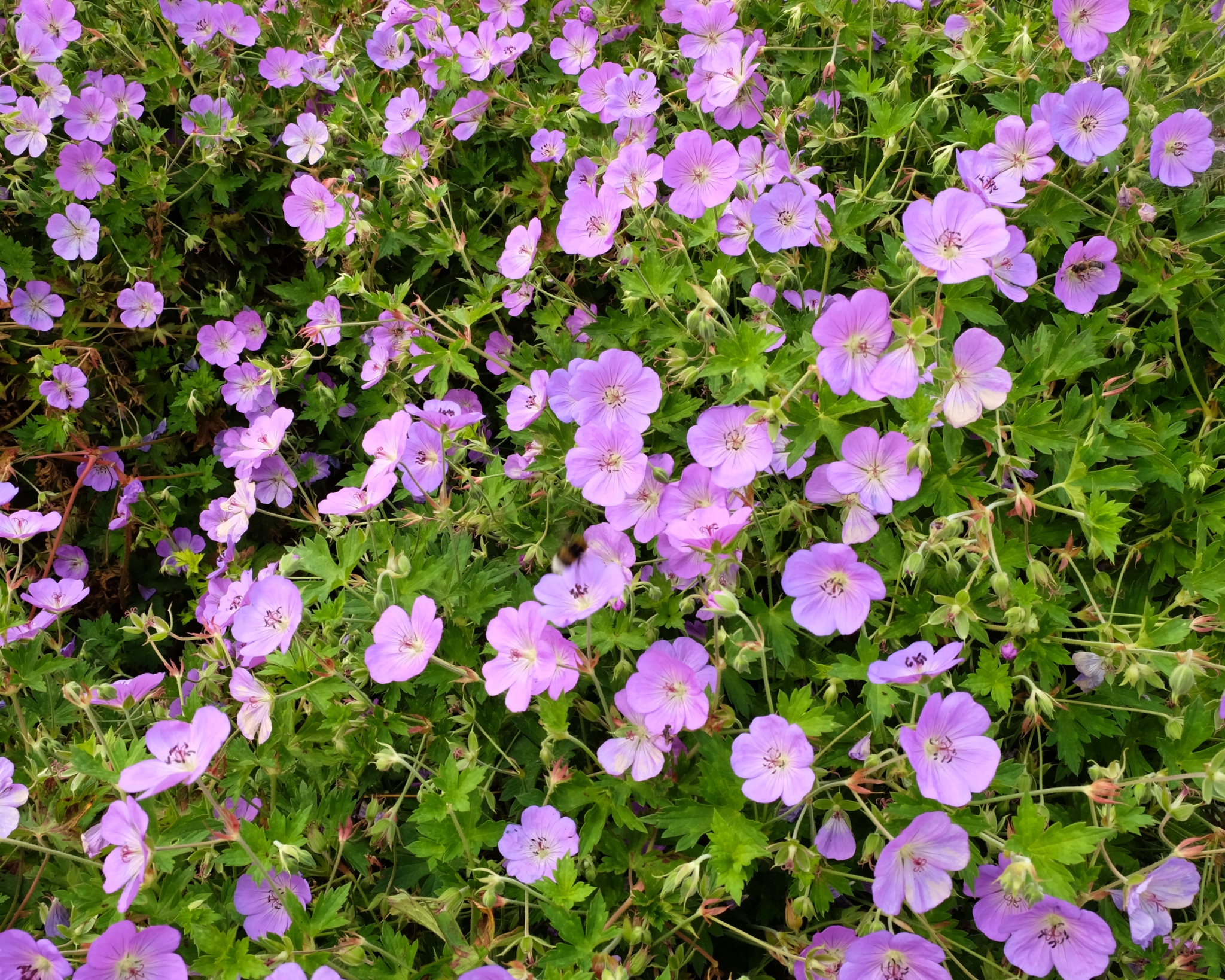 . . . beautiful flower beds.
. . . beautiful flower beds.
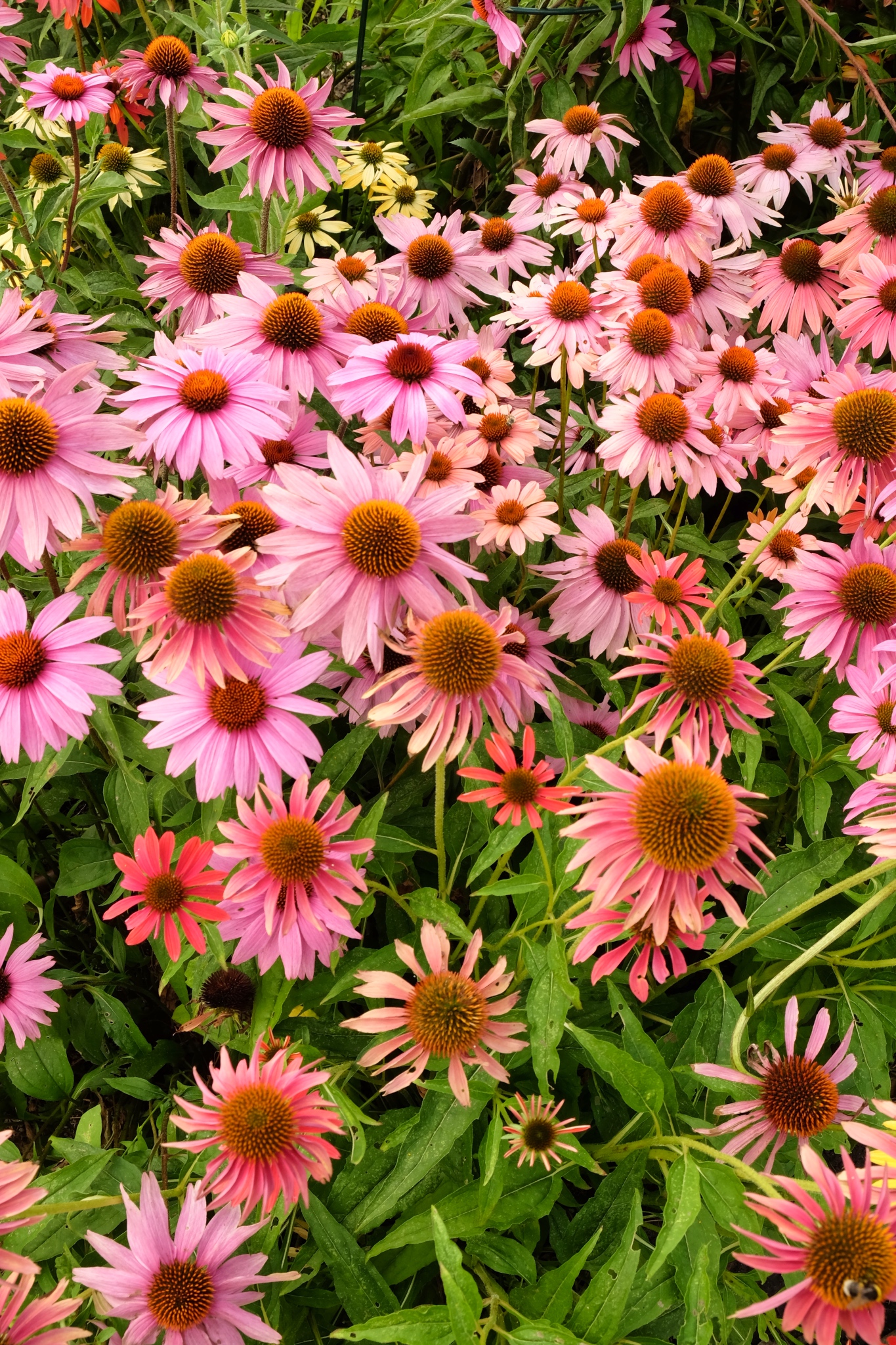 Beautiful summer flowers.
Beautiful summer flowers.
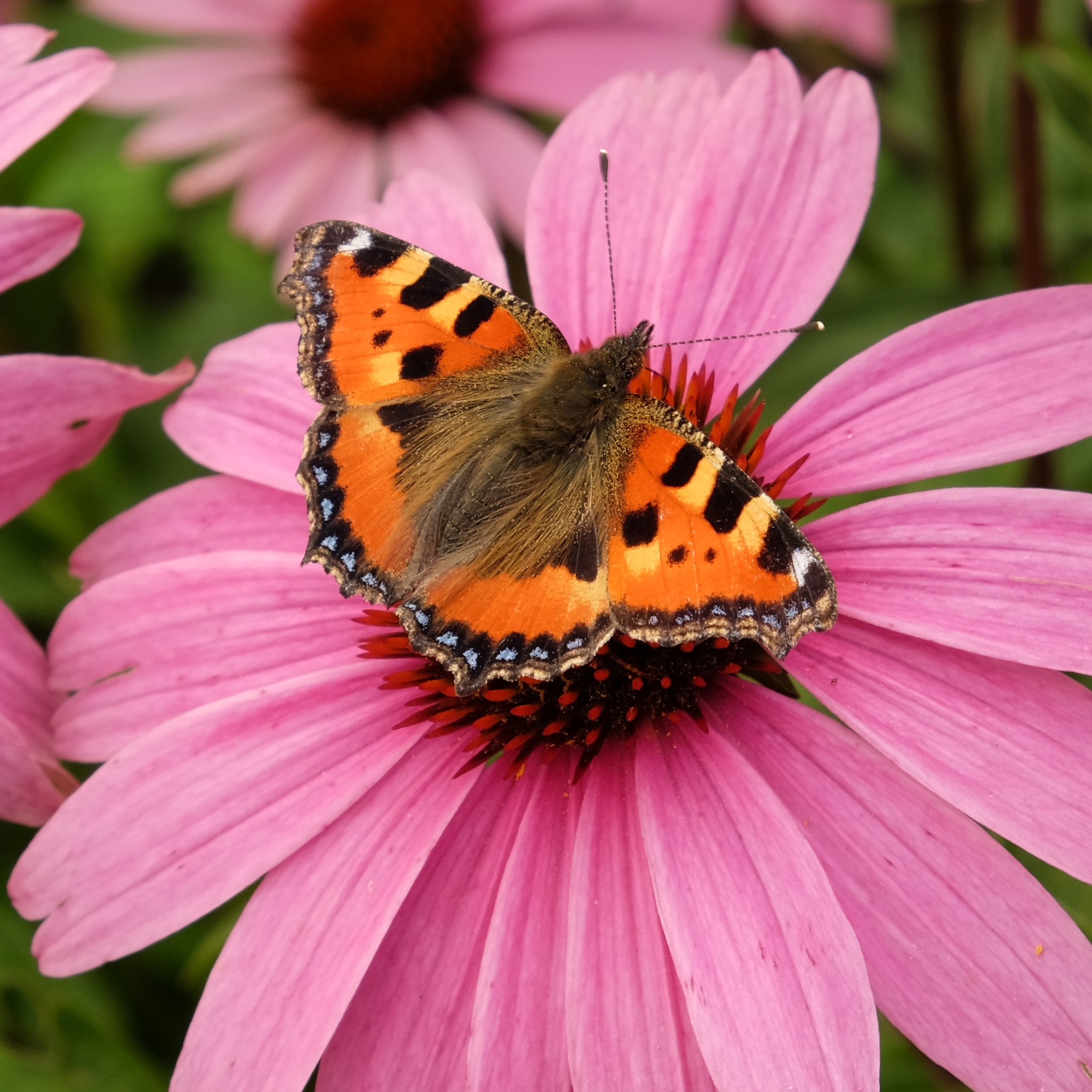 What a wonderful hairy moth flitting from flower to flower.
What a wonderful hairy moth flitting from flower to flower.
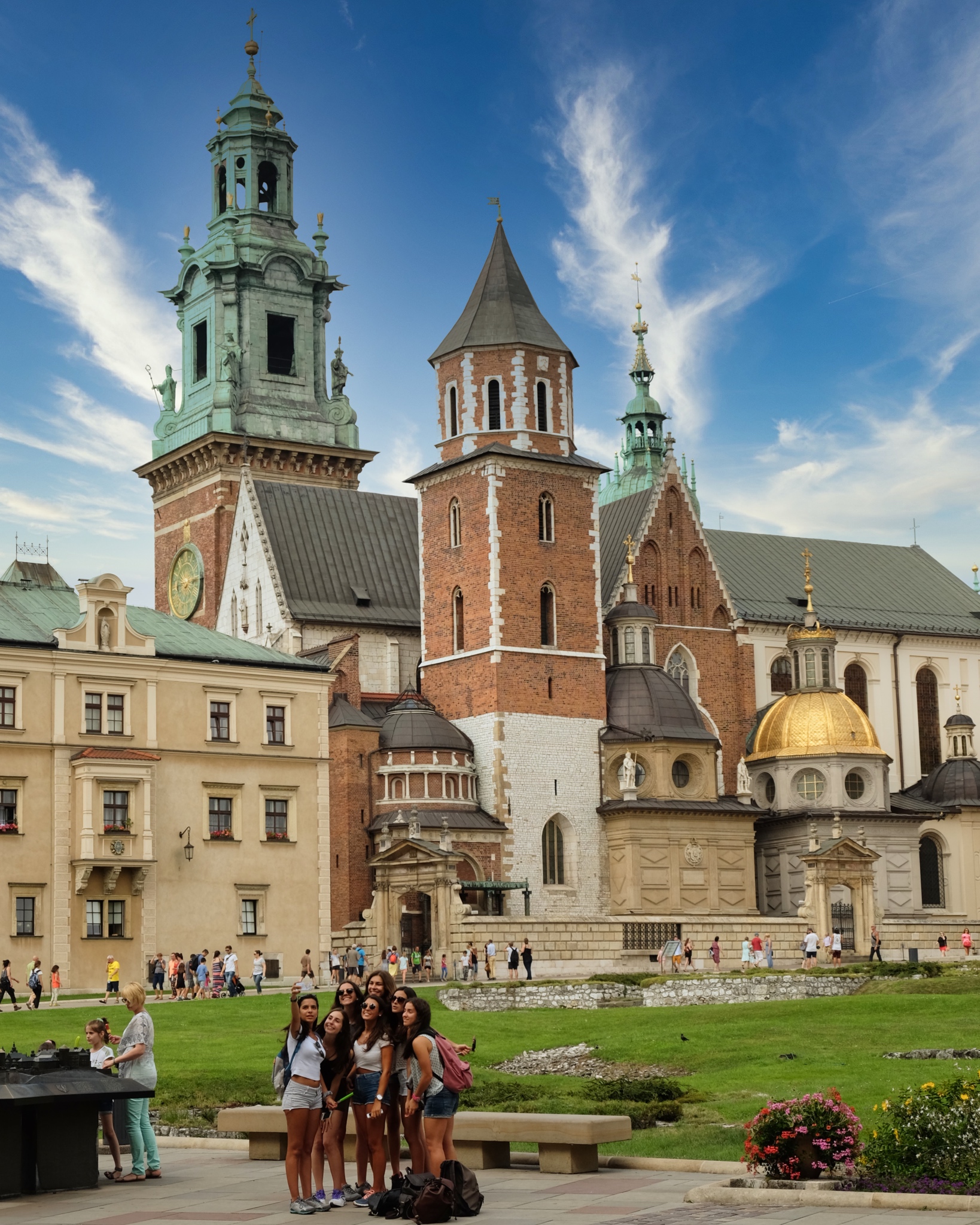 Tourists taking a group selfie in front of the historic Wawel Cathedral, first built in the 11th century, burned in 1302, and rebuilt in the 14th century.
Tourists taking a group selfie in front of the historic Wawel Cathedral, first built in the 11th century, burned in 1302, and rebuilt in the 14th century.
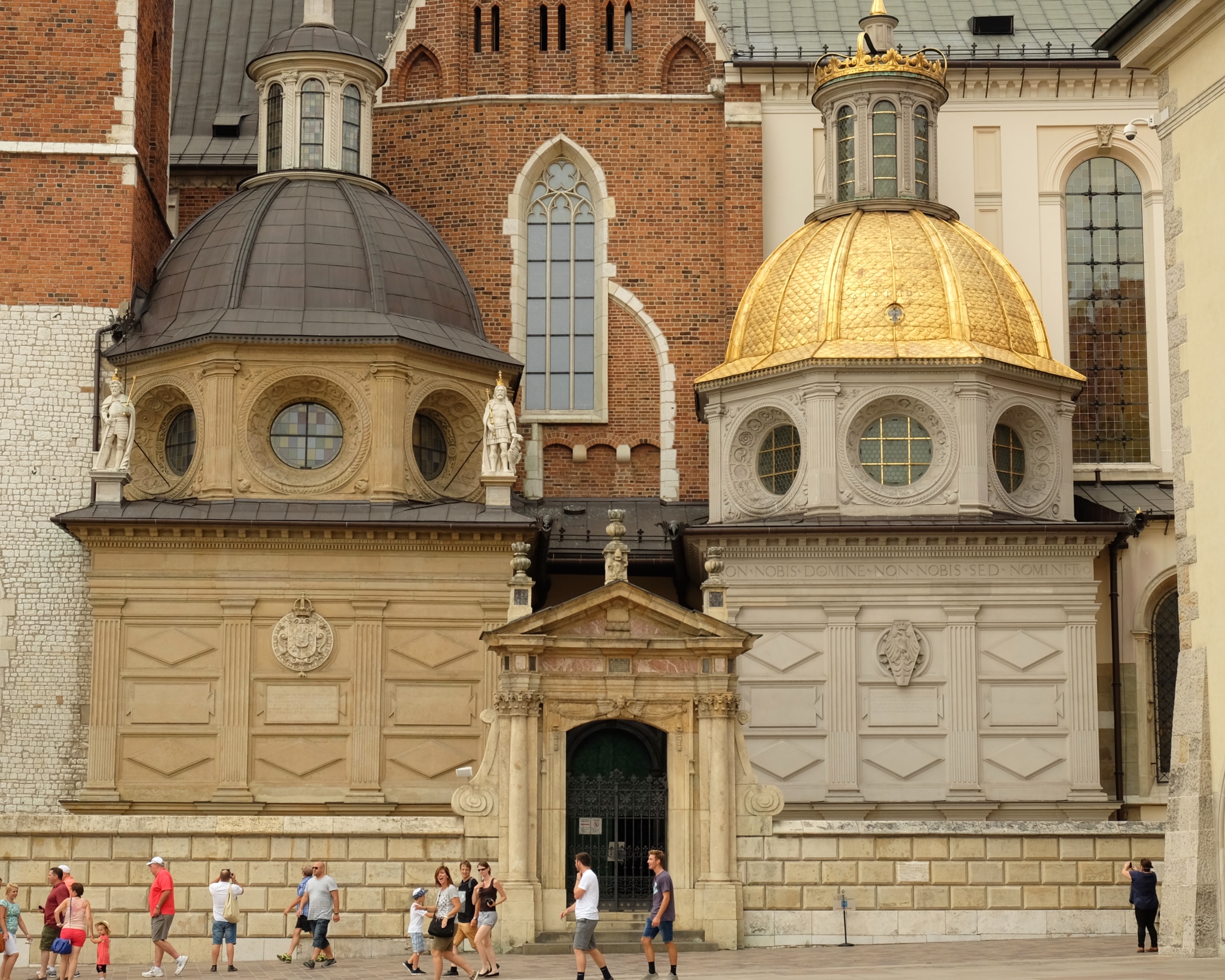 The domed facade of Wawel Cathedral.
The domed facade of Wawel Cathedral.
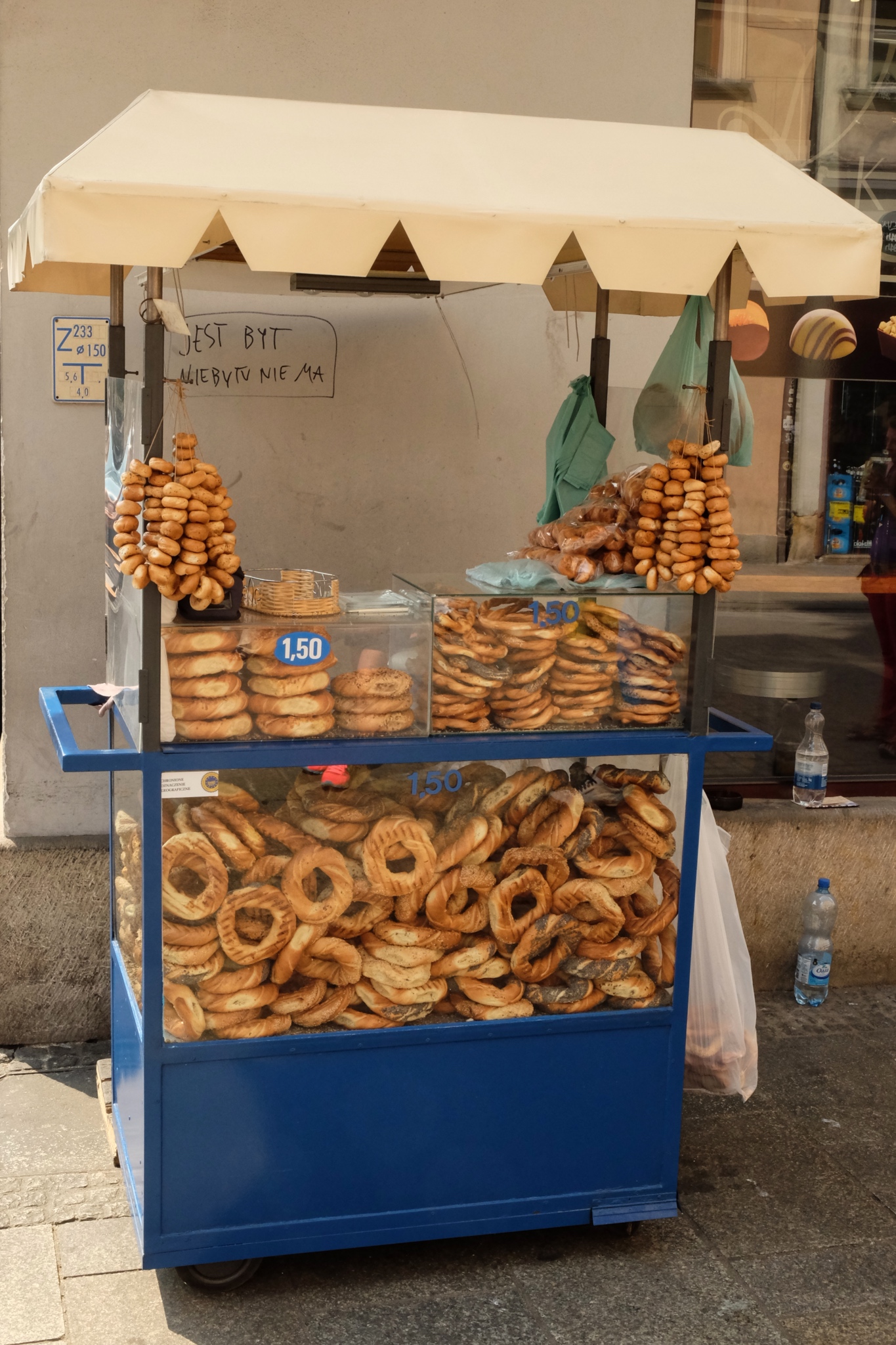 Beautiful bread snackage.
Beautiful bread snackage.
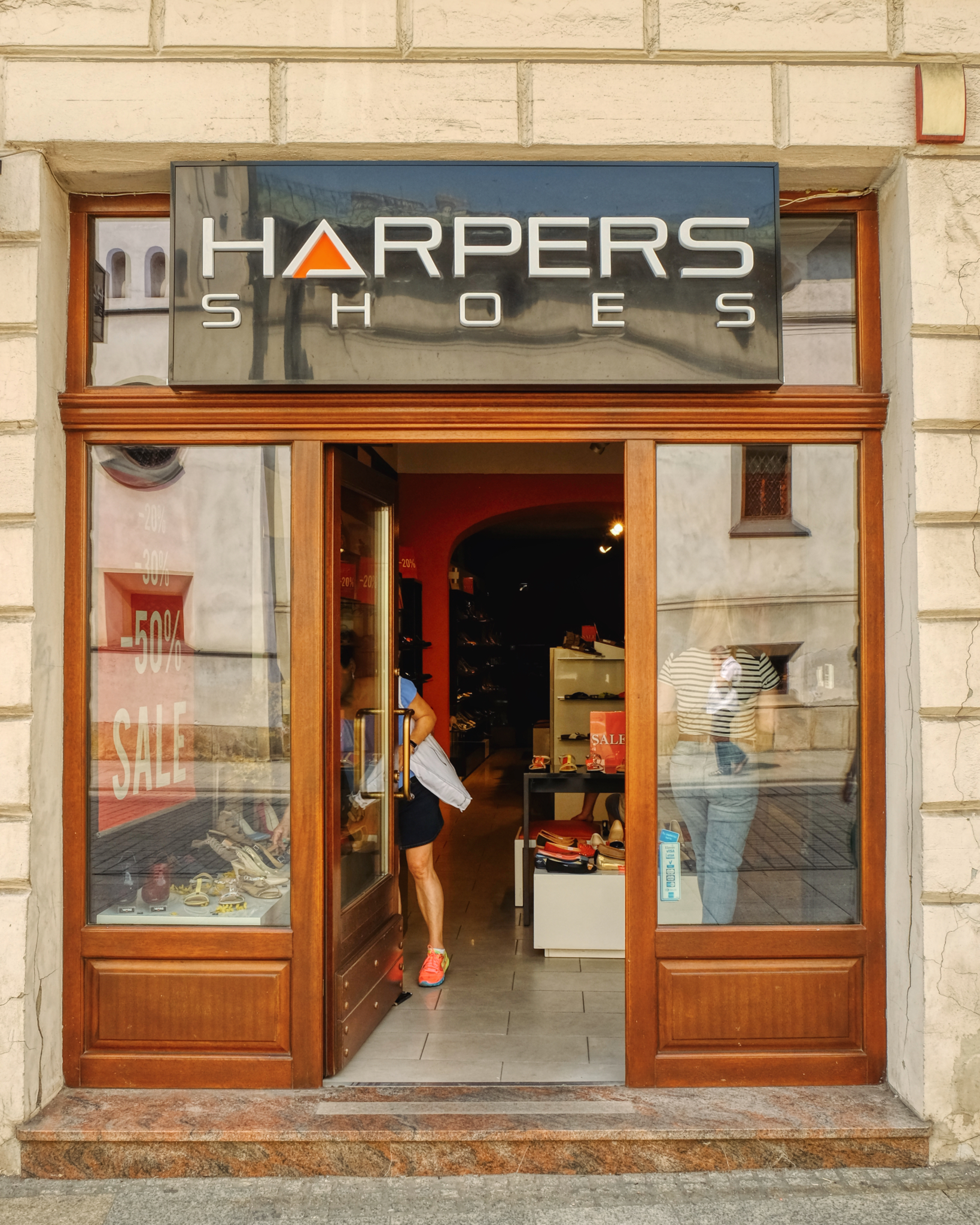 I couldn't resist!!!
I couldn't resist!!!
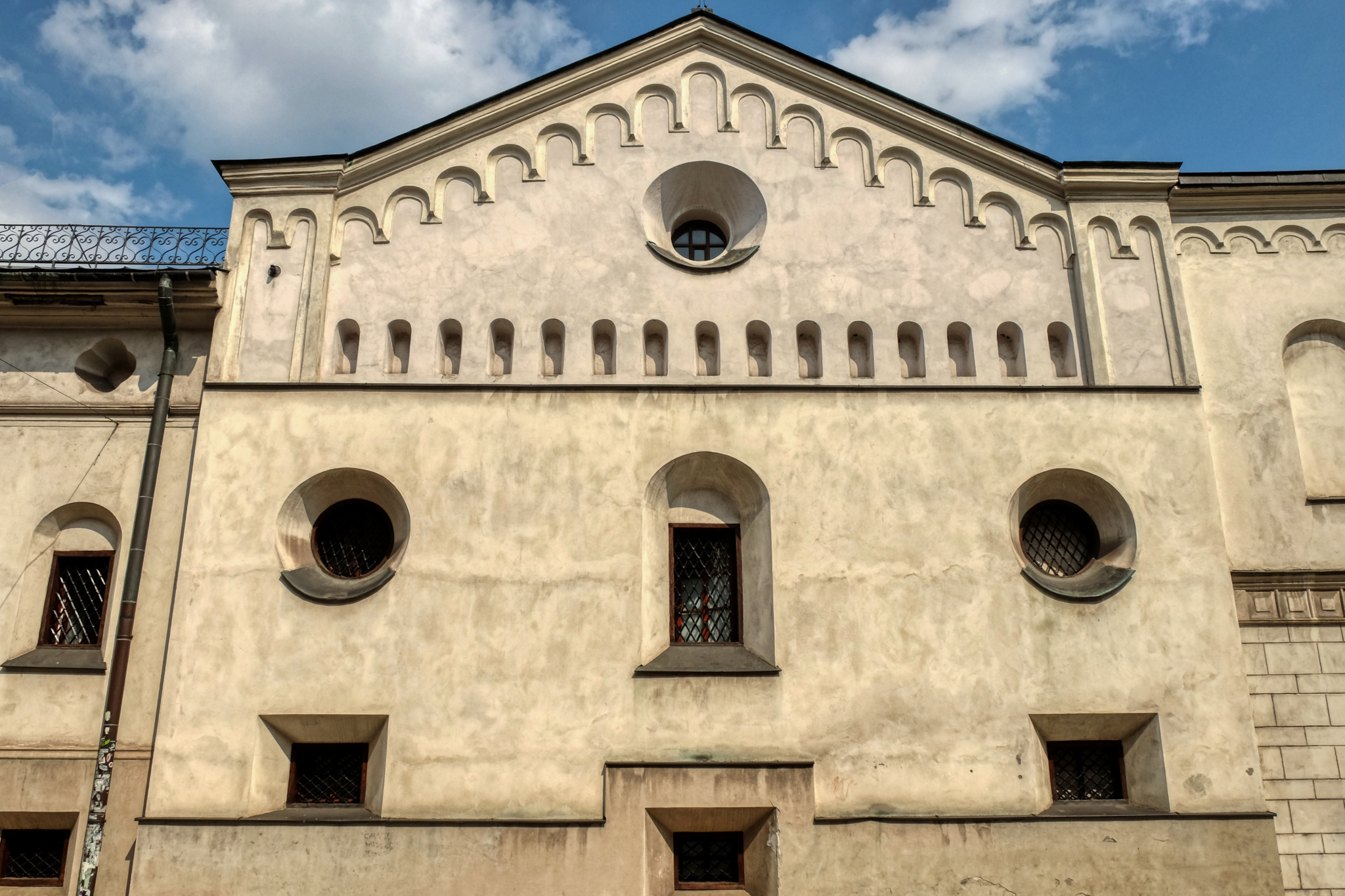 I absolutely love the architectural style of this city center monastery.
I absolutely love the architectural style of this city center monastery.
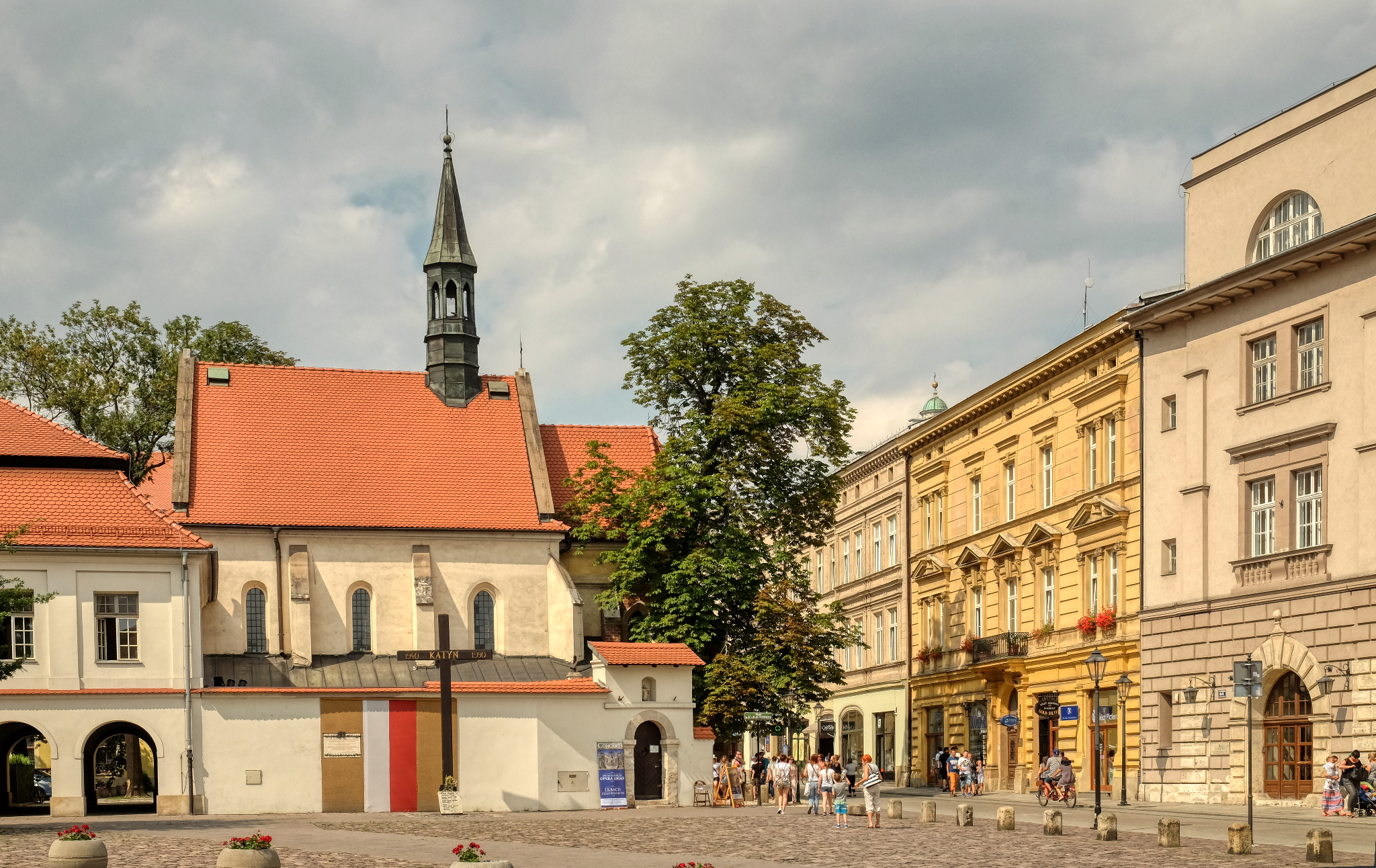 A wonderful city for just ambling around.
A wonderful city for just ambling around.
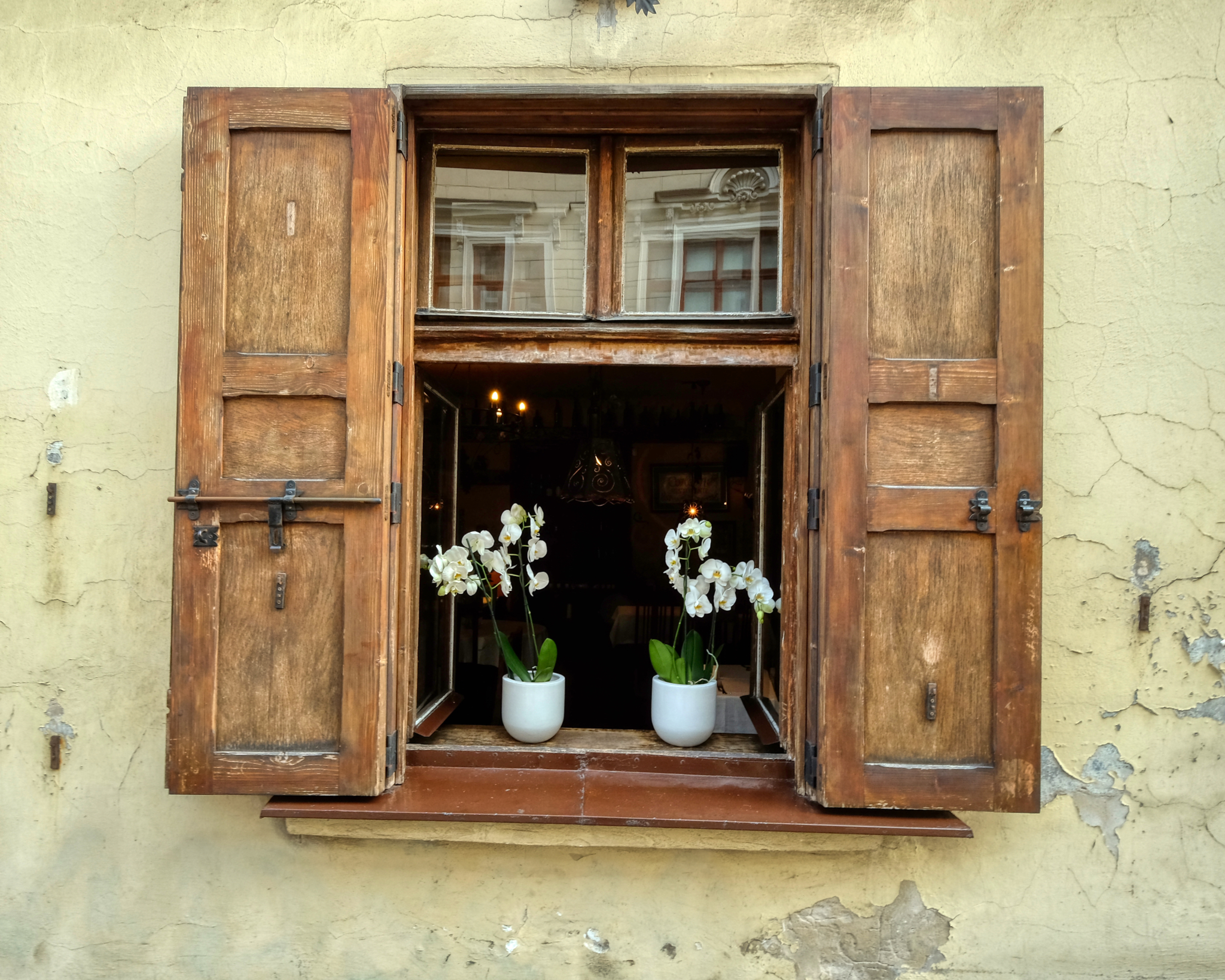 Ah! Orchids! Reminded us of our home in Thailand.
Ah! Orchids! Reminded us of our home in Thailand.
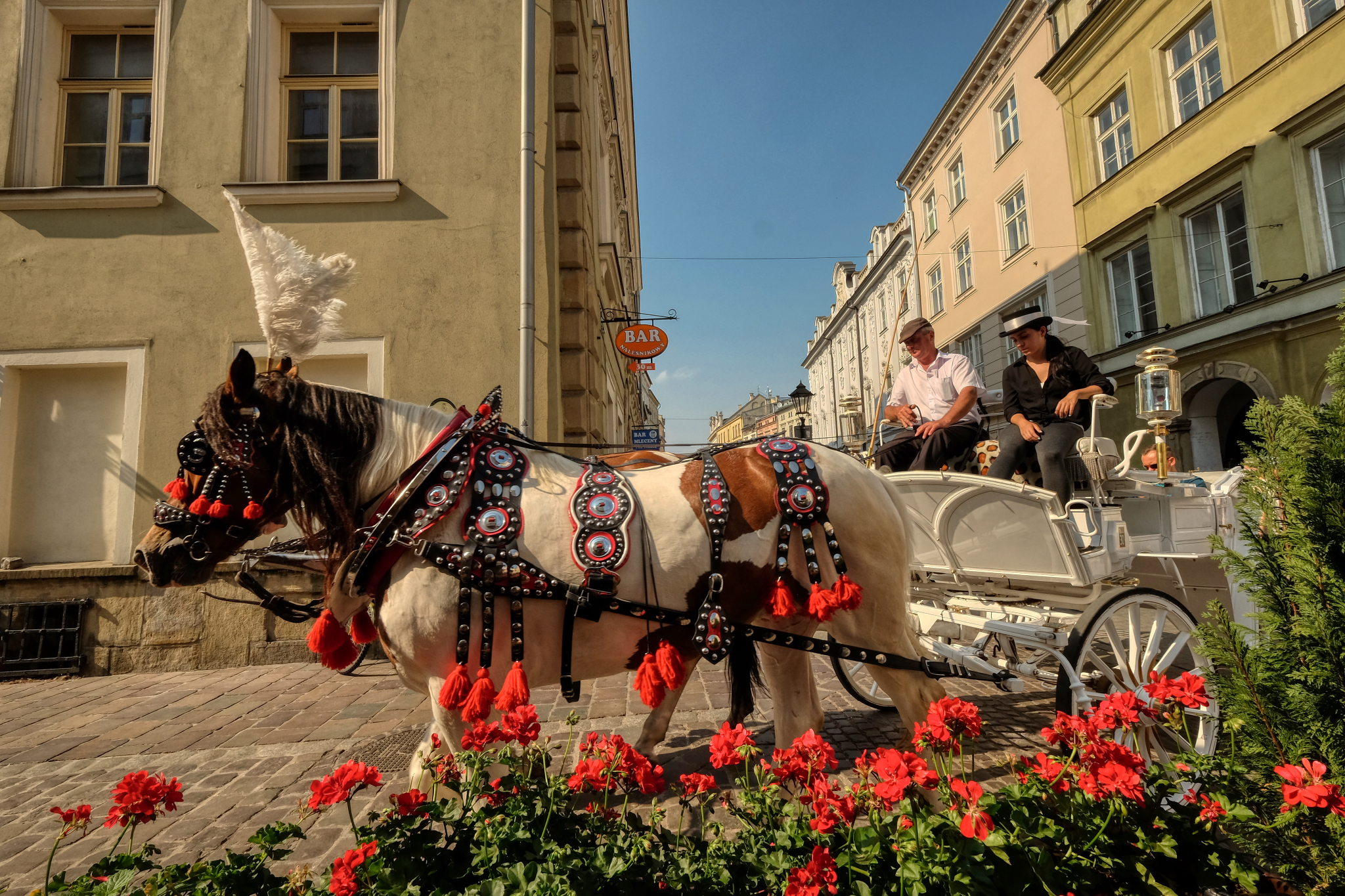 We stopped in at a cafe on a small side street only to discover it was on the route of the central square horse carriage route. They came by every two minutes!
We stopped in at a cafe on a small side street only to discover it was on the route of the central square horse carriage route. They came by every two minutes!
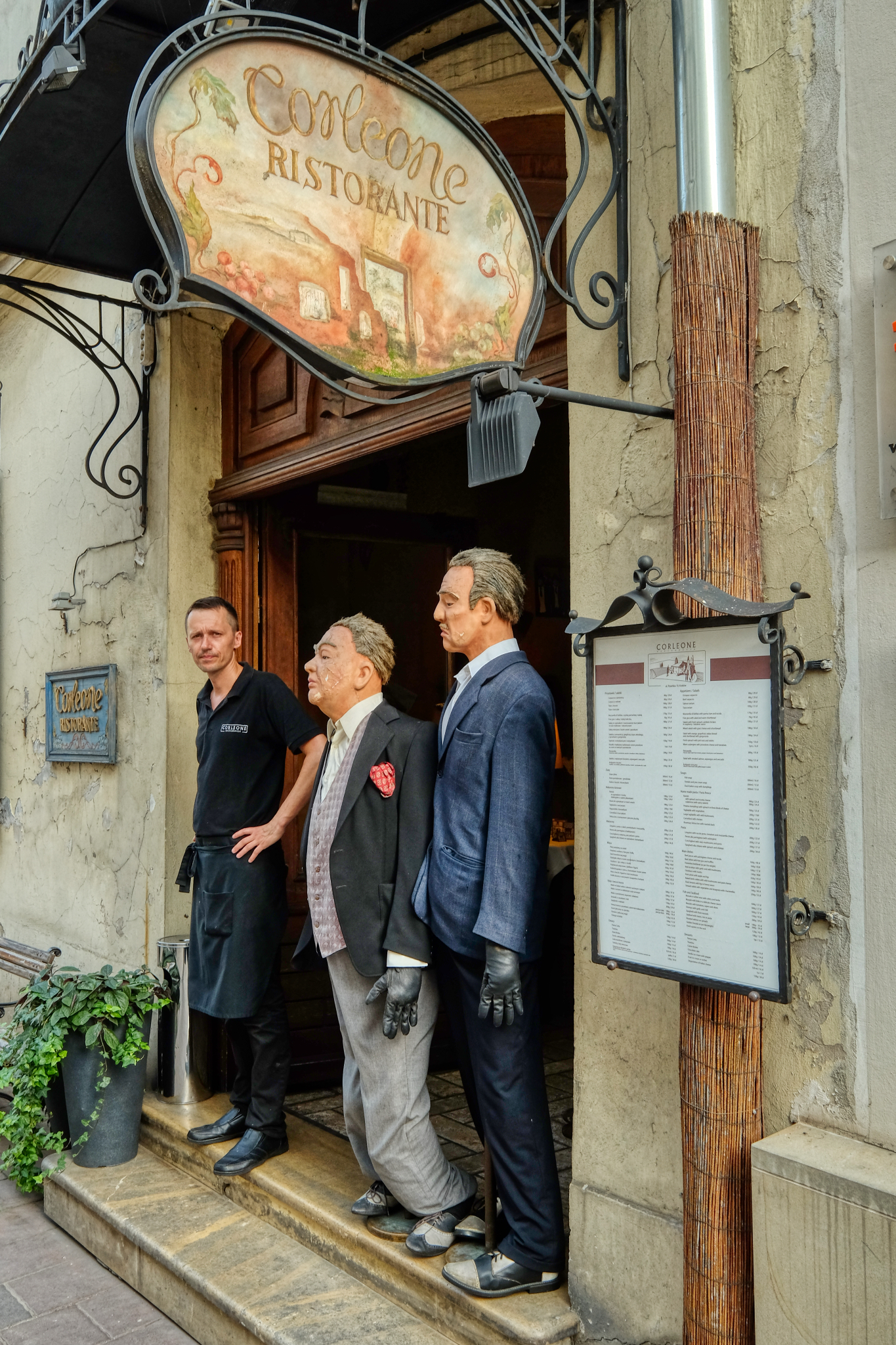 A restaurateur with a sense of humor.
A restaurateur with a sense of humor.
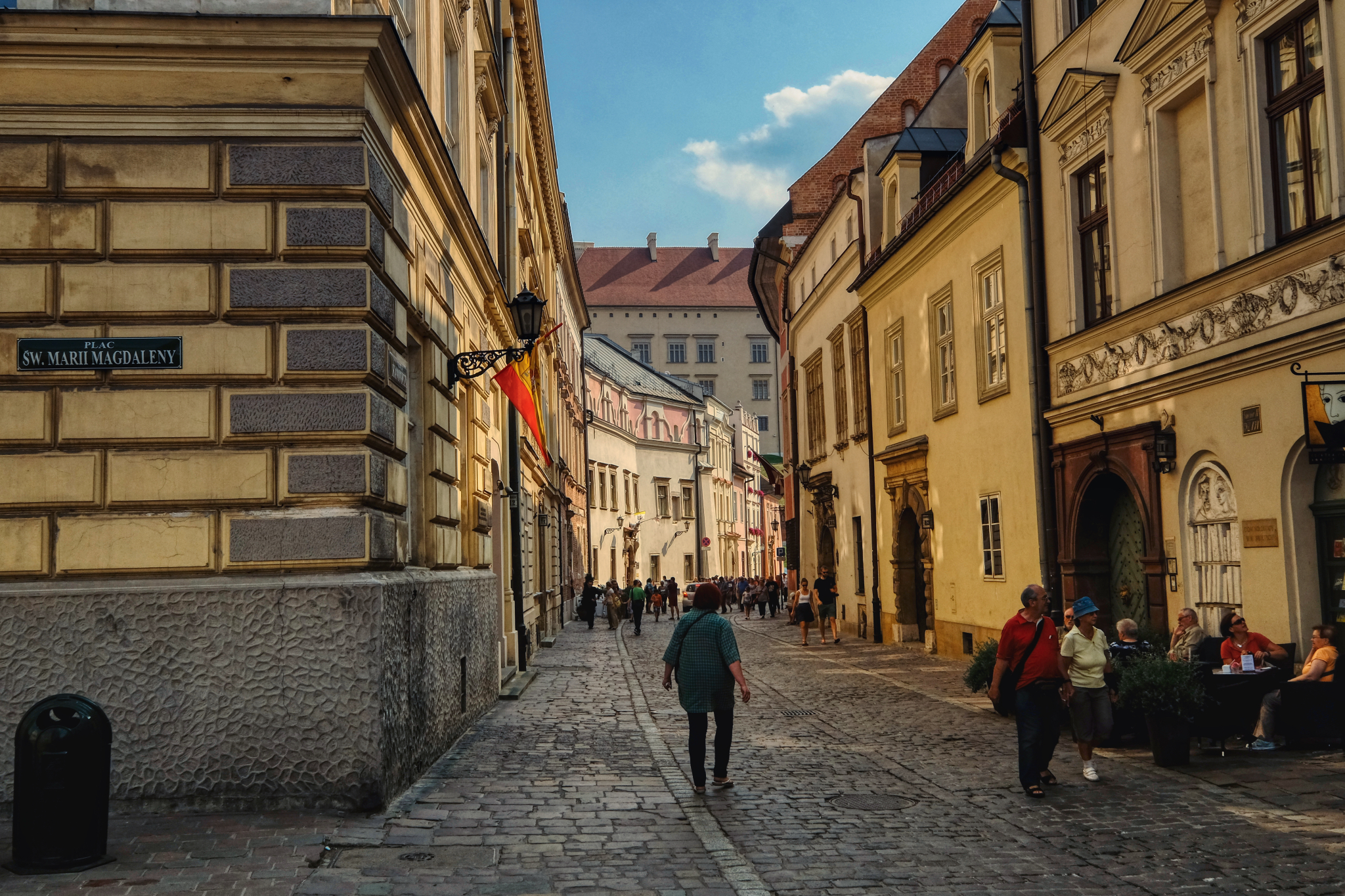 Lovely medieval cobbled lanes.
Lovely medieval cobbled lanes.
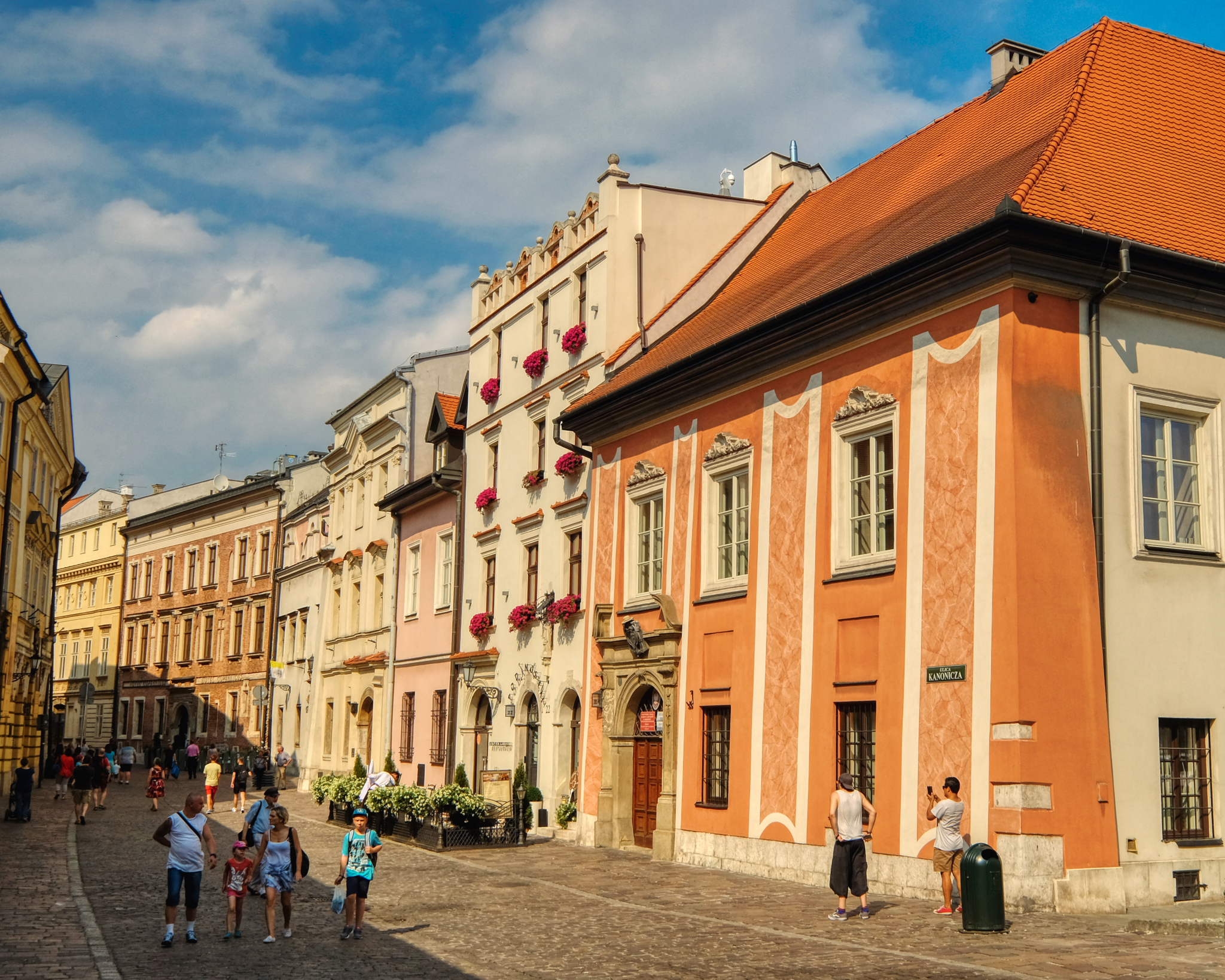 The old medieval city center as it was 500 years ago . . .
The old medieval city center as it was 500 years ago . . .
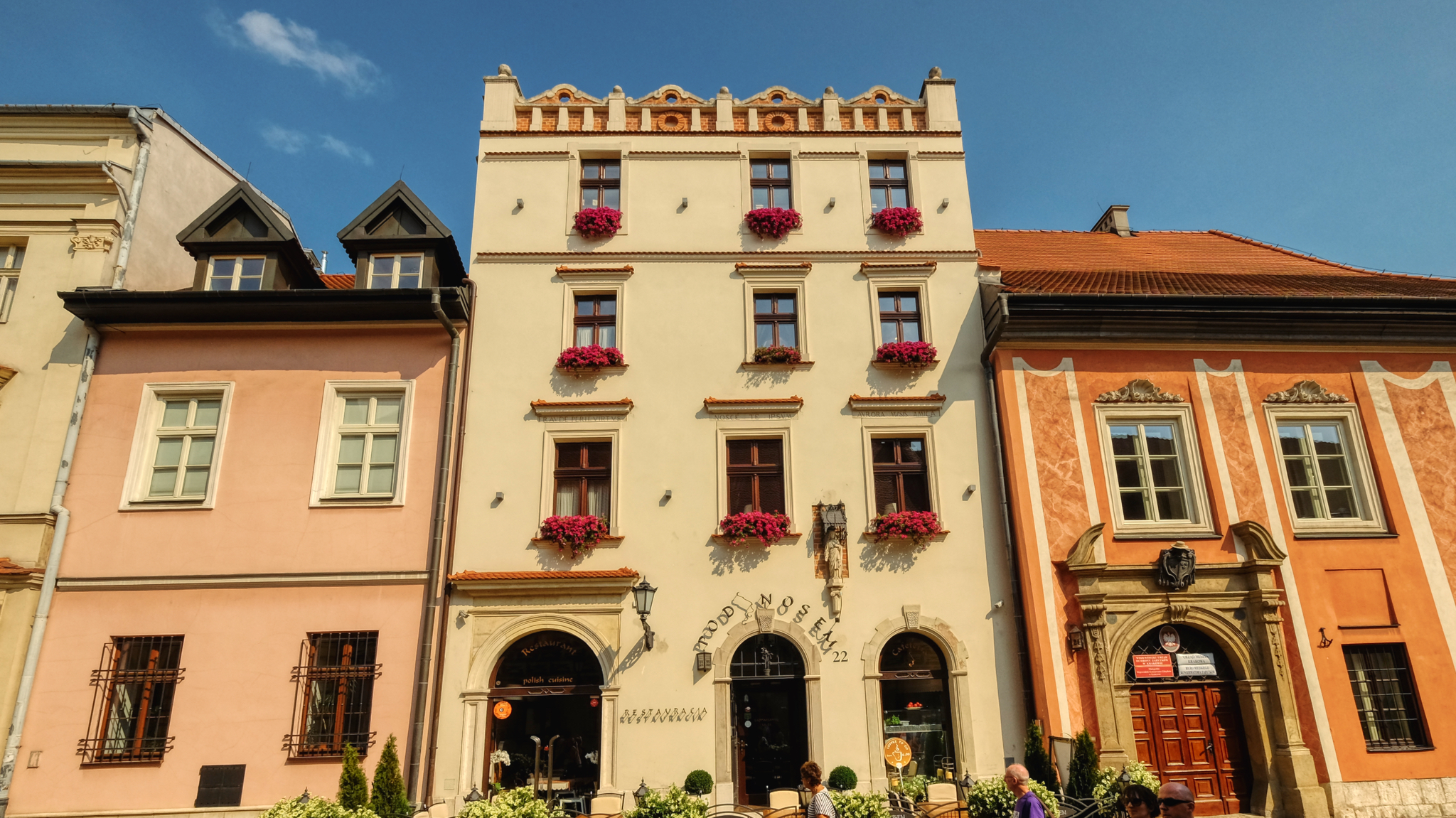 Beautifully decorated and adorned cityscape.
Beautifully decorated and adorned cityscape.
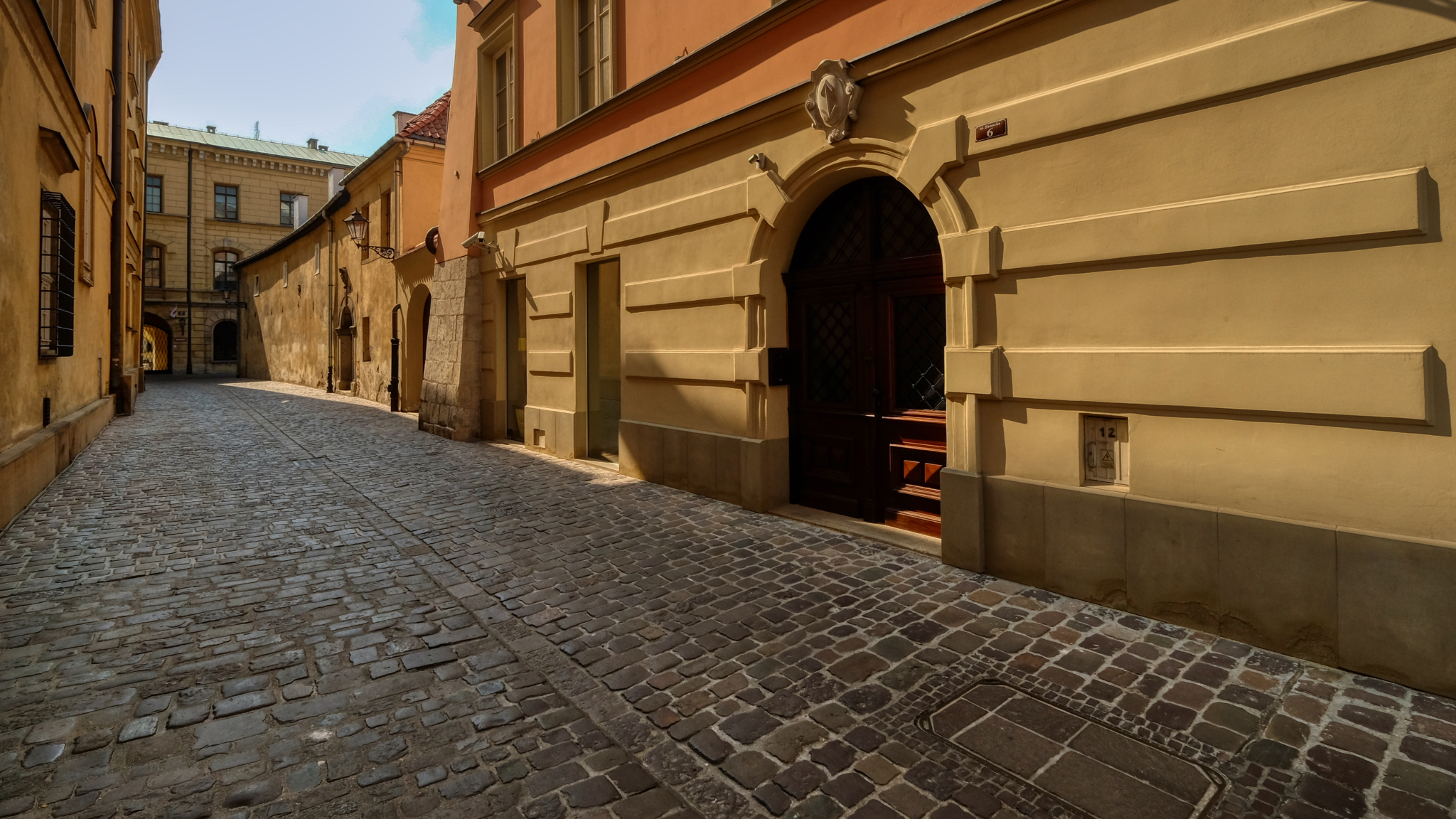 Monumental architecture along a cobbled alley.
Monumental architecture along a cobbled alley.
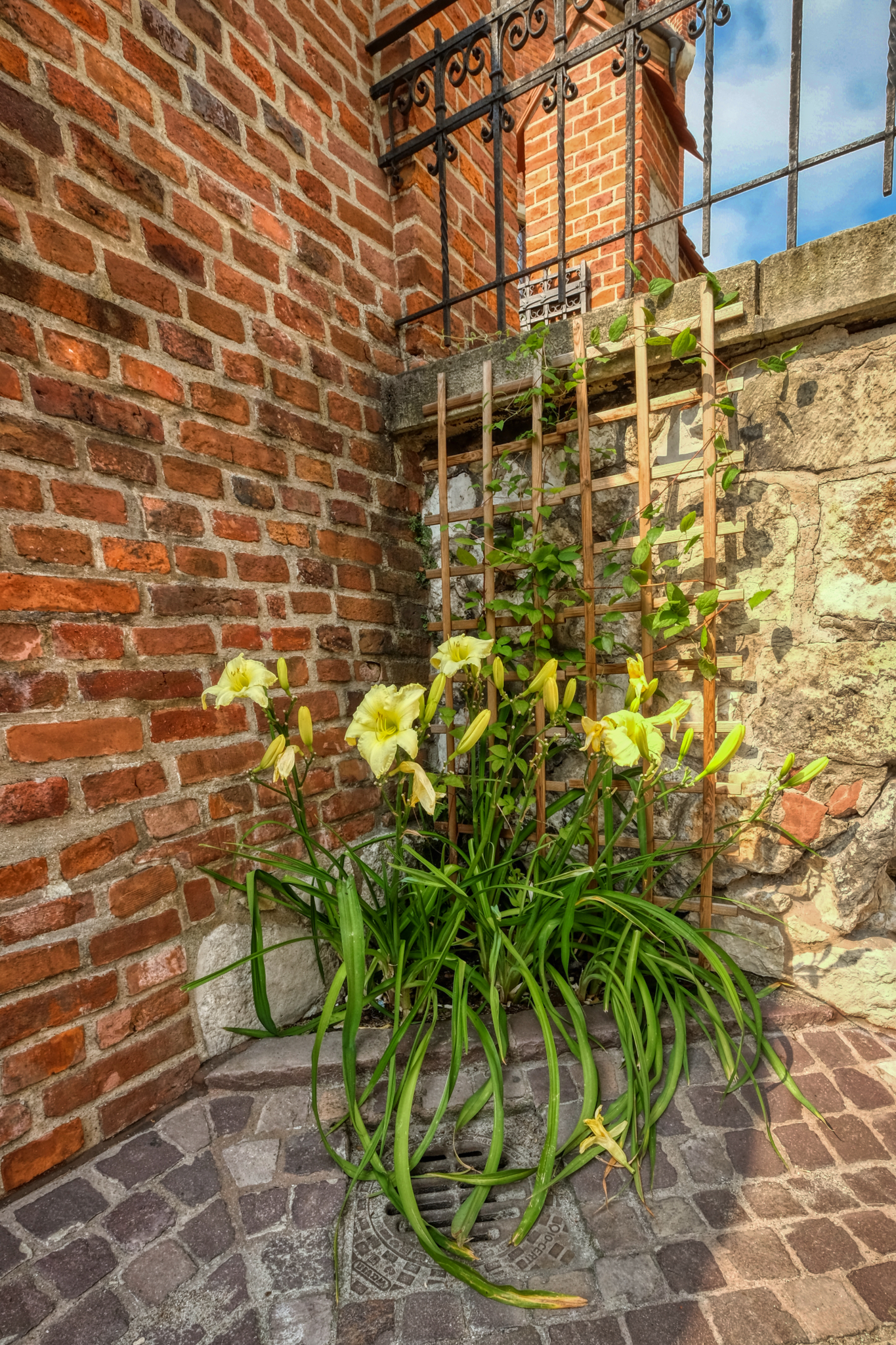 Little beauty arrangements here and there throughout this charming old city.
Little beauty arrangements here and there throughout this charming old city.
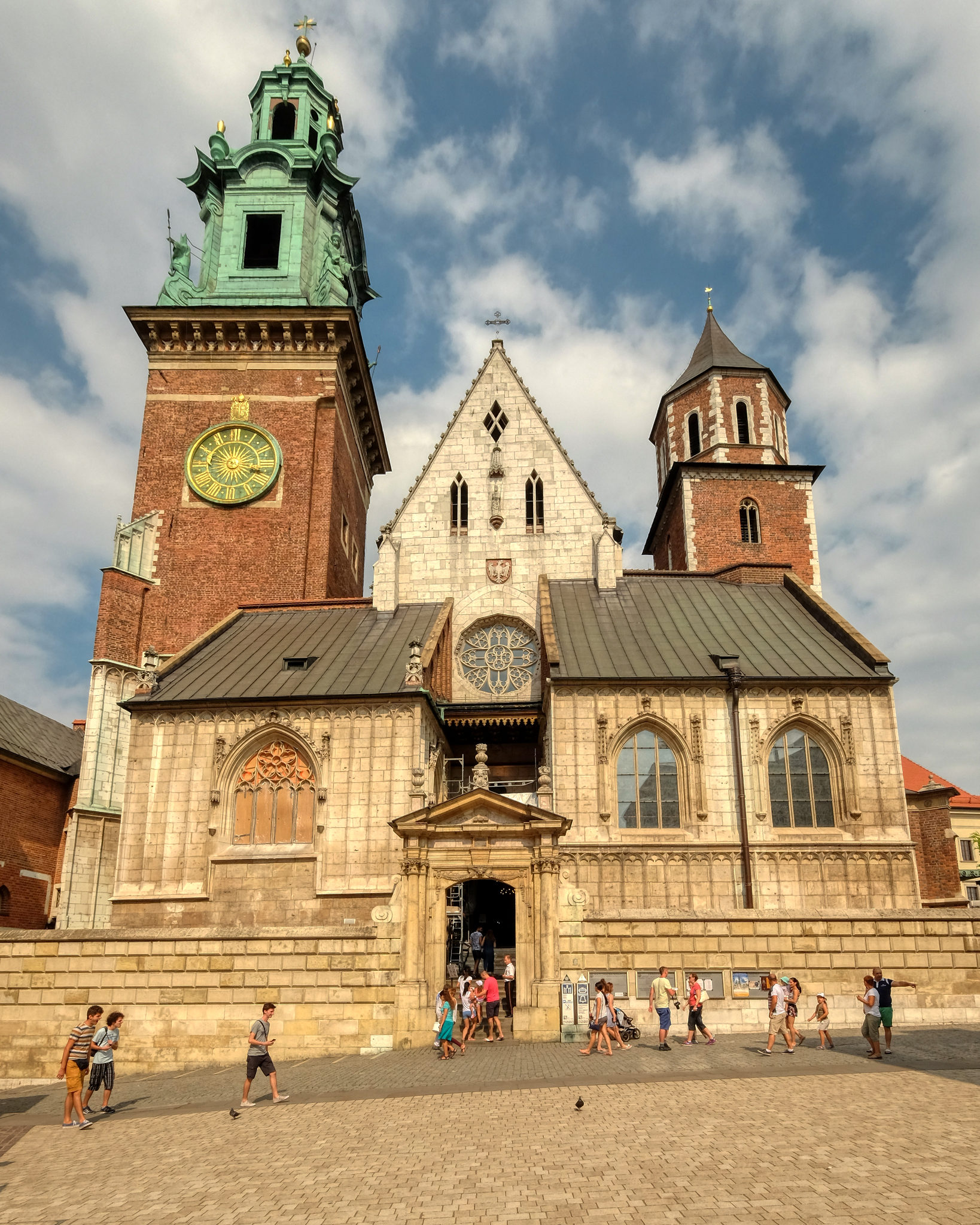 The castle chapel square.
The castle chapel square.
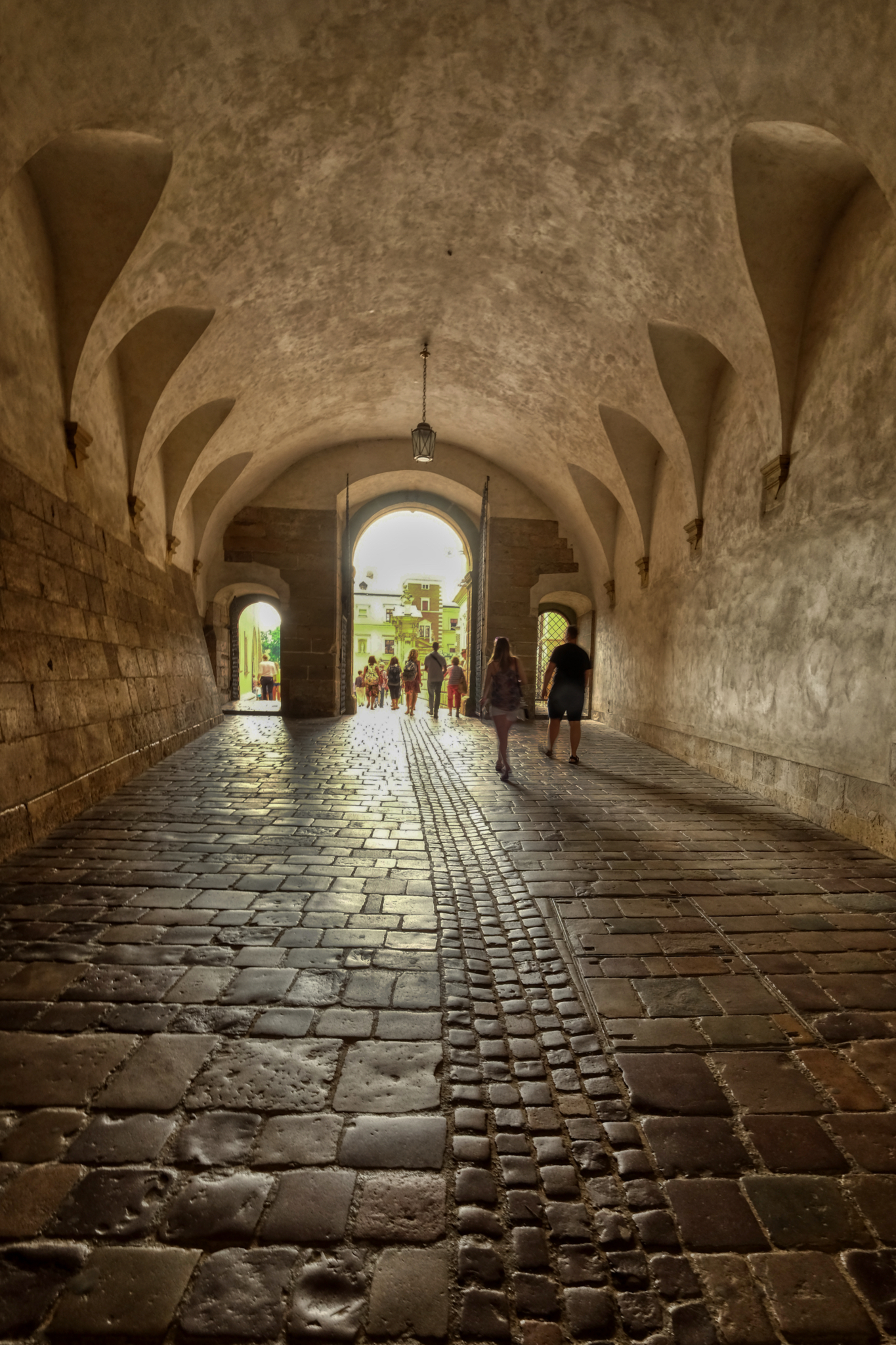 A passage to . . . ?
A passage to . . . ?
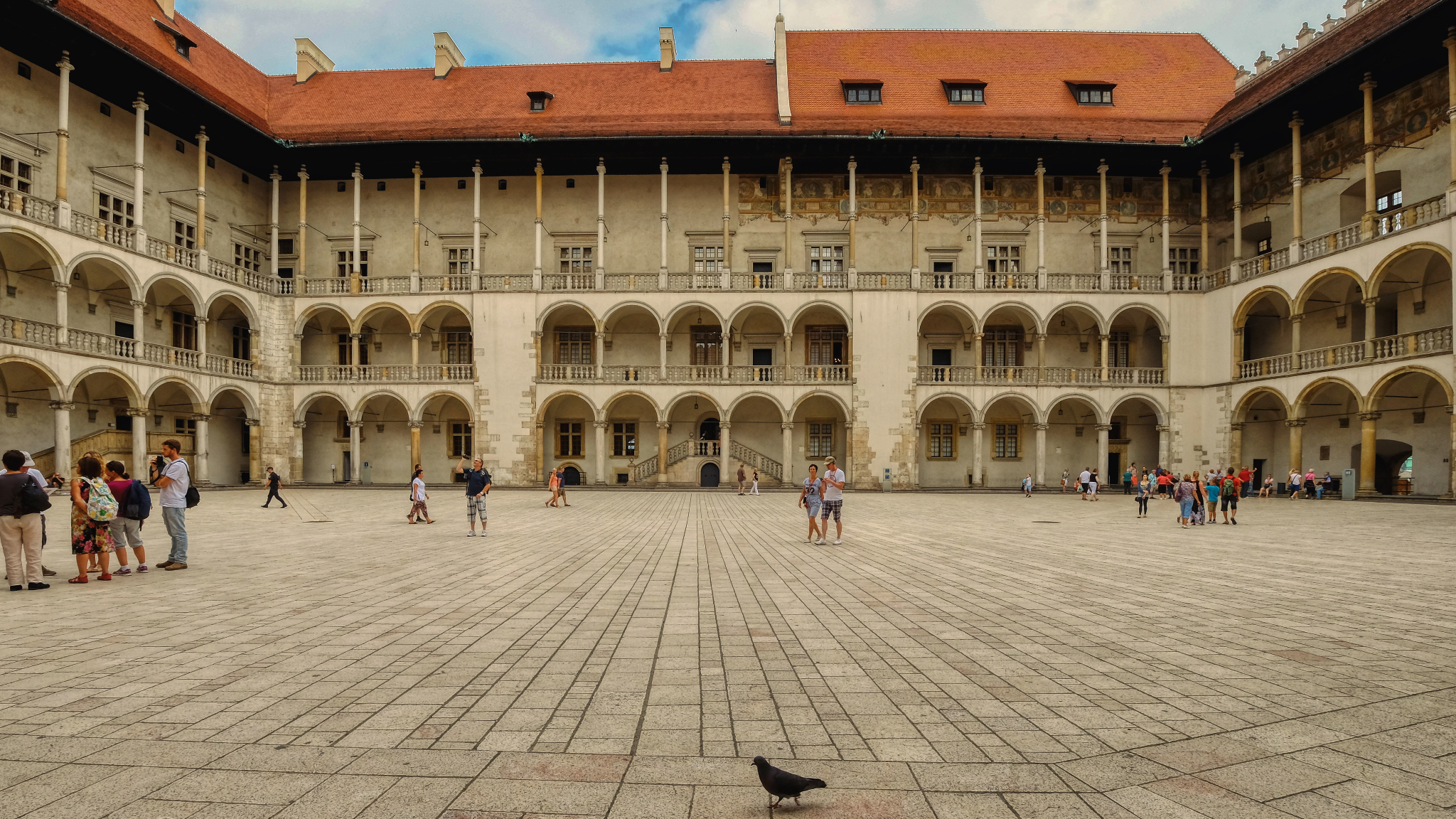 The courtyard of Kraców's Wawel Castle.
The courtyard of Kraców's Wawel Castle.
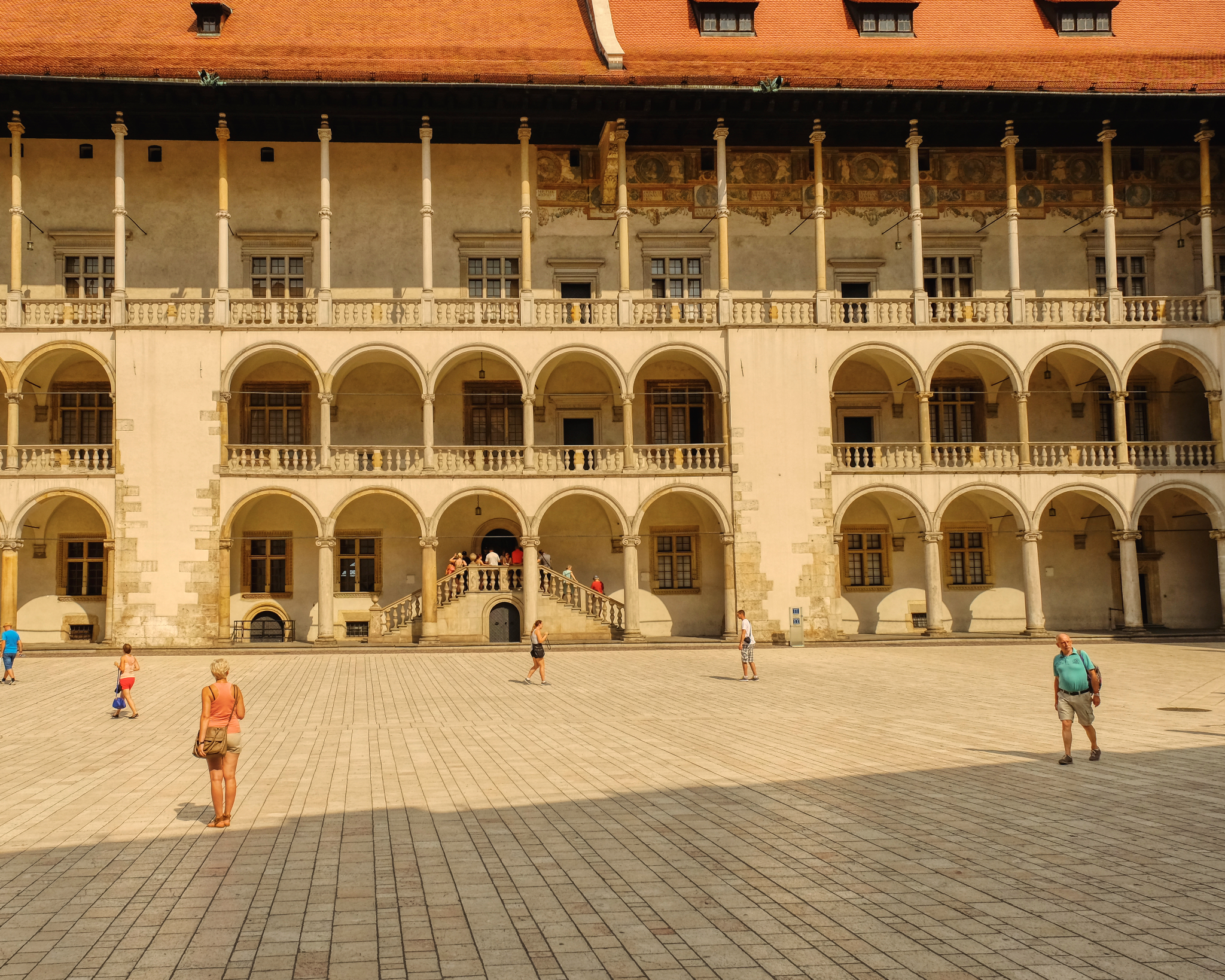 The castle courtyard . . . layers of balconies and doors . . . what mysteries have taken place here?
The castle courtyard . . . layers of balconies and doors . . . what mysteries have taken place here?
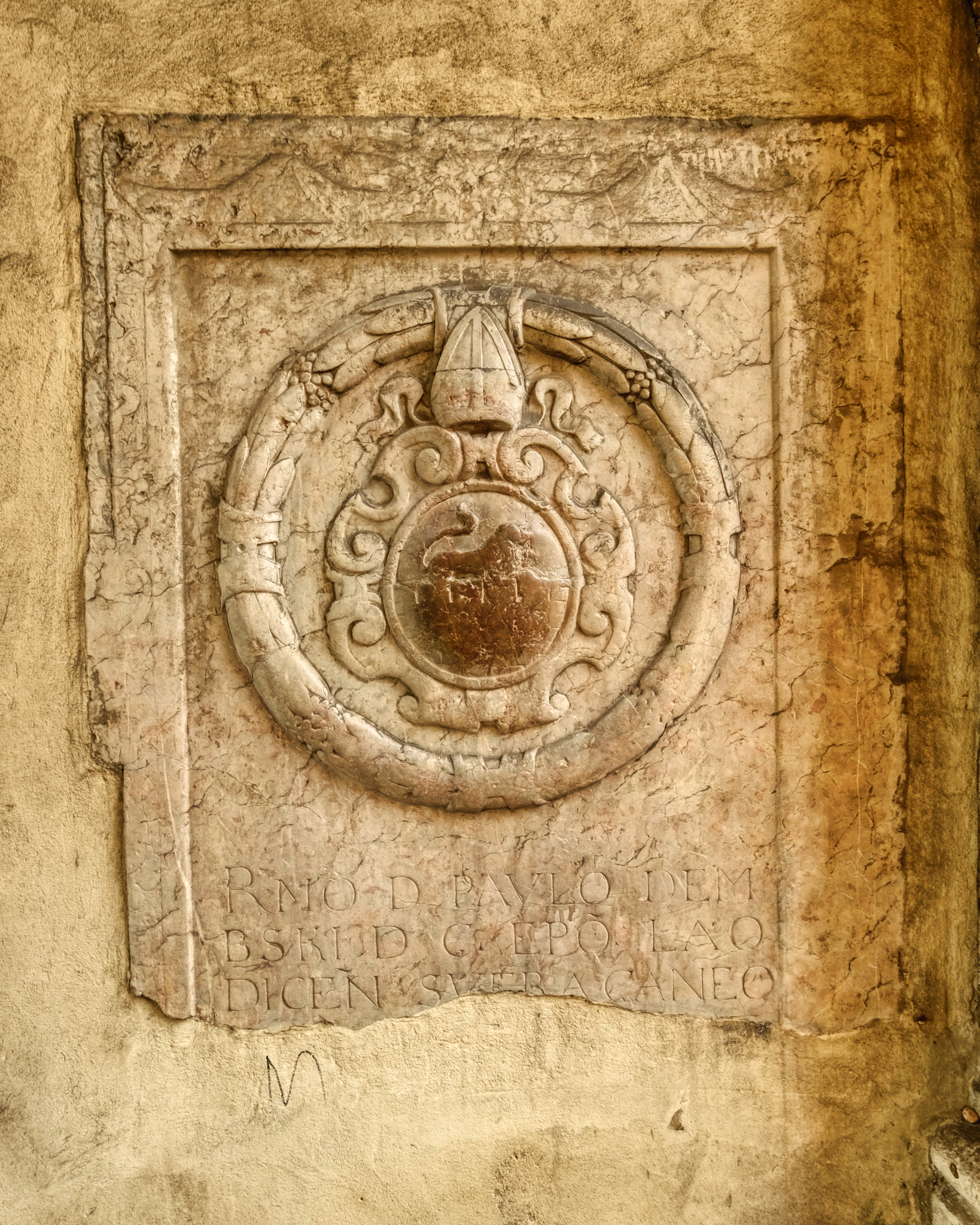 Turn your head one way and you see a royal insignia . . . turn it the other way . . .
Turn your head one way and you see a royal insignia . . . turn it the other way . . .
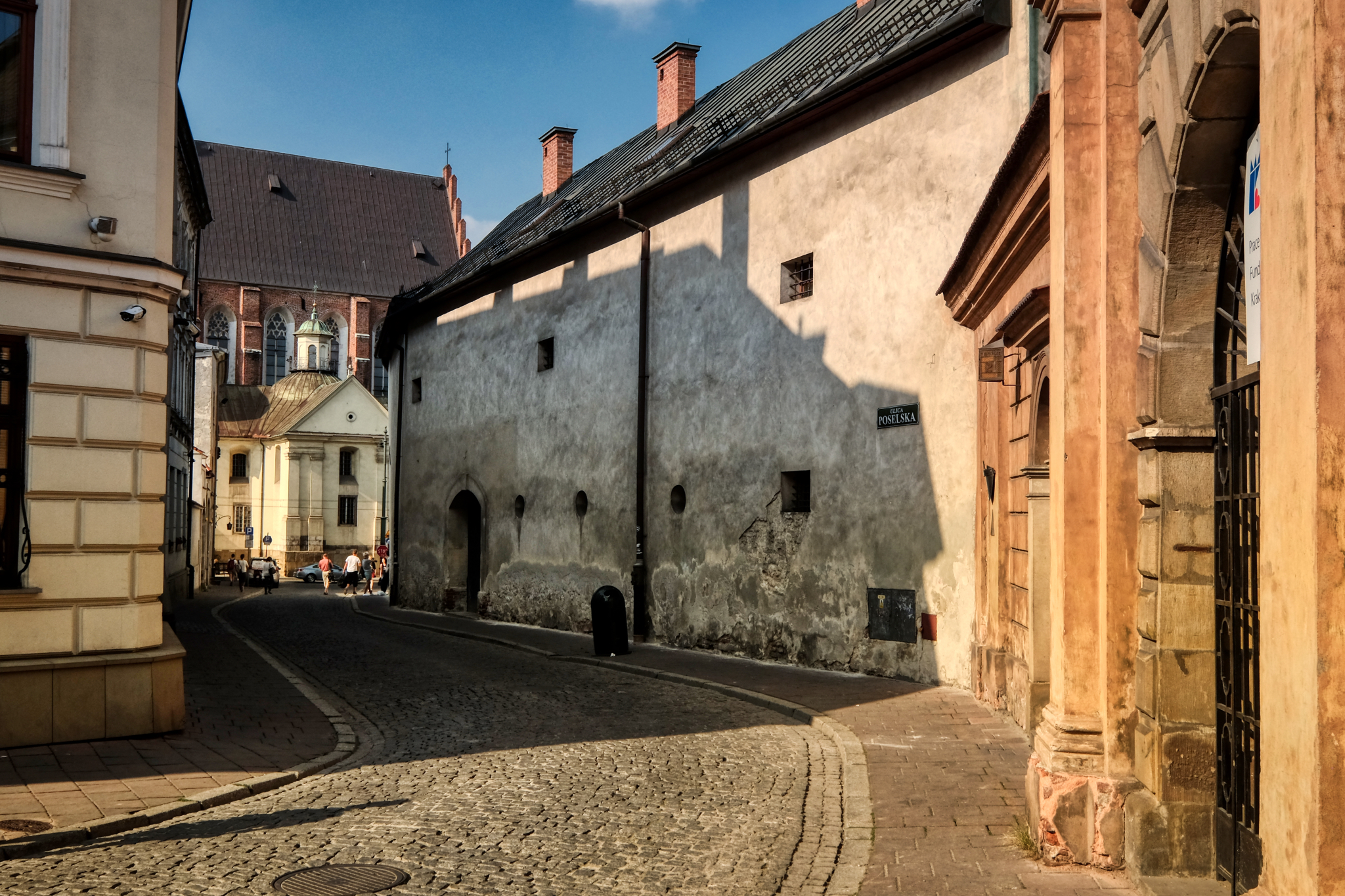 Strolling along the narrow side streets next to the castle.
Strolling along the narrow side streets next to the castle.
 . . . the entrance to a calm peaceful old chapel . . .
. . . the entrance to a calm peaceful old chapel . . .
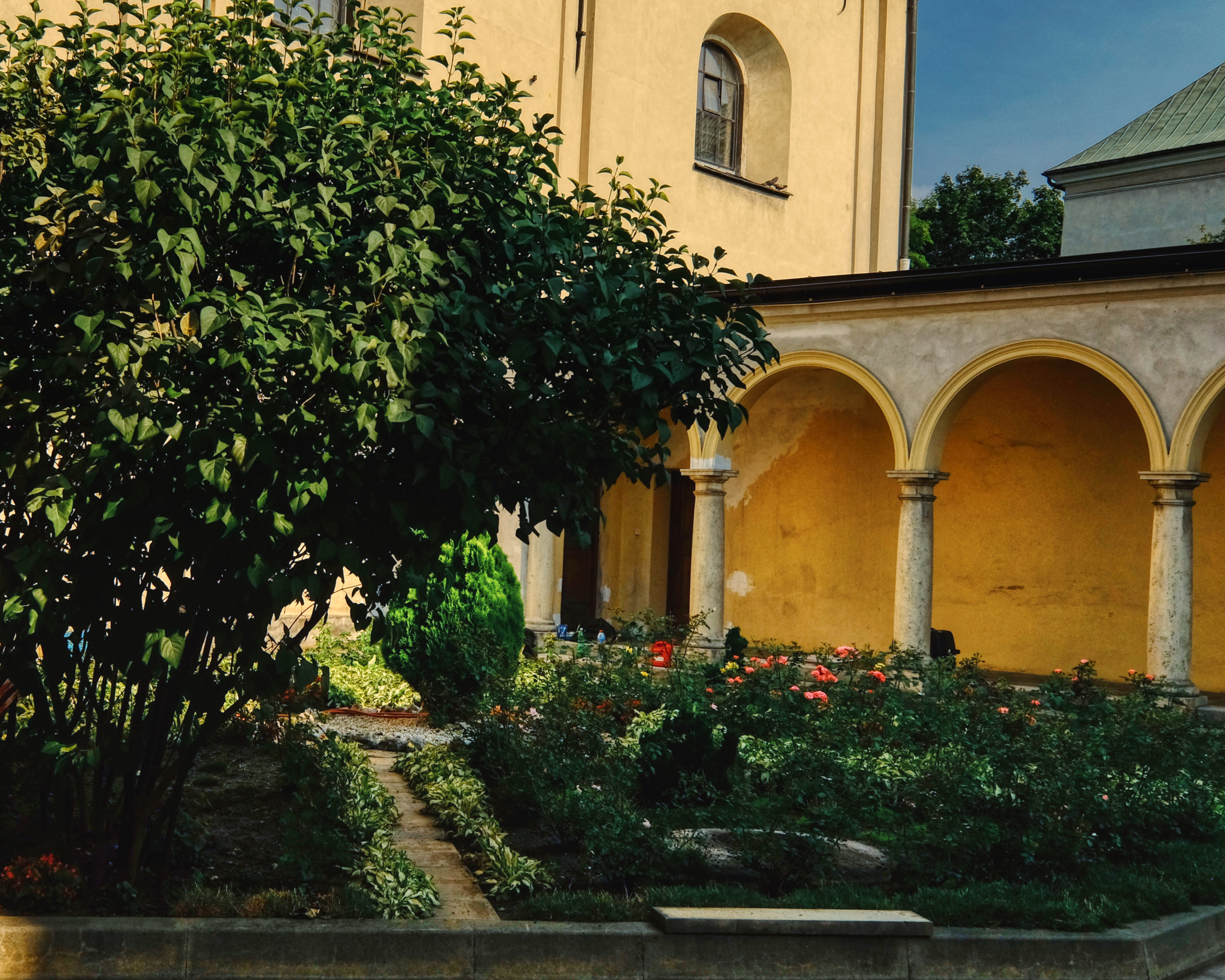 . . . and the quiet garden within.
. . . and the quiet garden within.
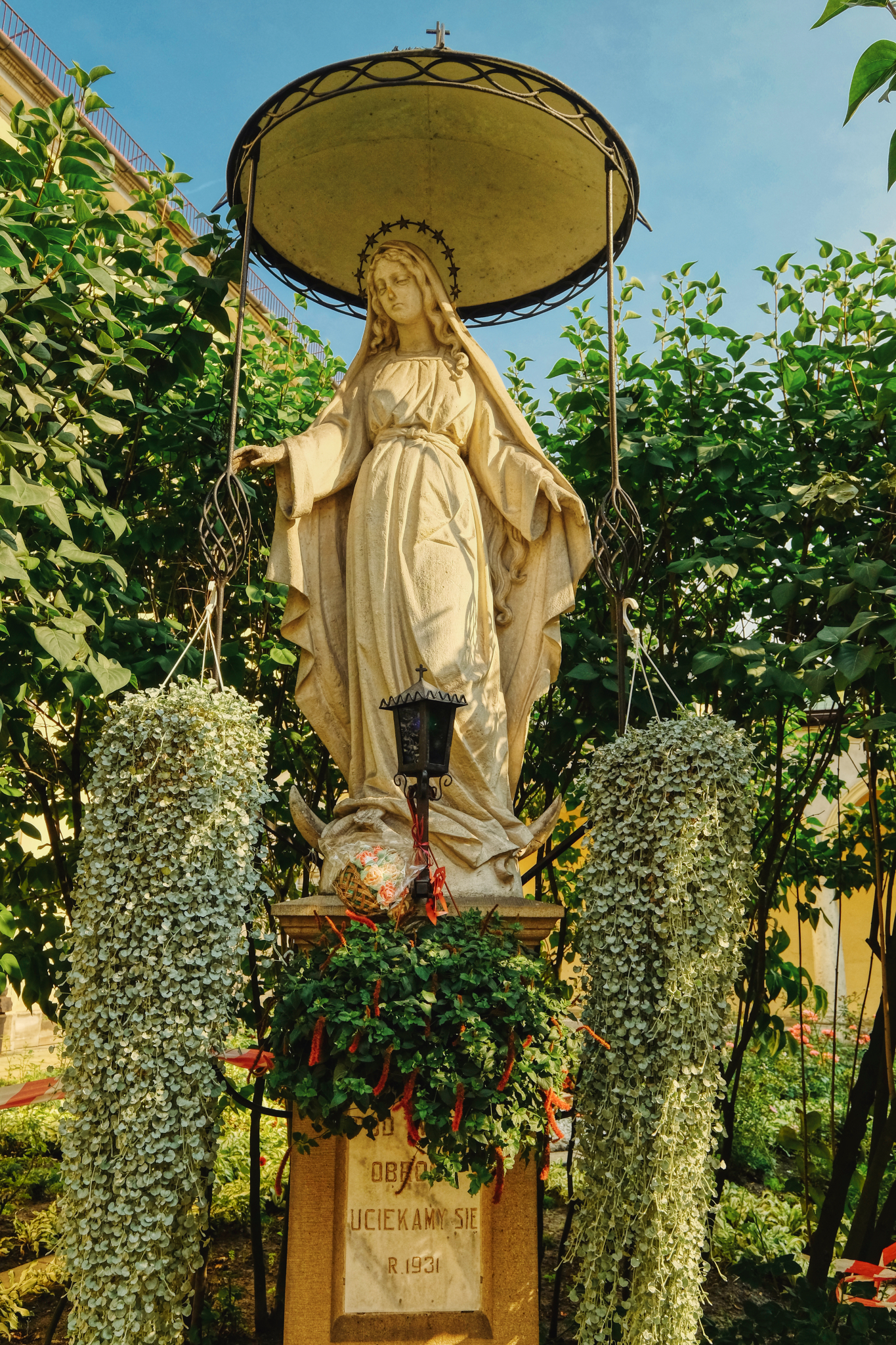 One of thousands of statues of Mary throughout the city. Poland is still a heavily Catholic country.
One of thousands of statues of Mary throughout the city. Poland is still a heavily Catholic country.
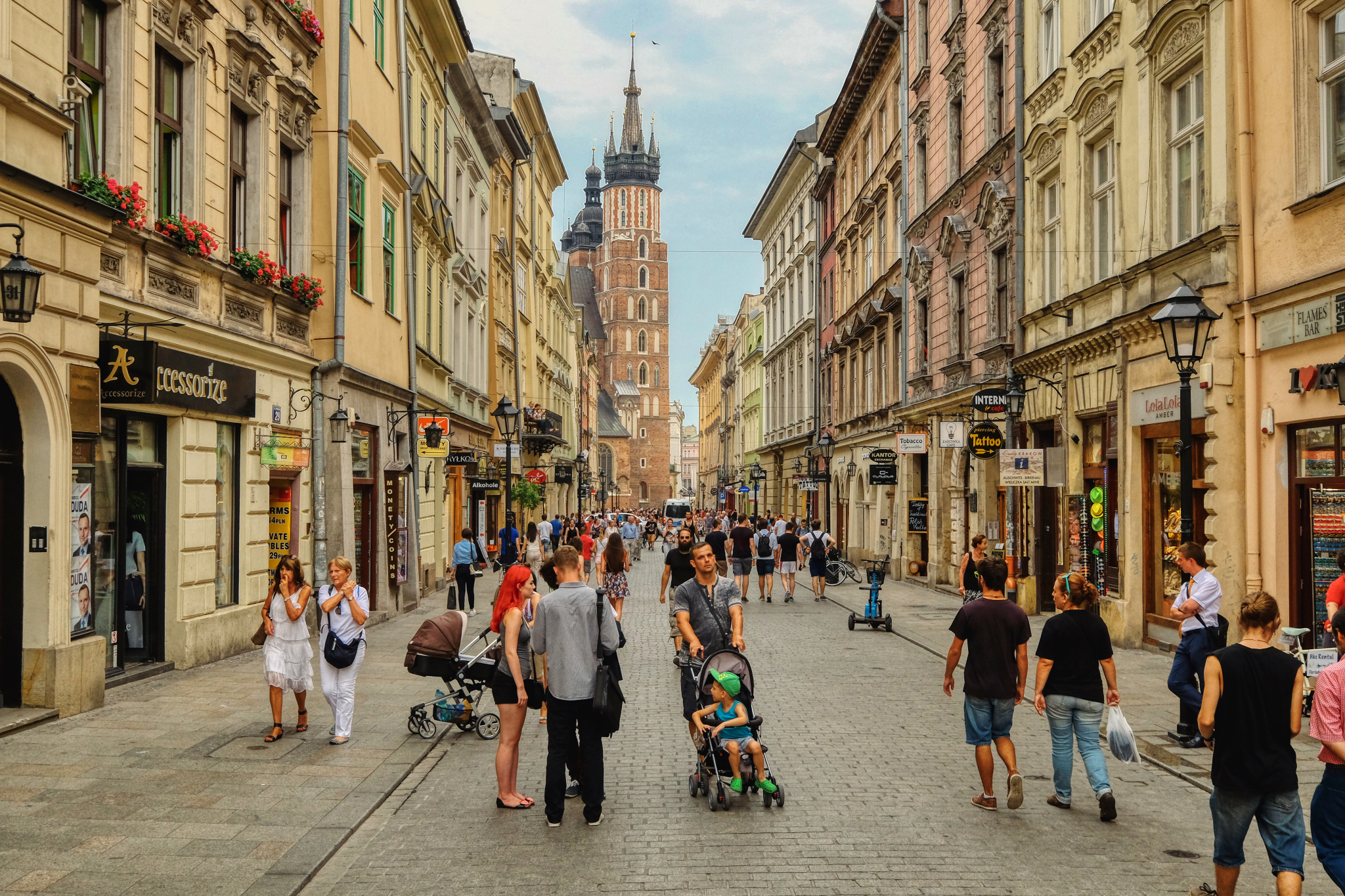 The attractive main shopping area, Floriańsk Street.
The attractive main shopping area, Floriańsk Street.
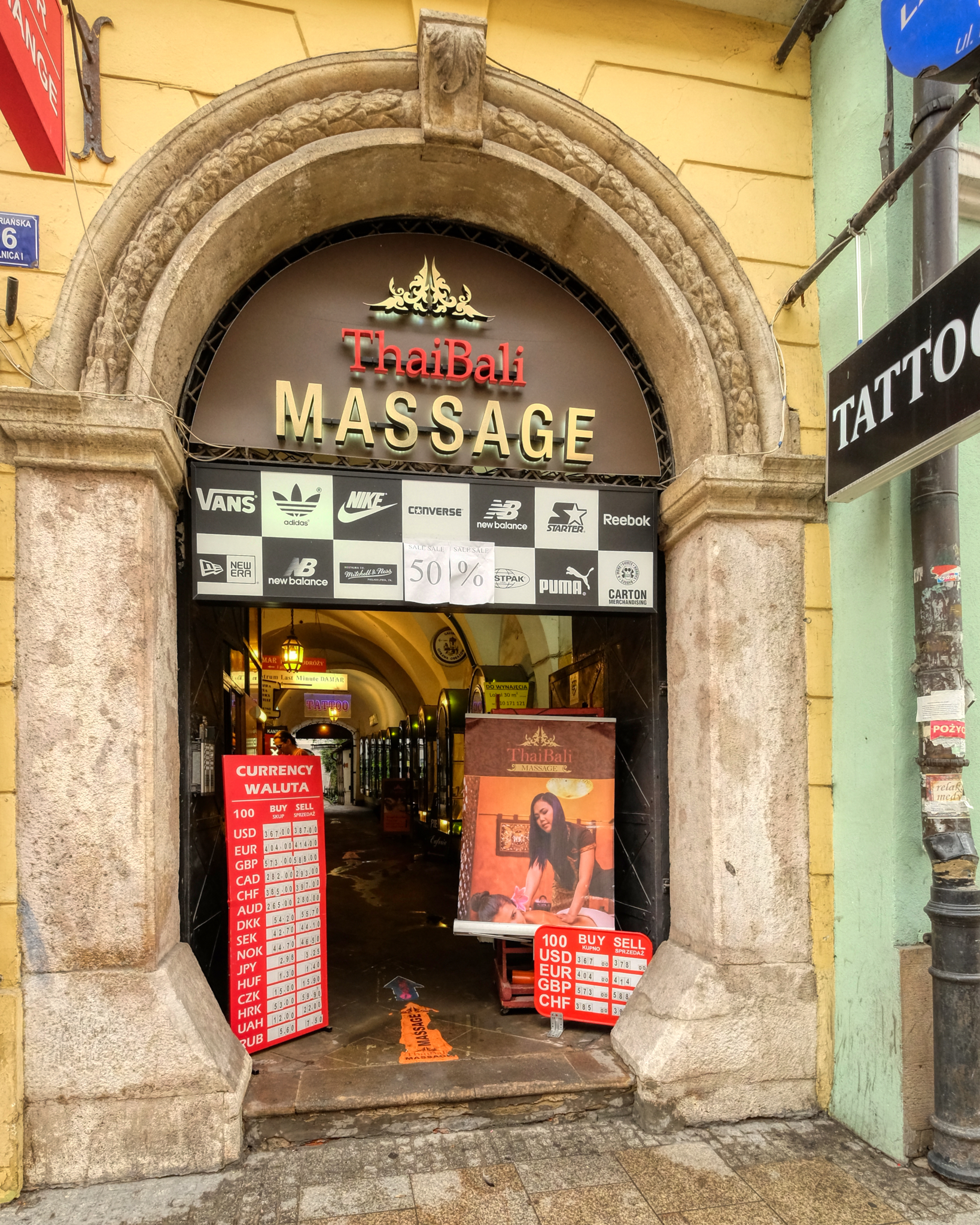 Thai massage! We were tempted!!! Some of the very old buildings held modern shopping malls in their interiors.
Thai massage! We were tempted!!! Some of the very old buildings held modern shopping malls in their interiors.
 Interesting floor in the passage to a high-end shopping galleria.
Interesting floor in the passage to a high-end shopping galleria.
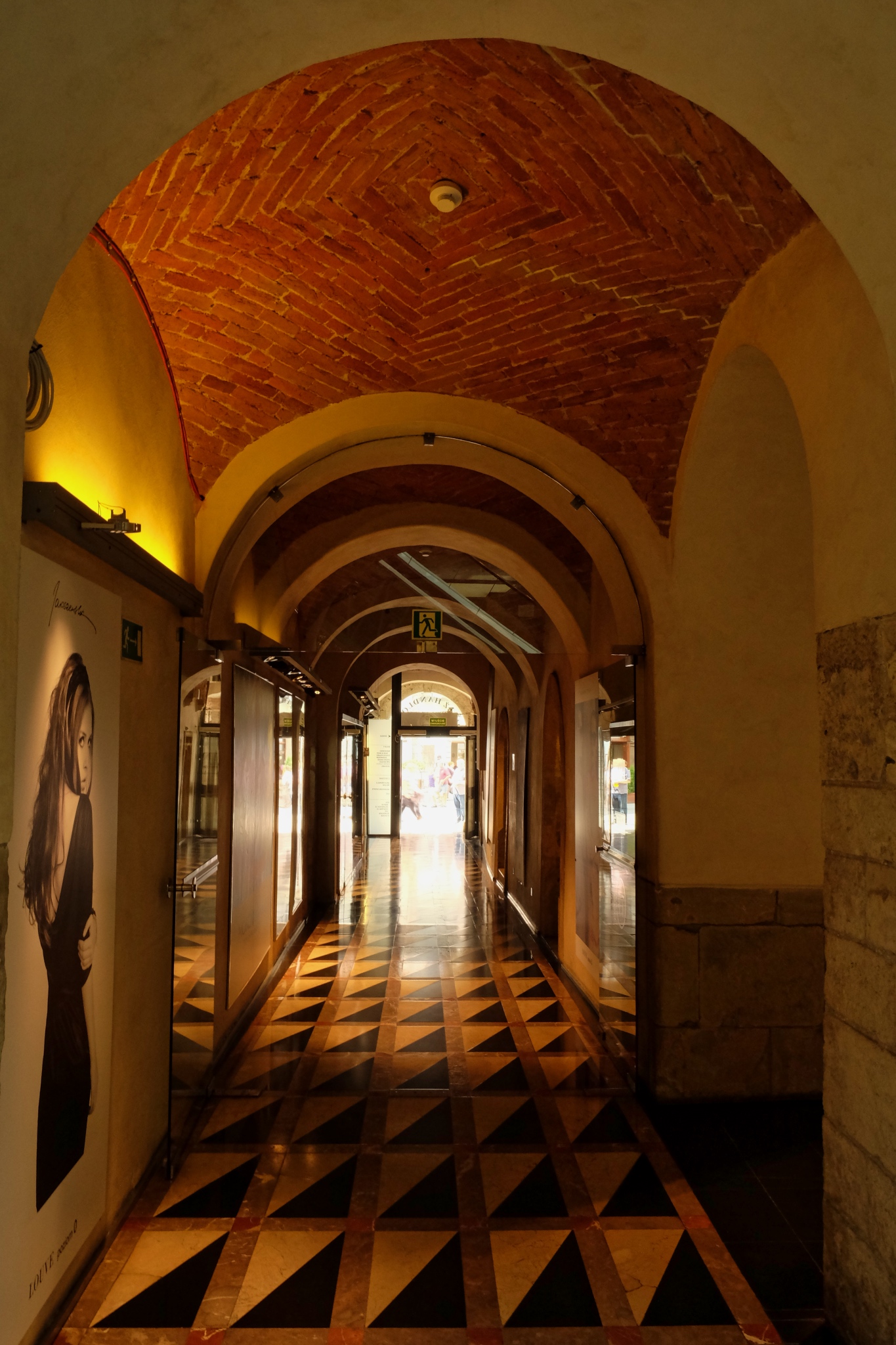 Nice the way the old features have been integrated into the modern shopping area.
Nice the way the old features have been integrated into the modern shopping area.
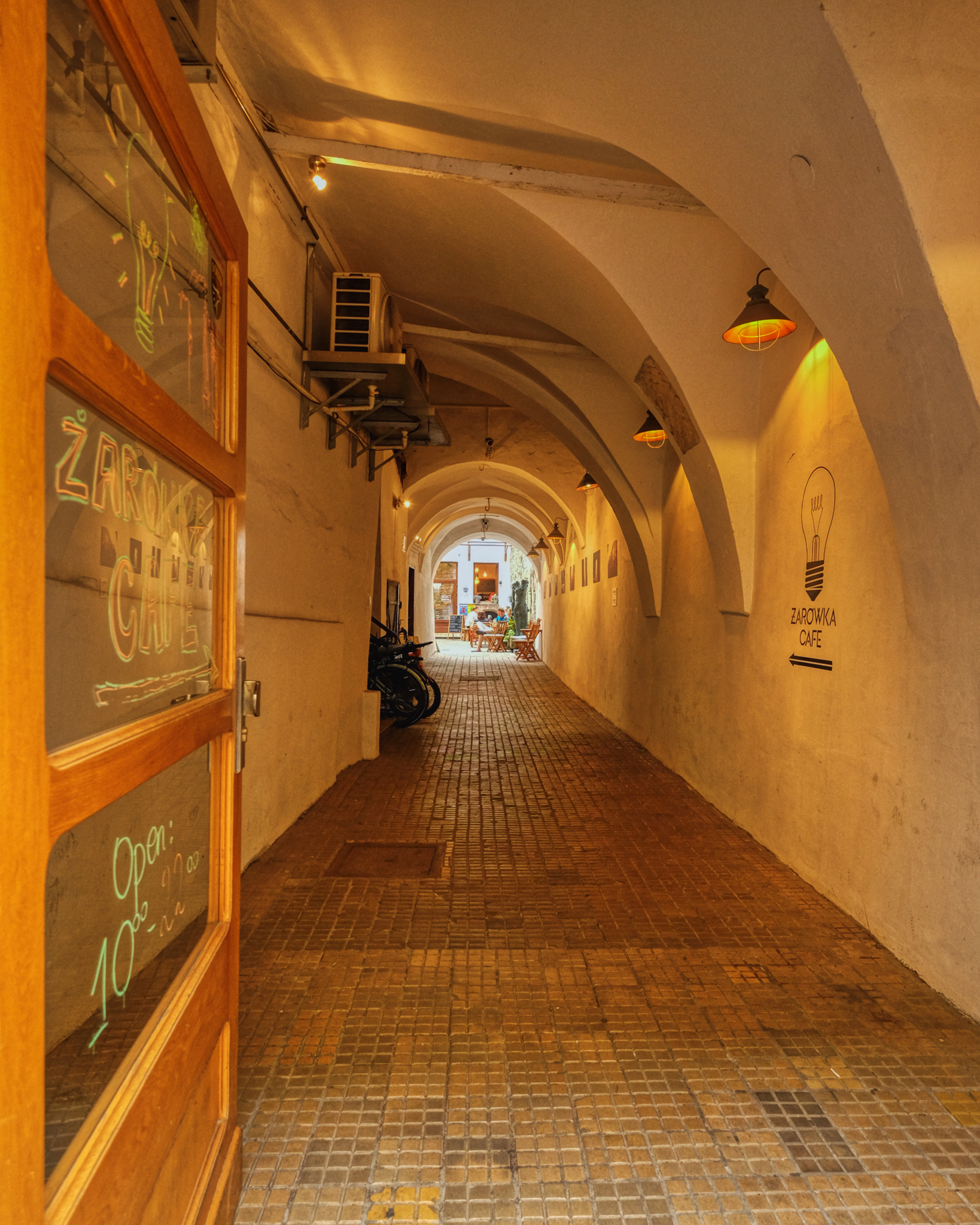 It was so interesting how many little passages lead back into courtyards filled with shops and restaurants. I would love to live in this city!
It was so interesting how many little passages lead back into courtyards filled with shops and restaurants. I would love to live in this city!
 Exploring the little streets, arched passages, and small alleys always lead to big surprises.
Exploring the little streets, arched passages, and small alleys always lead to big surprises.
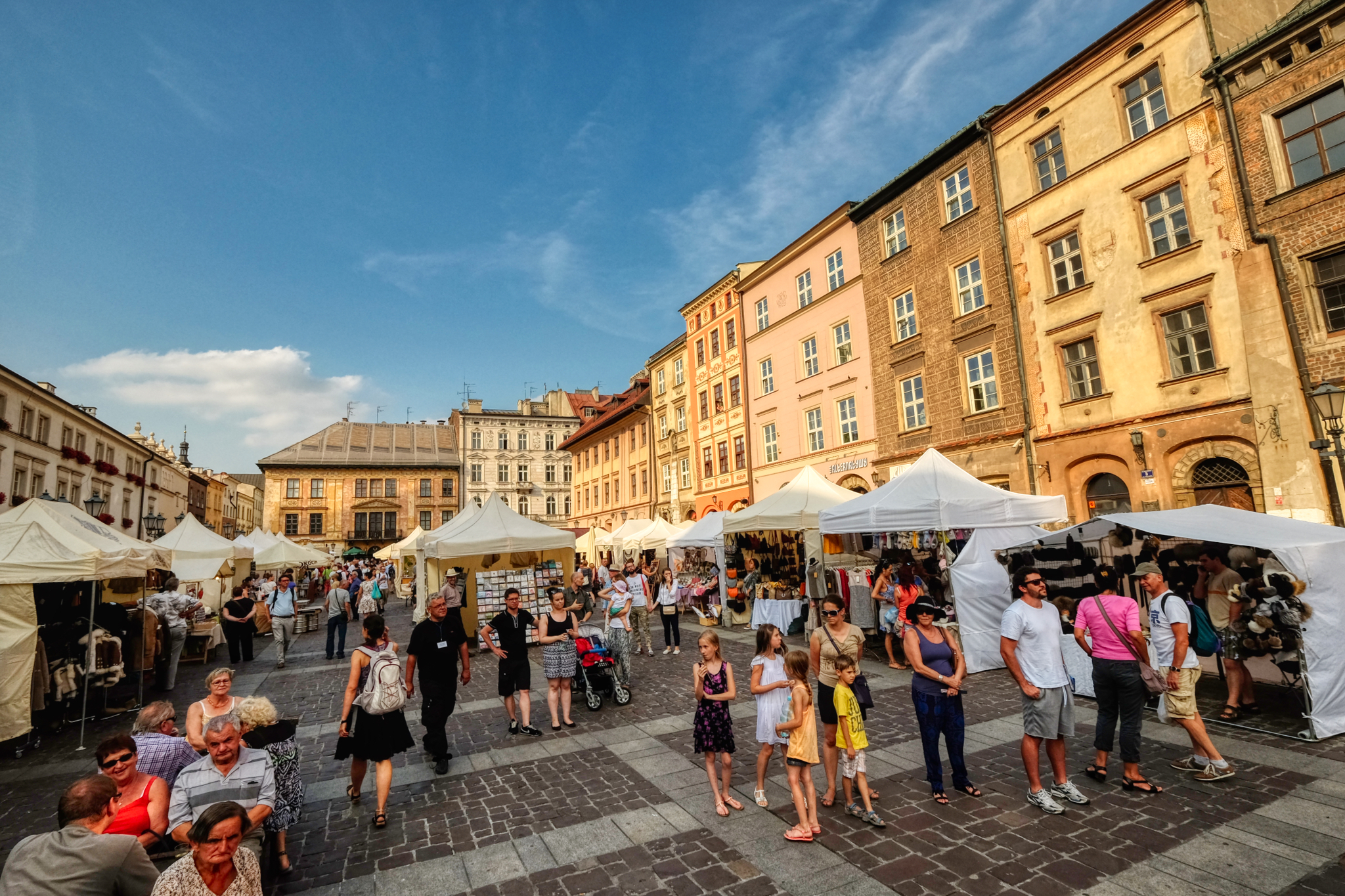 A discovery! A market square! We spent quite a long time here pawing everything!
A discovery! A market square! We spent quite a long time here pawing everything!
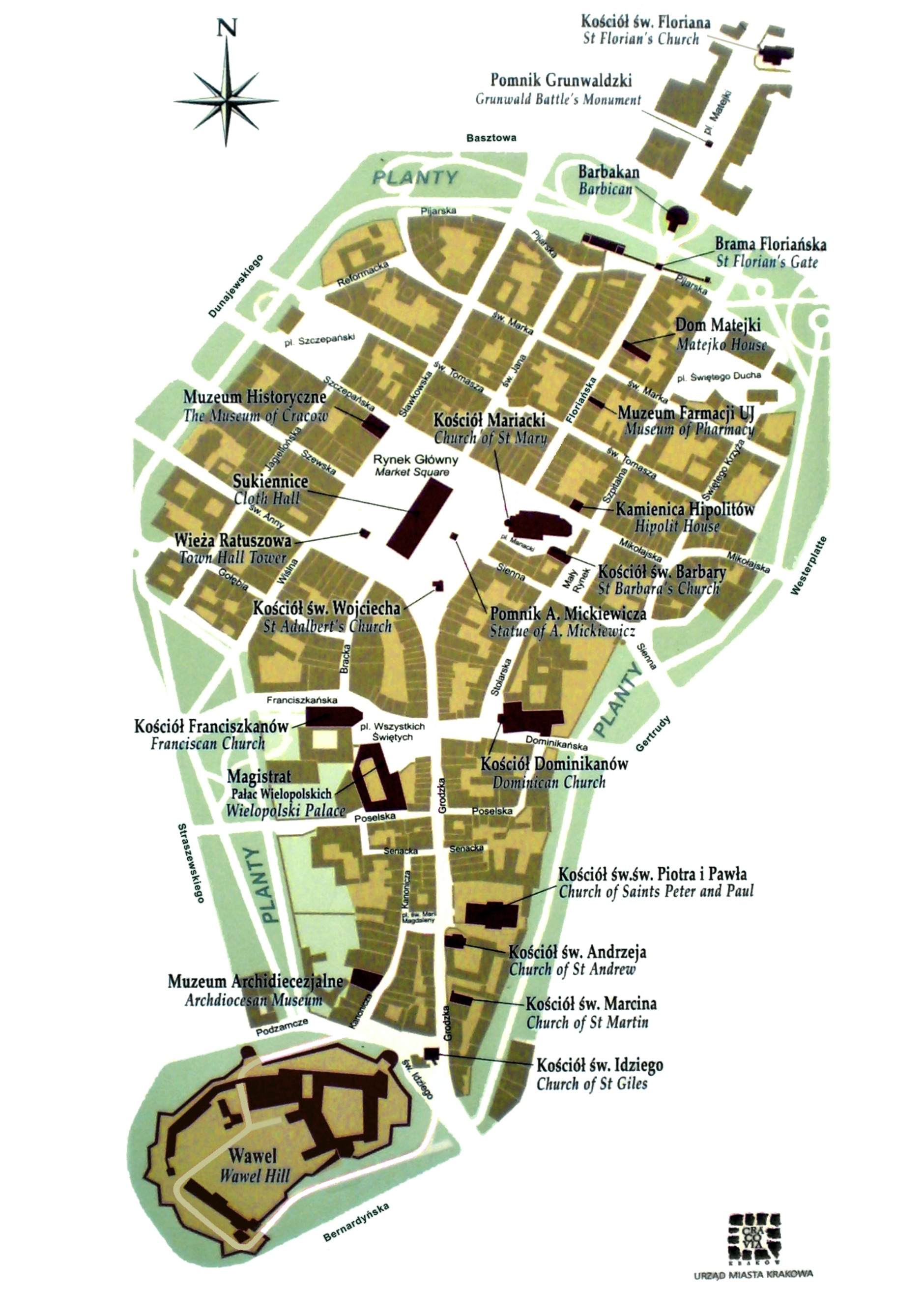 Kraków is an excellent 'walking city' to spend several days wandering around enjoying yourself.
Kraków is an excellent 'walking city' to spend several days wandering around enjoying yourself.
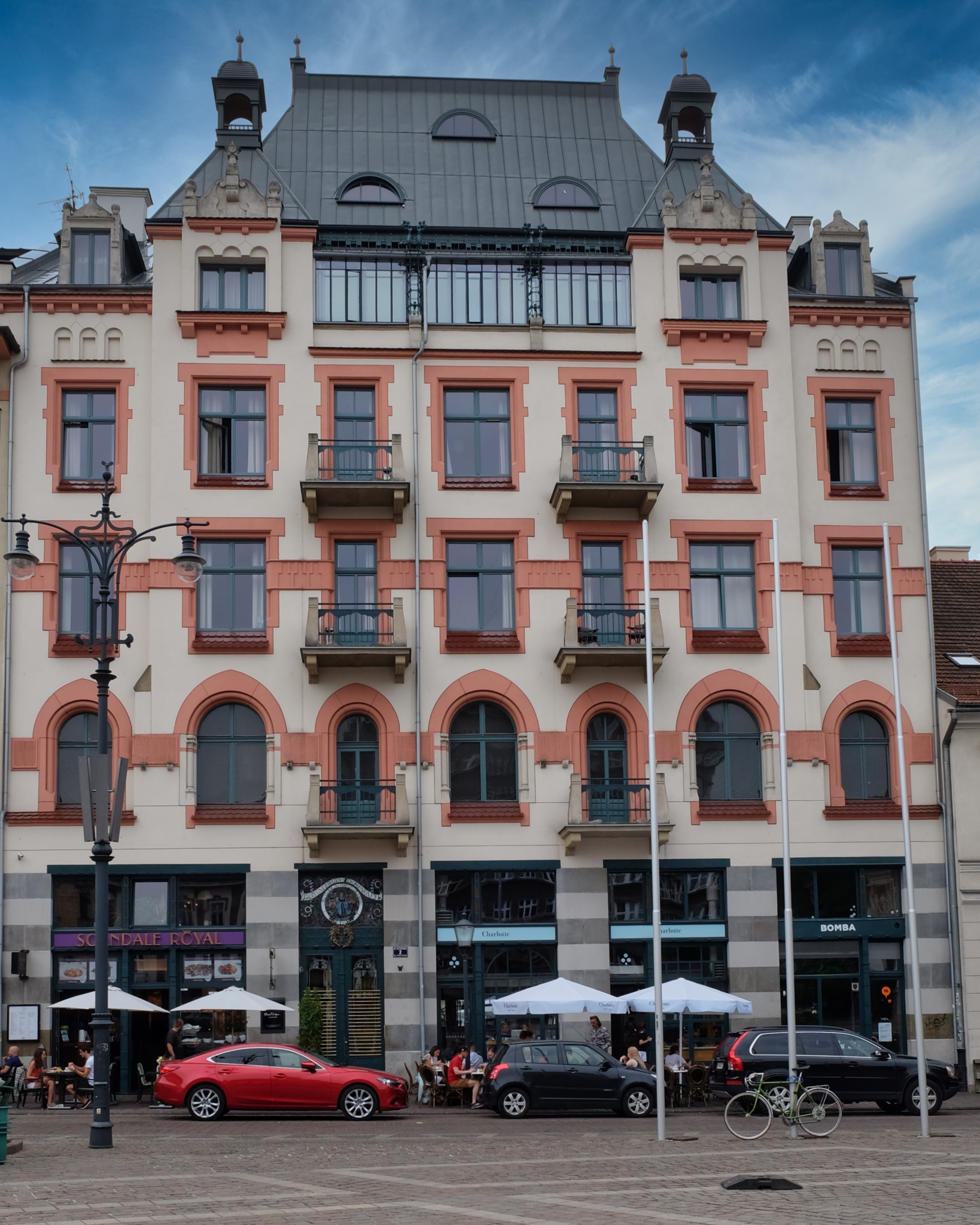 Our hotel was in this old building just off of the main square, and across from an art museum.
Our hotel was in this old building just off of the main square, and across from an art museum.
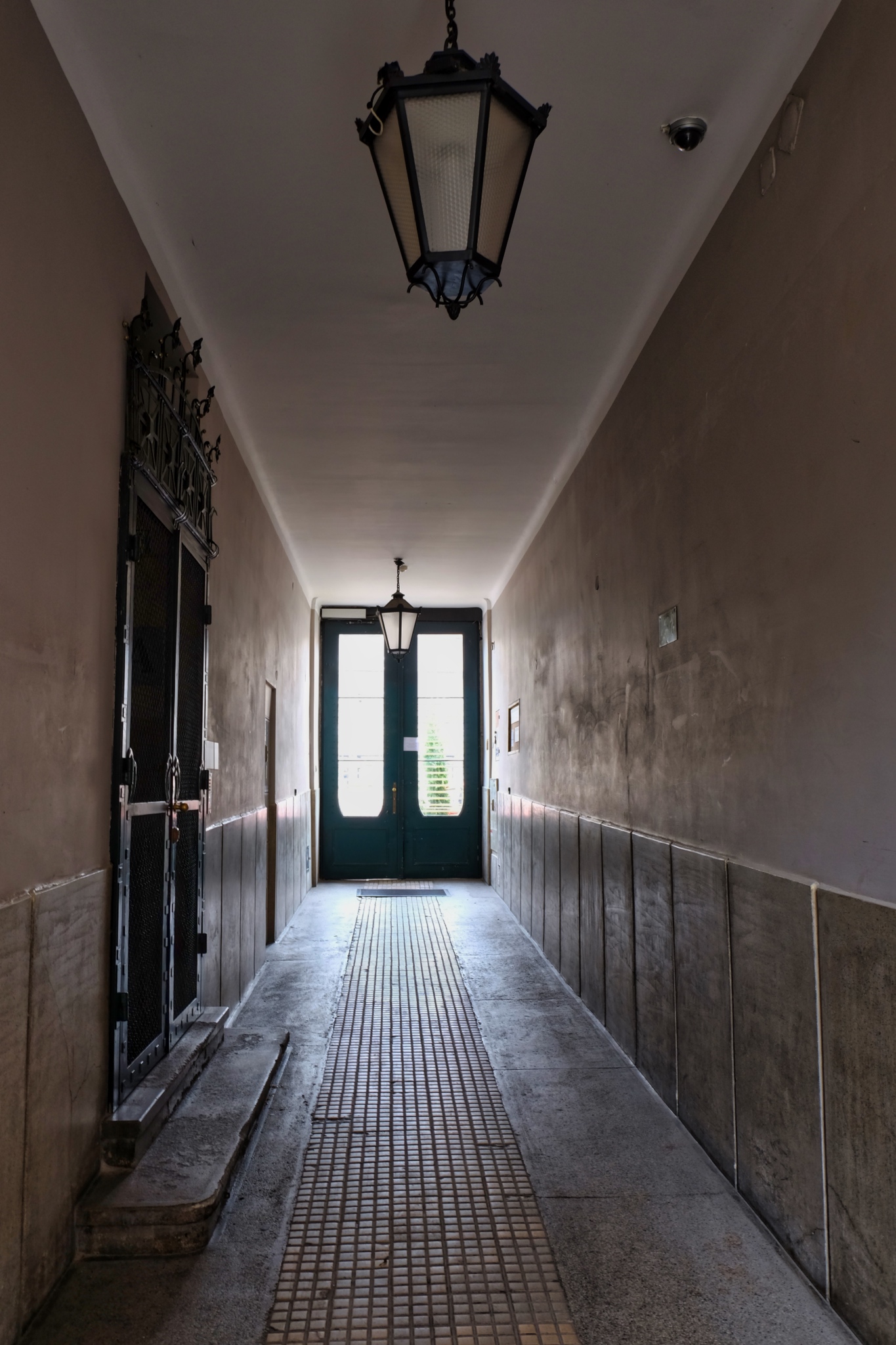 The interior can only be described as "Soviet Era Minimalism." I loved it.
The interior can only be described as "Soviet Era Minimalism." I loved it.
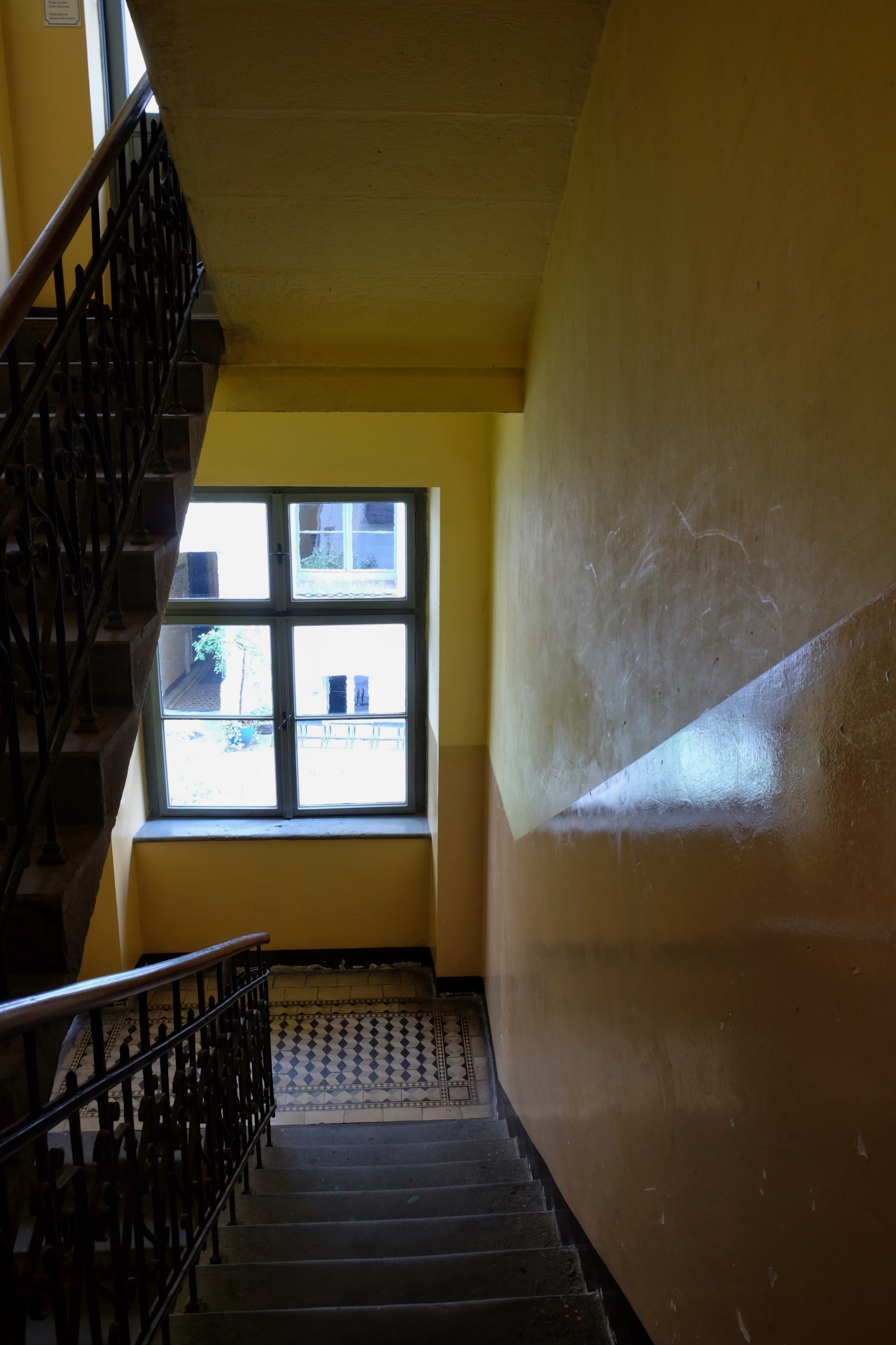 No expense was spared to create the perfect Soviet-workers-on-vacation guest quarters effect.
No expense was spared to create the perfect Soviet-workers-on-vacation guest quarters effect.
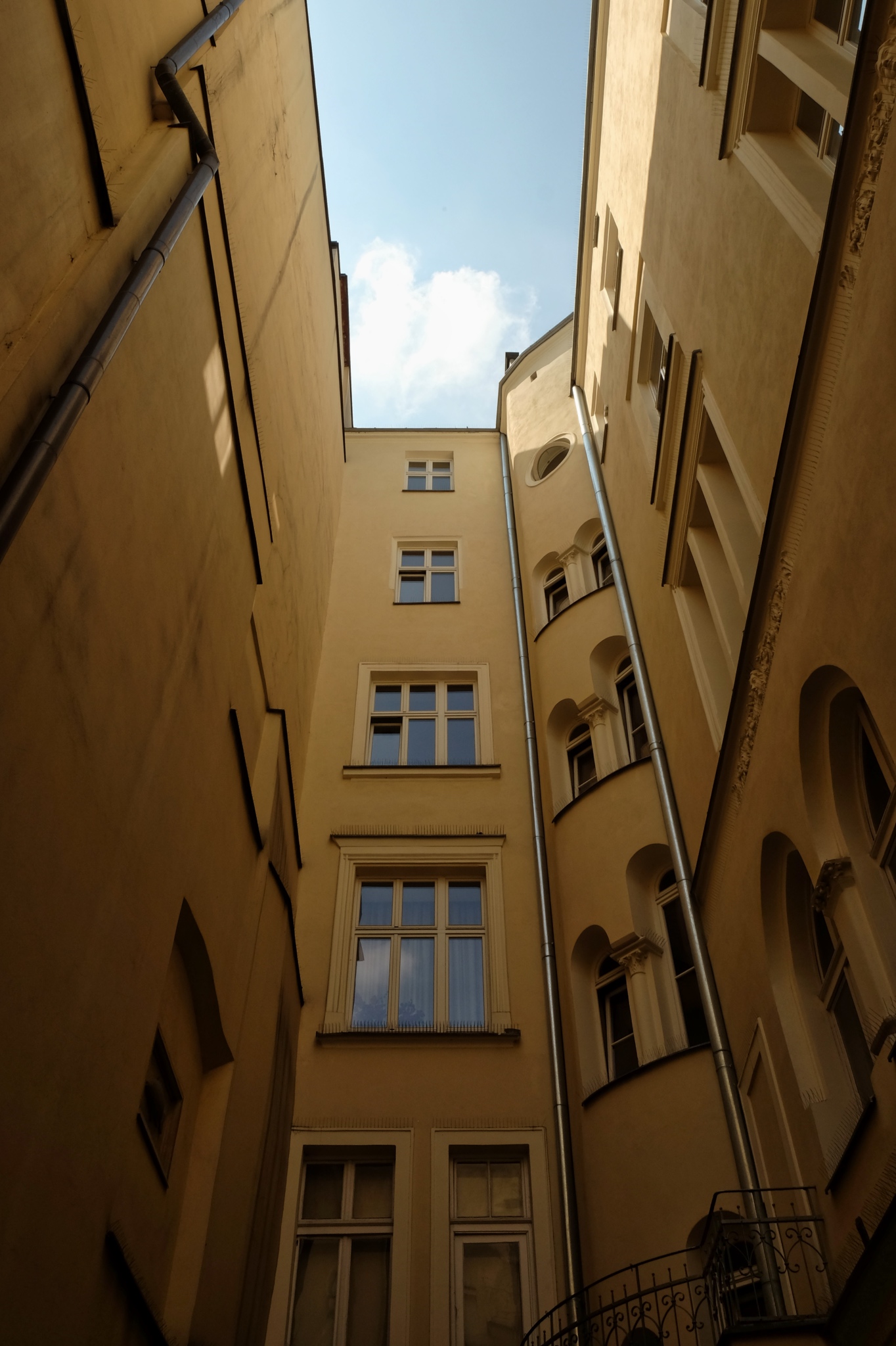 After entering the hotel from the street, you arrived in this austere courtyard to check in. Yes, I was correct, the manager said the old hotel had indeed been remodeled during the Soviet era as a workers lodge. Our room had a panoramic view onto this courtyard. We loved it: it was one block off the main city square and it was cheap!
After entering the hotel from the street, you arrived in this austere courtyard to check in. Yes, I was correct, the manager said the old hotel had indeed been remodeled during the Soviet era as a workers lodge. Our room had a panoramic view onto this courtyard. We loved it: it was one block off the main city square and it was cheap!
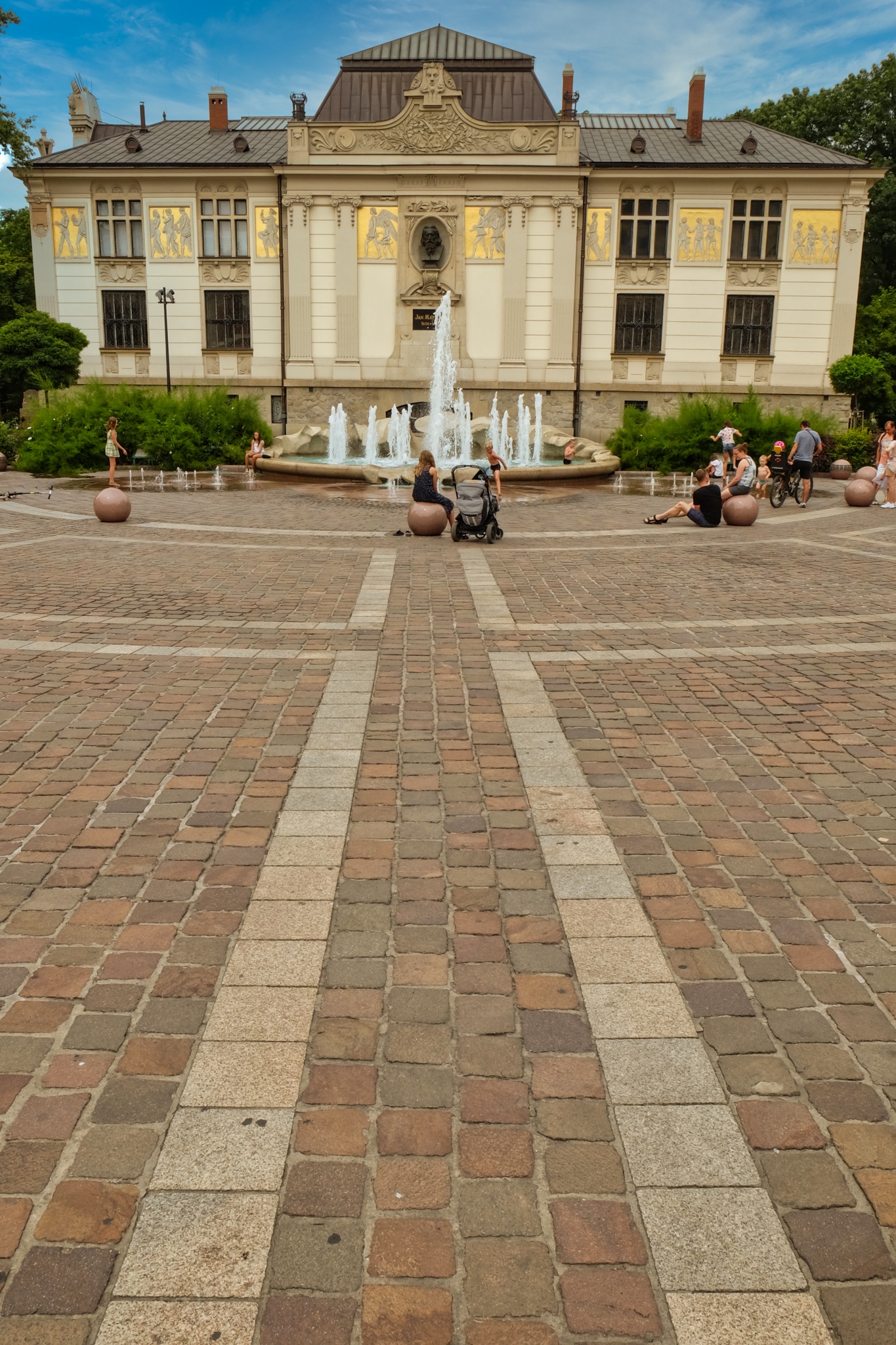 The Palace of Art (circa. 1901) was just outside our hotel.
The Palace of Art (circa. 1901) was just outside our hotel.
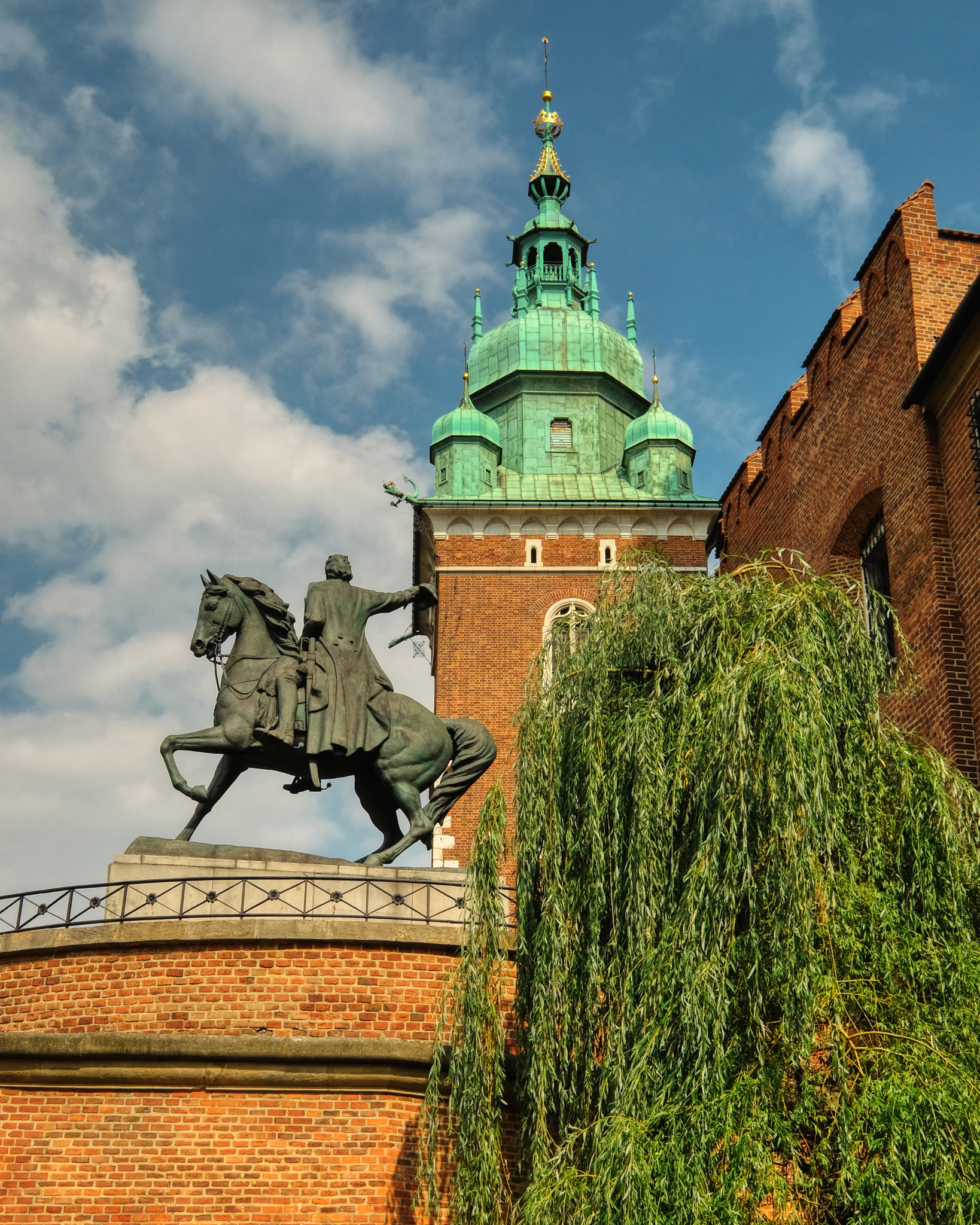 We spent three days just wandering around this marvelous city.
We spent three days just wandering around this marvelous city.
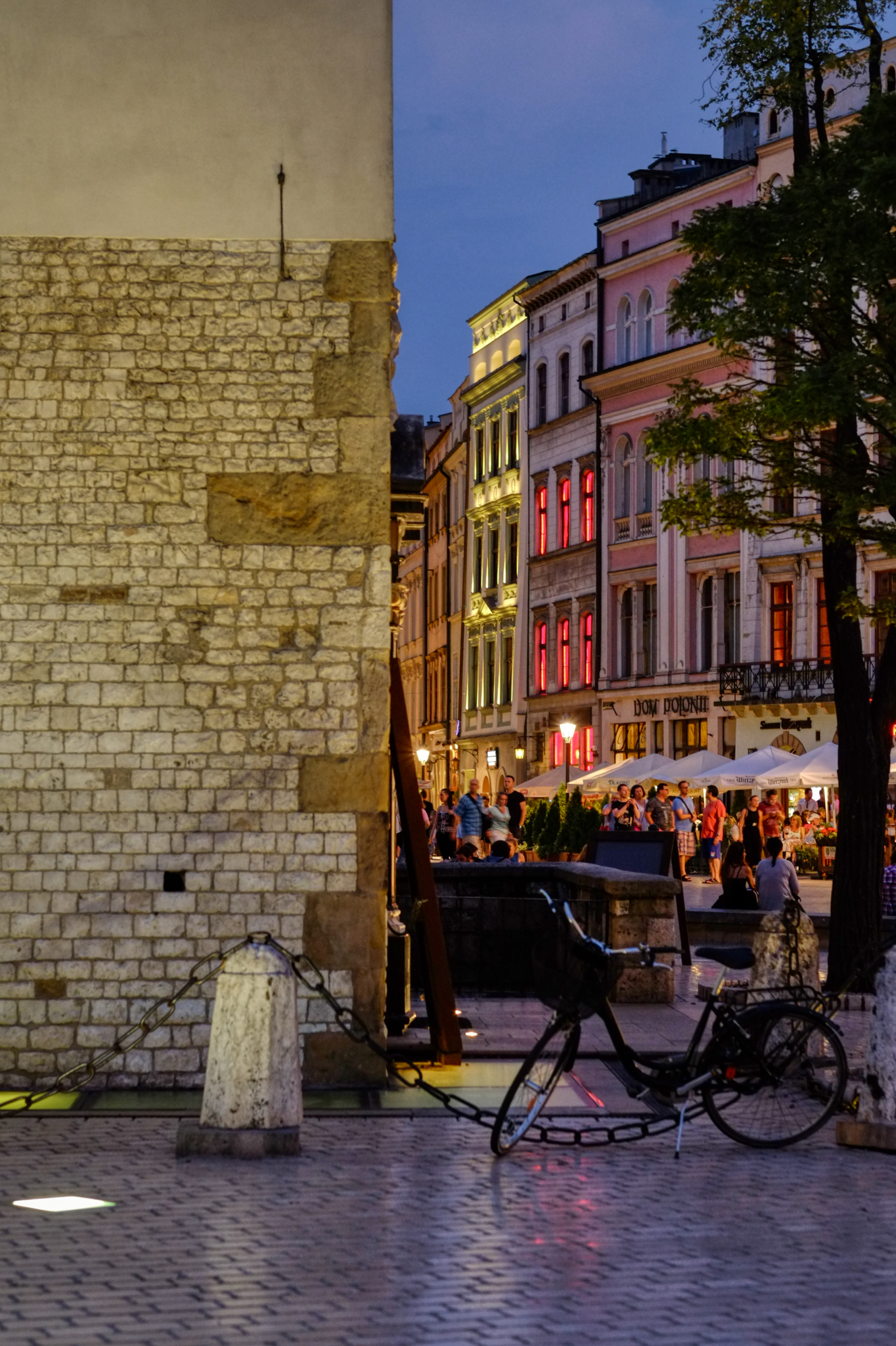 We loved Kraków by day . . . but at night it became a colorful dreamscape!
We loved Kraków by day . . . but at night it became a colorful dreamscape!
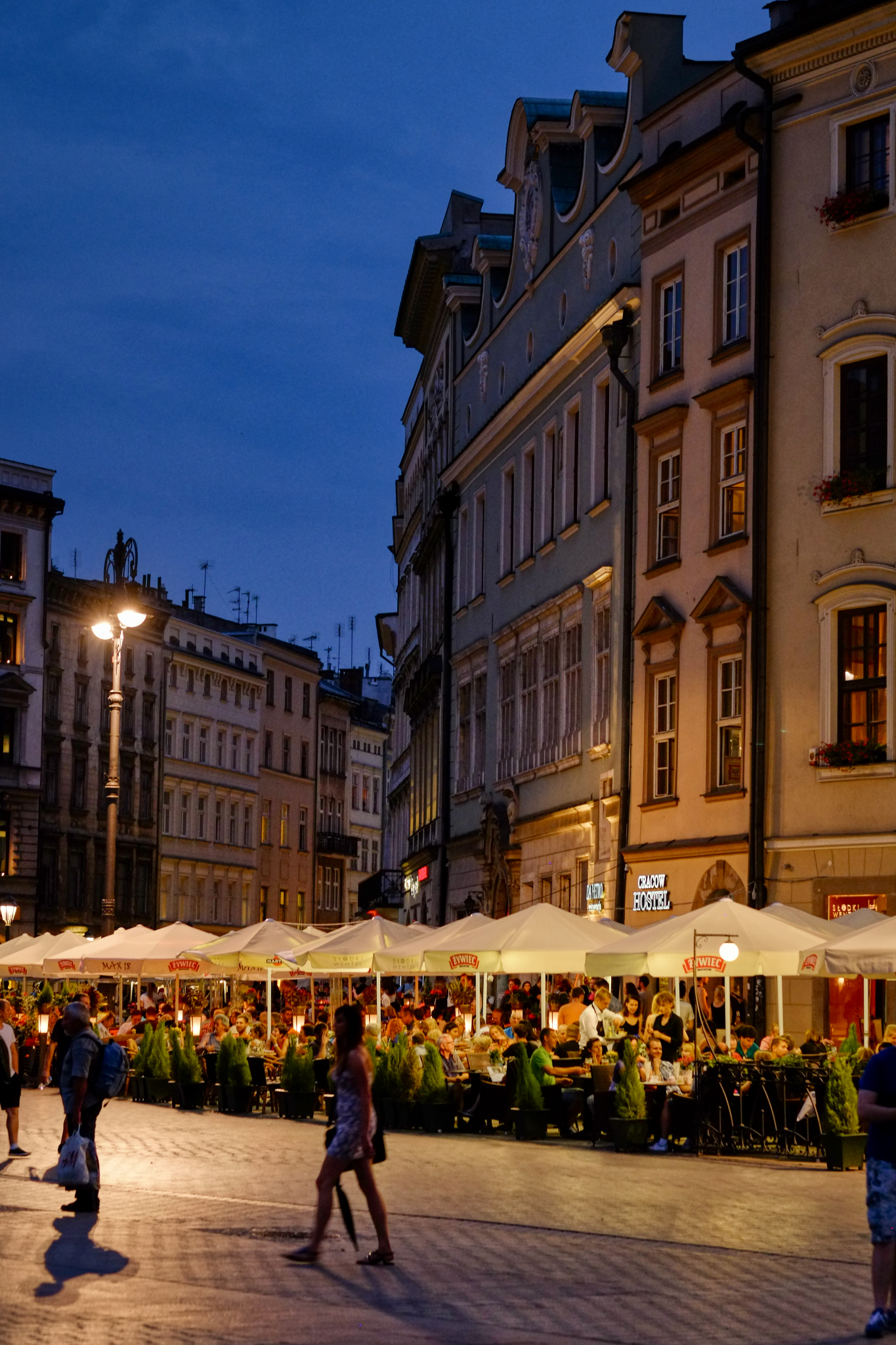 The crowds came out on a fine summer evening for a meal and a drink.
The crowds came out on a fine summer evening for a meal and a drink.
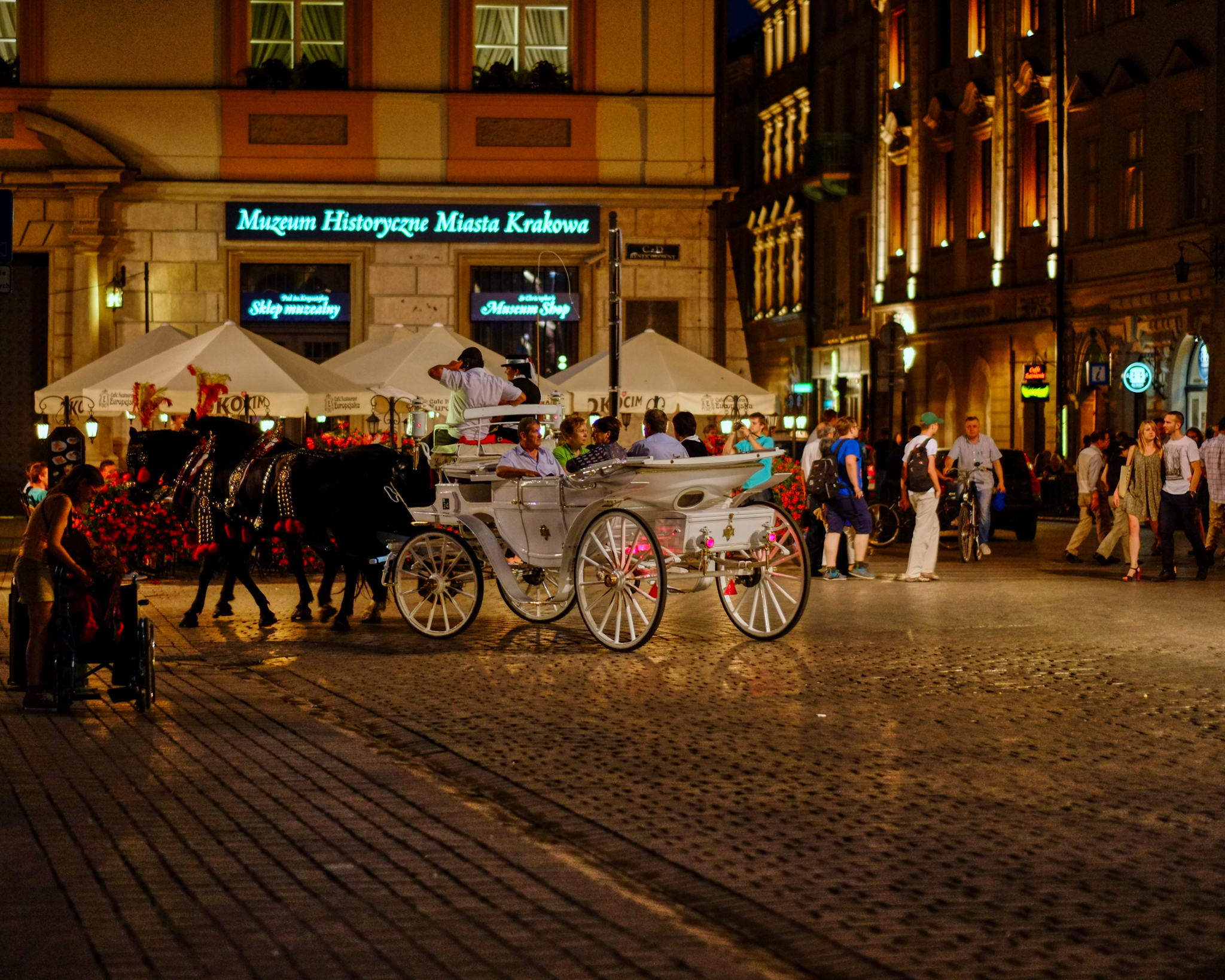 All day and evening, the tourist carriage rides never stopped. I assumed they changed the horses periodically, though I never saw it happen.
All day and evening, the tourist carriage rides never stopped. I assumed they changed the horses periodically, though I never saw it happen.
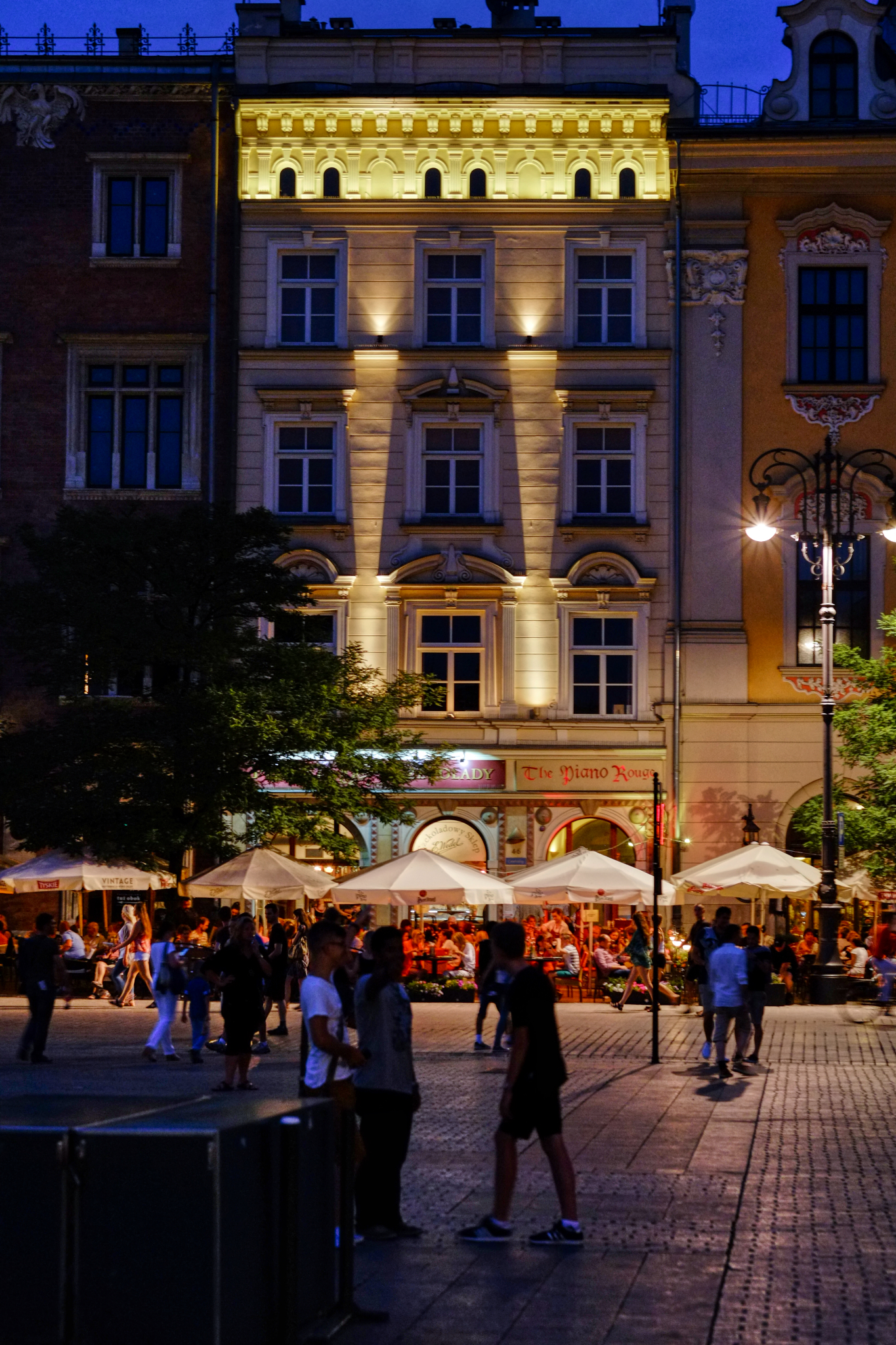 The pleasant evenings brought everyone out to the cafés on the central square.
The pleasant evenings brought everyone out to the cafés on the central square.
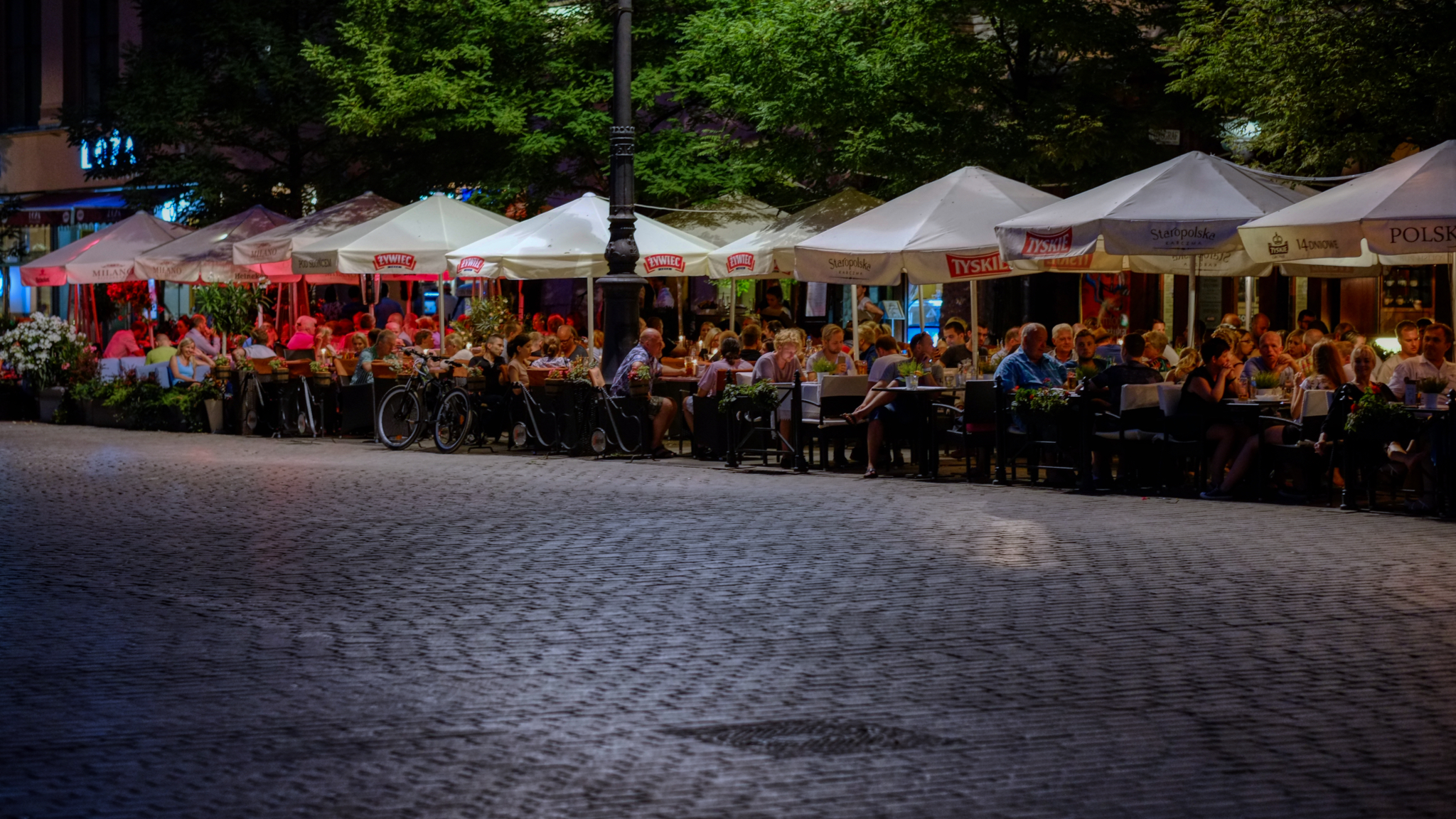 Everyone seemed to be enjoying themselves eating, drinking, and chatting.
Everyone seemed to be enjoying themselves eating, drinking, and chatting.
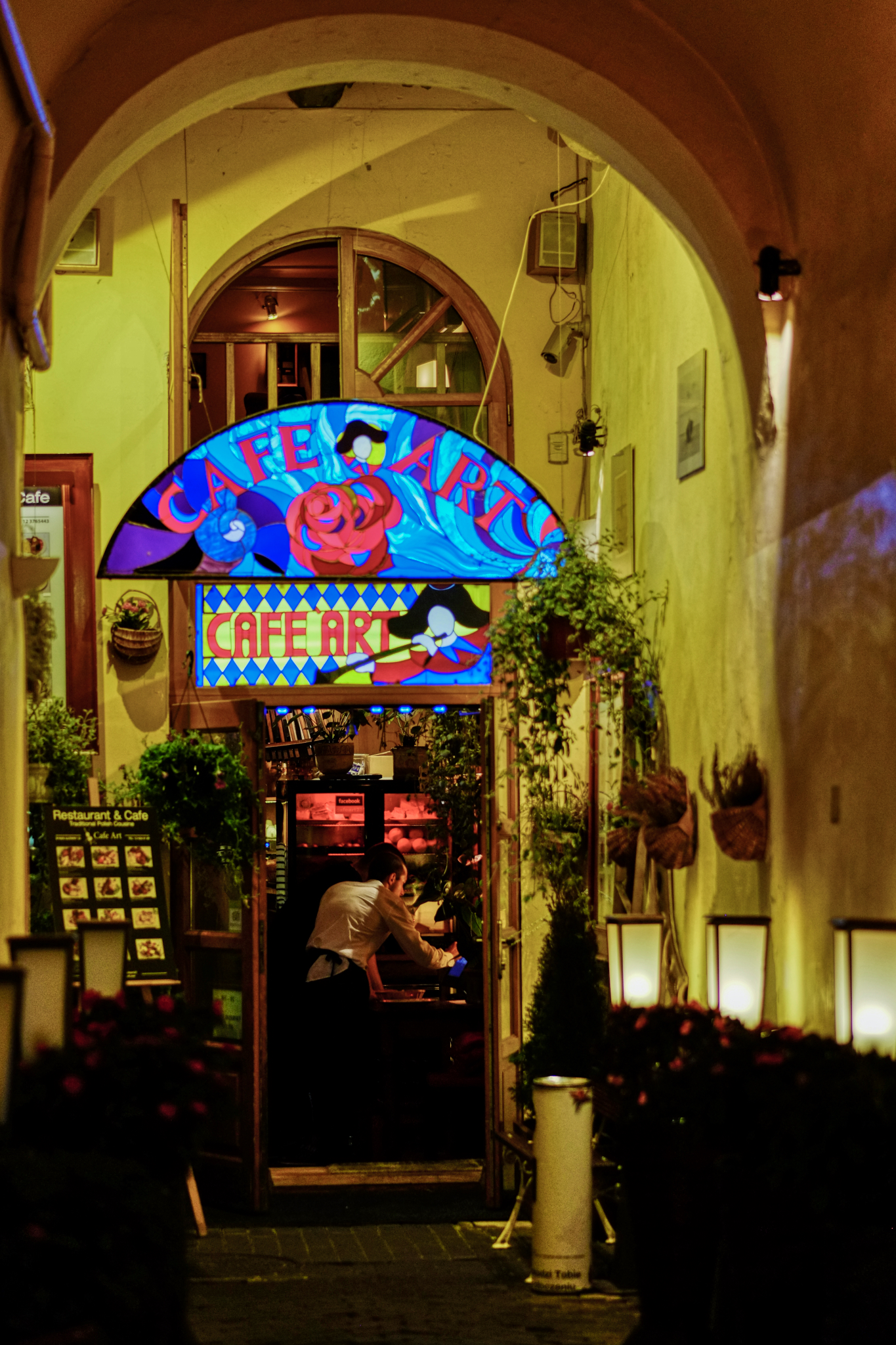 This one looks inviting . . . lets go in.
This one looks inviting . . . lets go in.
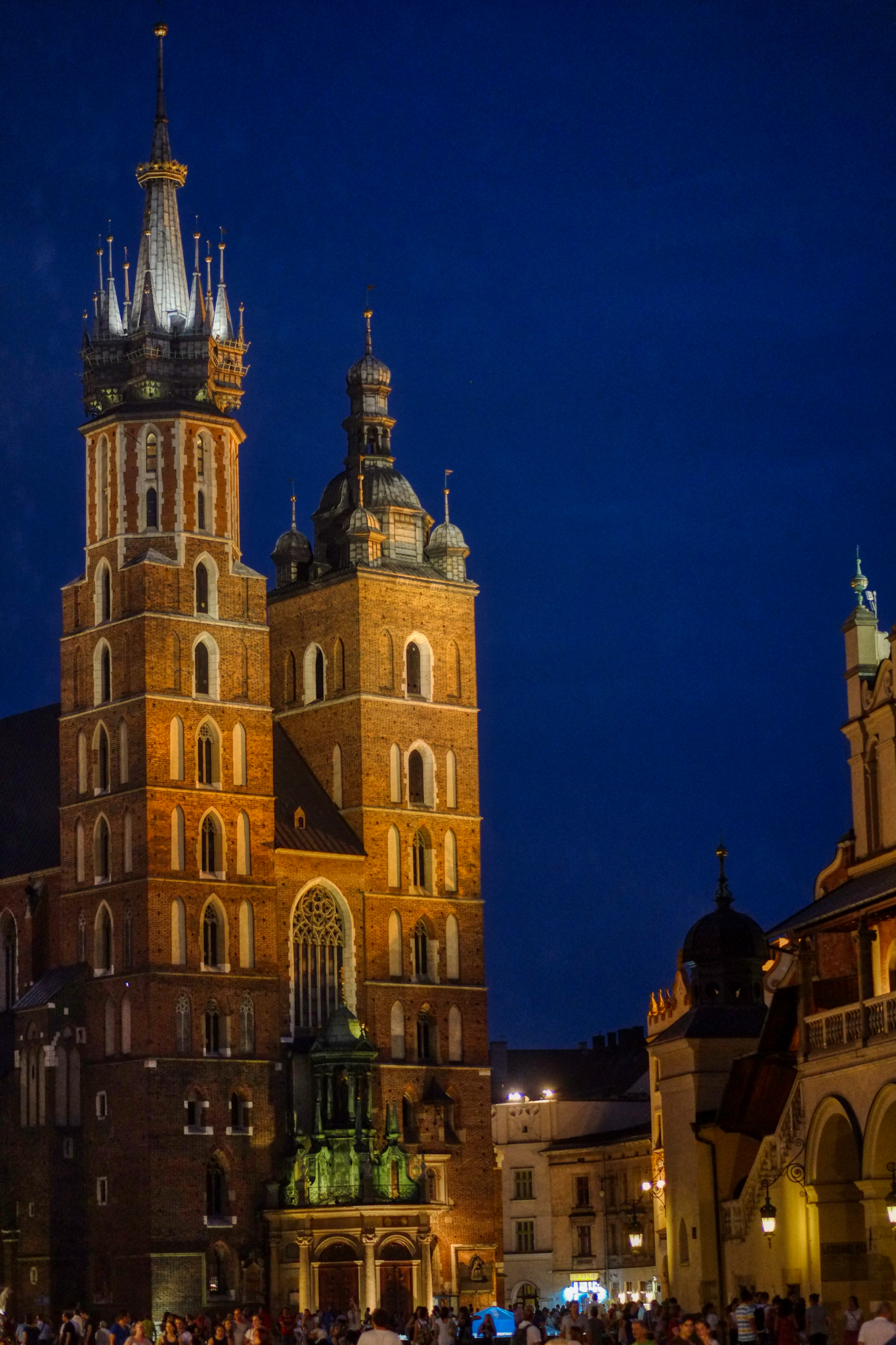 St. Mary's Basilica by night. We loved our short stay in Kraków and would be more than happy to go back again.
St. Mary's Basilica by night. We loved our short stay in Kraków and would be more than happy to go back again.
 Dr. Jeff Harper
Dr. Jeff Harper
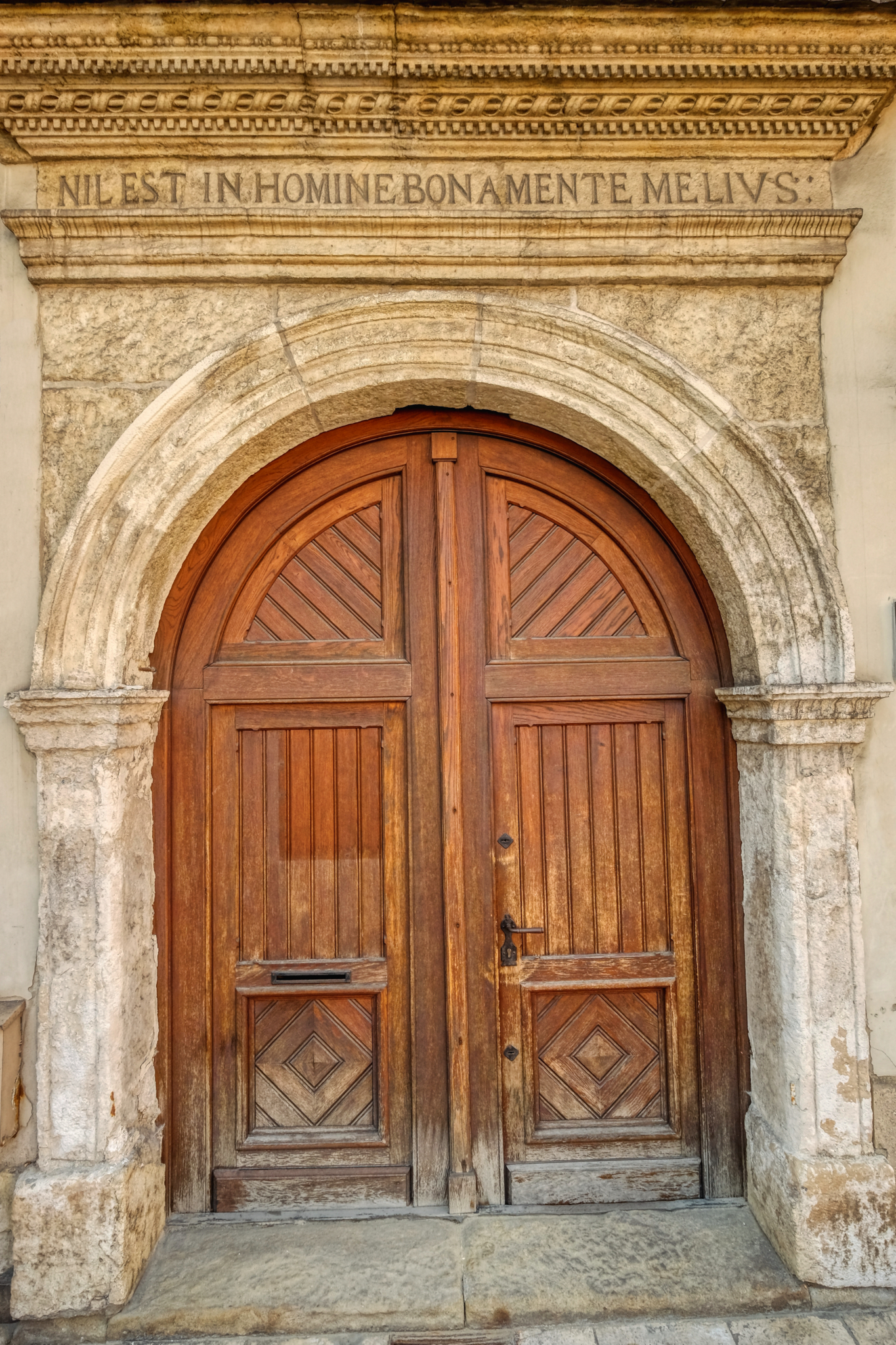 One of my favorite photographic subjects are very old doors, windows, and walls. I was in heaven in Kraków!
One of my favorite photographic subjects are very old doors, windows, and walls. I was in heaven in Kraków!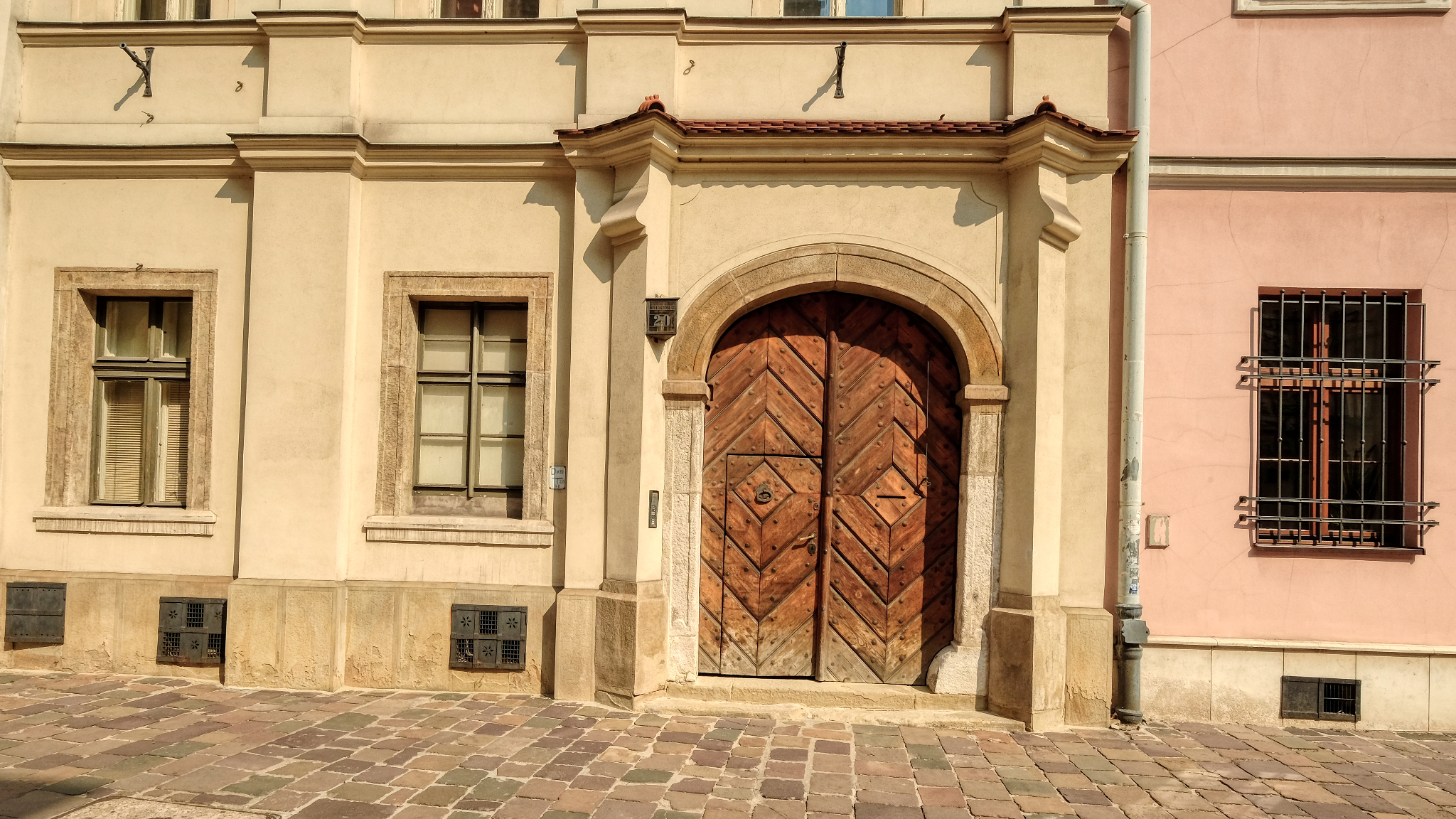 Everywhere, on every street, there was another amazing door . . . or window . . . or wall. They all speak to me somehow. They are all telling me their story.
Everywhere, on every street, there was another amazing door . . . or window . . . or wall. They all speak to me somehow. They are all telling me their story.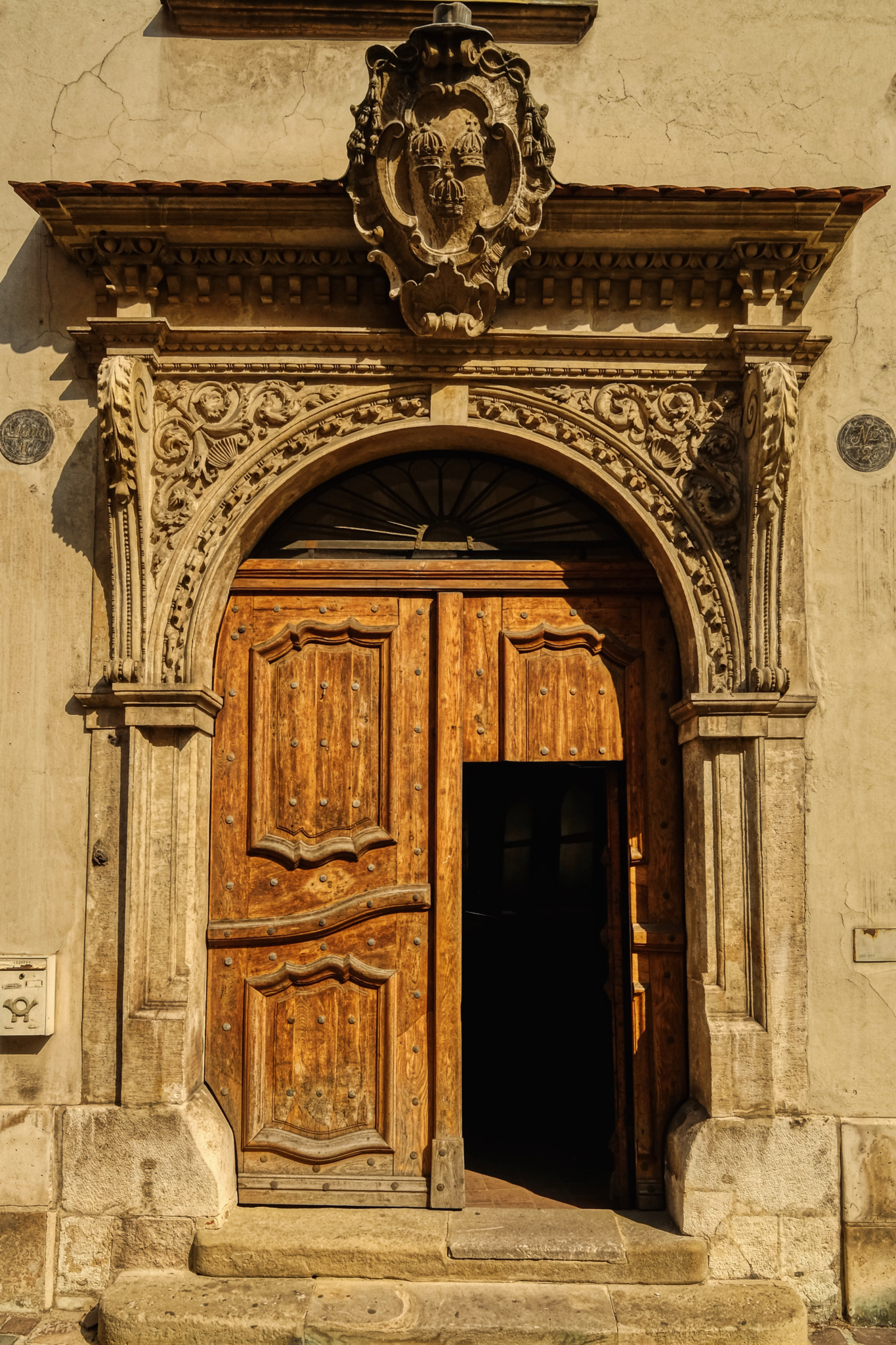 The door is the mouth on the face of a house or building. As such, it speaks, it expresses something about the character of what is inside.
The door is the mouth on the face of a house or building. As such, it speaks, it expresses something about the character of what is inside.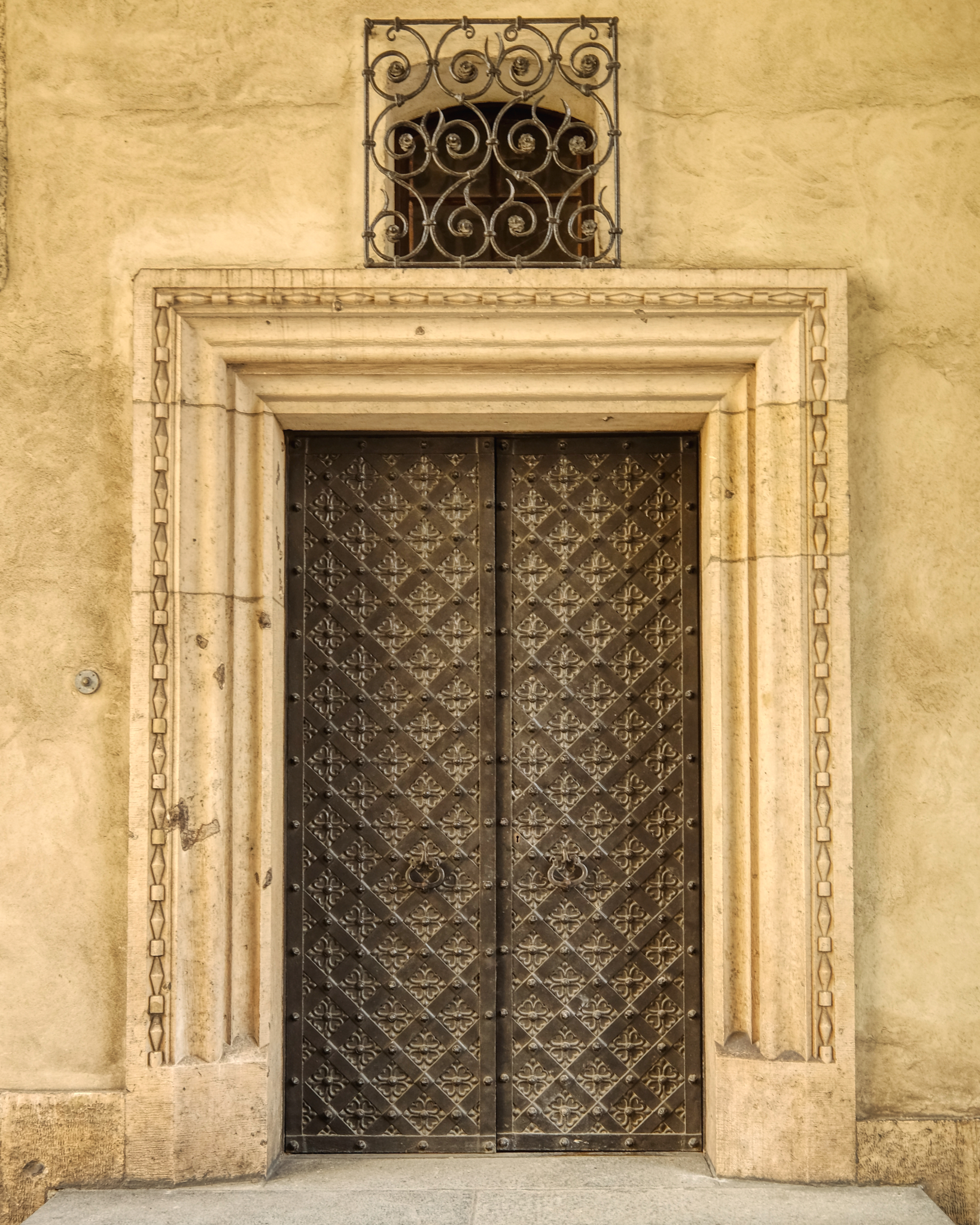 An interior door of Wawel Castle.
An interior door of Wawel Castle.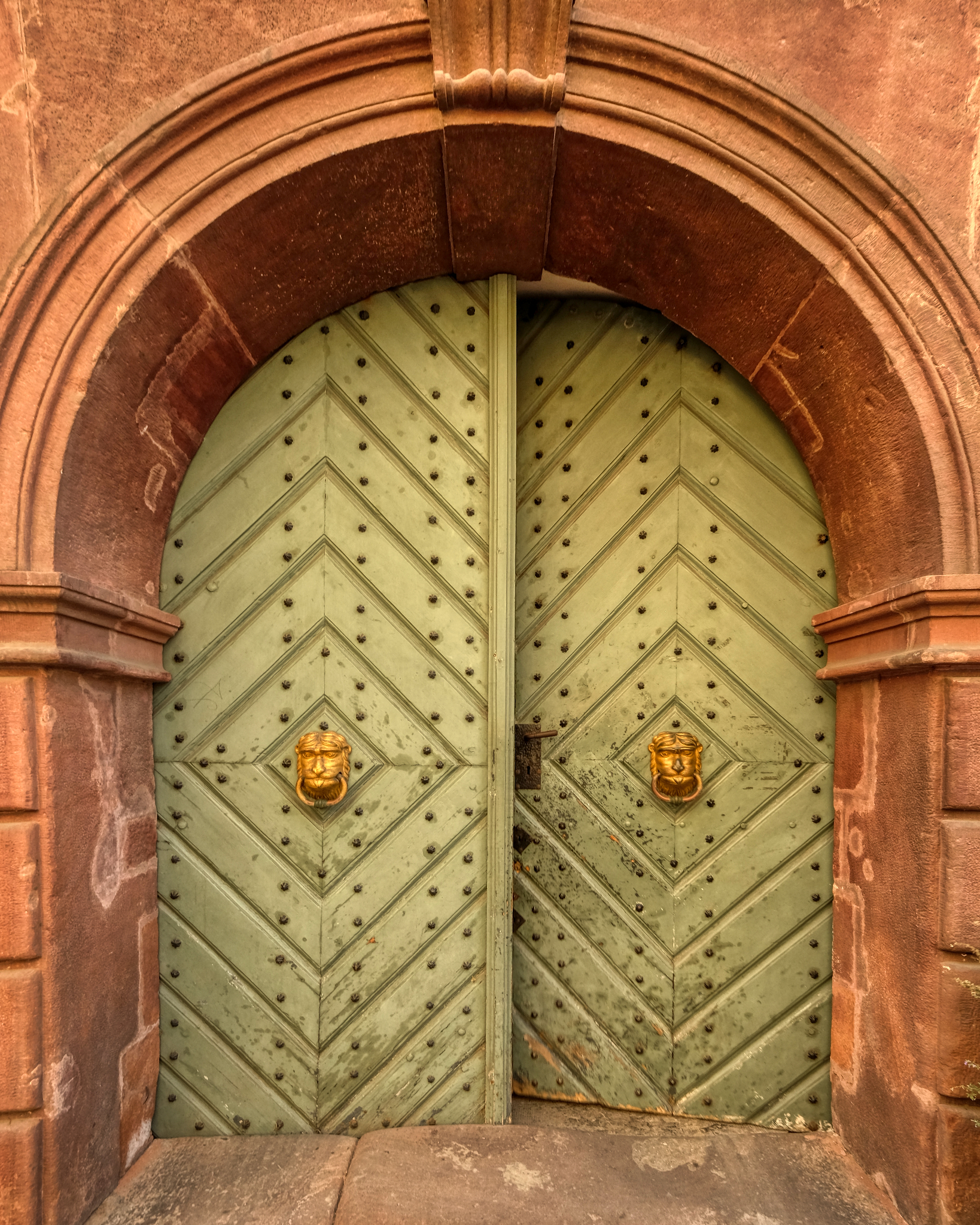 Doors are often restored, but it seems almost never replaced in the life of a building.
Doors are often restored, but it seems almost never replaced in the life of a building.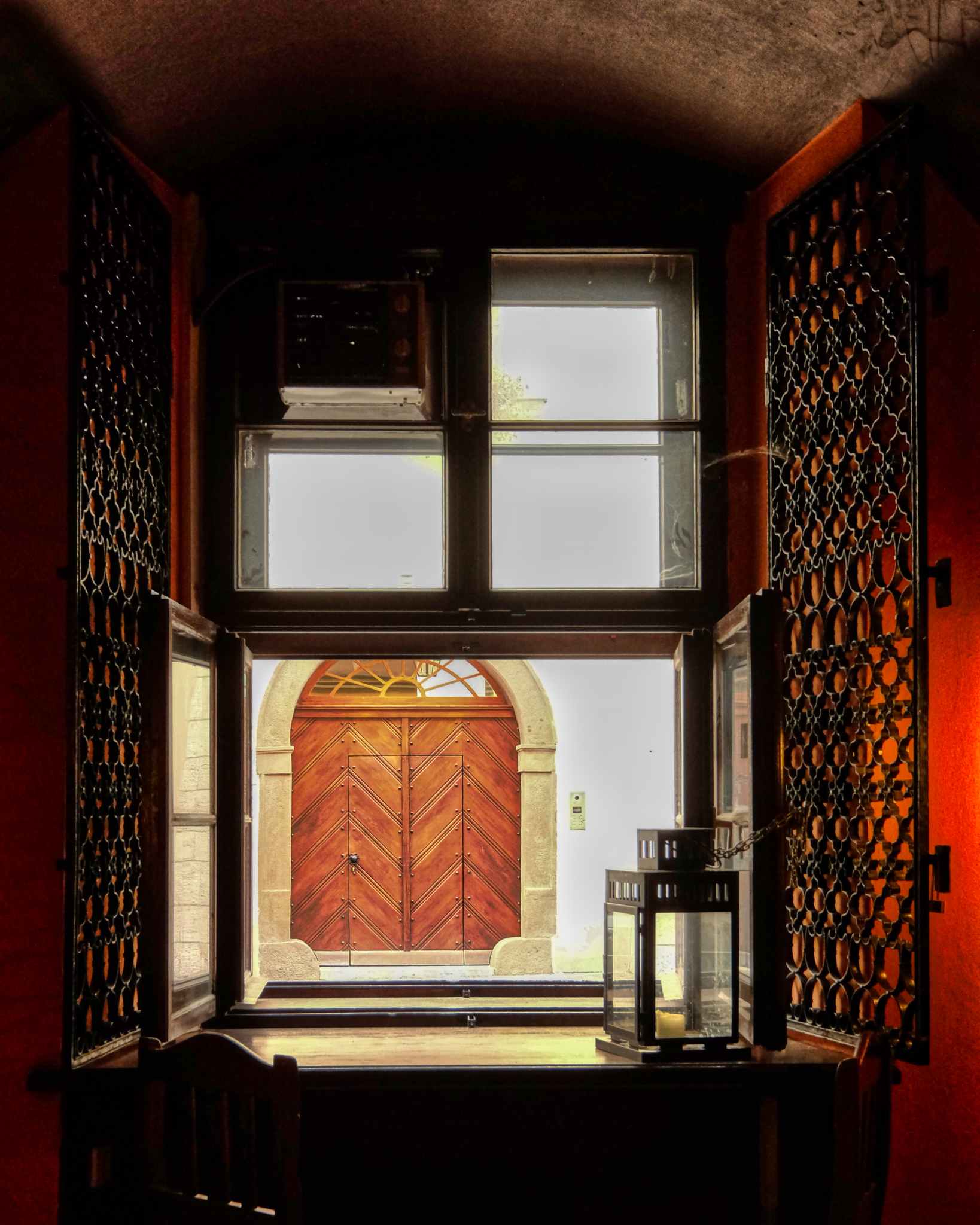 Looking out the window of a restaurant I saw this door. Stunning.
Looking out the window of a restaurant I saw this door. Stunning.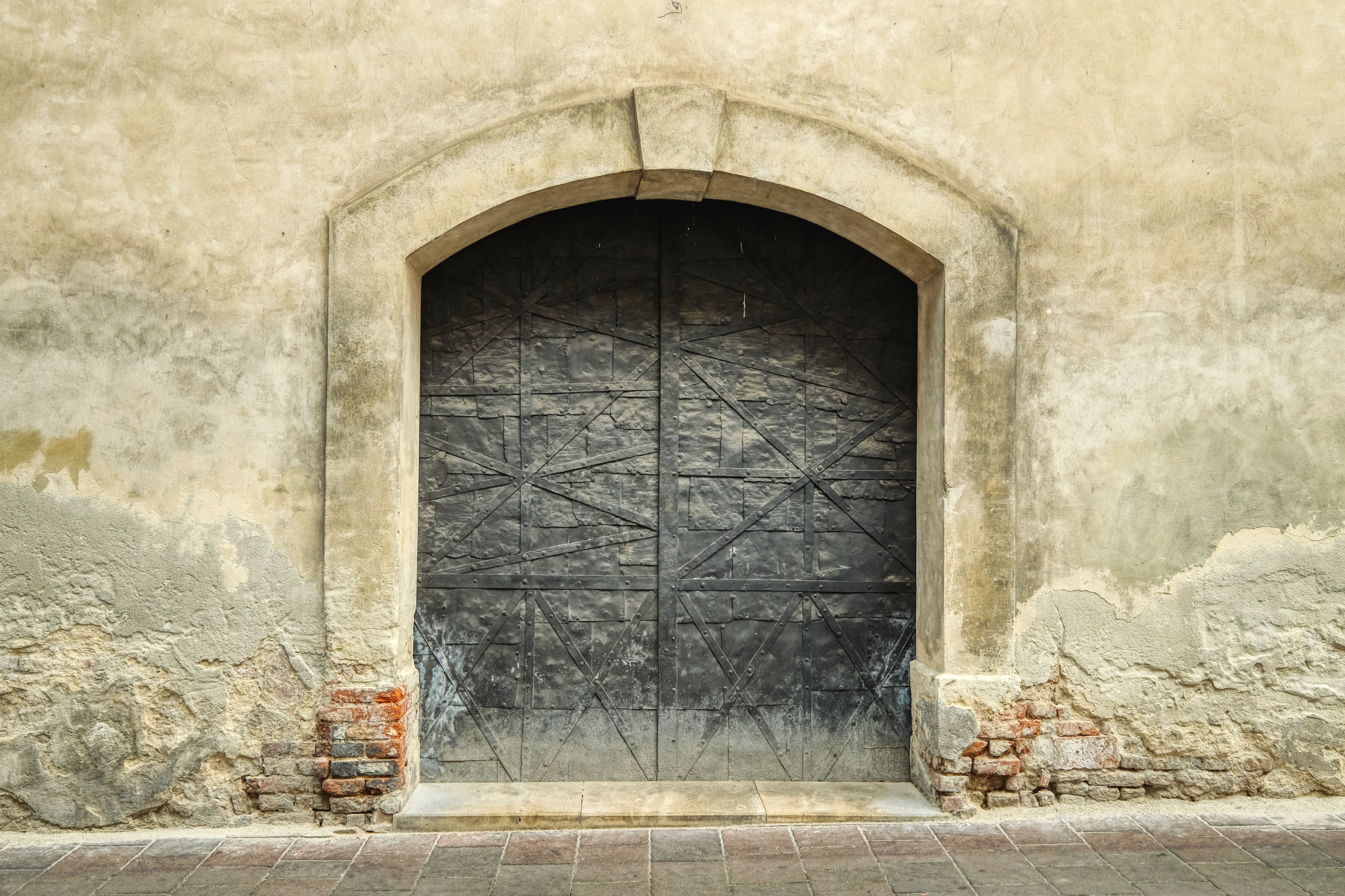 Some doors seem to have a power to draw you in.
Some doors seem to have a power to draw you in.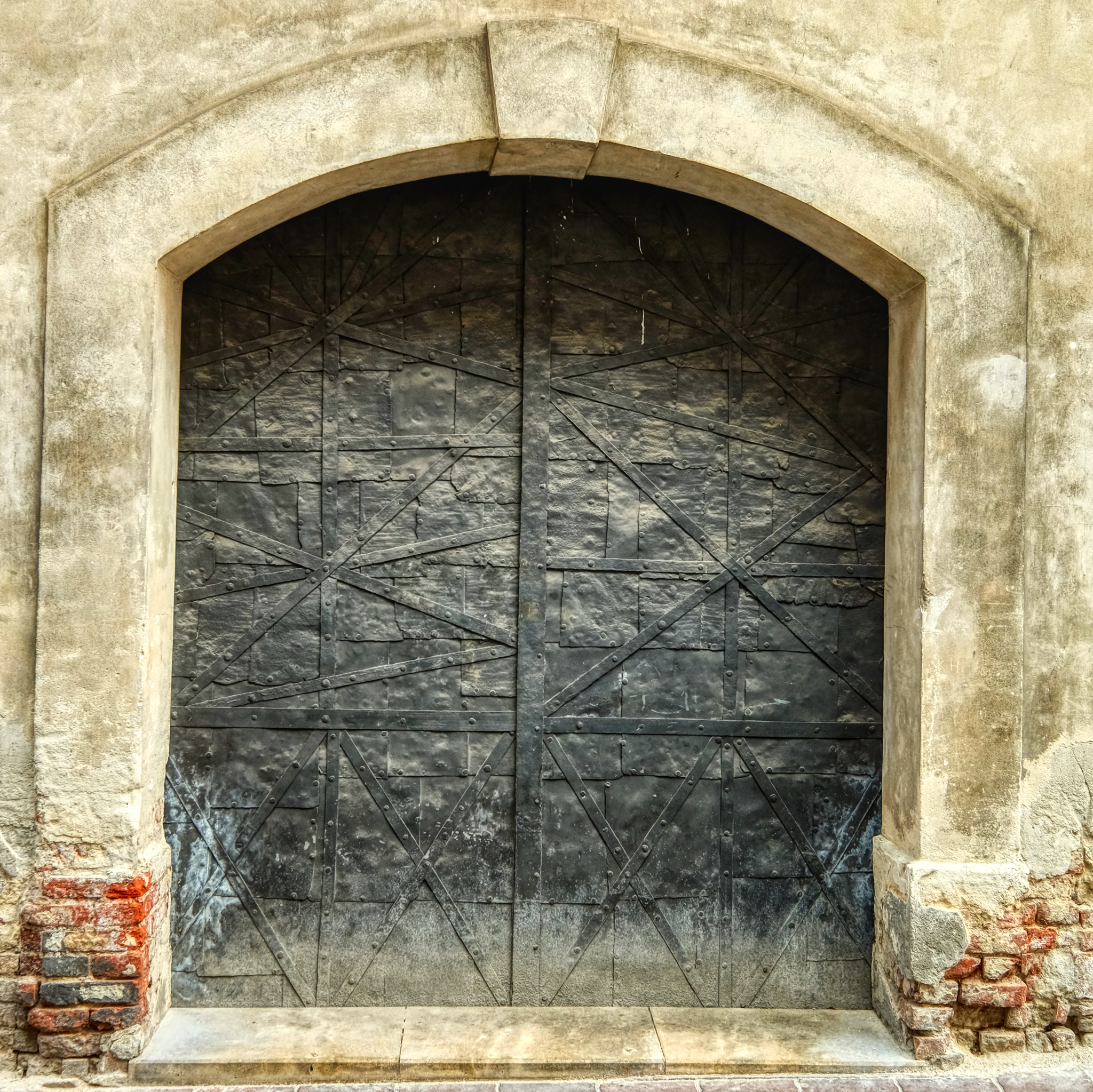 The strength of a steel door . . . with a story of repair.
The strength of a steel door . . . with a story of repair.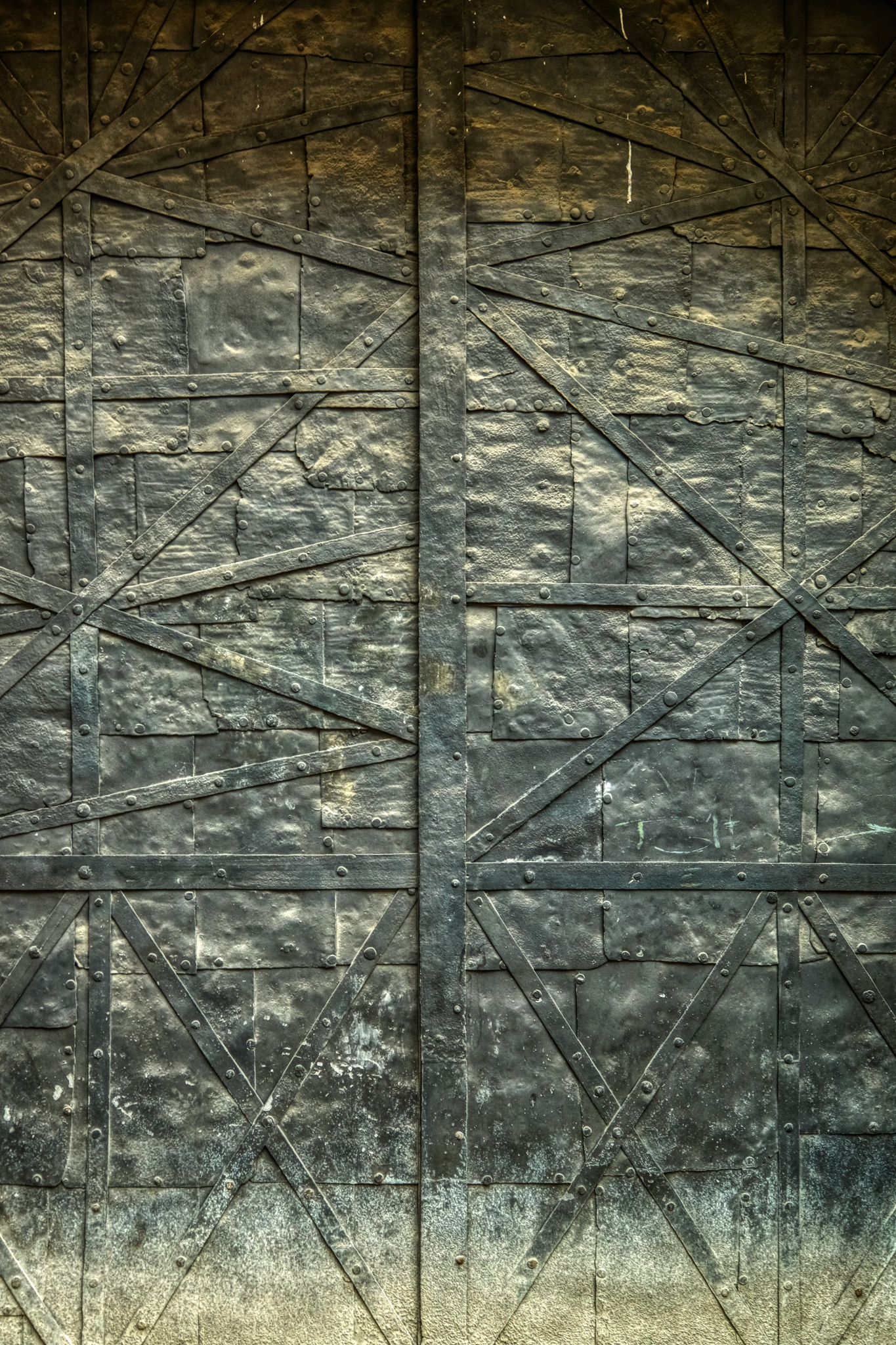 The textures! The patterns! The reflections!
The textures! The patterns! The reflections!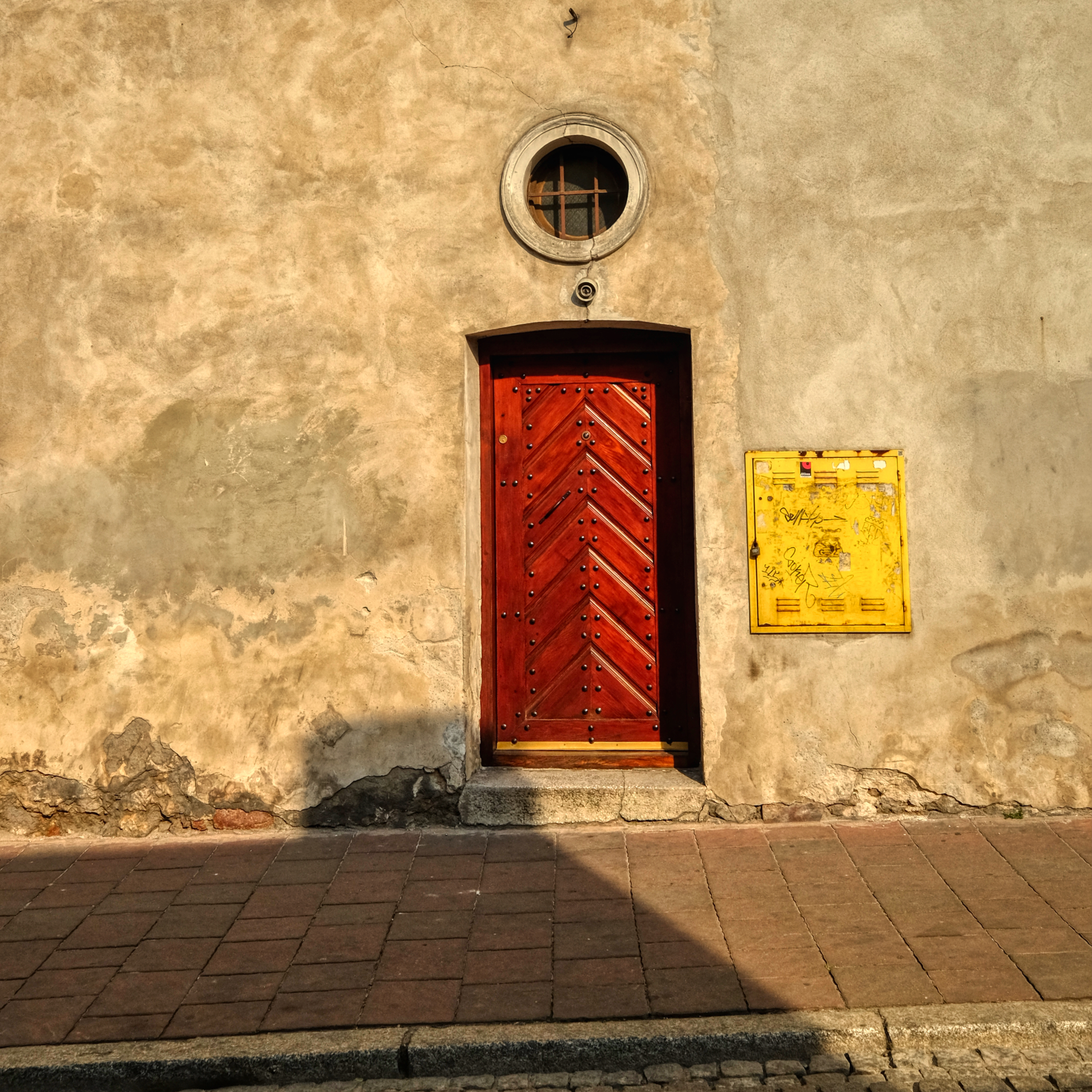 That wall! That Red door! That yellow service box! Astonishing.
That wall! That Red door! That yellow service box! Astonishing.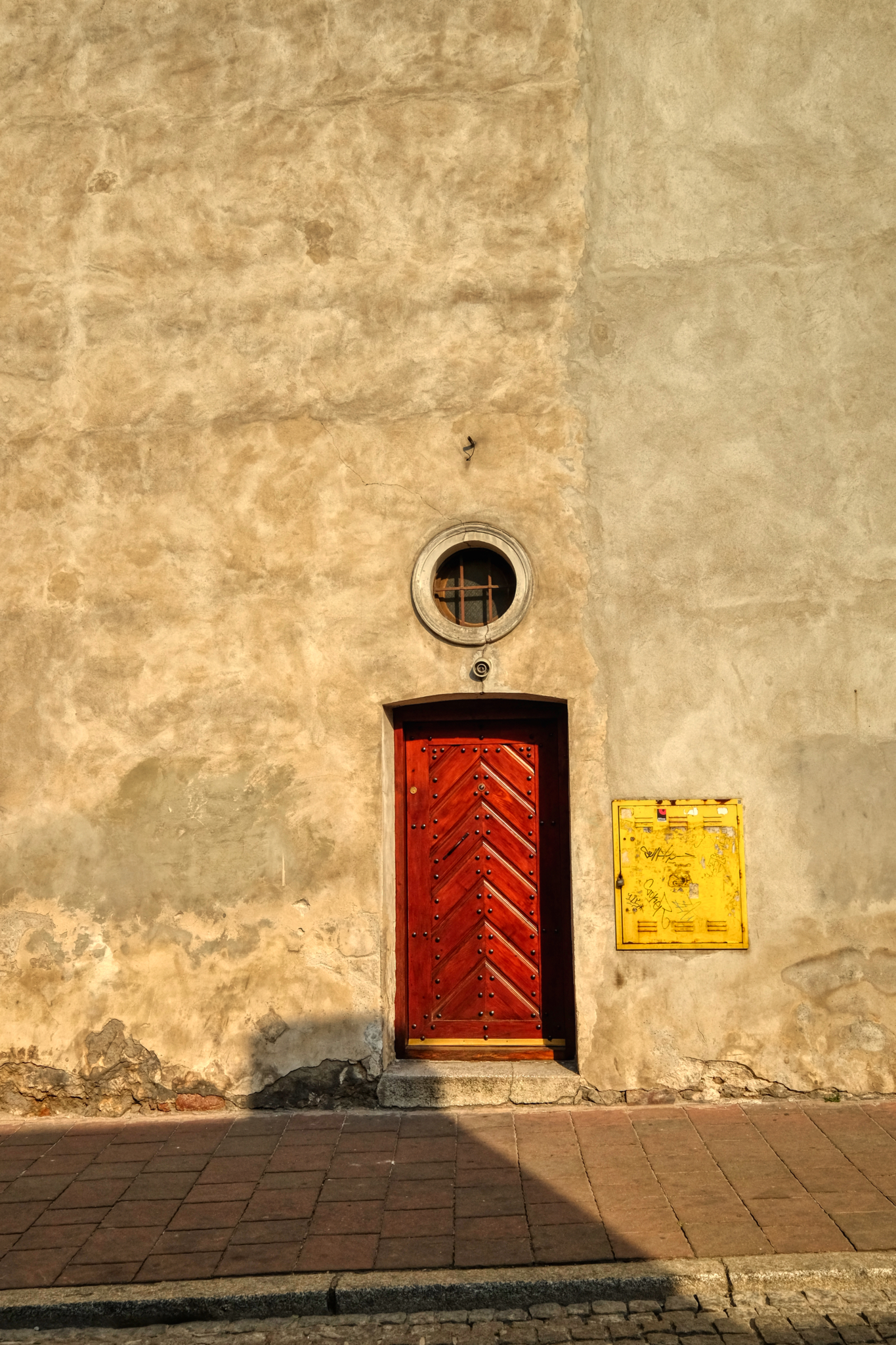 Same wall with different framing to emphasize the height of the wall . . . to make the wall powerful in the photograph.
Same wall with different framing to emphasize the height of the wall . . . to make the wall powerful in the photograph.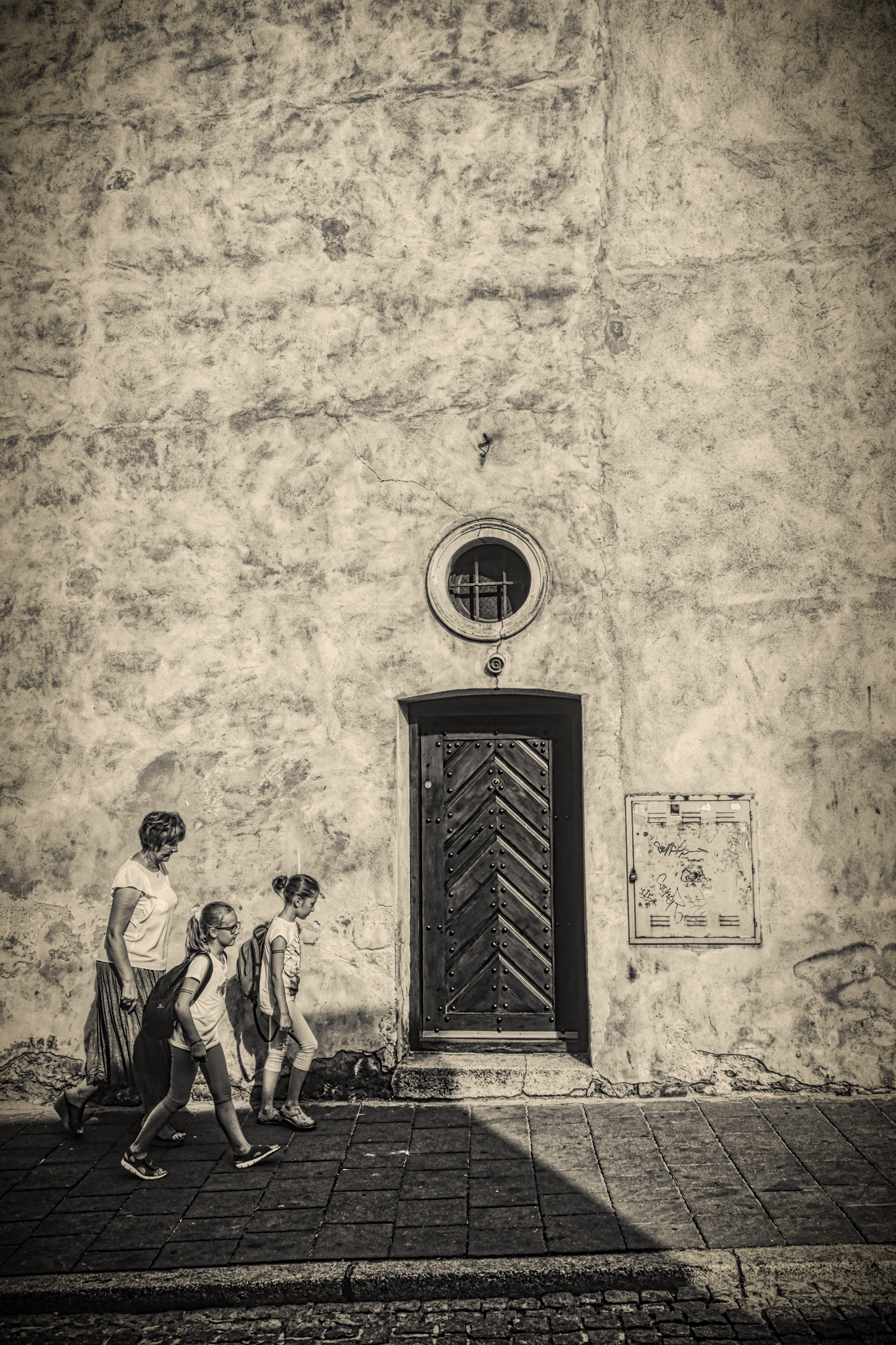 This family (?) walked in front while I was shooting these wall photos. I do not normally use aftereffects in my photography, but this one seemed to want this sepia tone. I like it.
This family (?) walked in front while I was shooting these wall photos. I do not normally use aftereffects in my photography, but this one seemed to want this sepia tone. I like it.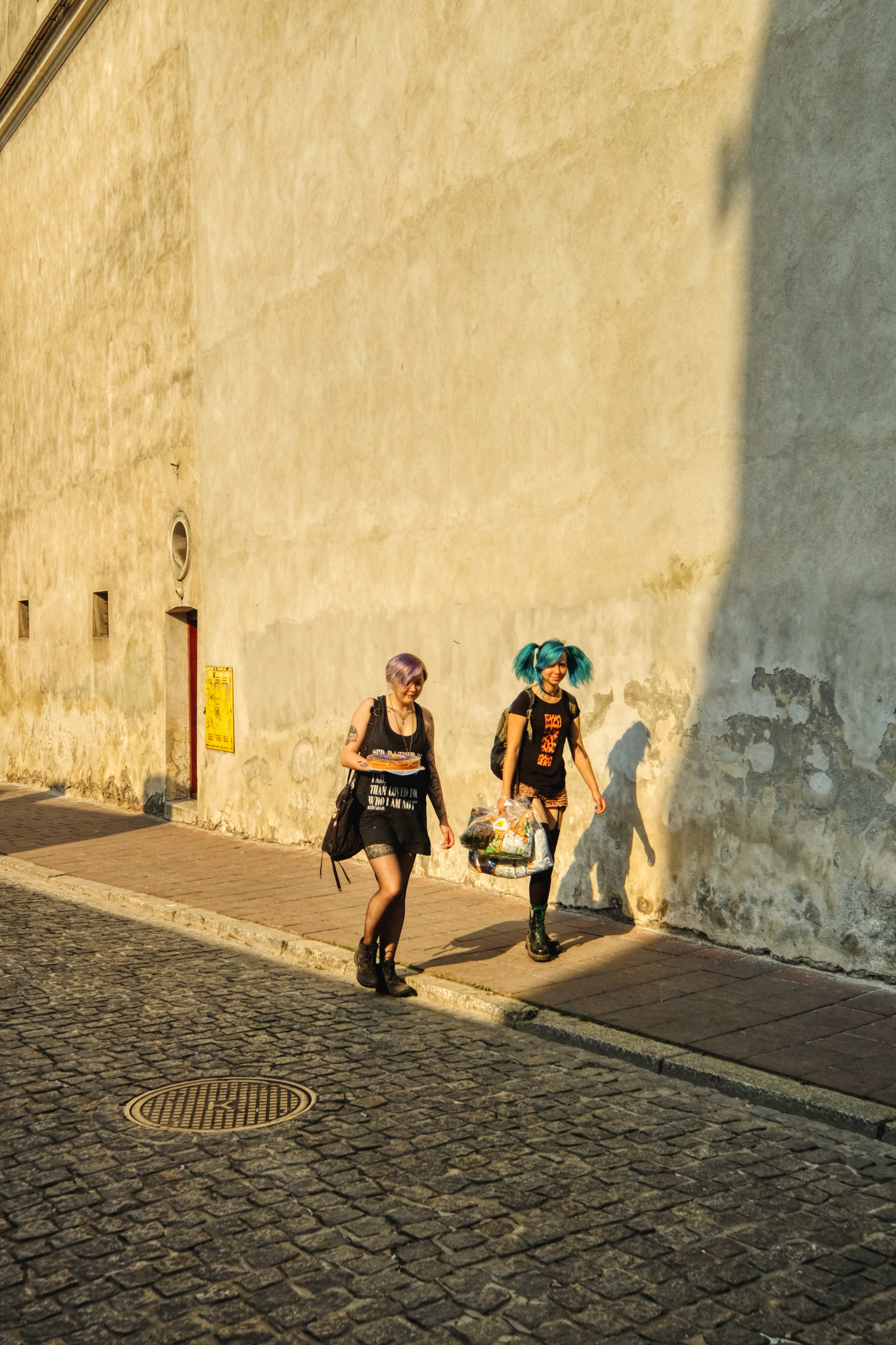 Same wall, door, service panel but different feeling. Punks bringing home lunch.
Same wall, door, service panel but different feeling. Punks bringing home lunch.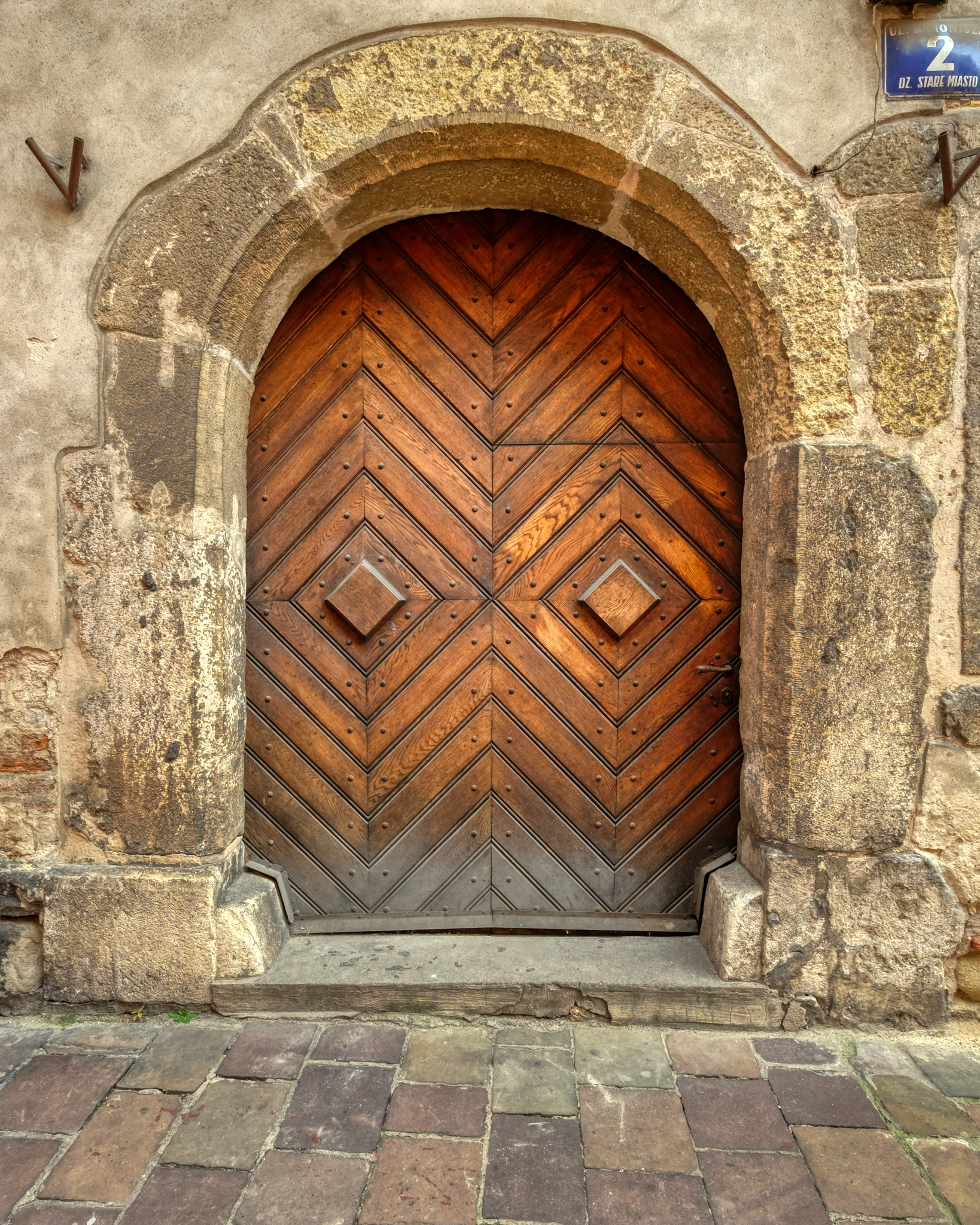 So many anncient doors . . .
So many anncient doors . . .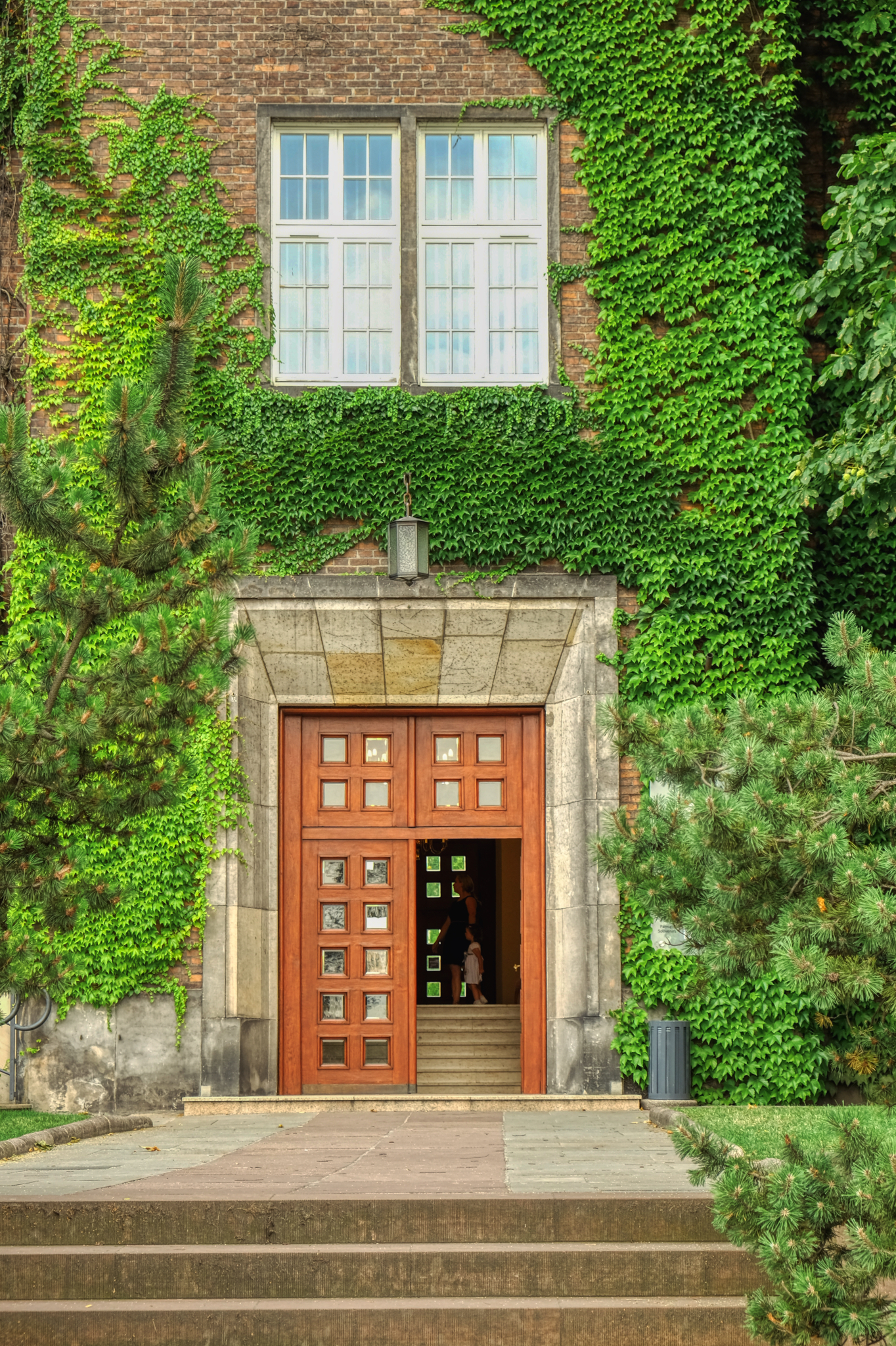 Lovely crawling ivy surrounding this artistic door.
Lovely crawling ivy surrounding this artistic door.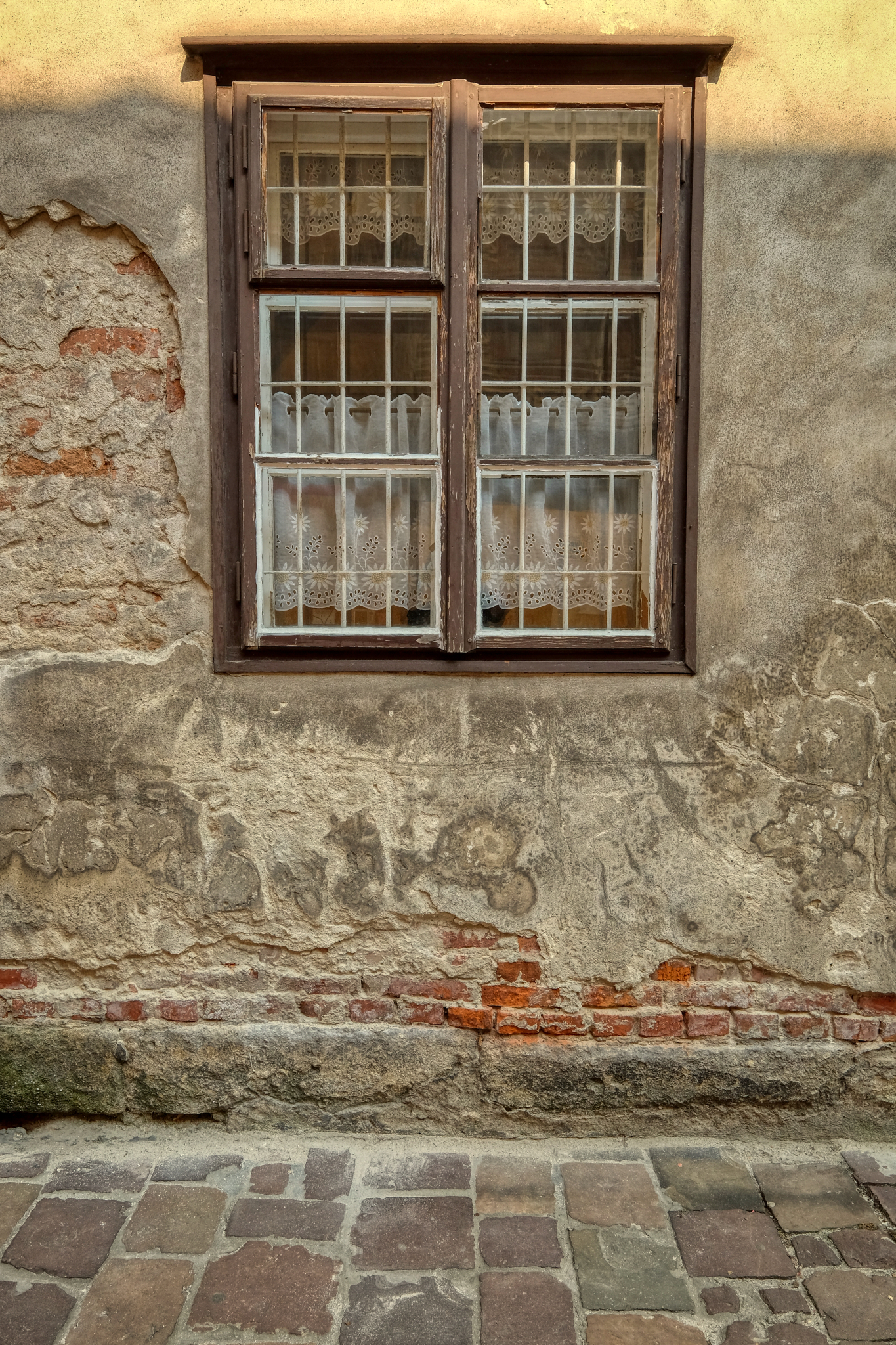 The windows are the eyes of a building . . . they can reveal so much.
The windows are the eyes of a building . . . they can reveal so much.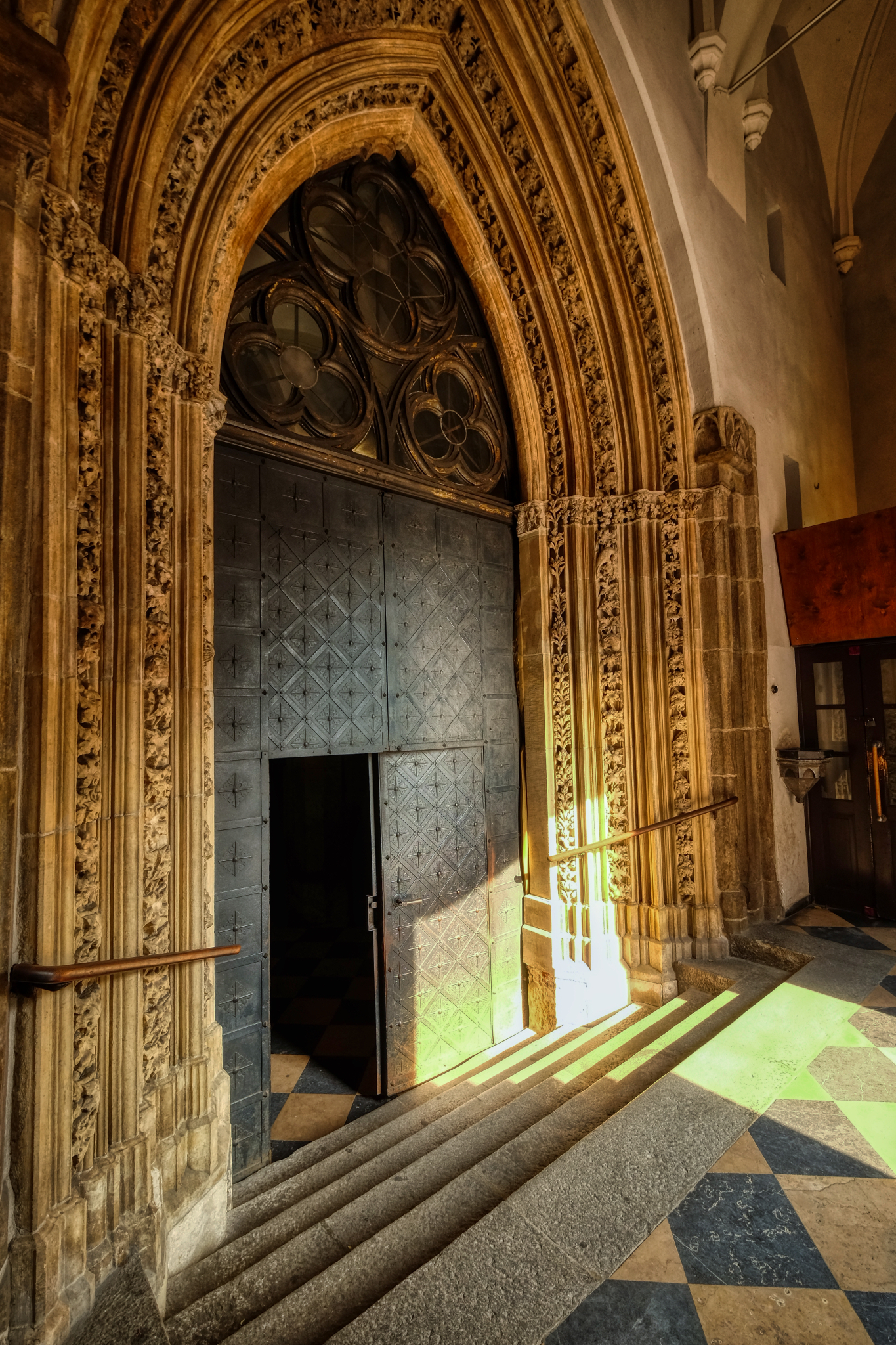 A church/cathedral door, and all it promises, and all of its history, and all of its sorrow.
A church/cathedral door, and all it promises, and all of its history, and all of its sorrow.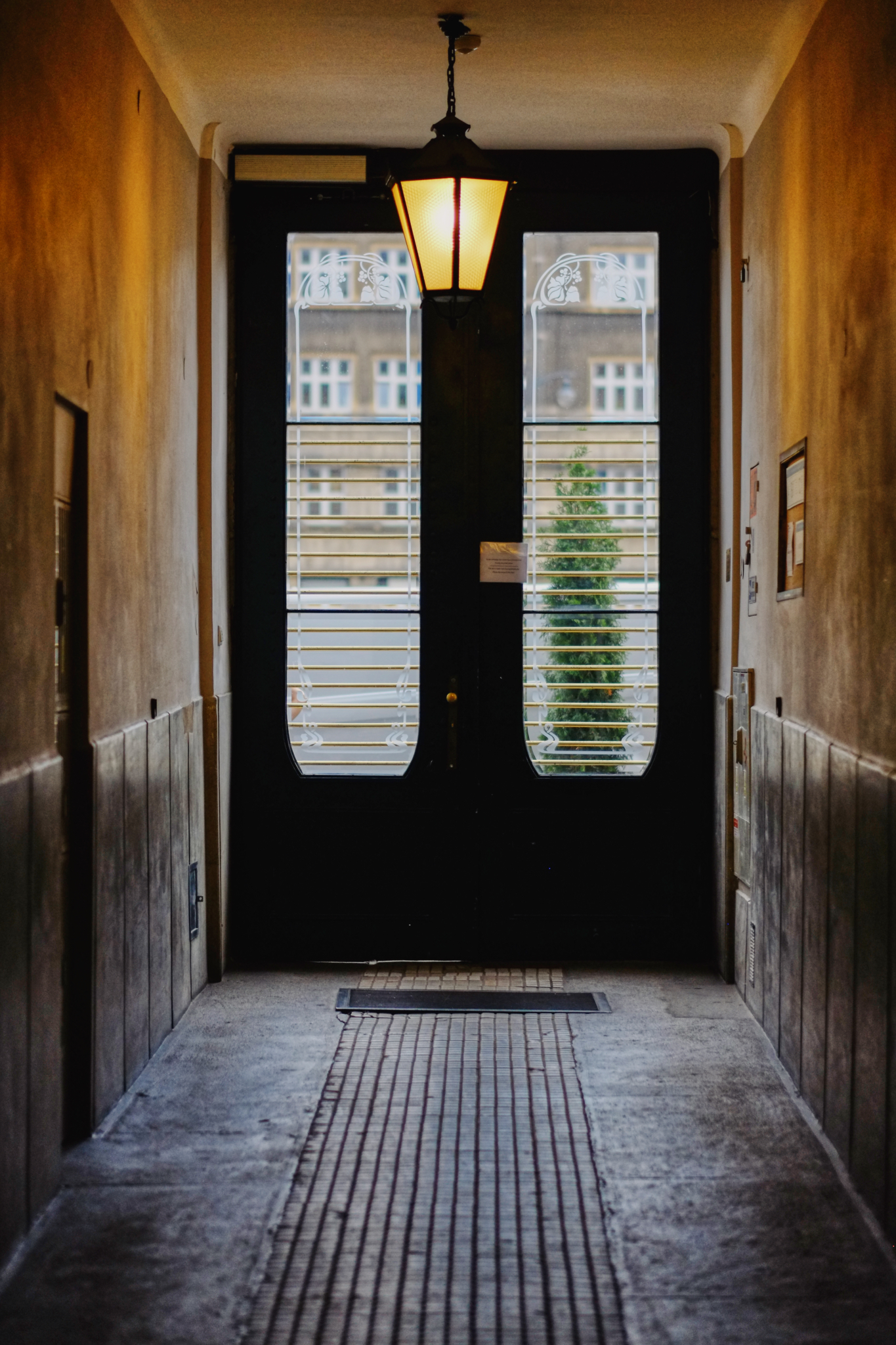 My last door photo . . . our Soviet-era hotel. Simple, honest . . . opening to the marvelous city of Kraków.
My last door photo . . . our Soviet-era hotel. Simple, honest . . . opening to the marvelous city of Kraków.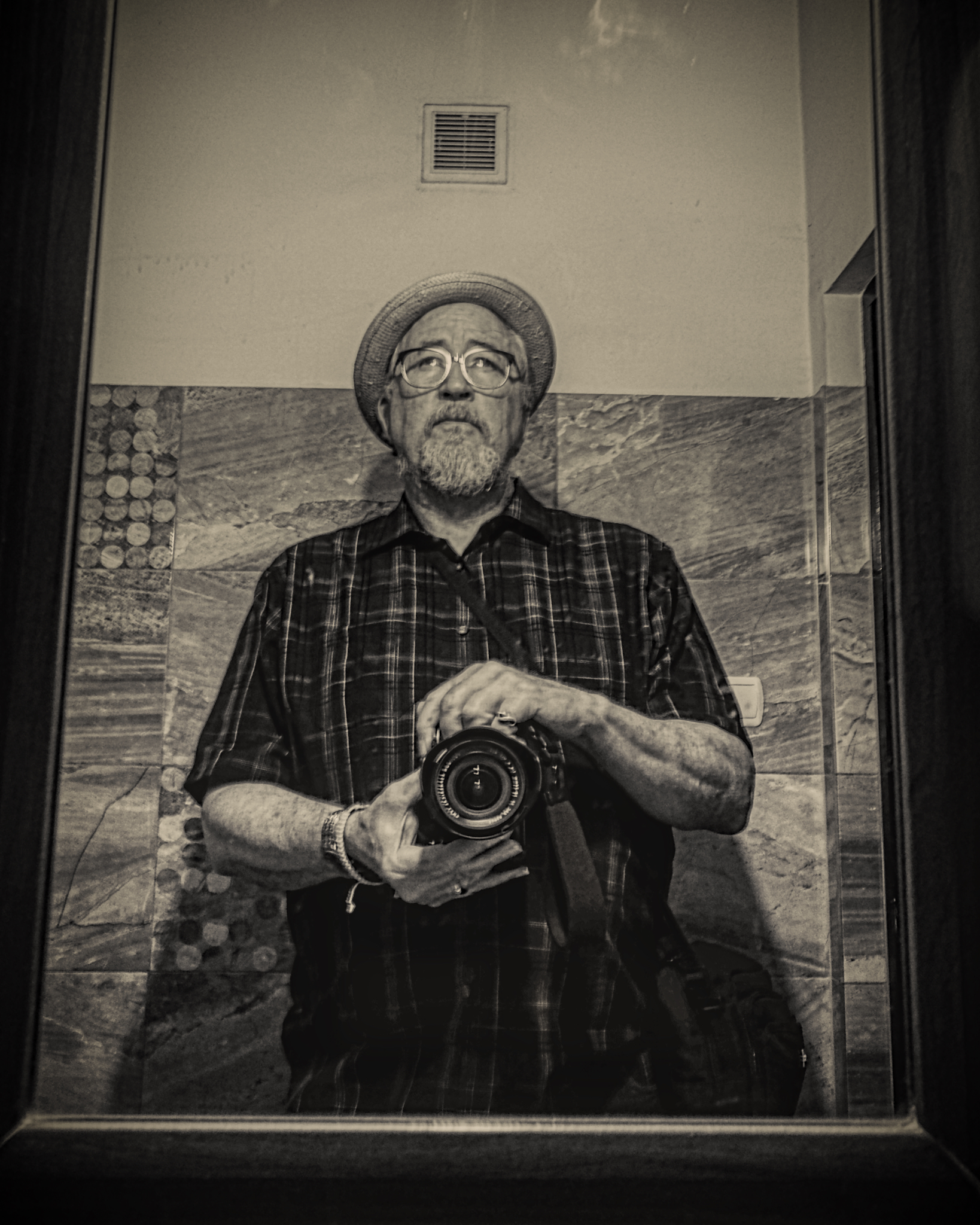 I saw this guy in the mirror of an elevator in Kraków, Poland and wondered who he was.
I saw this guy in the mirror of an elevator in Kraków, Poland and wondered who he was.Working From Home . . . Missing My River Commute
 Saturday, March 21, 2020 at 6:46PM
Saturday, March 21, 2020 at 6:46PM I work as a director and professor at a Thai public university. On most days I take an express boat 40 minutes to and from my office on the Chao Phraya River . . . but due to the COVID-19 virus, I am now working from home as my university has closed the campus.
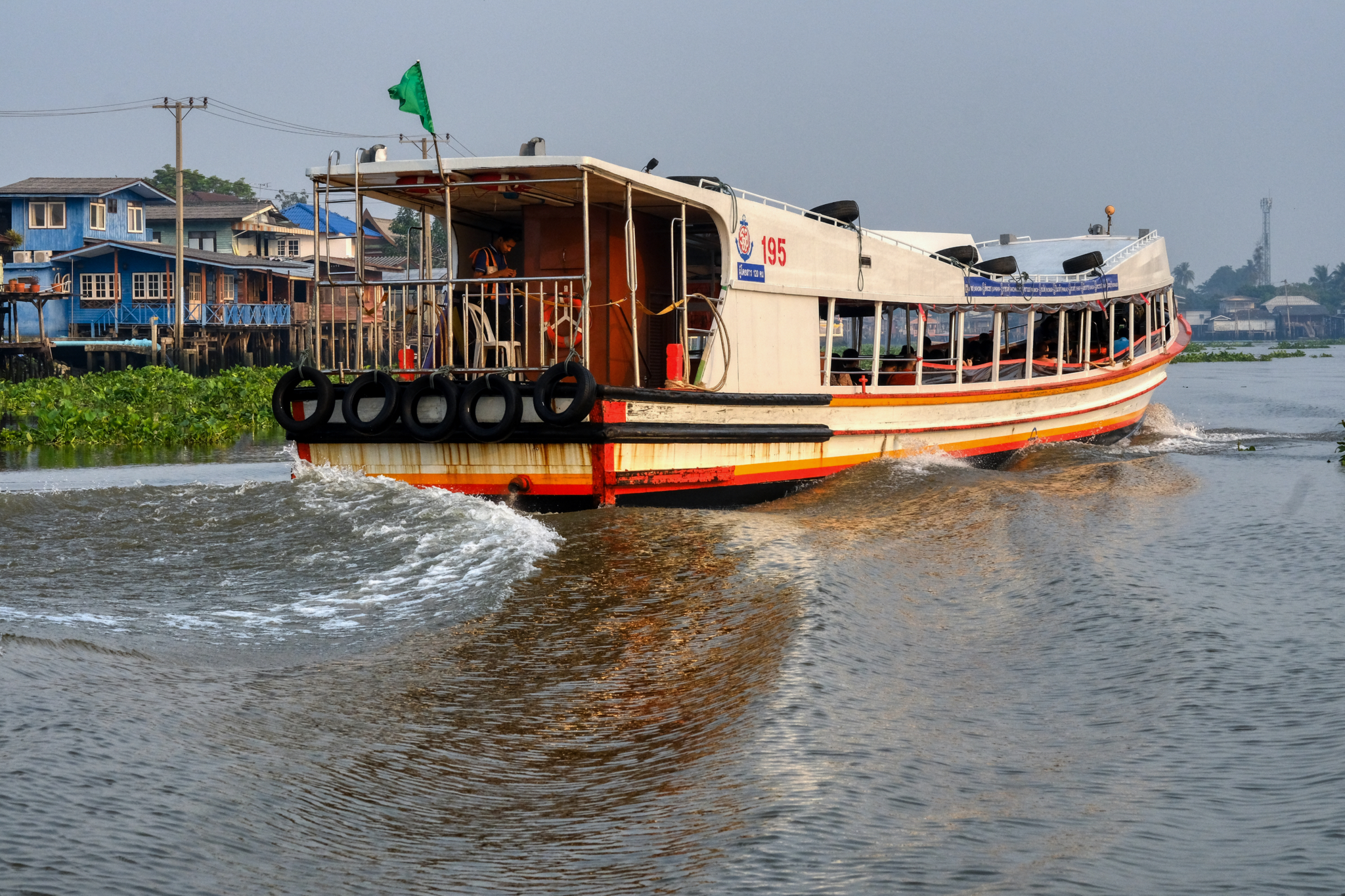 After a short public bus ride, I catch this Chao Phraya River Express Boat (green flag) for the 40 minute ride down the fascinating and picturesque river to my office.
After a short public bus ride, I catch this Chao Phraya River Express Boat (green flag) for the 40 minute ride down the fascinating and picturesque river to my office.
 These are the docks where I catch my commuter boat. Pakkret Pier.
These are the docks where I catch my commuter boat. Pakkret Pier.
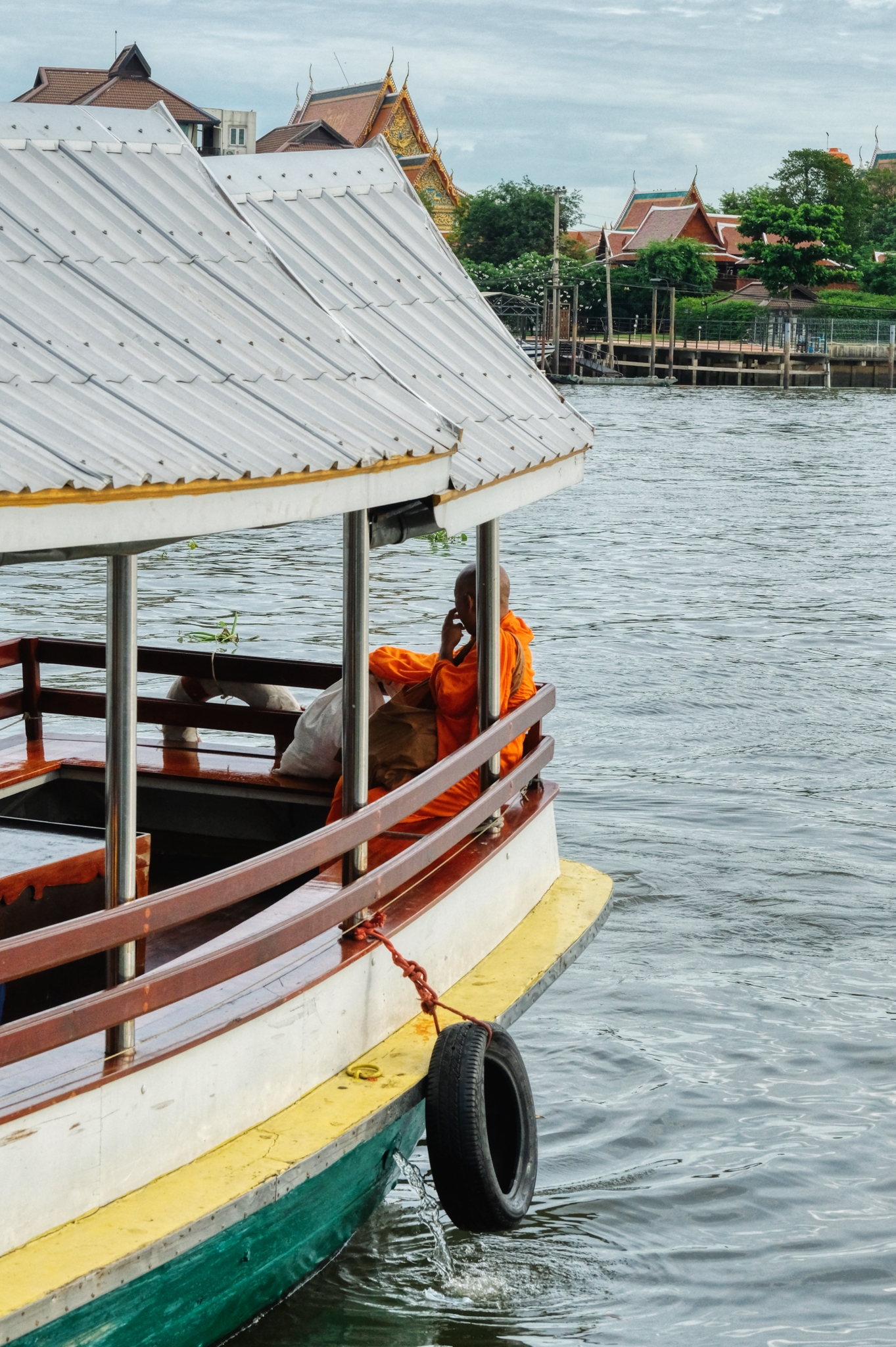 I am not the only person out on my morning commute and rounds . . . .
I am not the only person out on my morning commute and rounds . . . .
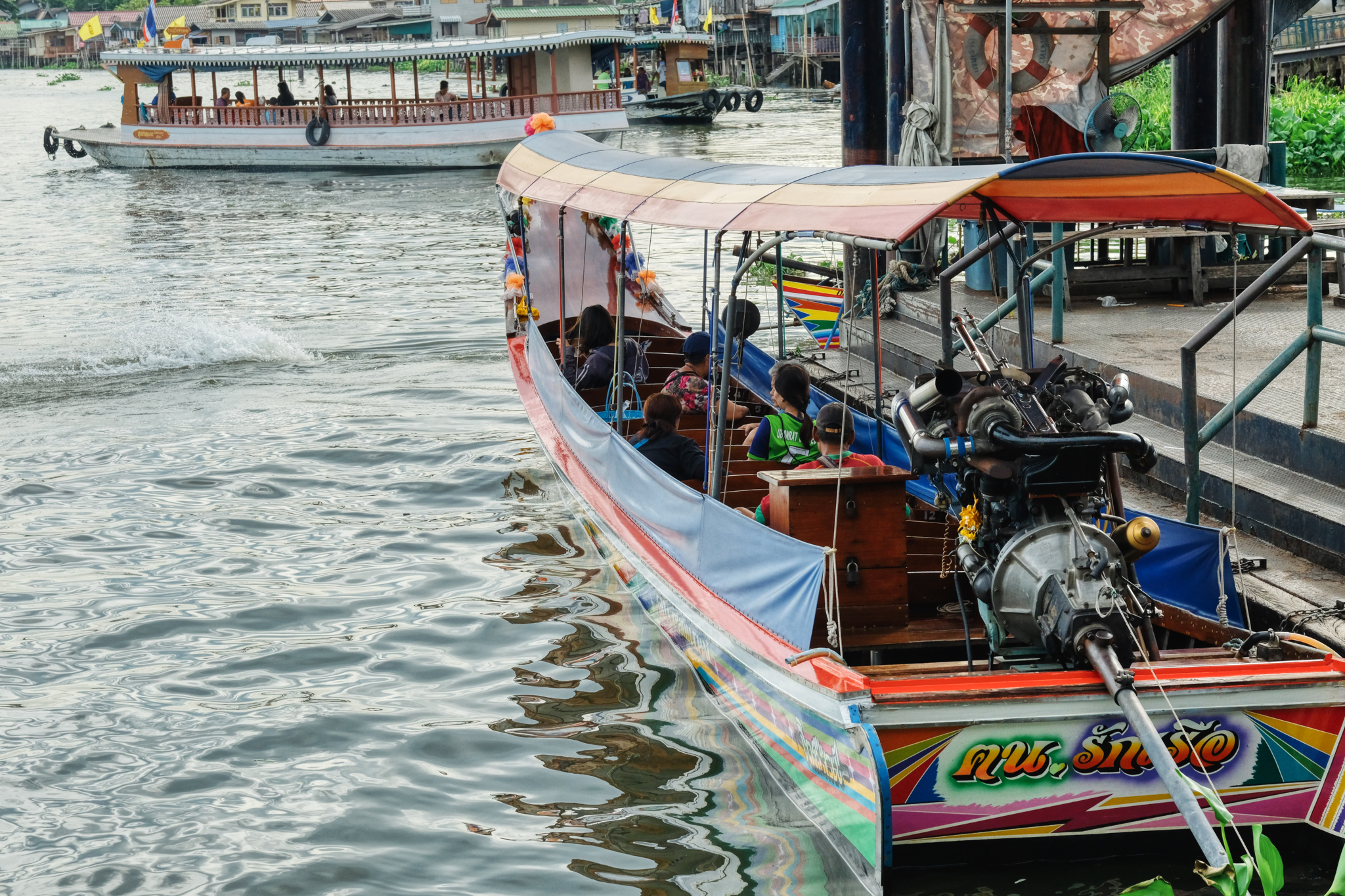 Many long-tail river taxi boats lined up taking merchants back to their small businesses after visiting the morning wet market.
Many long-tail river taxi boats lined up taking merchants back to their small businesses after visiting the morning wet market.
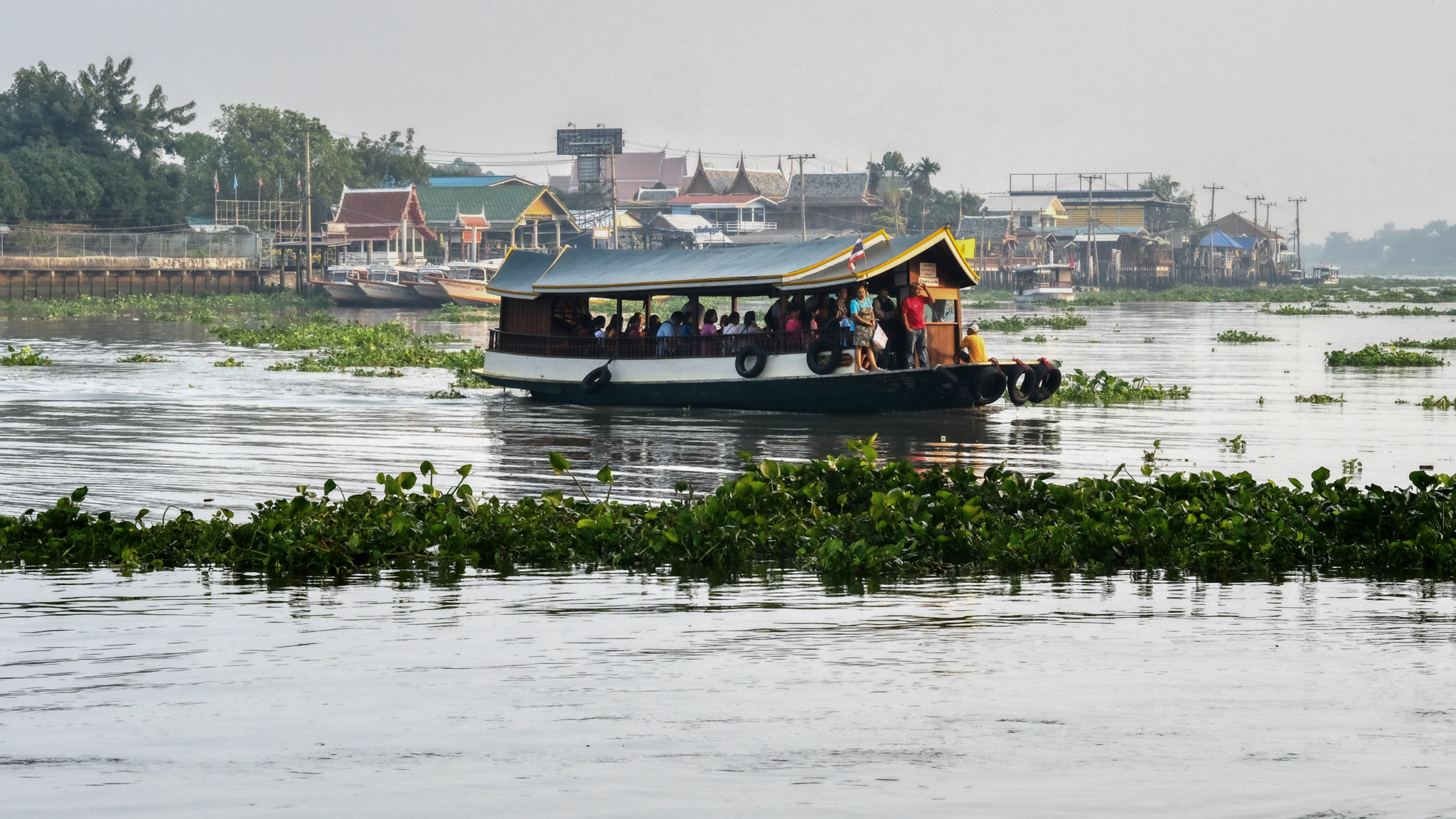 I join in a mass movement of people on their way to work along, on, and across the Chao Phraya River. Here a 3 baht ferry.
I join in a mass movement of people on their way to work along, on, and across the Chao Phraya River. Here a 3 baht ferry.
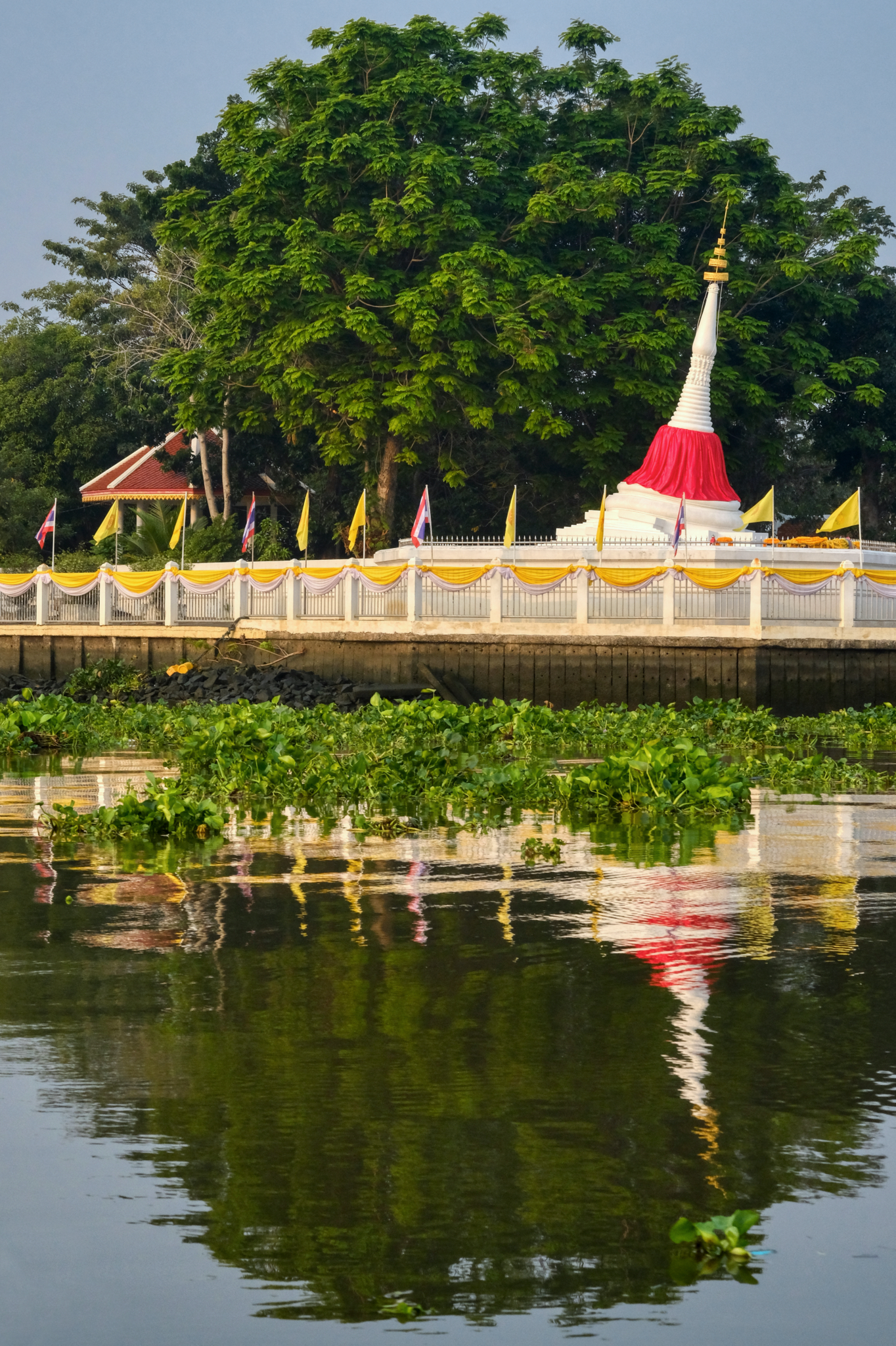 The journey down river begins by passing through a narrow 'cut' canal in the river that passes a beautiful, and sacred, tilted chedi on the point of Koh Kret (island) at Wat Poramai Yikawat.
The journey down river begins by passing through a narrow 'cut' canal in the river that passes a beautiful, and sacred, tilted chedi on the point of Koh Kret (island) at Wat Poramai Yikawat.
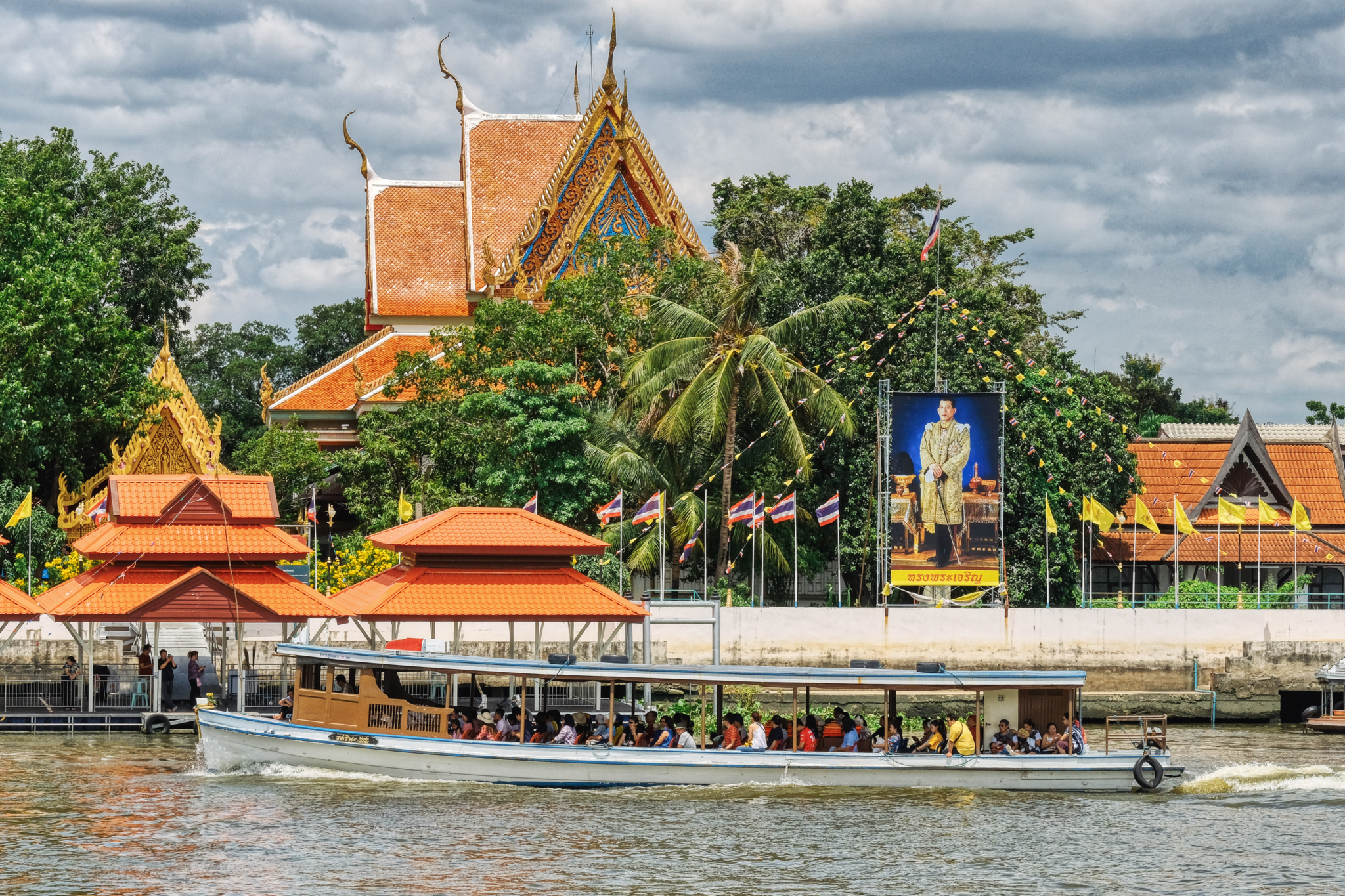 Facing Koh Kret is the magnificent Wat Sanam Nuea and a ferry terminal . . . the main way to get to the island.
Facing Koh Kret is the magnificent Wat Sanam Nuea and a ferry terminal . . . the main way to get to the island.
 There is a continuous line of houses up on stilts along the Koh Kret cut. This is what my daily mundane life looks like . . . my supramundane.
There is a continuous line of houses up on stilts along the Koh Kret cut. This is what my daily mundane life looks like . . . my supramundane.
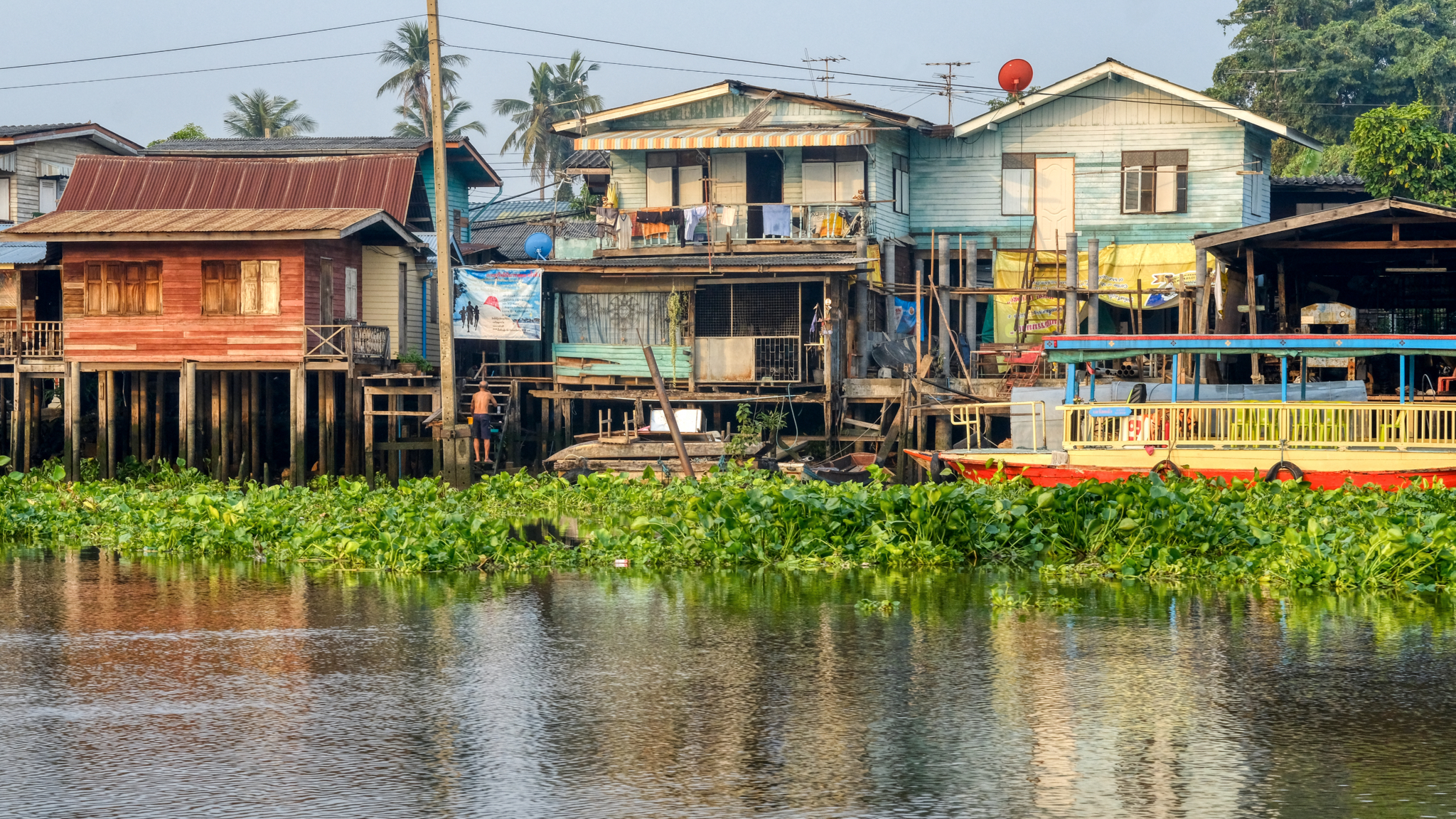
I know these houses by heart . . . I 'study' them every morning in the calm serenity and languid humidity of the tropical morning.
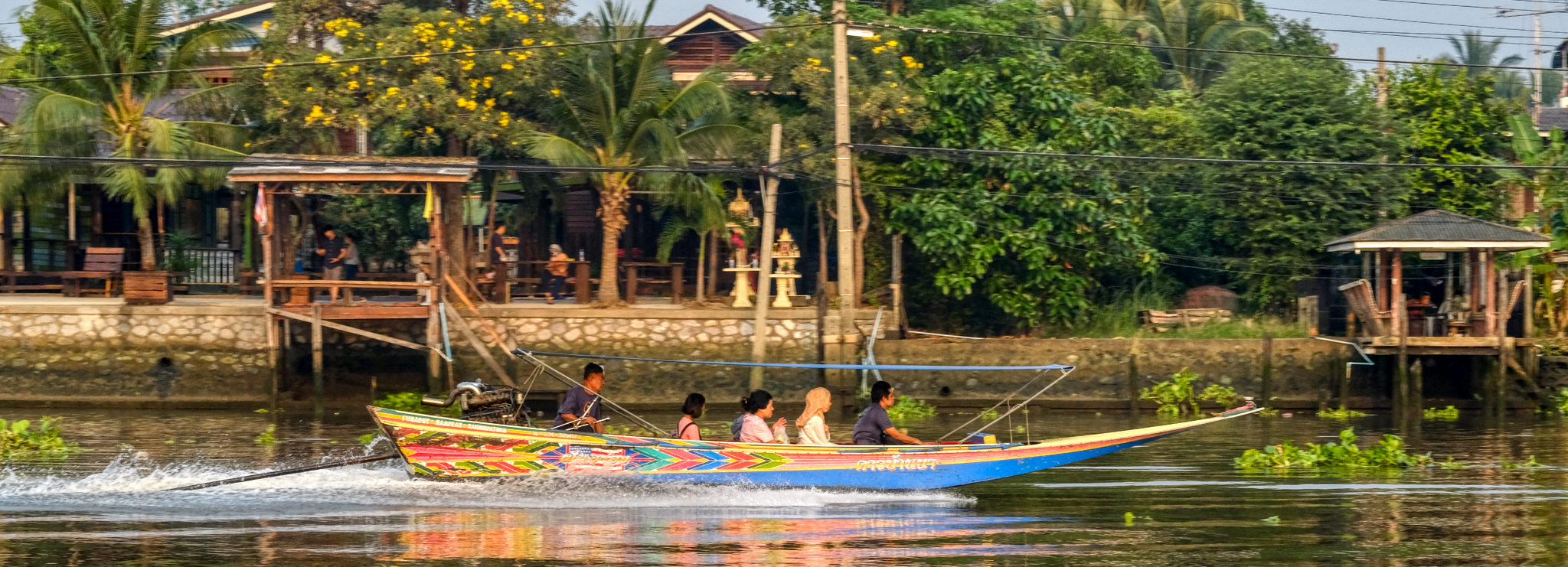 My express boat rattles some, and its old diesel engine chugs along in a rhythmic manner . . . but it's cadences are broken when a long-tail boat, a kind of hot rod river taxi, roars past. What a way to get to school or market!
My express boat rattles some, and its old diesel engine chugs along in a rhythmic manner . . . but it's cadences are broken when a long-tail boat, a kind of hot rod river taxi, roars past. What a way to get to school or market!
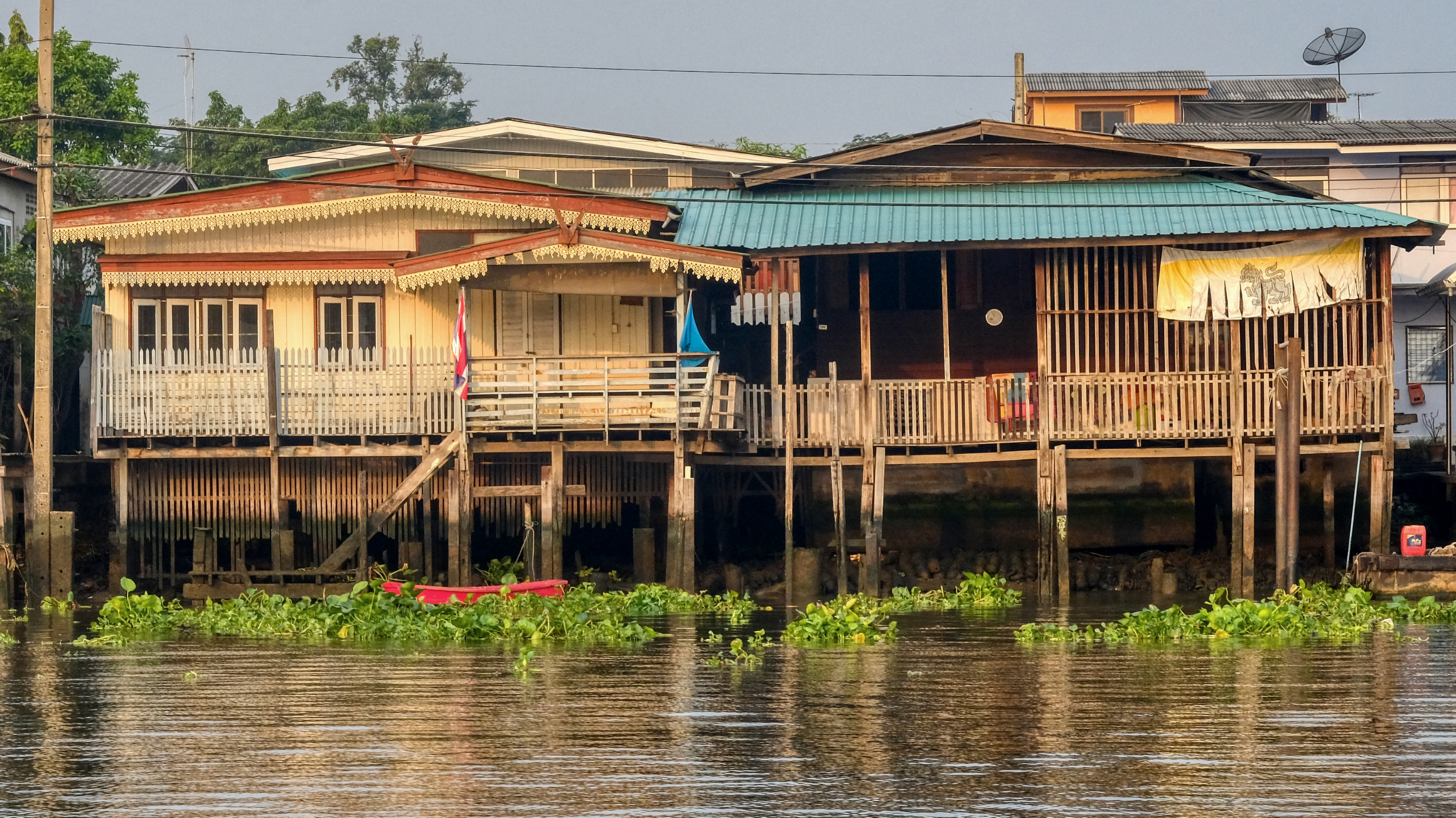
When I moved to Thailand 23 years ago I spent a good deal of time for two years trying to find one of these river houses to rent . . . and never could find one.
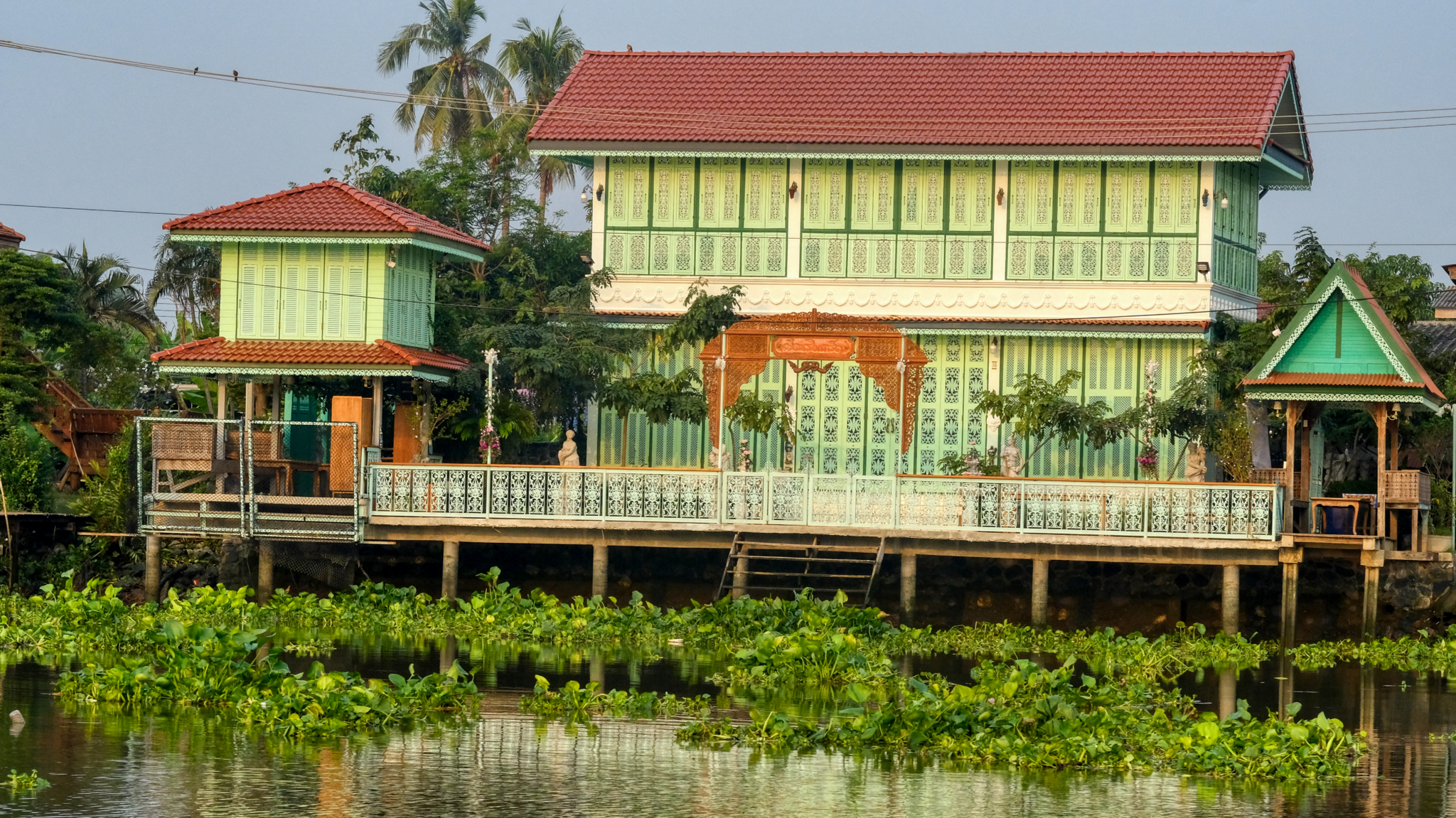 Every morning I have been watching this new construction of a traditional Thai-style house going up on the island side of the canal. Beautiful. I want to live here.
Every morning I have been watching this new construction of a traditional Thai-style house going up on the island side of the canal. Beautiful. I want to live here.
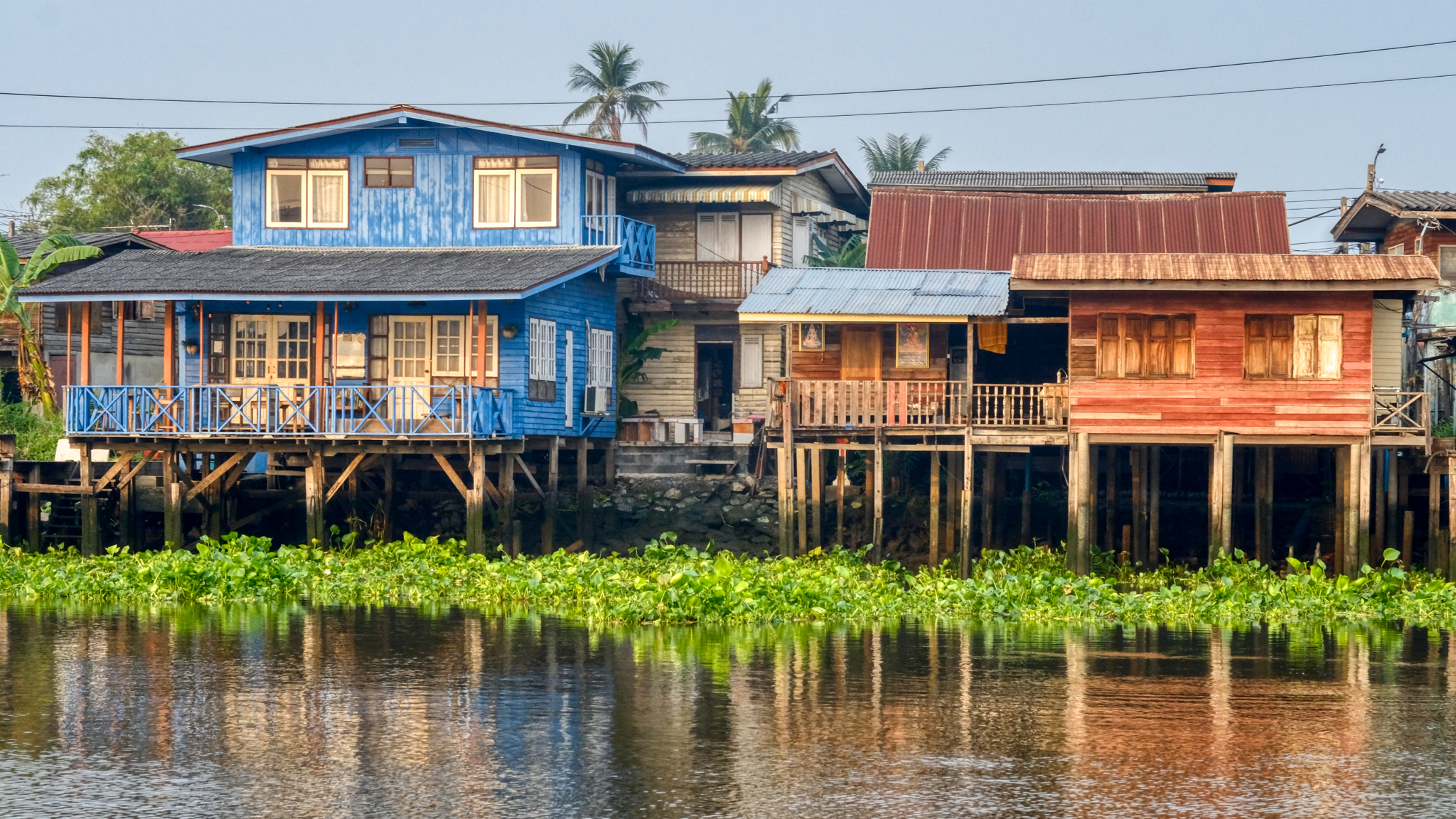 I can see myself sitting on one of these porches watching the boats go by . . . but this dream is not to be.
I can see myself sitting on one of these porches watching the boats go by . . . but this dream is not to be.
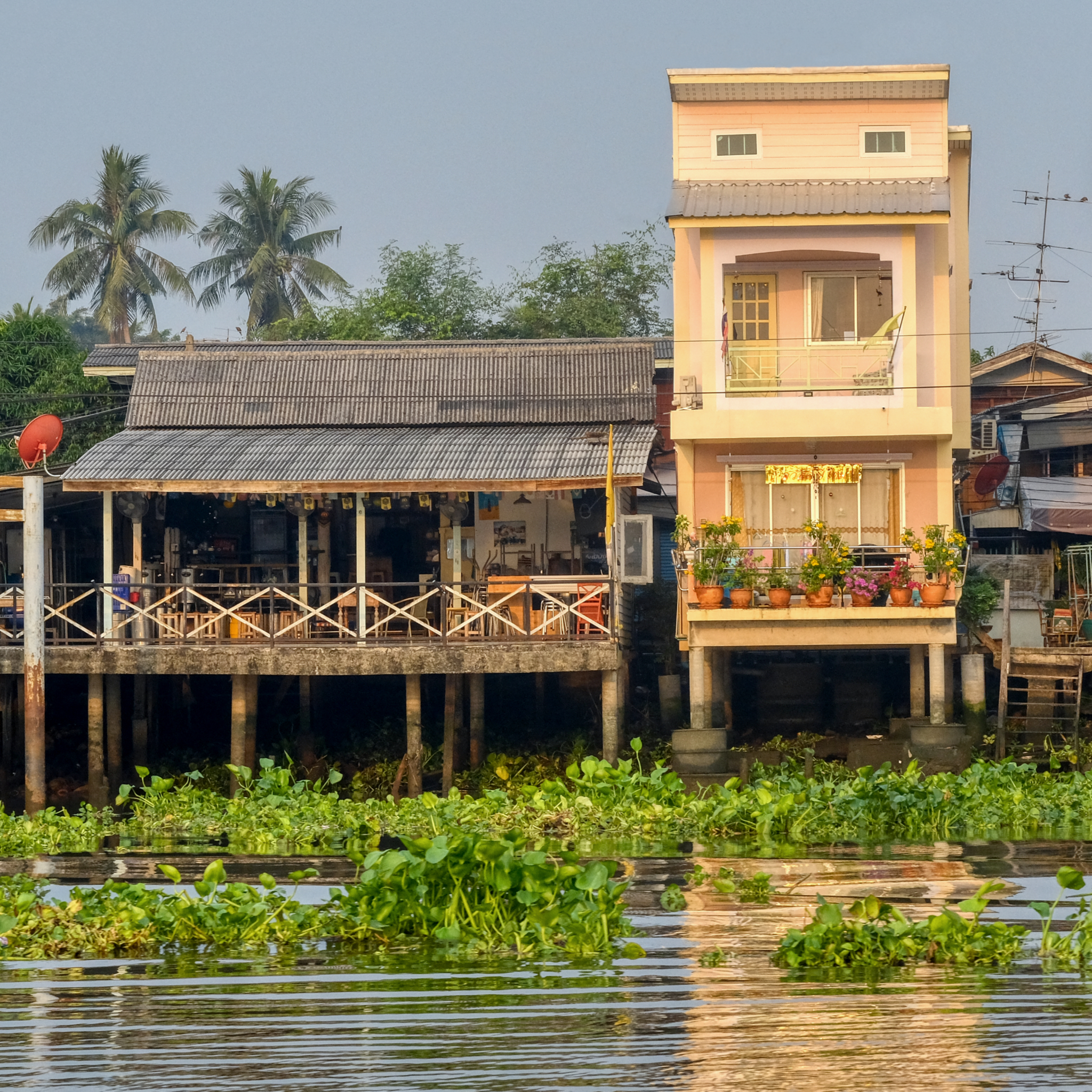 There is a charming mixture of houses along the canal: a traditional restaurent beside a stick and stucco modern house.
There is a charming mixture of houses along the canal: a traditional restaurent beside a stick and stucco modern house.
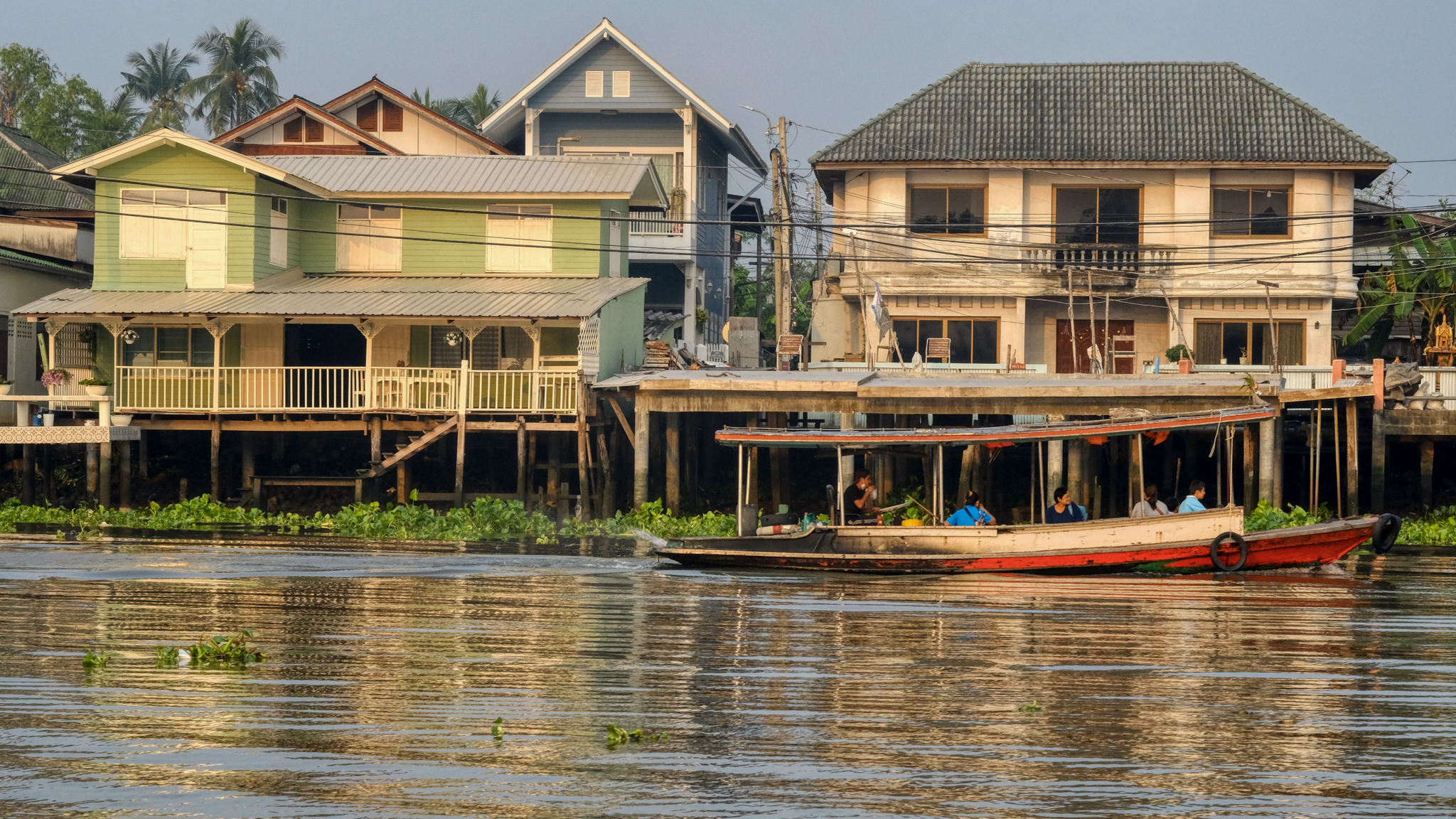 All along the canal small ferries offer a 'short cut' off the island.
All along the canal small ferries offer a 'short cut' off the island.
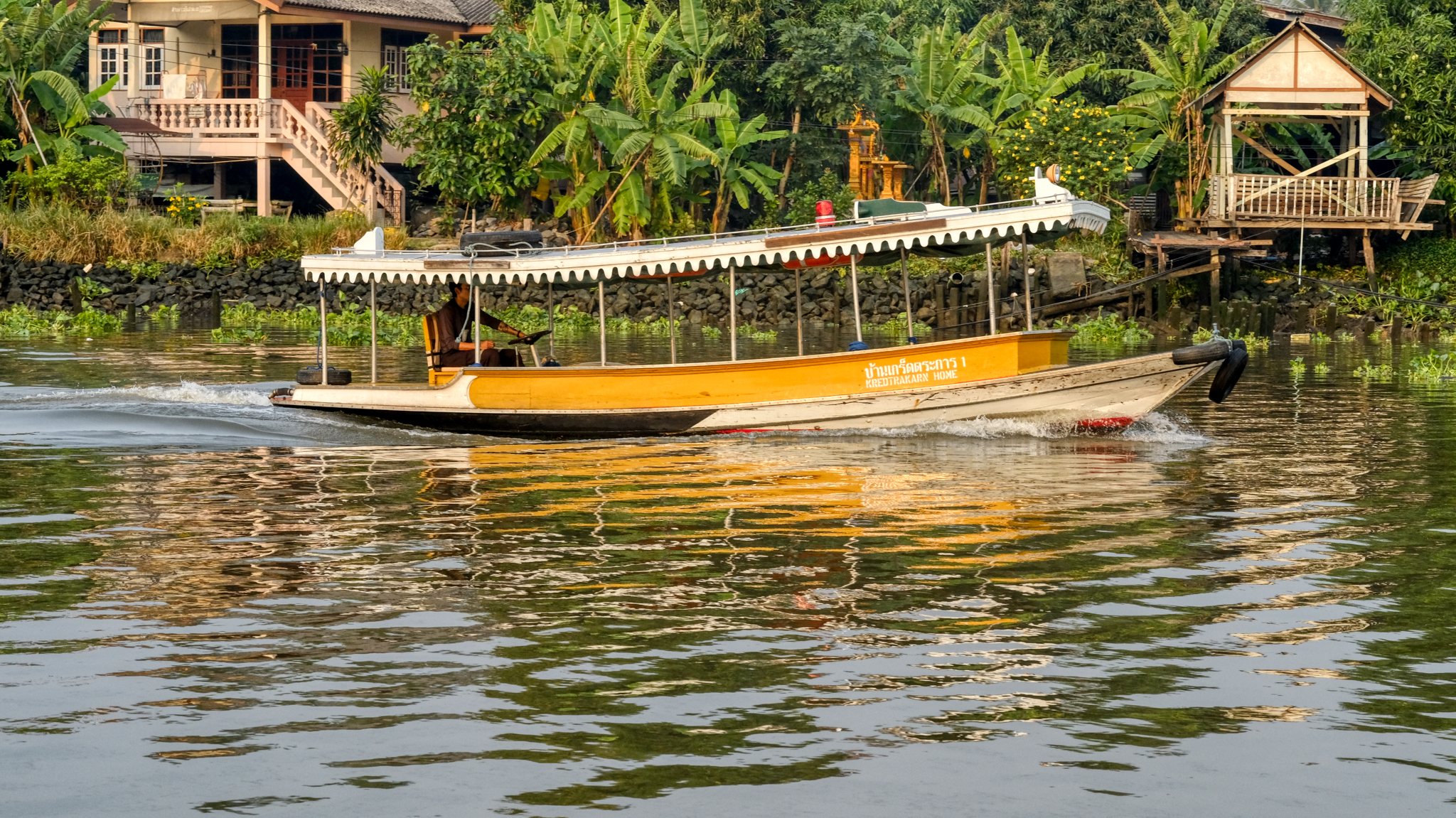 On most mornings these small ferries are full of school children on their way to school.
On most mornings these small ferries are full of school children on their way to school.
 The river is itself a busy part of the city in places. Here a collection of work boats busily raising the banks of the river.
The river is itself a busy part of the city in places. Here a collection of work boats busily raising the banks of the river.
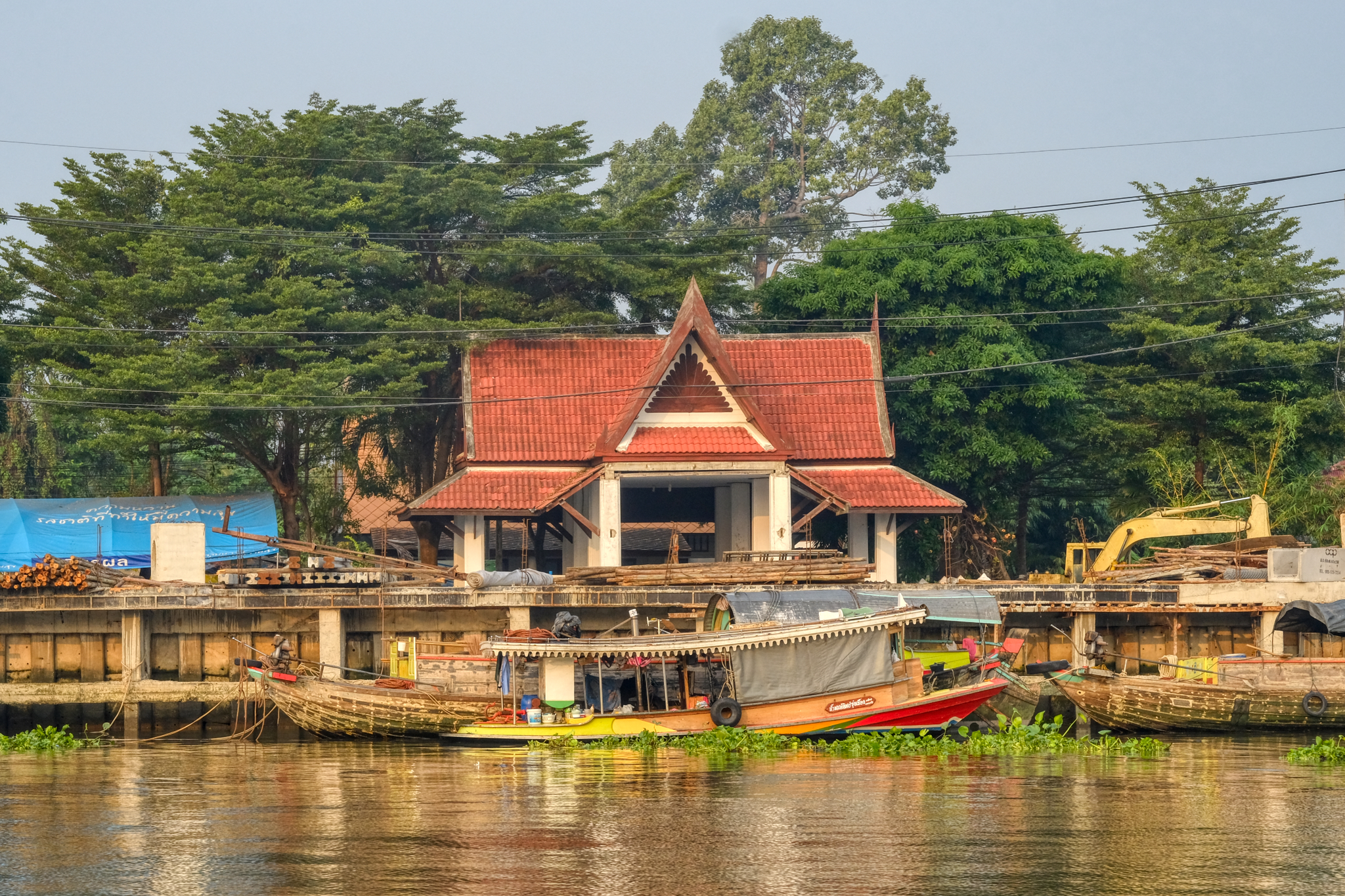 The river, even here at 75 miles from the ocean (Gulf of Thailand), is estuarial. As such, it is subject to the effects of climate change and sea level rise. The city and national government are making a huge effort to raise the banks along many, many miles of the river.
The river, even here at 75 miles from the ocean (Gulf of Thailand), is estuarial. As such, it is subject to the effects of climate change and sea level rise. The city and national government are making a huge effort to raise the banks along many, many miles of the river.
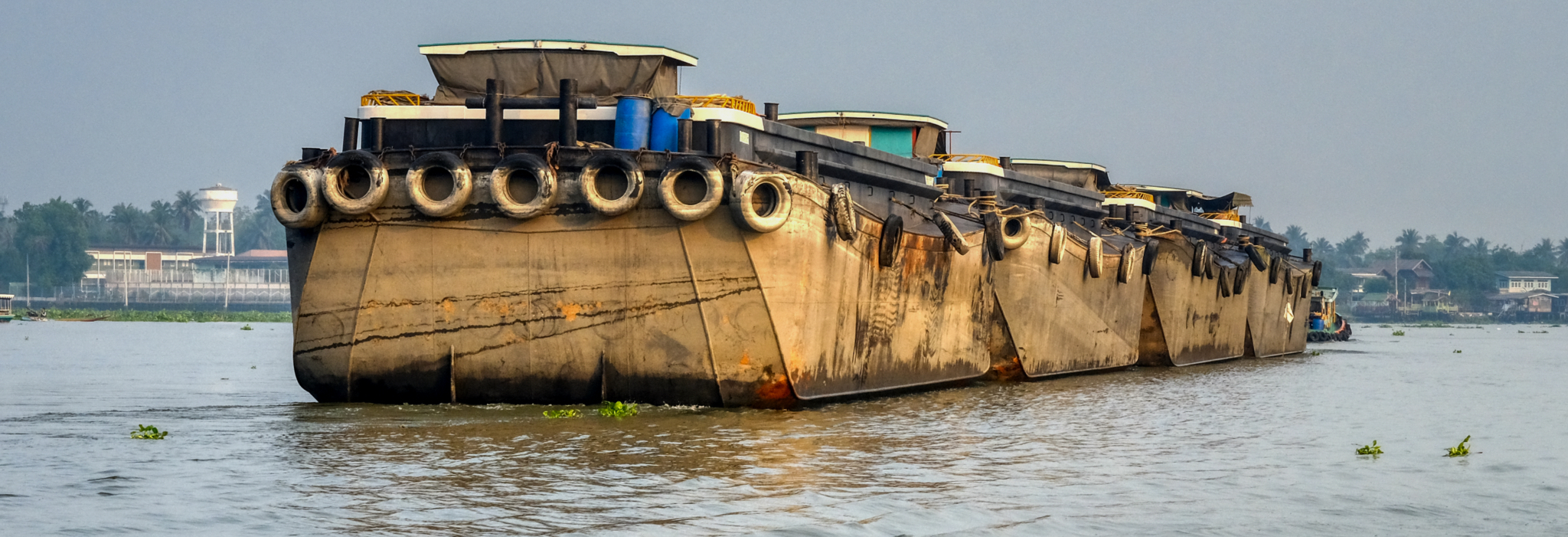 One of the great sights on the river each morning are the coming and goings of the barge trains, always four barges long. These barges are empty and sitting high in the water . . . easily managed by a single tug boat on the ebb tide.
One of the great sights on the river each morning are the coming and goings of the barge trains, always four barges long. These barges are empty and sitting high in the water . . . easily managed by a single tug boat on the ebb tide.
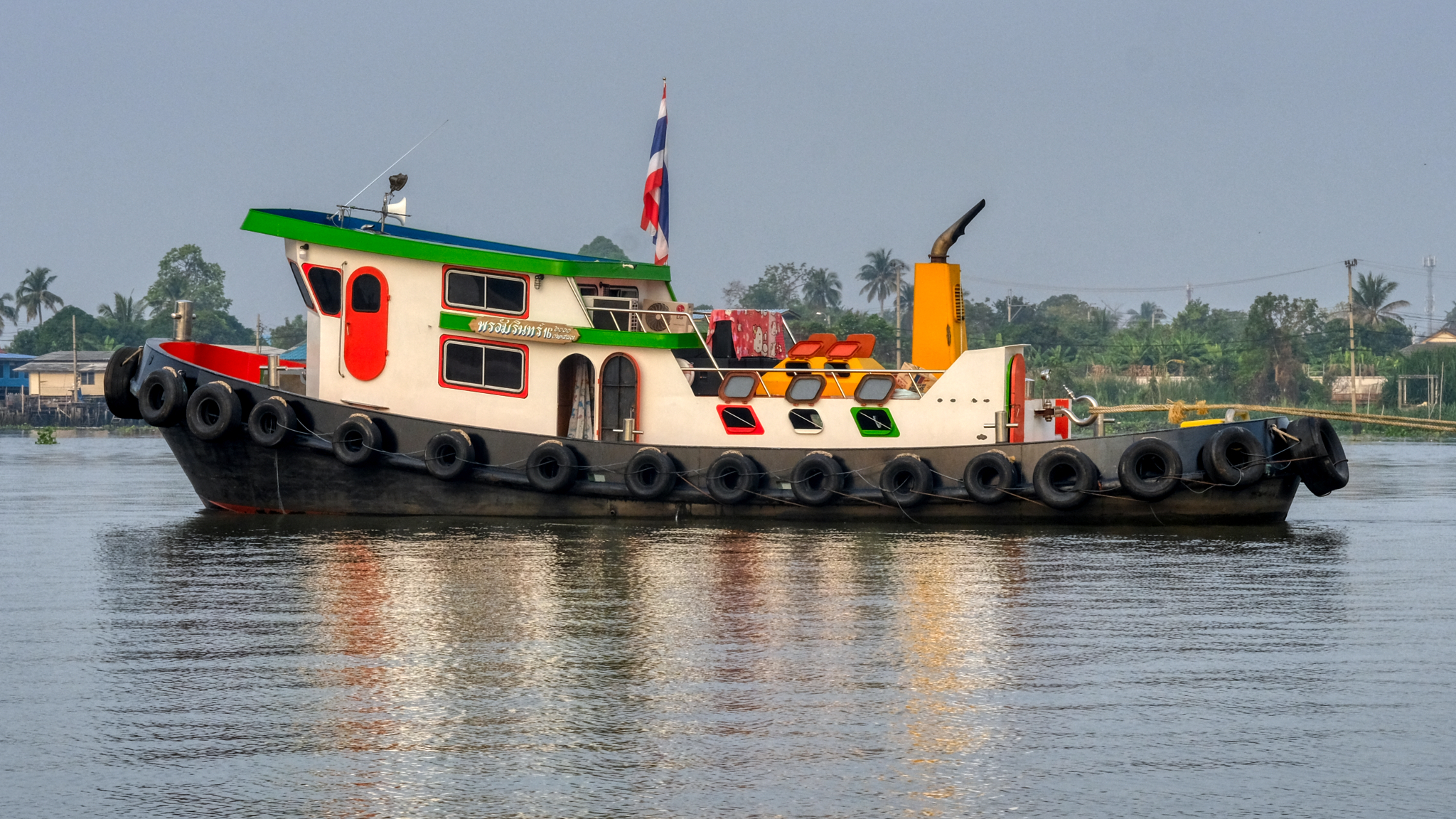 Magnificent and powerful: a Chao Phraya River tug boat.
Magnificent and powerful: a Chao Phraya River tug boat.
 Many fabulous Buddhist wats can be seen on my morning journey.
Many fabulous Buddhist wats can be seen on my morning journey.
 A loaded barge train passes a giant Buddha statue. I watched this colossal Buddha being built over the last three years from my seat on the express boat. It is now finished. I must make a pilgrimage to this wat soon to pay my respects and make a donation in thanks for the wonderful reminder it provides every morning to make something of my consciousness.
A loaded barge train passes a giant Buddha statue. I watched this colossal Buddha being built over the last three years from my seat on the express boat. It is now finished. I must make a pilgrimage to this wat soon to pay my respects and make a donation in thanks for the wonderful reminder it provides every morning to make something of my consciousness.
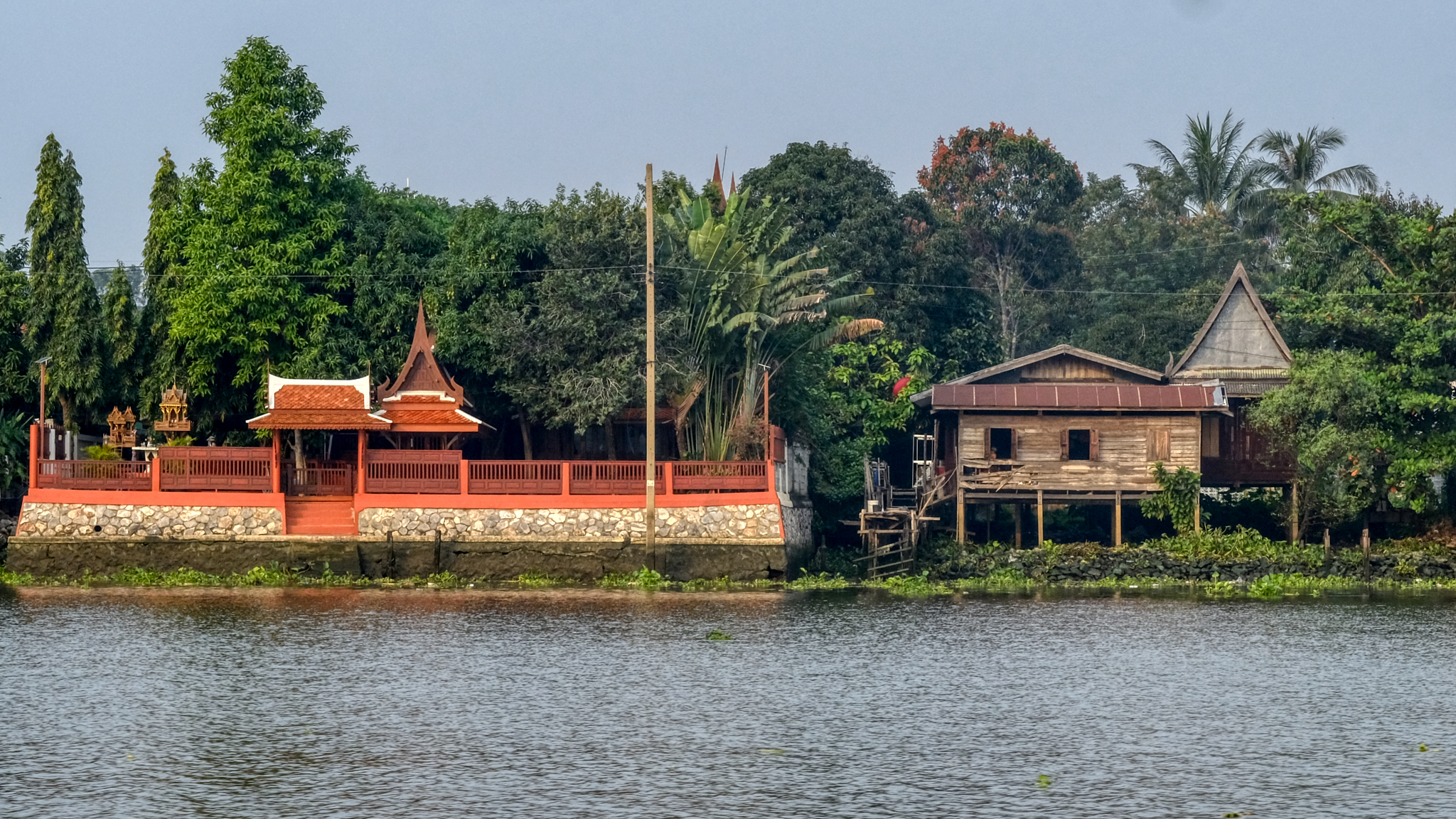 Traditional Thai architecture, old and new.
Traditional Thai architecture, old and new.
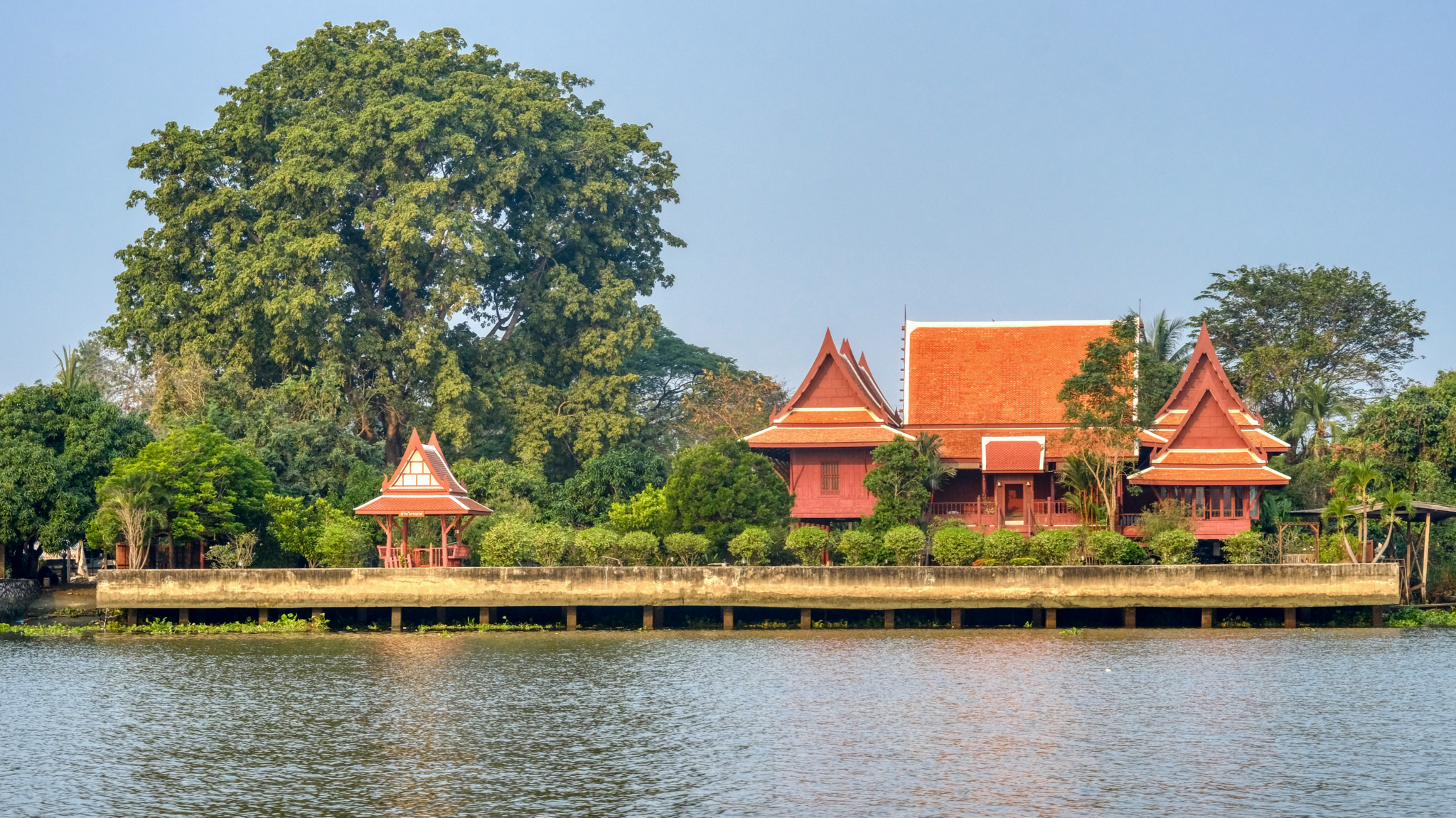 Another of my dream houses. I've been following its renovation from afar for quite some time.
Another of my dream houses. I've been following its renovation from afar for quite some time.
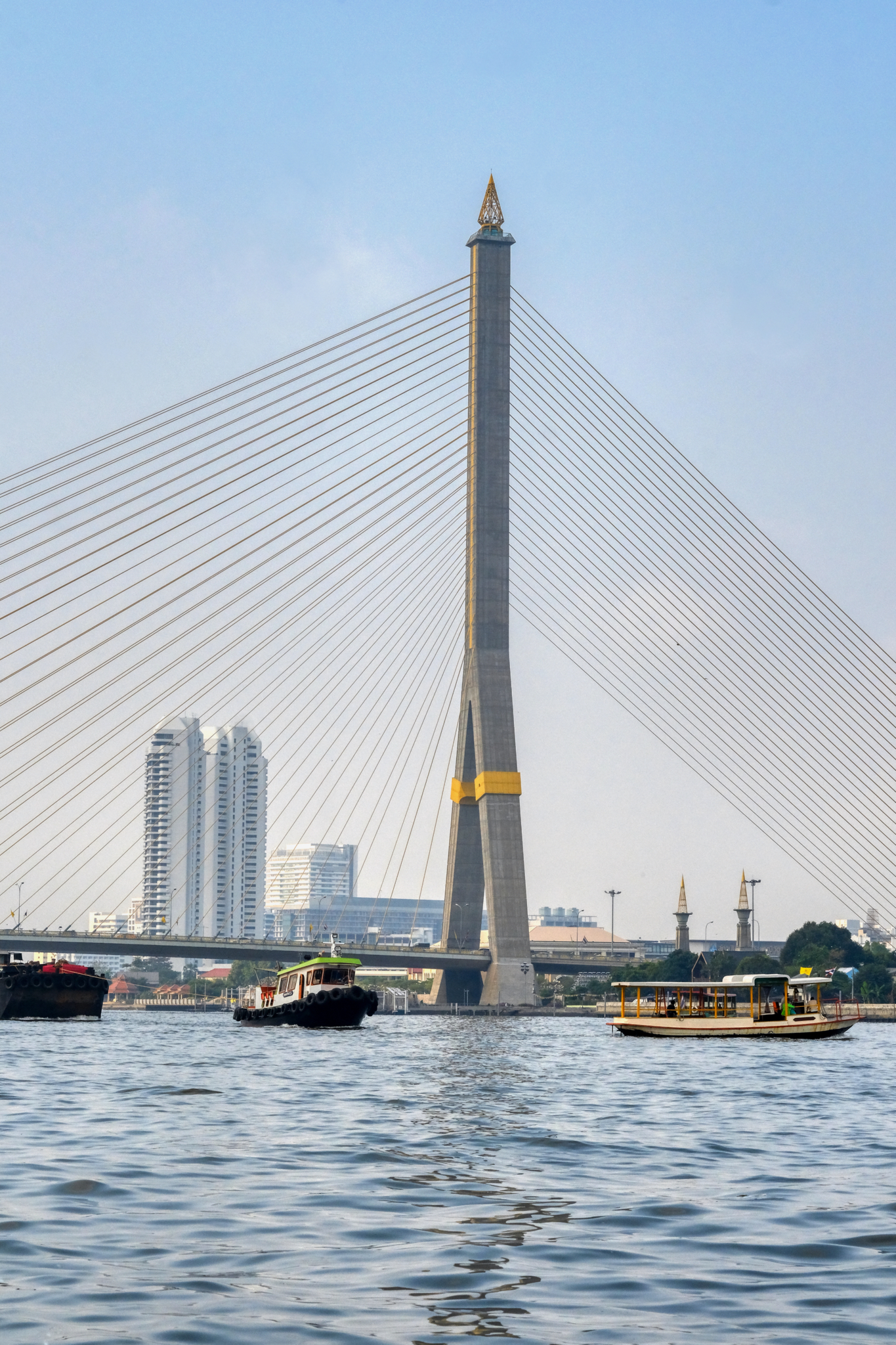 I pass under four bridges on my way to work.
I pass under four bridges on my way to work.
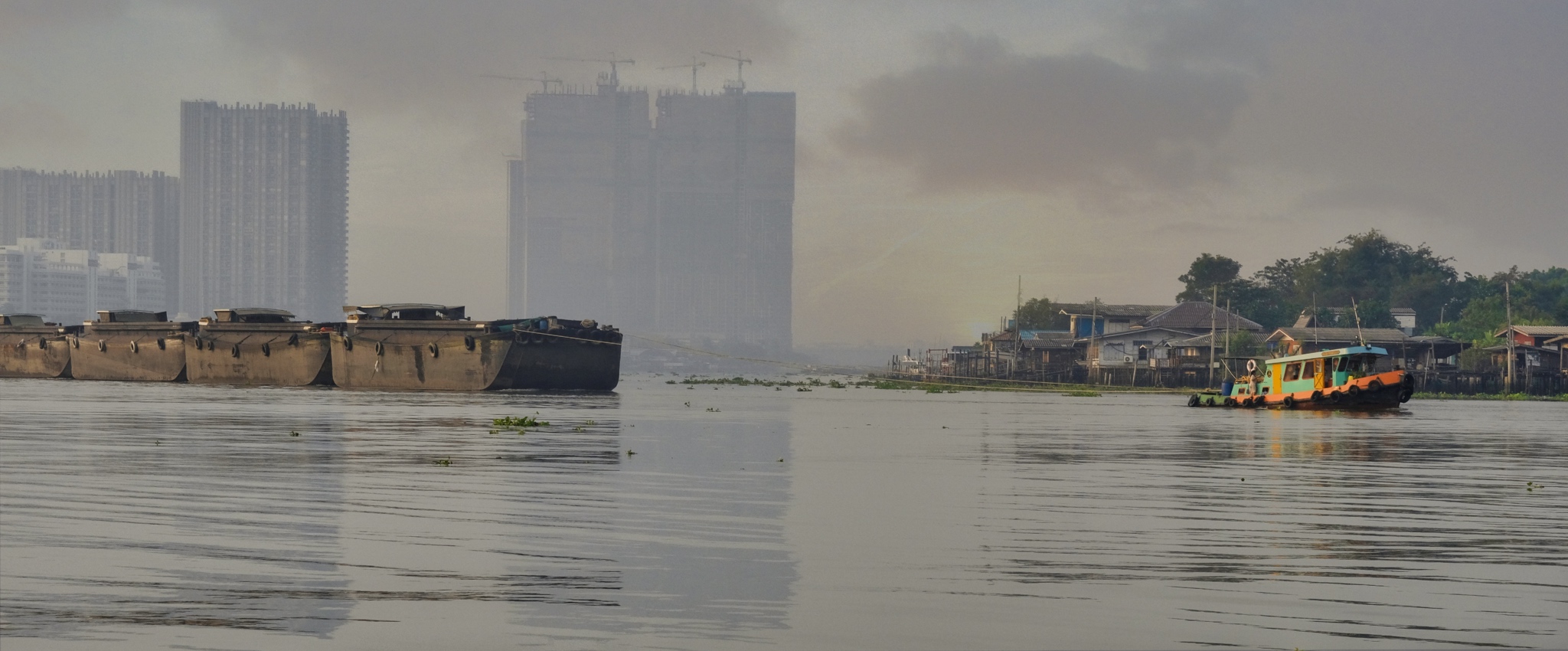 Further down the river and into fast growing Bangkok, a city of 14 million people . . . and the dusty, smoky air that it creates.
Further down the river and into fast growing Bangkok, a city of 14 million people . . . and the dusty, smoky air that it creates.
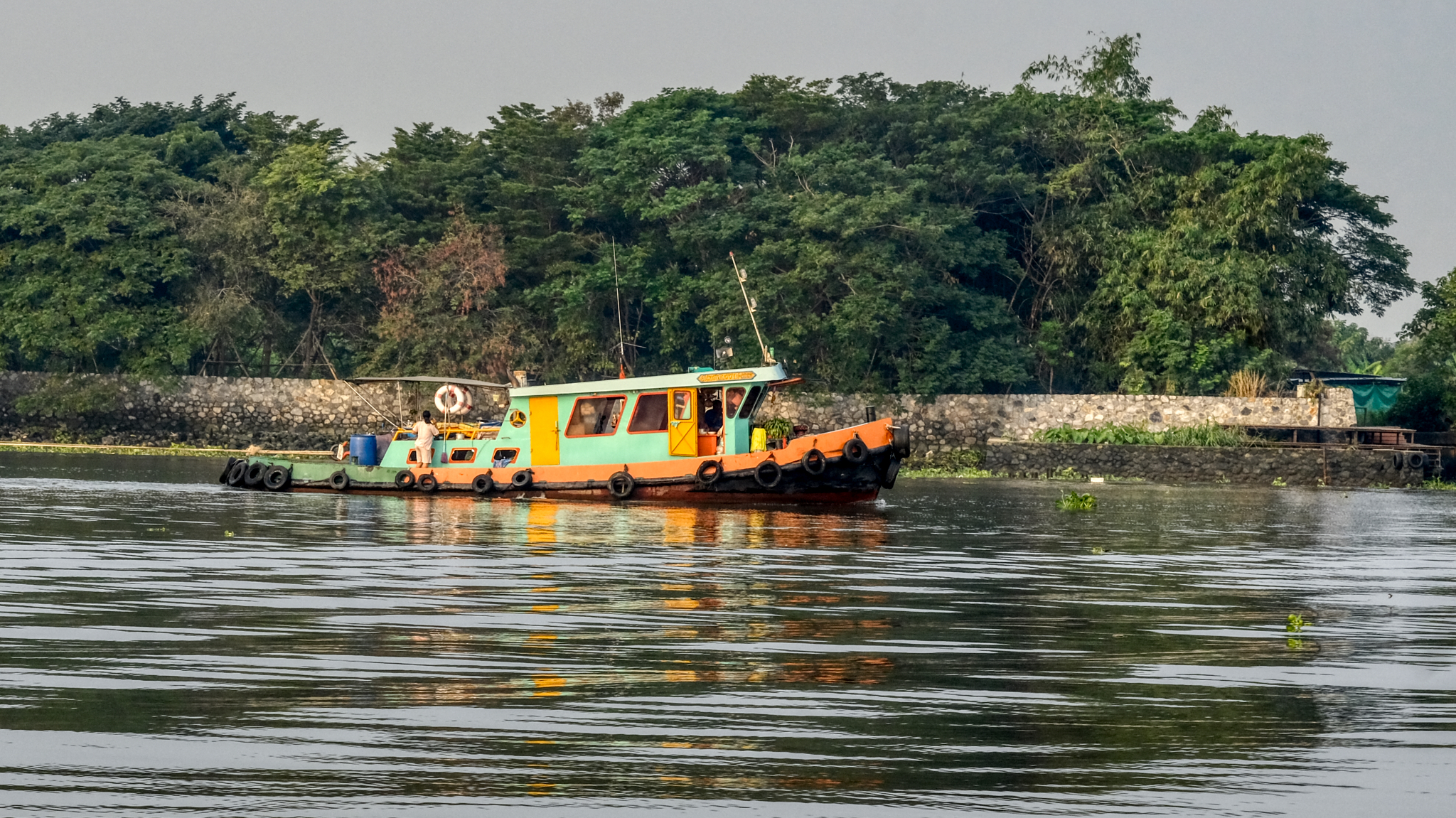 The river tug boats come in many sizes and colors.
The river tug boats come in many sizes and colors.
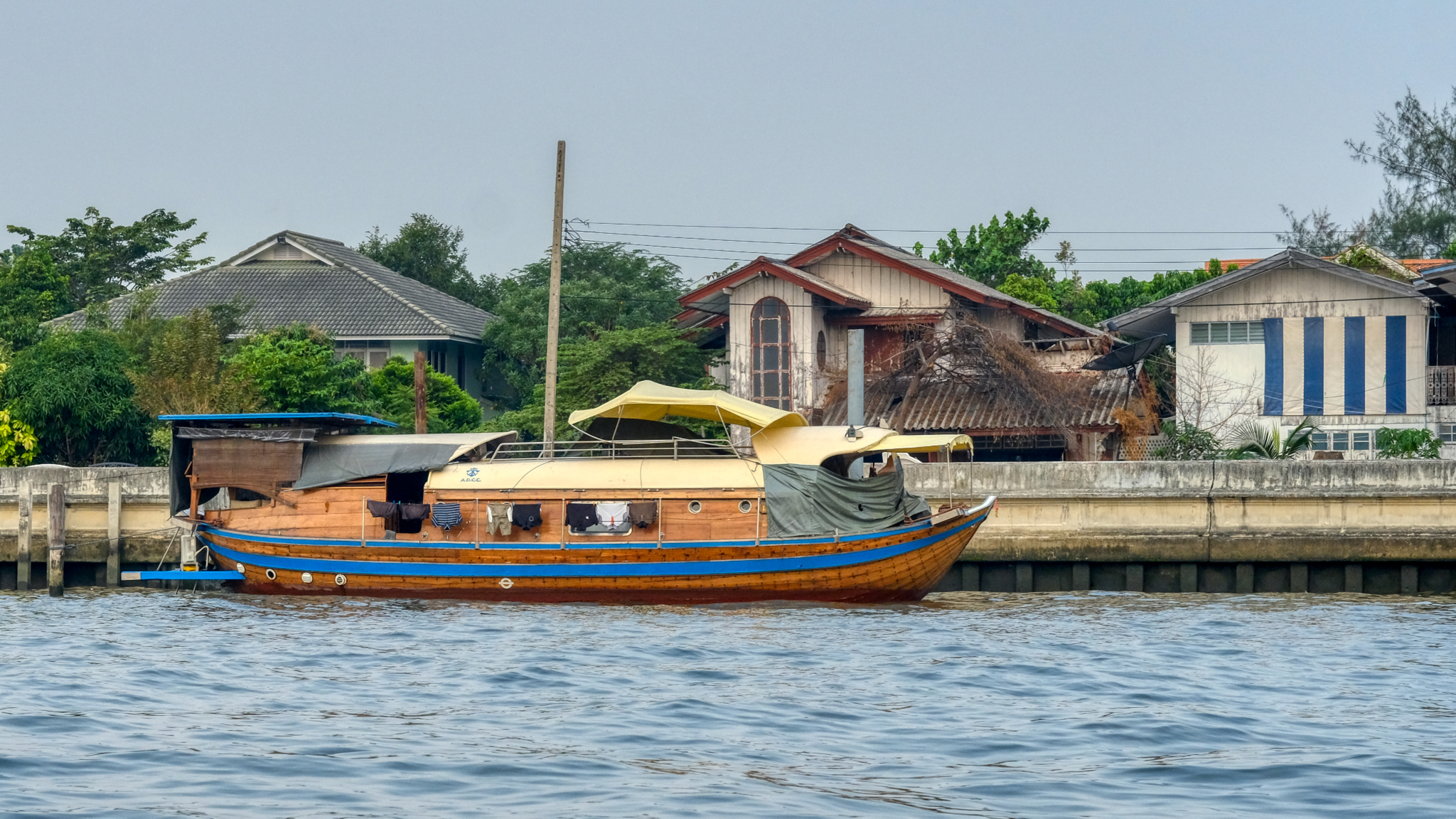 These barges, known as rice barges, were made of teak wood in former days. They are often now converted to self-propelled cabin boats for the tourist trade.
These barges, known as rice barges, were made of teak wood in former days. They are often now converted to self-propelled cabin boats for the tourist trade.
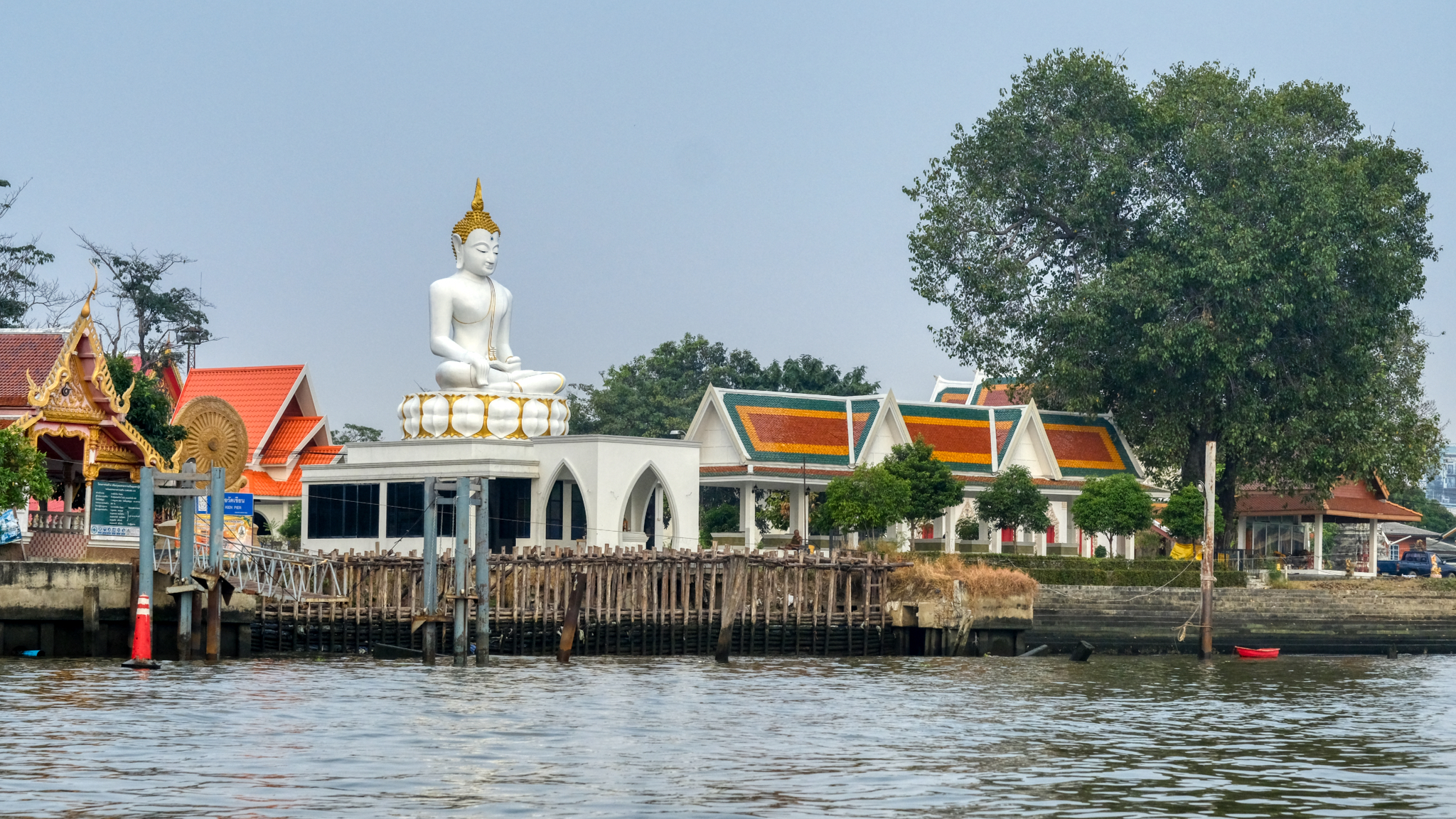 Whenever I see this particular Buddha image I wai and get up and walk to the disembarkation deck of the express boat; my stop is next.
Whenever I see this particular Buddha image I wai and get up and walk to the disembarkation deck of the express boat; my stop is next.
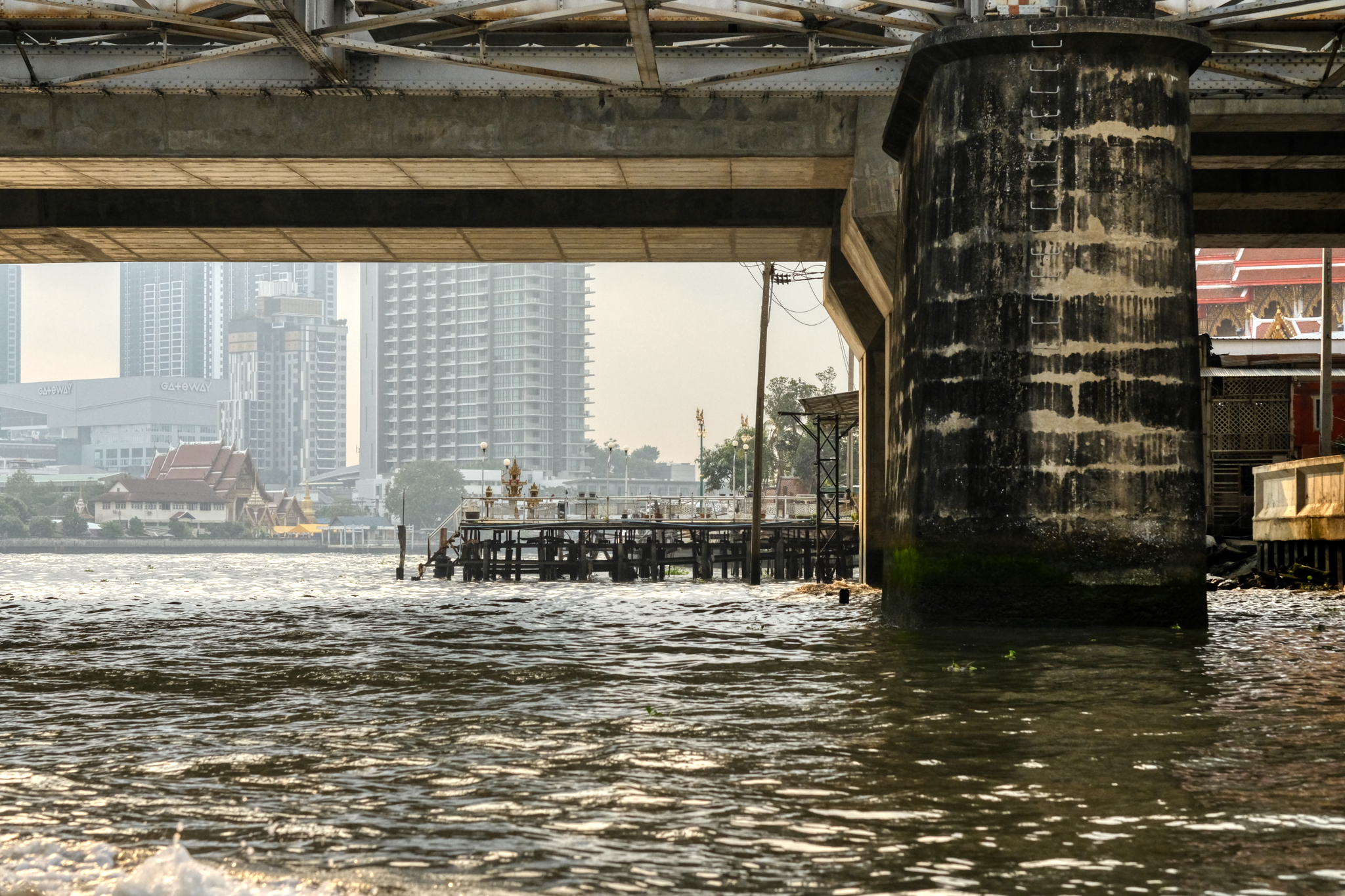 This is where I would normally get off the express boat, at the Rama VII Bridge, and walk the remaining one kilometer to my university job . . . but I am travelling on into the city this morning with a friend to see the Pak Khlong Flower Market.
This is where I would normally get off the express boat, at the Rama VII Bridge, and walk the remaining one kilometer to my university job . . . but I am travelling on into the city this morning with a friend to see the Pak Khlong Flower Market.
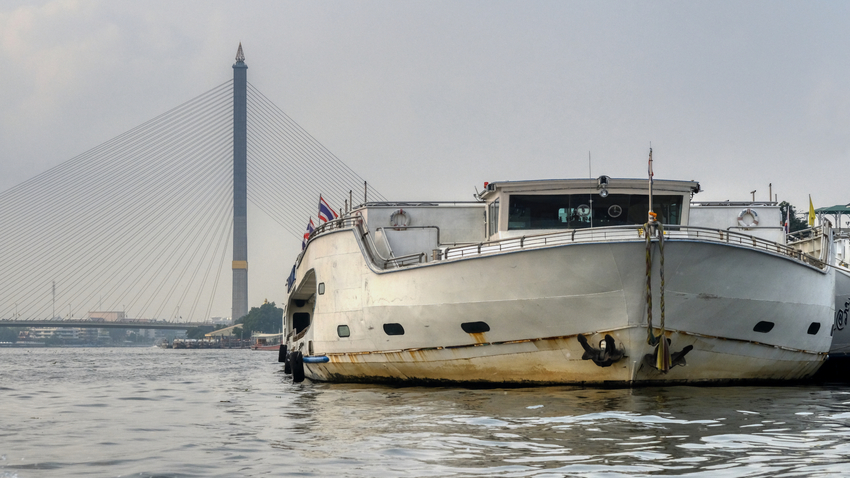 Down near the touristy part of the city are parked the large restaurant barges that specialize in night dining cruises through the lit city. I've done it.
Down near the touristy part of the city are parked the large restaurant barges that specialize in night dining cruises through the lit city. I've done it.
 Many tourist boats on the lower river . . . but almost no tourists in Thailand today. I worry for the Thai people who depend on tourist-related income.
Many tourist boats on the lower river . . . but almost no tourists in Thailand today. I worry for the Thai people who depend on tourist-related income.
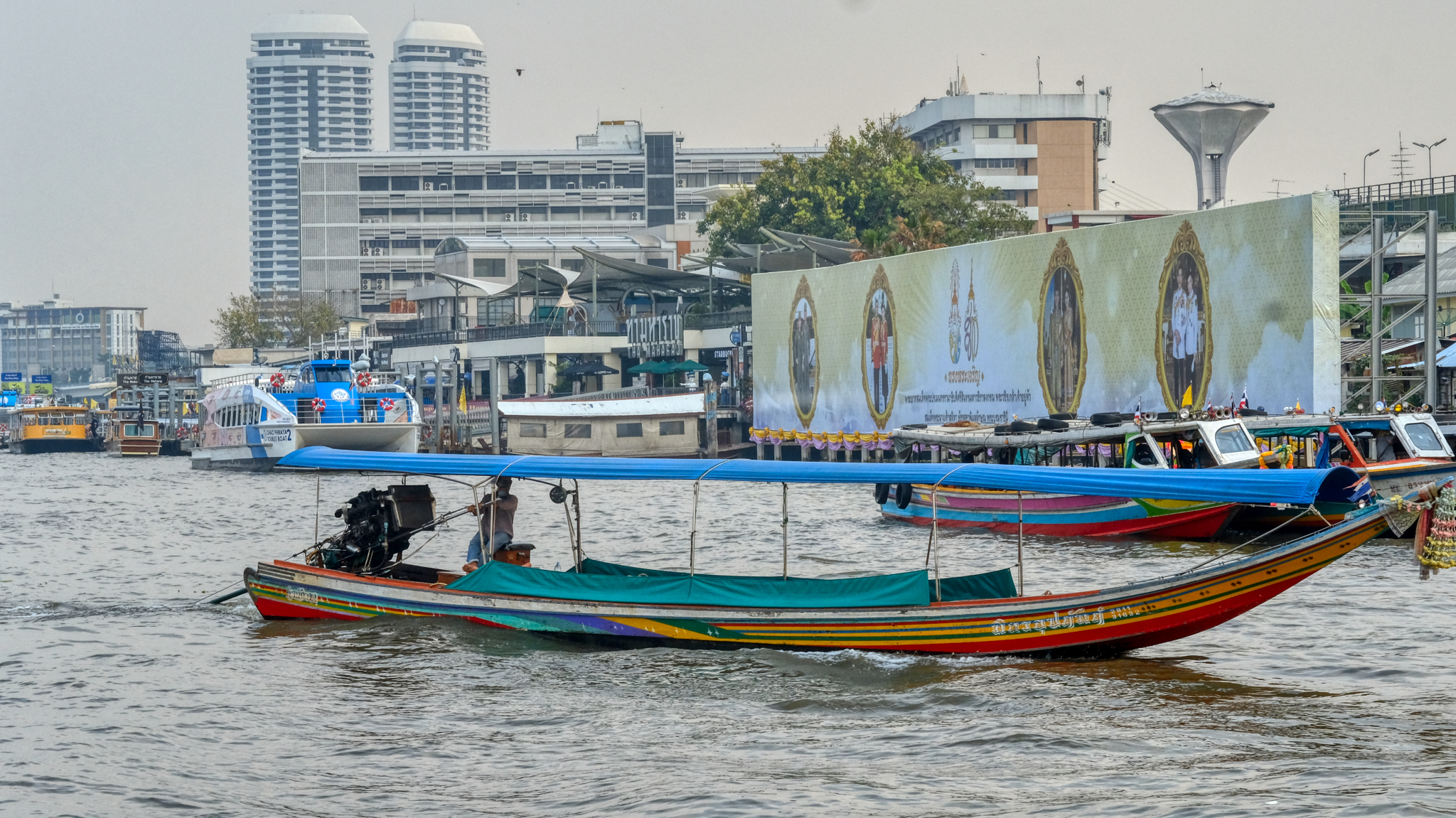 We got off the green flag Chao Phraya Express boat near here. The long-tail boat jockeys maneuvering for a fare.
We got off the green flag Chao Phraya Express boat near here. The long-tail boat jockeys maneuvering for a fare.
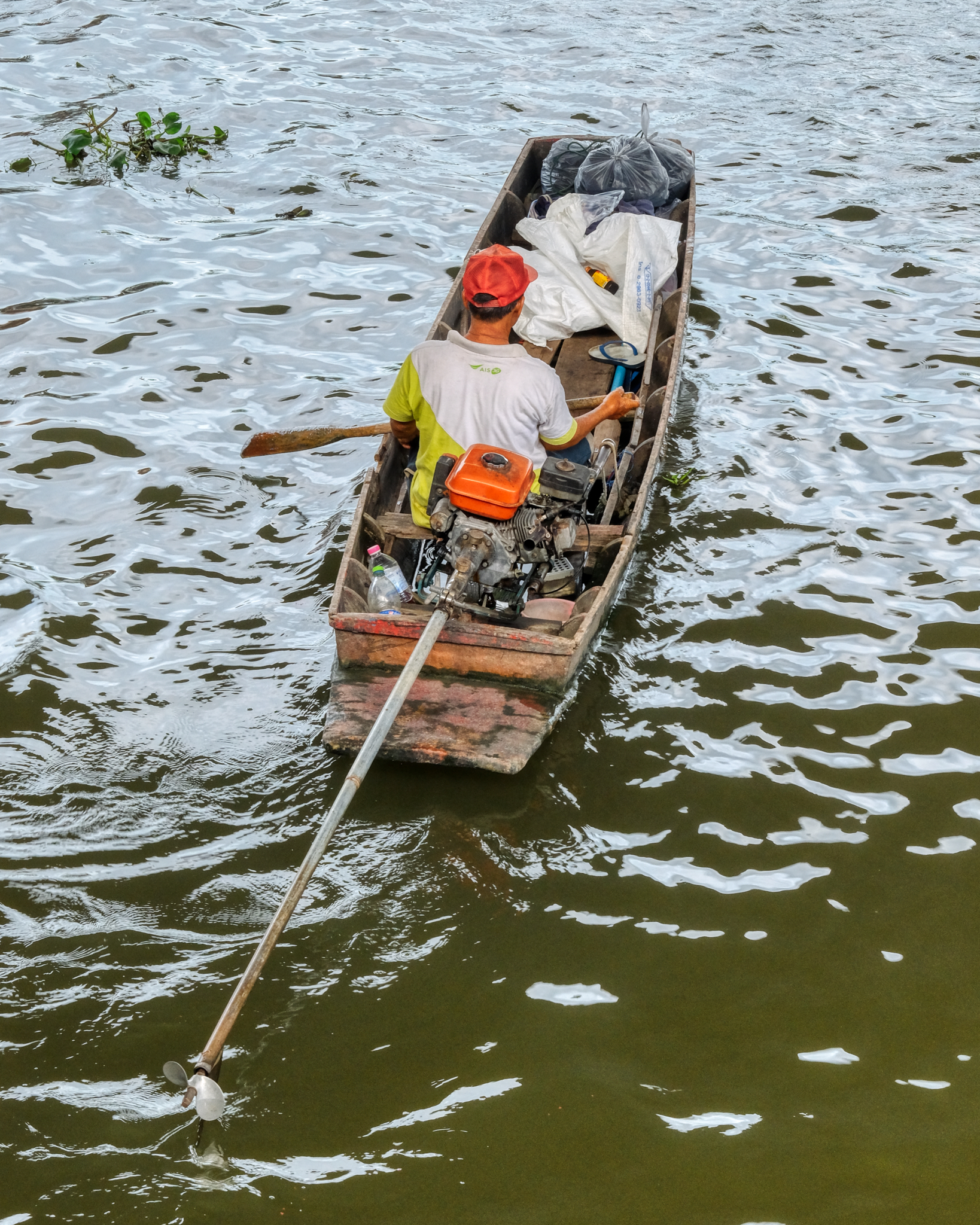
I miss all of this. This is my normal . . .
Phenomenal Angkor Wat, Cambodia
 Thursday, March 5, 2020 at 3:05PM
Thursday, March 5, 2020 at 3:05PM 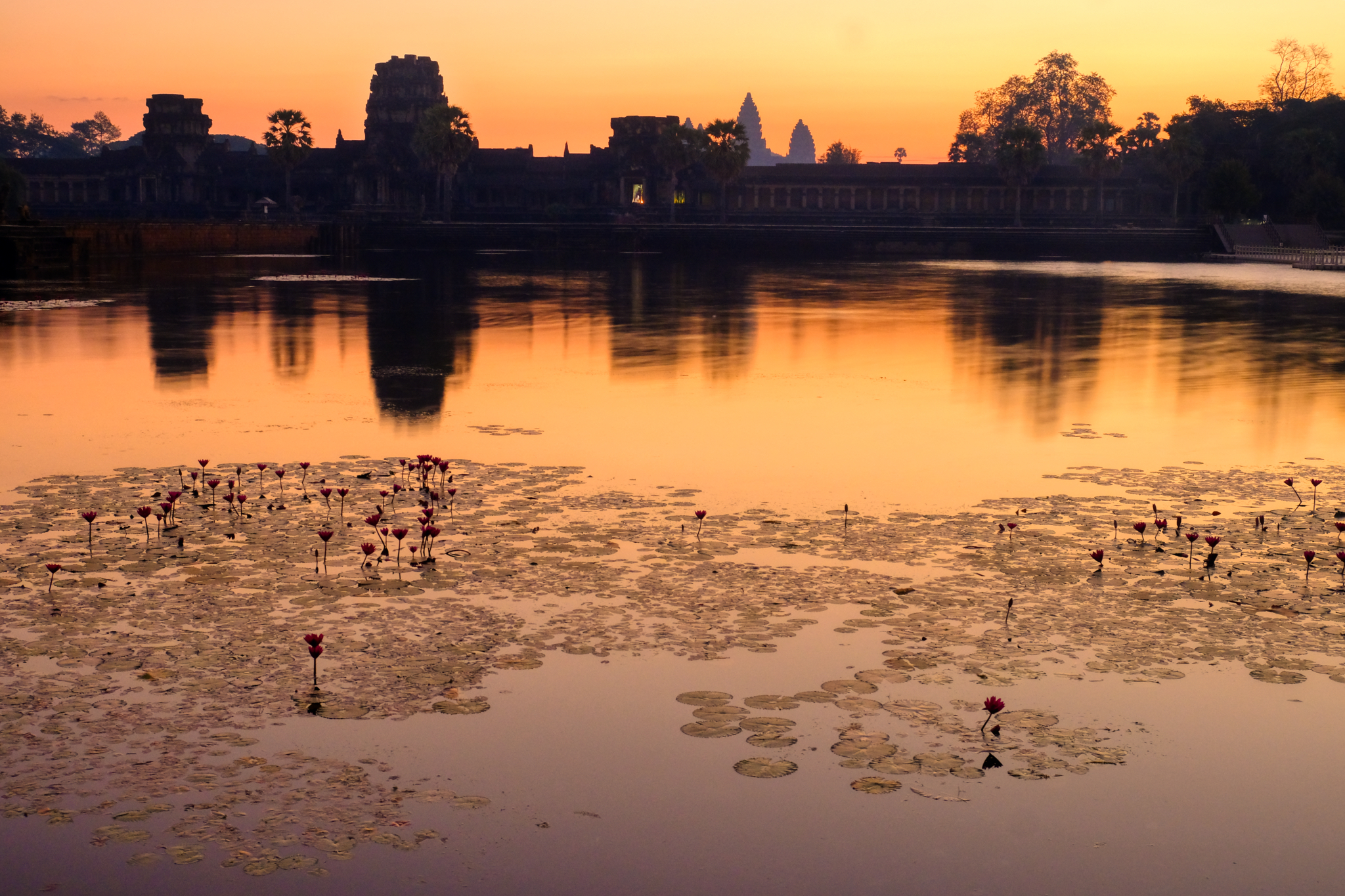 First light at Angkor Wat main complex.
First light at Angkor Wat main complex.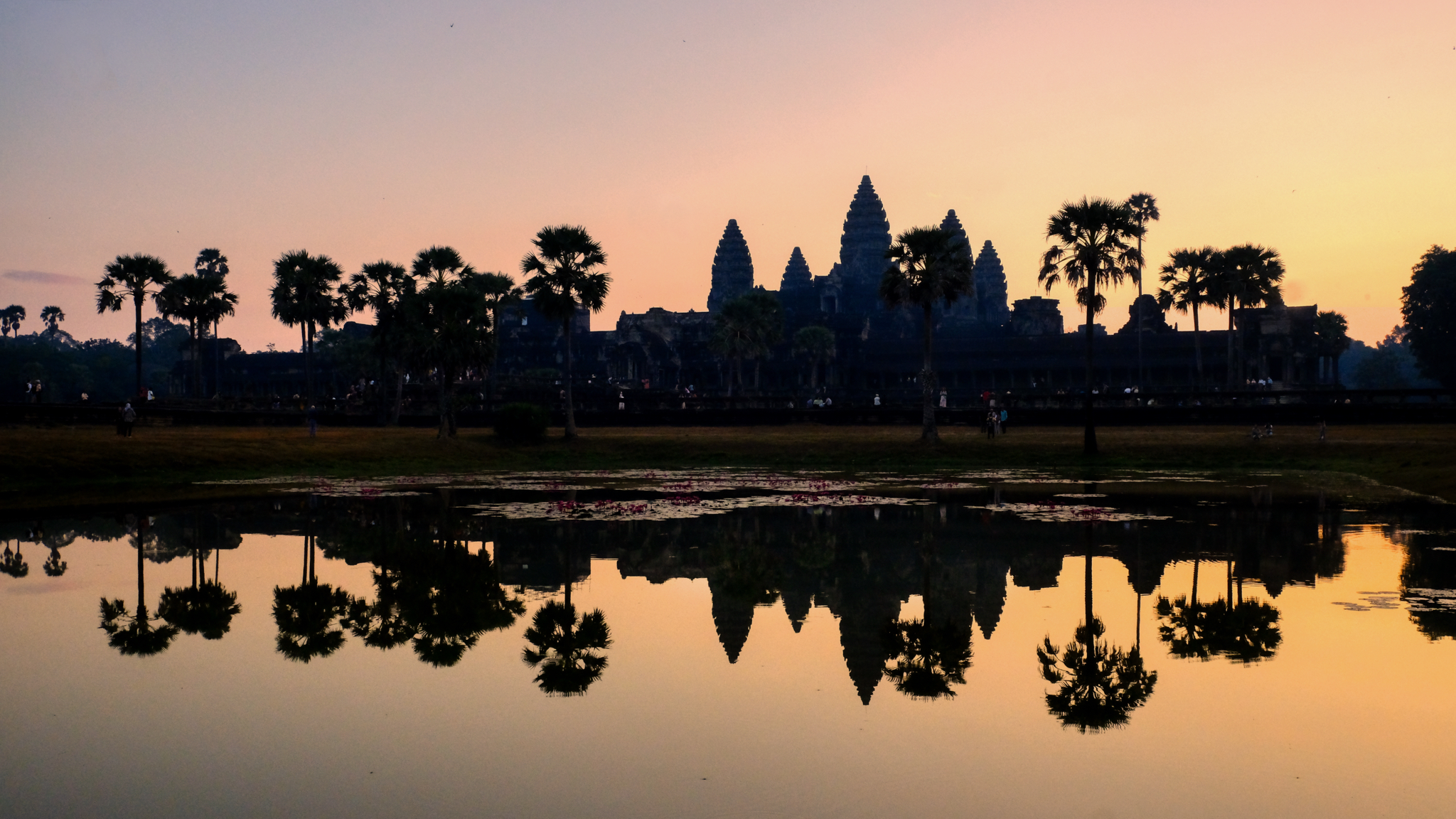 6:00am and already there were thousands of tourists to catch the temples in the magic light. Most of the tourists were either French or Chinese, although I doubt there are many Chinese now that the COVD-9 virus has almost completely halted Chinese tourism.
6:00am and already there were thousands of tourists to catch the temples in the magic light. Most of the tourists were either French or Chinese, although I doubt there are many Chinese now that the COVD-9 virus has almost completely halted Chinese tourism.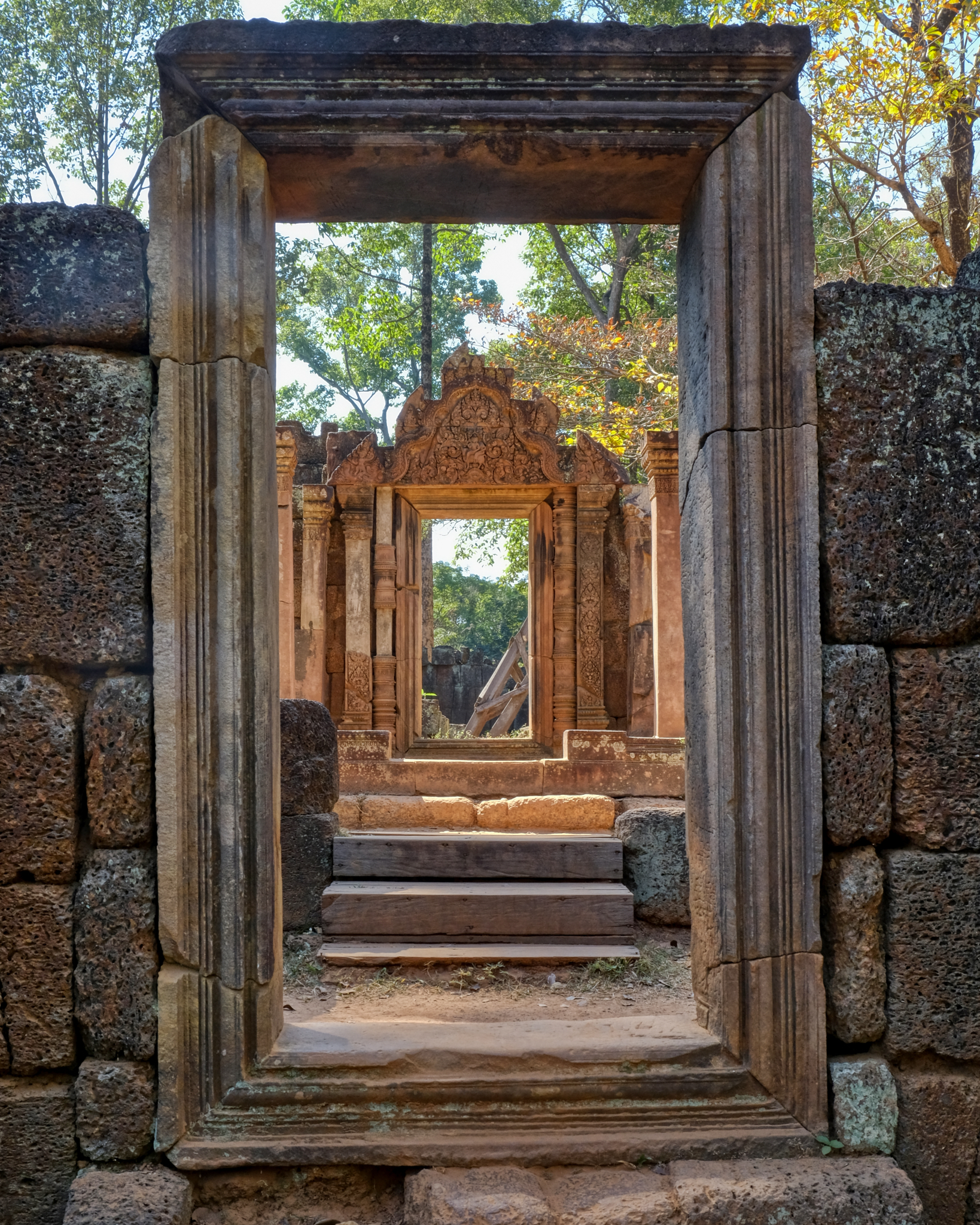 Built 1000 years ago . . . still amazing.
Built 1000 years ago . . . still amazing.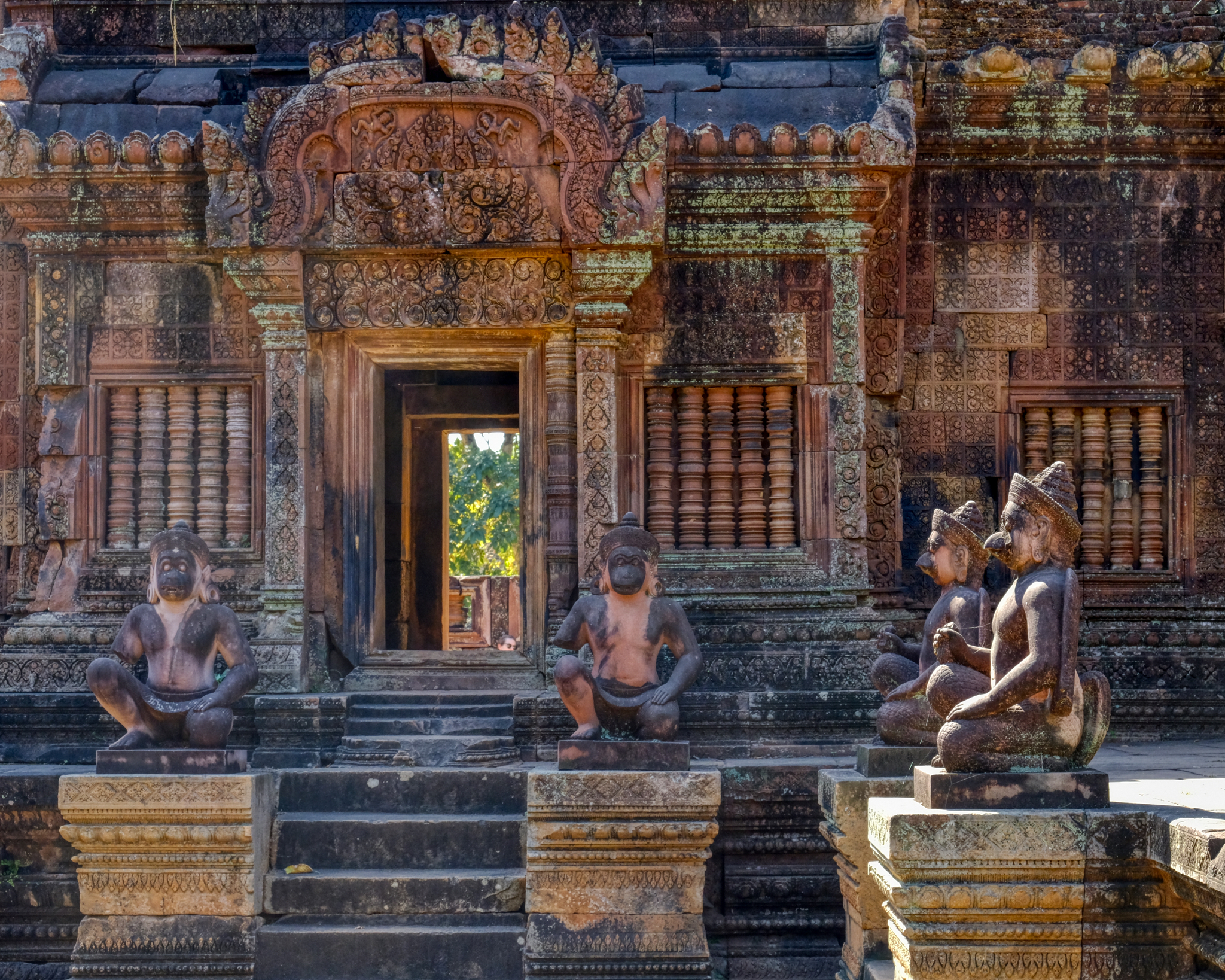 The sheer expanse of temple ruins at Angkor, and the great variety of temple materials and decoration make it well worth spending many days there, as I did in January 2020.
The sheer expanse of temple ruins at Angkor, and the great variety of temple materials and decoration make it well worth spending many days there, as I did in January 2020.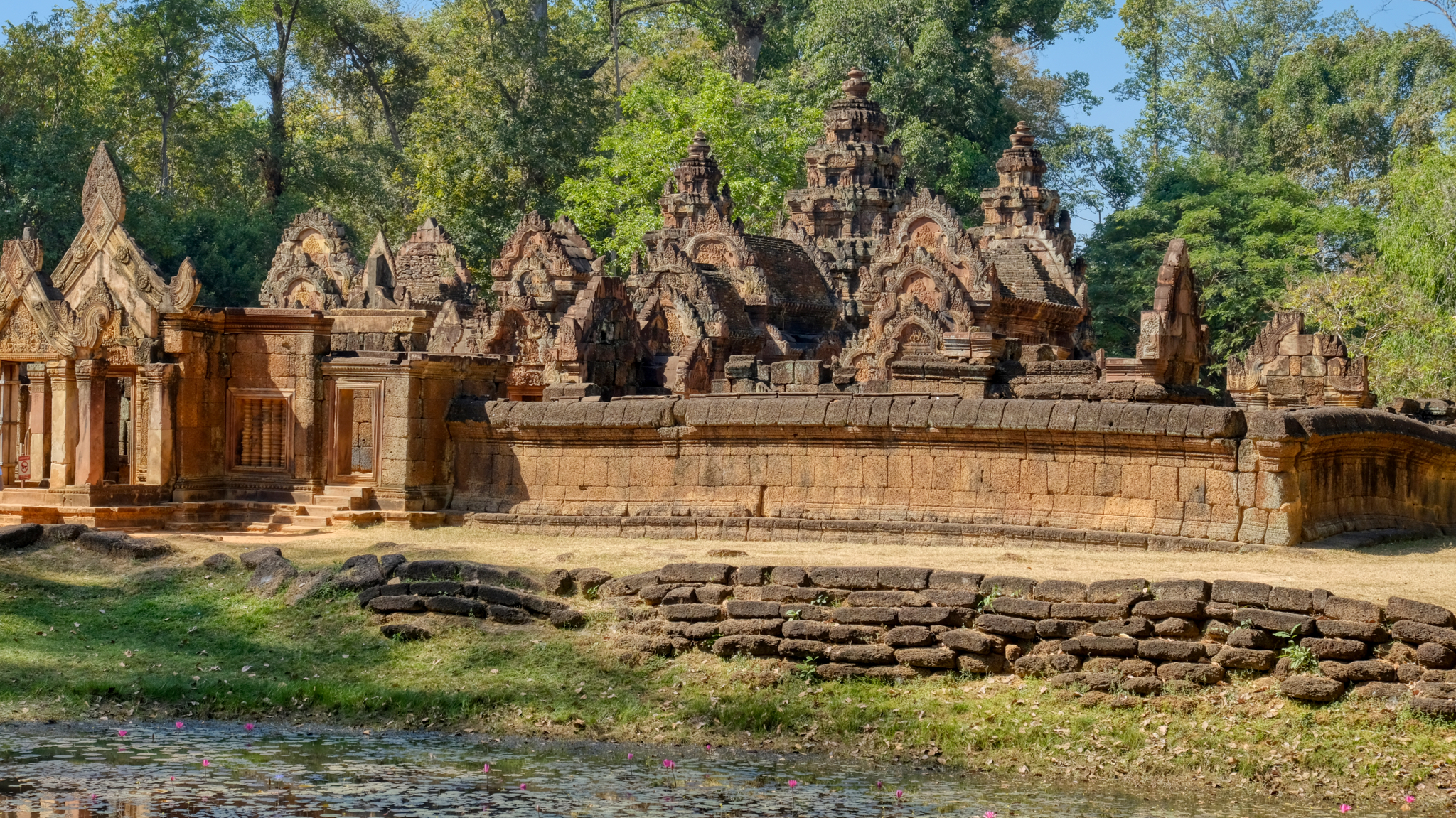 There is so much to see in the Angkor Wat complex - many ancient sites. spread out around many square miles. Here is a small slide show sampling of the sights before we begin.
There is so much to see in the Angkor Wat complex - many ancient sites. spread out around many square miles. Here is a small slide show sampling of the sights before we begin.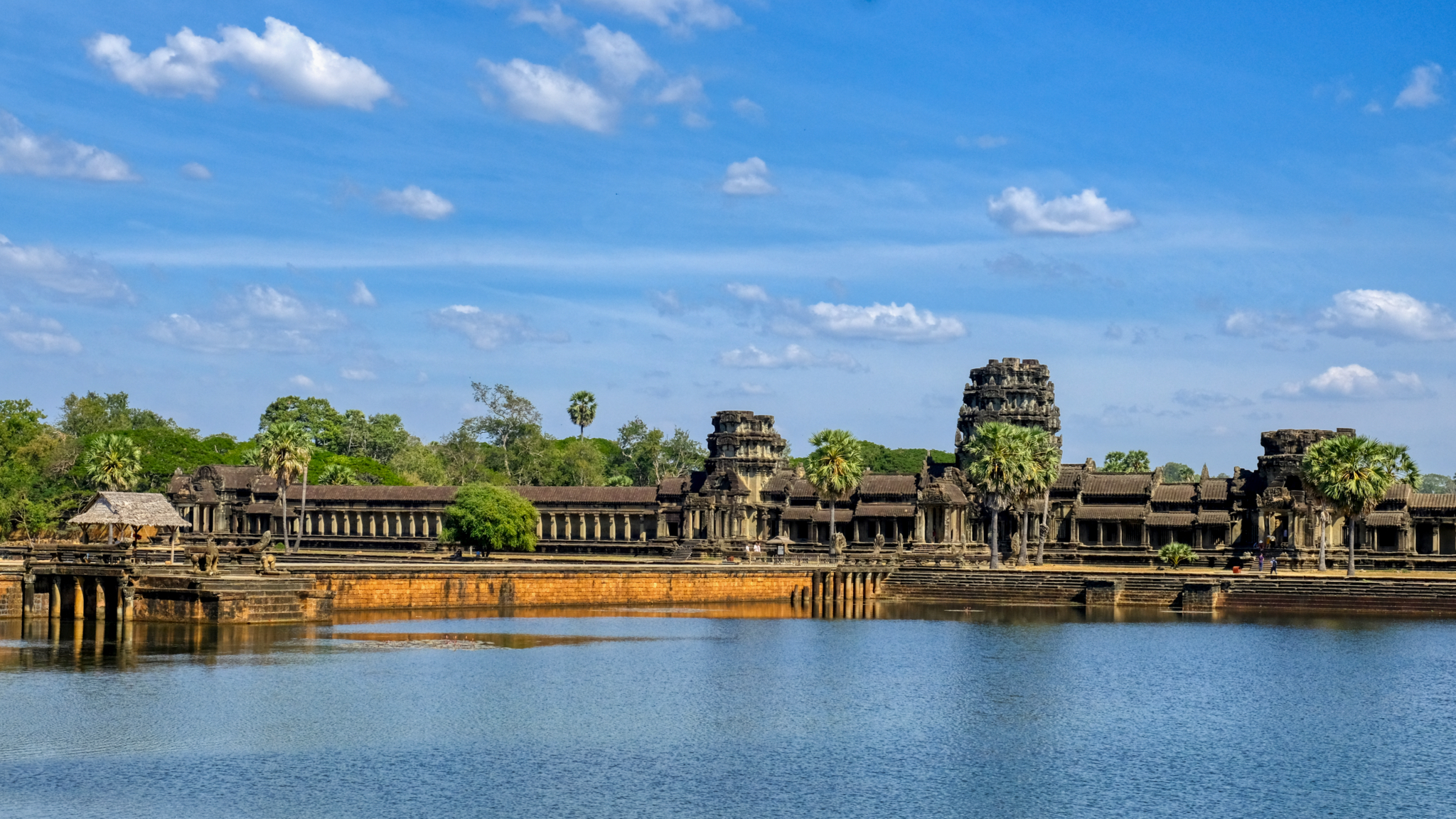 There is a main Angkor Wat temple with a grand entry across a beautiful pond.
There is a main Angkor Wat temple with a grand entry across a beautiful pond.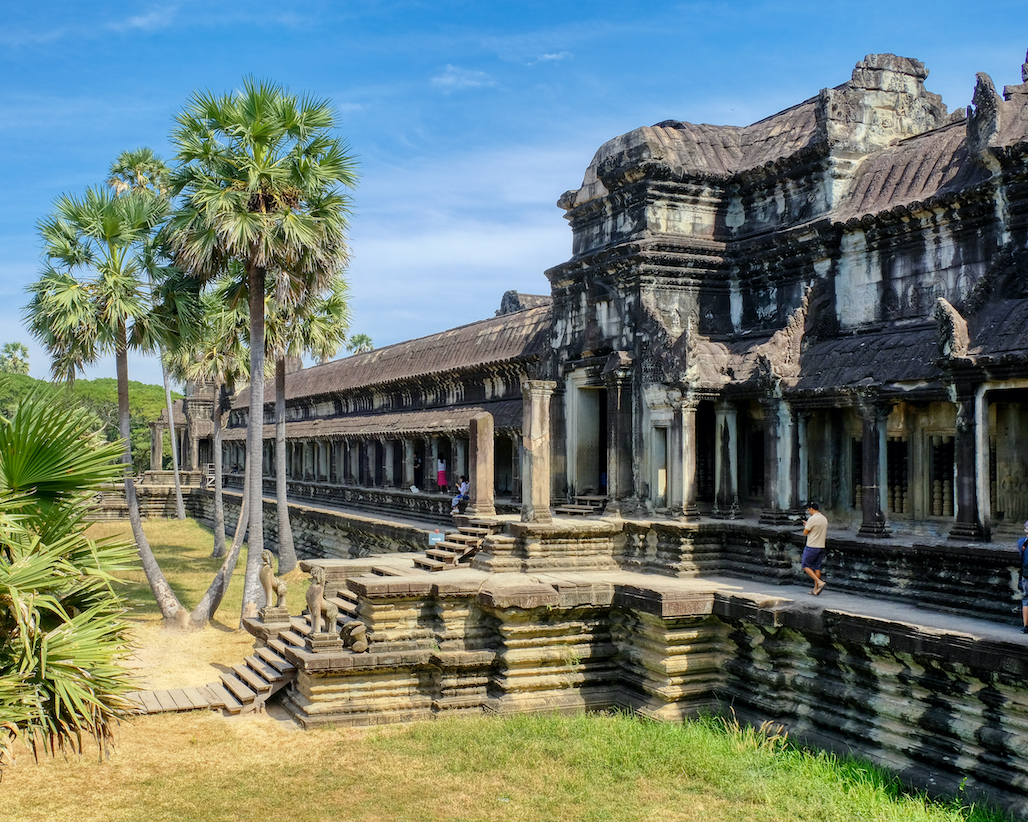 Just inside the "entry" gate.
Just inside the "entry" gate.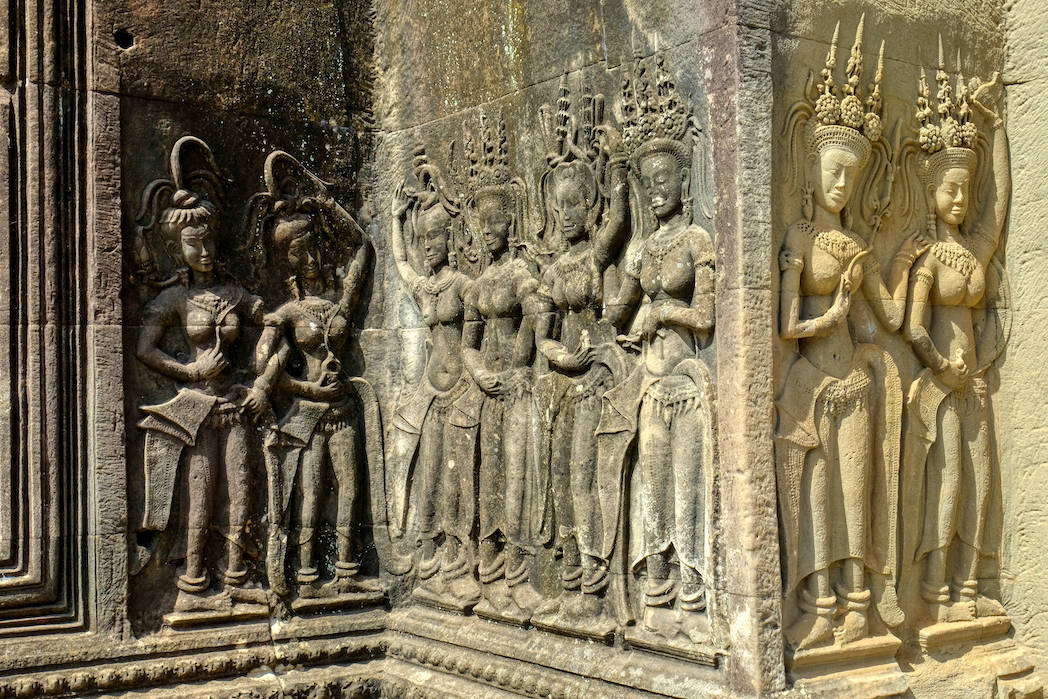 The interior and exterior surfaces are all nearly completely carved in panels of patterns and figures.
The interior and exterior surfaces are all nearly completely carved in panels of patterns and figures.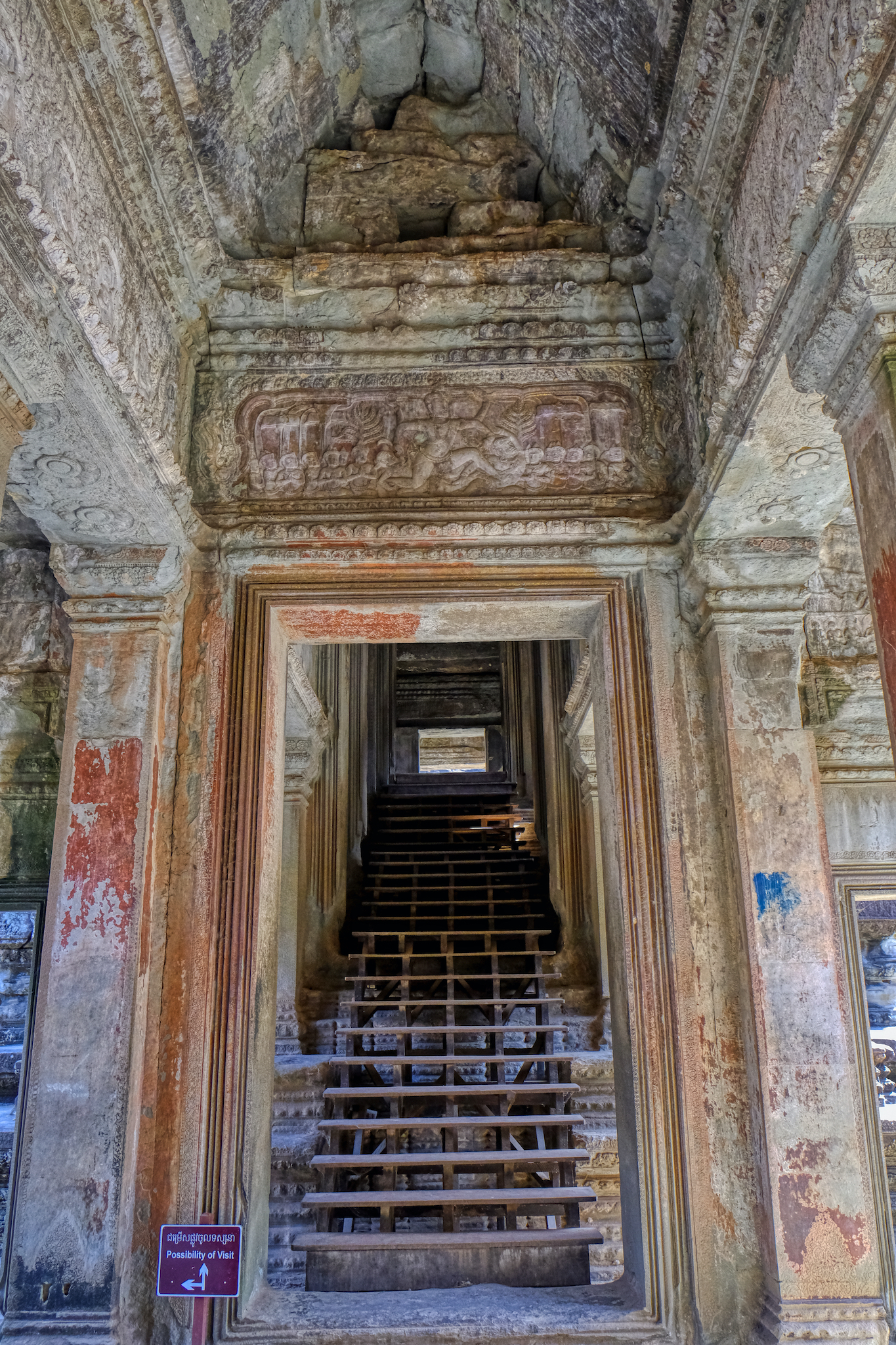
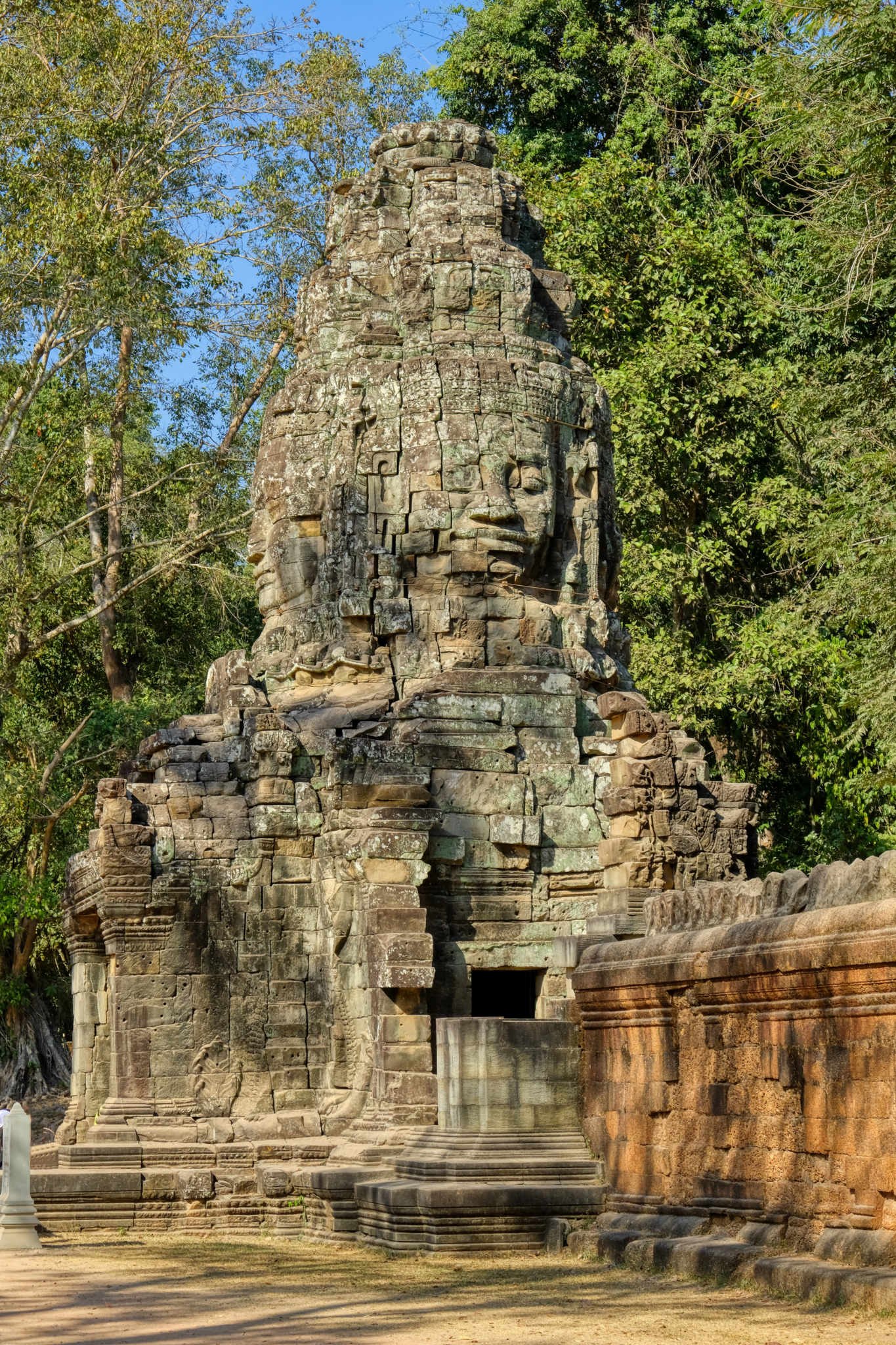 The many temple complexes are surrounded by high walls and often moats. All have four gates; one each facing north, south, east, and west.
The many temple complexes are surrounded by high walls and often moats. All have four gates; one each facing north, south, east, and west.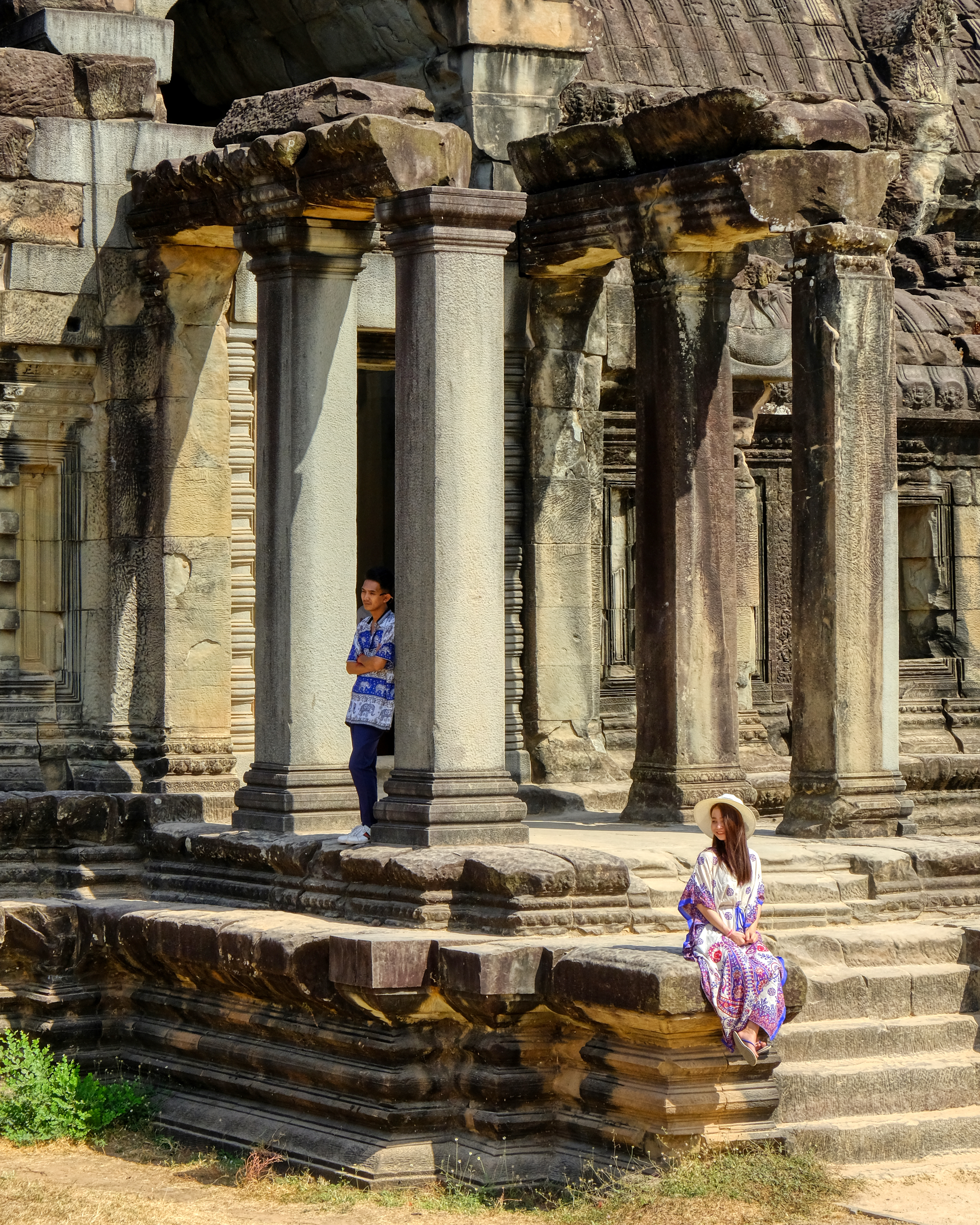 Inside the the main temple grounds, tourists stop to pose among the ruins. Thank you.
Inside the the main temple grounds, tourists stop to pose among the ruins. Thank you.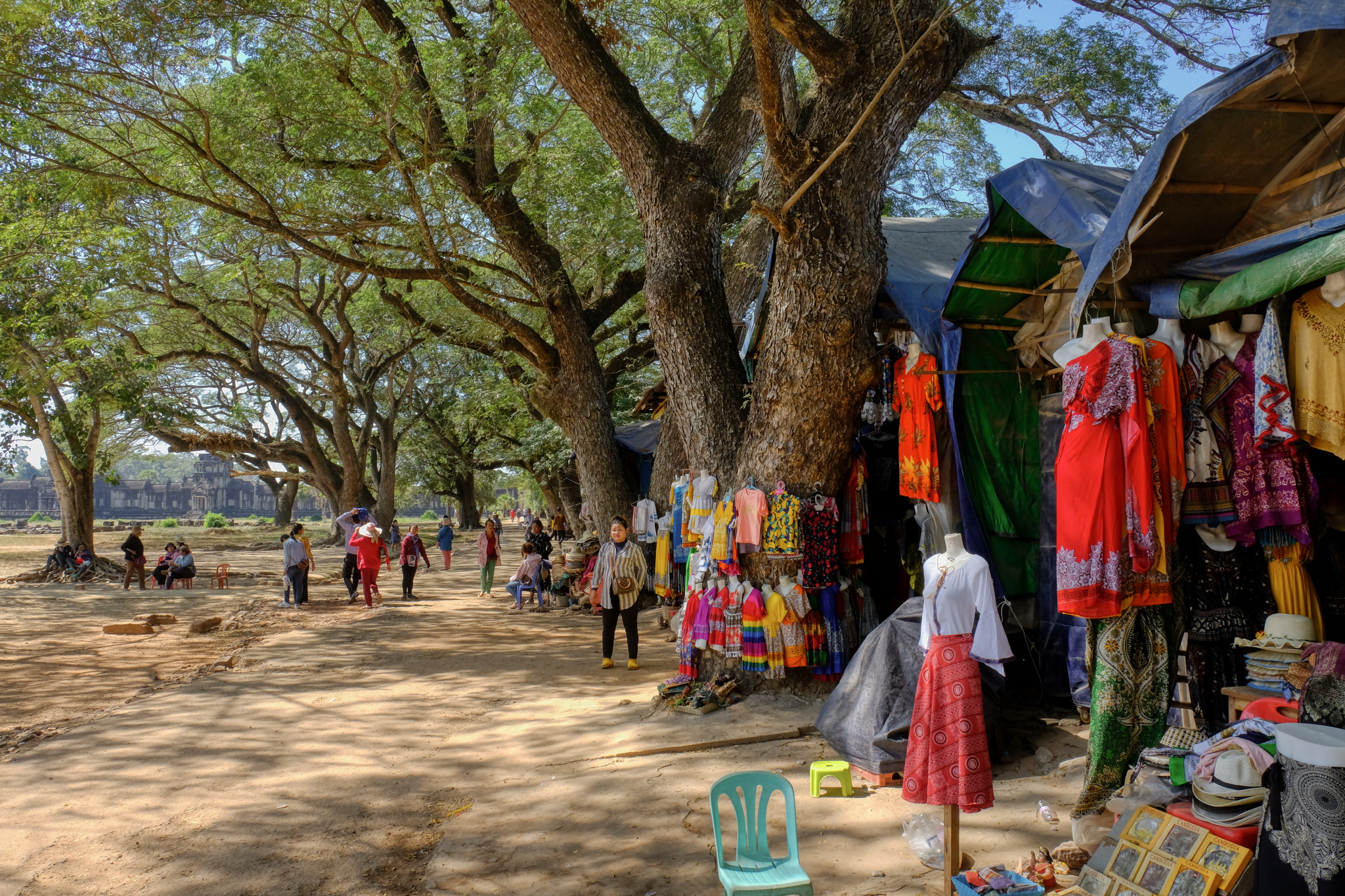 Curious vendors here and there. Yes, I bought the t-shirt. Of course I did
Curious vendors here and there. Yes, I bought the t-shirt. Of course I did Through and into a temple gatehouse structure.
Through and into a temple gatehouse structure.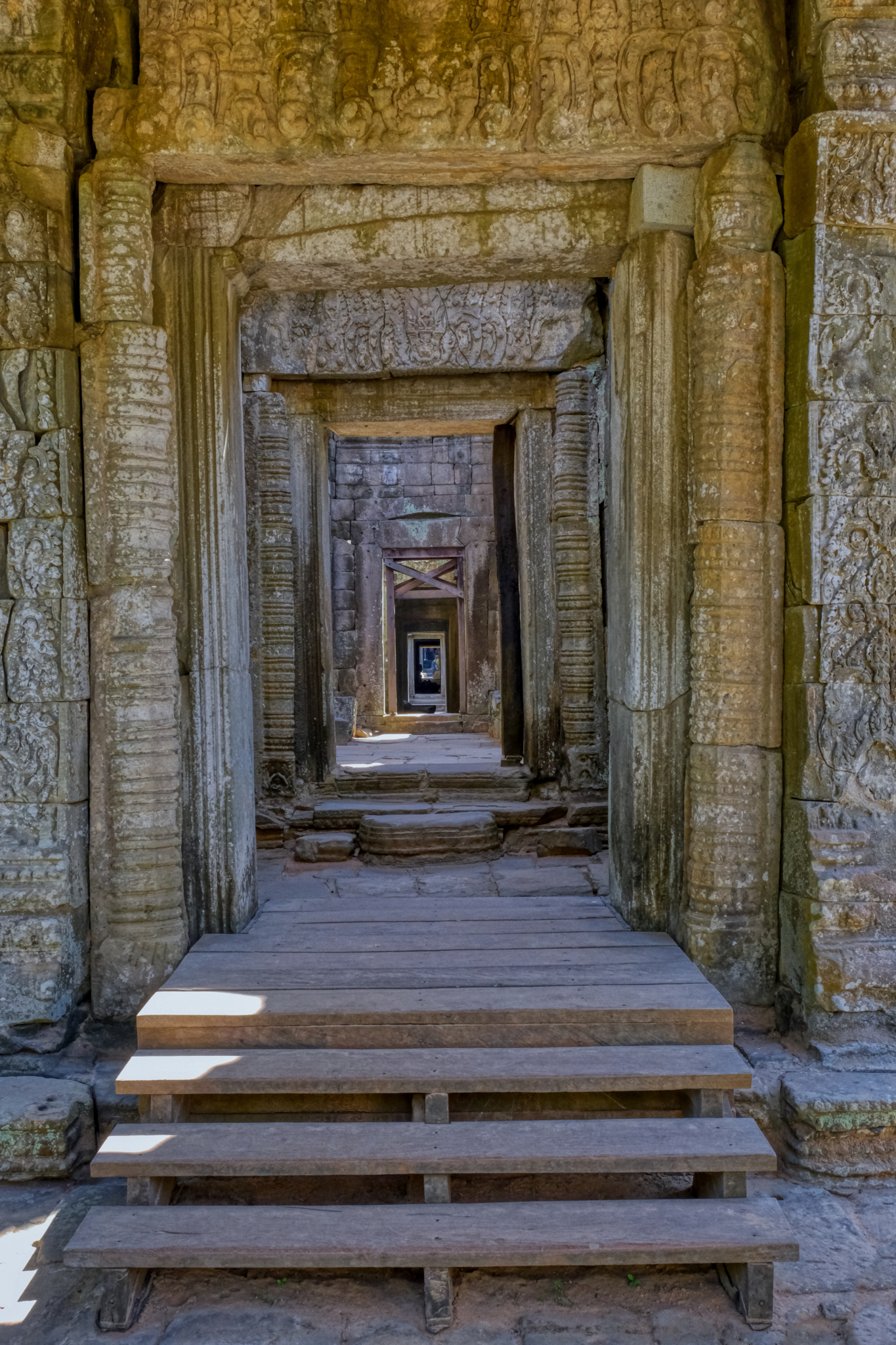 Inside the temples there are inviting and mysterious passages everywhere.
Inside the temples there are inviting and mysterious passages everywhere.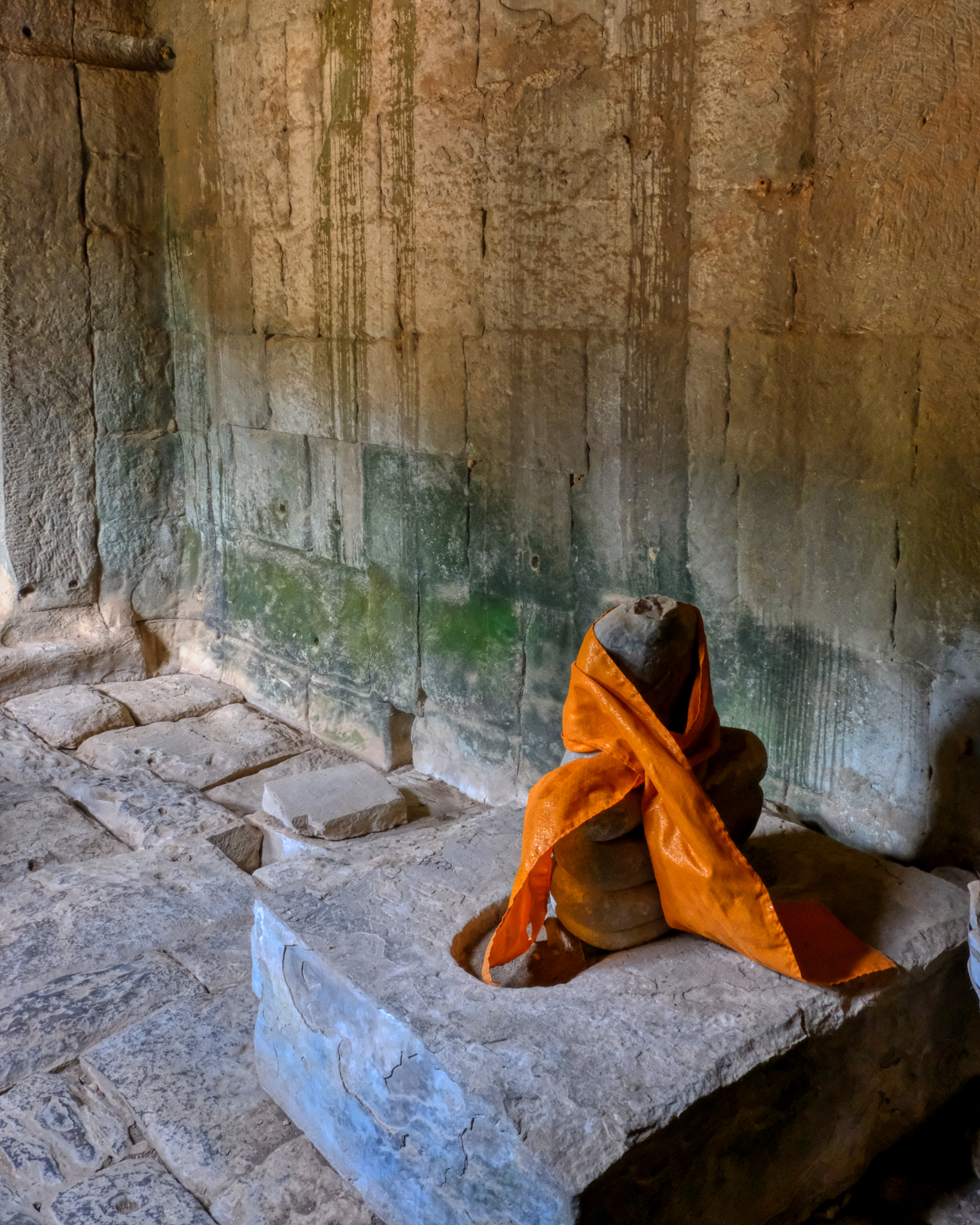 Although headless, many of the ancient Buddha relics are still tended by local followers.
Although headless, many of the ancient Buddha relics are still tended by local followers.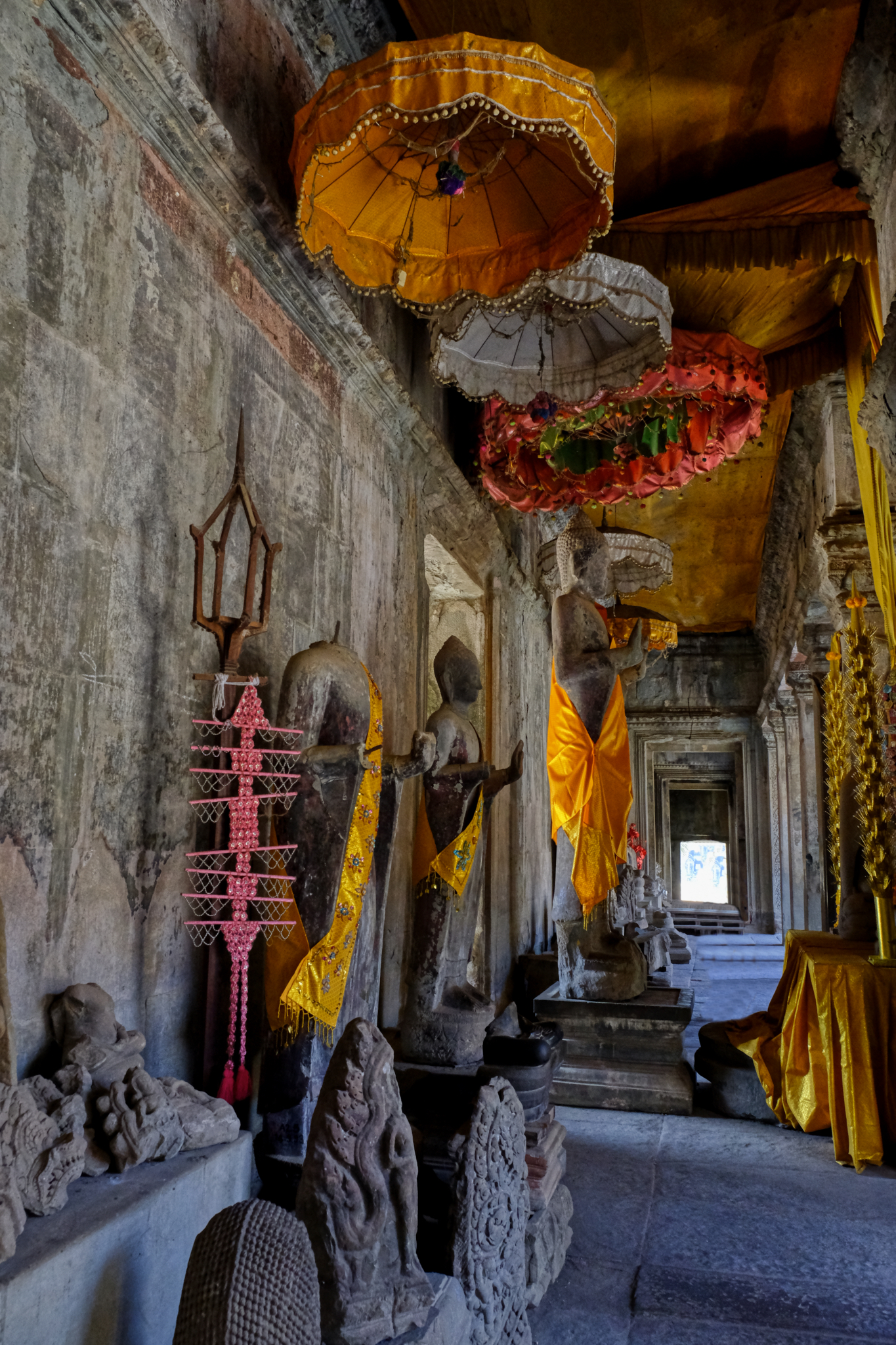 A fascinating hall of revered Buddha relics.
A fascinating hall of revered Buddha relics.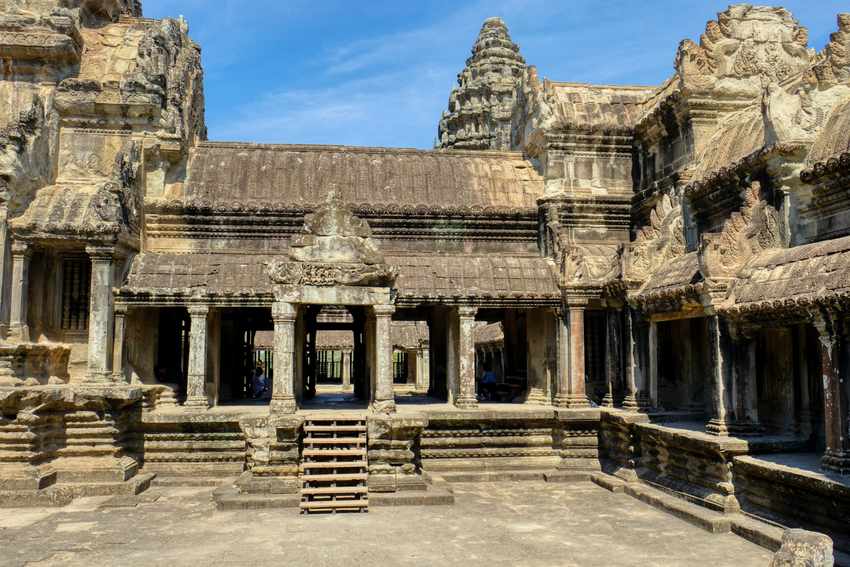 Interior courtyard within the temple structures.
Interior courtyard within the temple structures.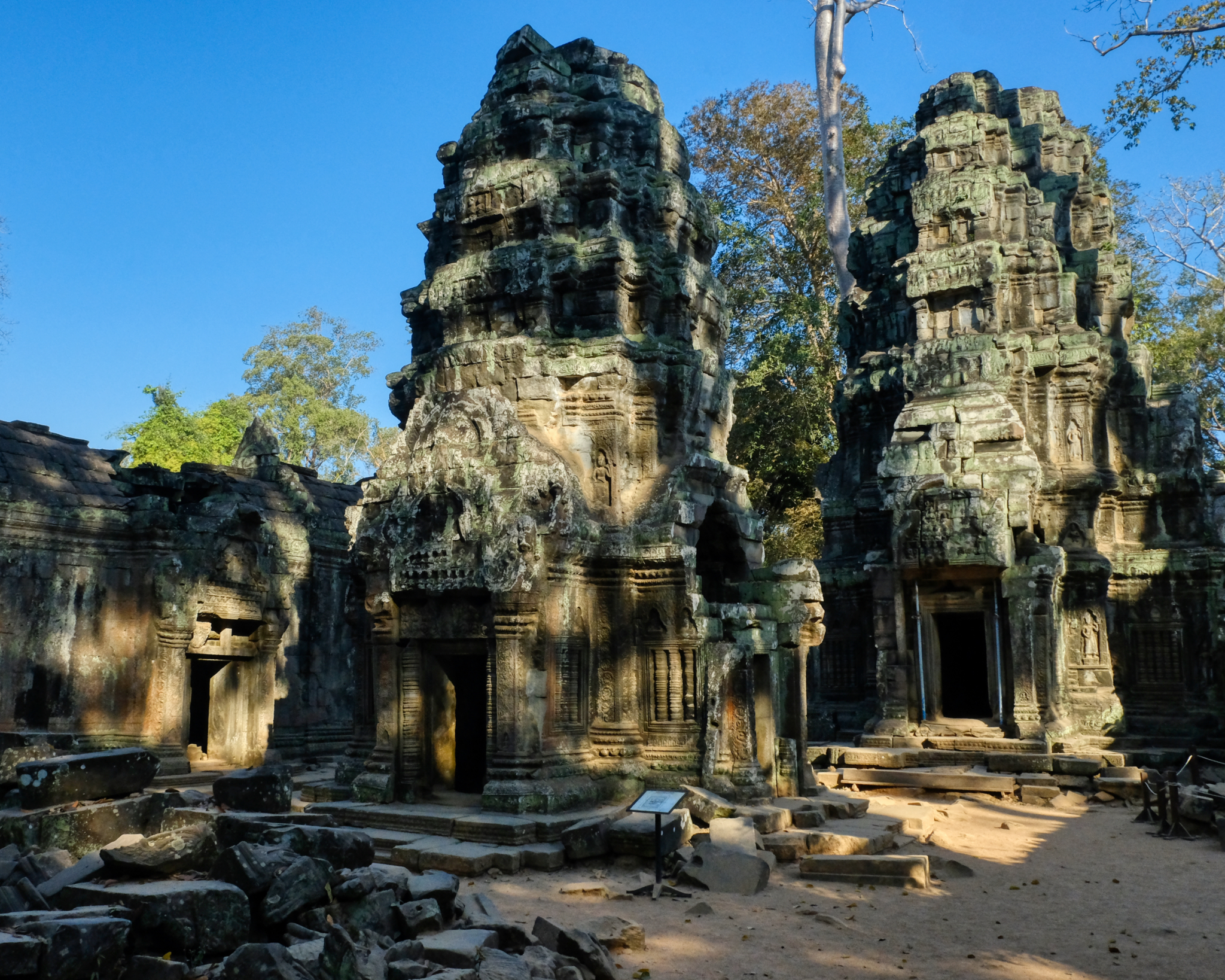 Ruins of Angkor Wat chedis. Incredible and unique architectural style.
Ruins of Angkor Wat chedis. Incredible and unique architectural style.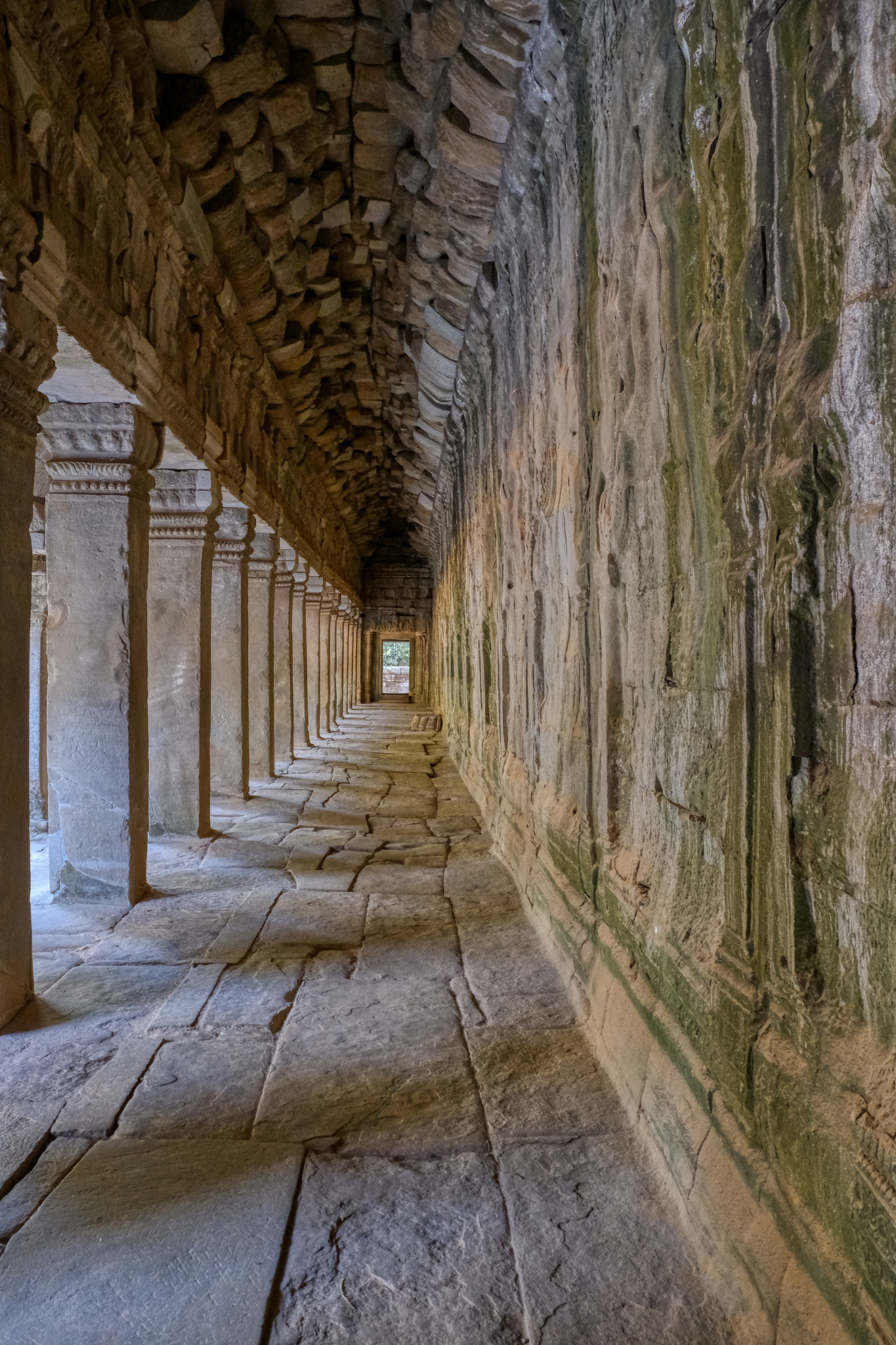 Interior halls and colonnades everywhere invite exploration.
Interior halls and colonnades everywhere invite exploration.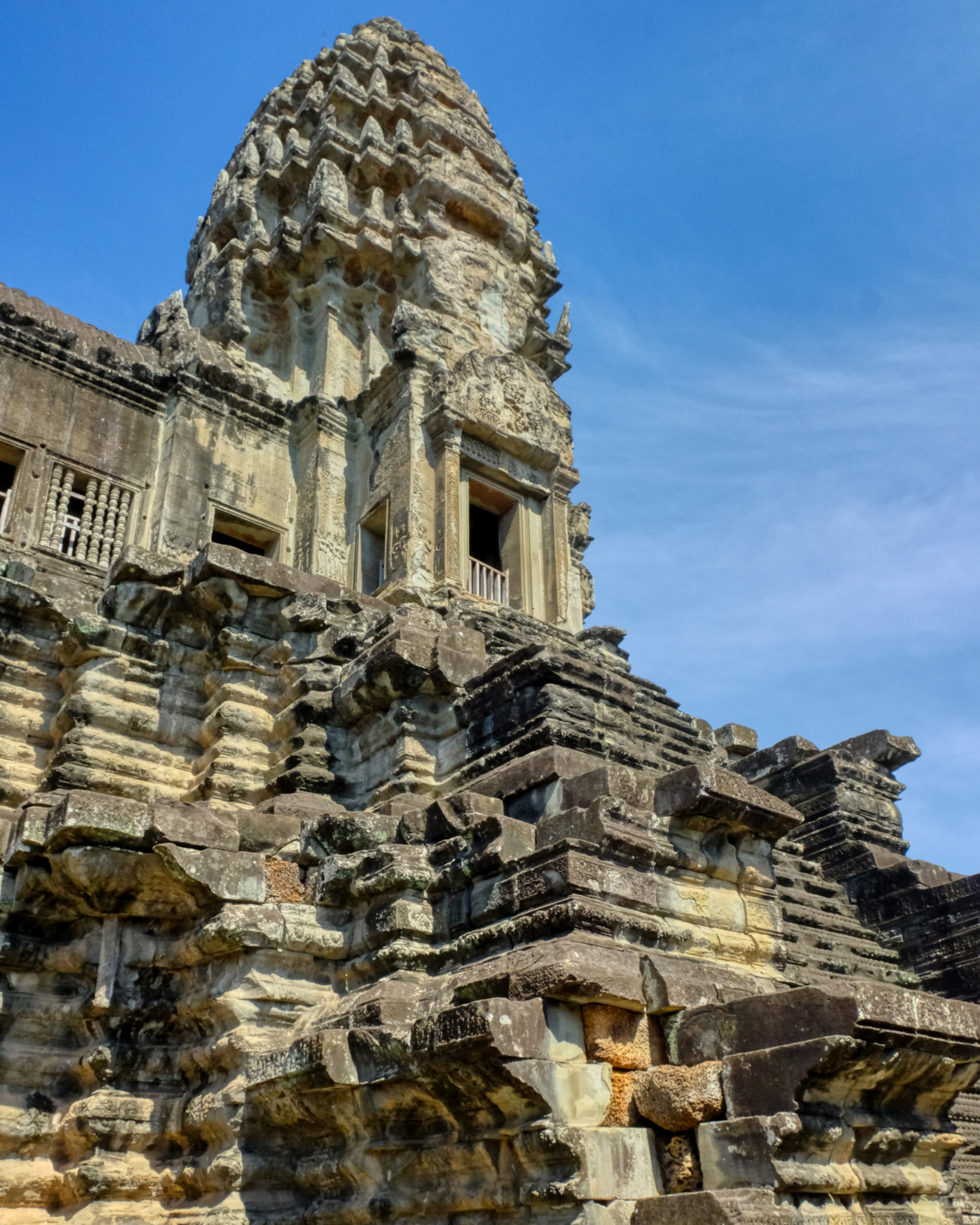 Stone spires carved with elaborate patterns of adornment.
Stone spires carved with elaborate patterns of adornment.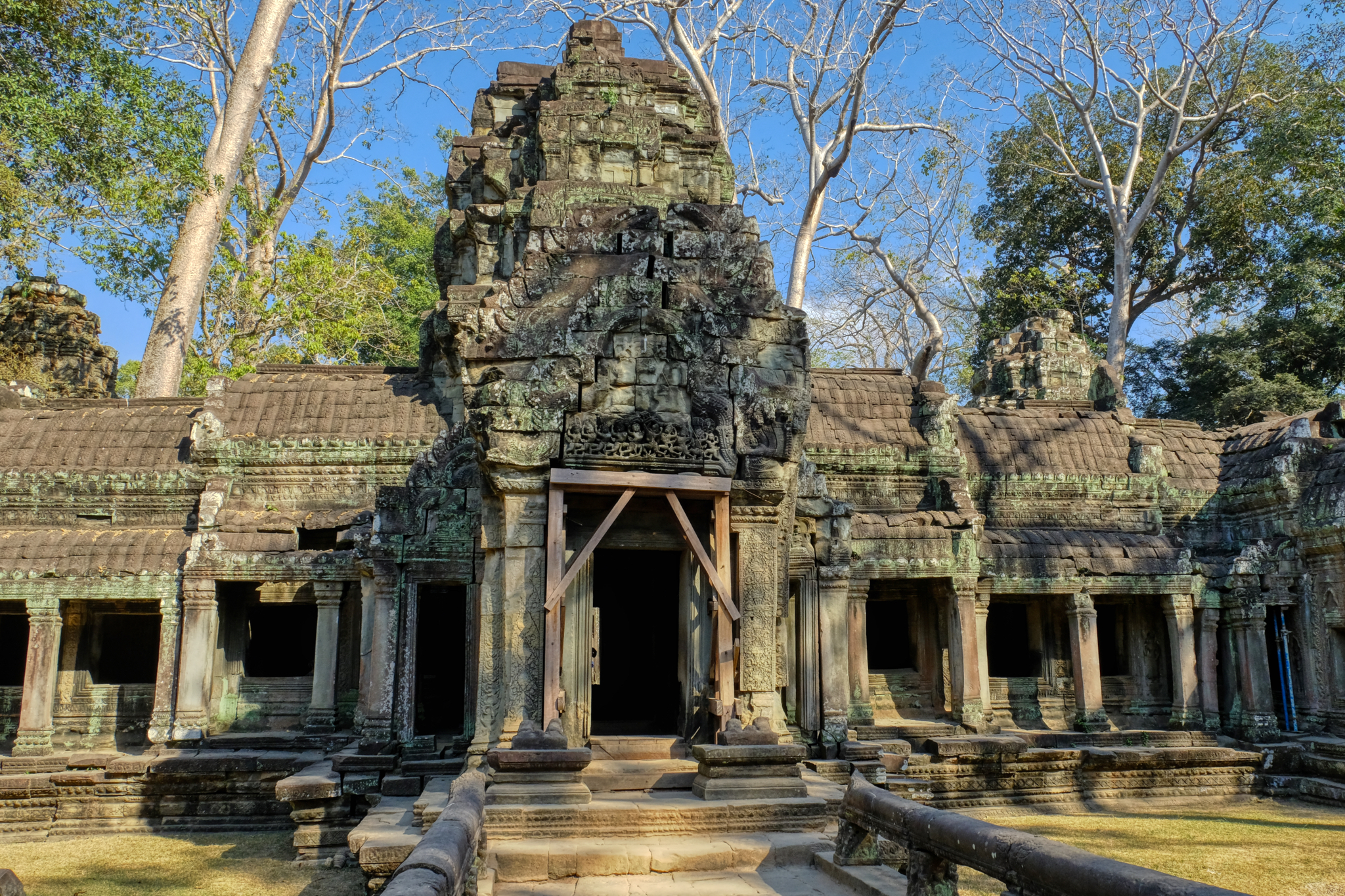 Reclaimed from the jungle that reclaimed the temple centuries ago.
Reclaimed from the jungle that reclaimed the temple centuries ago.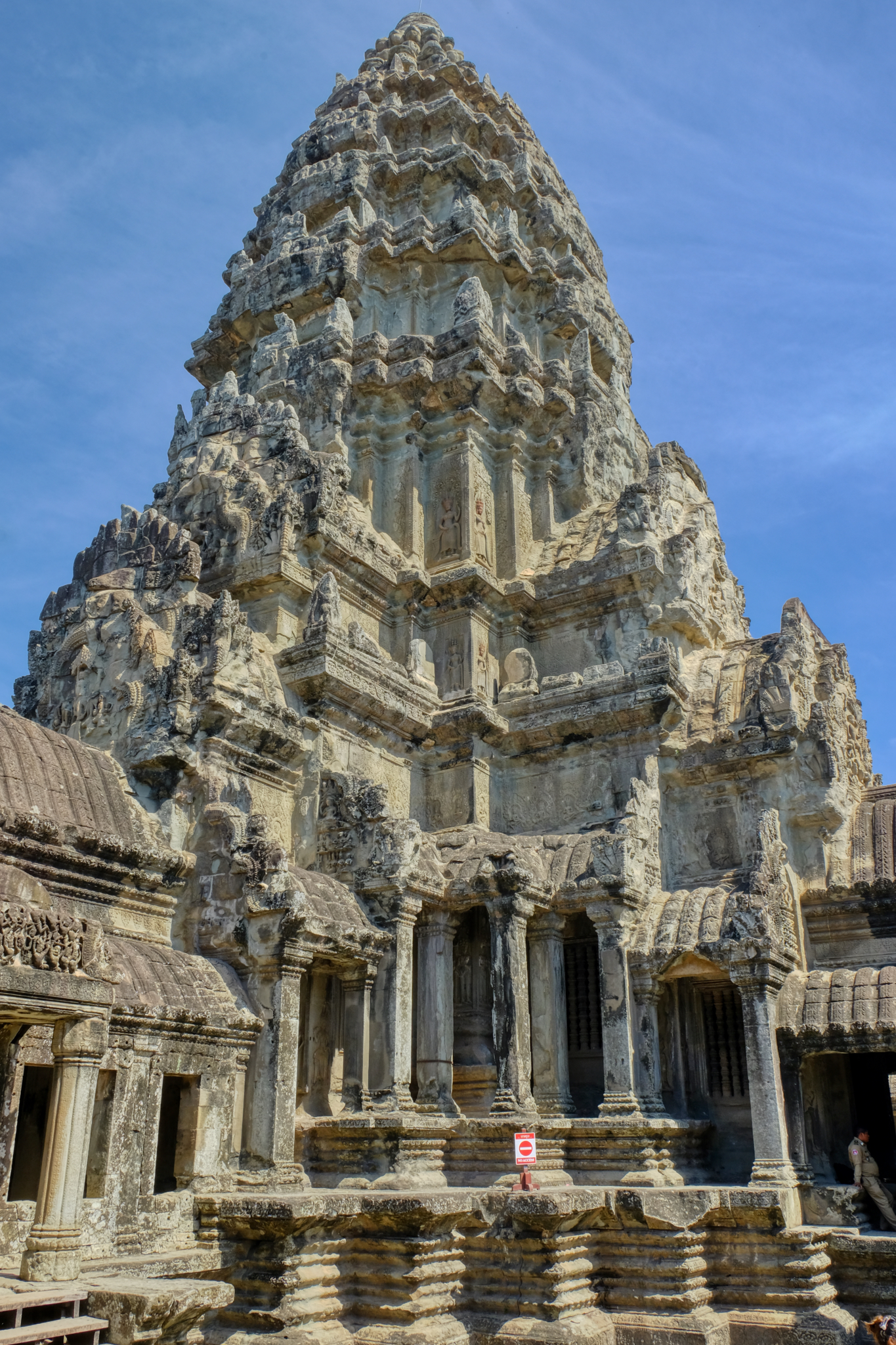 A temple spire. Fascinating.
A temple spire. Fascinating.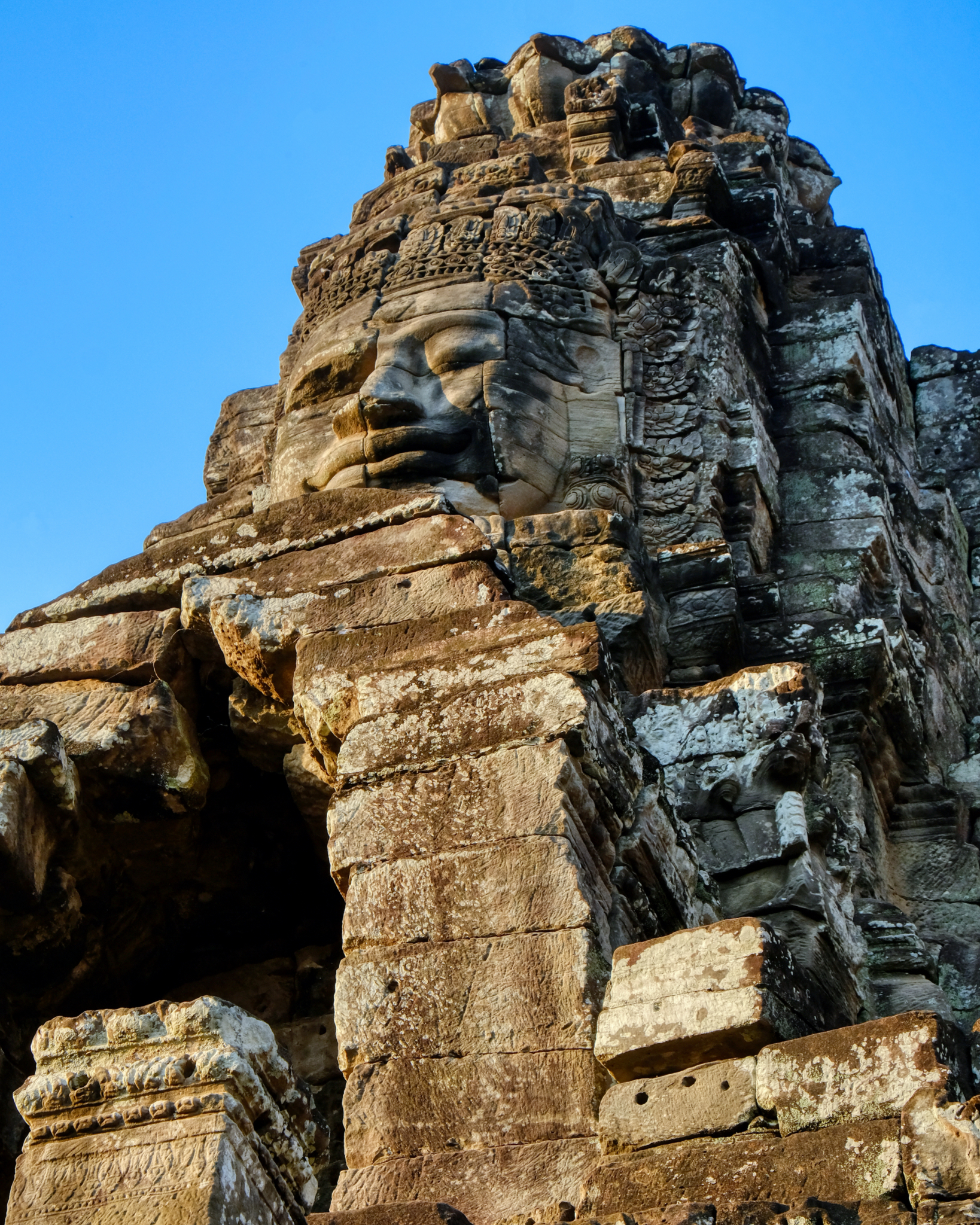
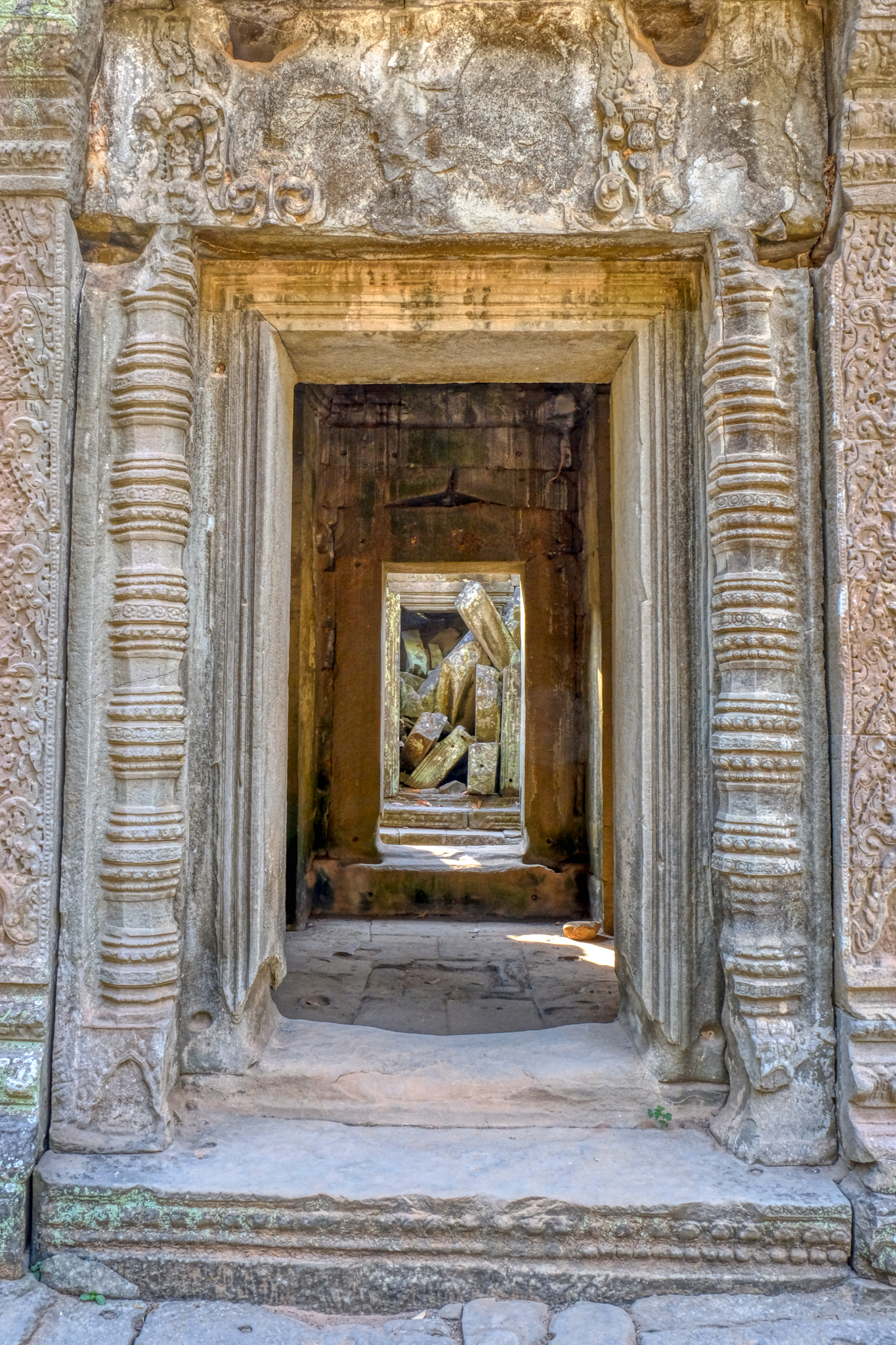 Endless passages, rooms, doors, and b locked exits. It was incredibly interesting to just wander around in this ancient place.
Endless passages, rooms, doors, and b locked exits. It was incredibly interesting to just wander around in this ancient place.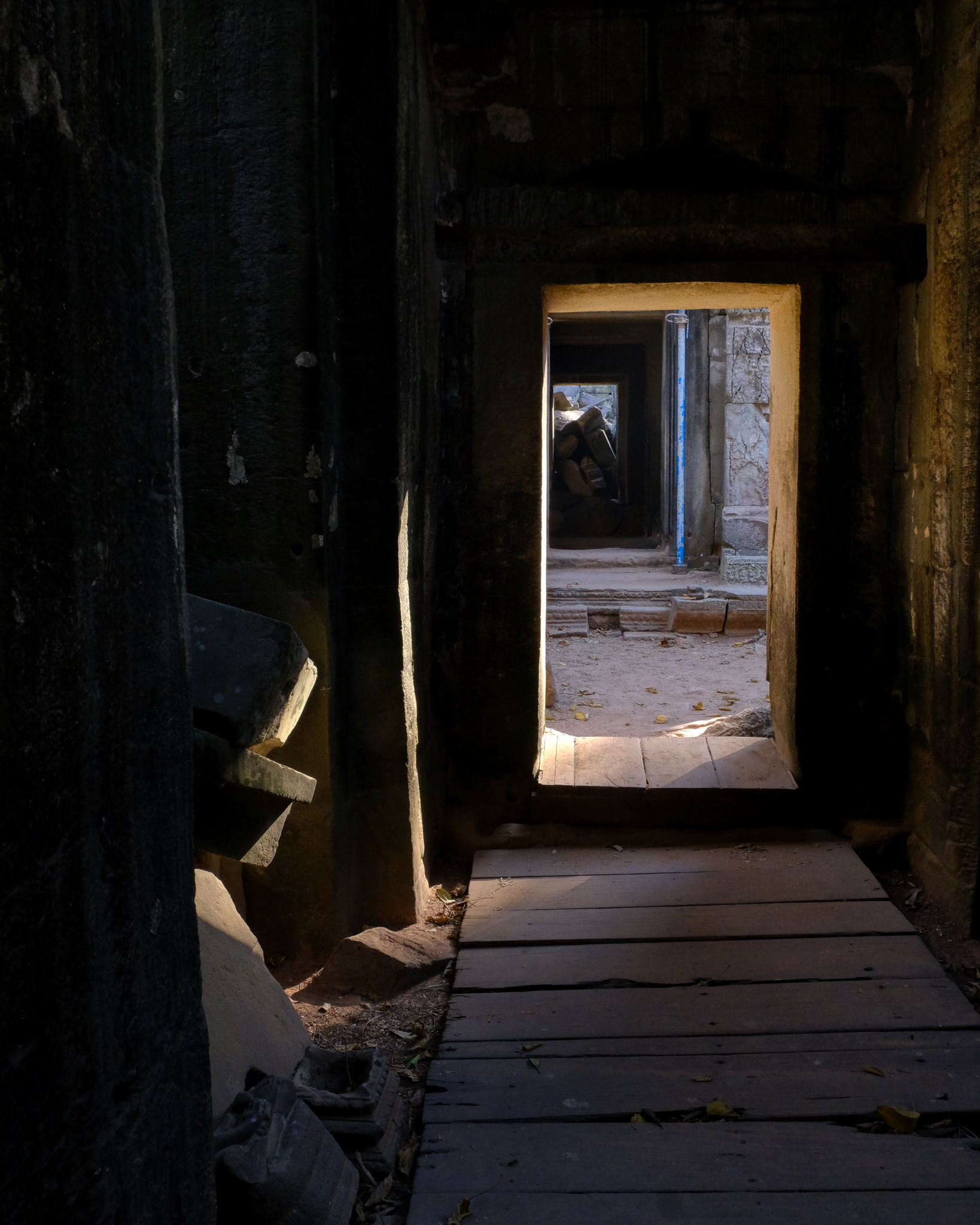 A space of wonder.
A space of wonder.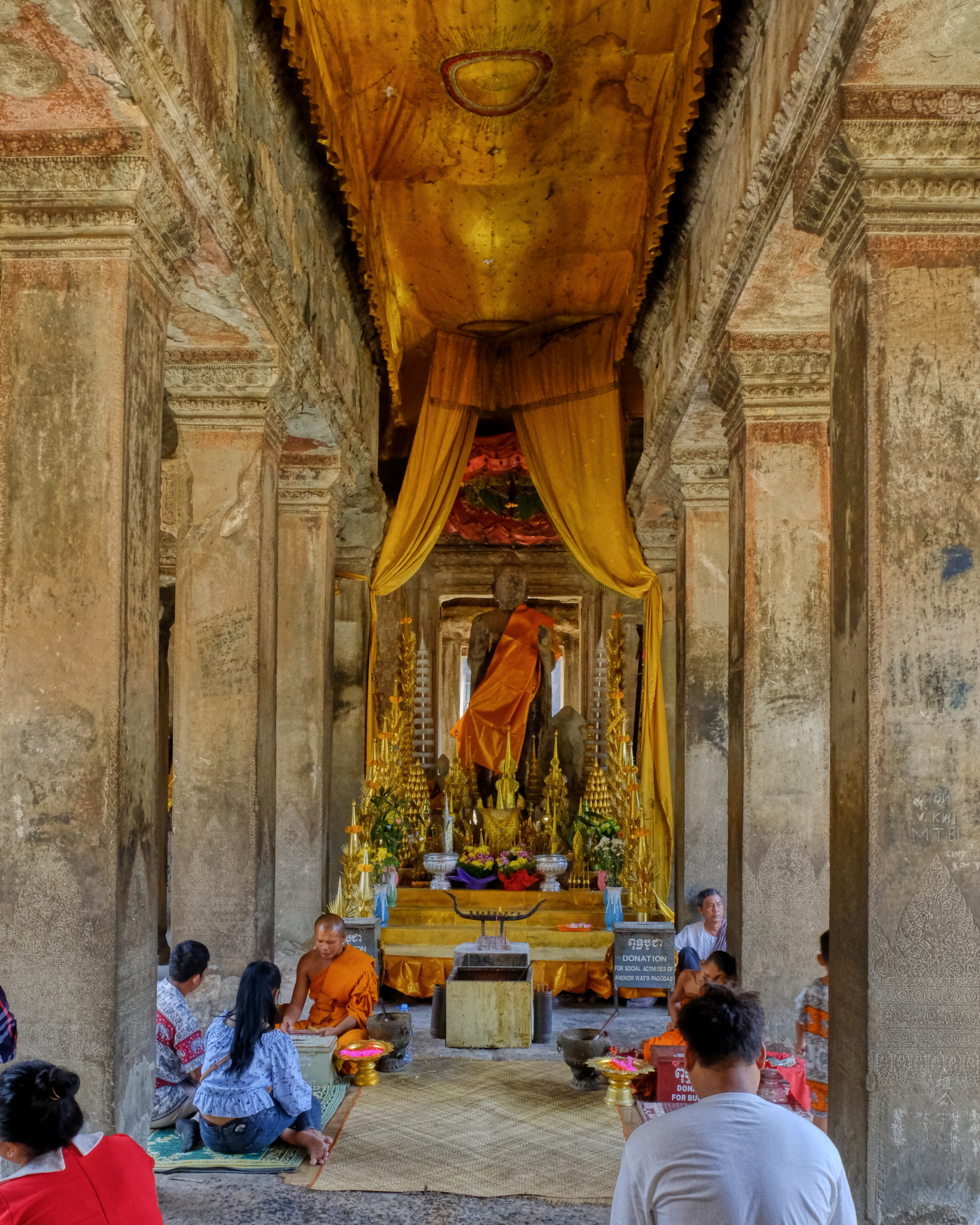 Rounding a corner inside the temple I came across Buddhist monks blessing devotees: Ankor Wat is still a living spiritual center.
Rounding a corner inside the temple I came across Buddhist monks blessing devotees: Ankor Wat is still a living spiritual center.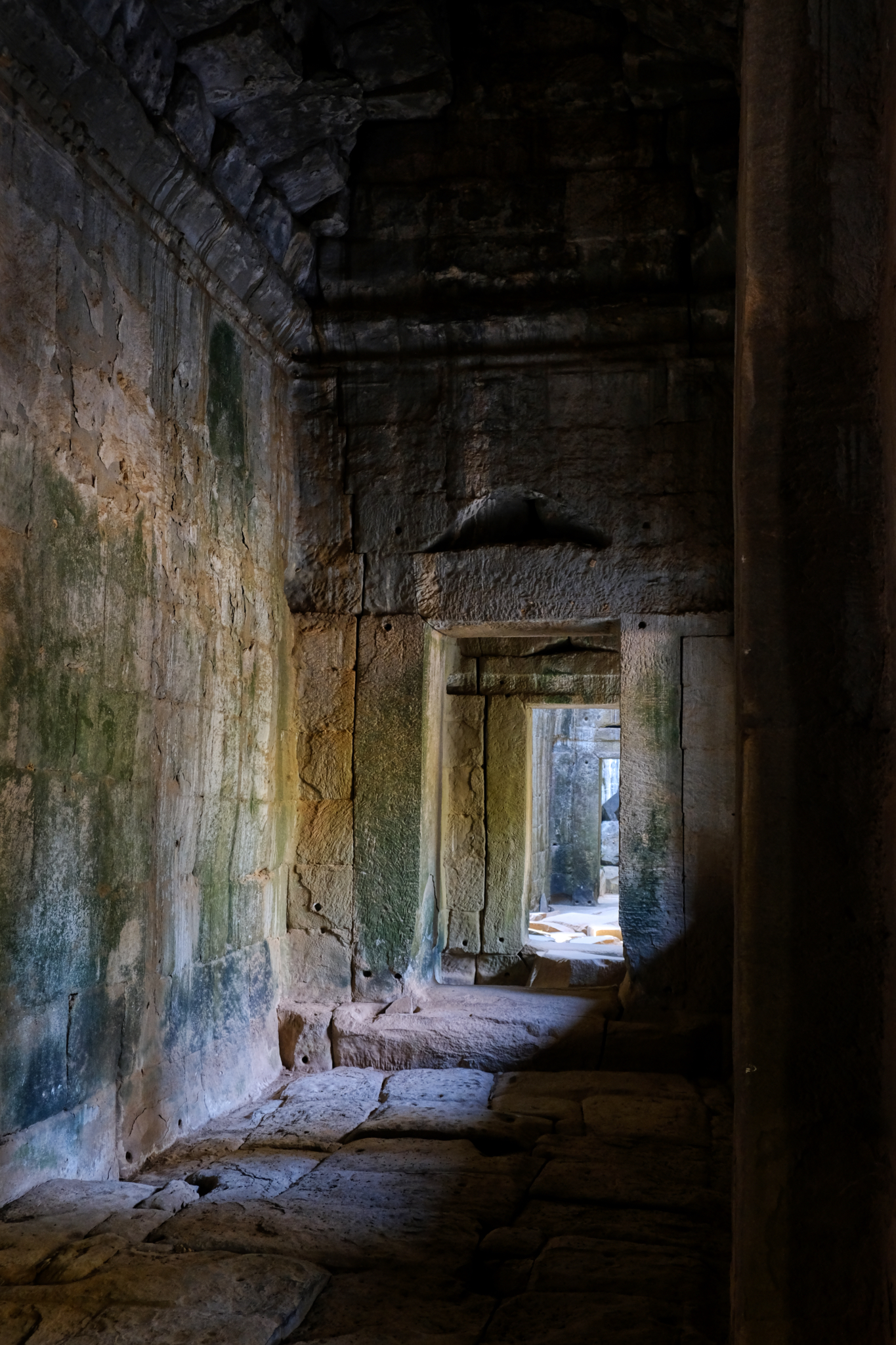 After the blessing monks . . . back into the labyrinth of passages . . .
After the blessing monks . . . back into the labyrinth of passages . . .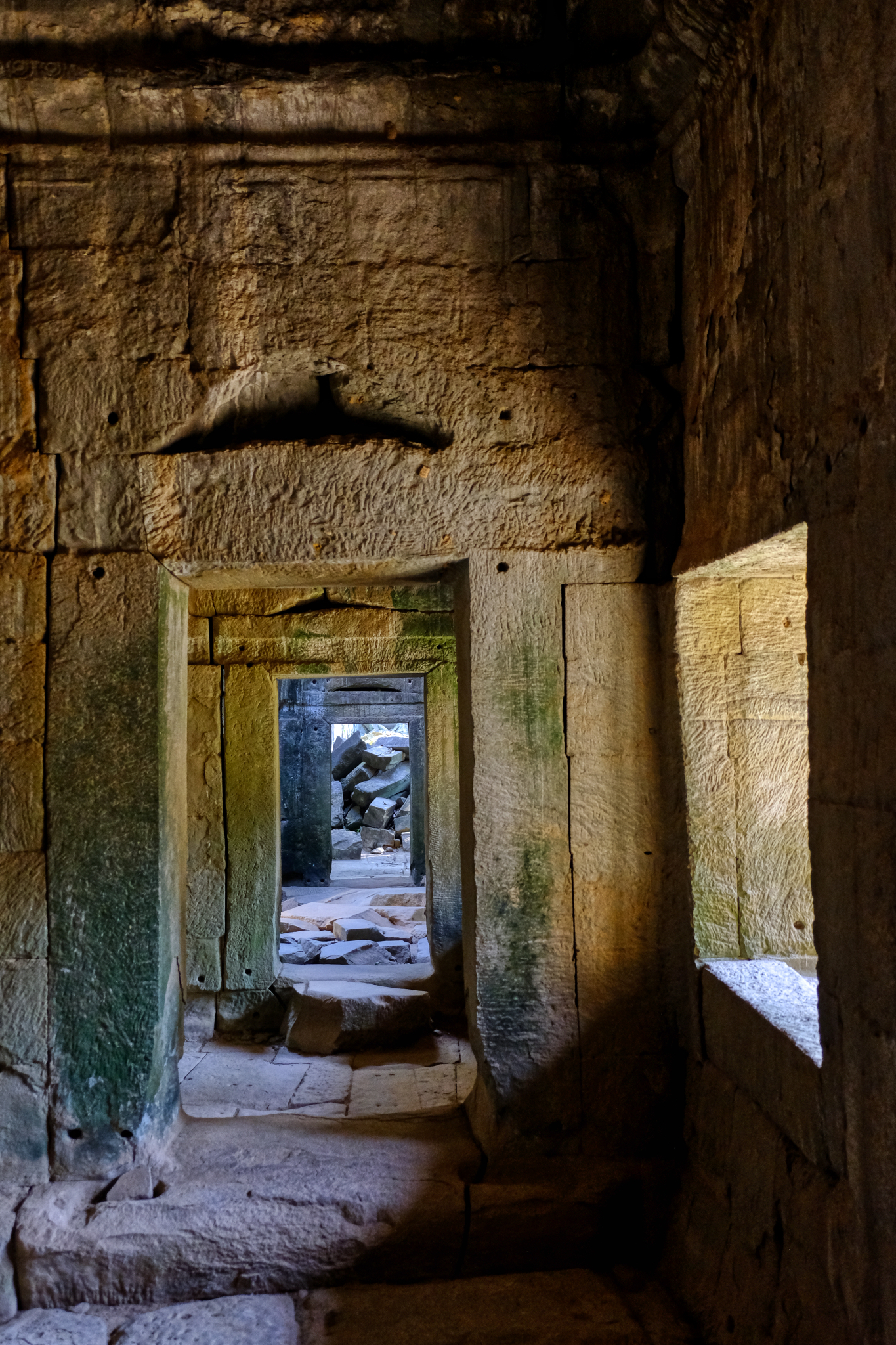 On and on . . . imagining the people who occupied these spaces when it was an active and populated city.
On and on . . . imagining the people who occupied these spaces when it was an active and populated city.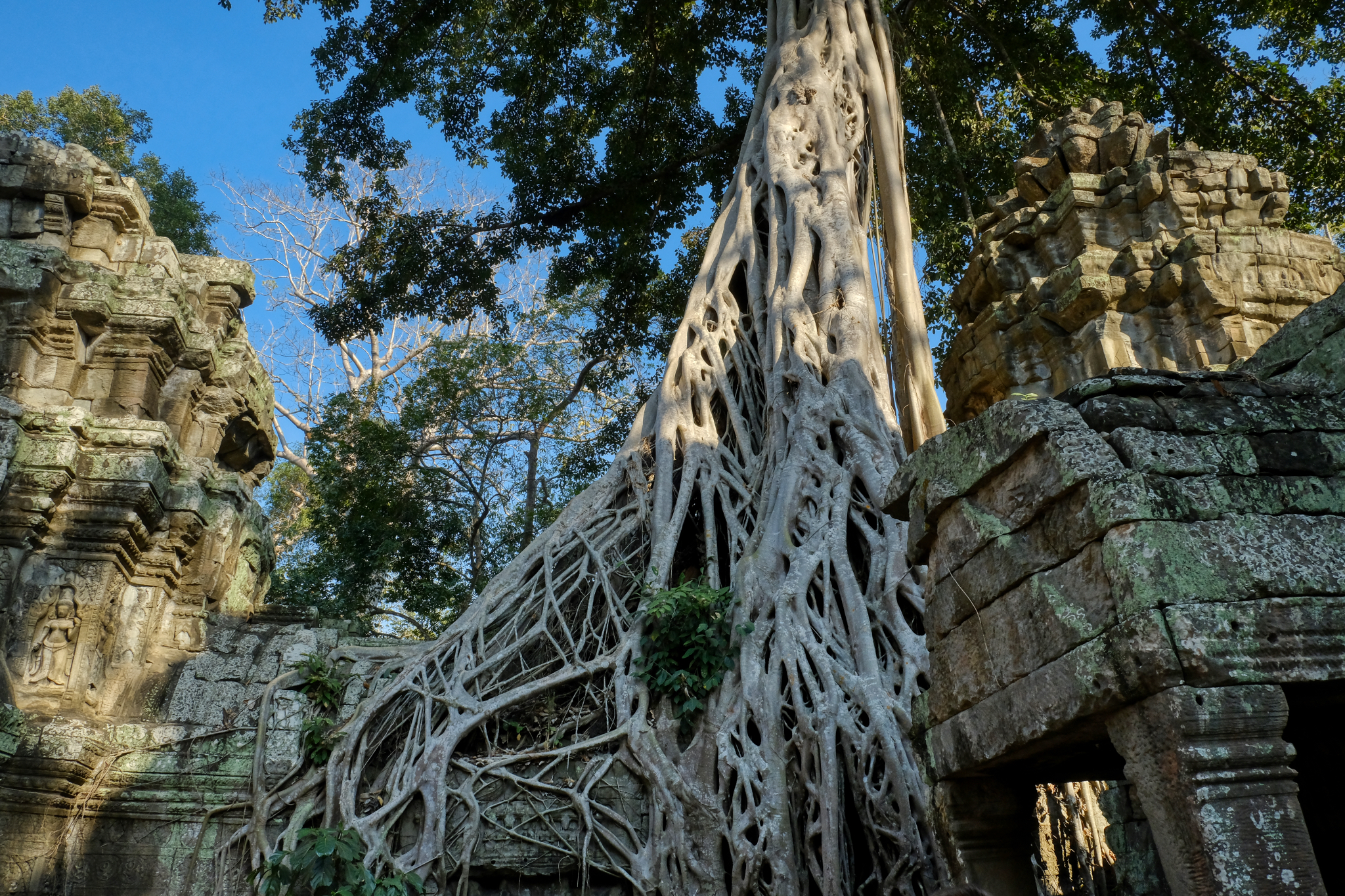 The jungle is still trying to interpose itself on the ancient temple structures.
The jungle is still trying to interpose itself on the ancient temple structures.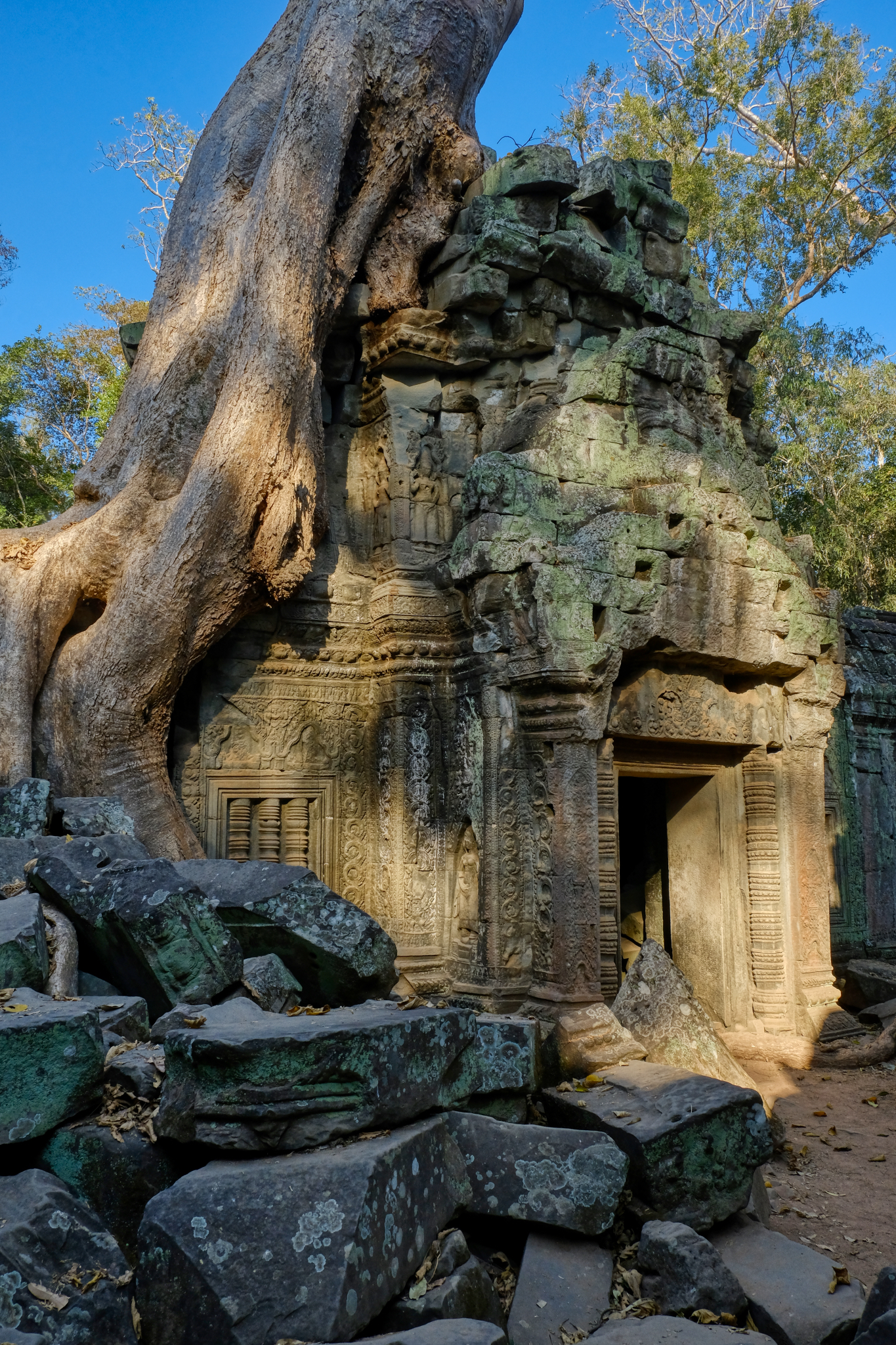 The iconic image of Angkor Wat is the giant tree roots embracing the temple stones.
The iconic image of Angkor Wat is the giant tree roots embracing the temple stones.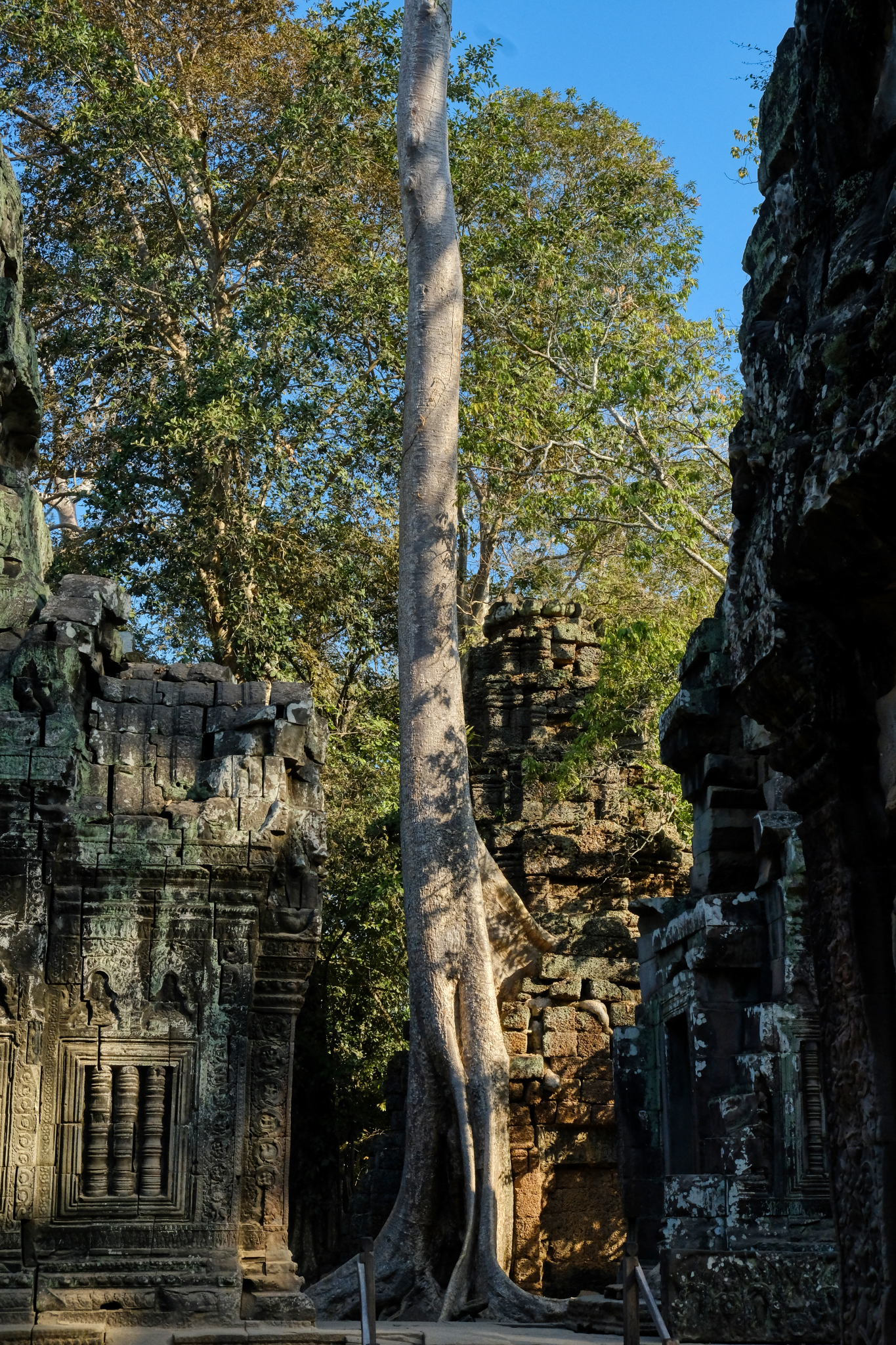 A mutual embrace . . . this tower looks as if it would fall without the support of the tree.
A mutual embrace . . . this tower looks as if it would fall without the support of the tree.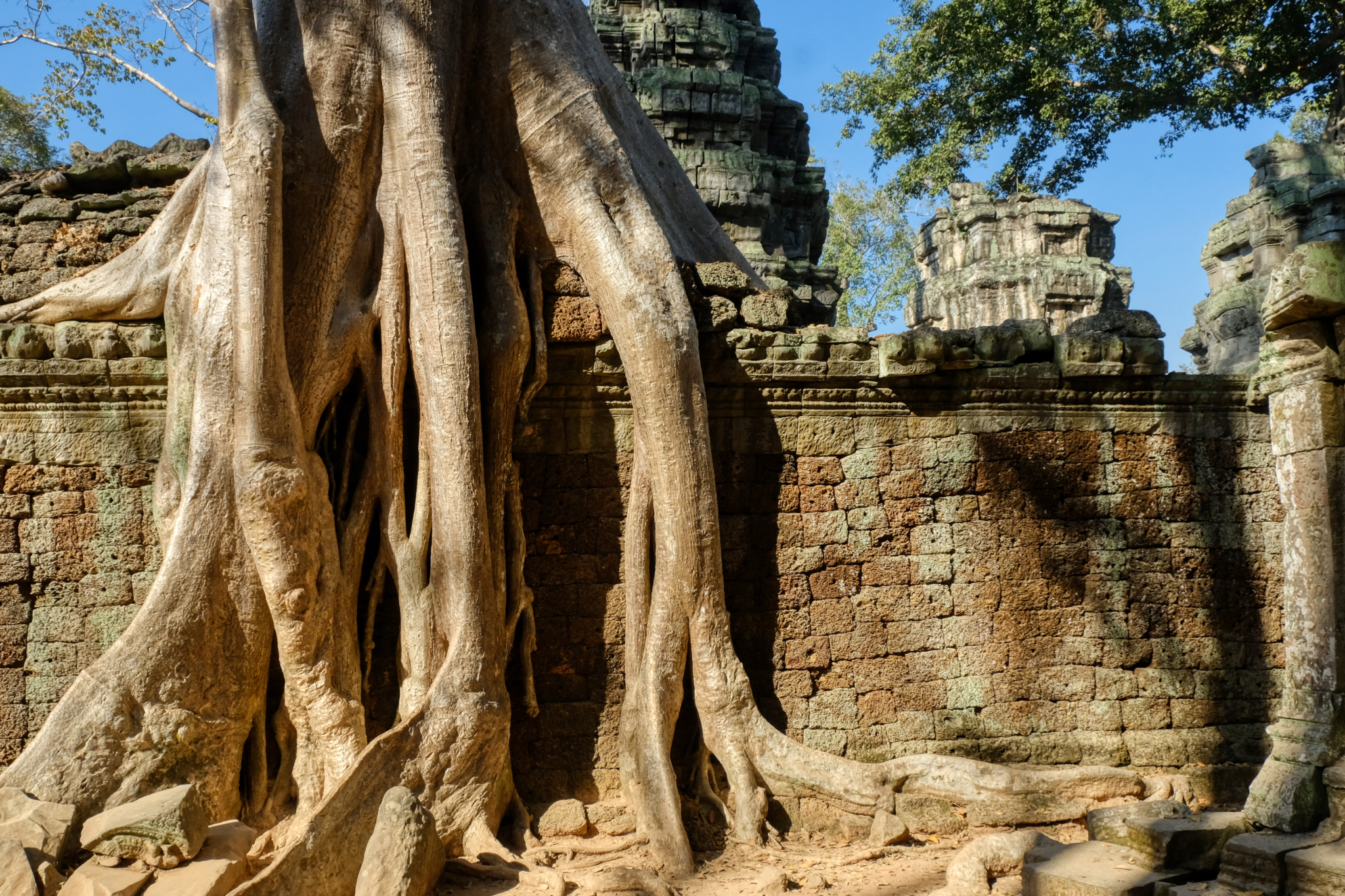 A wall with cascading roots. Truly awesome.
A wall with cascading roots. Truly awesome.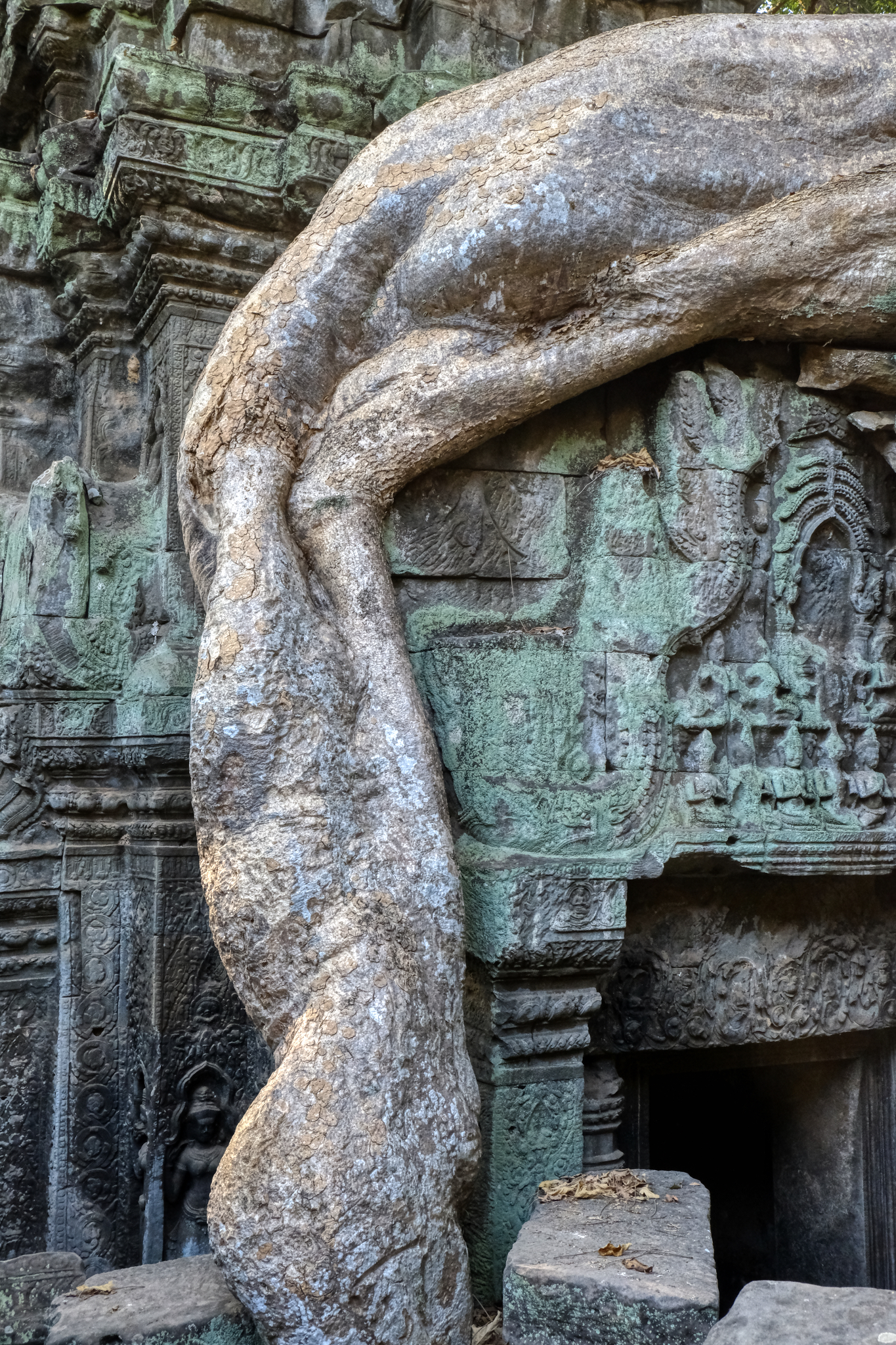 Like a limb from a giant alien animal . . . these roots are massive!
Like a limb from a giant alien animal . . . these roots are massive!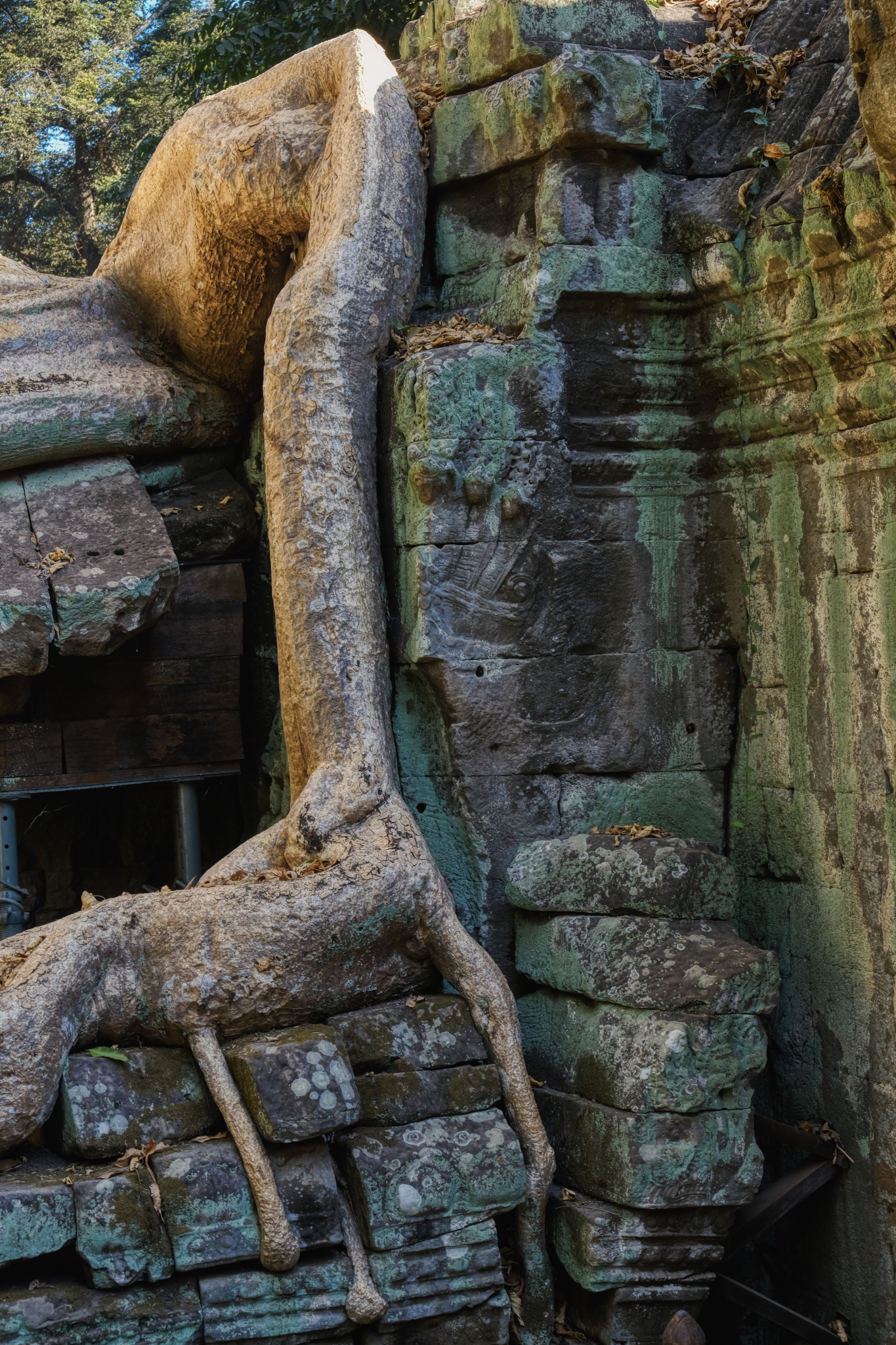 The temple in the grip of its alien overlord!
The temple in the grip of its alien overlord!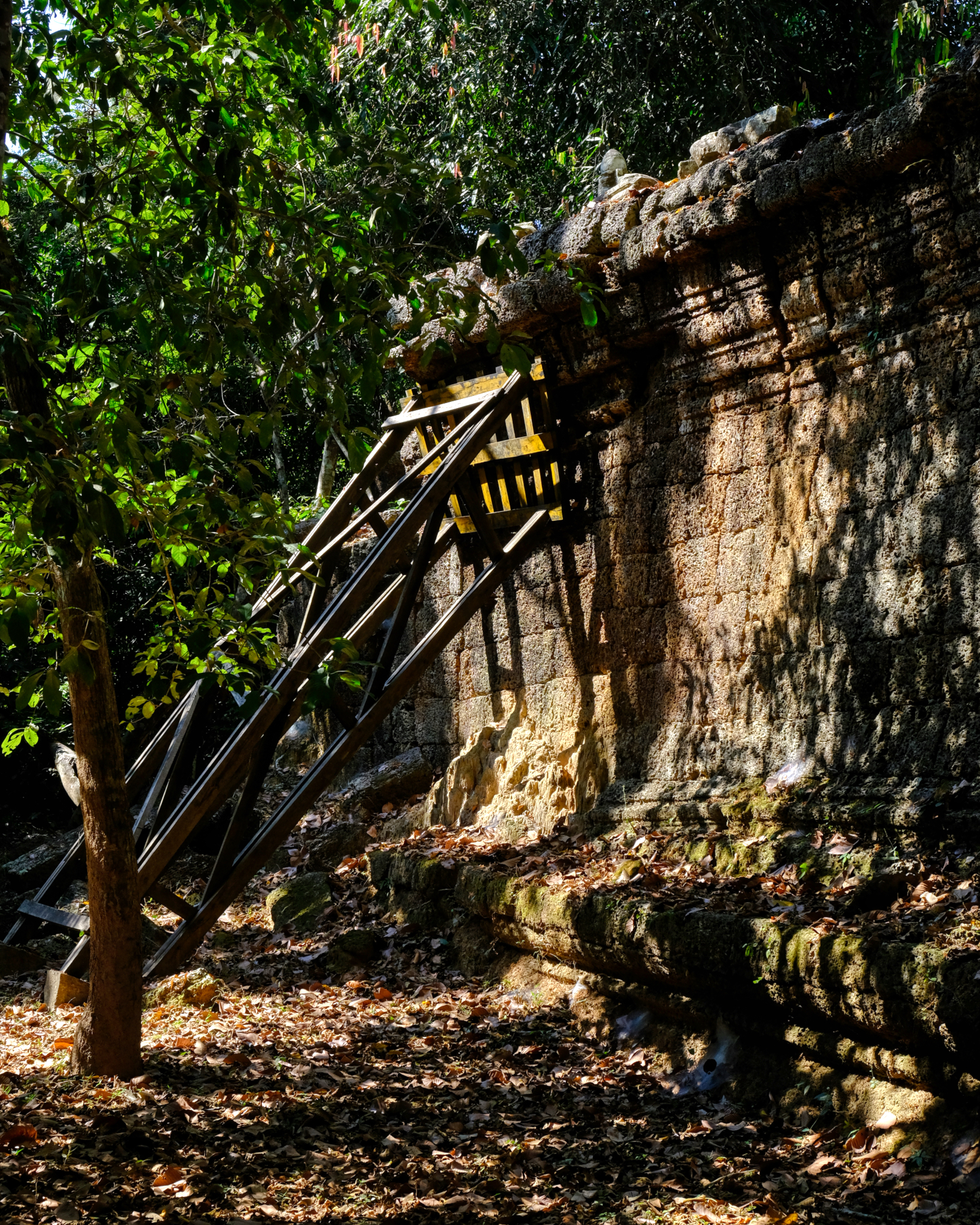 The aging walls supported. Most of the restoration work on Angkor Wat has been carries out by French and Cambodian archaeologists.
The aging walls supported. Most of the restoration work on Angkor Wat has been carries out by French and Cambodian archaeologists.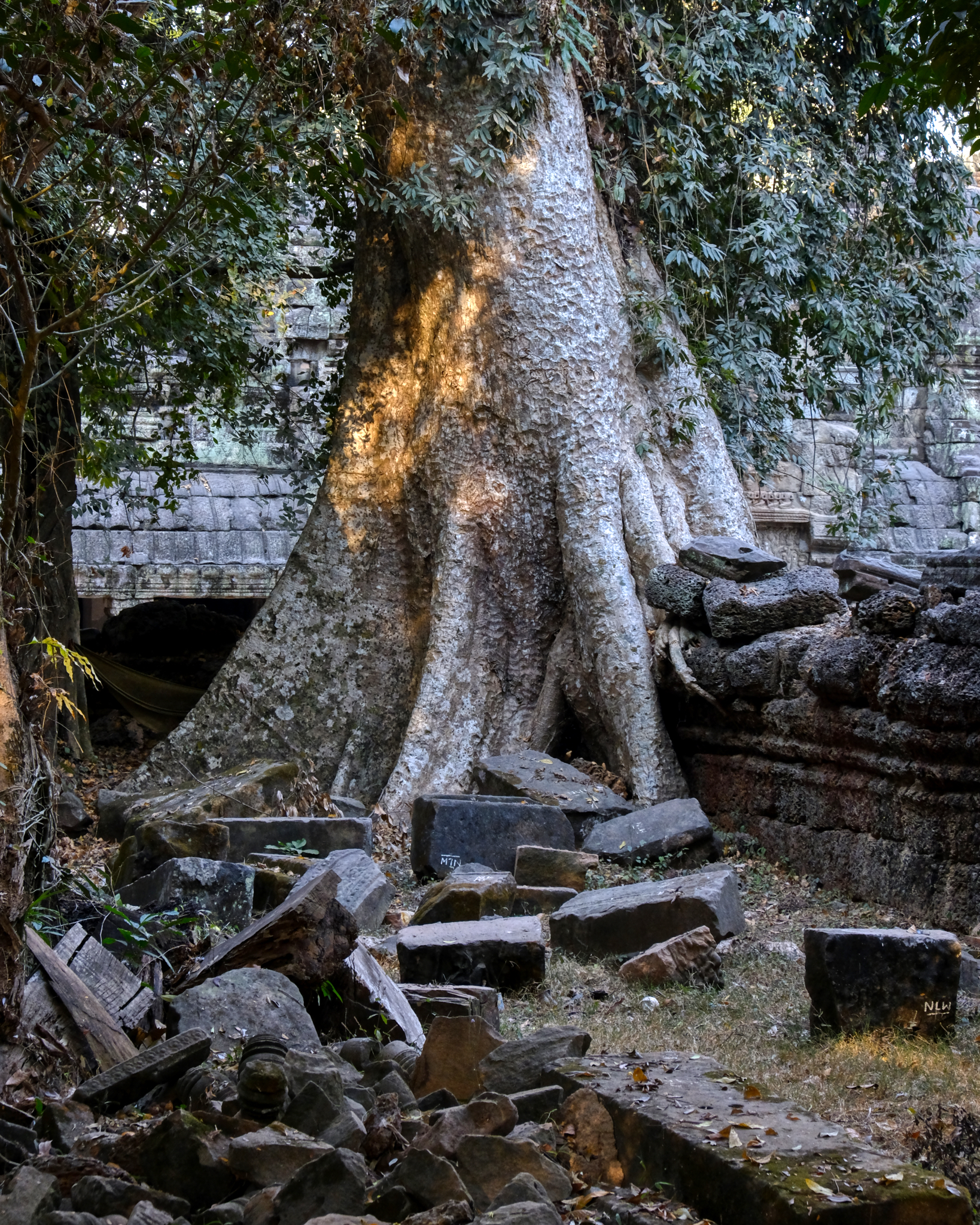 Much of the various sites remain unreconstructed.
Much of the various sites remain unreconstructed.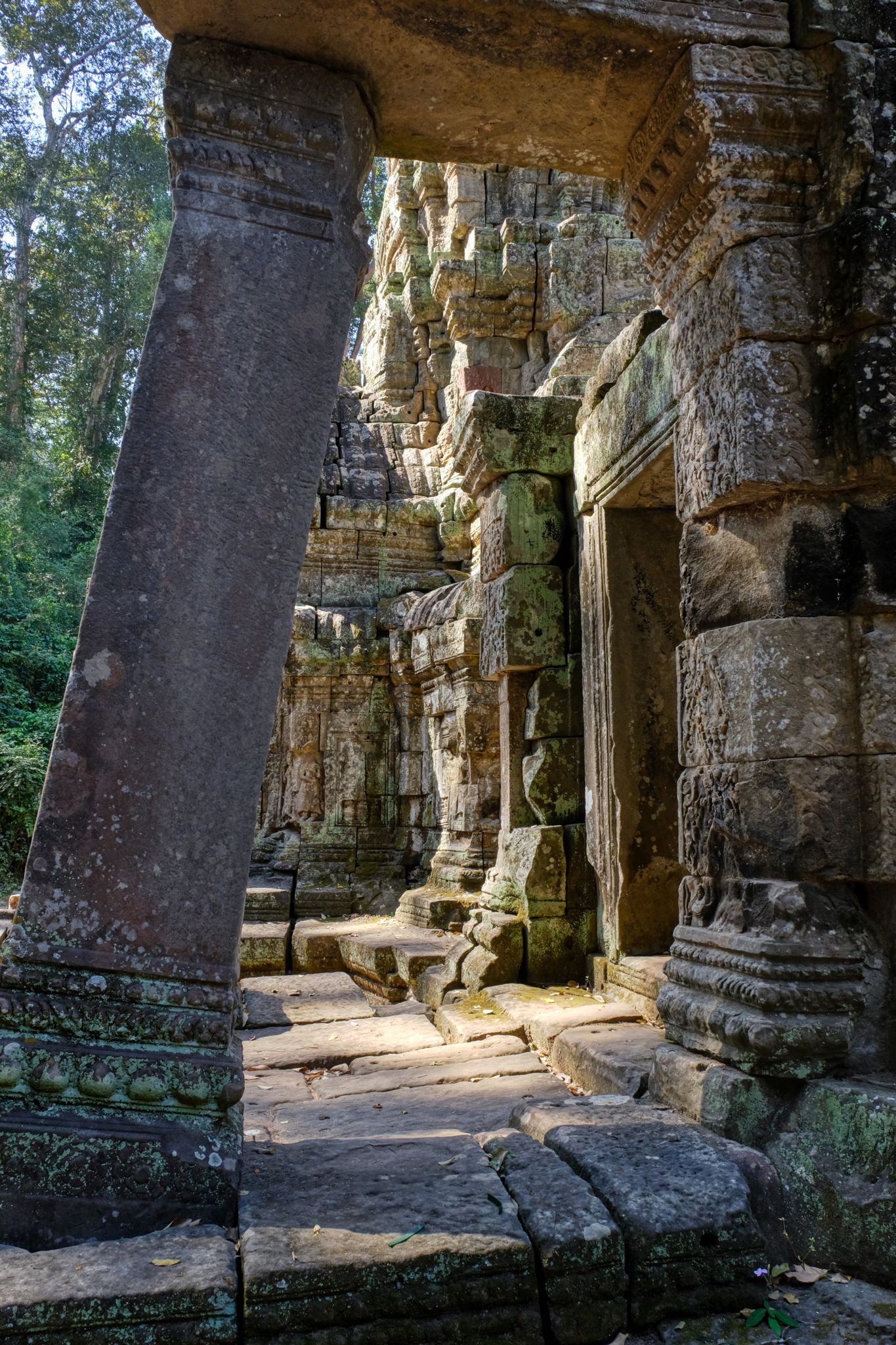 The state of deterioration is surprisingly less than one would have thought after 1000 years . . . but they build out of stone!
The state of deterioration is surprisingly less than one would have thought after 1000 years . . . but they build out of stone!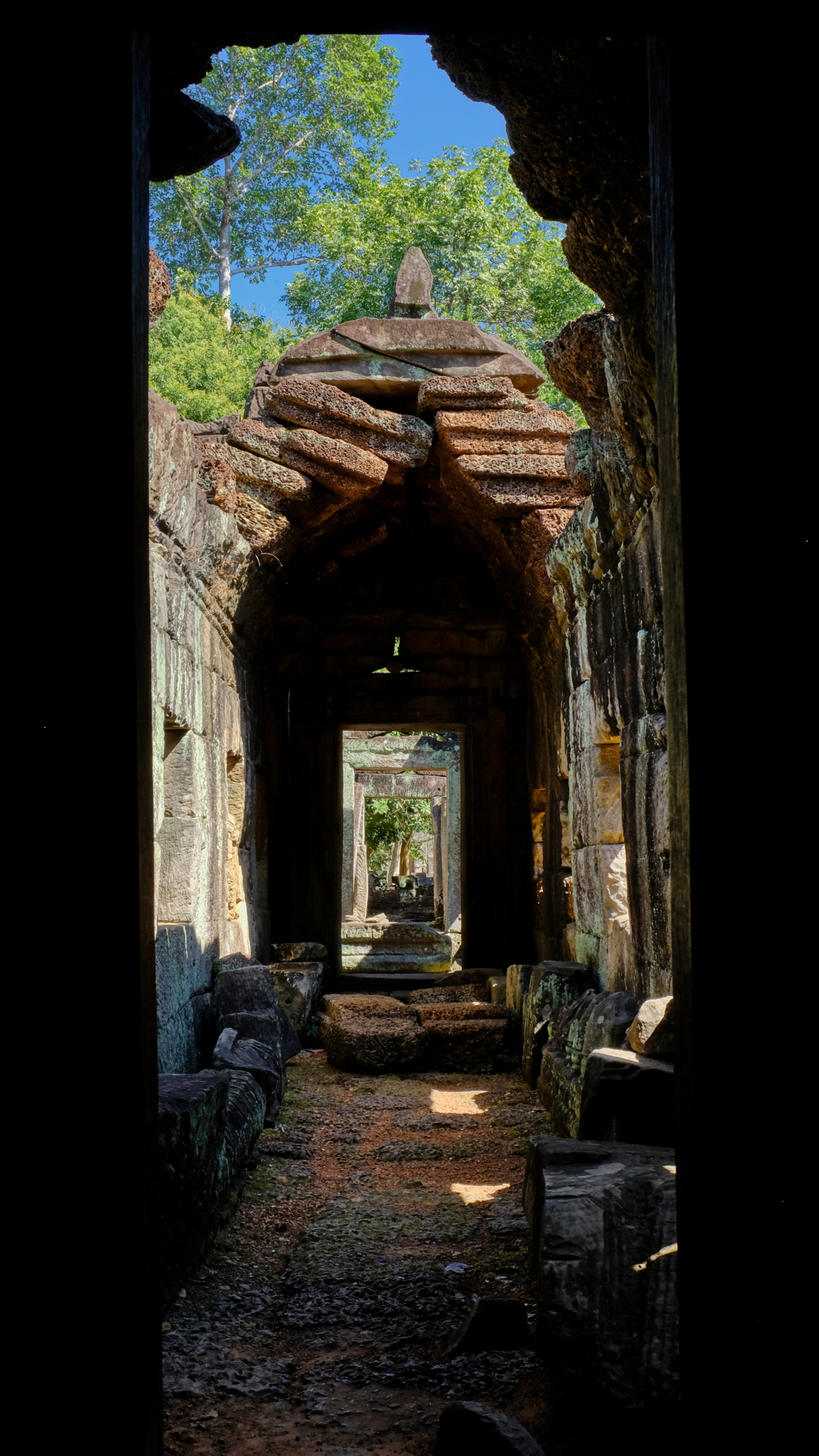 My friend and I wandered for many hours through these narrow mysterious passages, always surprised with some amazing scene around every corner . . .
My friend and I wandered for many hours through these narrow mysterious passages, always surprised with some amazing scene around every corner . . .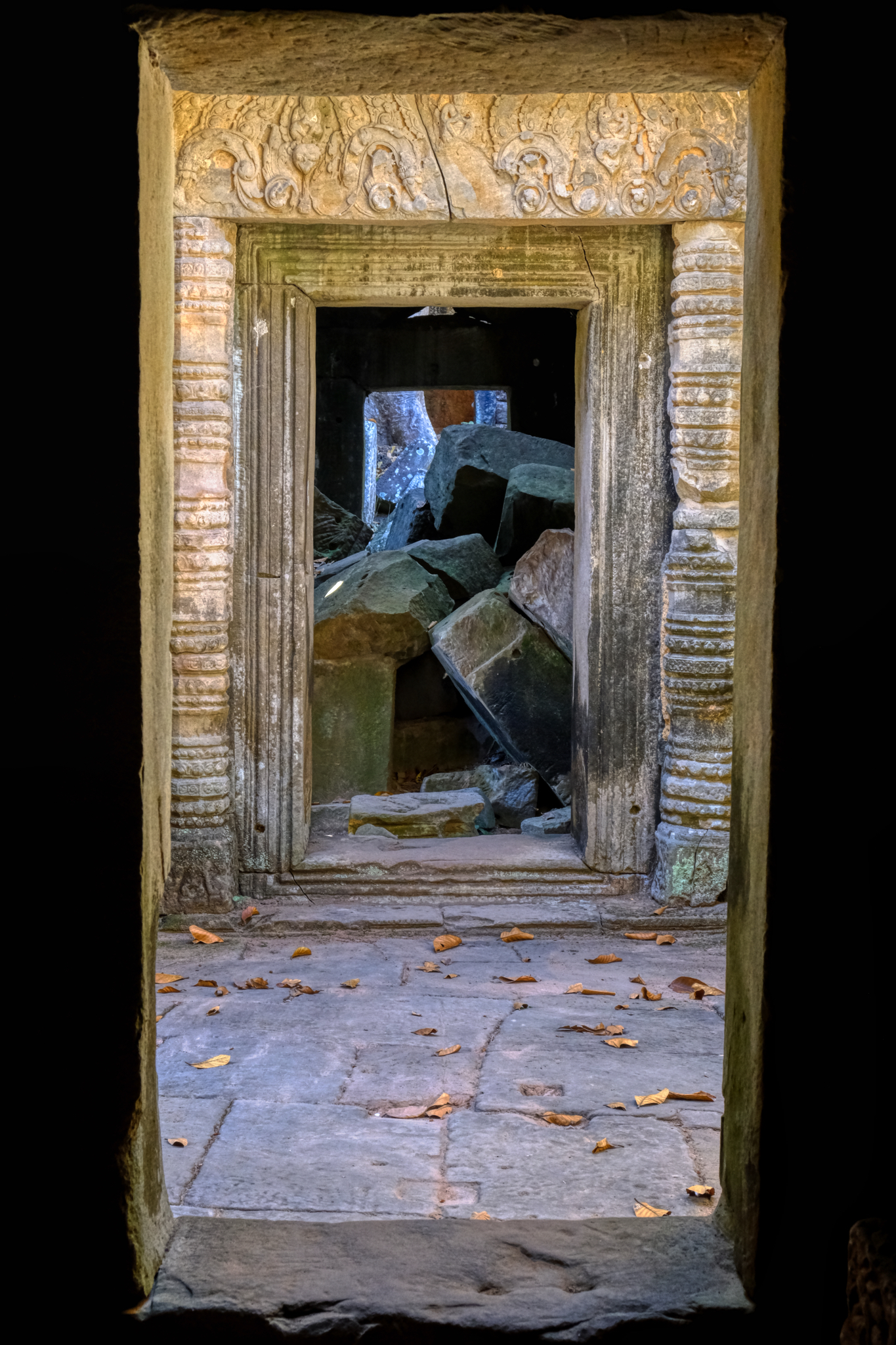 . . . always another scene of doors and passages . . . gorgeous . . .
. . . always another scene of doors and passages . . . gorgeous . . .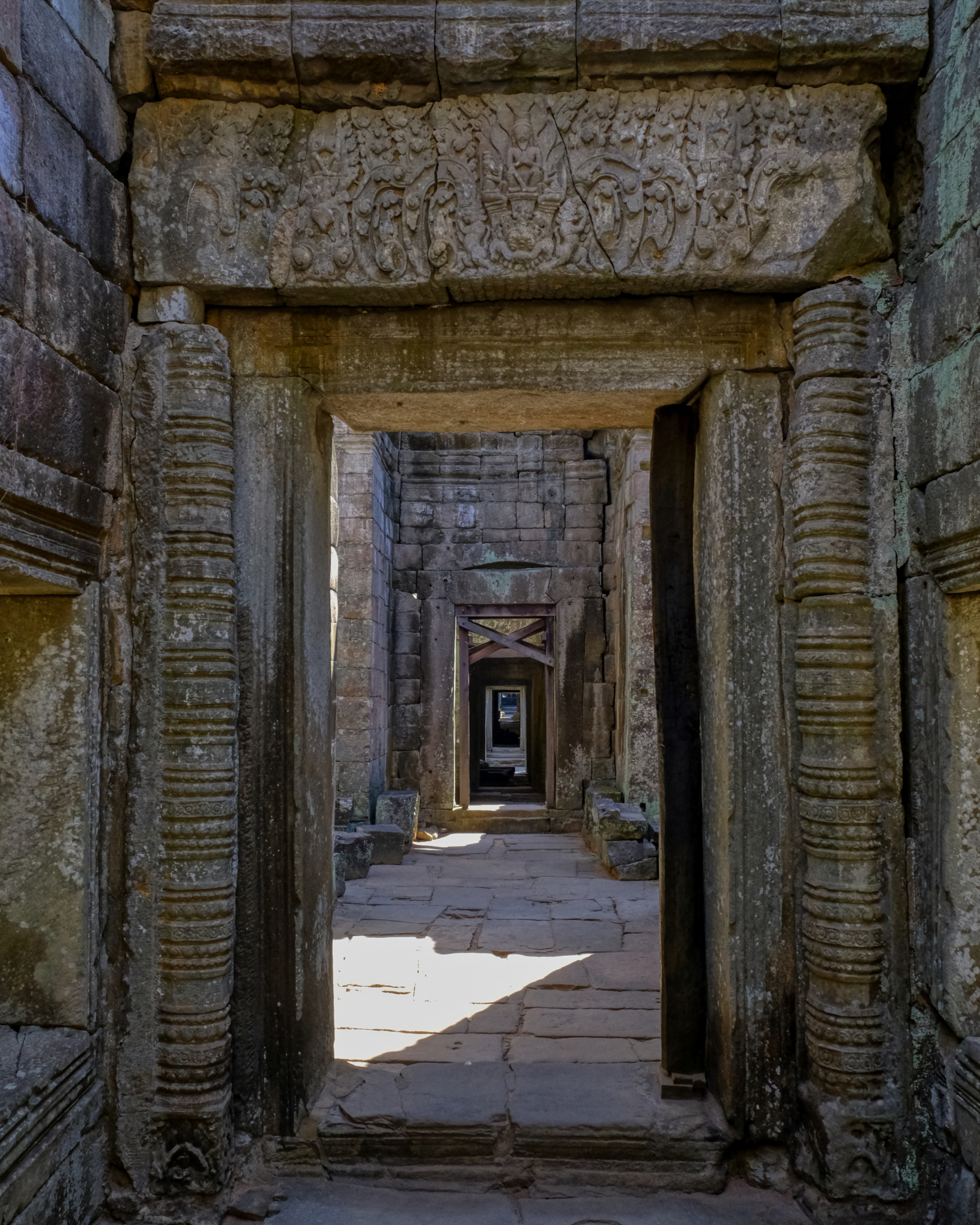 . . . on and on we walked, our mouths open in amazement all the while!
. . . on and on we walked, our mouths open in amazement all the while!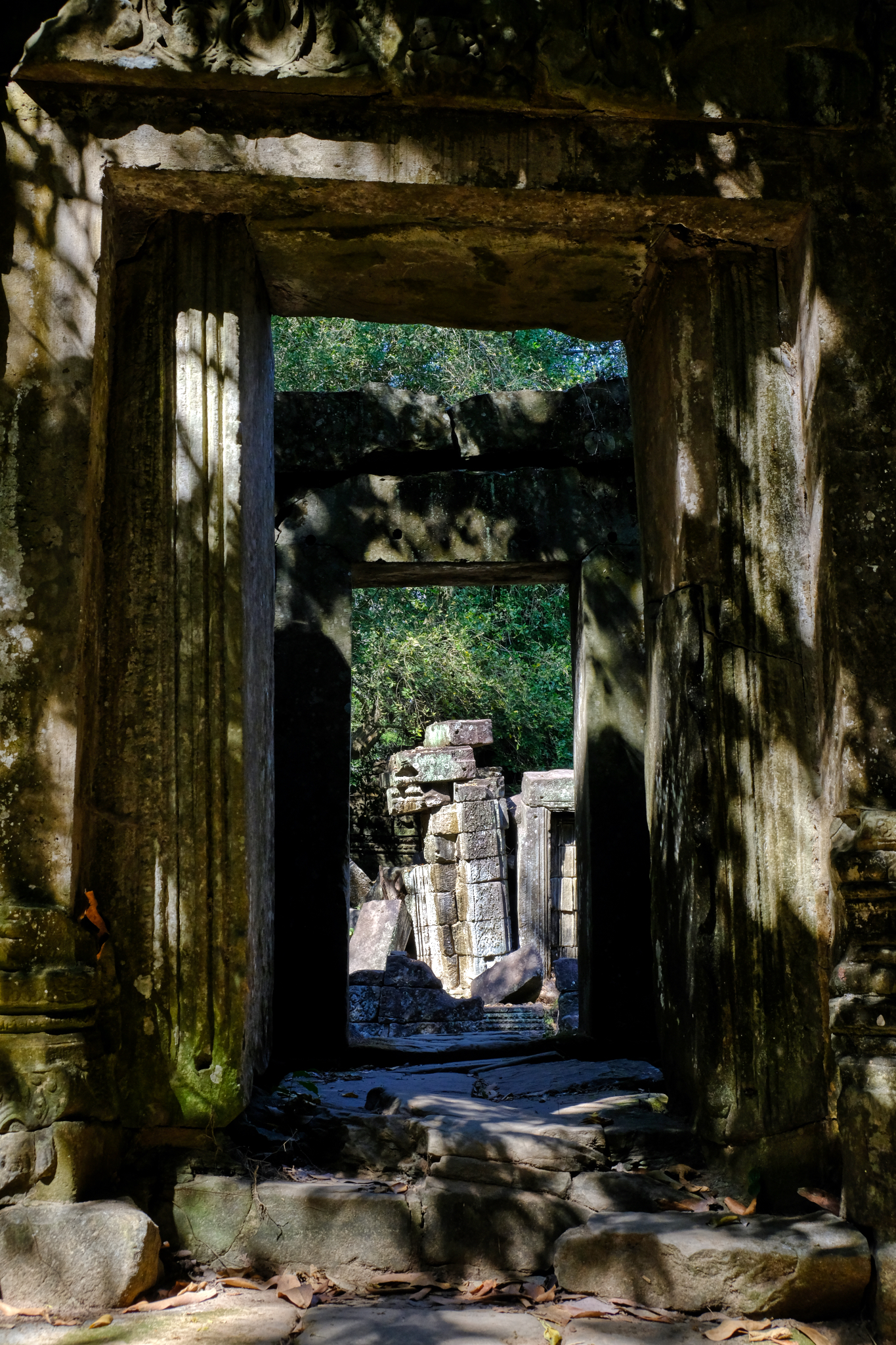 Our long walks through the interior passages would occasionally lead us back outdoors.
Our long walks through the interior passages would occasionally lead us back outdoors.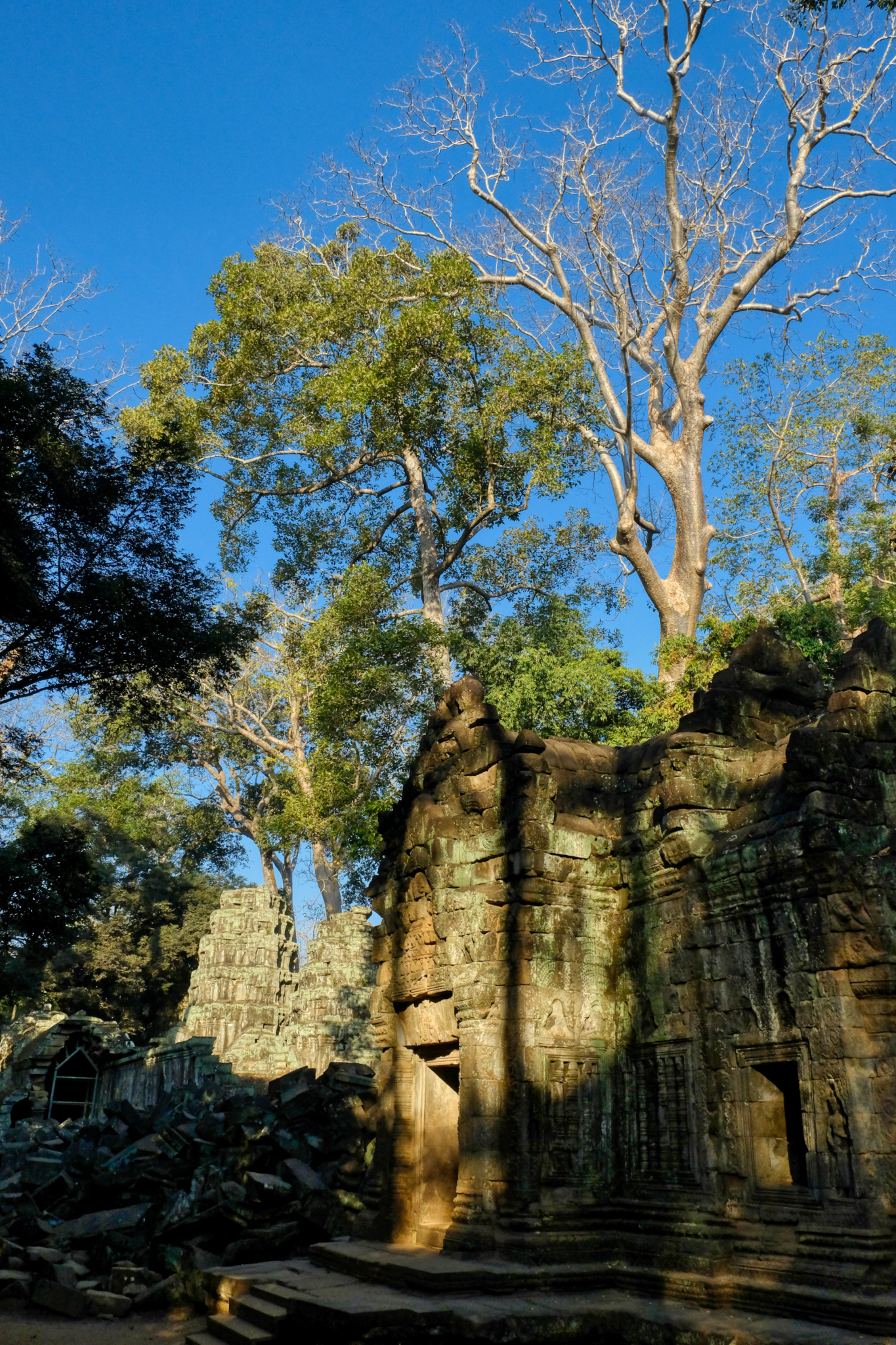 And back outside we were greeted with more amazing ancient monumental temple structures.
And back outside we were greeted with more amazing ancient monumental temple structures.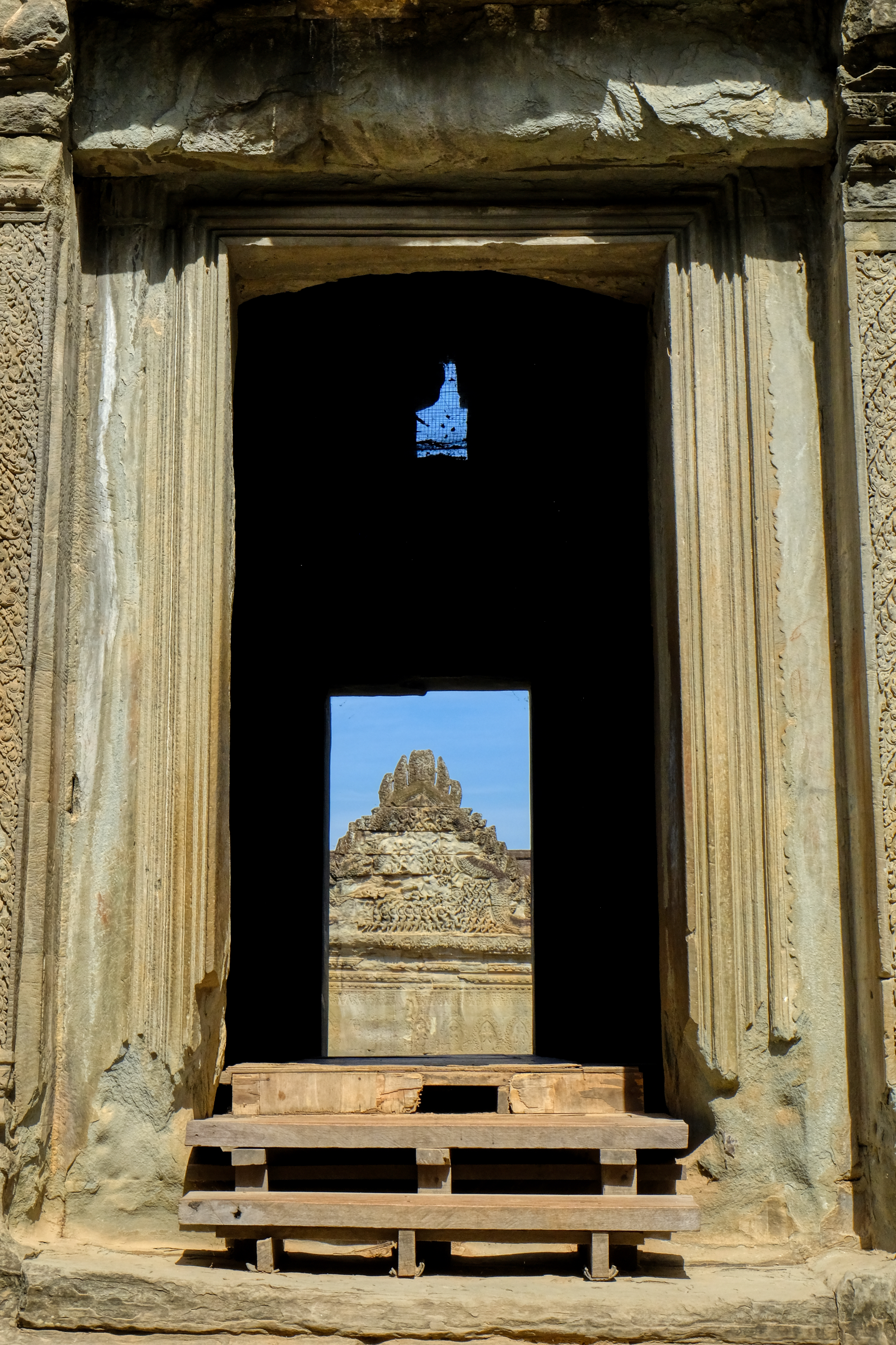 Always tempted to explore in another courtyard . . . endless curiosity.
Always tempted to explore in another courtyard . . . endless curiosity.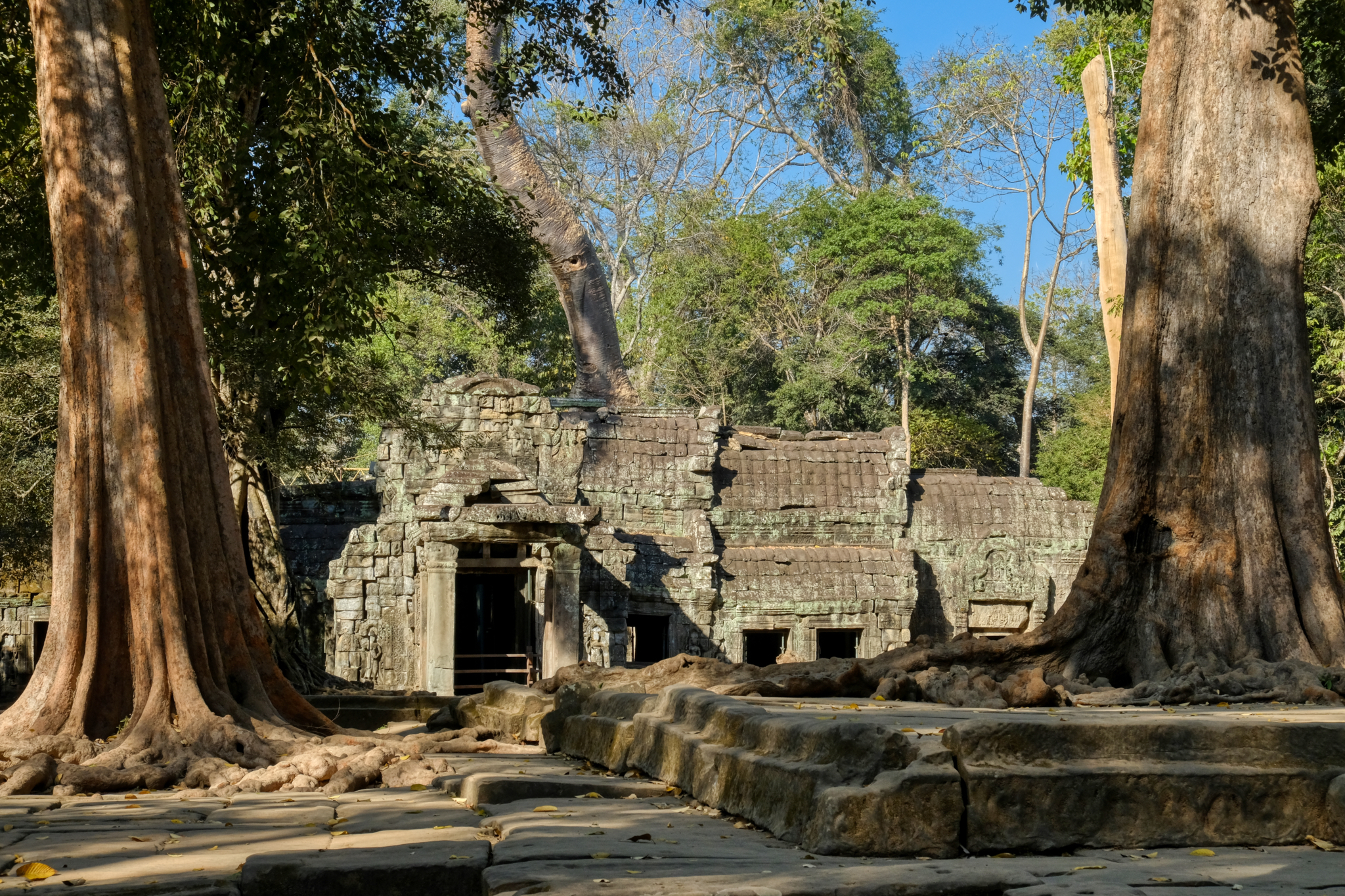 We had a car and driver each day who knew all the temples and would drive us between them. A new temple.
We had a car and driver each day who knew all the temples and would drive us between them. A new temple.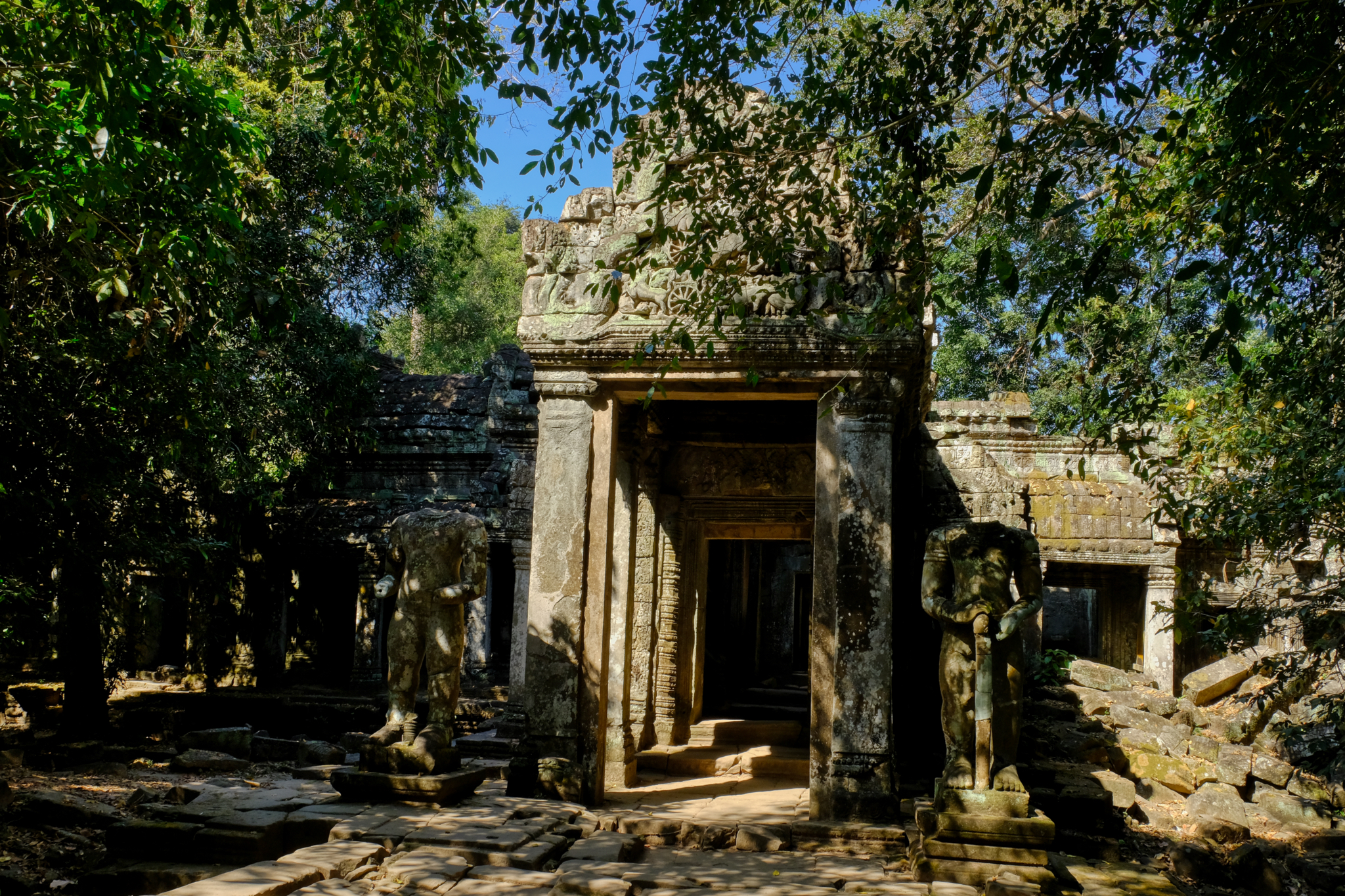 There were signs of vandalism and pilfering of stone figure heads.
There were signs of vandalism and pilfering of stone figure heads.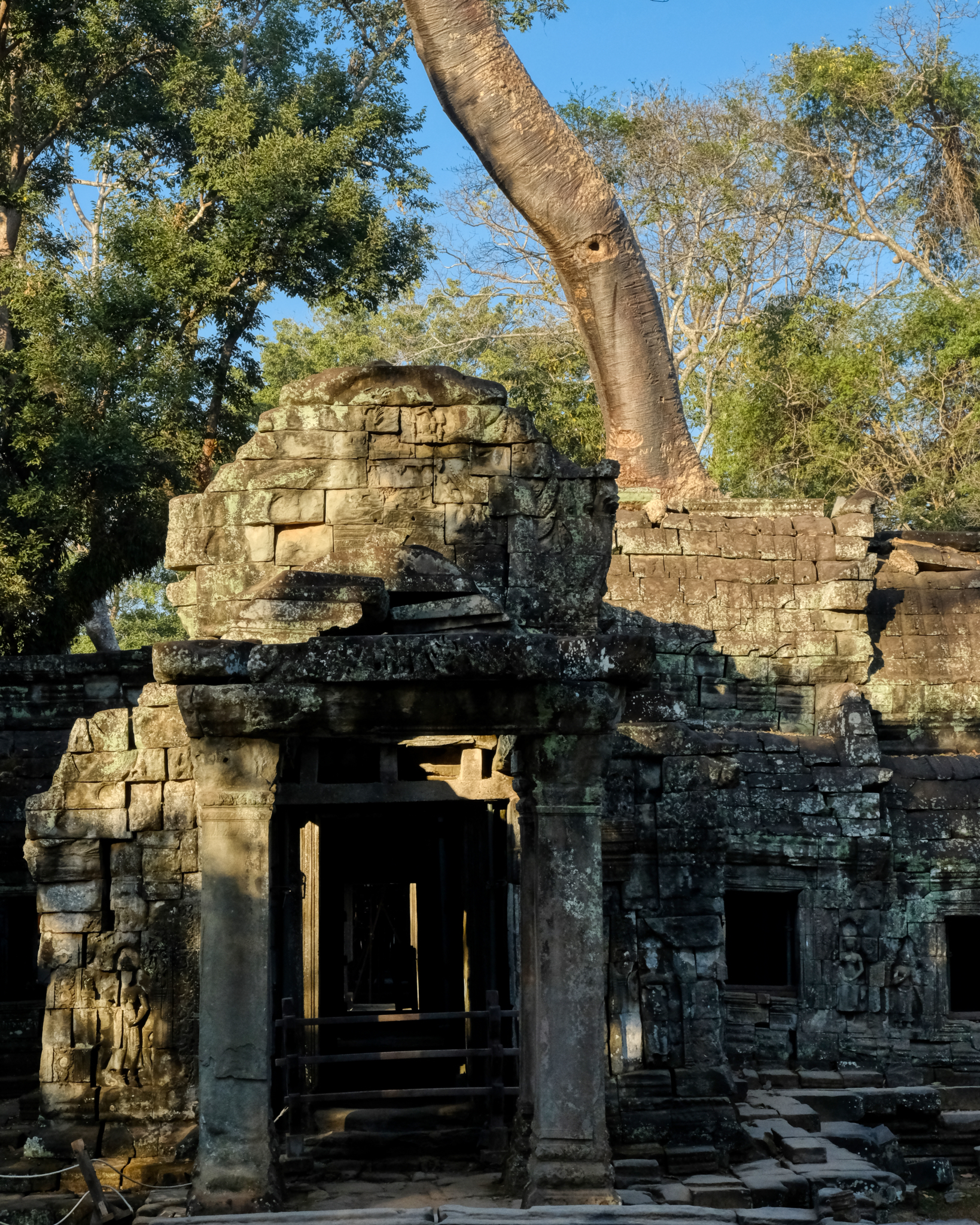 A sweet temple sala.
A sweet temple sala.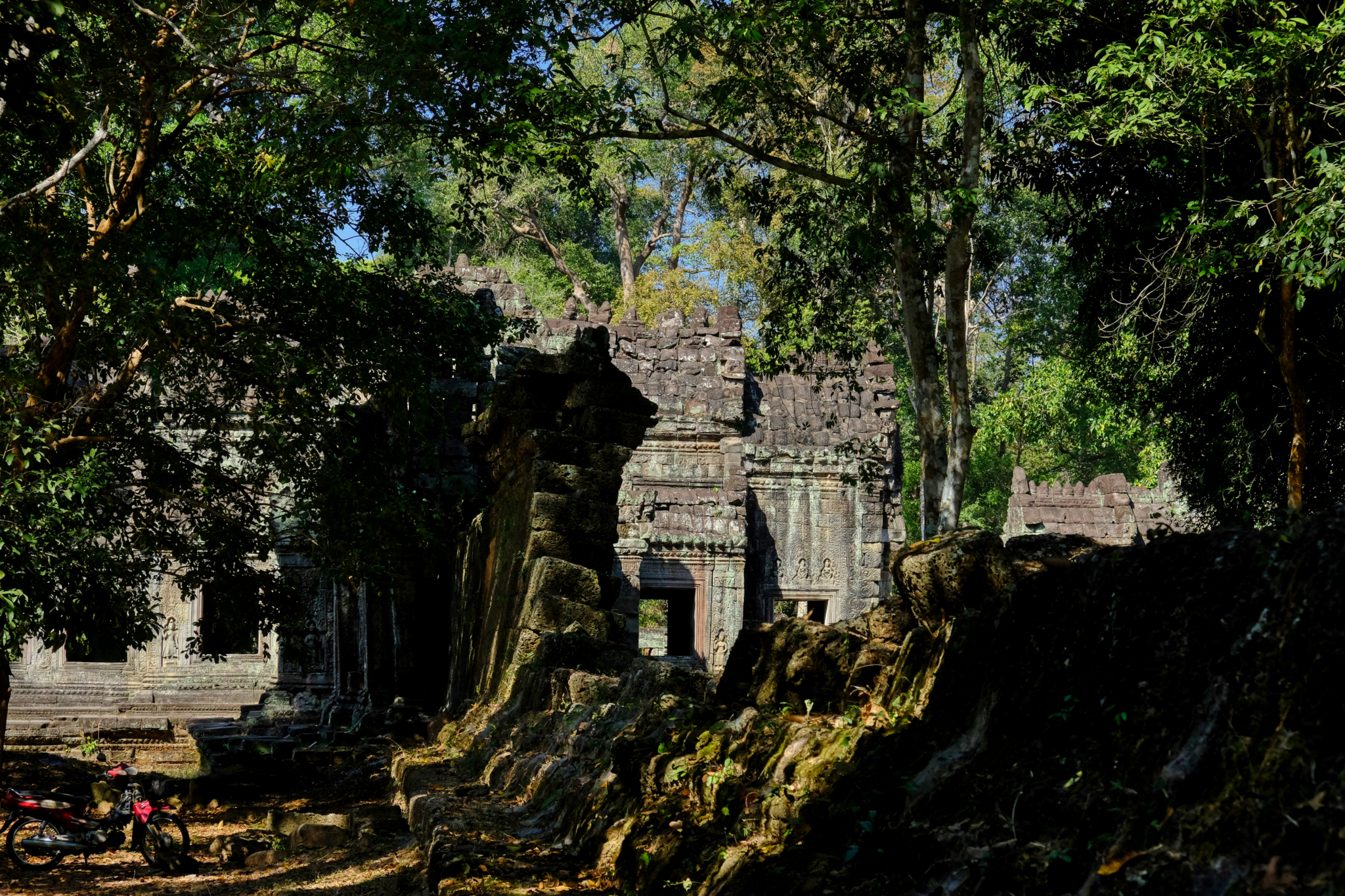 In deep shade or in bright sun, the temples are a marvel of detail . . .
In deep shade or in bright sun, the temples are a marvel of detail . . . 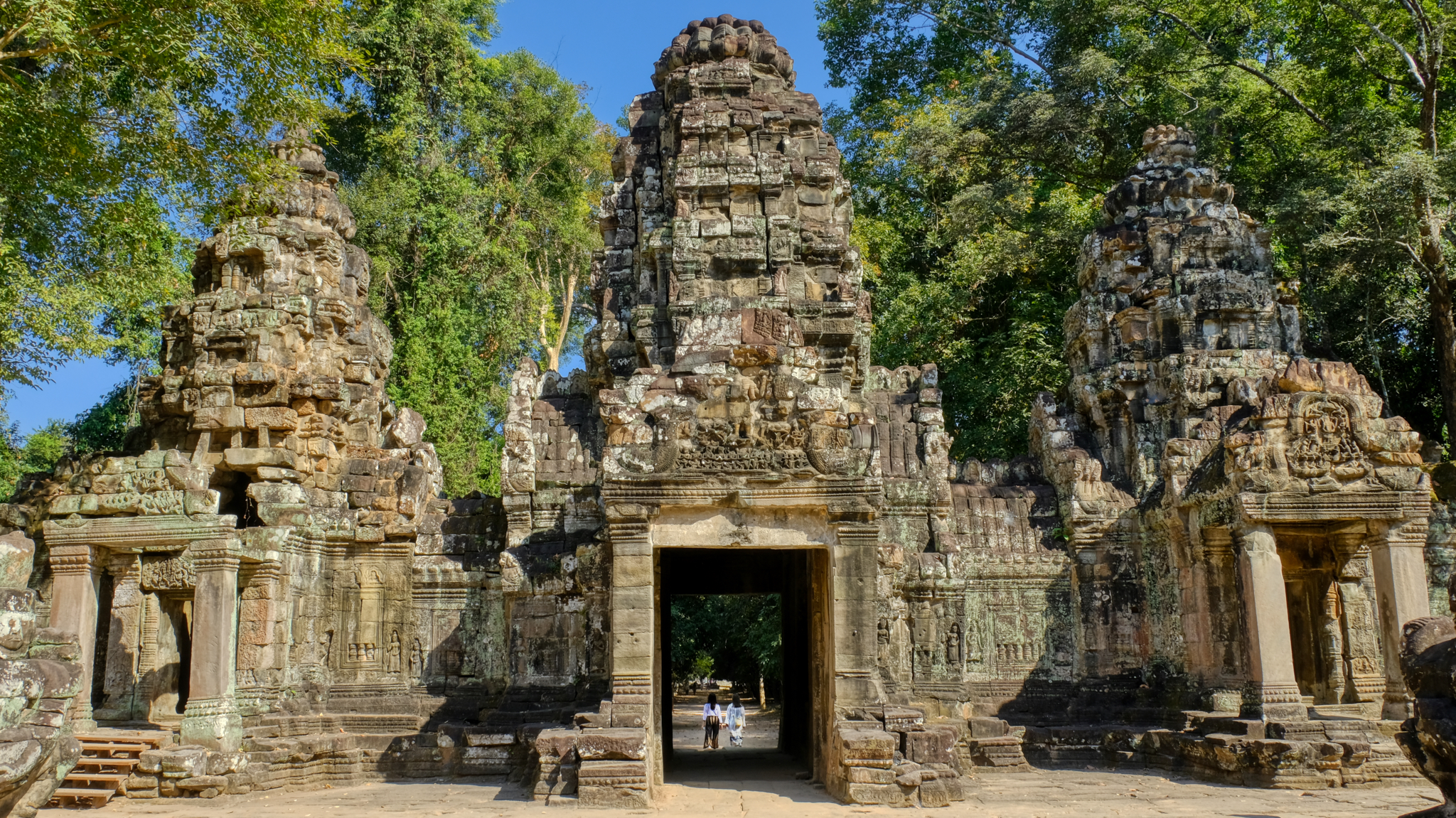 One of the many extraordinary gates.
One of the many extraordinary gates.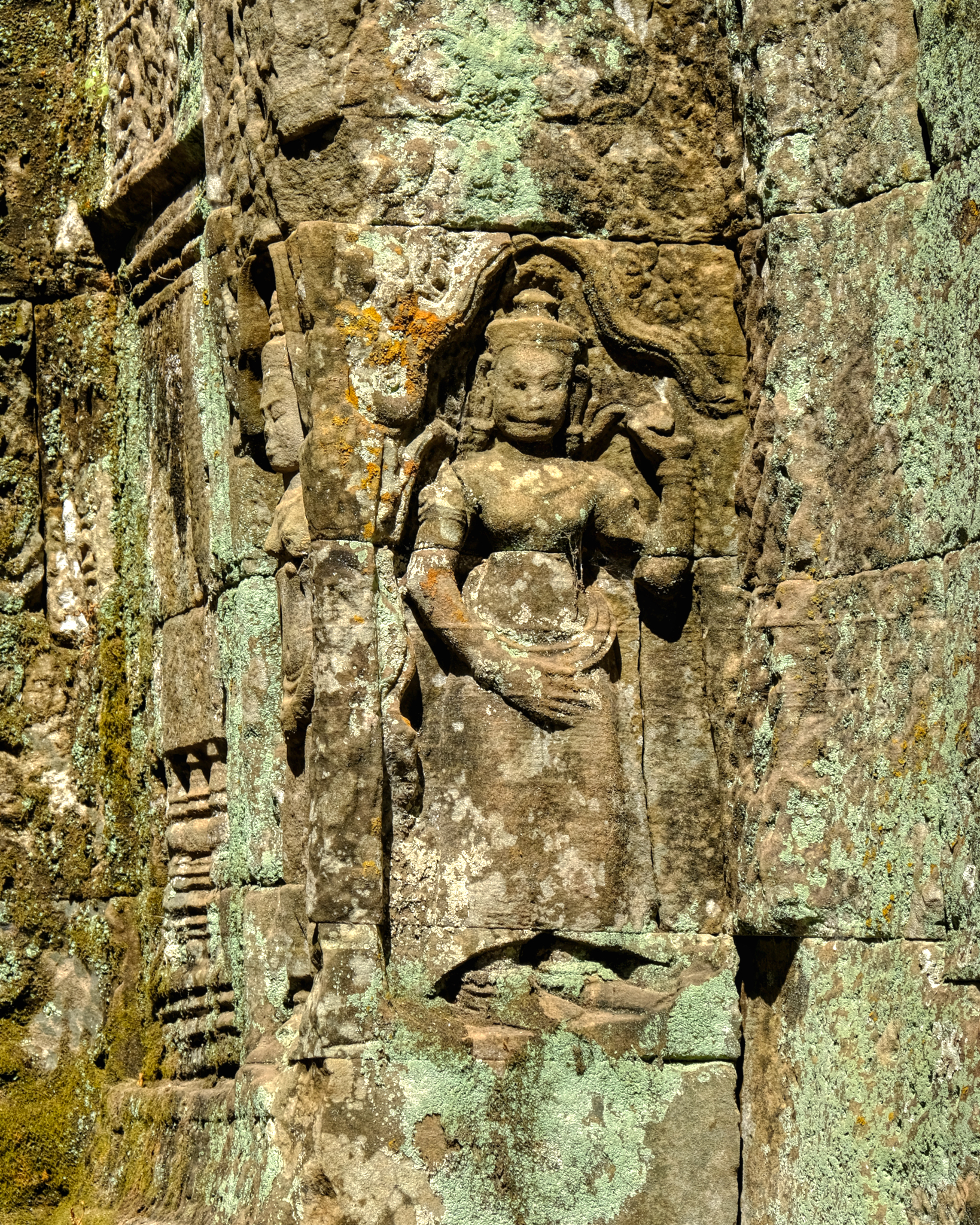 These gates were carved in exquisite detail. Cambodia is a tropical country with a considerable wet season each year, as evidenced by the moss and mold that often covered the monuments.
These gates were carved in exquisite detail. Cambodia is a tropical country with a considerable wet season each year, as evidenced by the moss and mold that often covered the monuments.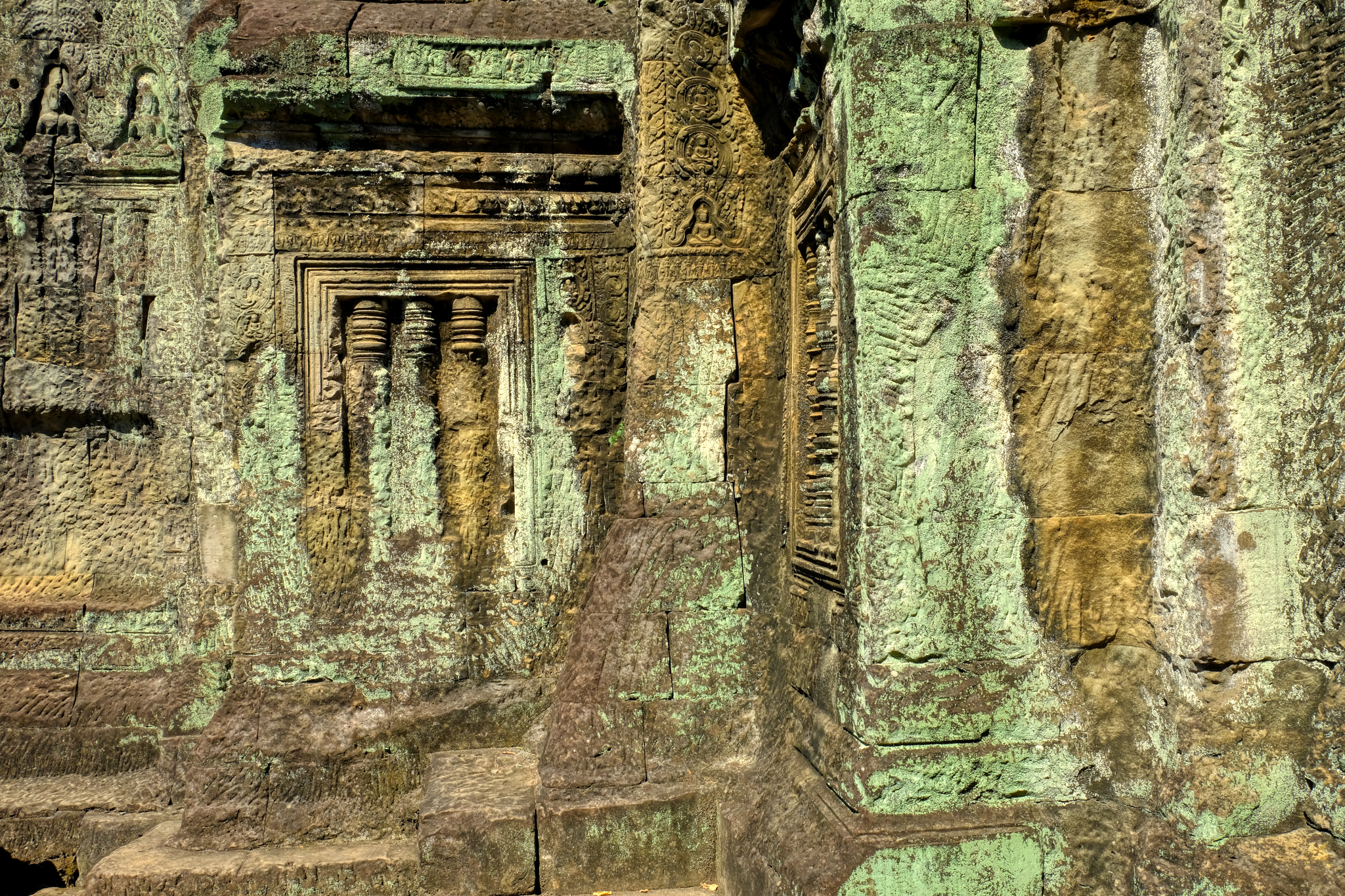 The harsh, almost clinical, light actually helps in these photos of the tropical encrusting of the ruins.
The harsh, almost clinical, light actually helps in these photos of the tropical encrusting of the ruins.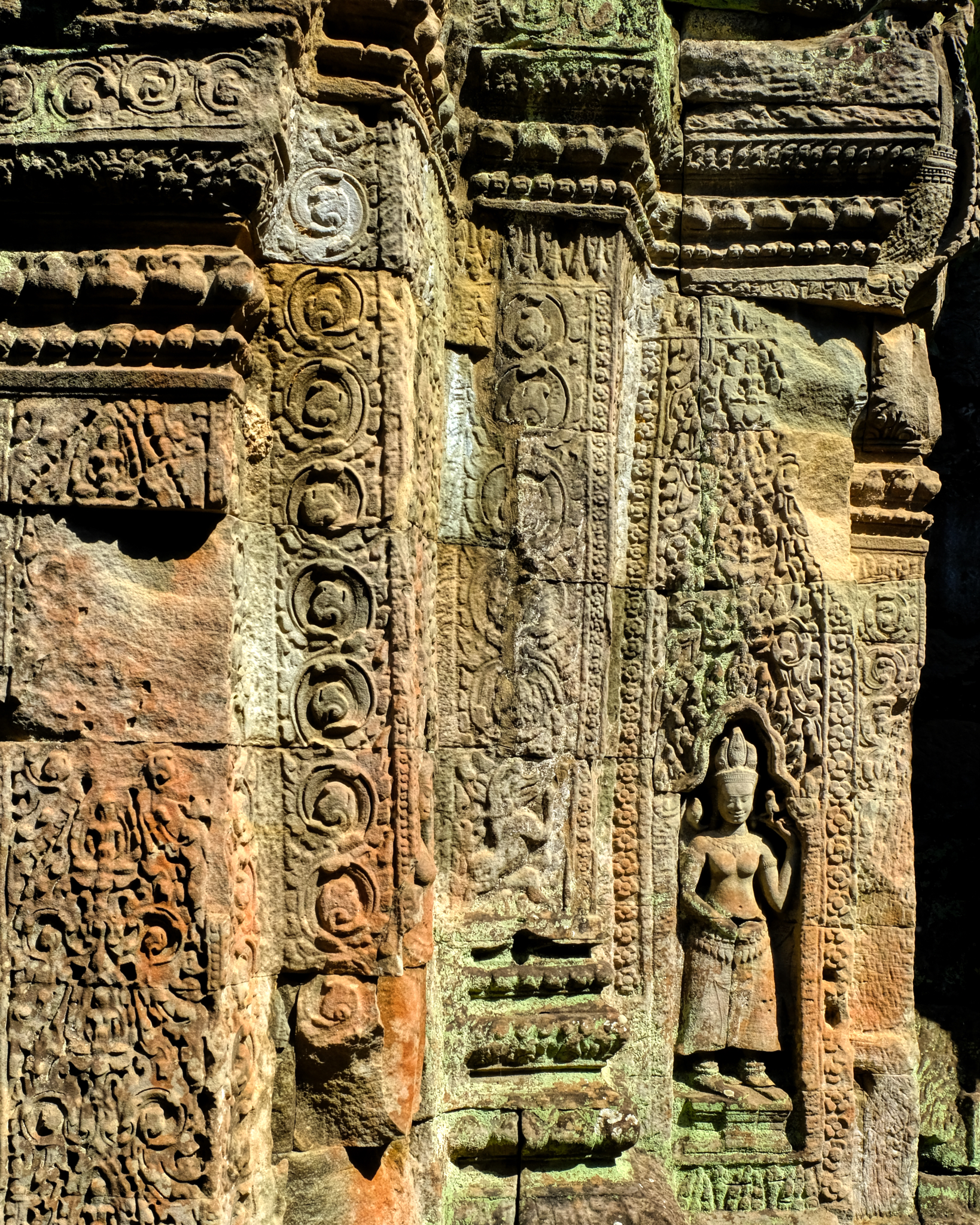 Such beautifully carved figures and patterns everywhere.
Such beautifully carved figures and patterns everywhere.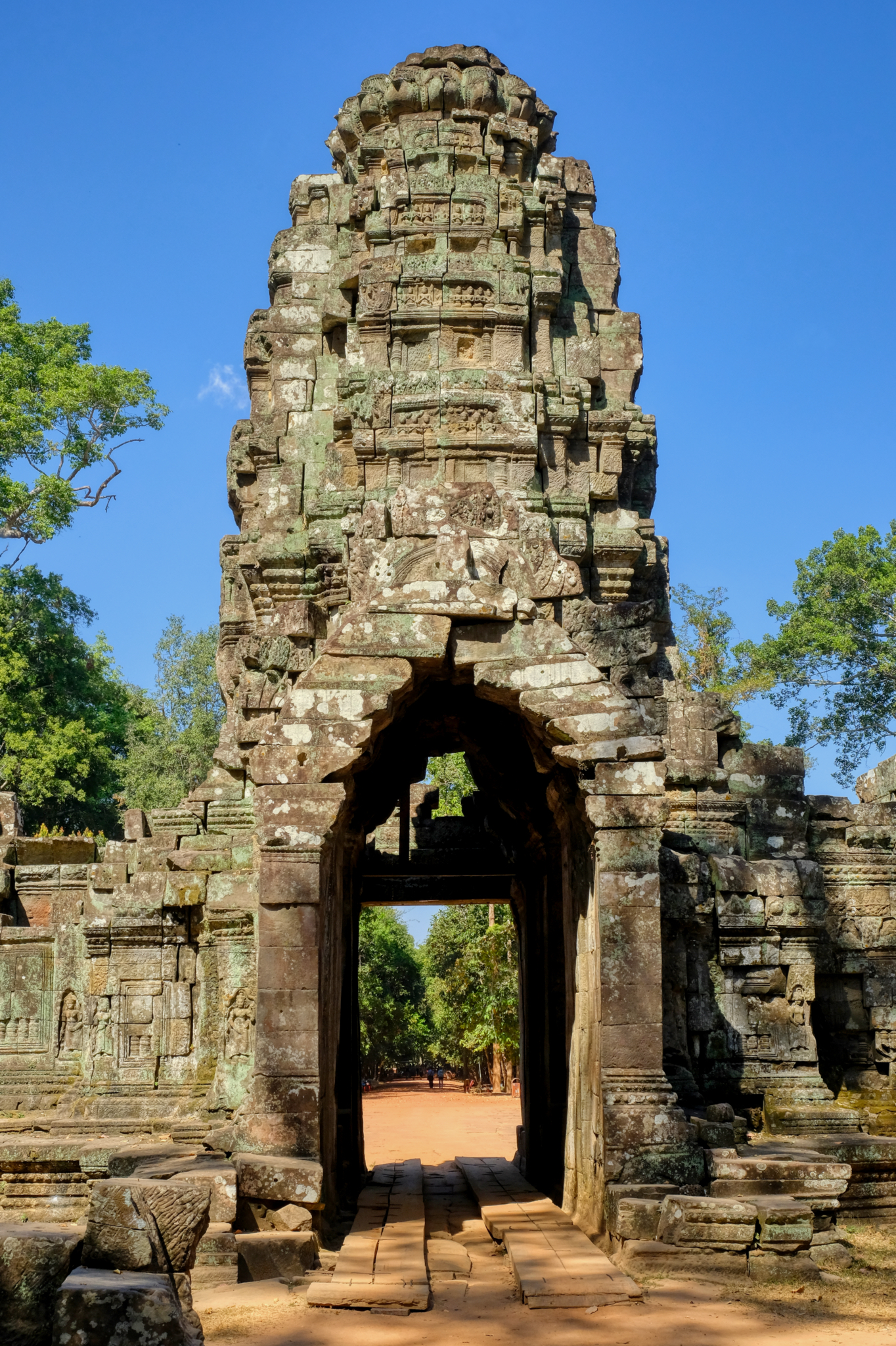 I loved these gates . . .
I loved these gates . . . 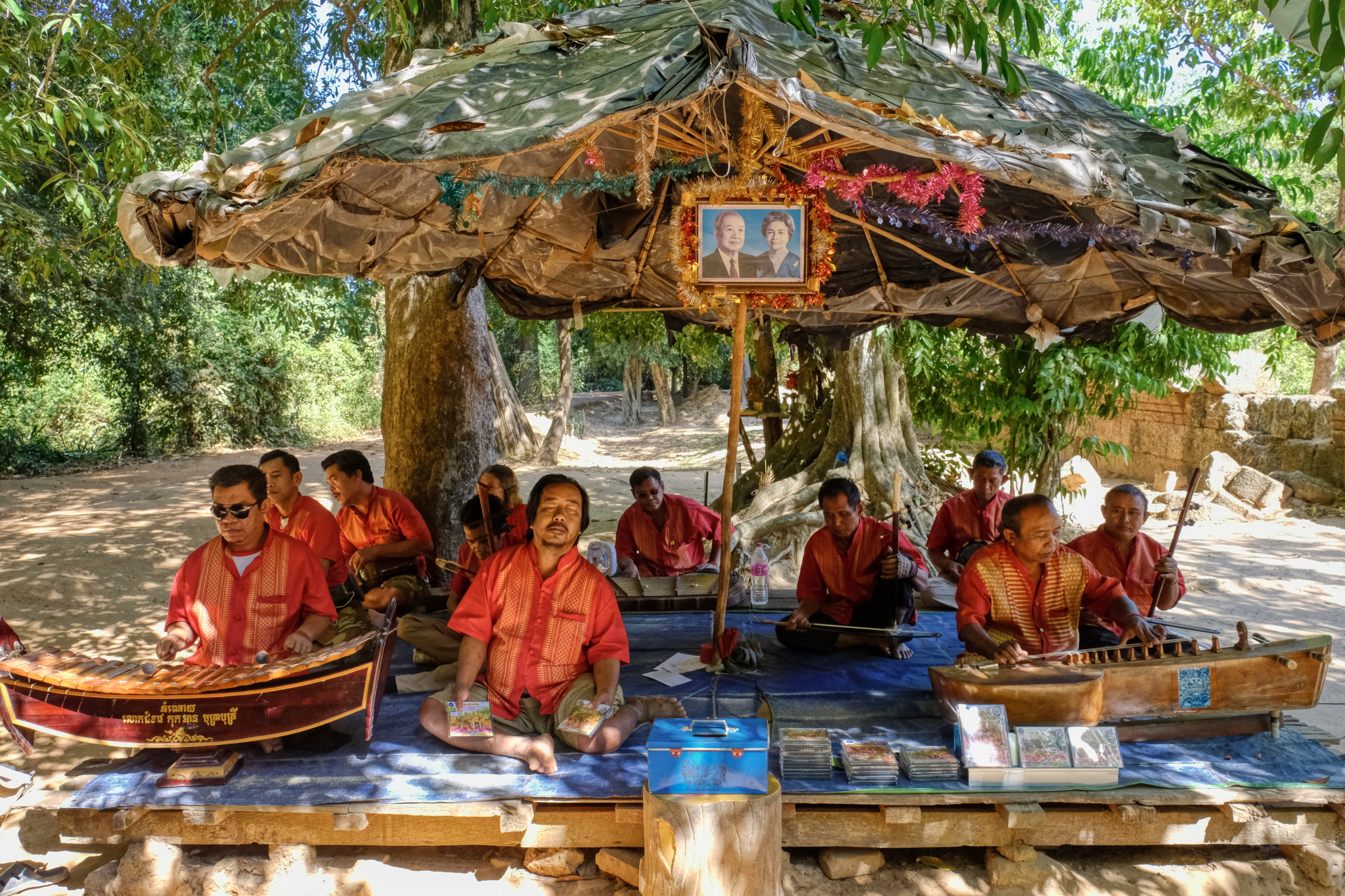 After walking through the gates, it was sometimes a kilometer or more until you arrived at the temple complex. Sometimes there would be traditional Khmer musicians along the walk.
After walking through the gates, it was sometimes a kilometer or more until you arrived at the temple complex. Sometimes there would be traditional Khmer musicians along the walk.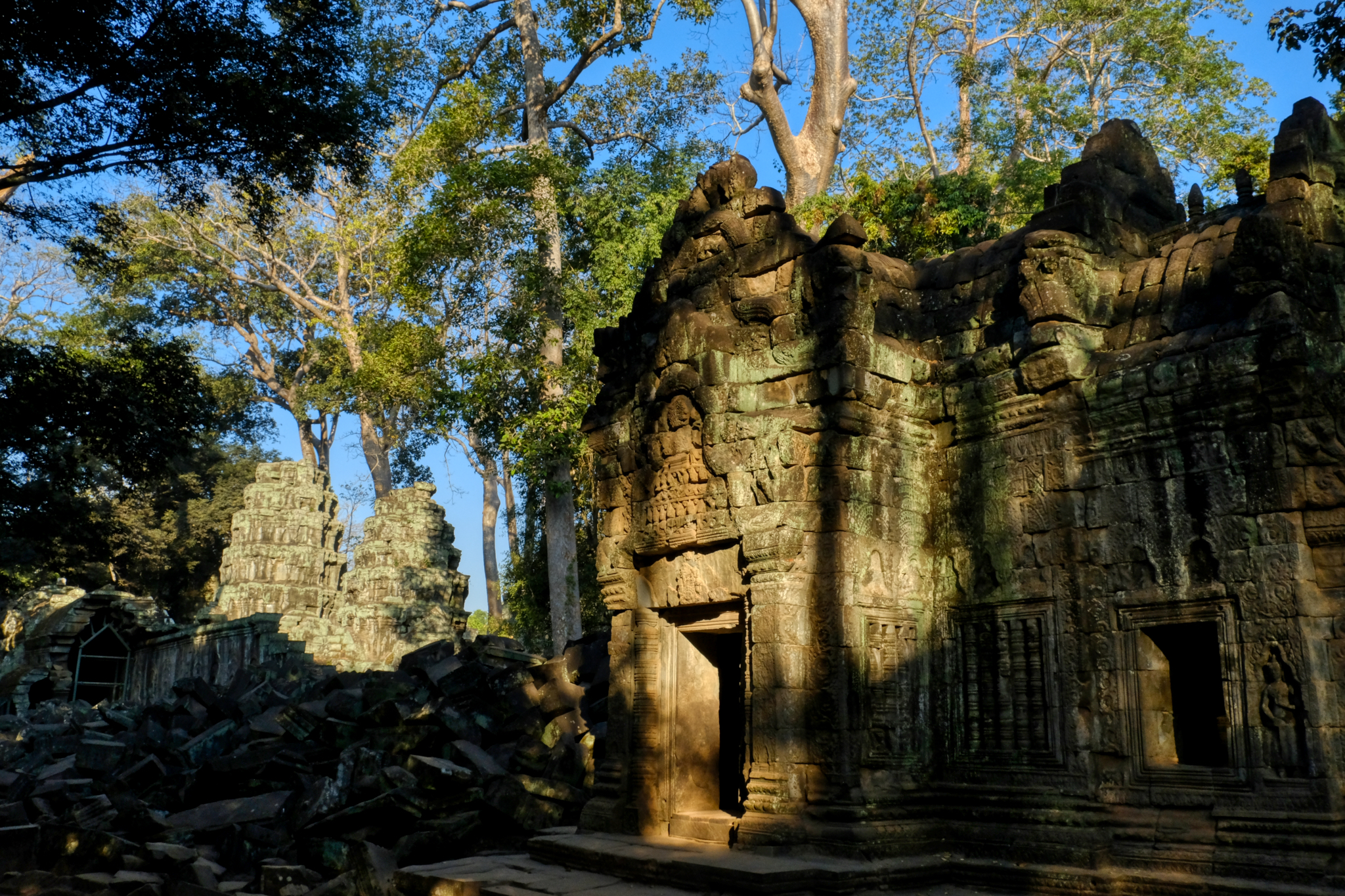 We spent two full days, starting before sunrise and ending after sunset, among the Angkor ruin.
We spent two full days, starting before sunrise and ending after sunset, among the Angkor ruin.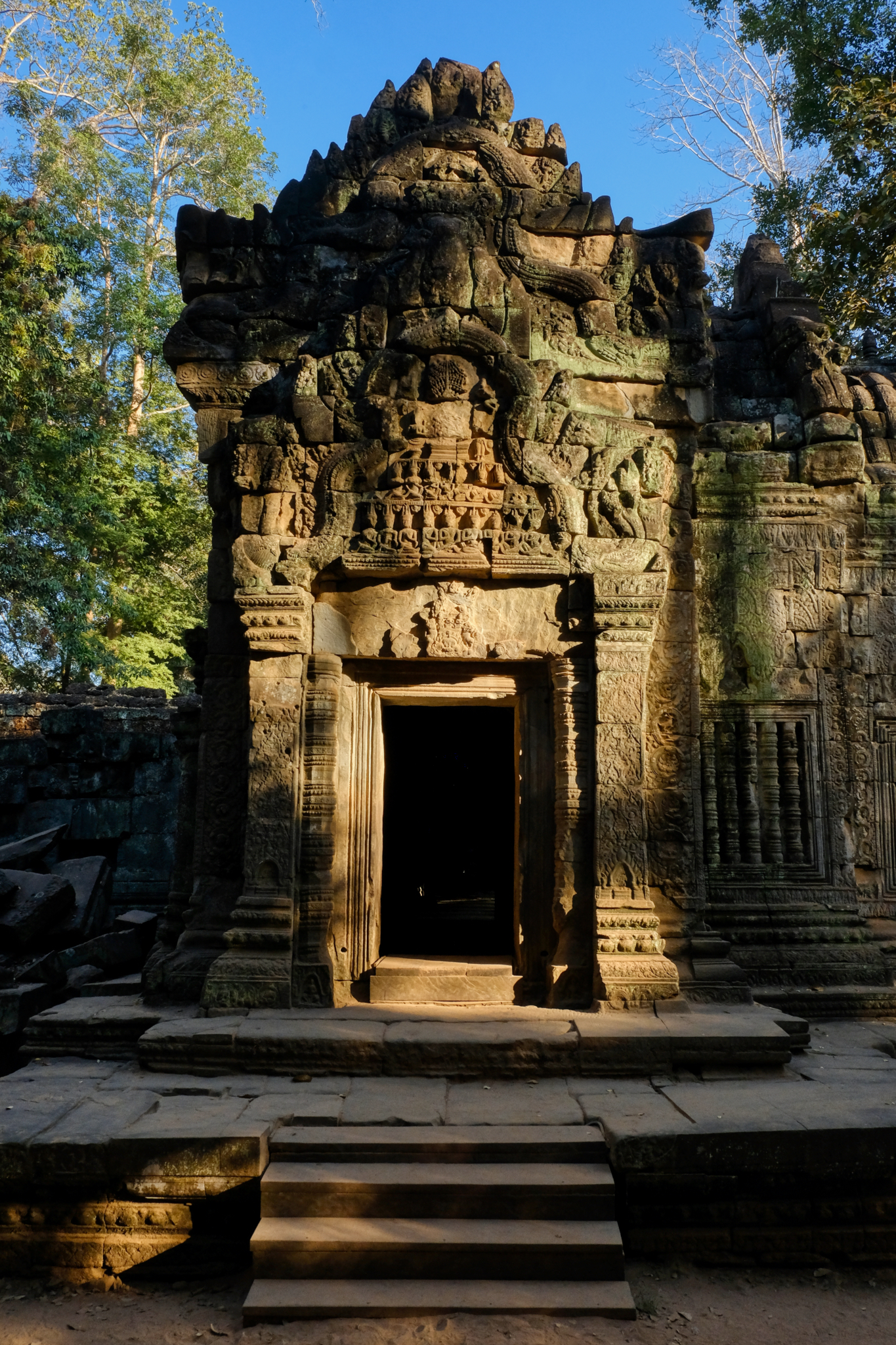 The late, angled light made for some fantastic conditions for photography.
The late, angled light made for some fantastic conditions for photography.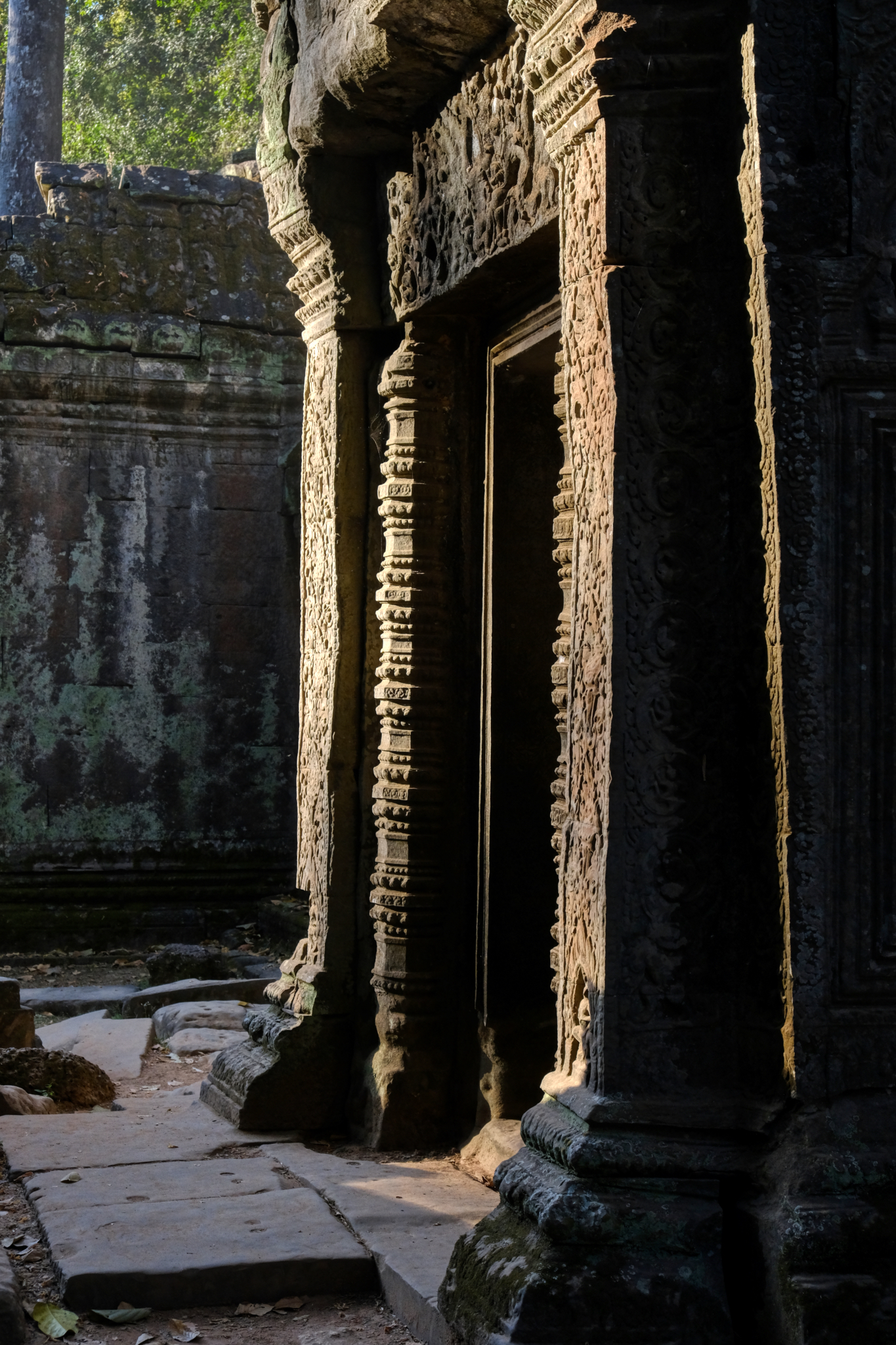 Late light and shadow on the Angkor Wat ruins.
Late light and shadow on the Angkor Wat ruins.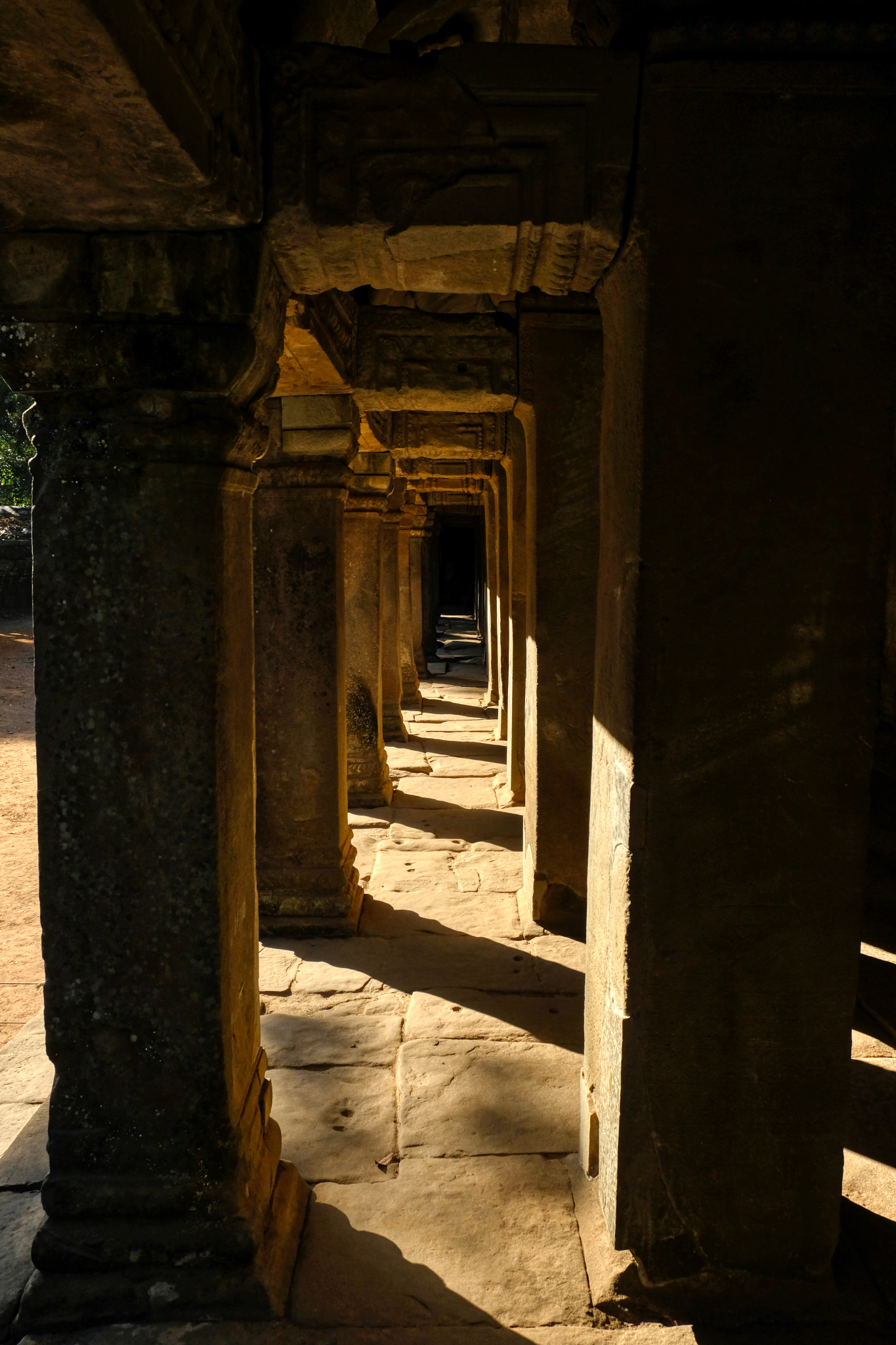 Sharp shadow in the Angkor Wat colonnades.
Sharp shadow in the Angkor Wat colonnades.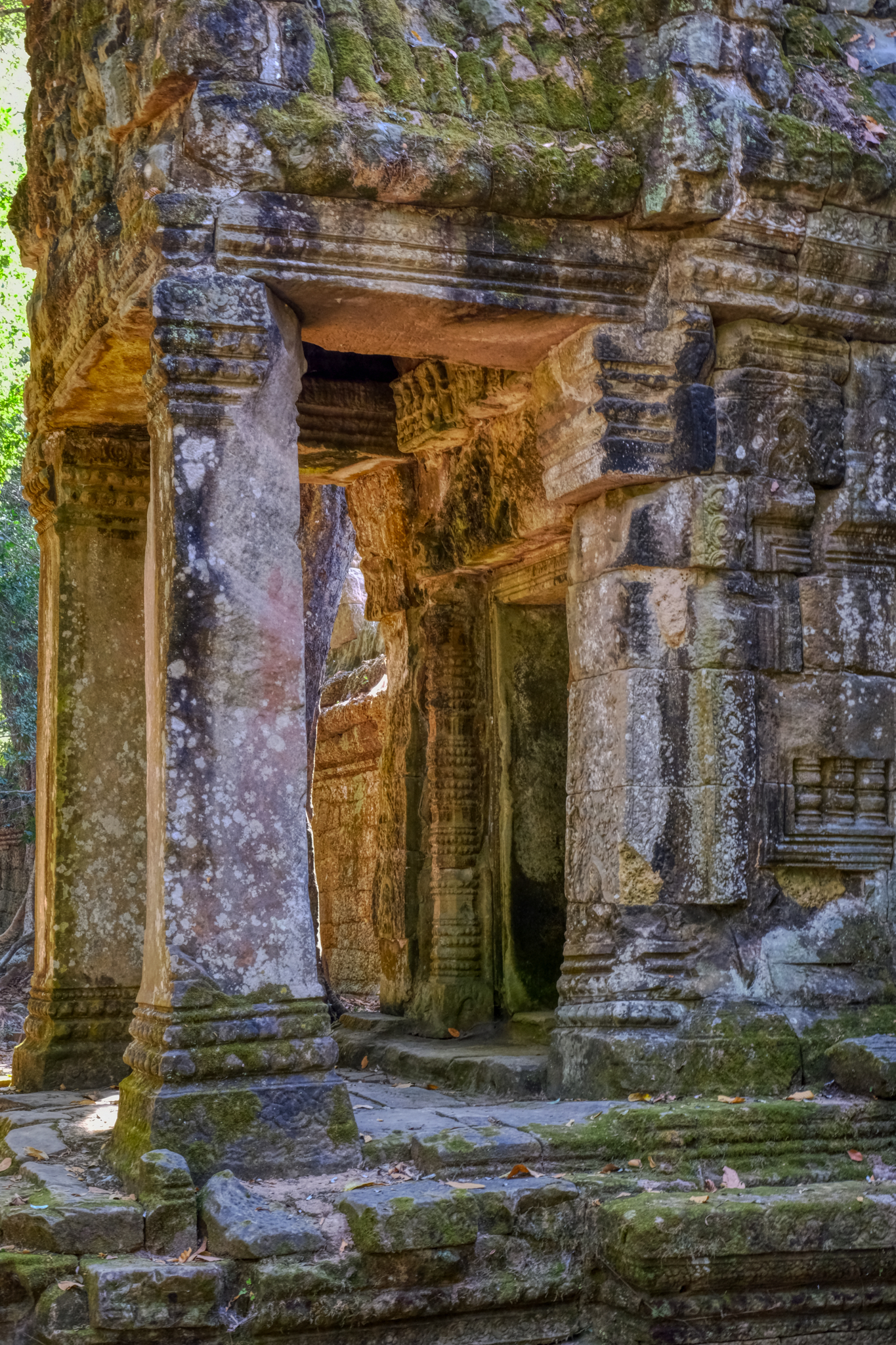 Ah! The light!
Ah! The light!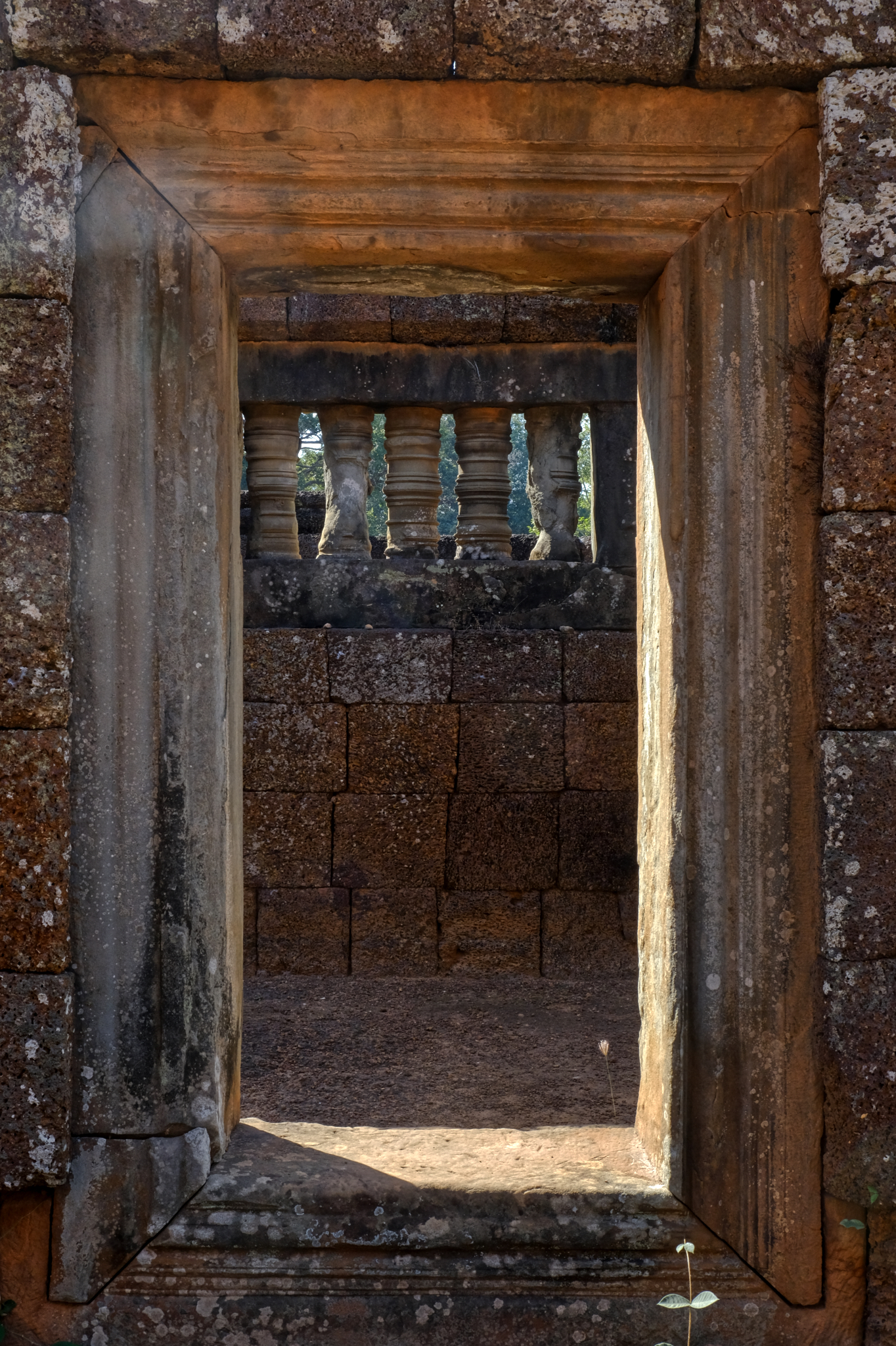 Shadows framed.
Shadows framed.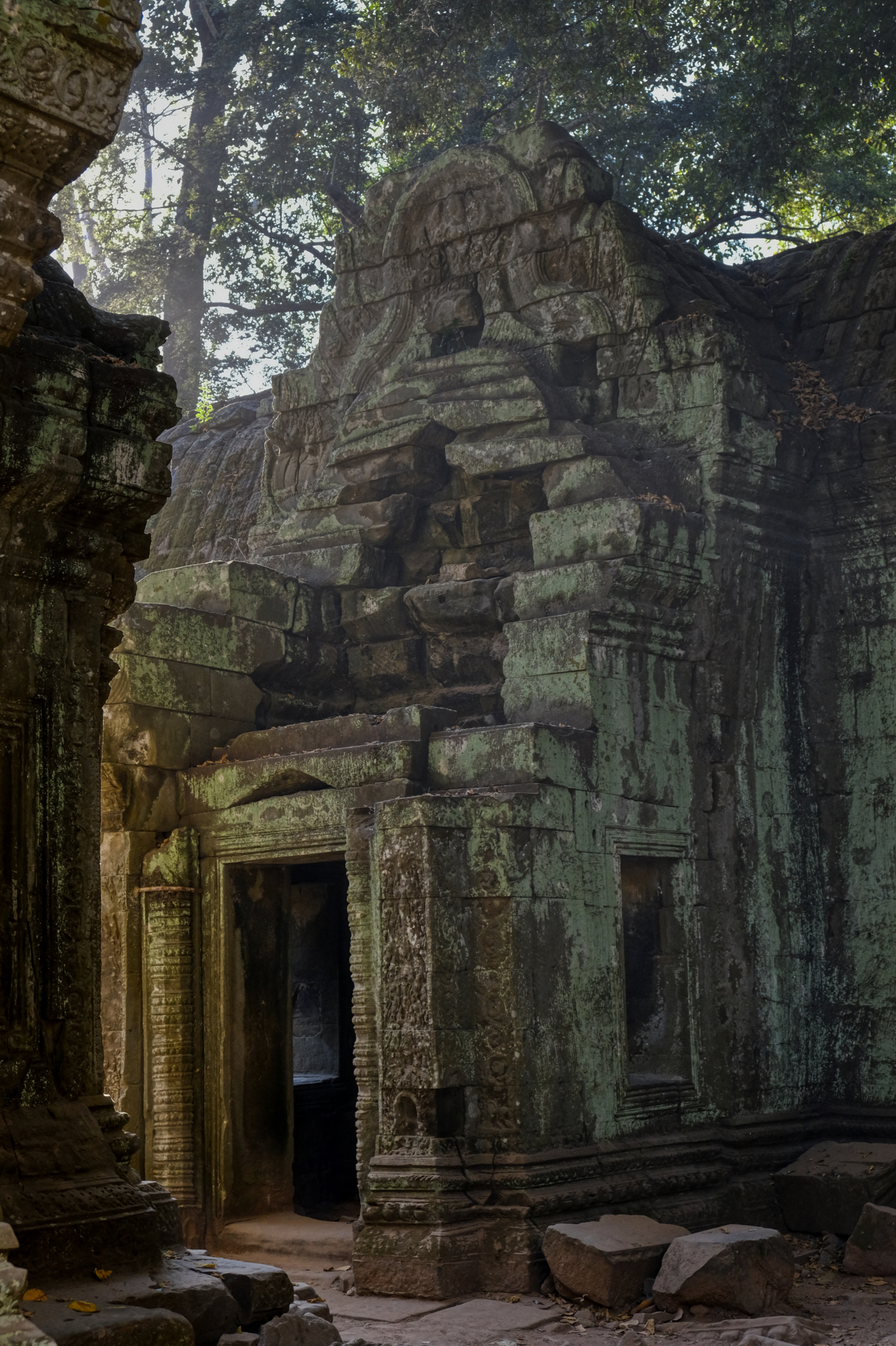 Smoky ruins in the late light.
Smoky ruins in the late light.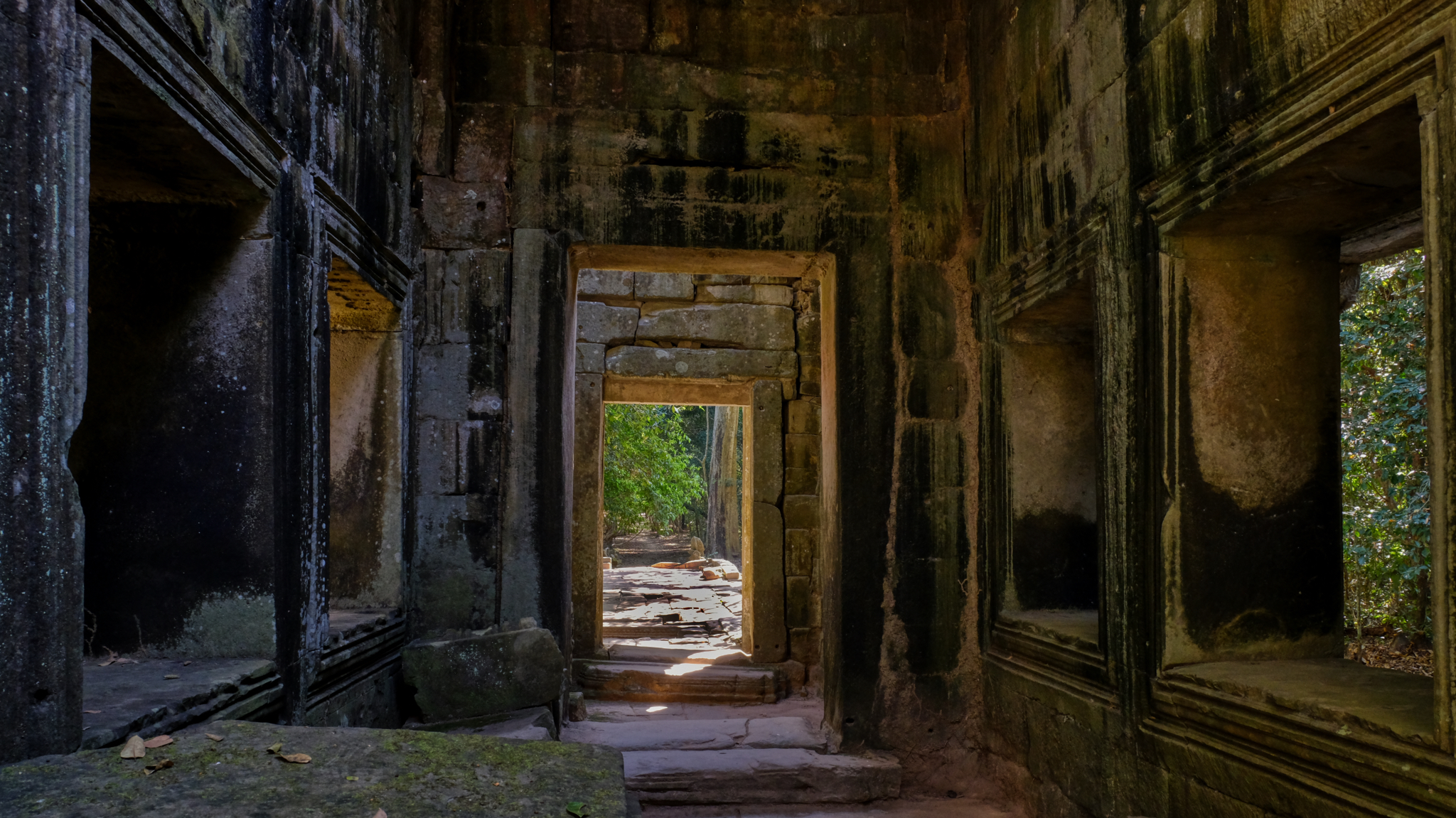 These interiors were full of an almost magical spiritual moodiness.
These interiors were full of an almost magical spiritual moodiness.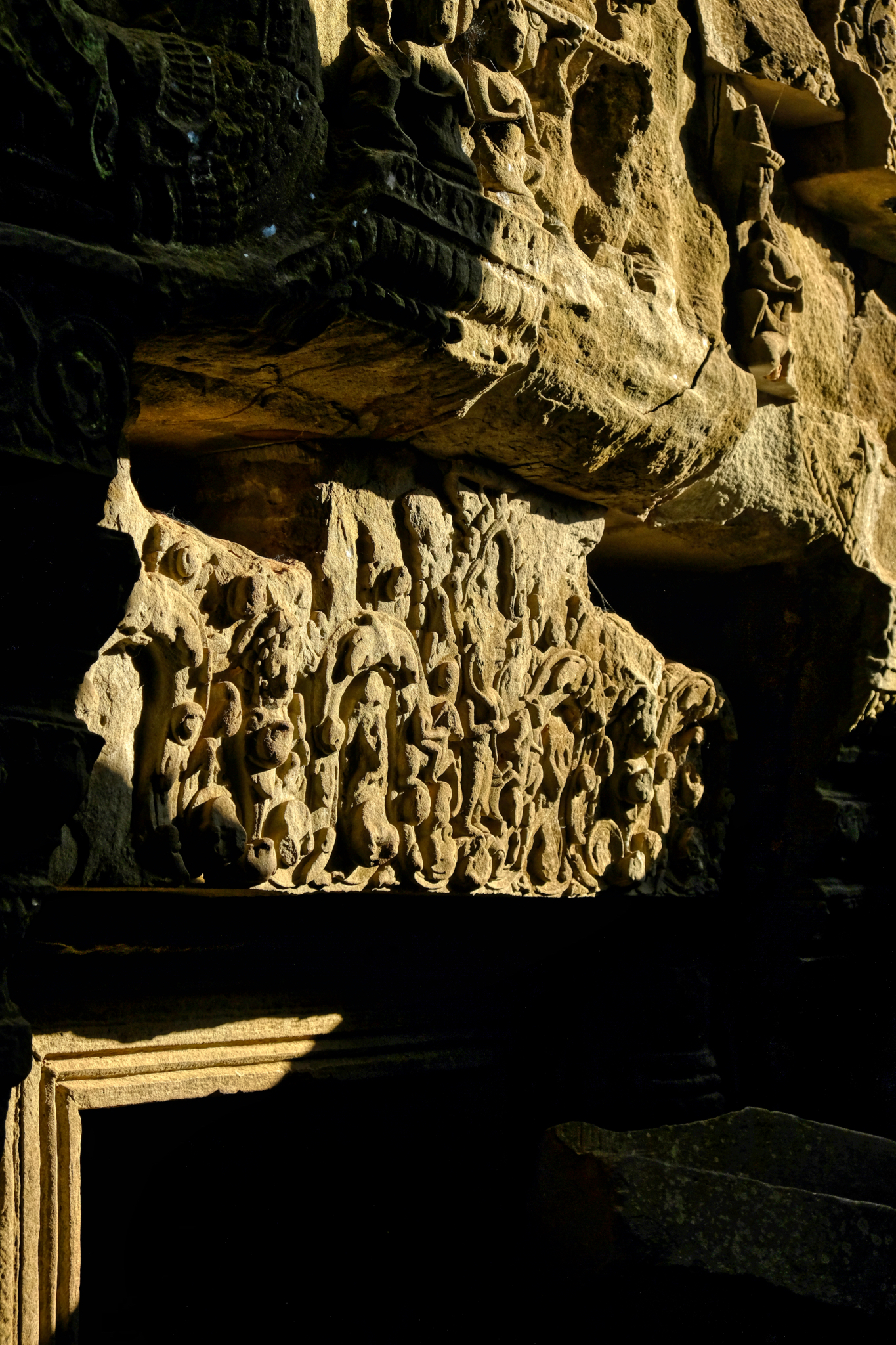 Long shadows accentuated the fine detail. Almost every surface of the temples was carved.
Long shadows accentuated the fine detail. Almost every surface of the temples was carved.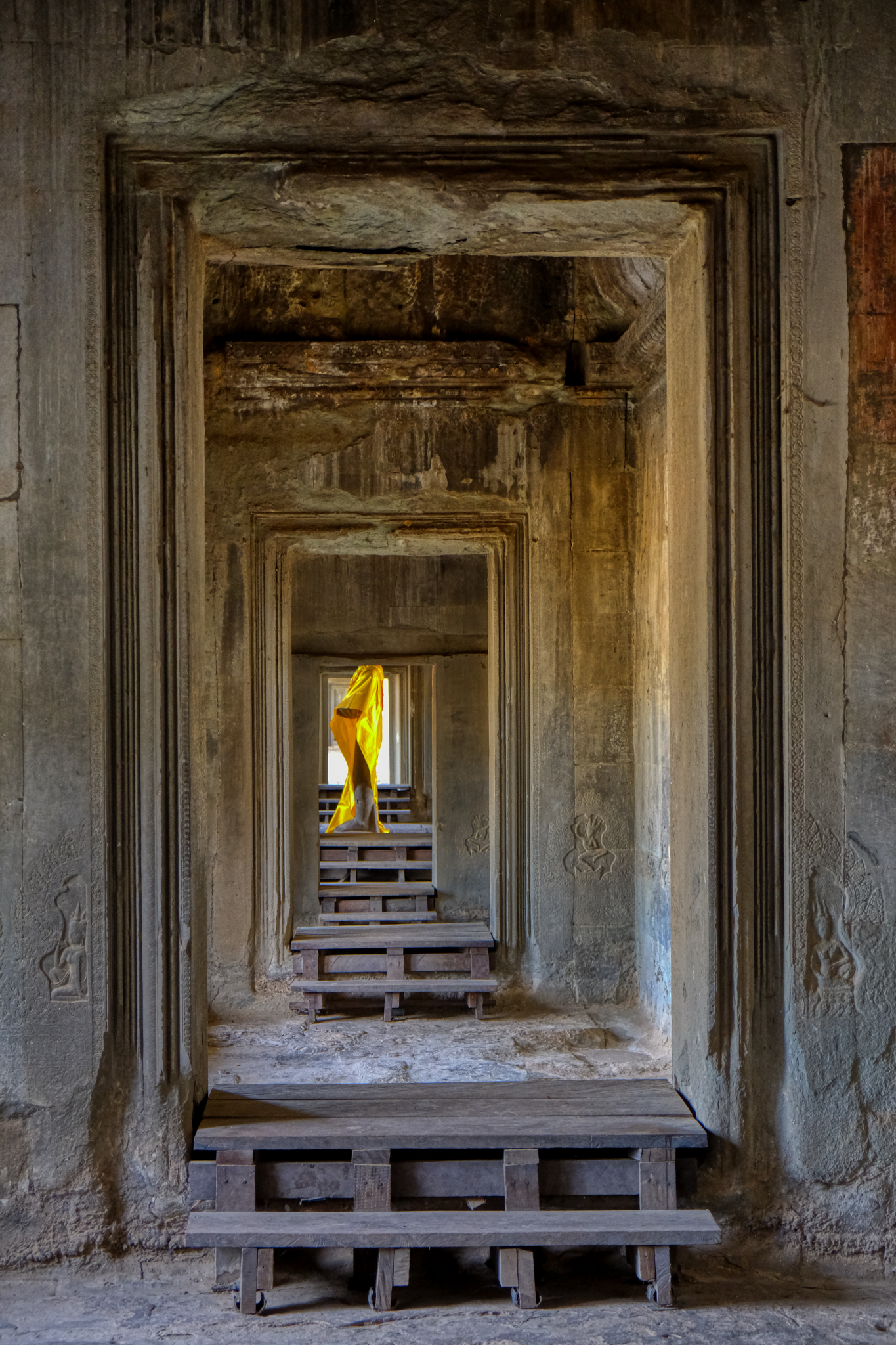 As you might imagine, I was in photographers' heaven walking the halls and passages of Angkor Wat . . . something amazing to shoot at every turn.
As you might imagine, I was in photographers' heaven walking the halls and passages of Angkor Wat . . . something amazing to shoot at every turn.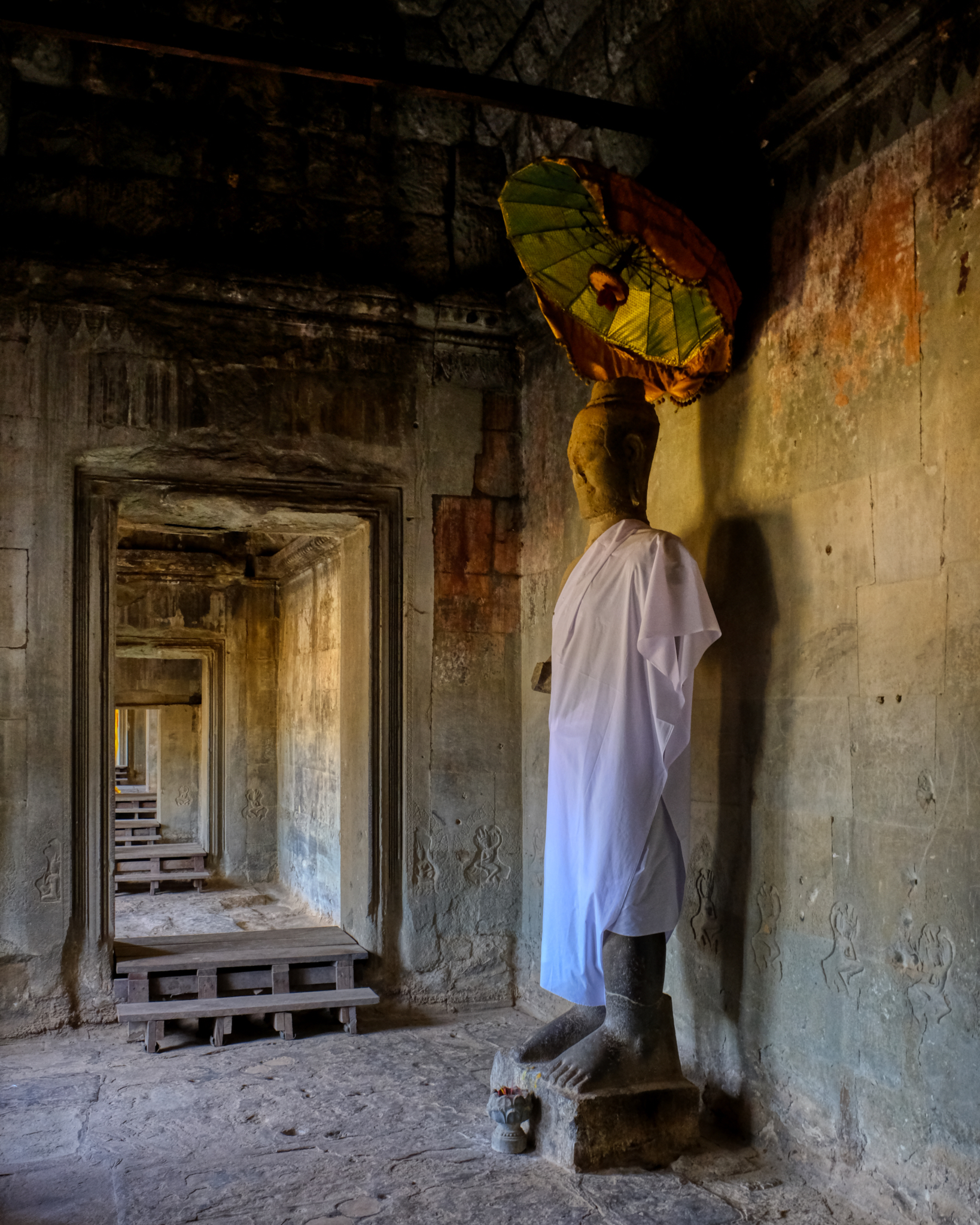 A new image at each turn, at each new chamber, at each door.
A new image at each turn, at each new chamber, at each door.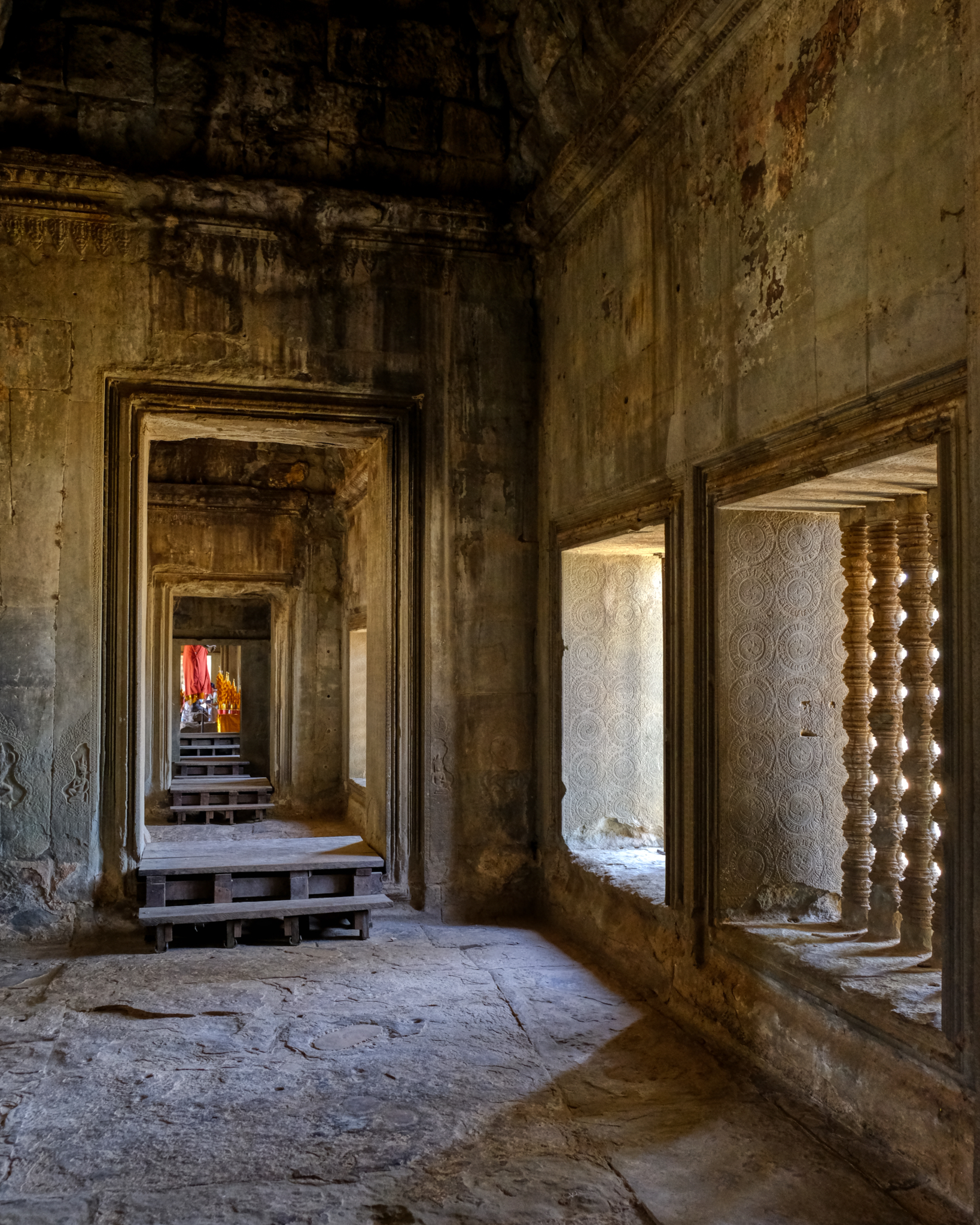 A surprise ahead!
A surprise ahead!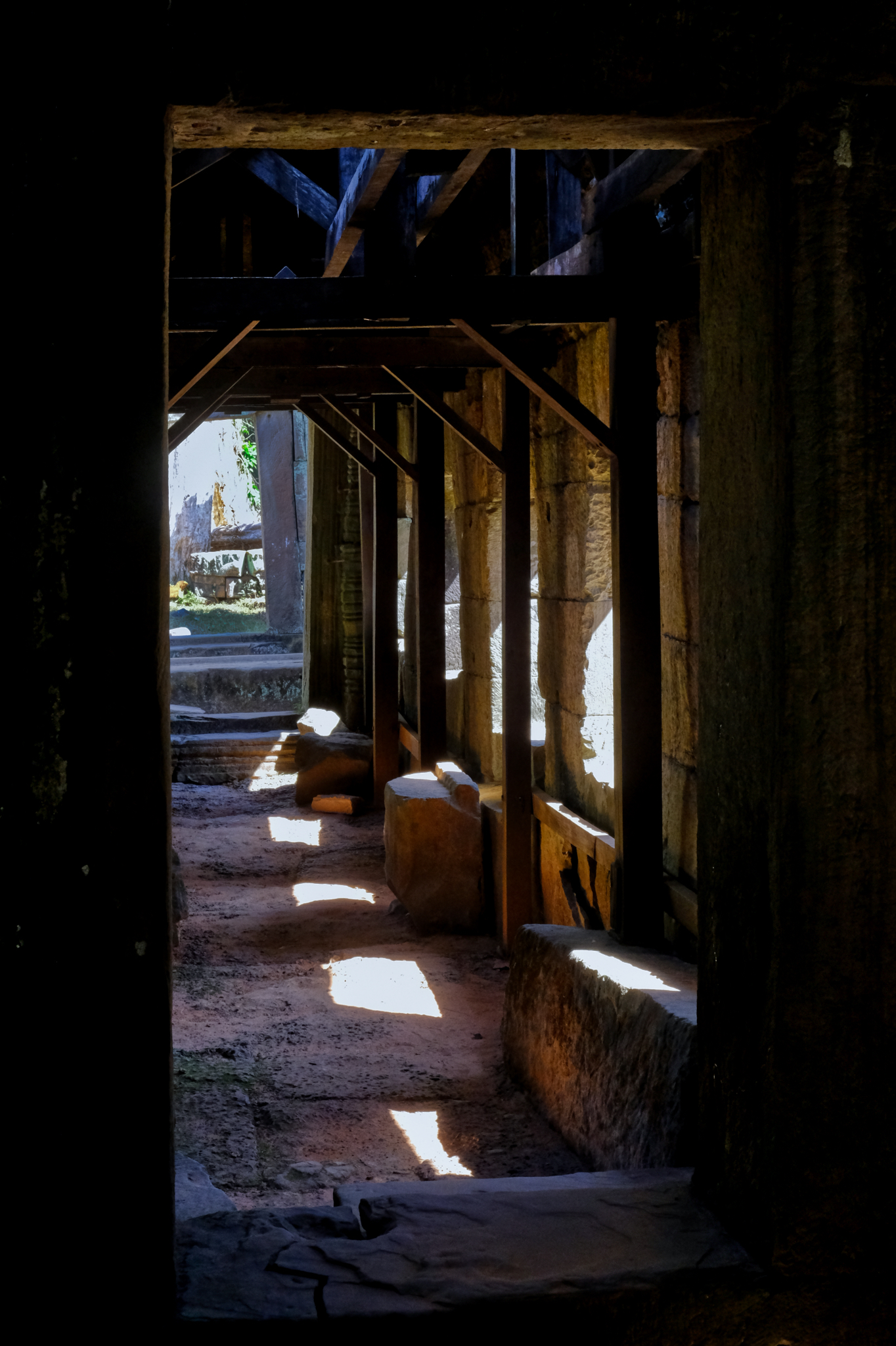 Gorgeous light along the galleries.
Gorgeous light along the galleries.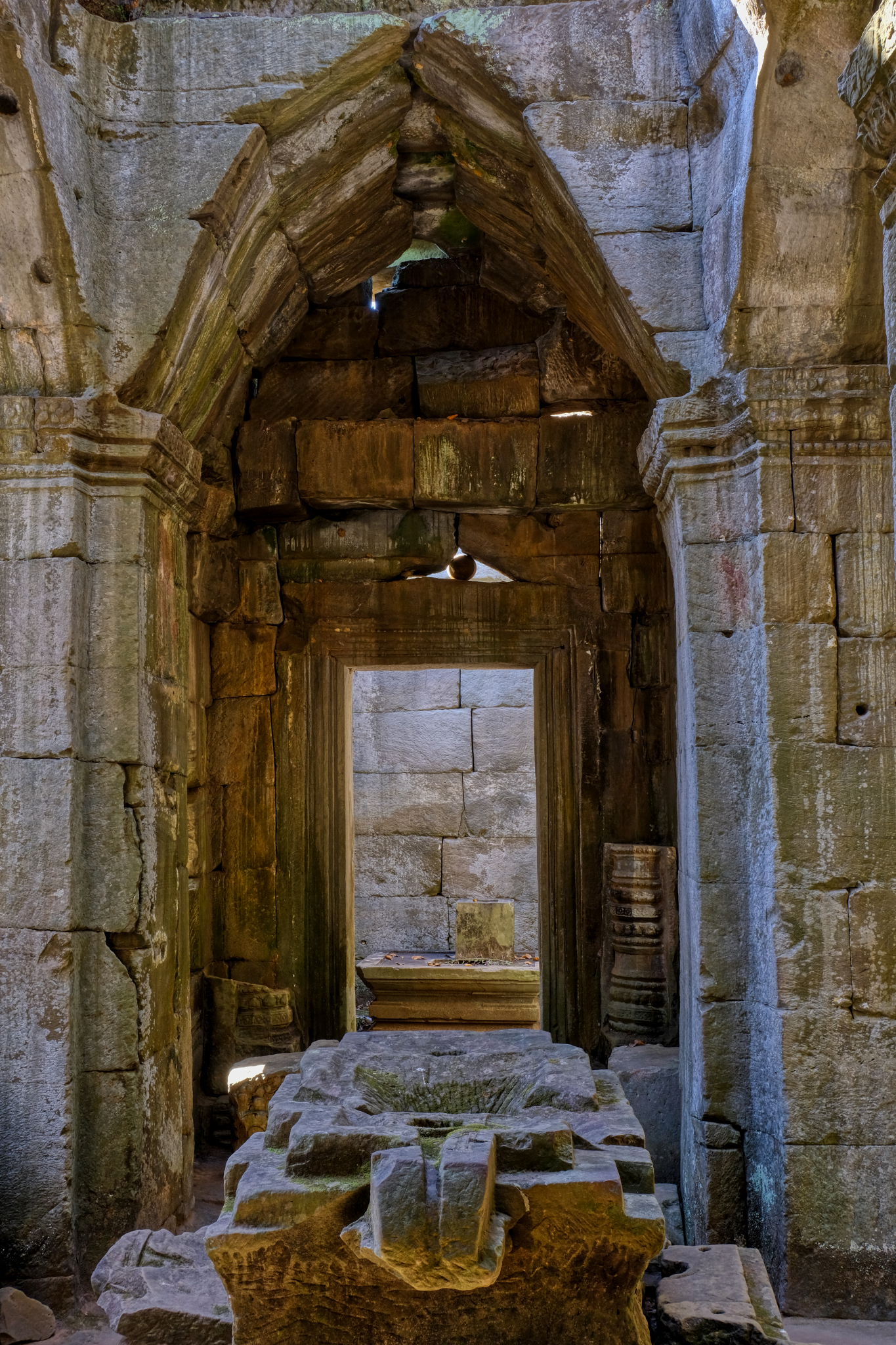 The aesthetics of these stone passages with their relics evokes a calm amazement.
The aesthetics of these stone passages with their relics evokes a calm amazement.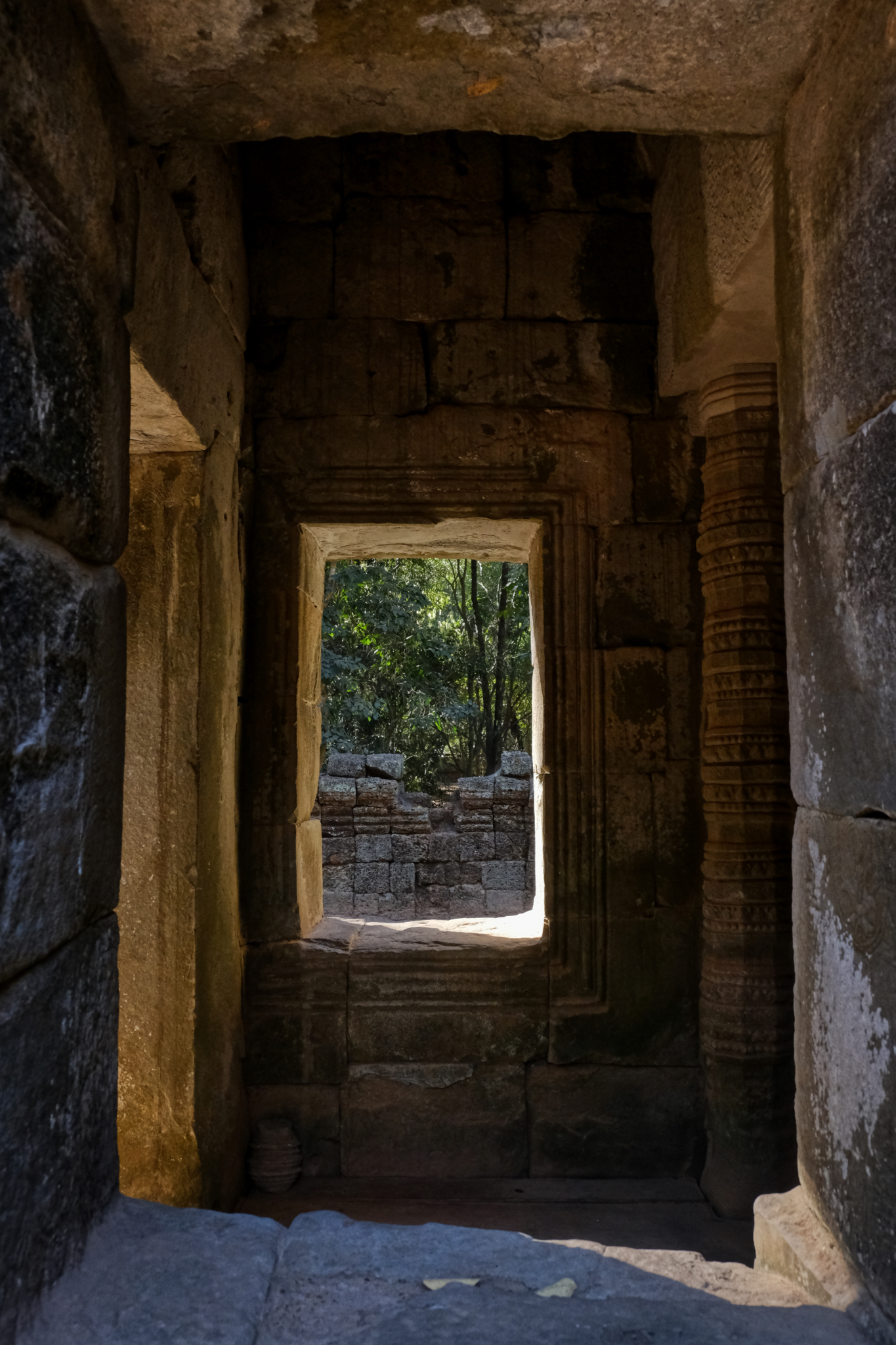 I have always been drawn to these kinds of scenes for photography . . . there seems to be some elemental symbolics involved here . . .
I have always been drawn to these kinds of scenes for photography . . . there seems to be some elemental symbolics involved here . . . 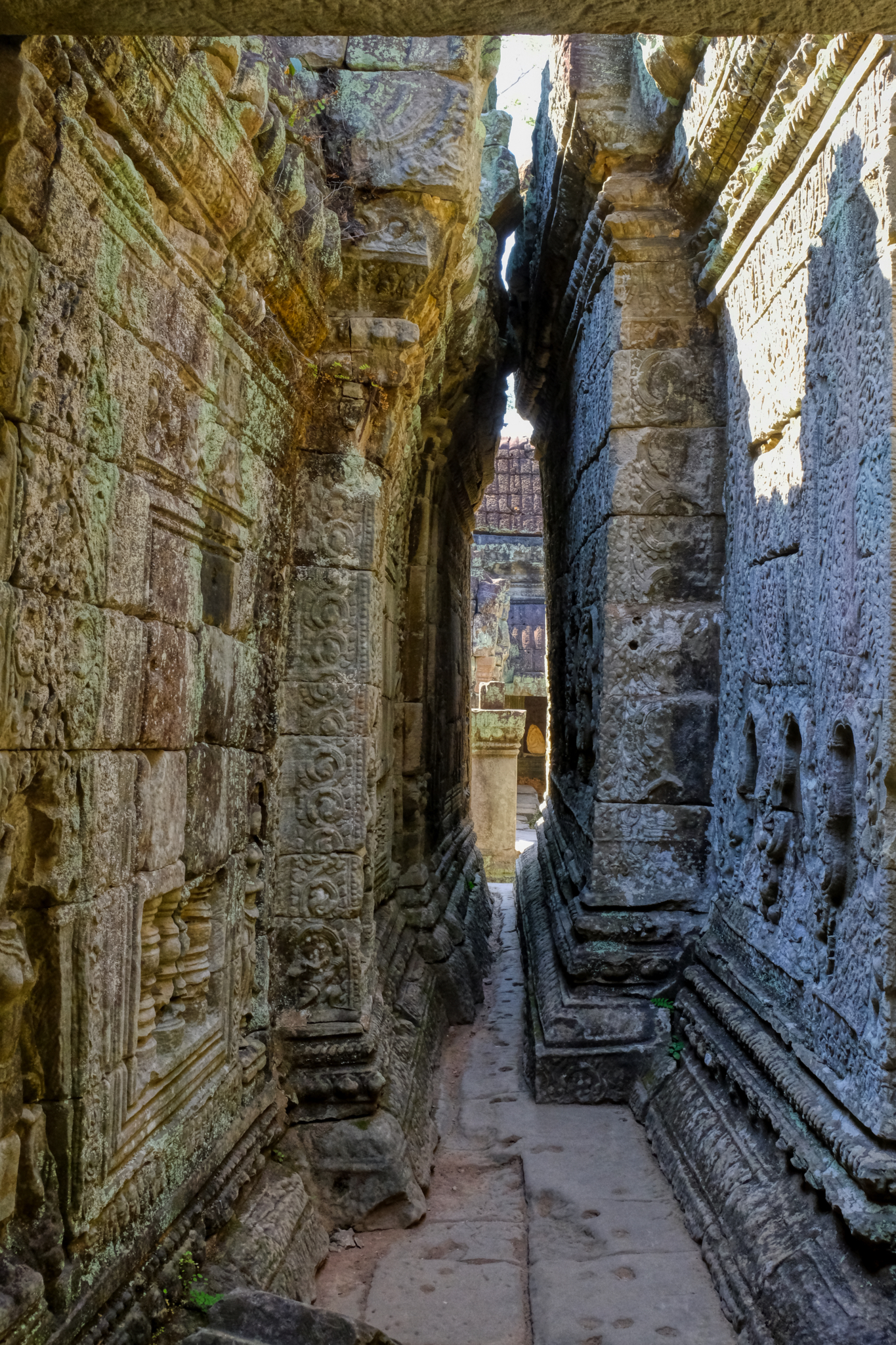 Endless stone doors and windows, light and shadow . . .
Endless stone doors and windows, light and shadow . . .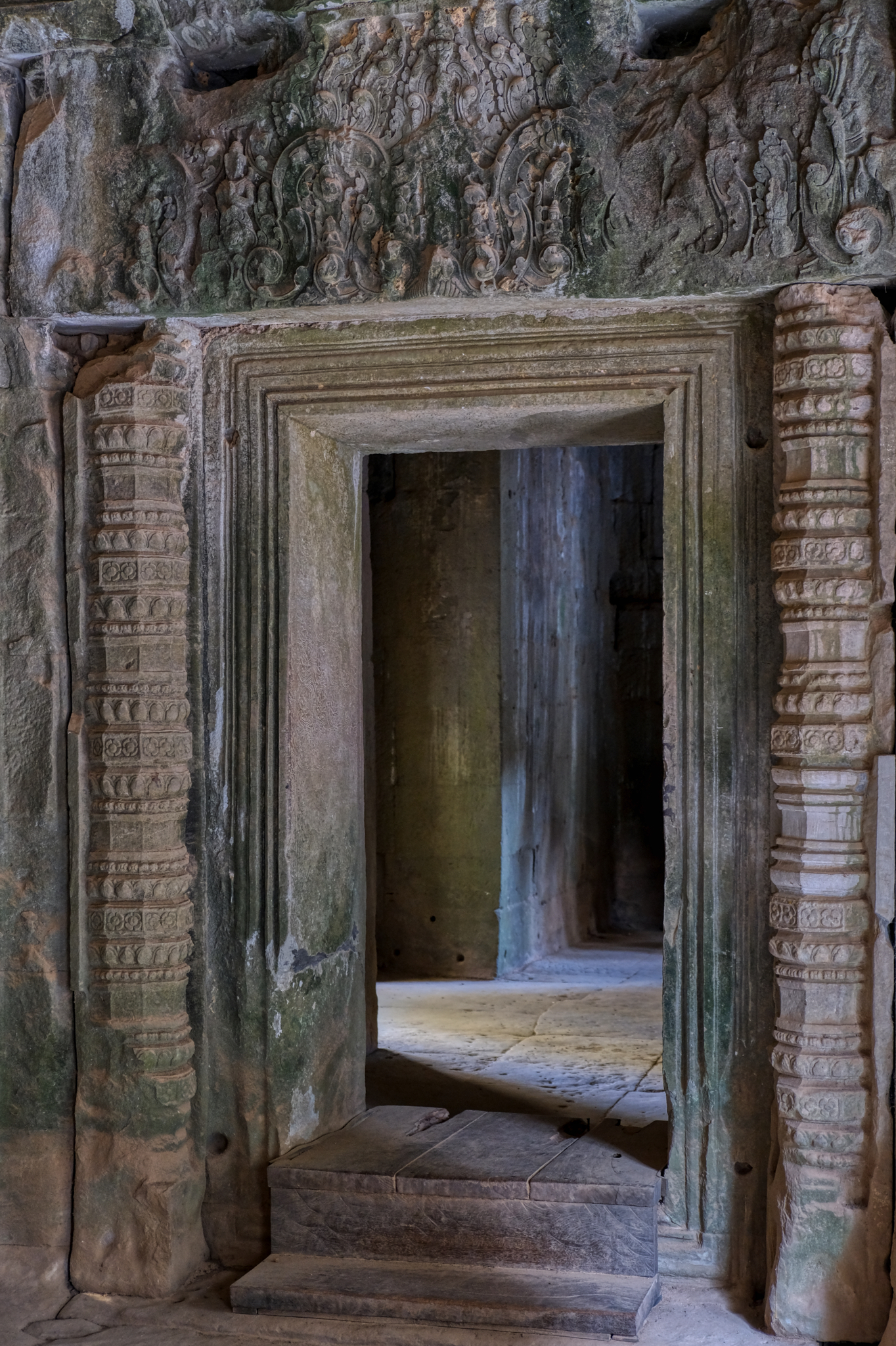 Interior doors. The Light! The shadows!
Interior doors. The Light! The shadows!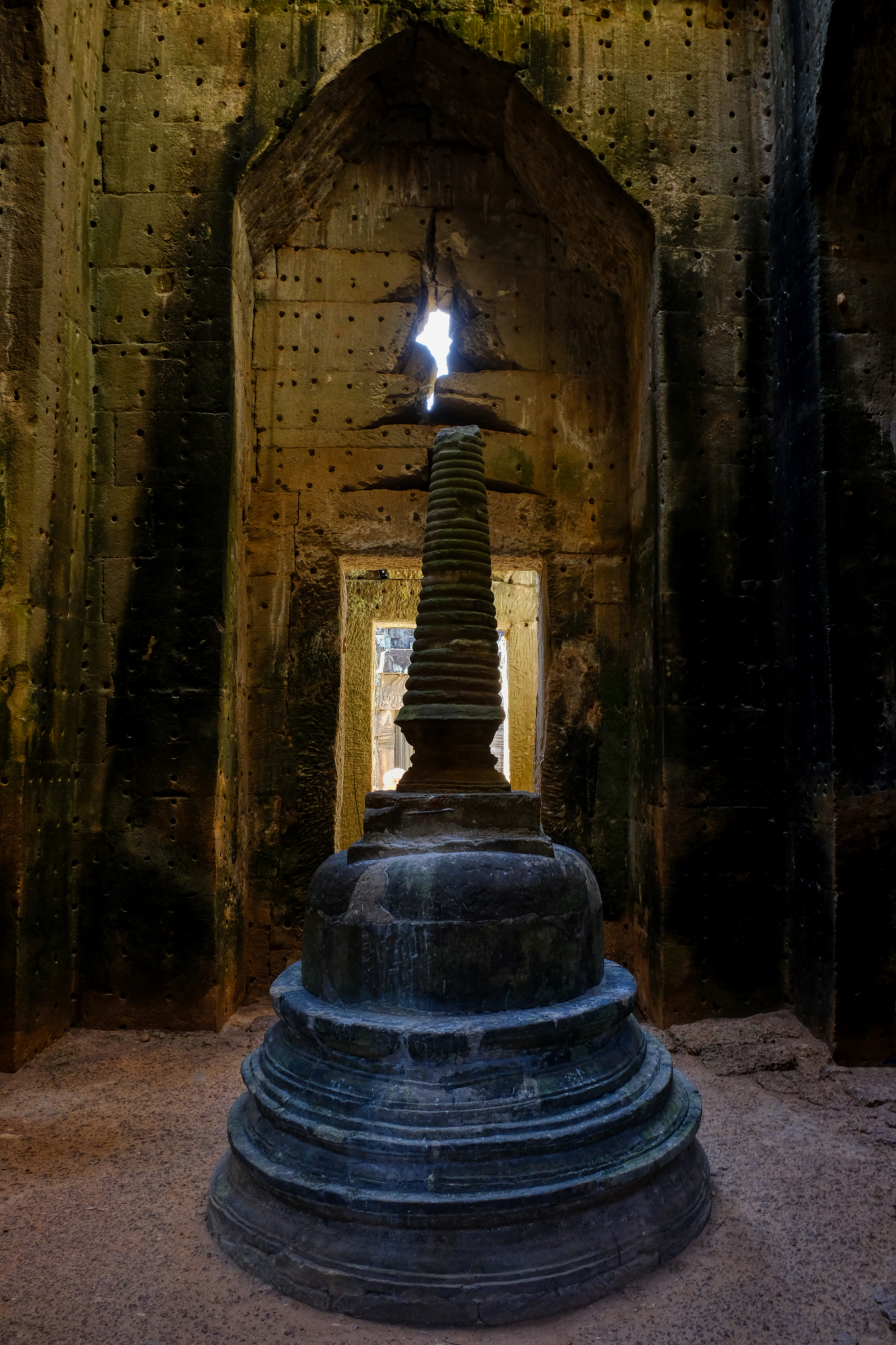 Astonishing chedi in the intersection of two long halls! The many holes in the stone walls indicate they were covered with carvings in stone or wood.
Astonishing chedi in the intersection of two long halls! The many holes in the stone walls indicate they were covered with carvings in stone or wood.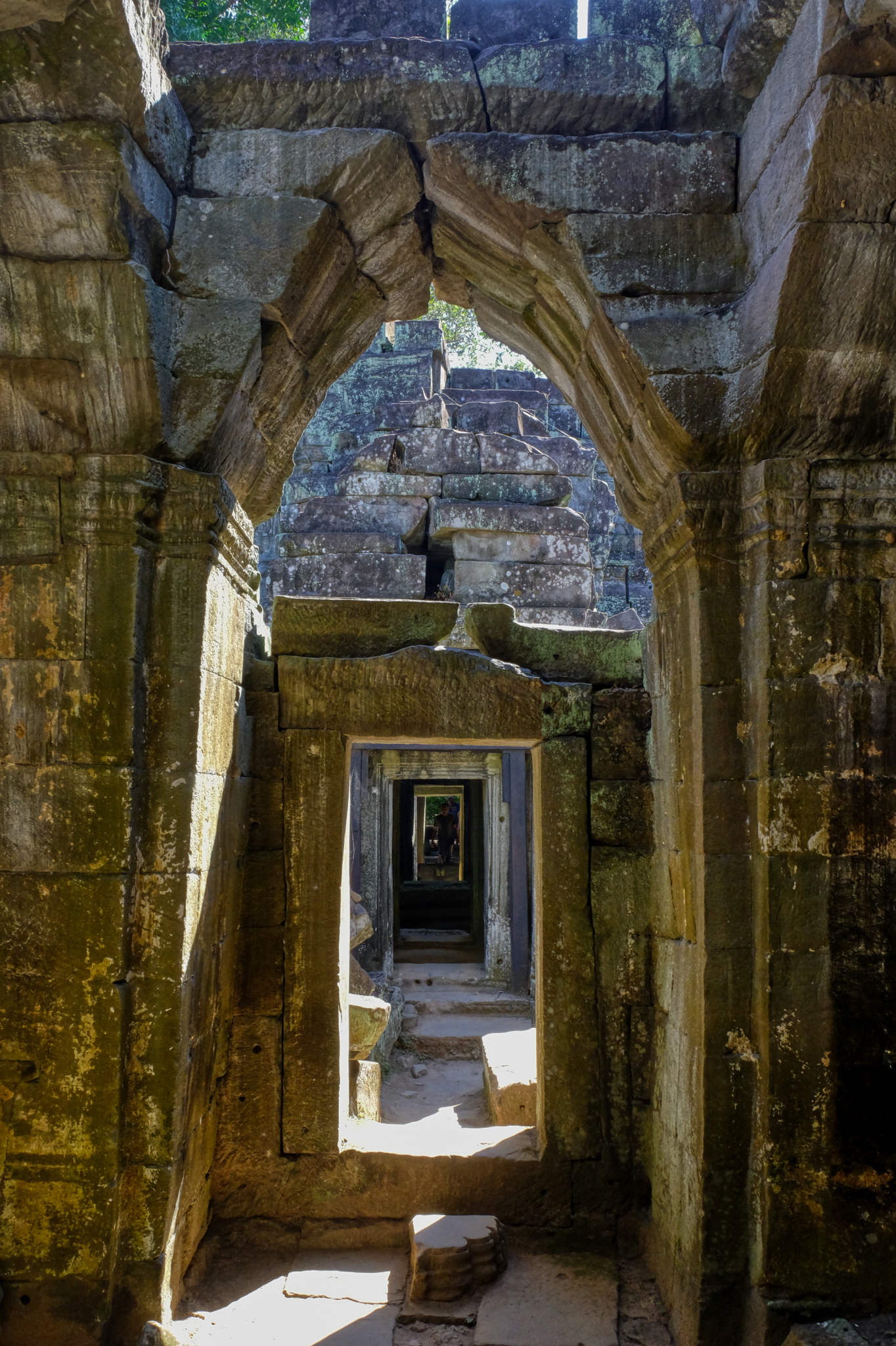 Endless curiosity . . .
Endless curiosity . . .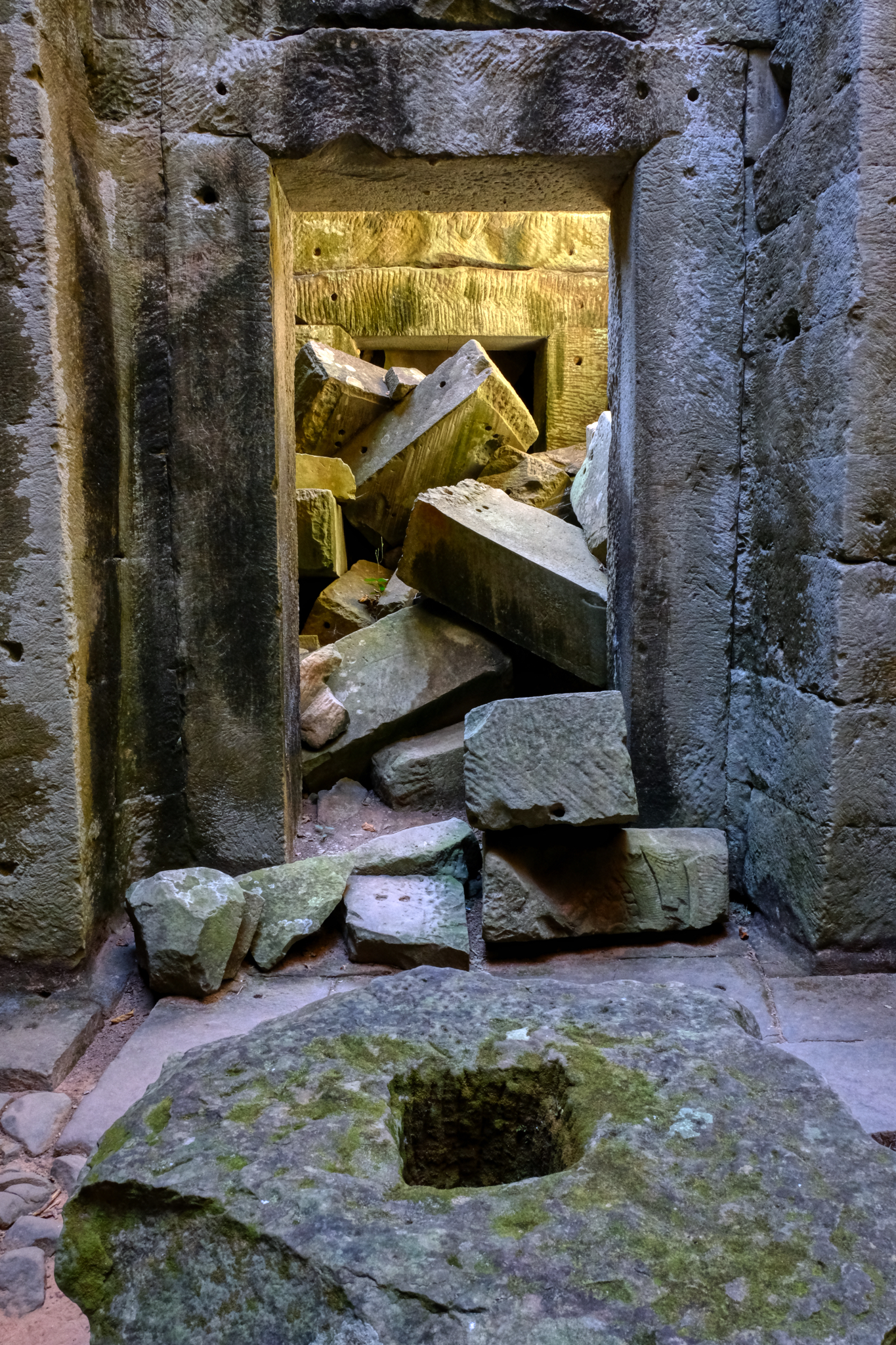 Wandering the halls and passages and finding an outlet into the honey light . . . what's out there?
Wandering the halls and passages and finding an outlet into the honey light . . . what's out there?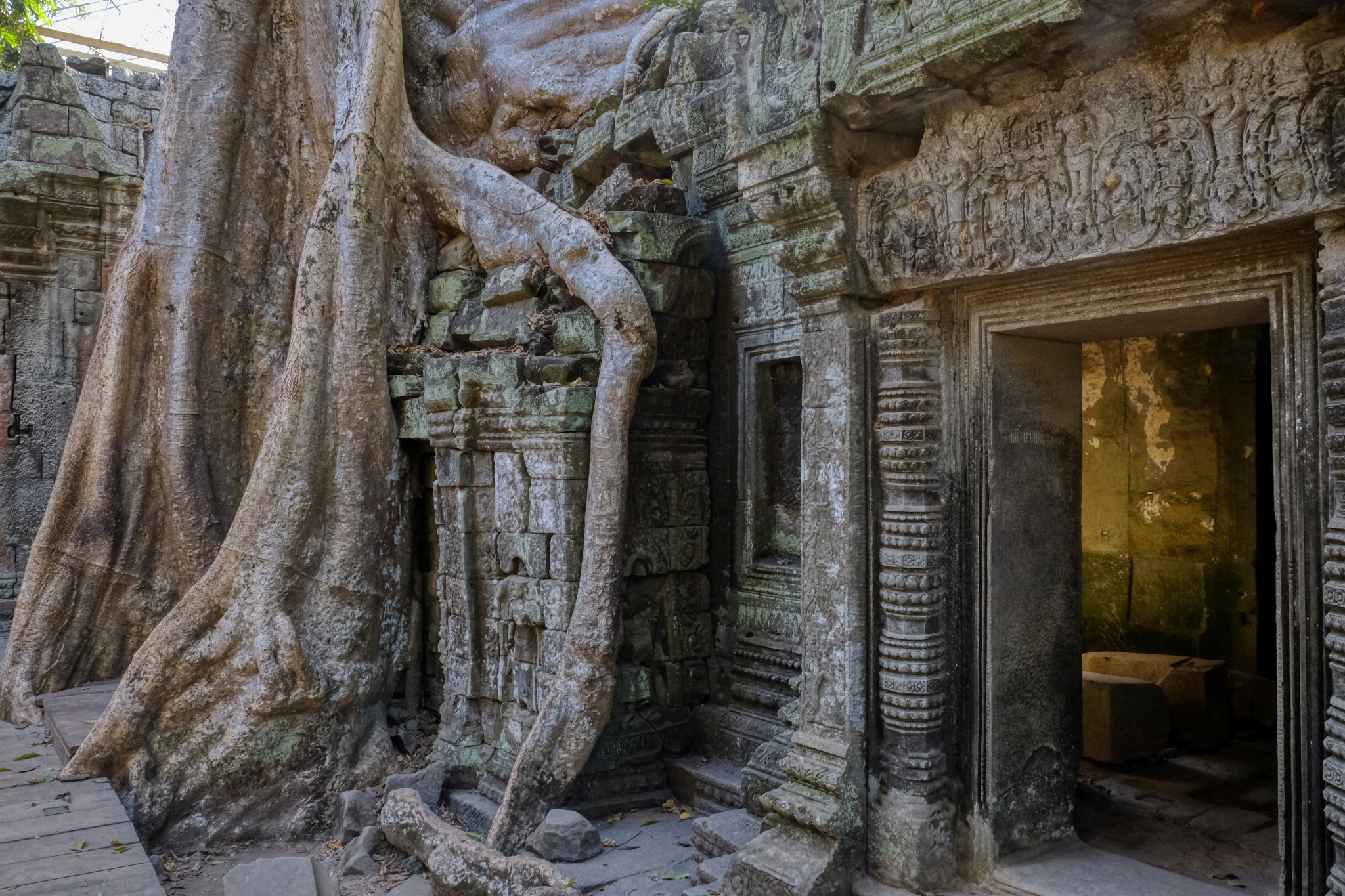 . . . and THIS is what was on the outside of these long stone passages!
. . . and THIS is what was on the outside of these long stone passages!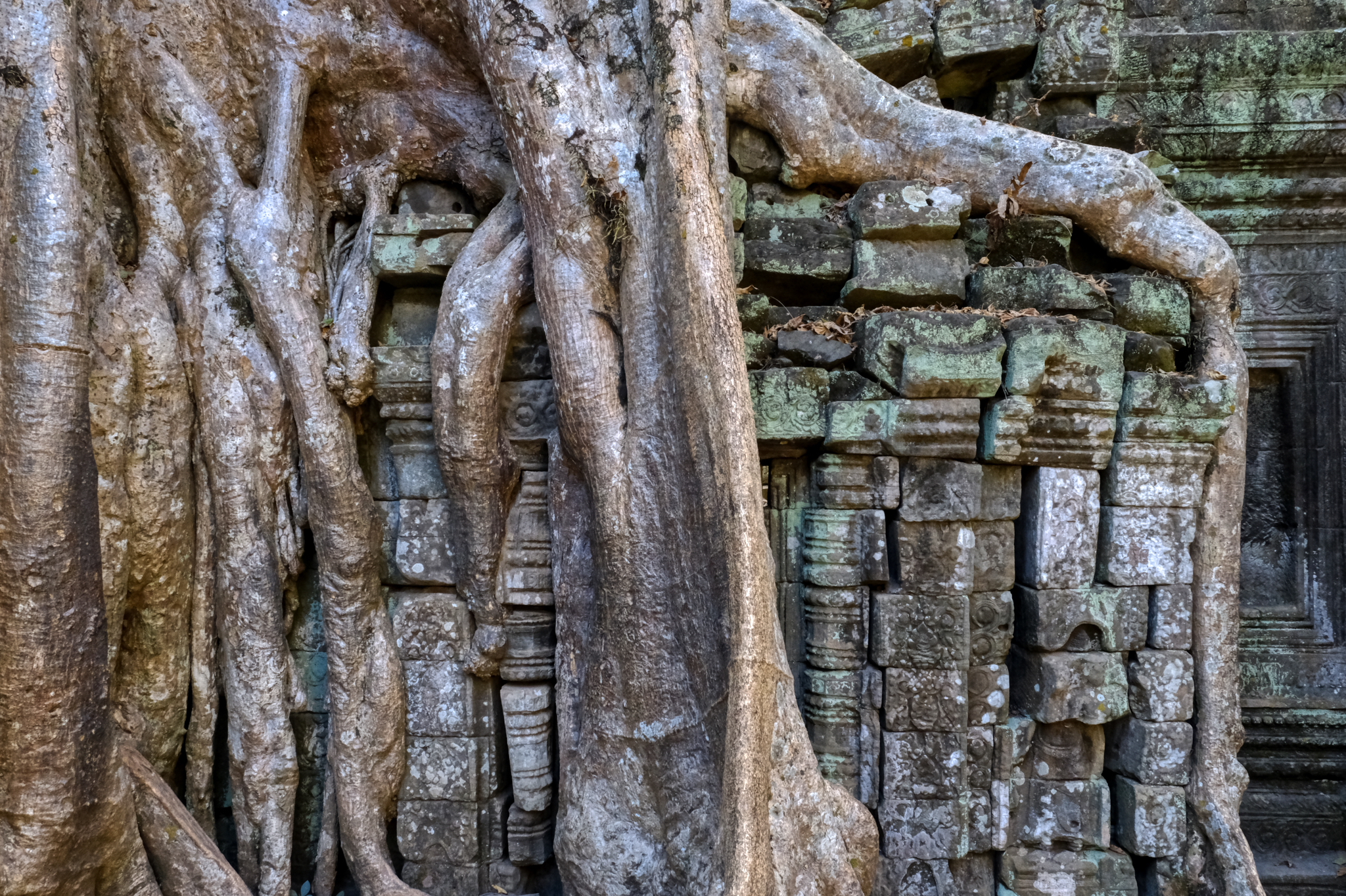 The classic 'Jungle Reclaiming the Lost Temple' photo. Still wonderful!
The classic 'Jungle Reclaiming the Lost Temple' photo. Still wonderful!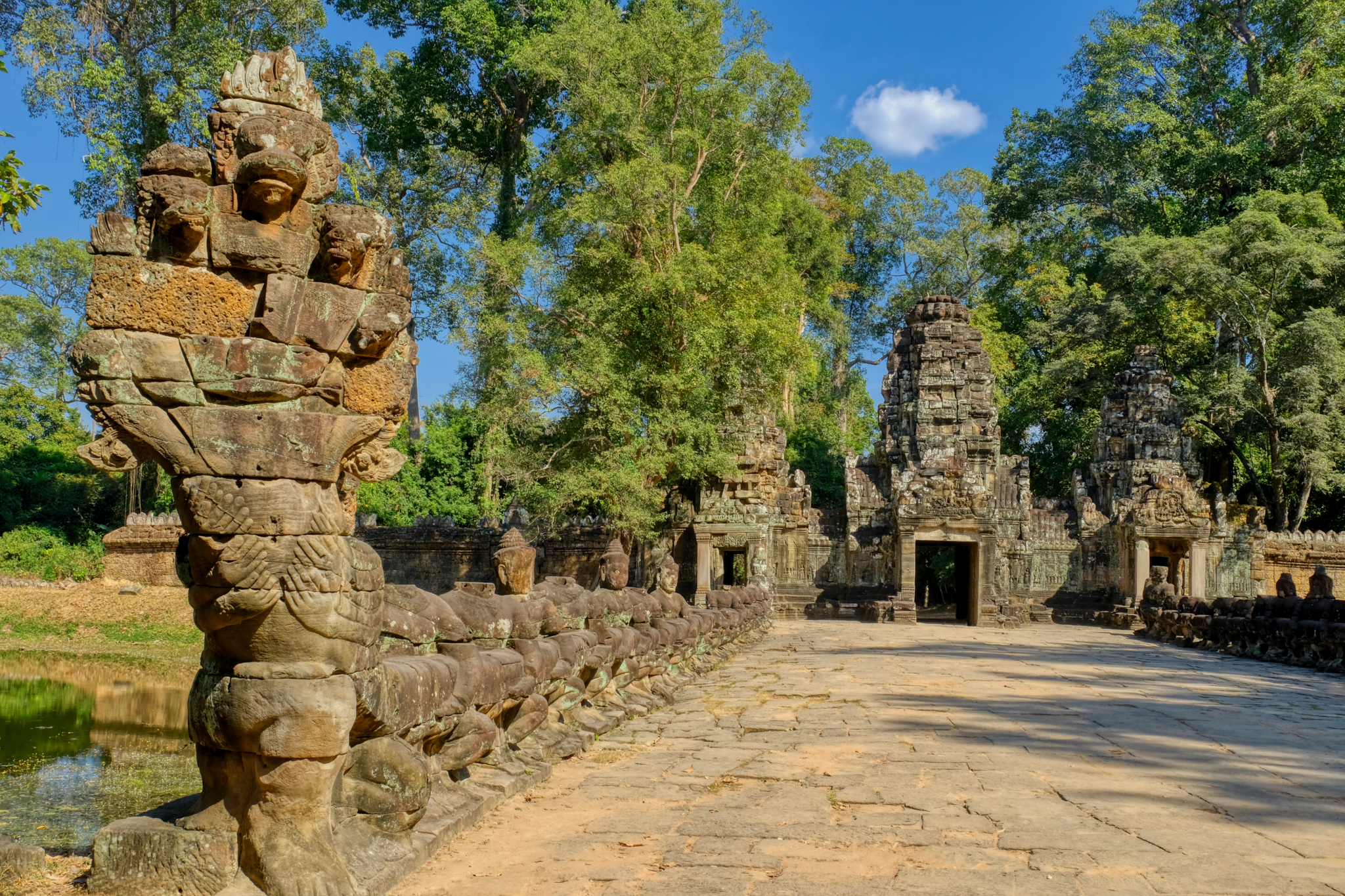 Our driver brought us to another temple site, this one had an entrance guarded by a bridge guarded by stone cobras!
Our driver brought us to another temple site, this one had an entrance guarded by a bridge guarded by stone cobras!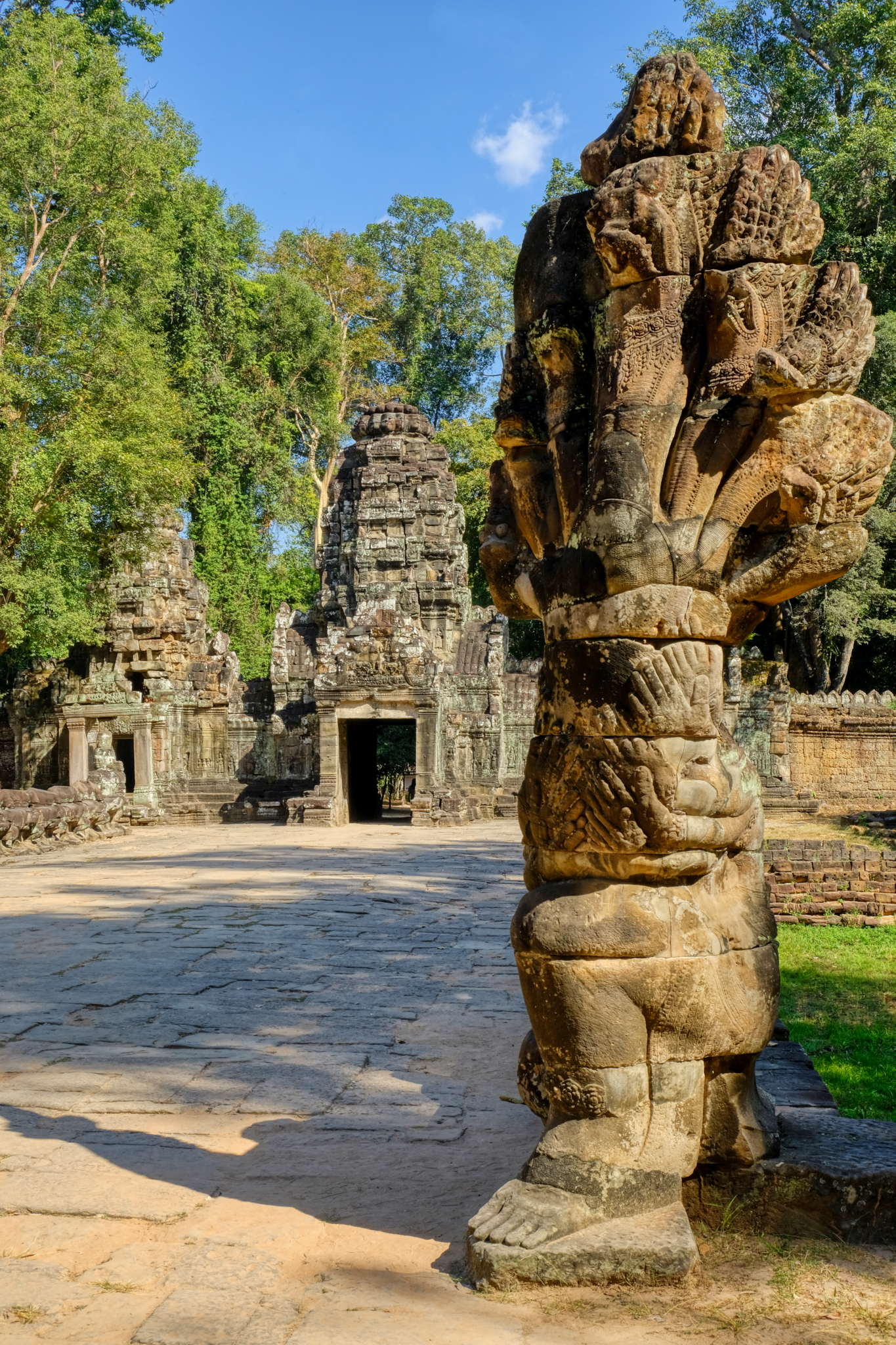 Frightening to peoples of that time, I would imaging.
Frightening to peoples of that time, I would imaging.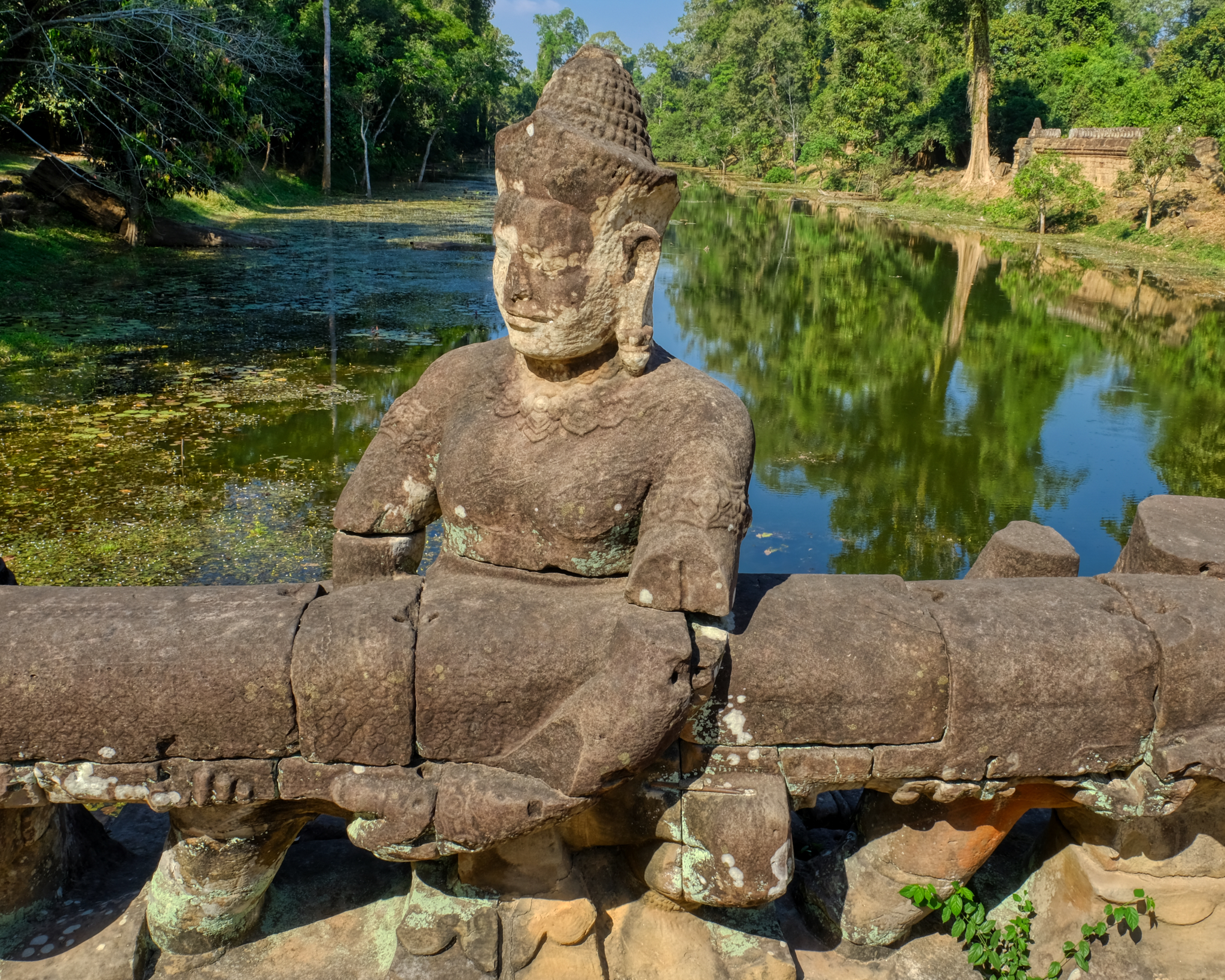 The body of the giant stone cobra was held by a row stone statues that made up the bridge guardrail.
The body of the giant stone cobra was held by a row stone statues that made up the bridge guardrail.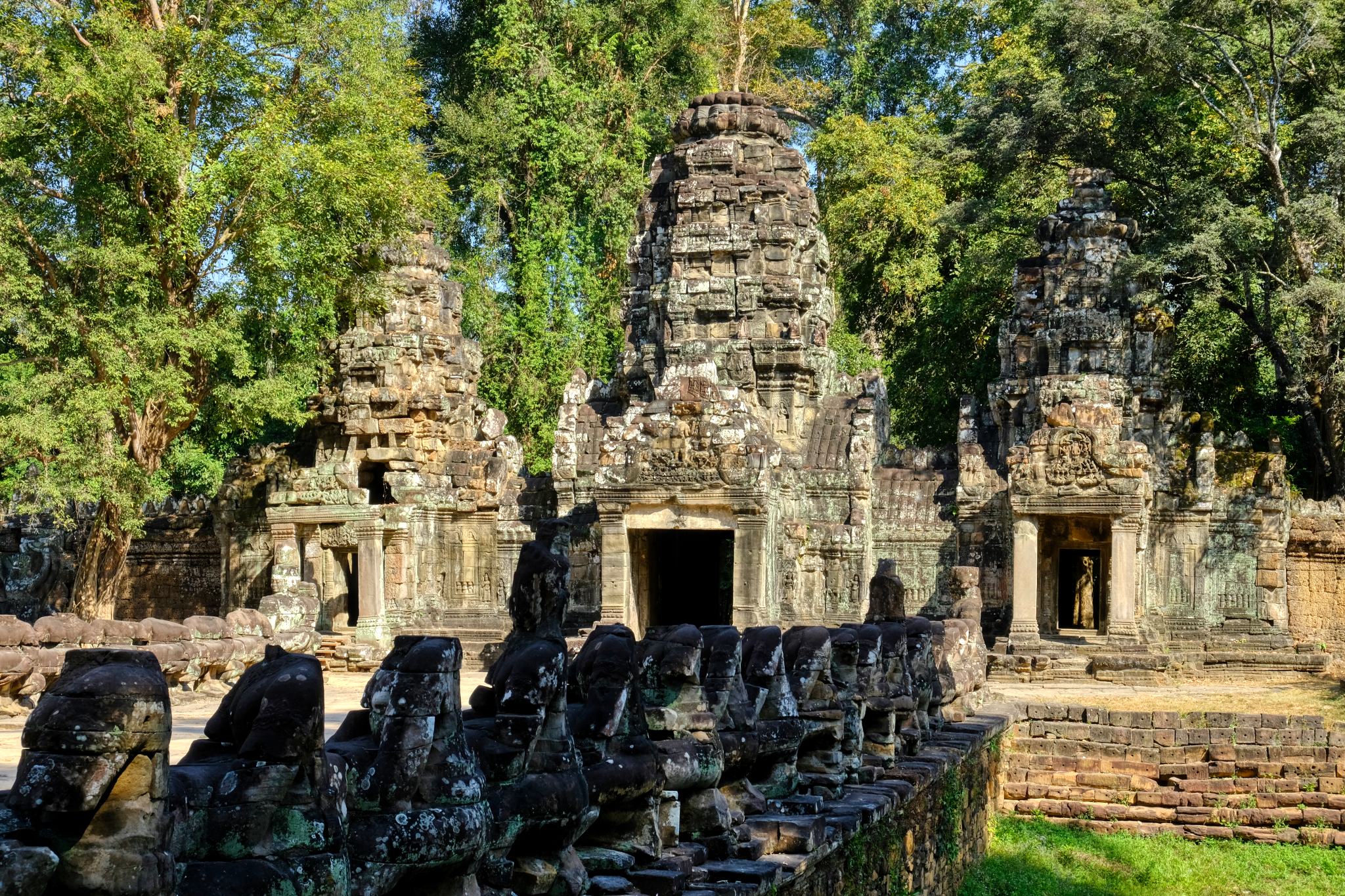 The heads on all of the stone bridge statues have been stolen over the years . . . they end up in museums, private collections, and "art" shops in Bangkok. Despicable.
The heads on all of the stone bridge statues have been stolen over the years . . . they end up in museums, private collections, and "art" shops in Bangkok. Despicable.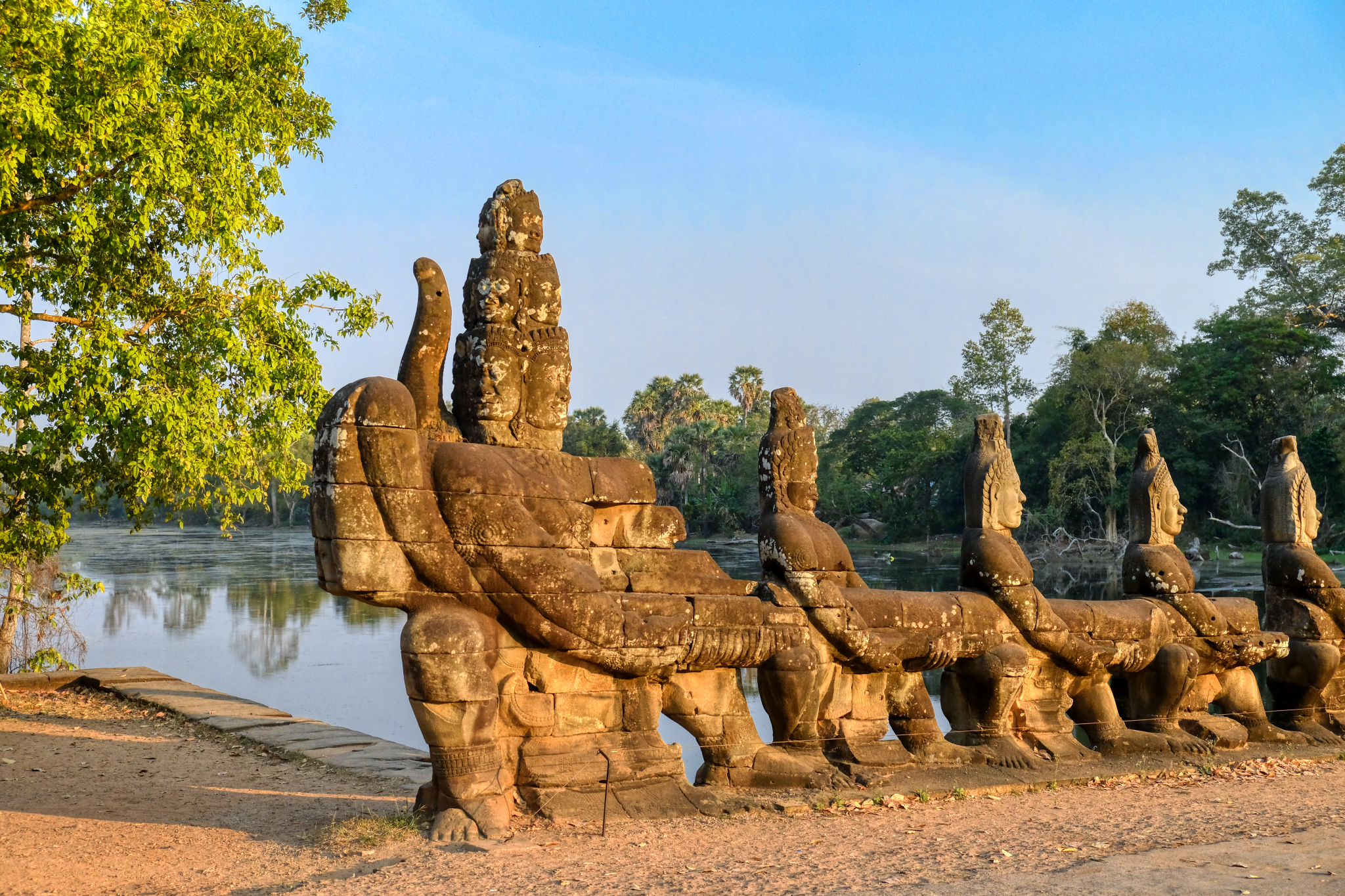 Many of the temple complexes still have their moats.
Many of the temple complexes still have their moats.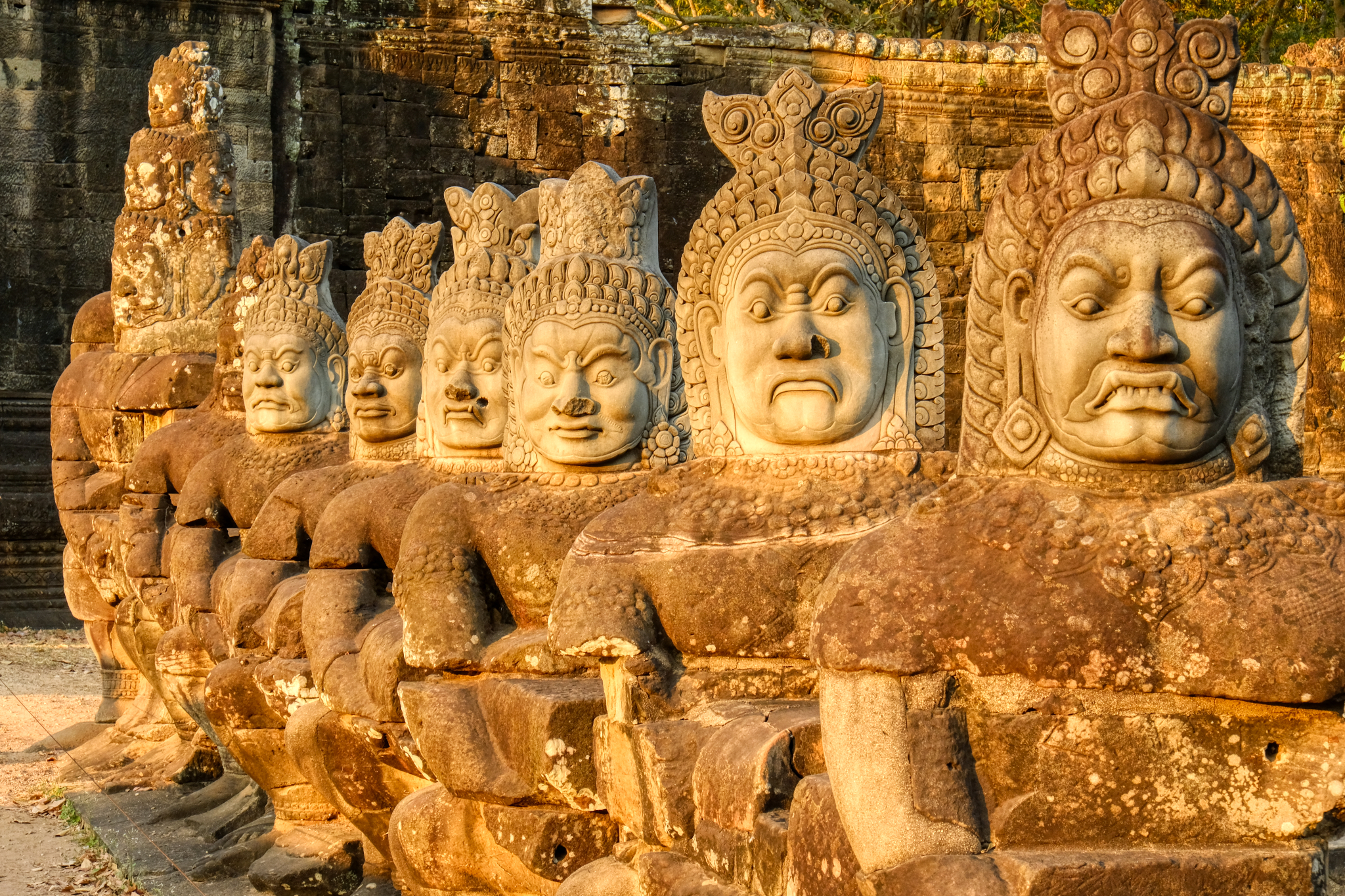 We found only one bridge with the full compliment of guarding figures . . . and they were wonderful!
We found only one bridge with the full compliment of guarding figures . . . and they were wonderful!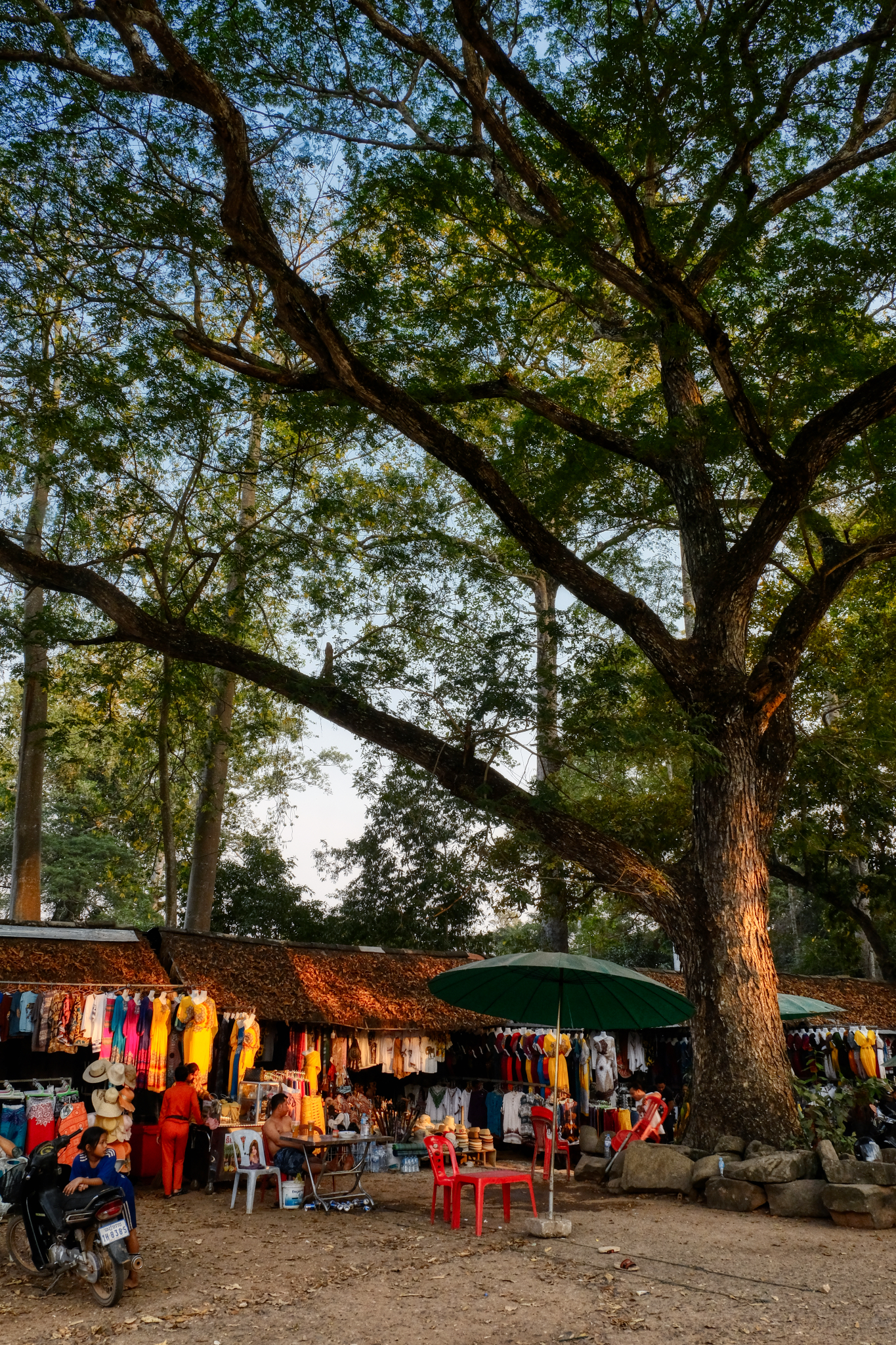 Here and there we saw small encampments of curios hawkers.
Here and there we saw small encampments of curios hawkers.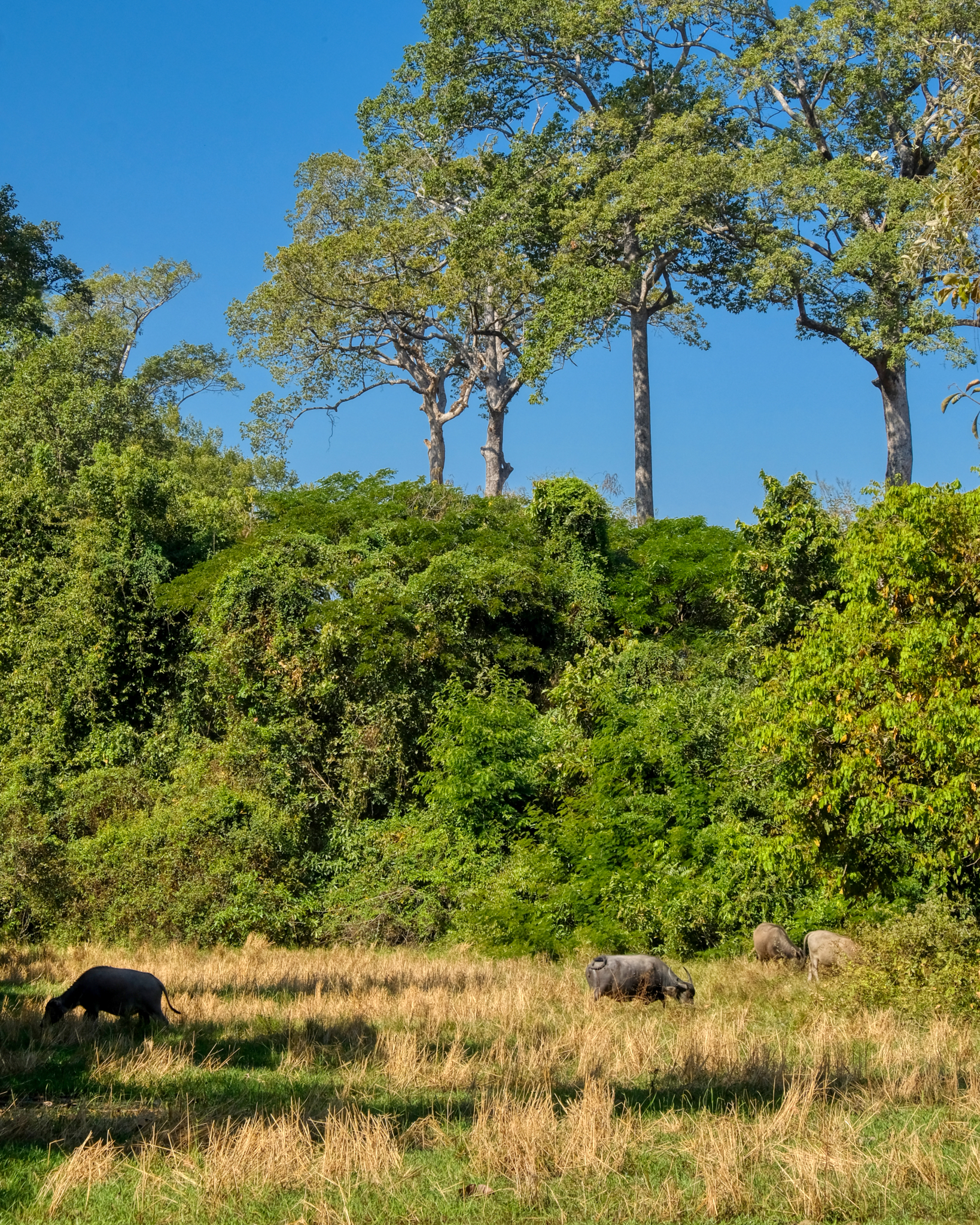 Our drive between temple sited took us through some beautiful and peaceful countryside. Some of the temples were 8-10 miles apart.
Our drive between temple sited took us through some beautiful and peaceful countryside. Some of the temples were 8-10 miles apart.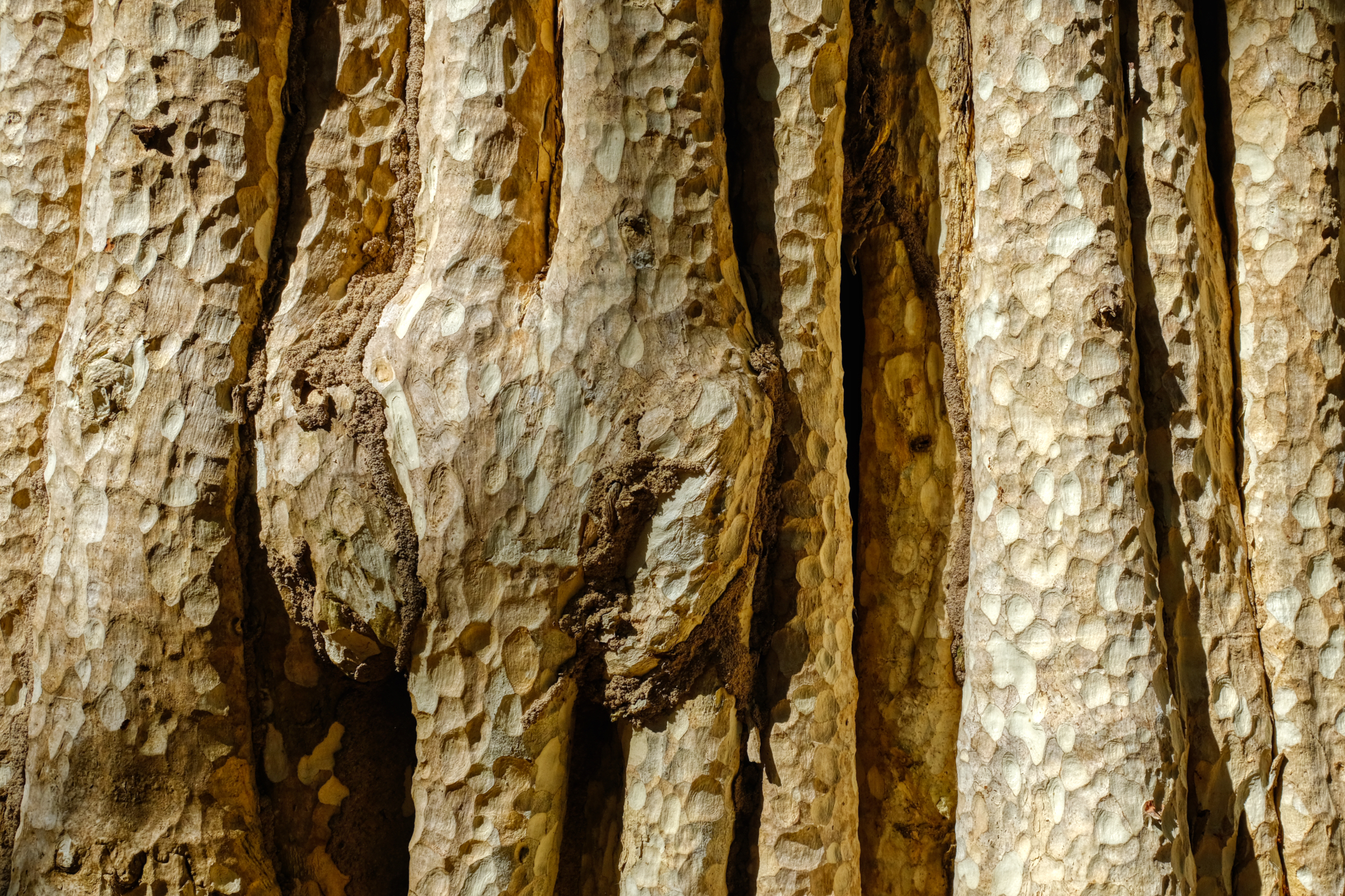 Nature here held some big surprises . . . like this complex tree bark.
Nature here held some big surprises . . . like this complex tree bark. Here and there, as we neared a new temple site, the road would be lined with these markers.
Here and there, as we neared a new temple site, the road would be lined with these markers.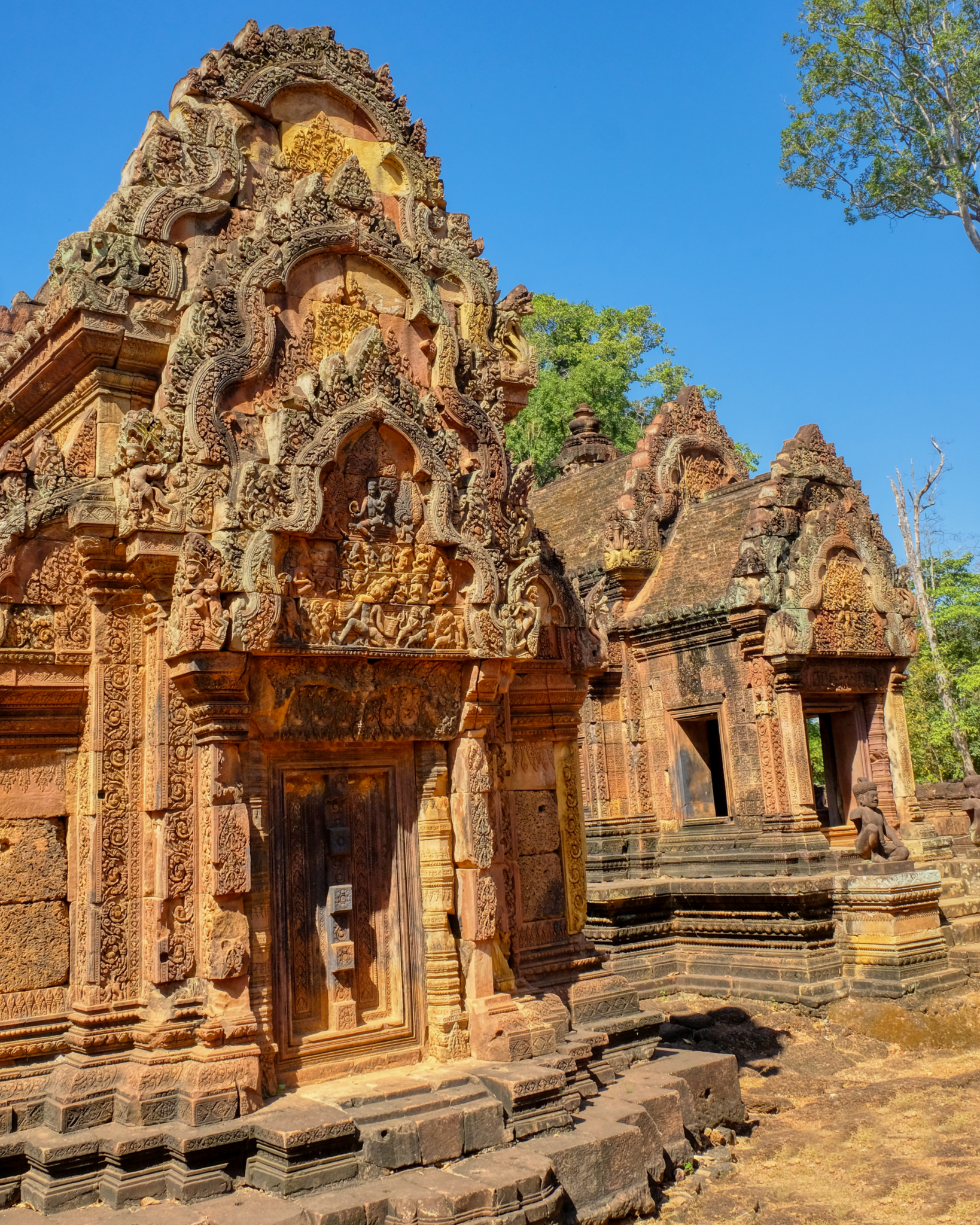 One of the last sites we visited had the temple structures made of a reddish stone with black volcanic rock accents. All carved, of course.
One of the last sites we visited had the temple structures made of a reddish stone with black volcanic rock accents. All carved, of course.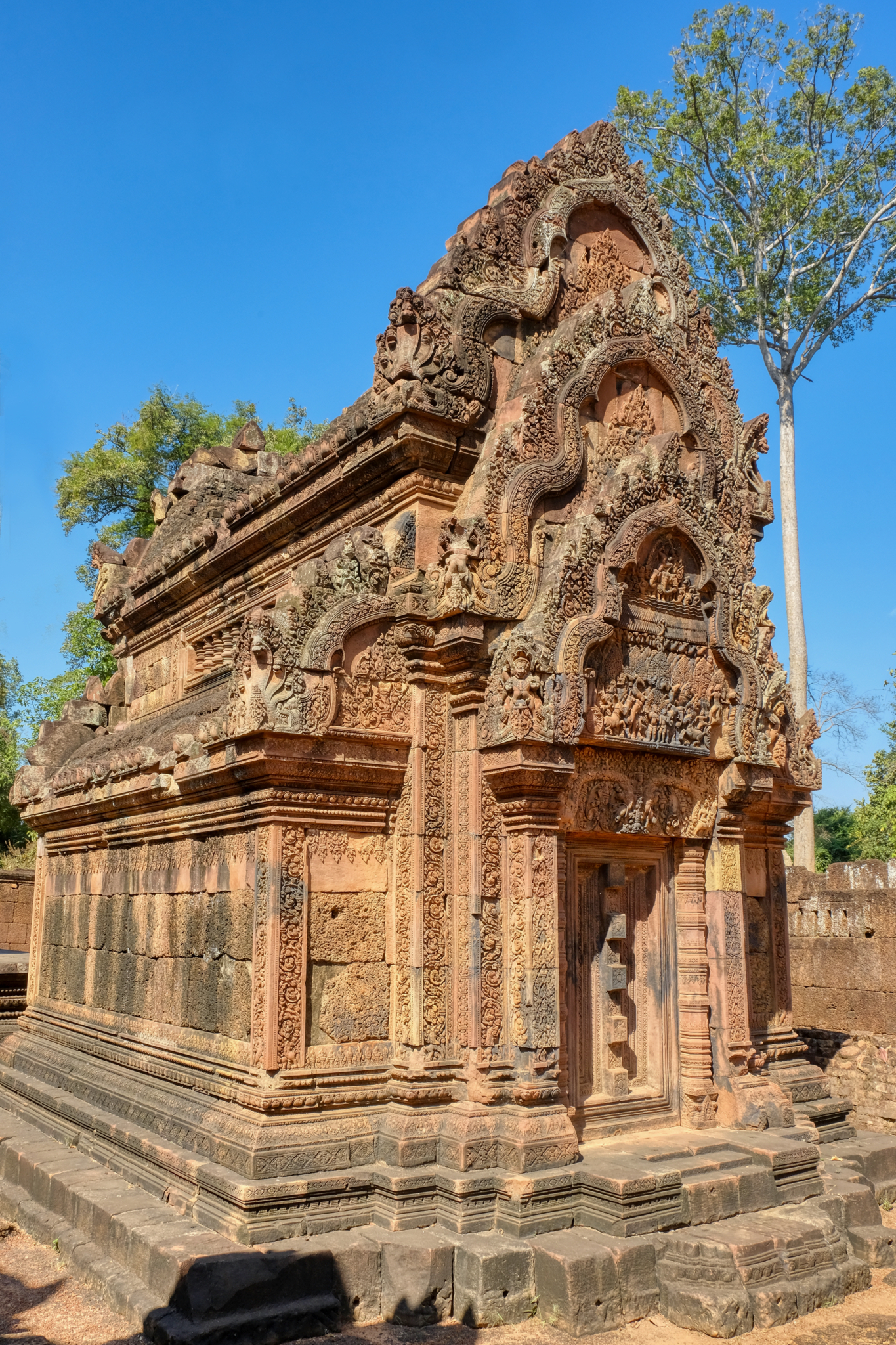 The carved details were very detailed and refined.
The carved details were very detailed and refined.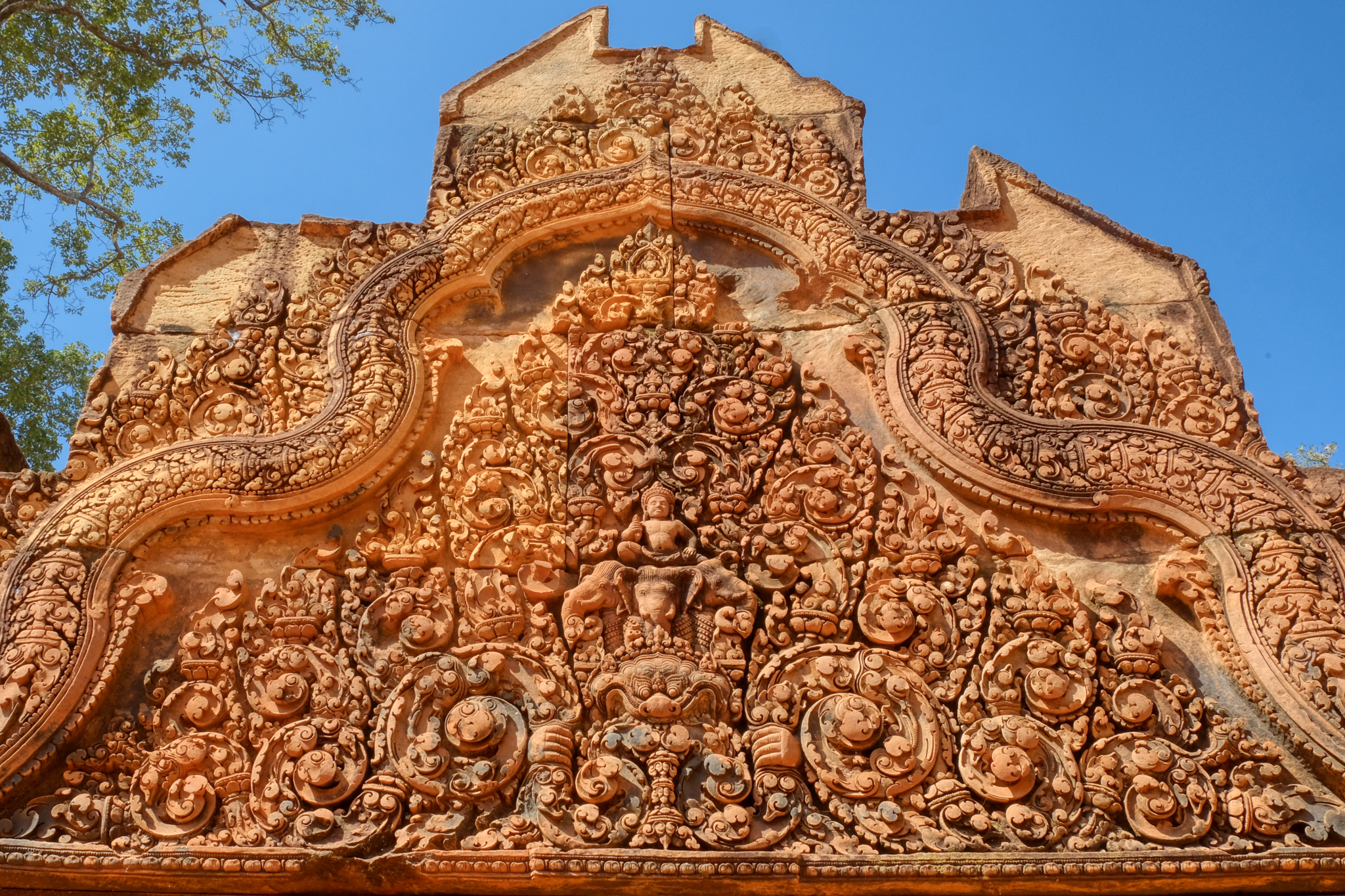 Upon closer inspection, I could not tell if these were fired red clay ceramics or a red sandstone . . . .
Upon closer inspection, I could not tell if these were fired red clay ceramics or a red sandstone . . . .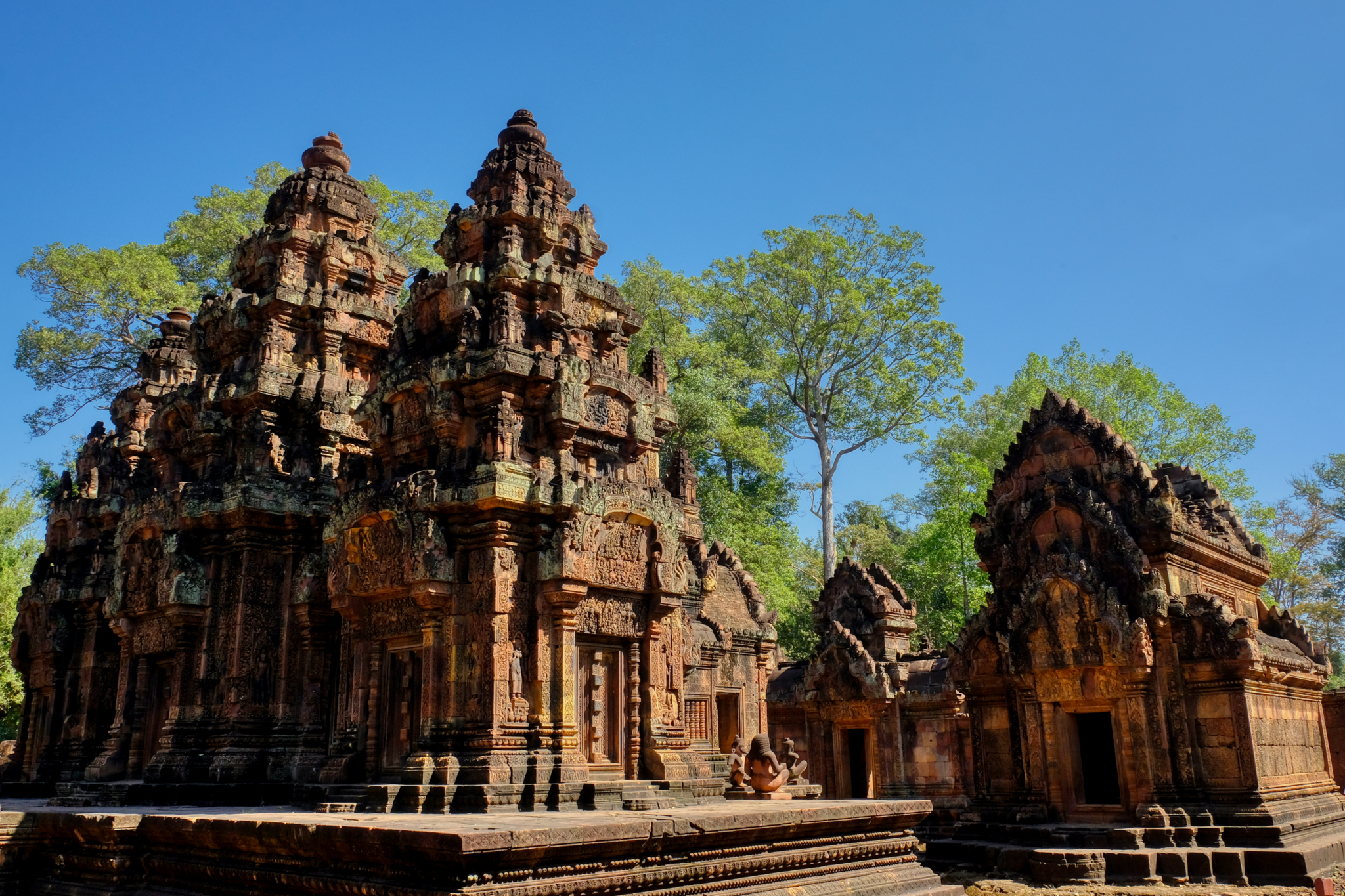 Late afternoon deep shadows on the red temple.
Late afternoon deep shadows on the red temple.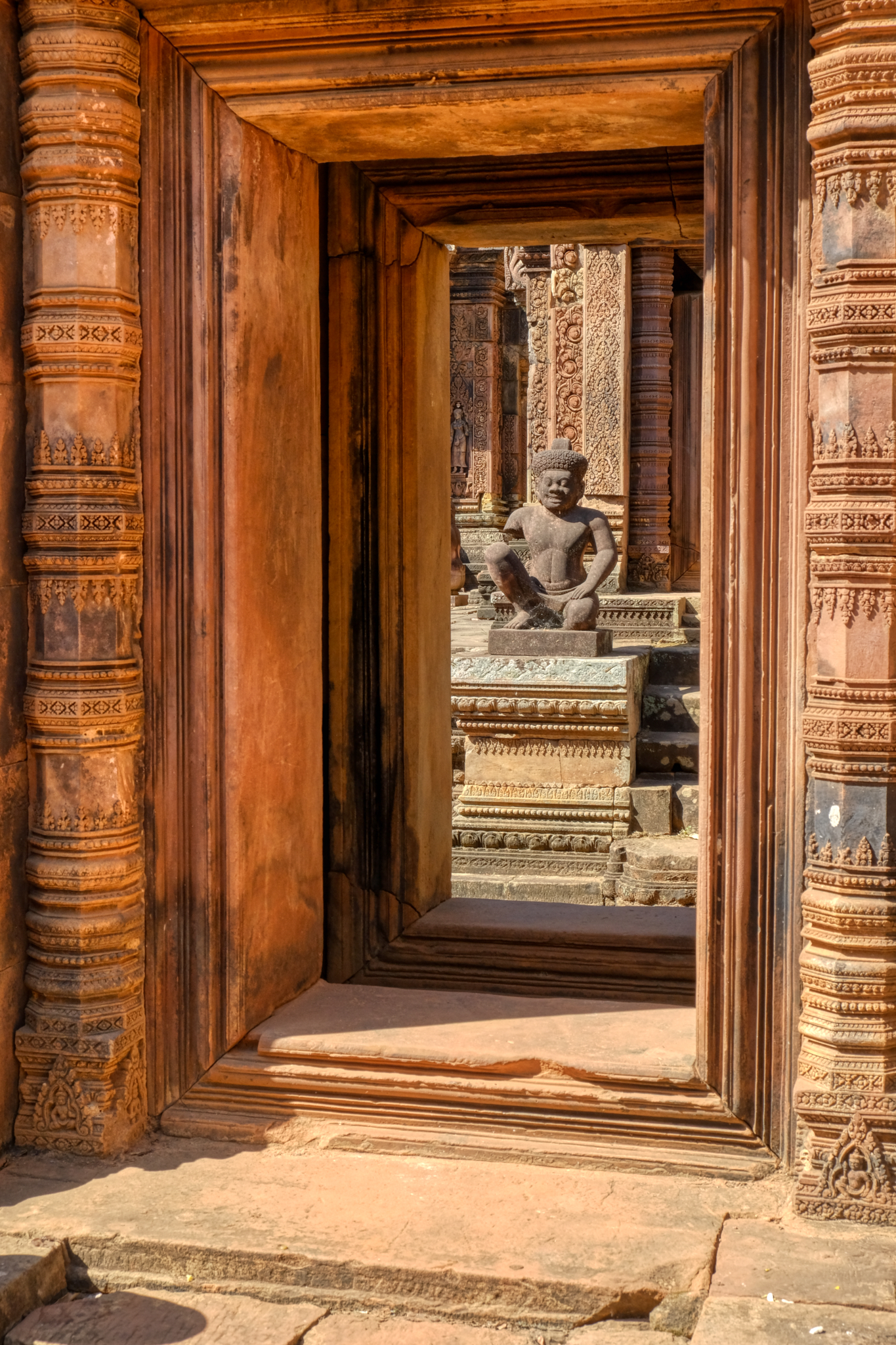 Many of these images, especially this one, lend themselves to printing and framing.
Many of these images, especially this one, lend themselves to printing and framing.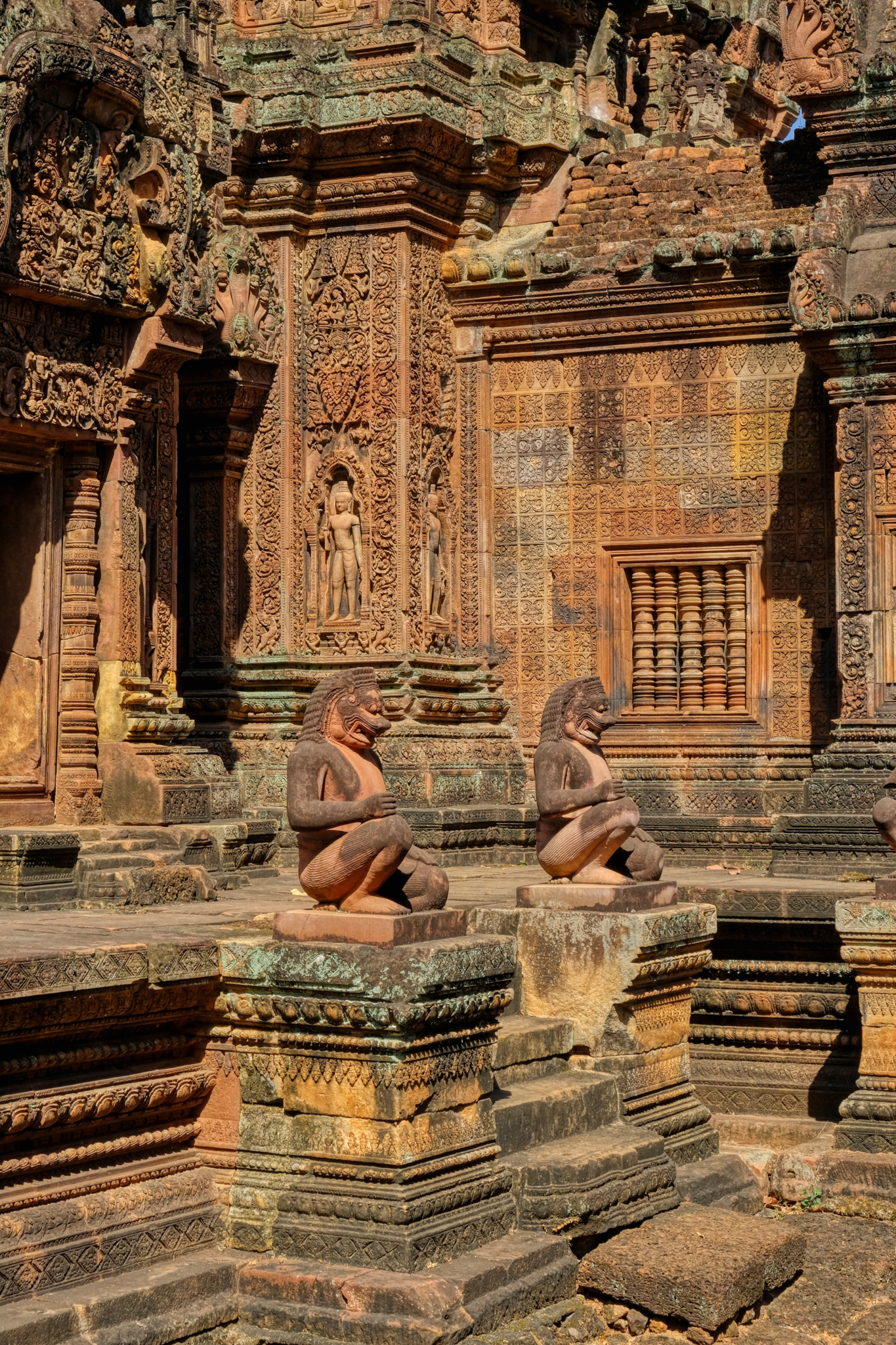 This temple had nearly no evidence of vandalism. Phenomenal beauty.
This temple had nearly no evidence of vandalism. Phenomenal beauty.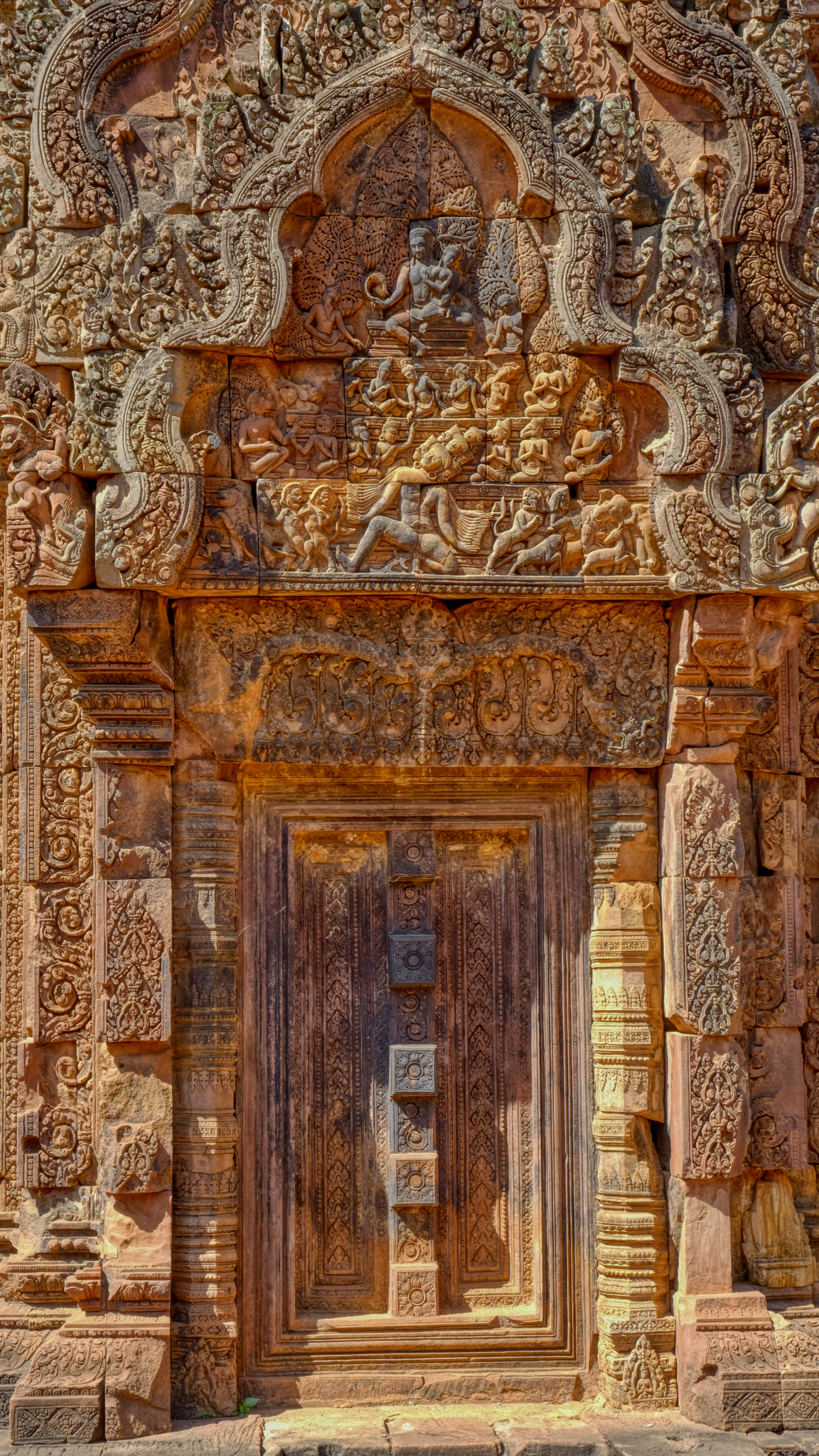 A magnificently carved stone door.
A magnificently carved stone door.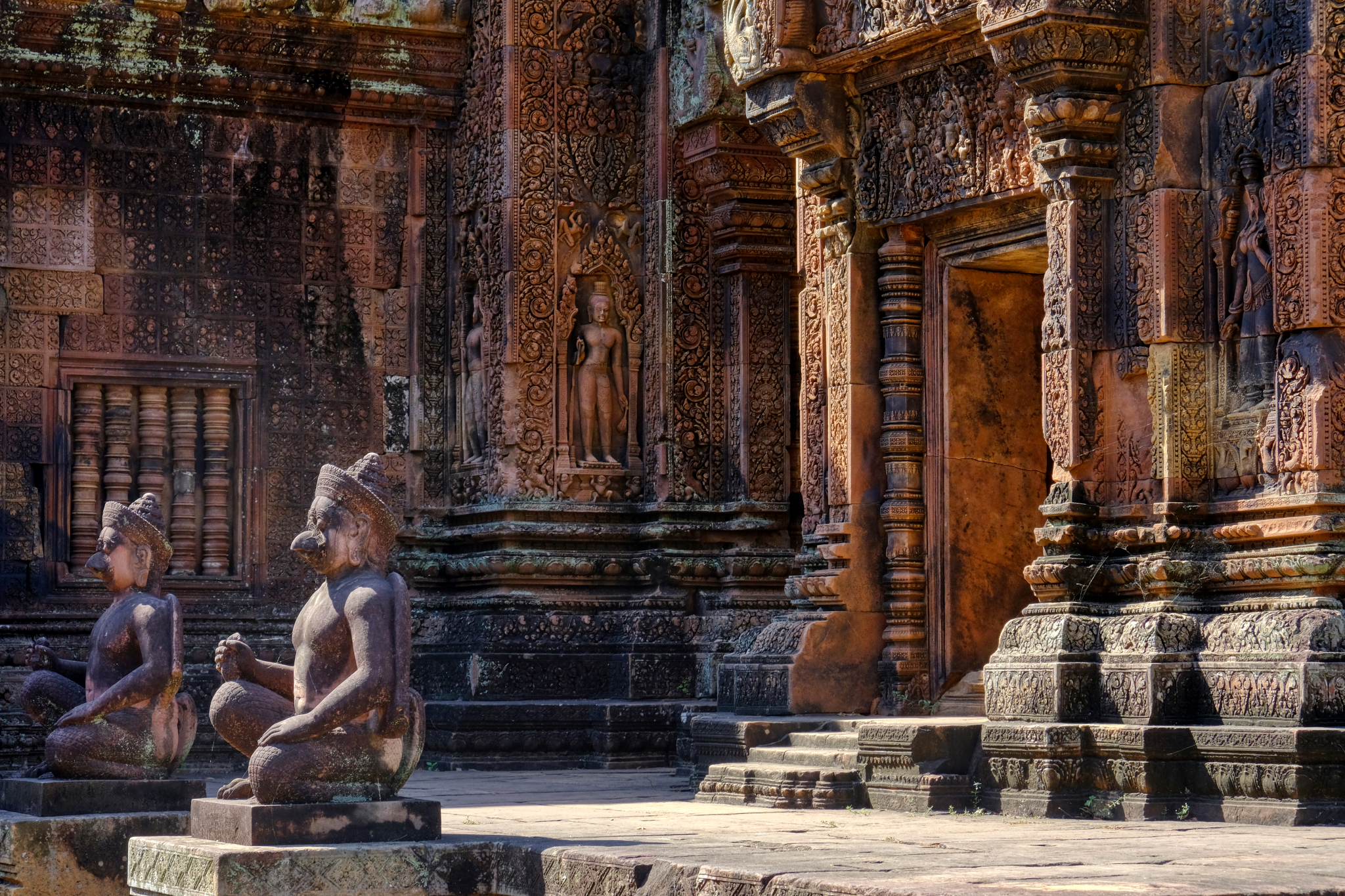 In the deep afternoon shadows, these statues in front of the carved temple presented an ancient, mystical image I will never forget.
In the deep afternoon shadows, these statues in front of the carved temple presented an ancient, mystical image I will never forget.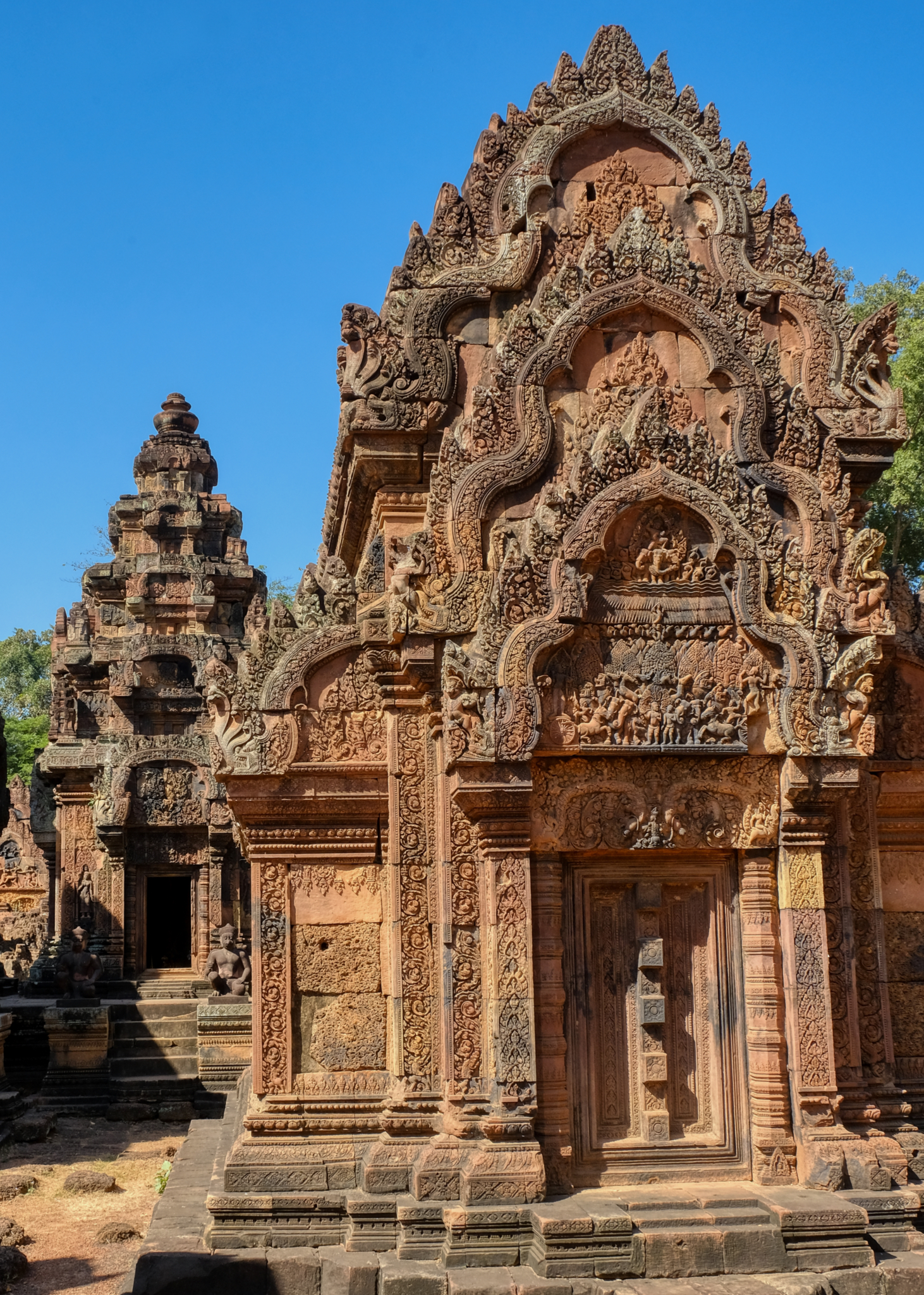 Many small temple structures filled the walled enclosure surrounded by a moat.
Many small temple structures filled the walled enclosure surrounded by a moat.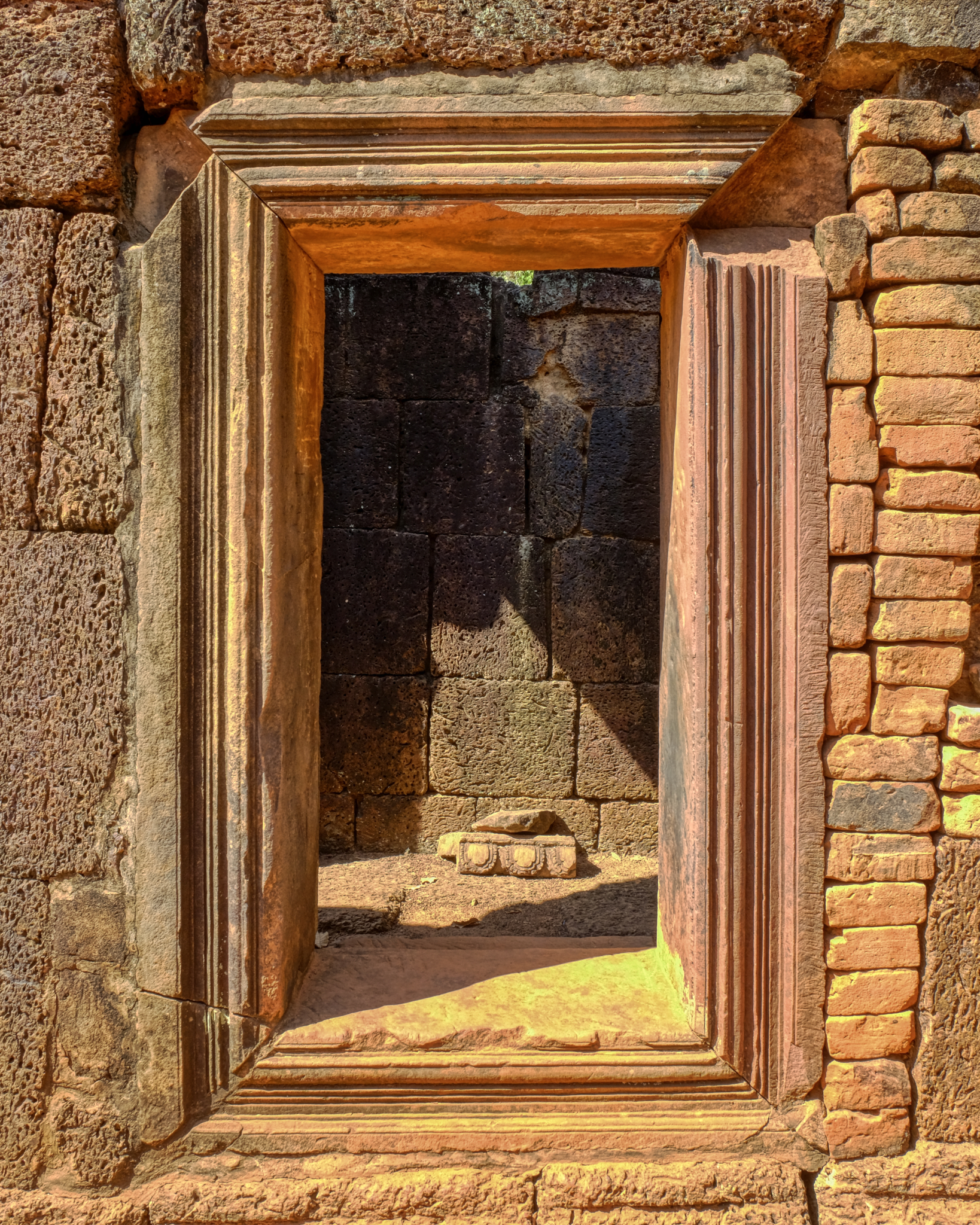 After exploring the red temple, and taking 30-40 photographs of windows and doors, we headed down the road again.
After exploring the red temple, and taking 30-40 photographs of windows and doors, we headed down the road again.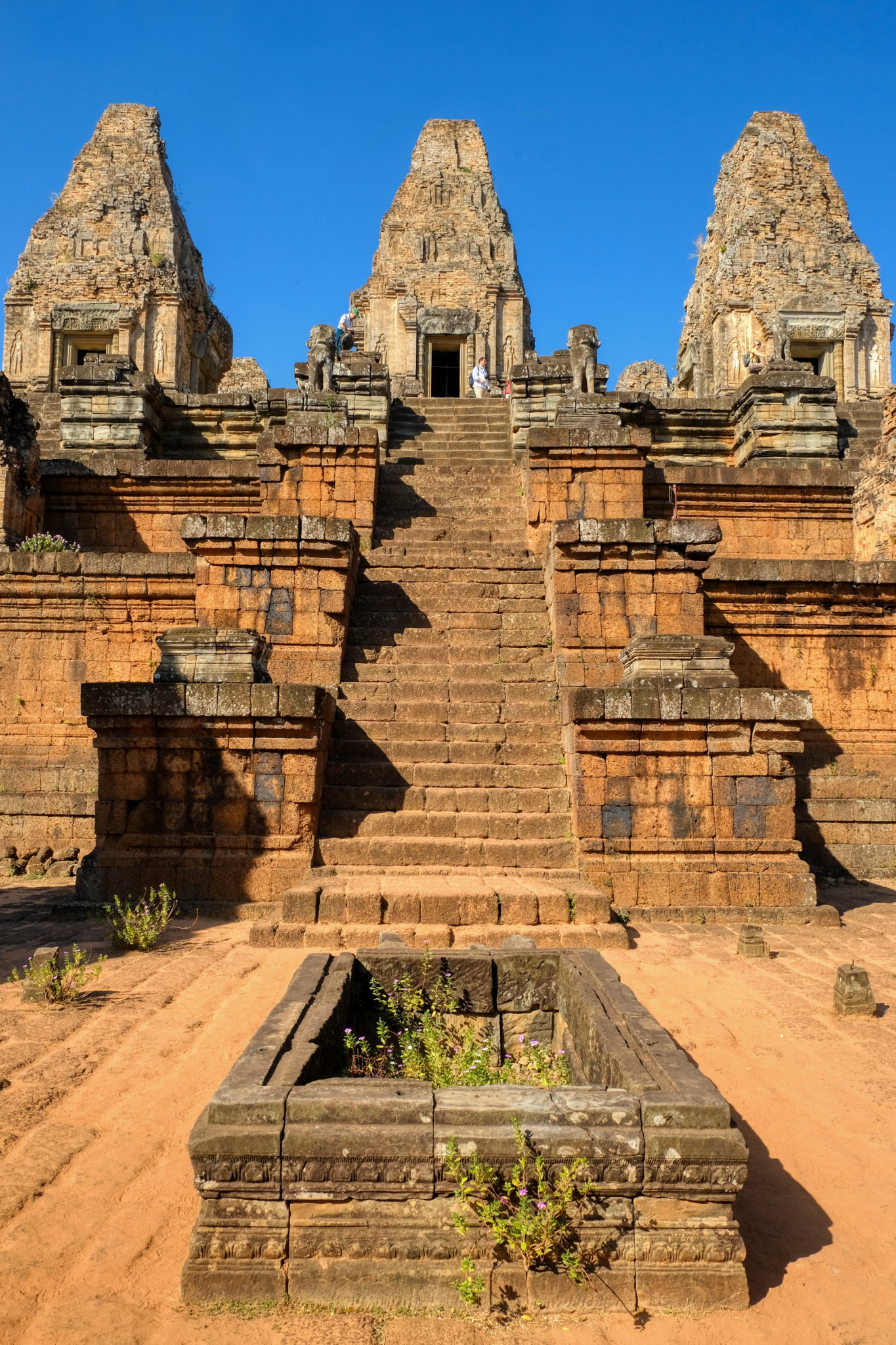 While speeding along a rural road, we yelled to the driver to stop when we saw this small temple alongside the road . . . .
While speeding along a rural road, we yelled to the driver to stop when we saw this small temple alongside the road . . . .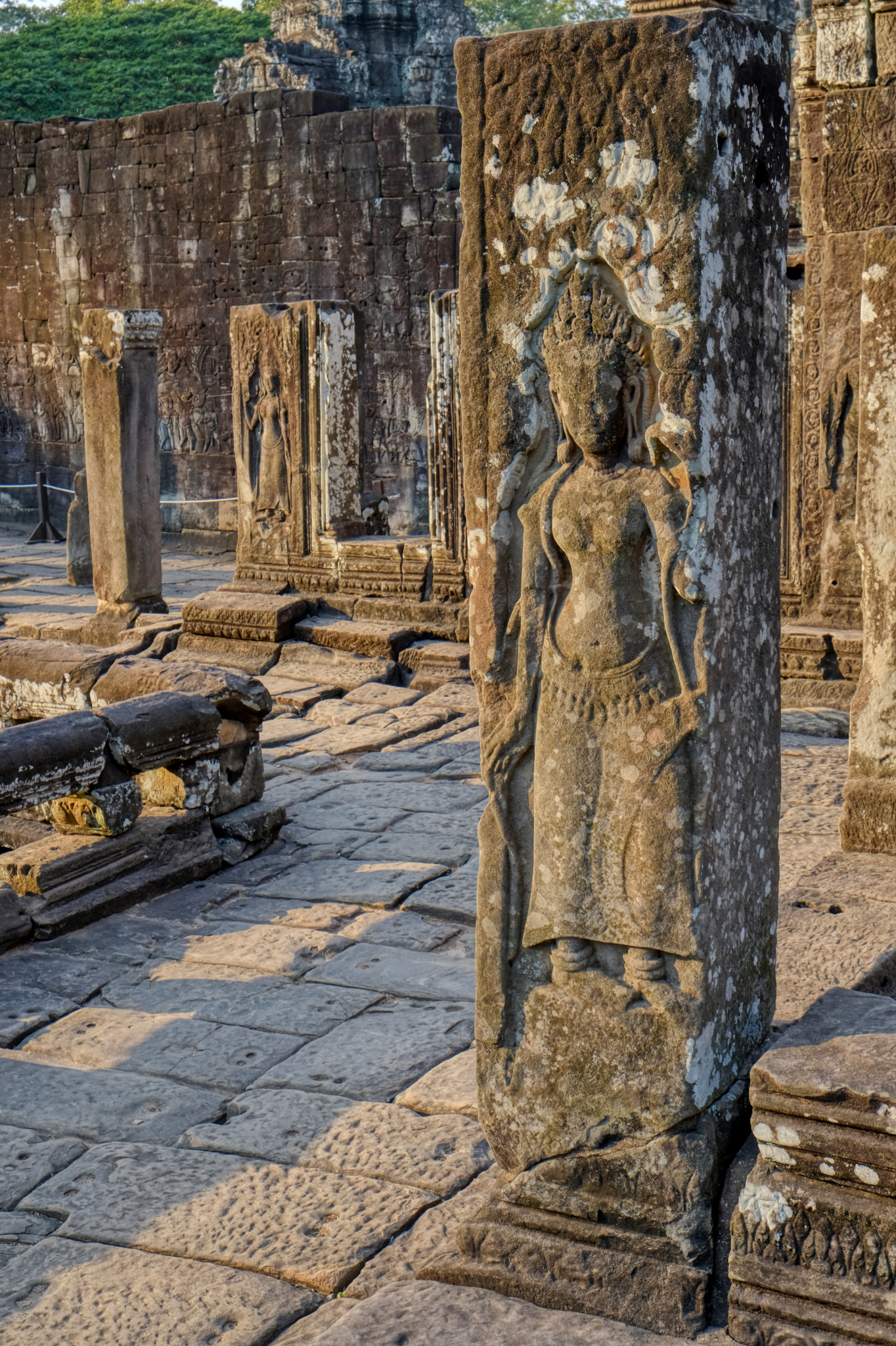 A remarkable temple in the late magic light.
A remarkable temple in the late magic light.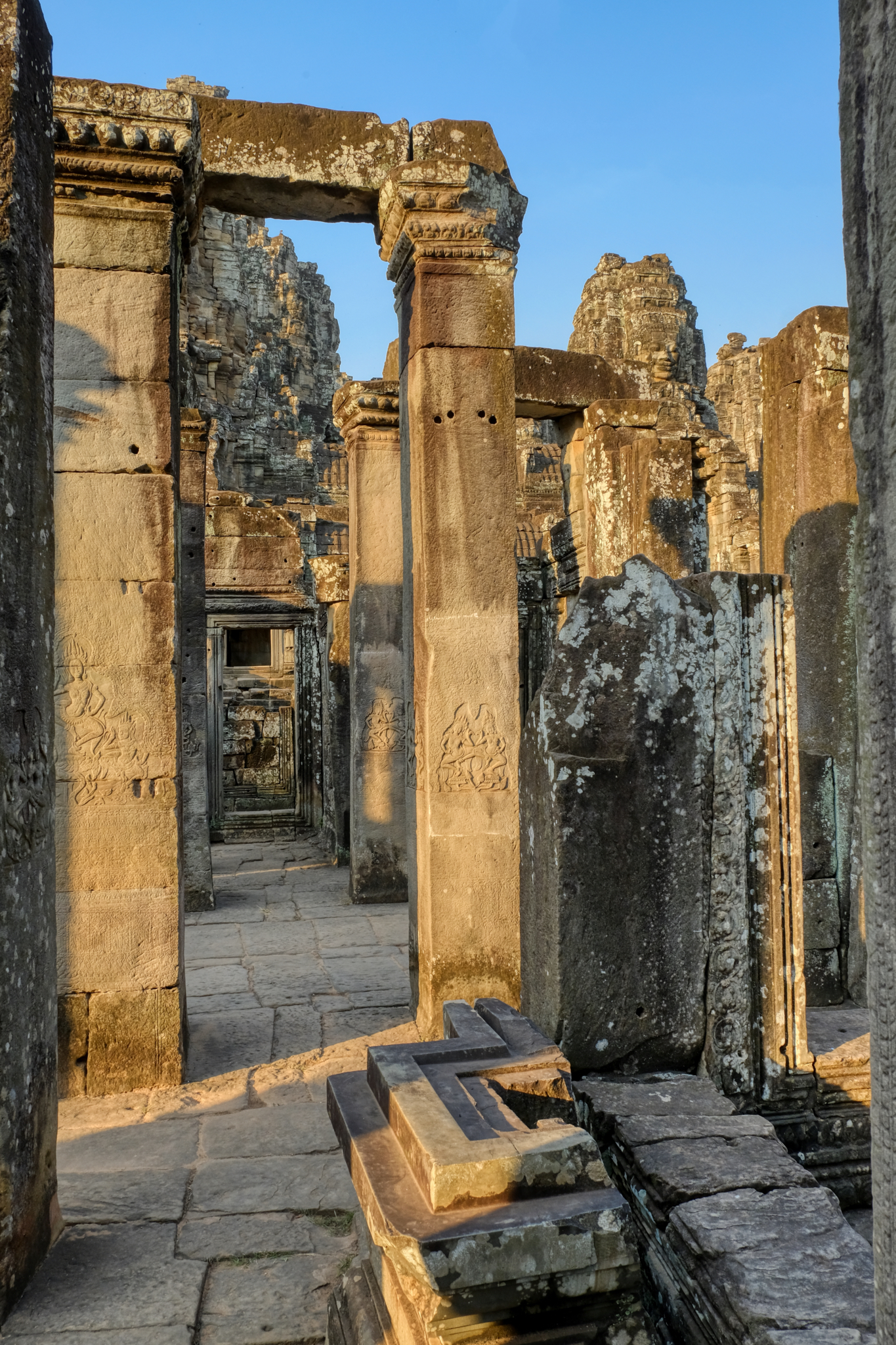 Stunning bas reliefs on the columns.
Stunning bas reliefs on the columns.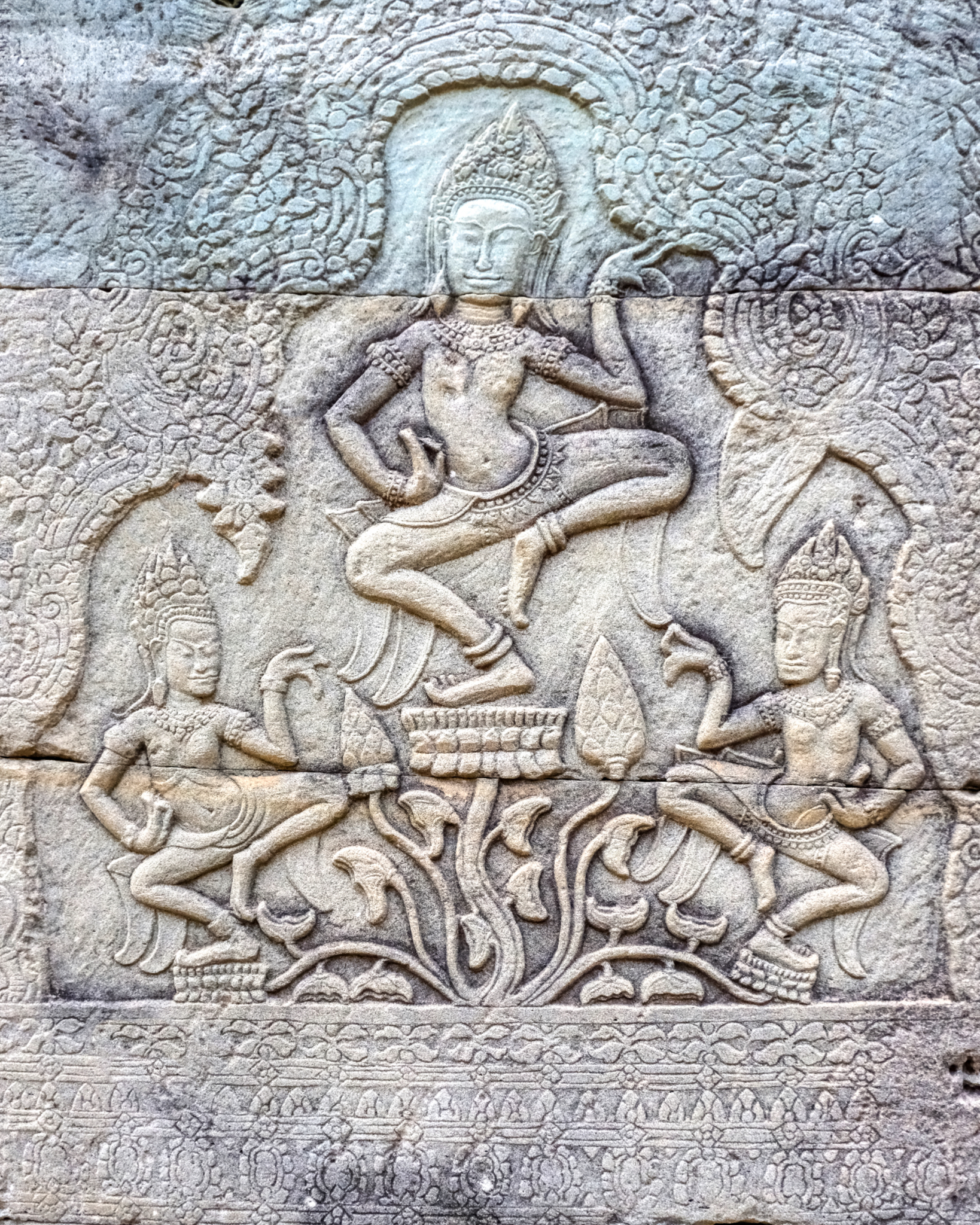 One of the columns' bas relief of a dancer.
One of the columns' bas relief of a dancer.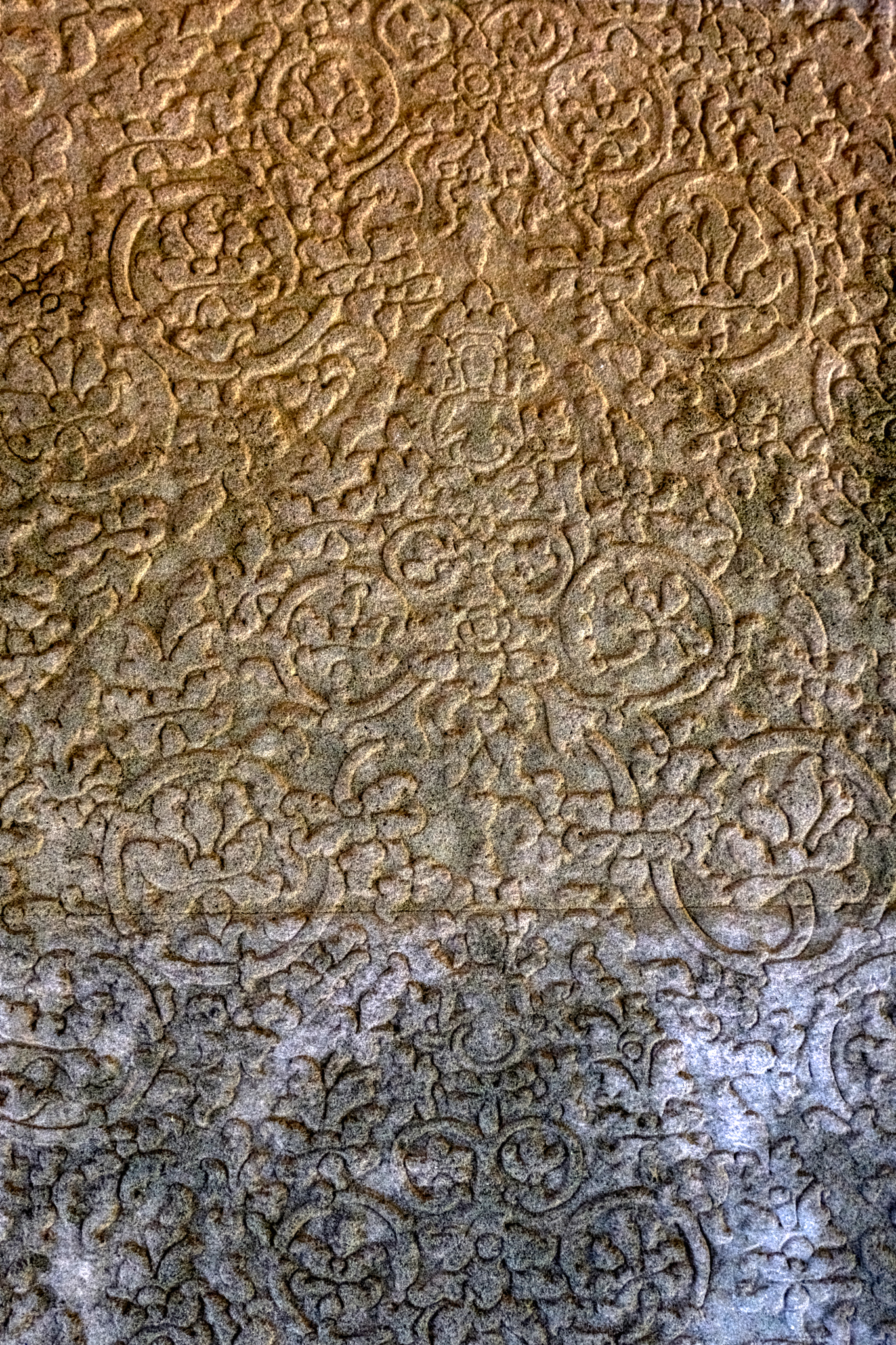 Almost every surface of this temple was incised with these marvelous patterns.
Almost every surface of this temple was incised with these marvelous patterns.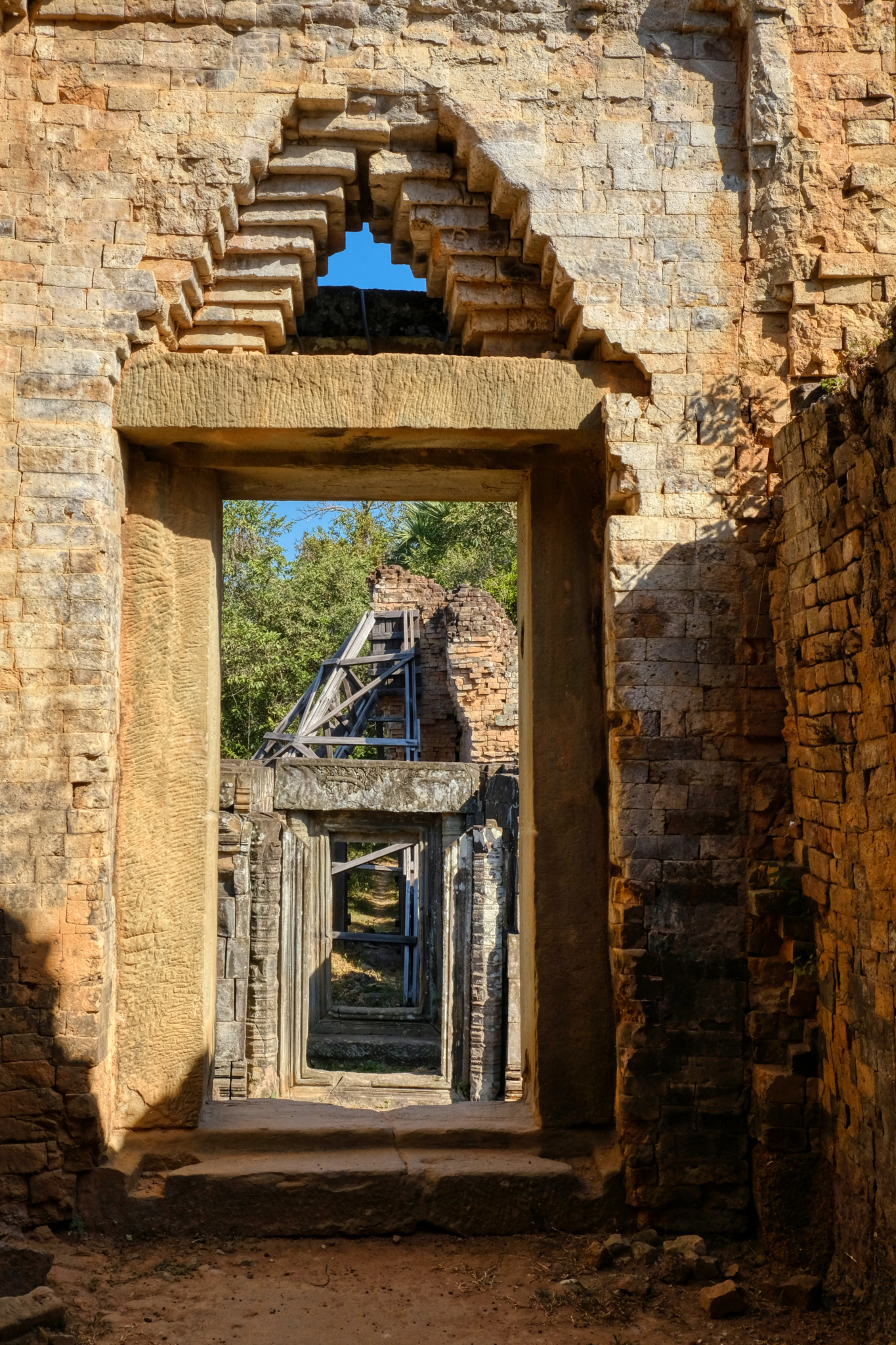 We wandered around this small temple for only 15 minutes before heading out with the driver again. I must go back!!!
We wandered around this small temple for only 15 minutes before heading out with the driver again. I must go back!!!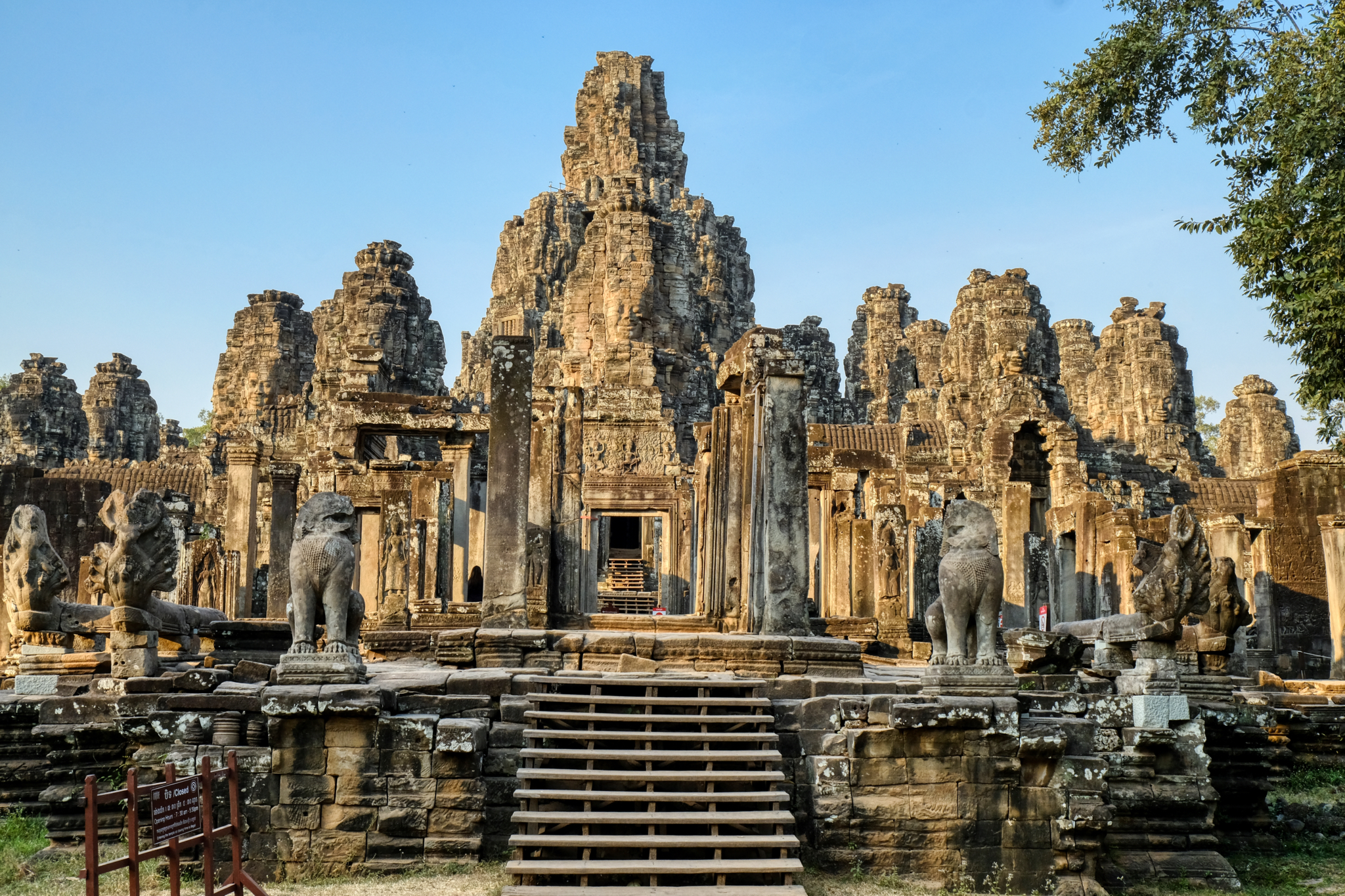 Another roadside temple . . . this photograph taken out of the window of the car. No time to explore it.
Another roadside temple . . . this photograph taken out of the window of the car. No time to explore it.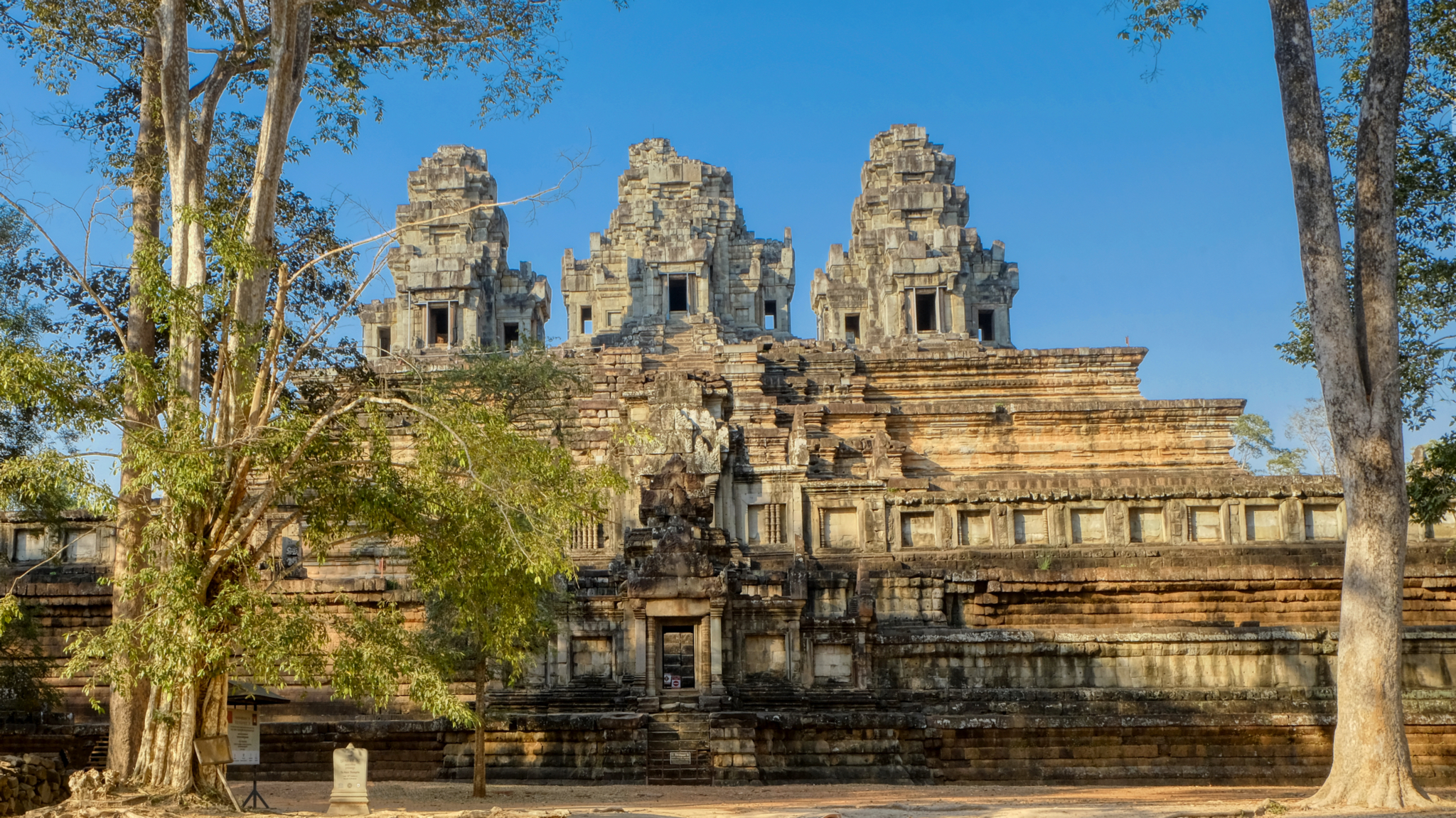 Yet another photo taken from the car of a temple not explored . . . I MUST come back!
Yet another photo taken from the car of a temple not explored . . . I MUST come back! A highlight of the day was the 'discovery' of the halls of carved stone concubines at a place called the elephant race track.
A highlight of the day was the 'discovery' of the halls of carved stone concubines at a place called the elephant race track.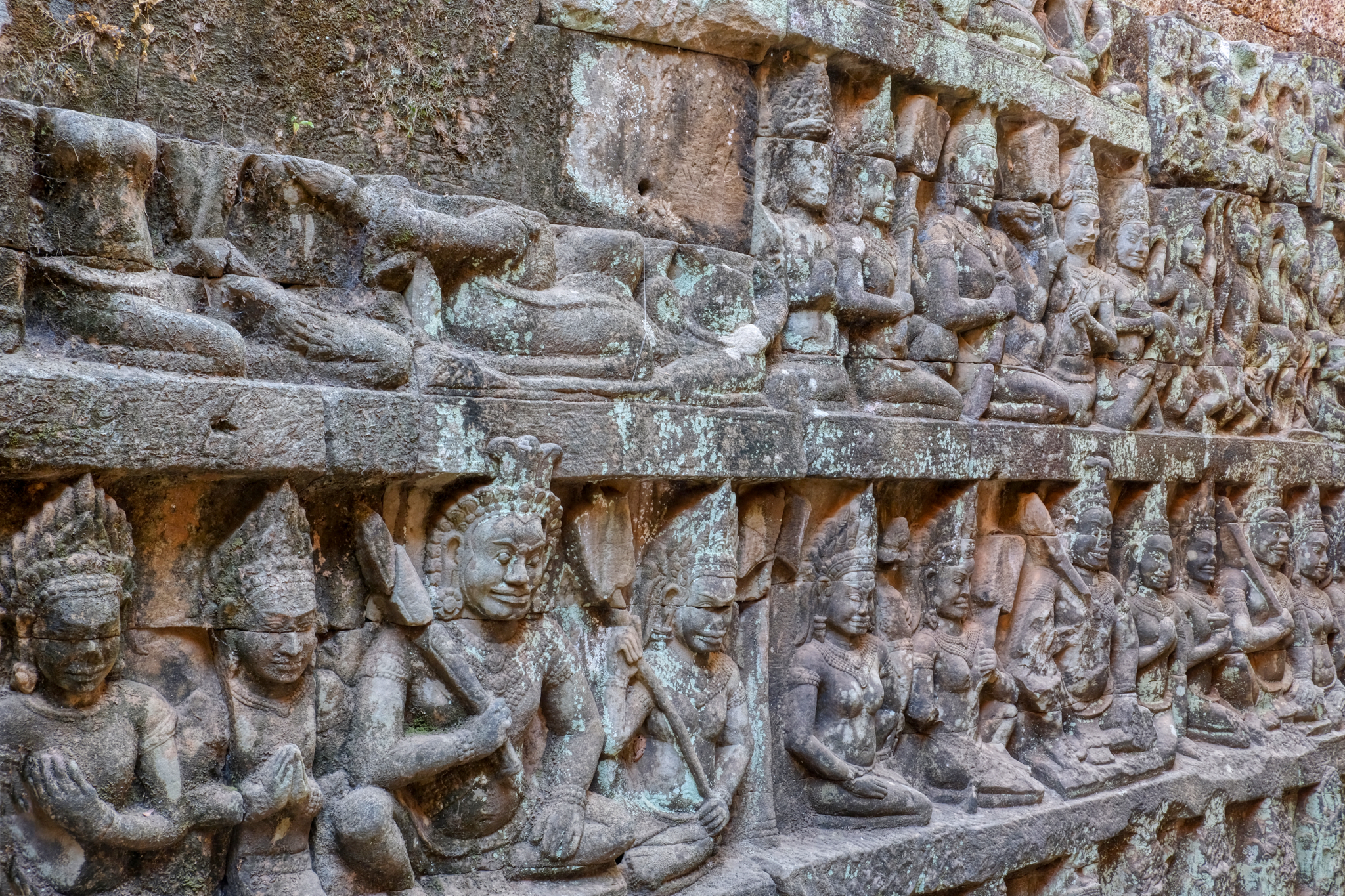 Hundreds and hundreds of individuals represented in stone.
Hundreds and hundreds of individuals represented in stone.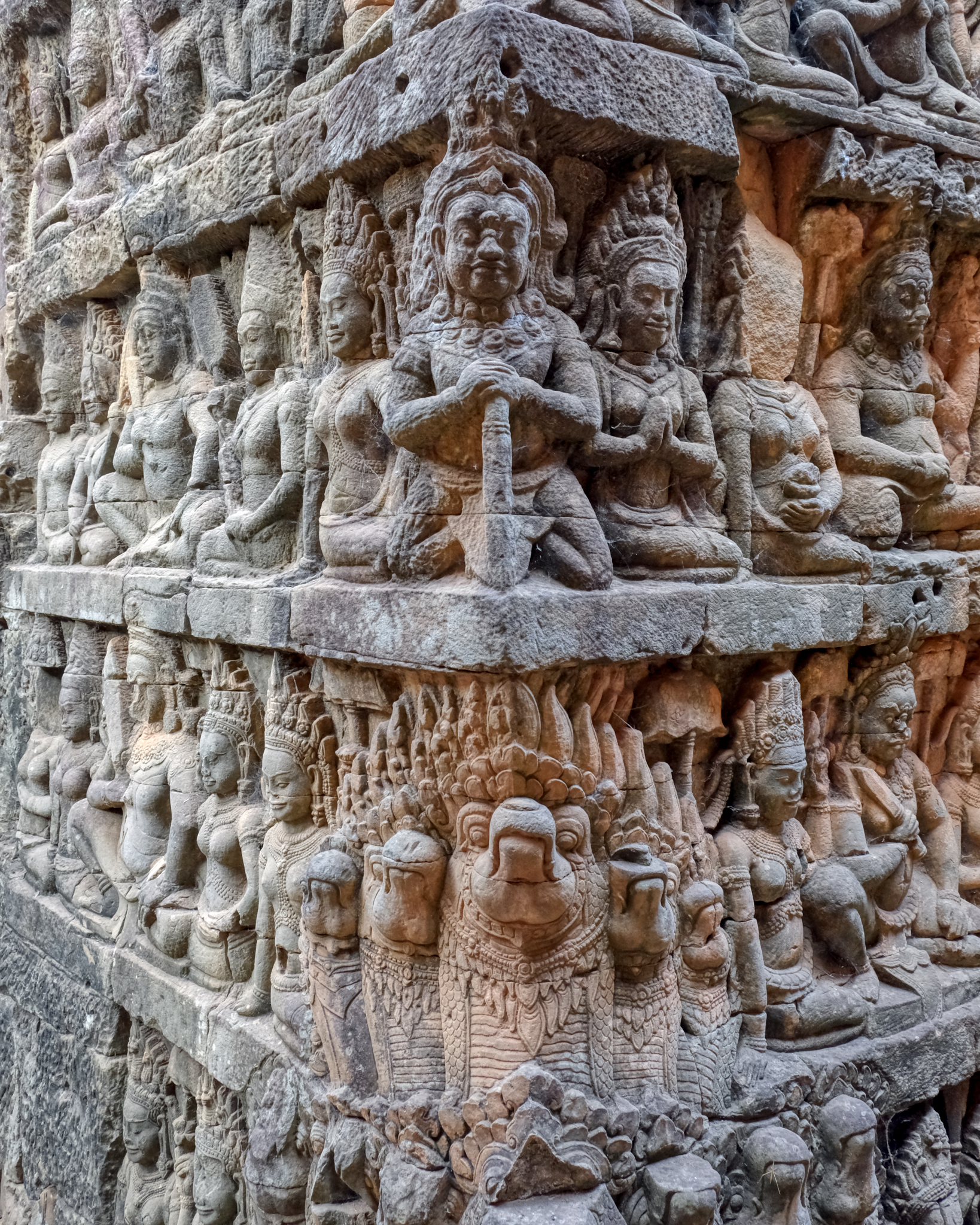 An incredible archeological find.
An incredible archeological find.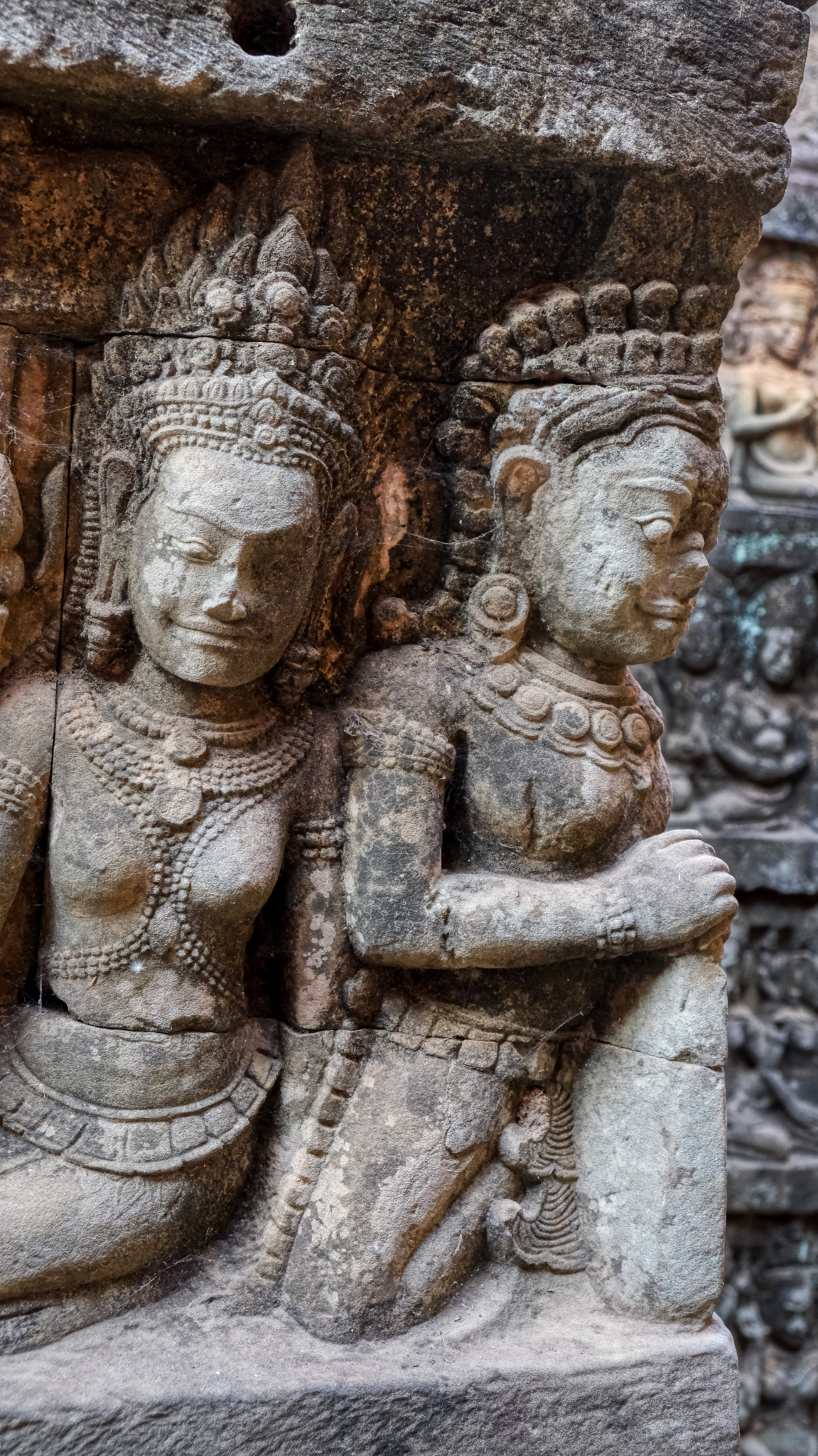 Great detail.
Great detail.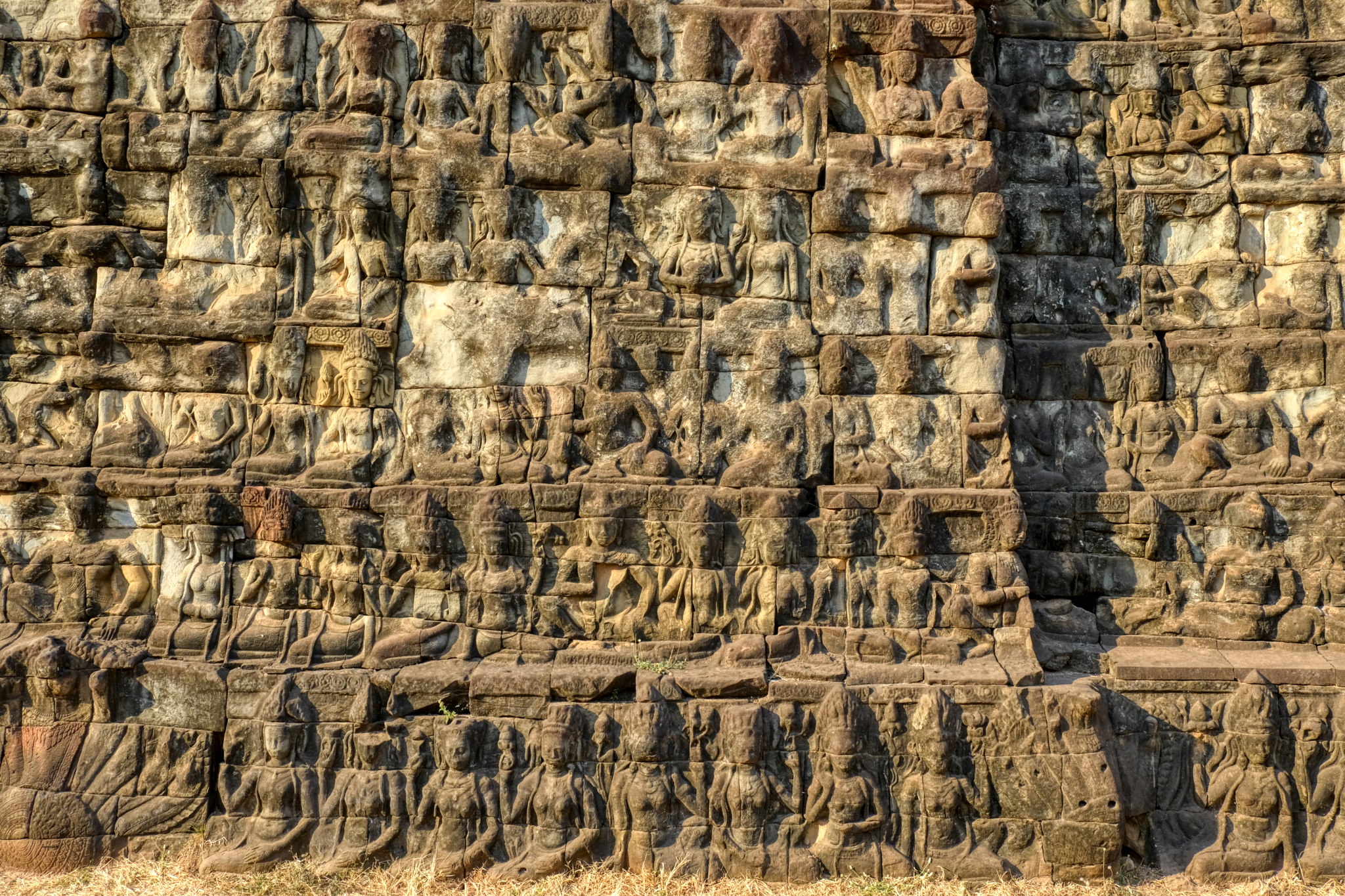 Another wall of concubines in the late sunlight.
Another wall of concubines in the late sunlight.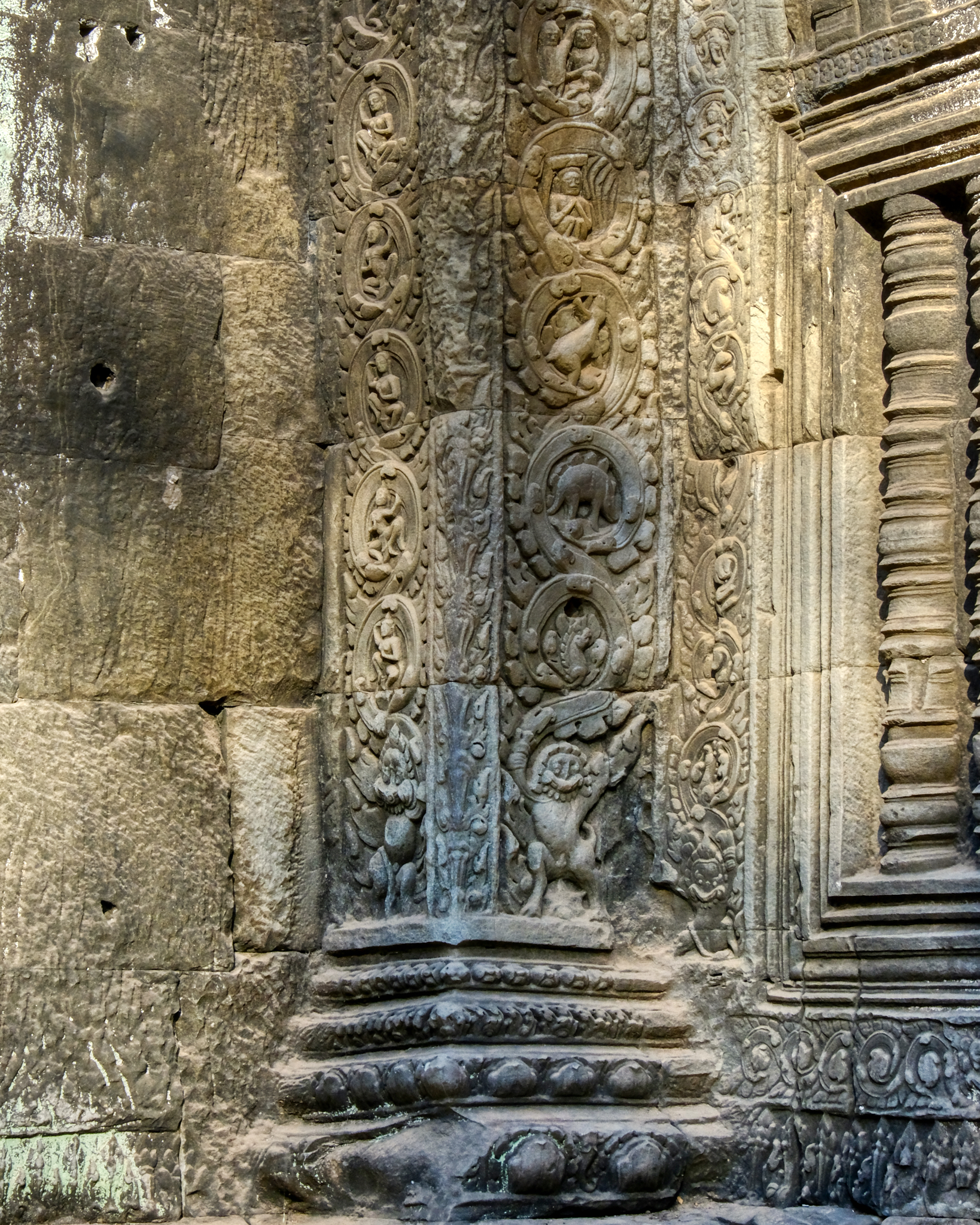 This corner panel has stumped archaeologists for a hundred years. See if you can spot the carved stegosaurus (3rd one up from the bottom on right). . . . they didn't know about the dinosaurs at that time!
This corner panel has stumped archaeologists for a hundred years. See if you can spot the carved stegosaurus (3rd one up from the bottom on right). . . . they didn't know about the dinosaurs at that time!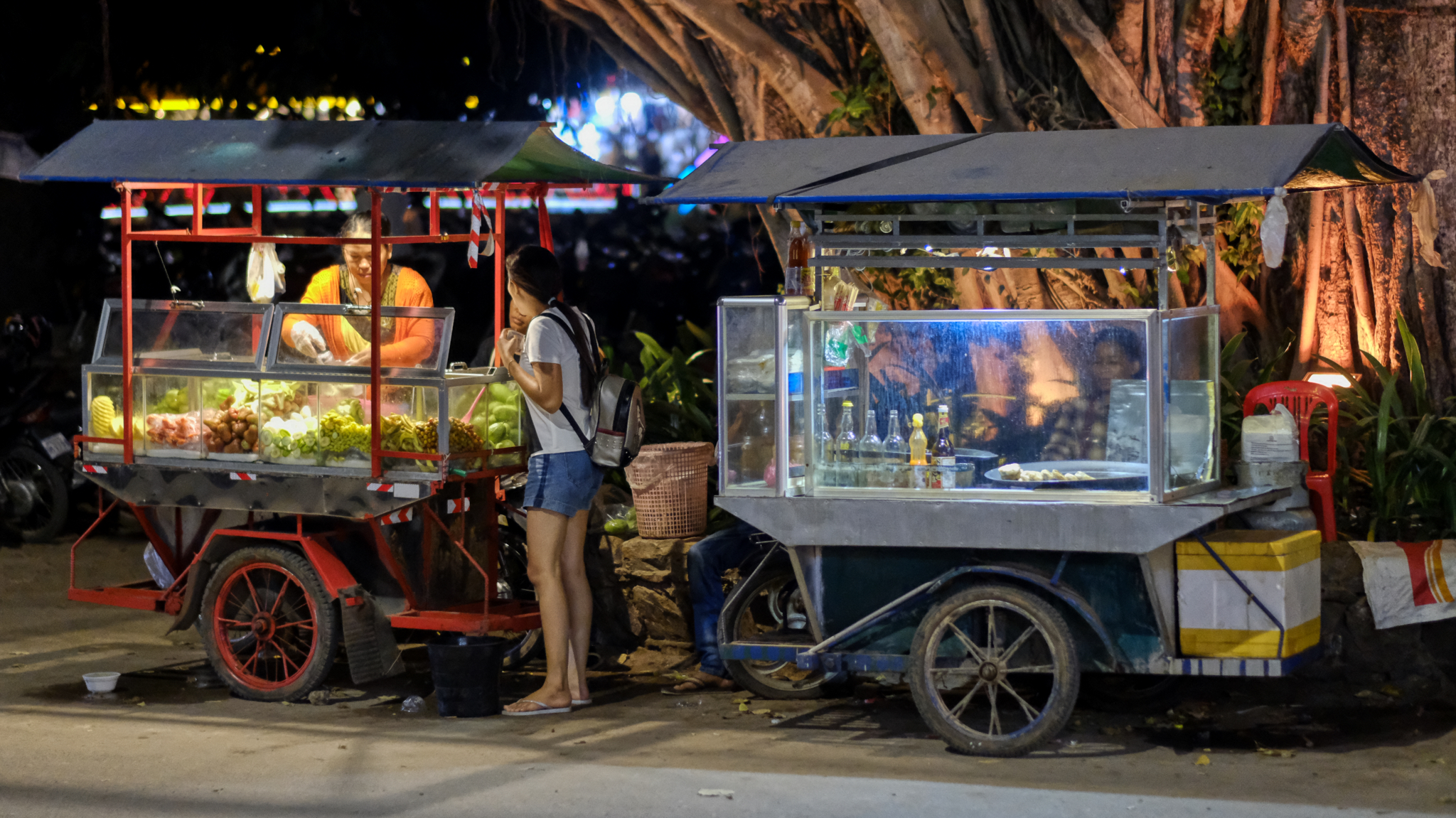 We stayed at the nearby town of Siem Reap. Although it was filling up with tourists (before the Covid-19 scare), it was a pleasant and vibrant little place with good restaurants and good shopping.
We stayed at the nearby town of Siem Reap. Although it was filling up with tourists (before the Covid-19 scare), it was a pleasant and vibrant little place with good restaurants and good shopping.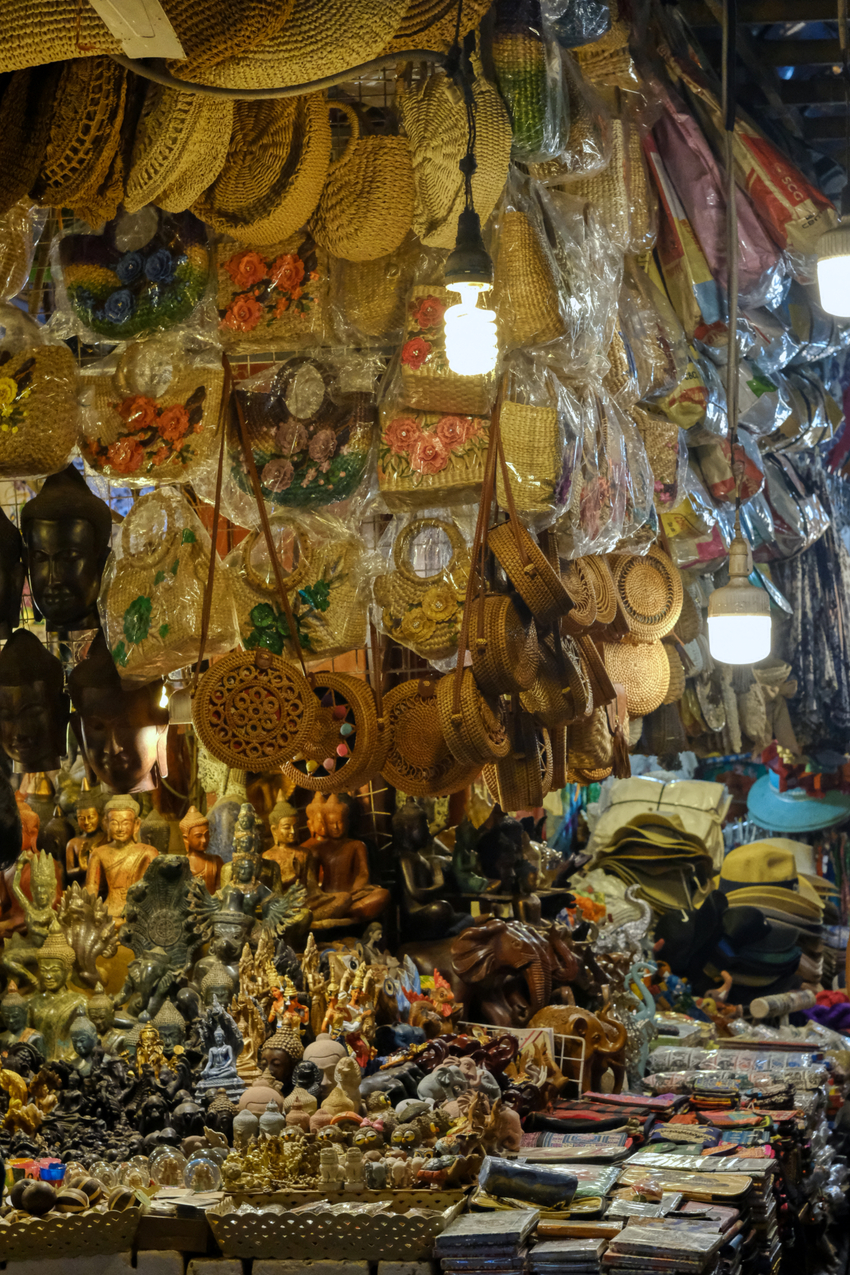 There was an extensive 'night market' stuffed with tourist curios . . . and some very nice things too.
There was an extensive 'night market' stuffed with tourist curios . . . and some very nice things too.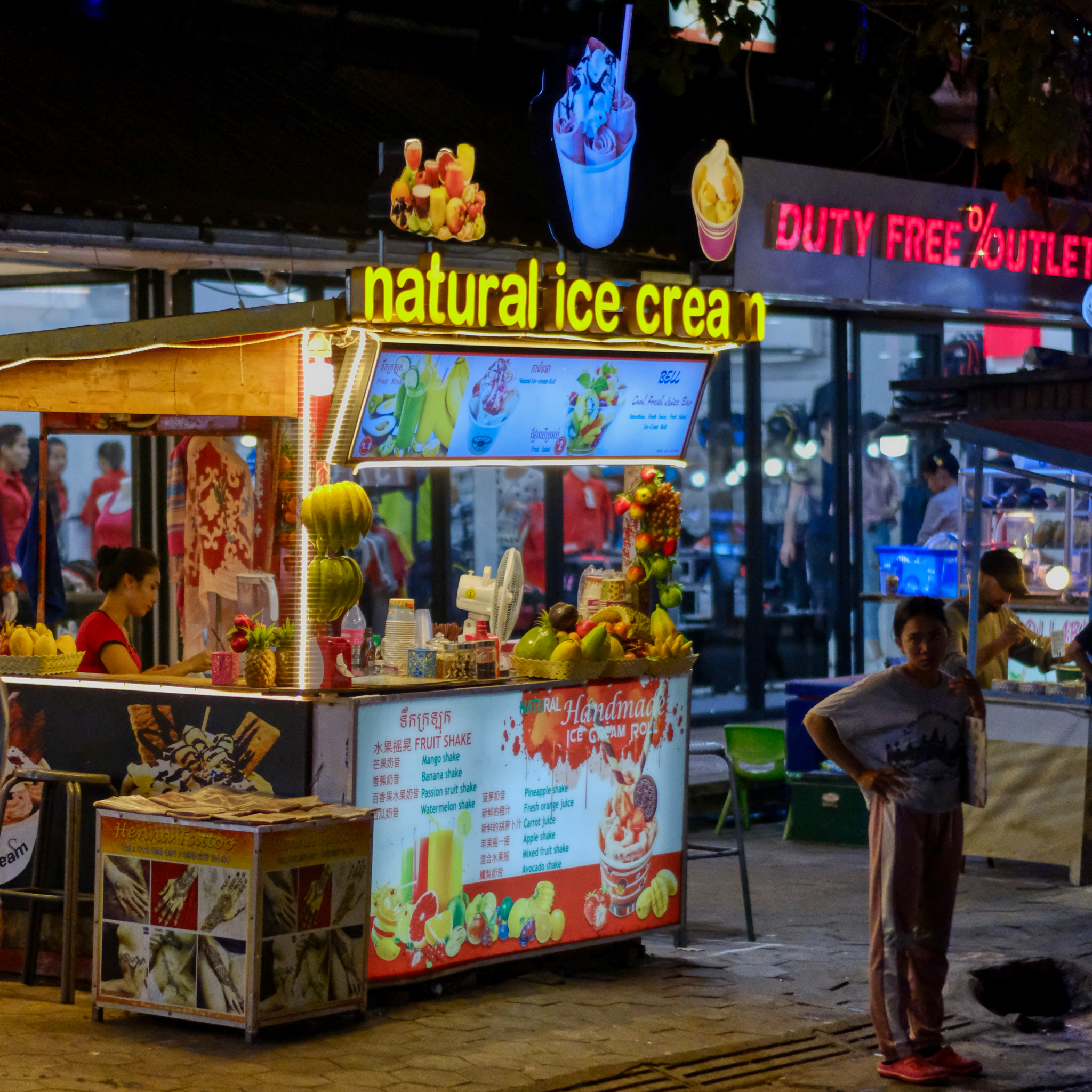 Yes, everything an international tourist might want on a hot Cambodian night.
Yes, everything an international tourist might want on a hot Cambodian night.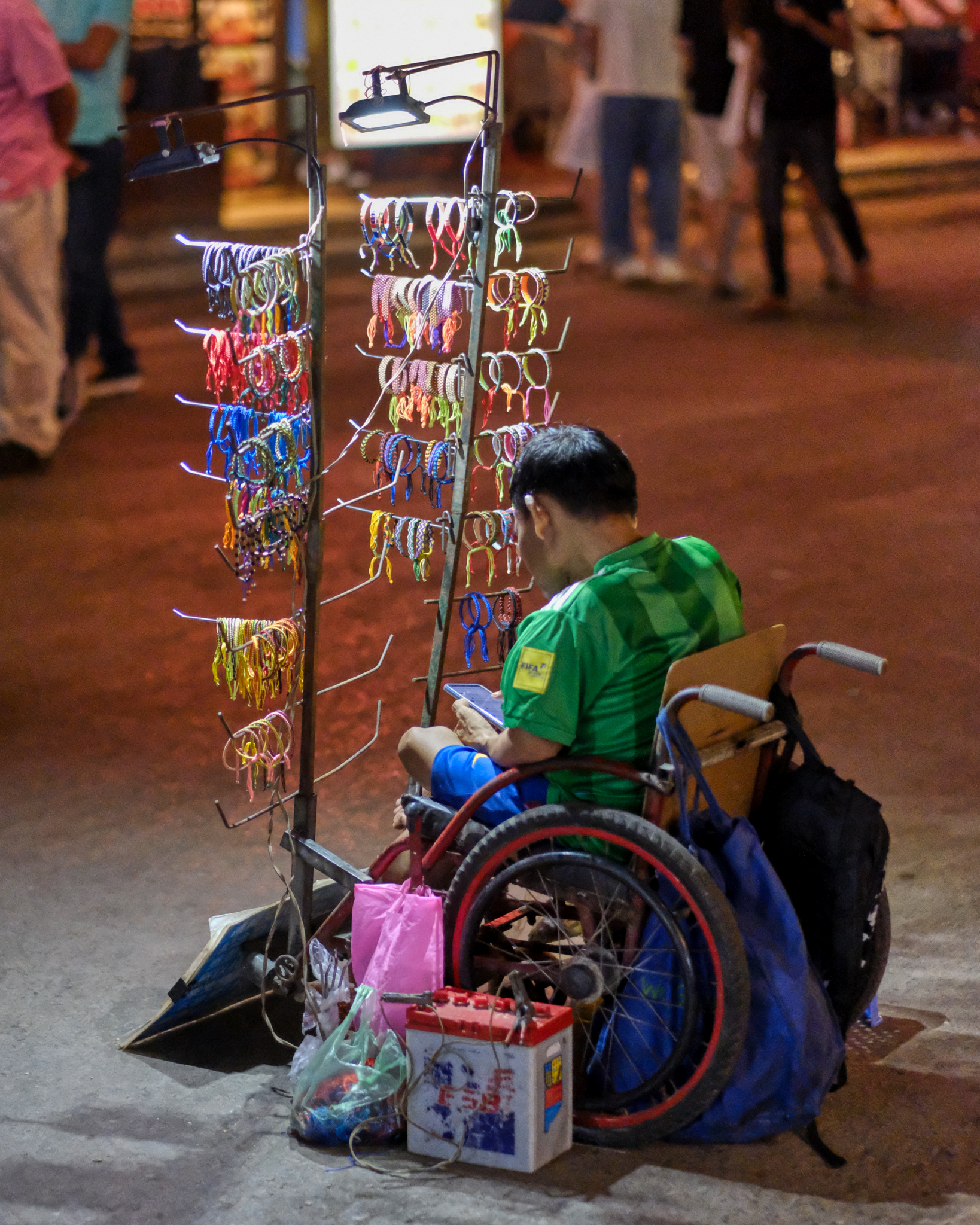 I bought some bracelets from this hard working guy.
I bought some bracelets from this hard working guy.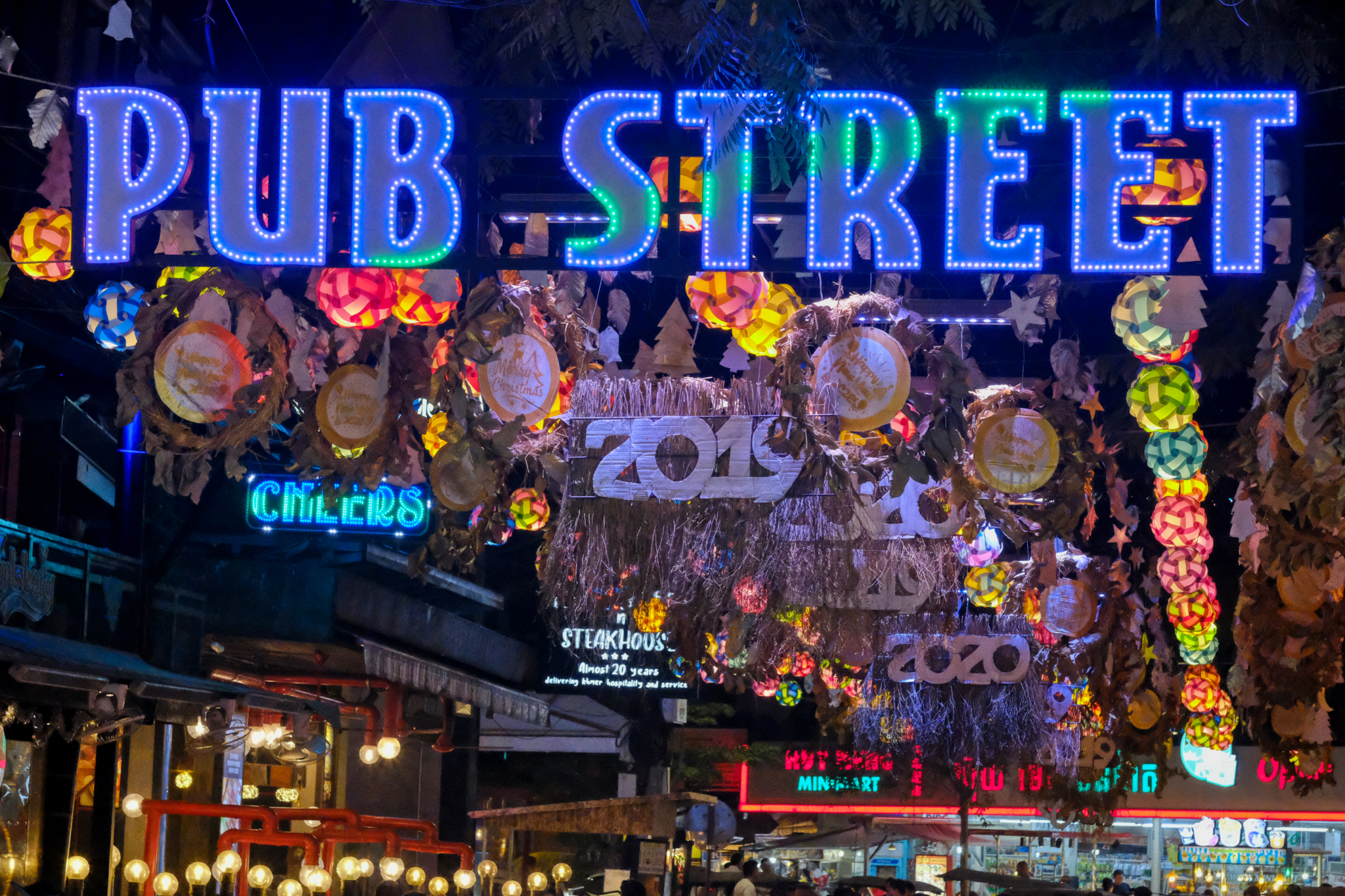 We had a feeling we were not the first tourists to have visited Siem Reap. Pub Street was a lively place.
We had a feeling we were not the first tourists to have visited Siem Reap. Pub Street was a lively place.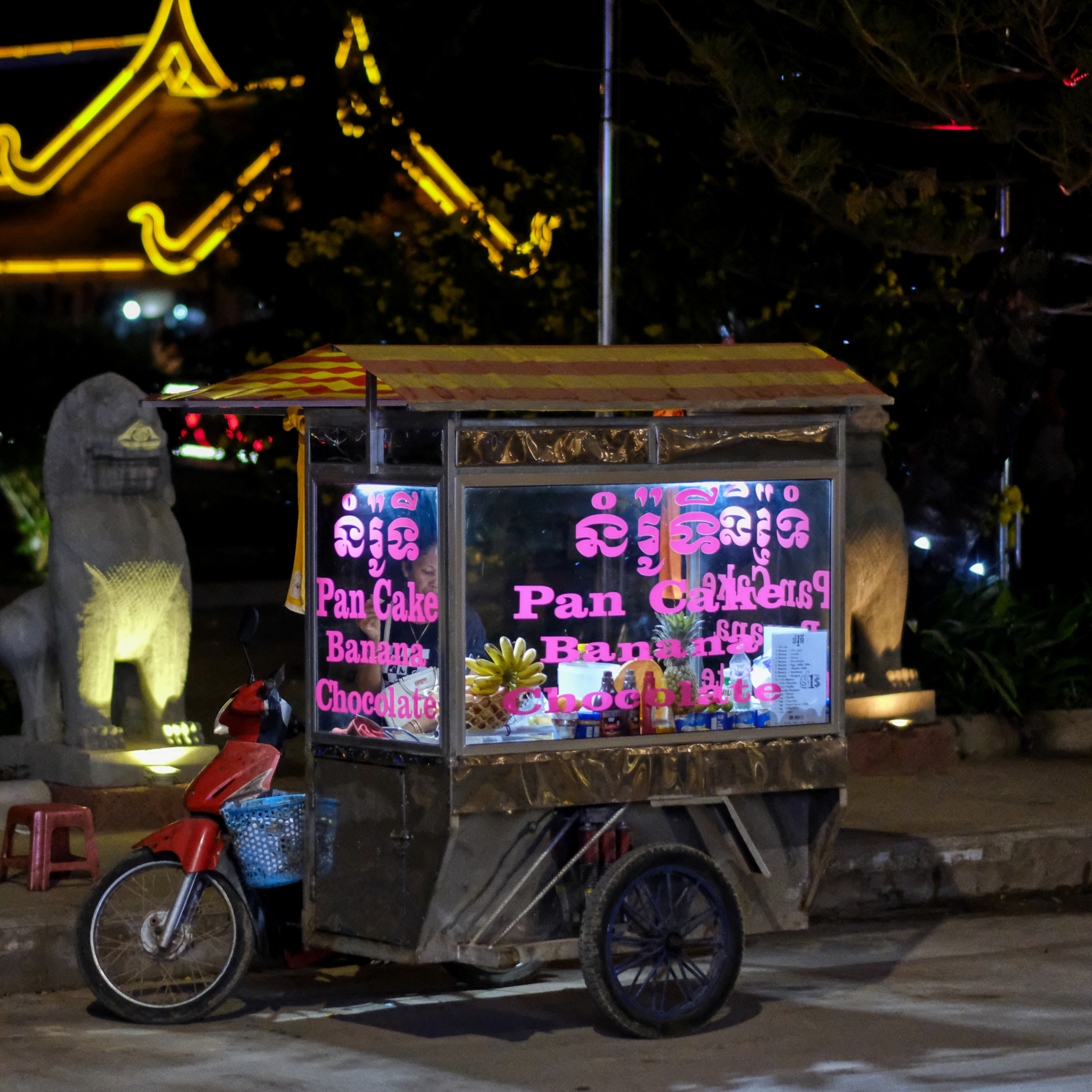 This cart reminded me of the movie Groundhog Day . . . "Hey, who wants some flapjacks?"
This cart reminded me of the movie Groundhog Day . . . "Hey, who wants some flapjacks?"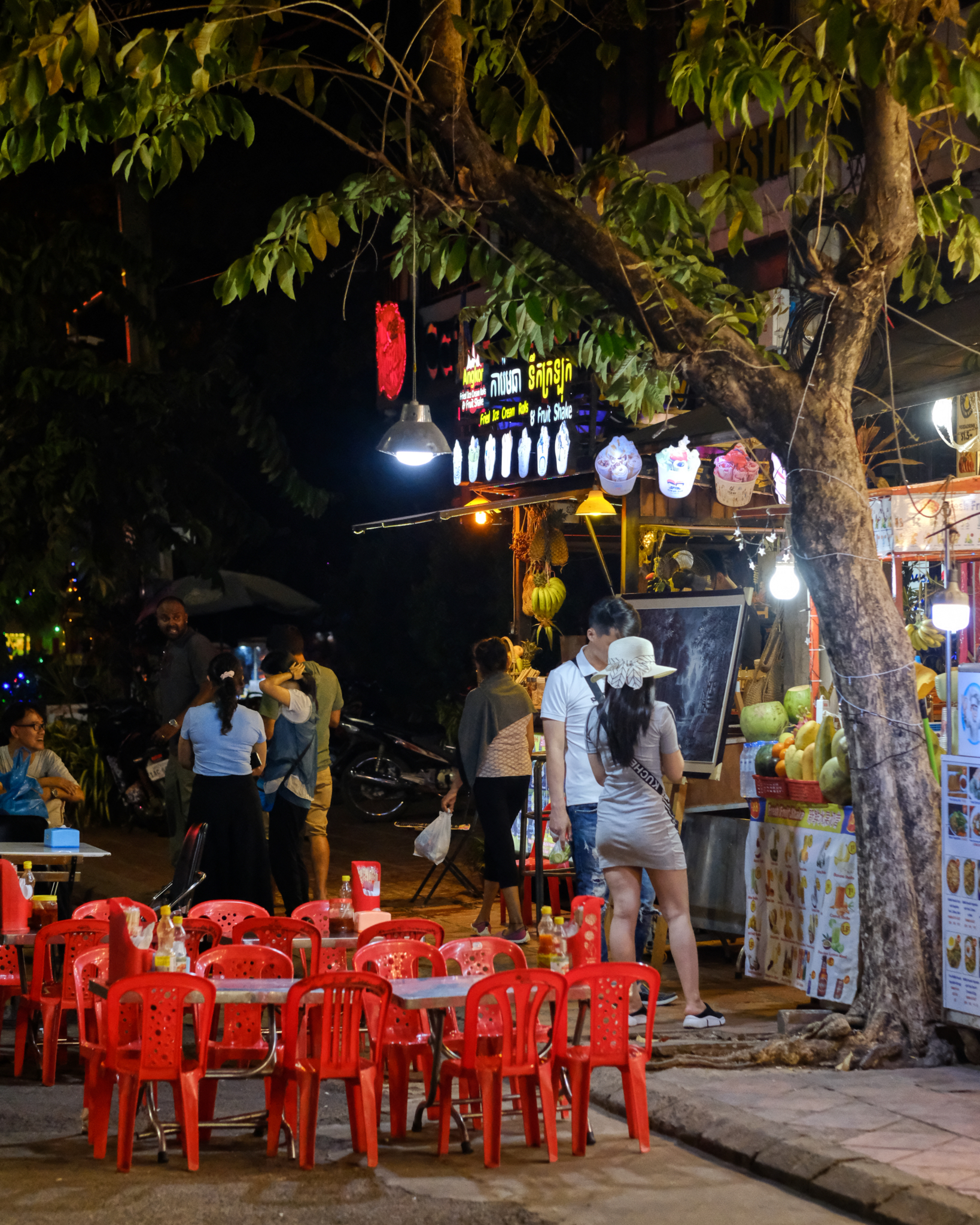 Lots of small street eateries. This was in the middle of the tourist season, mid-January, and it was not as crowded as I would have thought.
Lots of small street eateries. This was in the middle of the tourist season, mid-January, and it was not as crowded as I would have thought.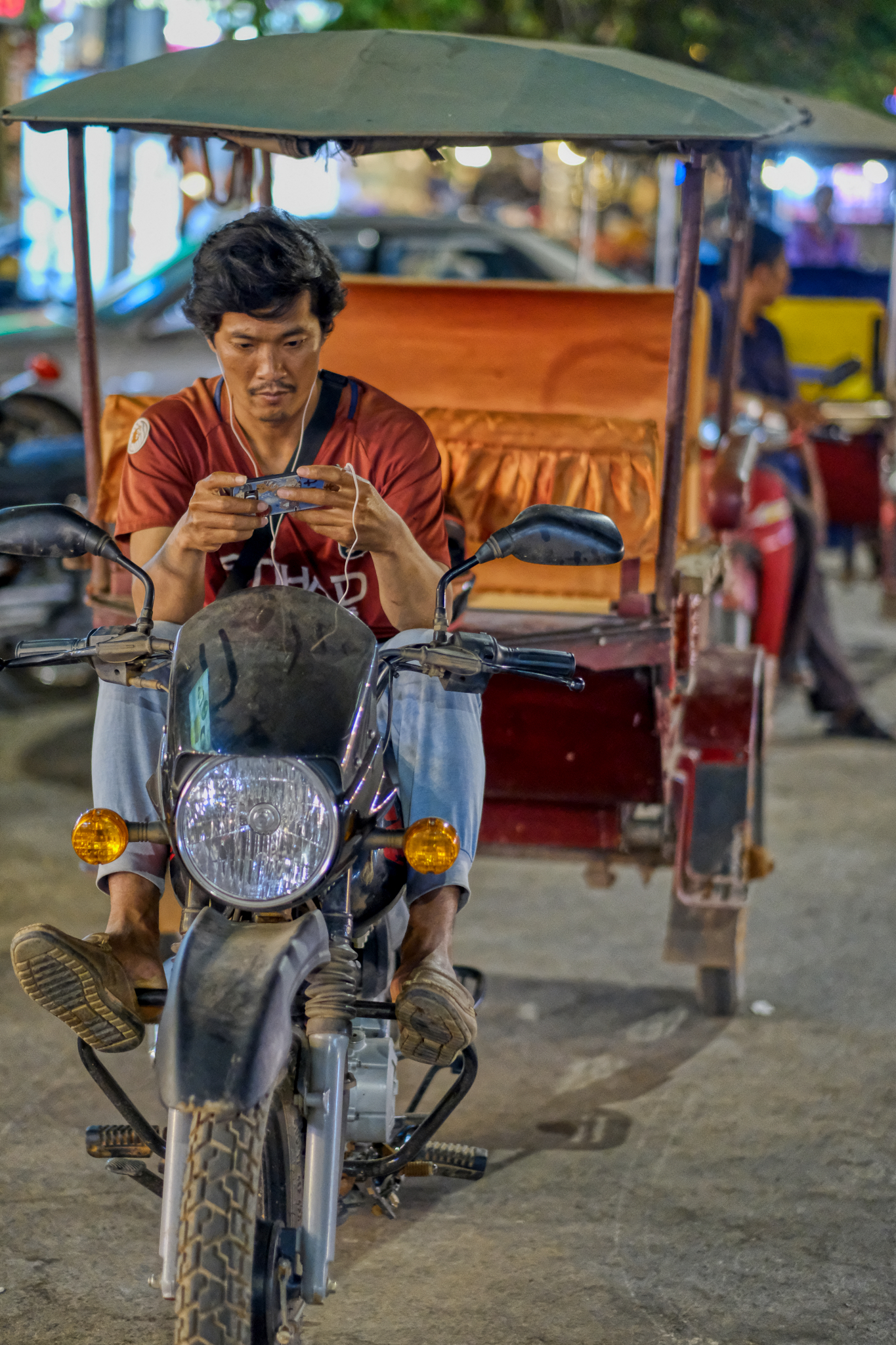 The modern tuk-tuk driver is hooked into the world and its events.
The modern tuk-tuk driver is hooked into the world and its events.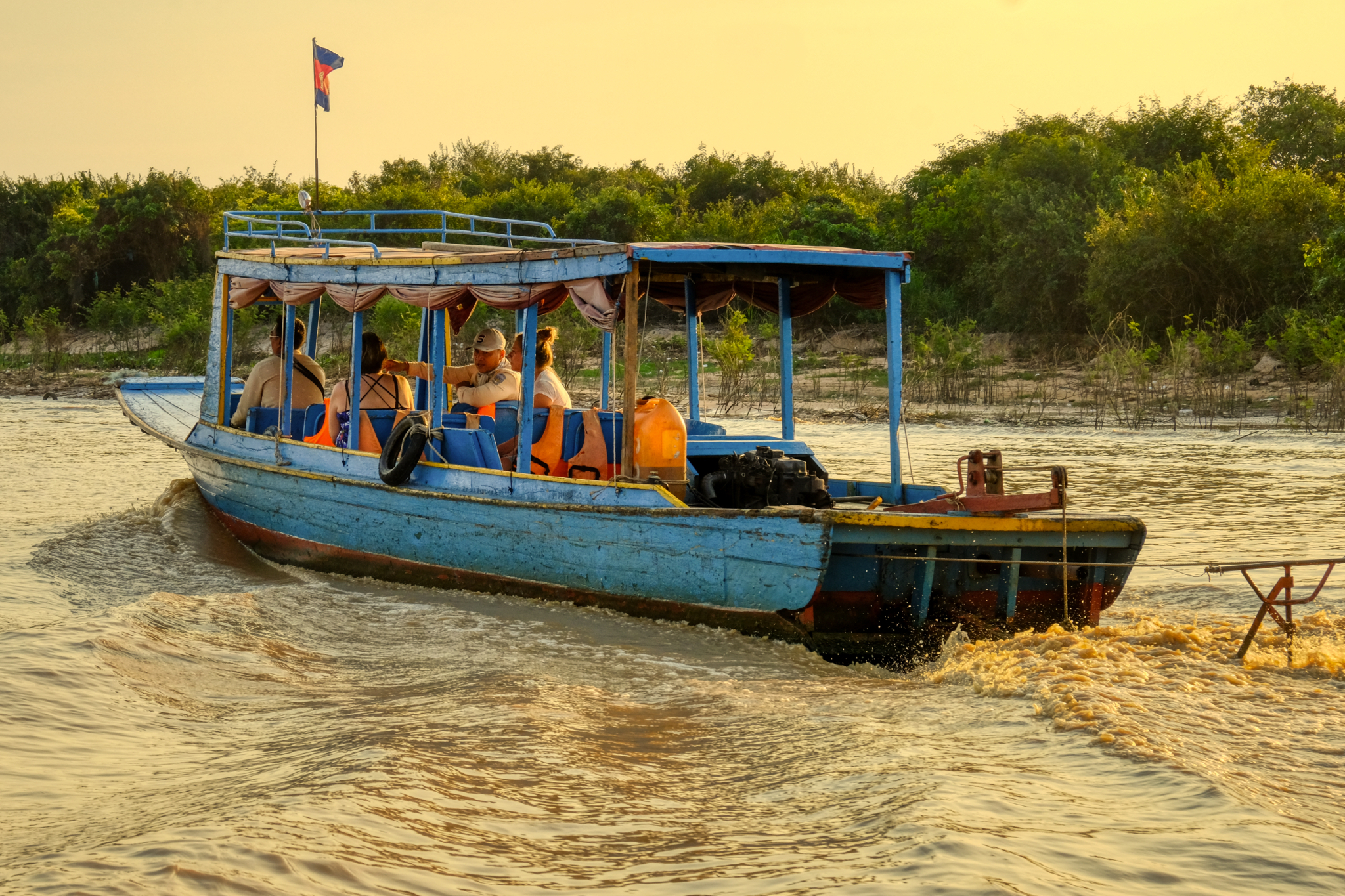 Our driver insisted that we all go out to the lake and take a boat on the water to see the sunset. We were sure it was just a tourist trap, but we relented. There were hundreds of small boats full of tourists. We got one and headed out.
Our driver insisted that we all go out to the lake and take a boat on the water to see the sunset. We were sure it was just a tourist trap, but we relented. There were hundreds of small boats full of tourists. We got one and headed out.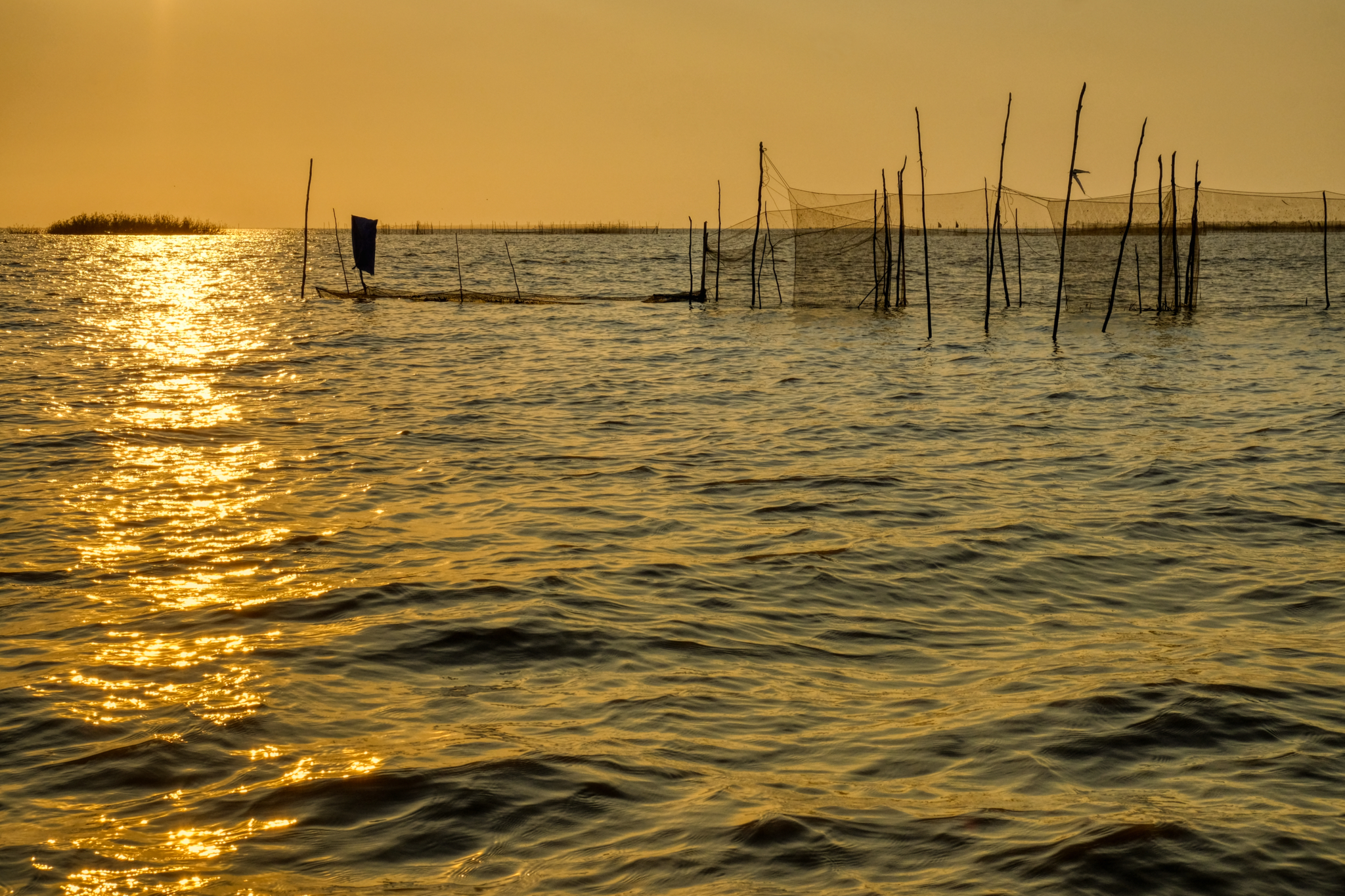 The ride out to the lake was spectacular. We were very happy we had taken the trip.
The ride out to the lake was spectacular. We were very happy we had taken the trip.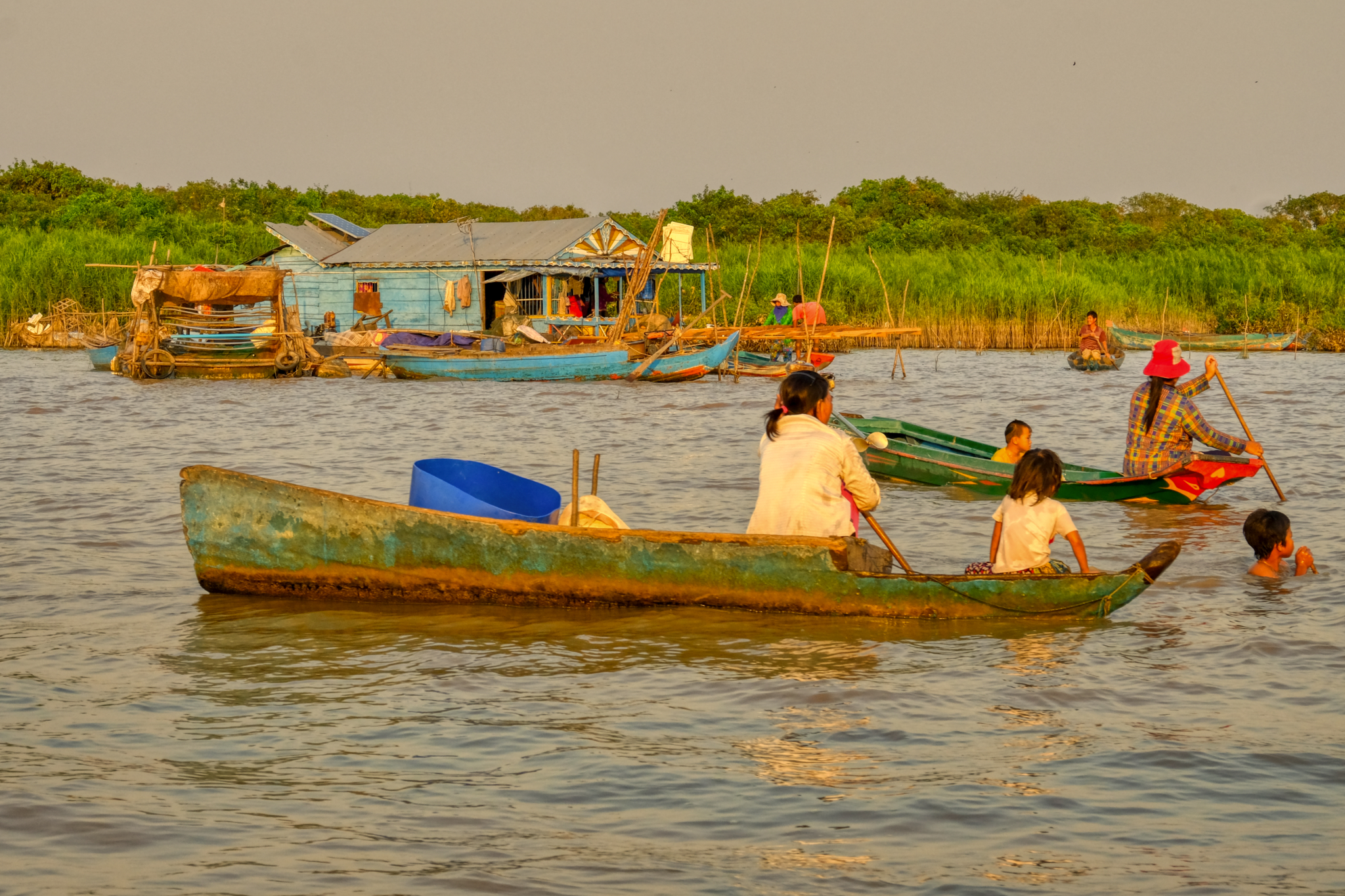 We passed through a floating village along the way. The boatman told us that this village moves with the rising and falling of the lake.
We passed through a floating village along the way. The boatman told us that this village moves with the rising and falling of the lake.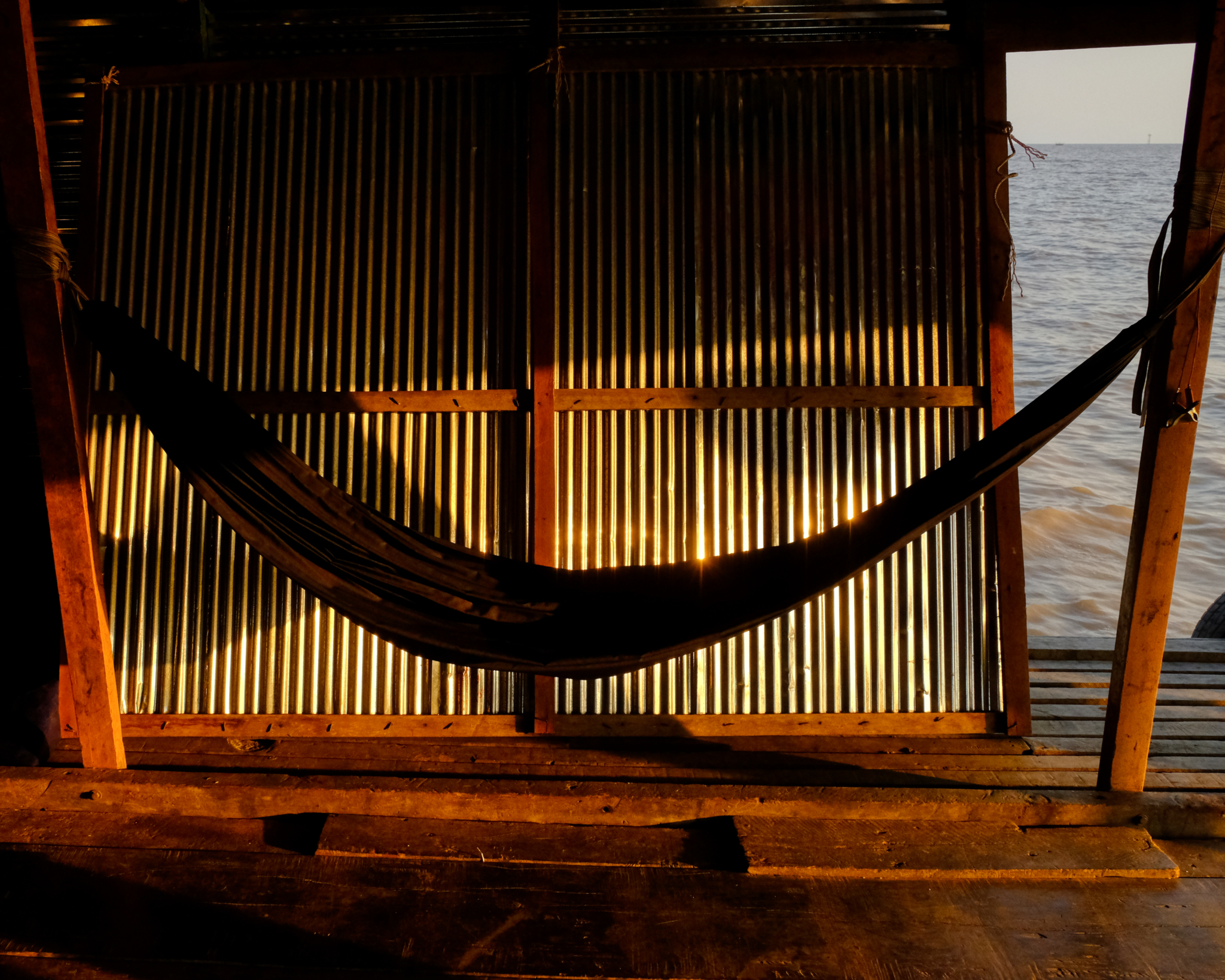 We stopped off at one of the floating shacks.
We stopped off at one of the floating shacks.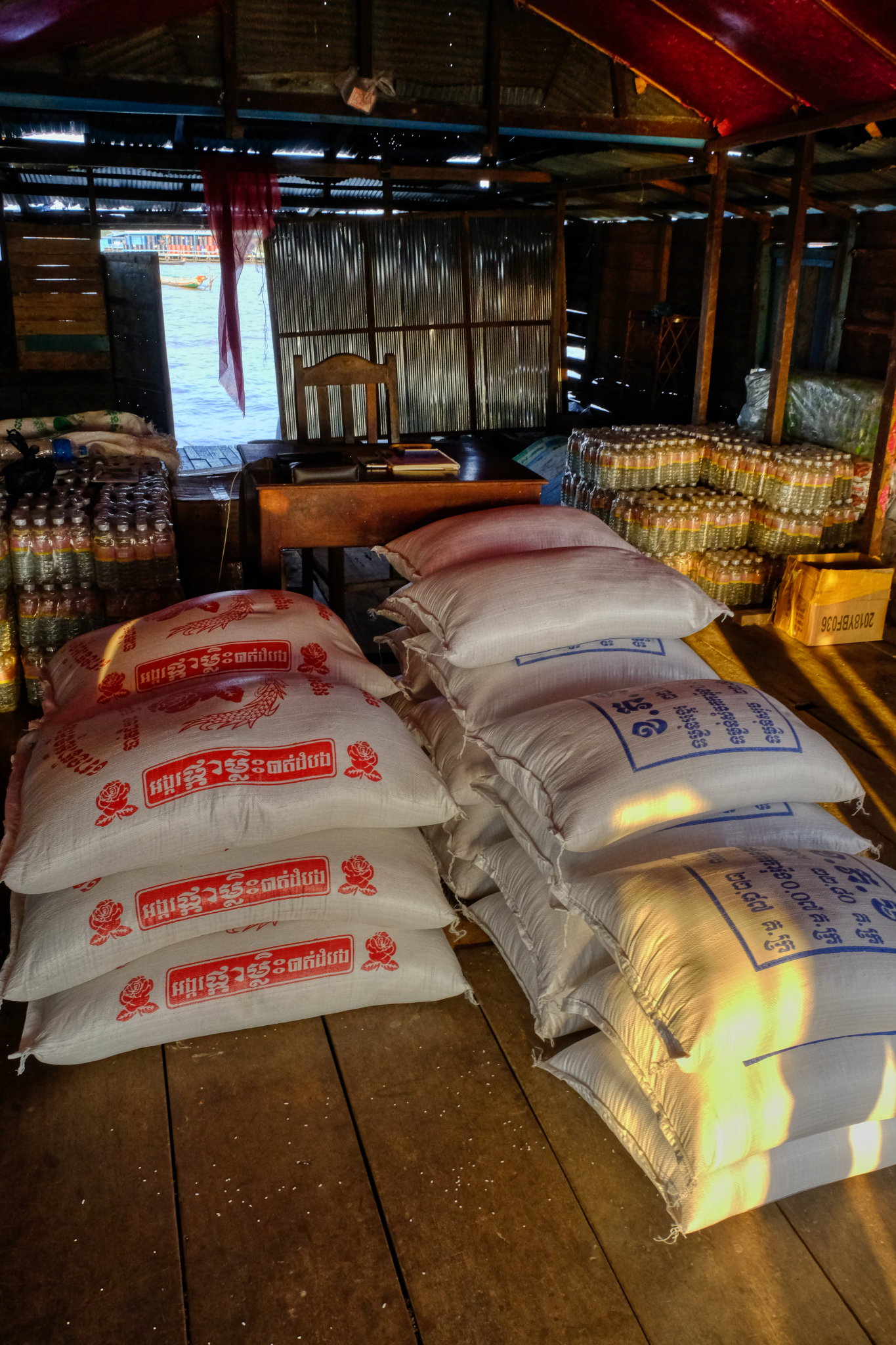 The boatman said these villagers were very poor. He asked if we would like to make a donation of rice to the local floating school. We were happy to help. For a few dollars we bought four sacks of rice and delivered them to this school:
The boatman said these villagers were very poor. He asked if we would like to make a donation of rice to the local floating school. We were happy to help. For a few dollars we bought four sacks of rice and delivered them to this school: This is the floating school. We stopped here to unload the rice.
This is the floating school. We stopped here to unload the rice.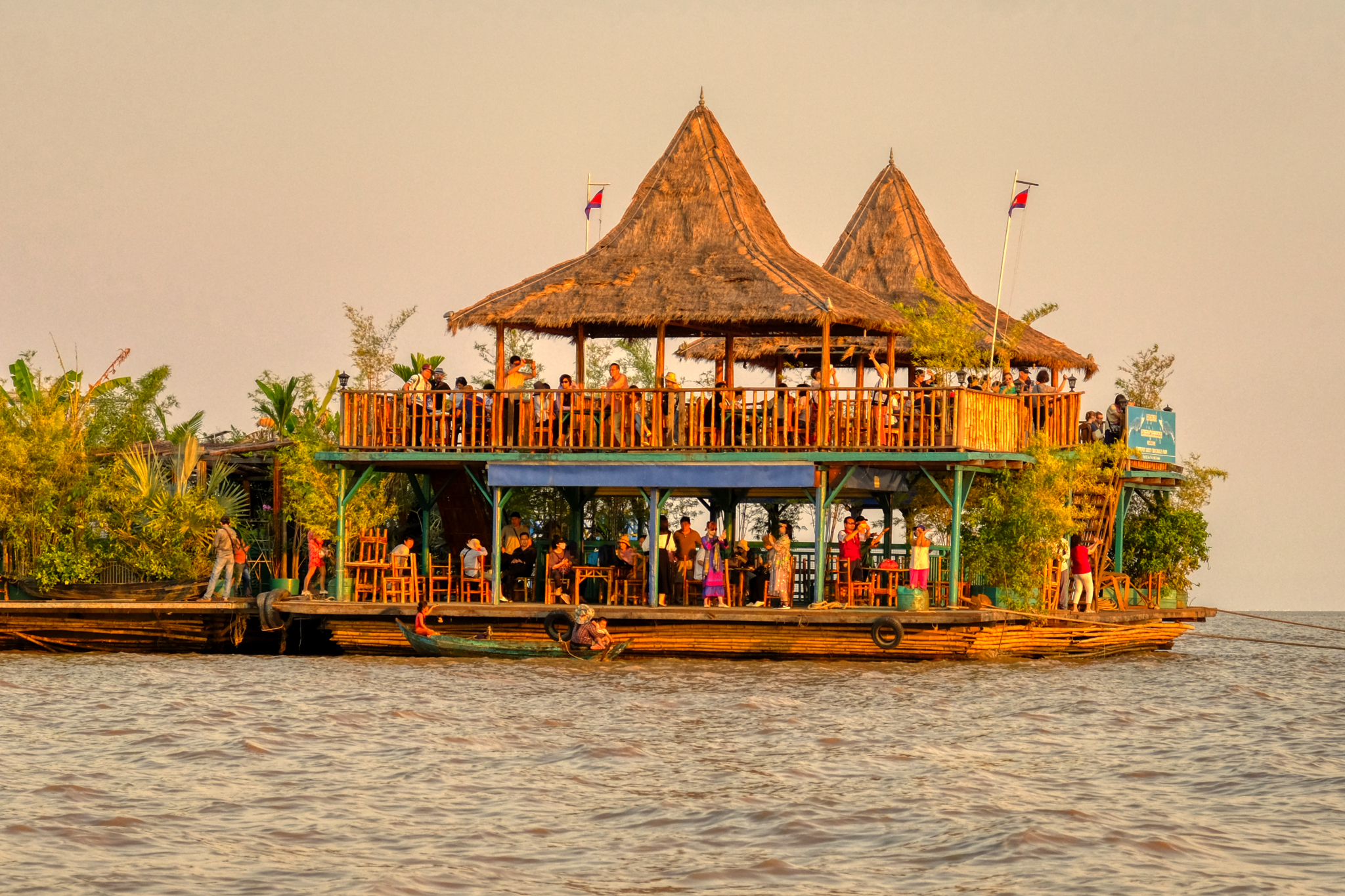 There were several of these large sunset viewing rafts out a mile or so from the shore of the lake . . . full of tourists like us.
There were several of these large sunset viewing rafts out a mile or so from the shore of the lake . . . full of tourists like us.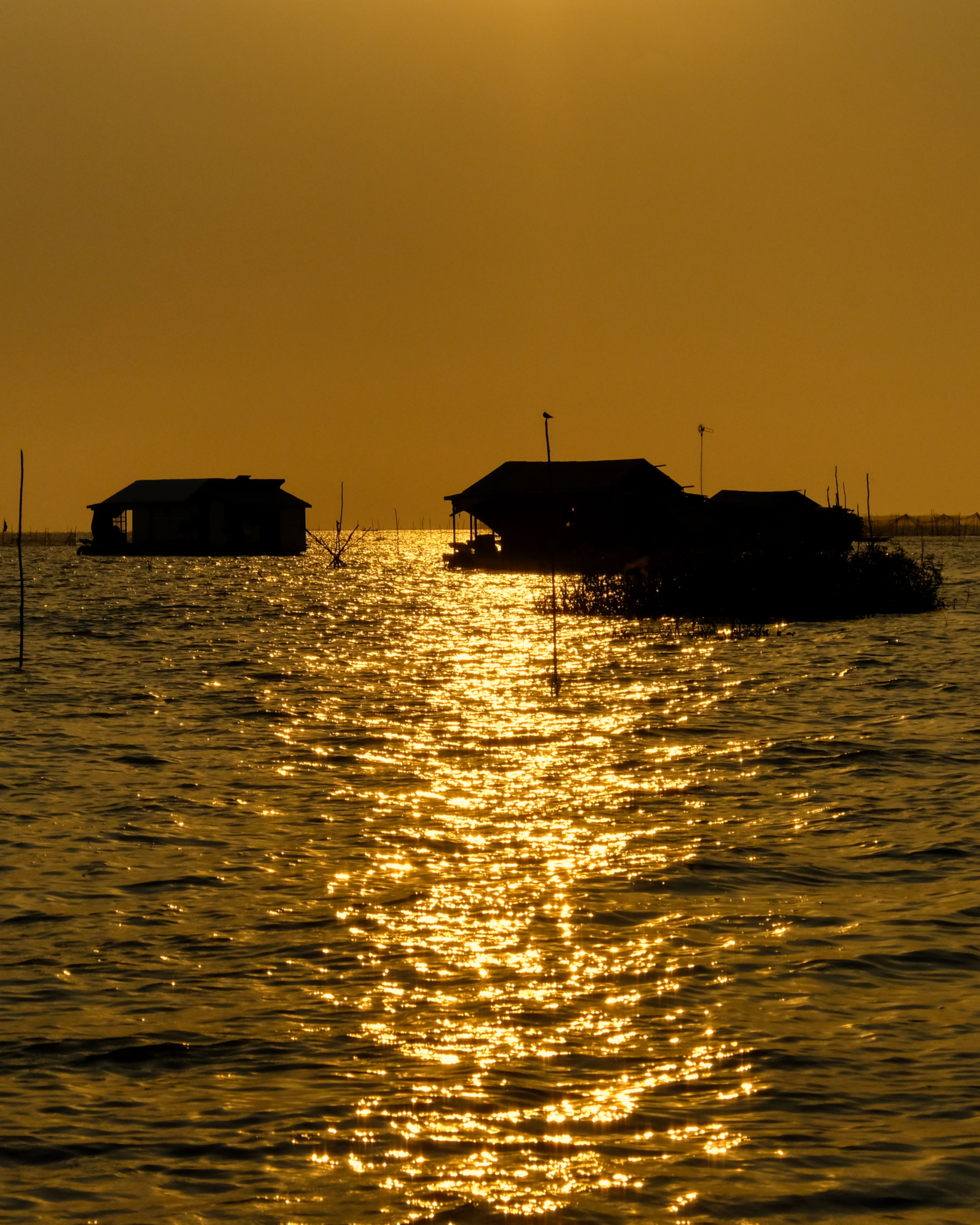 A beautiful trip out into the inland sea.
A beautiful trip out into the inland sea.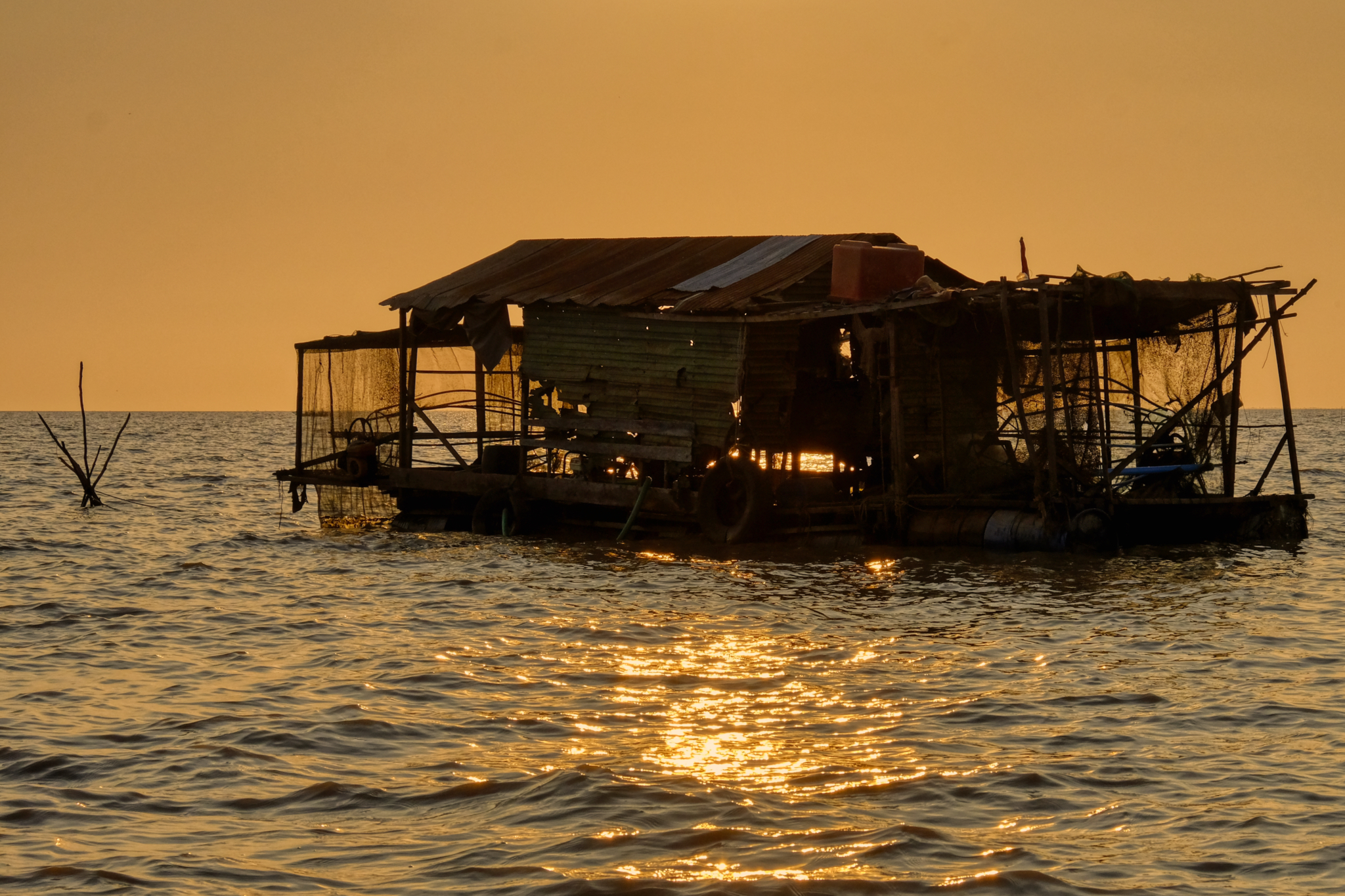 The villagers made their living fishing from their floating platforms.
The villagers made their living fishing from their floating platforms.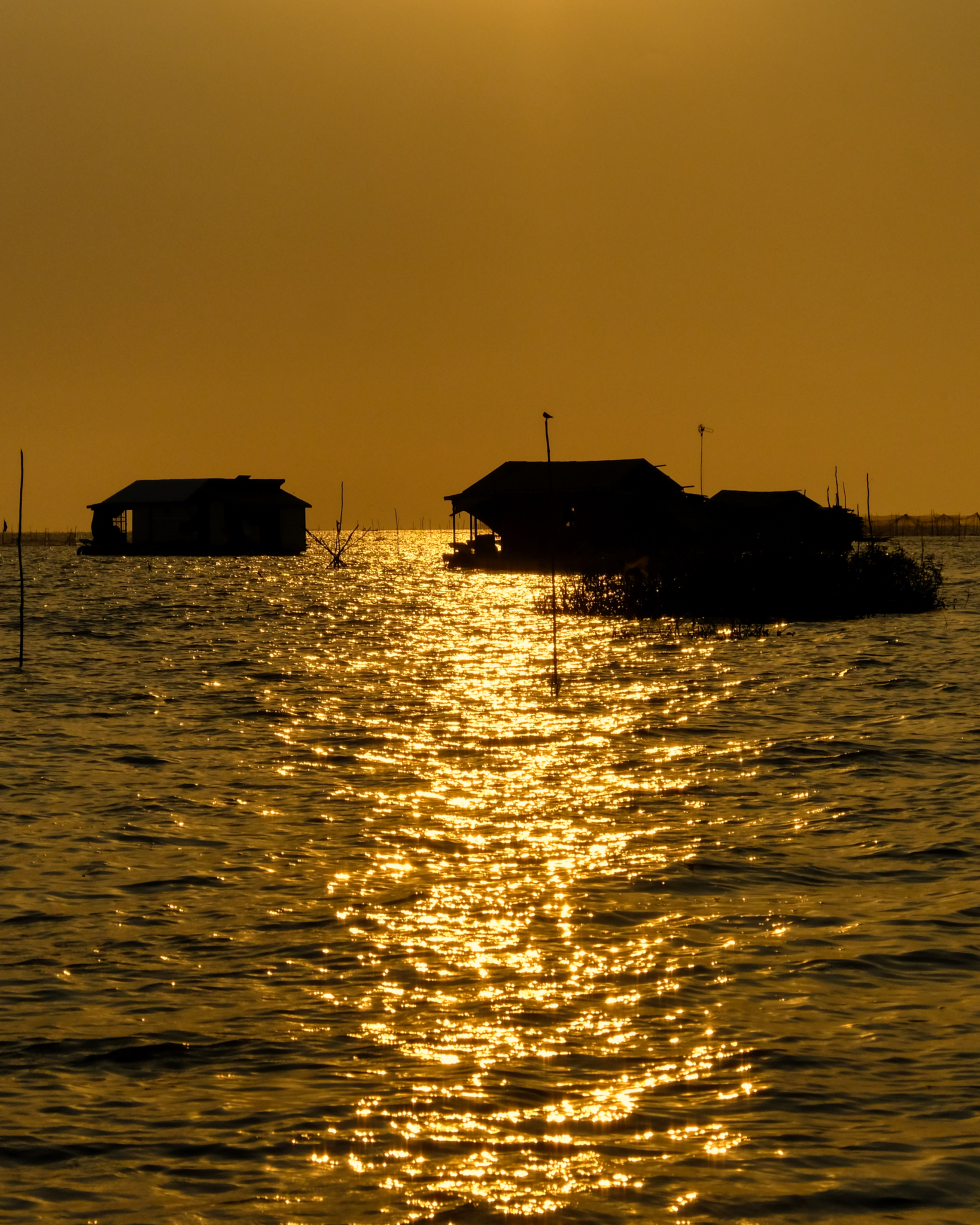 Village shacks in the amber sunset light.
Village shacks in the amber sunset light.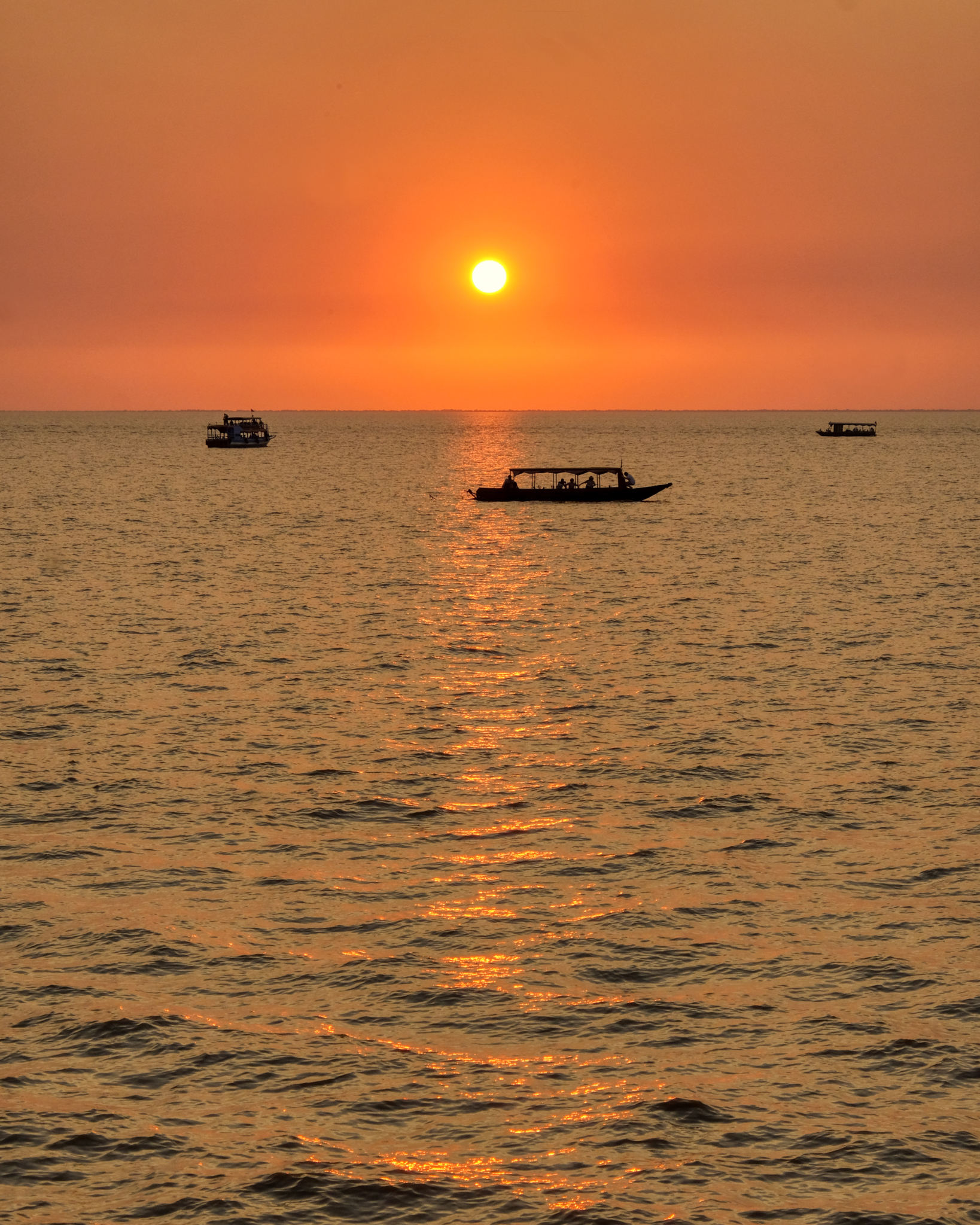 The view from our observation deck . . . boats in the setting sun.
The view from our observation deck . . . boats in the setting sun. And the sun set over our Angkor Wat vacation. A wonderful four days. If you go to see Angkor Wat, I highly recommend the sunset boat trip . . . .
And the sun set over our Angkor Wat vacation. A wonderful four days. If you go to see Angkor Wat, I highly recommend the sunset boat trip . . . .